2013 Porsche 911 Carrera Cabriolet: What's It Like to Live With?
Read the latest updates in our long-term road test of the 2013 Porsche 911 Carrera Cabriolet as our editors live with this car for a year.
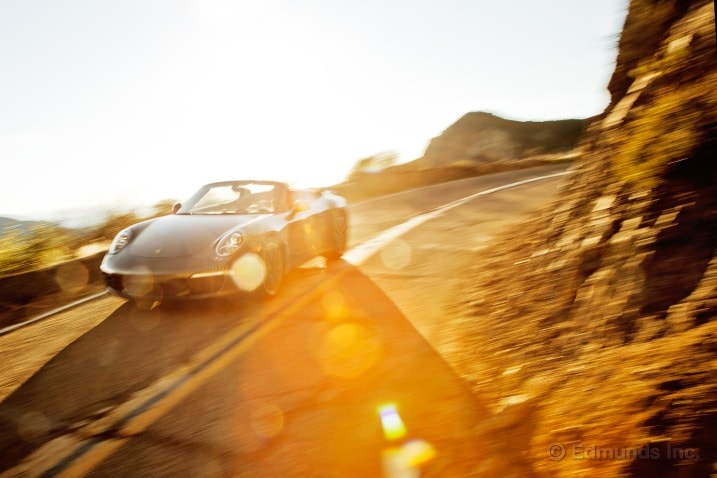
What do you want to know about?
- Introduction
- We Need Smaller Wheels
- First Impressions
- Interior Tour VIDEO
- Finding the Right Tire Pressure
- Great Family Car
- Large Trunk
- Auto Stop/Start
- Half Way to Break-in
- Fuel Economy Update for January
- Unique Light Design
- Adding Oil and Water in the 991
- One of Porsche's Better Navigation Setups
- Still Not Sure About PDK
- Engine Bay Access
- Sport Chrono And Visibility
- PDK Dual-Clutch Transmission Is Brilliant
- Hokey Key Fob
- Wrong Steering Wheel
- Octane Requirement
- These Gauges Never Go Out of Style
- Commendable Handling
- Fuel Economy Update for February
- Tailpipe Recall
- Better Than the SLS AMG
- Flat Tire, Part 1
- Flat Tire, Part 2
- Airport Shuttle Duty
- Big Enough for Big Guys
- New 19-Inch Shoes and Winter Tires
- Next Stop, Midtown Manhattan?
- Dancing on Mulholland
- Because They Can
- Dry Cleaning? Your Servant Can Pick That Up
- Winter Tires Installed
- Fuel Economy Update for March
- PDK Console Shifter Redux
- Dog Report
- Road Trip to New York, Day 1
- Road Trip to New York, Will Day 1 Never End?
- Road Trip to New York, Day 2
- 5,000 Miles in Ruleton, Kansas
- Road Trip to New York, Day 3
- Road Trip to New York, Day 4
- Road Trip to New York, Fuel Economy Report
- Road Trip Driver Change
- Escape From Manhattan
- Mom Hates Launch Control
- Road Trip to L.A., 2,995 Miles To Go
- Road Trip to L.A., Change of Plans
- Road Trip to L.A., Maintenance Required
- Road Trip to L.A. 10,000 Miles
- Road Trip to L.A., Three and Out?
- Road Trip to L.A., Fuel Economy Report
- Fuel Economy Update for April
- Road Trip to L.A., The Aftermath
- 10,000-Mile Service
- Road Trip to L.A., Putting Summer Rubber Back On
- Garment Hangers
- Frunk Holds More Than You'd Think
- One Small Disappointment
- No Limousine Stops
- Choosing a Tire Pressure for Everyday Driving
- Who Needs Rear Seats?
- Track Tested
- Check Engine Light
- Check Engine Light Message
- Check Engine Diagnosis
- Track Testing on Different Tire Pressure
- From Snow to Fires
- You Just Have To Drive It
- Hips
- Road Trip Photo Gallery
- Meet Up With a 1983 911 Owner
- Making Excuses To Drive It
- I Could Get Used To This
- Fuel Economy Update for May
- No Detail Too Small
- German Size Cupholder
- Check Engine Light Solved
- Just Love Driving It
- Wind Deflector Makes a Big Difference
- Child Seat. Can It Be Done?
- No Steering Wheel Buttons
- The Coat Hooks
- Kids Fit
- Checking the Oil
- Optional Steering Wheels
- How It's Made
- Not Great for Left-Foot Braking
- 15,000-Mile Milestone
- Low Fuel Warning
- Freedom to Have Fun
- Protecting the 20s
- How Often Would You Use the Convertible Top?
- Better In Yellow
- The Coast Is Not Clear
- Stuck in Traffic
- Fuel Economy Update for August
- Cayman S or 911?
- On Second Thought
- Will This Junk Fit in the Frunk?
- Sexy Taillights
- Dash Nav
- Flat Tire
- Fuel Economy Update for September
- For Best Results, Leave the Top Down
- Handsome View From Inside
- Hidden Cupholders
- Easy Trip Reset
- PDK and Launch Control Illustrated
- Kid Tested: Mother Approved (Redux)
- Go Faster, It Says
- Every Day, the School Bus
- Fuel Economy Update for October
- If You Bought One, What Would You Get?
- Pros and Cons of the 3.4-Liter Engine
- Easy To Use Electronics Interface
- 20,000-Mile Milestone
- Pedal Goes to 11
- Locked out of Seven
- Fuel Economy Update for November
- 911 vs. Corvette Stingray
- 20,000-Mile Service
- Good for California Winters
- Cargo Space Fail?
- Worth the Wait?
- Tire Pressure Overboost
- How Are The Bolsters Holding Up?
- Carries Kid Stuff
- Last Drive
- Resistance Movement
- Transmission Is Clunky at Slow Speeds
- Fuel Mileage Update
- Adaptive Headlights Work Better Than You Think
- Well-Designed Door Pockets
- Don't Lift
- Driving the 911 for the First and Last Time
- To CarMax and Back
- Street Legal
- Headed to the Steel City
- A New Home
- Wrap-Up
Introduction
This long-term test of a $109,745 2013 Porsche Carrera Cabriolet contains the disclaimer that we paid for this car with our own cash.
It's a big number and our accountant shed a tear cutting the check, but it had to be done.
Why? Well, we've never had a modern Porsche in our long-term fleet, for starters. That means we've never experienced Porsche's superb Doppelkupplung transmission for longer than a couple weeks. Also, we haven't had a modern convertible. So, really, we're killing three birds with one stone here. Even an accountant can't argue with that.
Plus, despite rumors to the contrary, the 911 is still hugely popular and important to Porsche. It is the No. 2 seller for the brand, falling only behind the Porsche Cayenne in terms of overall sales.
What We Got
Buying a Porsche is tricky. Without some serious willpower, it can also be incredibly expensive.
Porsche is known for a few things besides its exceptional sports cars. One of these things is its masterful use of medium-ticket options to drive the average price of new cars to astronomical levels. According to its literature, it is theoretically possible to get a 2013 Porsche 911 — the new 991 series — for $83,050. This car, however, is a phantom and does not exist anywhere near Los Angeles.
Even if our idea was to spend as little as possible on a new 911 and see what life is like at the bottom of the top of the heap, it wasn't going to happen in our homeland. Fortunately, we didn't want a total stripper. We wanted one equipped with the Porsche Doppelkupplung (PDK) seven-speed auto-clutch manual. The idea of shifting our own box into 7th gear and cruising had us salivating, but even Porsche will admit that the manual isn't a crowd favorite. We've never spent serious time with this transmission, and while we'll miss the clutch from time to time, this is the more representative transmission.
So we know we want the PDK. What next? Well, the 911 S model packs a 400-horsepower 3.8-liter flat-6 and a $14,300 premium over the regular Carrera's 350-hp 3.4-liter flat-6. Sure there are some other differences, but this can simply be expressed at $286 per horsepower. Even by Porsche standards this is a lot. And with a budget capped at about $100,000, we had to be smart.
Soon after we started shopping, we realized that sticker prices on Porsches are merely suggestions. We had our list narrowed to three cars. All had options we didn't really want but were close enough. (Porsche, of course, does custom orders, but we wanted this closed before the new year. Plus, waiting sucks.) The first dealer we contacted started chopping the price before we tried any of our time-tested tactics, but it wasn't good enough. Prices for 911s on dealer lots were still too high. Despite the first dealer dropping $10K off the price of a new car without any effort, we got rejected after making a similar offer on the car we really wanted — a less expensive silver convertible.
This is when we decided to turn to the professionals of AutoNation Direct, a car-buying concierge if you will. AutoNation Direct has worked with this dealership before and got us the deal we were after with no hassle. We paid $98,048 for a 2013 Porsche 911 Carrera Cabriolet with a sticker price of $109,745 and 9 miles on the odometer. The dealership even flatbedded it to our office for free the very same day.
What exactly did we get for our $98,048?
Well, the 991 series 911 Carrera Cabriolet starts at $93,700 and then there's the $950 destination fee. Beyond that are the extras. Agate Grey Metallic paint was $710; the Premium package with 14-way seats was $2,940; the PDK transmission we wanted so badly was another $4,080; the big, goofy 20-inch Carrera Classic wheels set us back $2,730 and the Porsche crest in the center of each cost $185; front seat ventilation cost $840; Sirius Satellite Radio is $750; and the SportDesign steering wheel with paddle shifters cost $490. Finally, our 911 is equipped with the $2,730 Sport Chrono package. This package lumps together dynamic engine mounts, a Sport Plus button which offers launch control and a racier shift program, and a stopwatch. This is perhaps the one option we'd have added if we'd ordered this from the factory.
Why We Got It
This isn't our first time around the block with a Porsche 911. You'll remember that recently we spent a year with a 1985 Porsche 911 that we were smitten with. That car, however, was a different animal than our current 2013 911. With the redesign last year, the 991 911 grew up substantially. It looked less like a frog and had an interior that looked more like the luxury spread found in the Panamera than those found in racing cars. Is this proof that Porsche had sold out to the 1 percent? Is Porsche more Newport Beach than Nürburgring?
We know this new 911 is good, but is it a good 911? Porsche's had more than 60 years to figure this formula out and now it's got nearly six figures of our cash.
Now we've have 12 months and 20,000 miles to find out if the 911 still has it. Follow along on our Long-Term Road Test page to read more.
Current Odometer: 260
Best Fuel Economy: 19.4
Worst Fuel Economy: 19.4
Average Fuel Economy (over the life of the vehicle): 19.4
Edmunds purchased this vehicle for the purposes of evaluation.

We just added a new, 2013 Porsche 911 Carrera Cabriolet to our long-term test fleet and I thought I'd start things off on the right foot: with a complaint.
We're going to have 12 months to drool over our new toy, so let's just get this out of the way right now. The 20-inch Carrera Classic wheels that were optional on our 911 are terrible.
There's one subjective and two objective reasons for this. Let's start with objective.
1.) The ride is harsh. Not quite Nissan GT-R harsh, but certainly not a ride that inspires trans-continental travel. Sidewall would make this better. I'd happily give up whatever roll stiffness you get with these tiny sidewalls for the shock-absorbing power of some big, meaty rubber.
2.) The brakes on the non-S model 991 911 are pretty small coming in at 13.4 and 13 inches front/rear and the giant 20-inch wheels make them look even smaller. It's just not cool.
Finally, the subjective reason: 20s are too big for sports cars. I don't like unnecessary flash and I'm even a little bummed that the smallest wheel you can get on a 991 911 is a 19x8.5. You could get 18s on the 997. I wonder if they'd still fit...
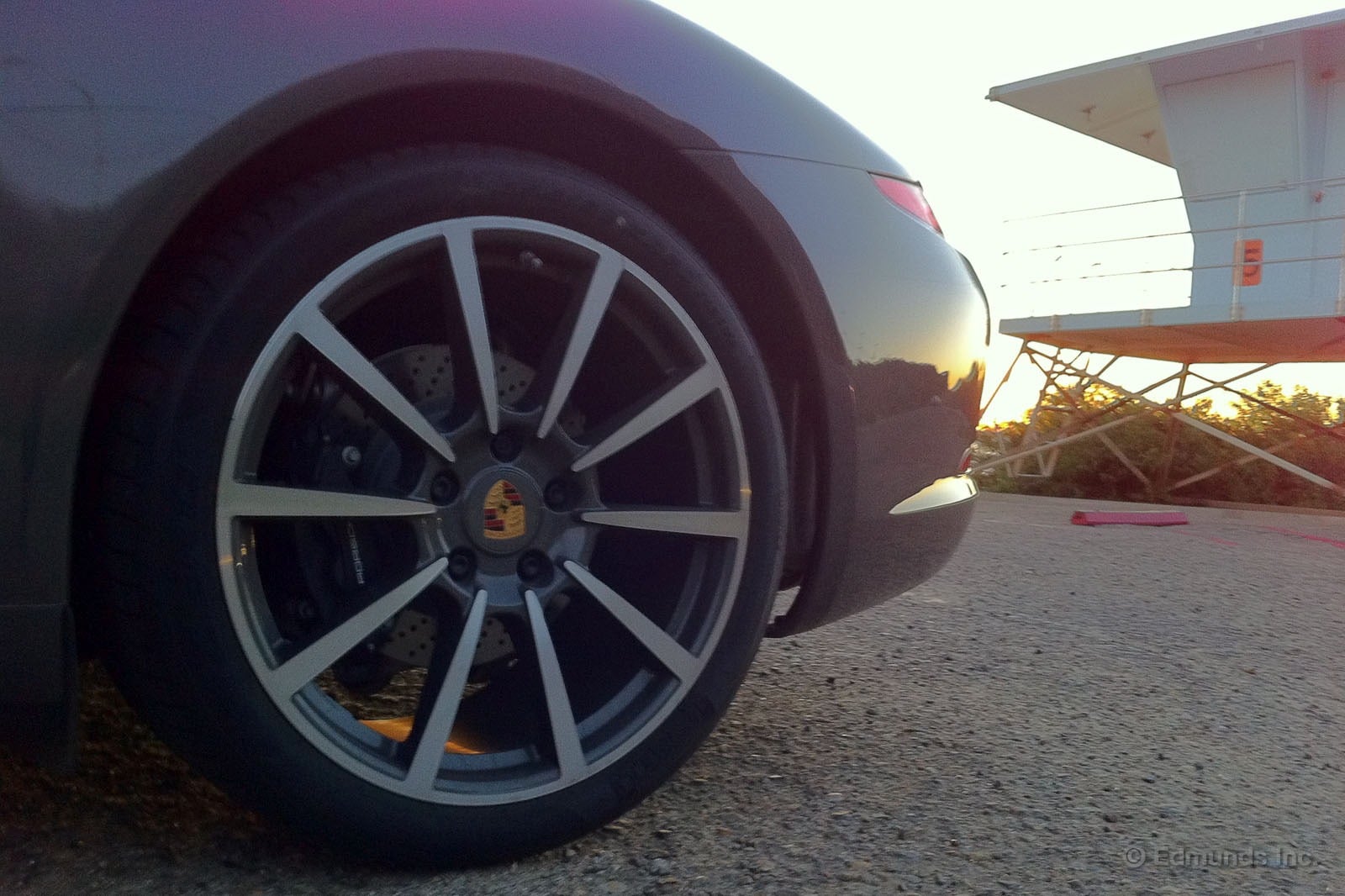
You can read the Introduction of our 2013 Porsche 911 Carrera Cabriolet here.
UPDATE: Our ride quality has improved, see how here.
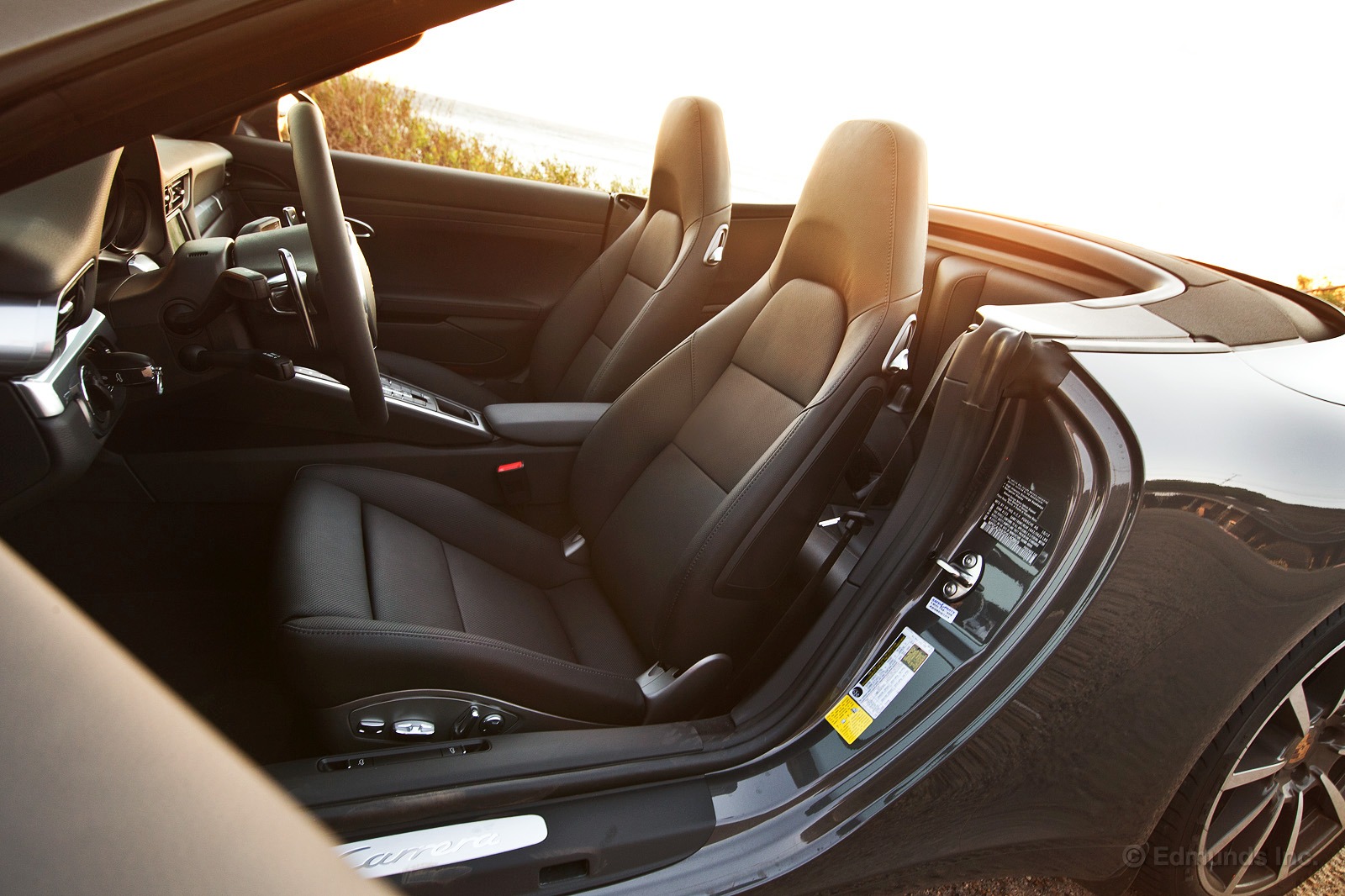
After my first jaunt in the new 911, I'm a bit torn. I really wanted a manual transmission, but after driving our PDK-equipped convertible I can't complain. That crazy mess of clutches and gears is magical. I've never driven an "automatic" this smart. It not only picks the right gear at the right time, it serves it up in seconds.
As far as the ride goes, it is on the stiff side. Sure, it's a sports car and all, but I just drove a Corvette ZR1 not too long ago that pulled over 1.0g on the skidpad and delivered a plush ride on the highway, too.
Speaking of Corvettes, I noticed that the shape of the seats in our 911 isn't all that different than those found in the current Corvette. Funny then, that the Porsche's seats are supremely comfortable and supportive while the Chevy's chairs are a blubbery mess. It's all in the details I guess.
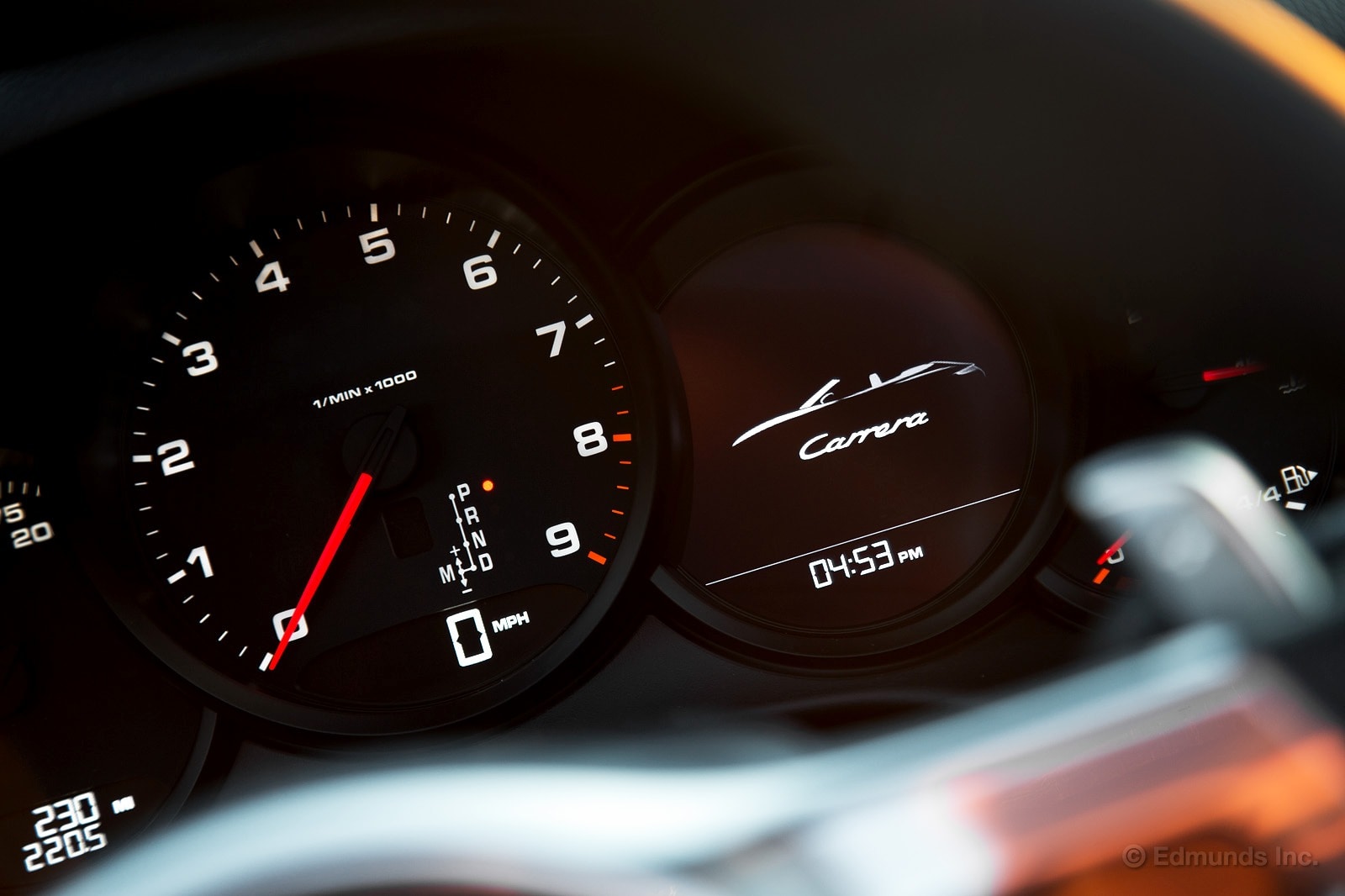
Click through for a video tour of the interior of our long-term 2013 Porsche 911 Carrera convertible. I also start it for you so you can hear it.
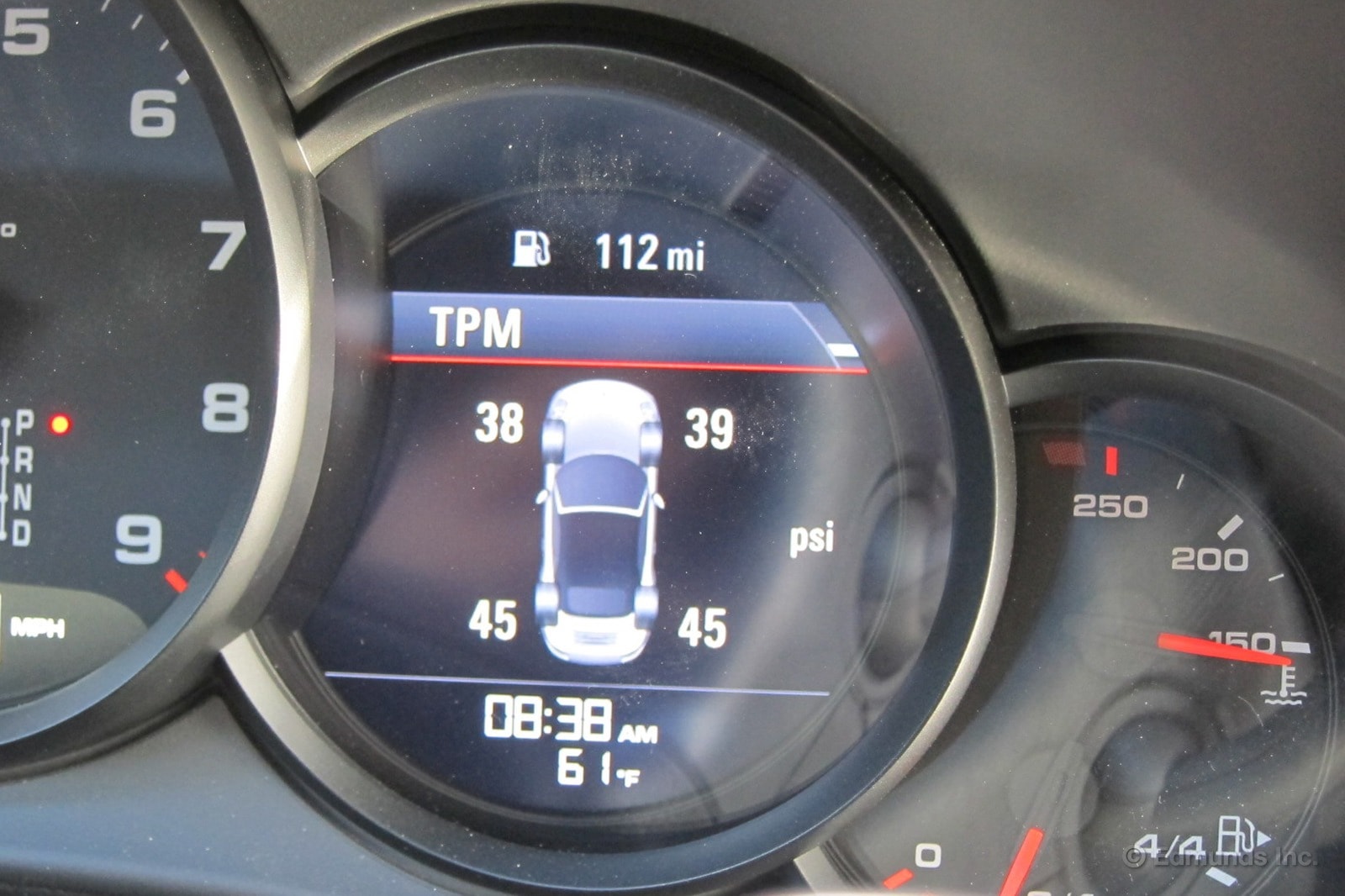
The long-term road test on our 2013 Porsche 911 Cabriolet started off on a sour note. I was the one to break the news that our car had terrible ride quality, but it was the buzz of the office.
We placed the blame entirely on the optional 20-inch wheels. Sidewall, after all, is your friend. But after my long-term update and (our Editor in Chief complained about the issue on Twitter) we found out that there may have been another culprit: Our tire pressure.
On the door jamb of every vehicle is a sticker indicating the manufacturer recommended tire pressure. This is a pressure picked by the manufacturer for optimum ride quality and fuel economy. At least, that's the way it normally works.
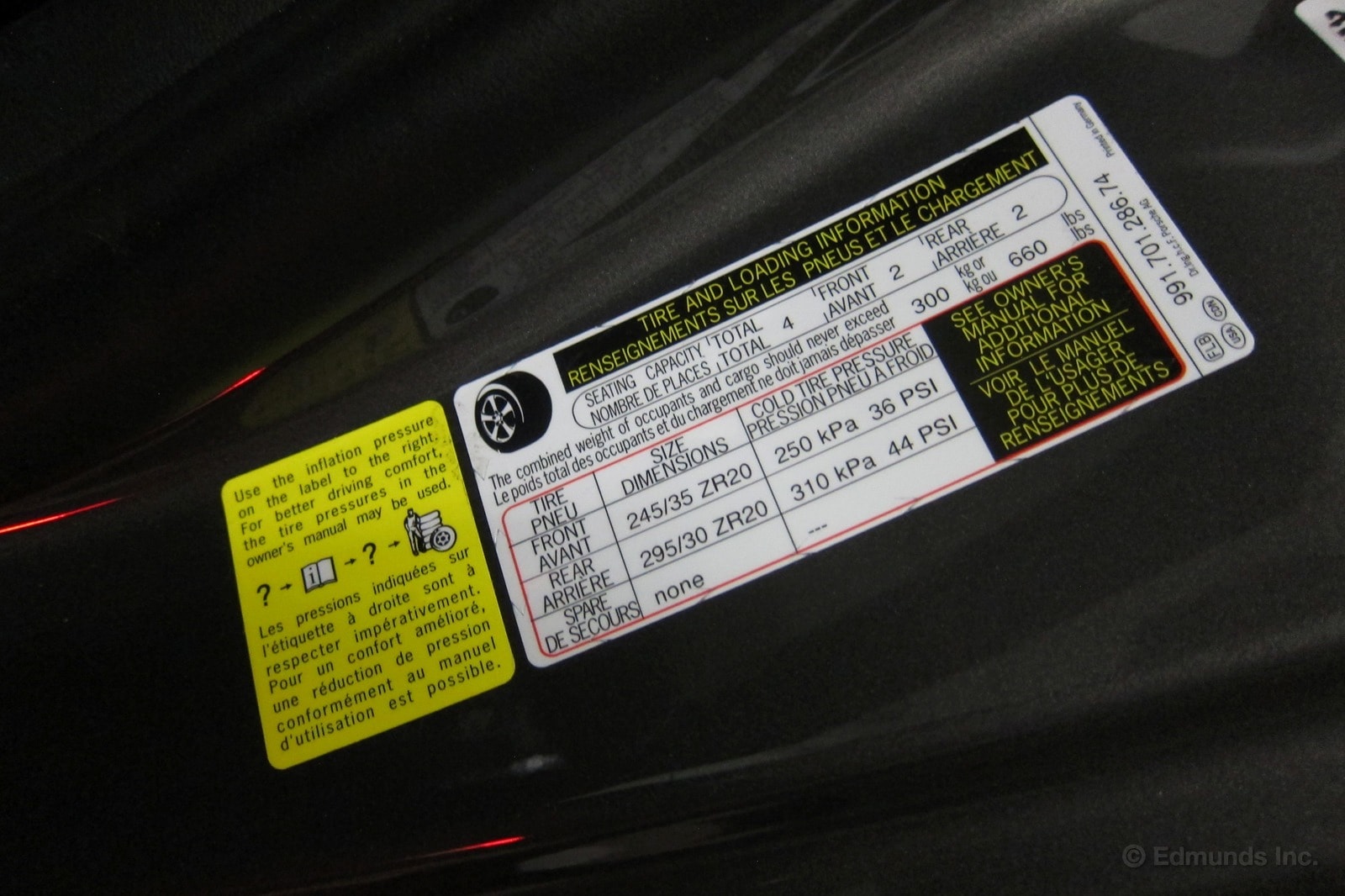
Next to our mandated-by-the-government sticker which reads 36 psi front and 44 psi rear, is a small auxiliary sticker that reads, "Use the inflation pressure on the label to the right. For better driving comfort, the tire pressures in the owner's manual may be used." Next stop, the owner's manual.
The first thing we noticed when checking the multiple charts that make up the suggested tire pressure section is that the numbers that match our door sticker are recommended by Porsche for "Full Load" and 20-inch wheels. There was also a setting for standard tire pressure at part load, and a "Comfort Pressure" for, again, both part and full load.
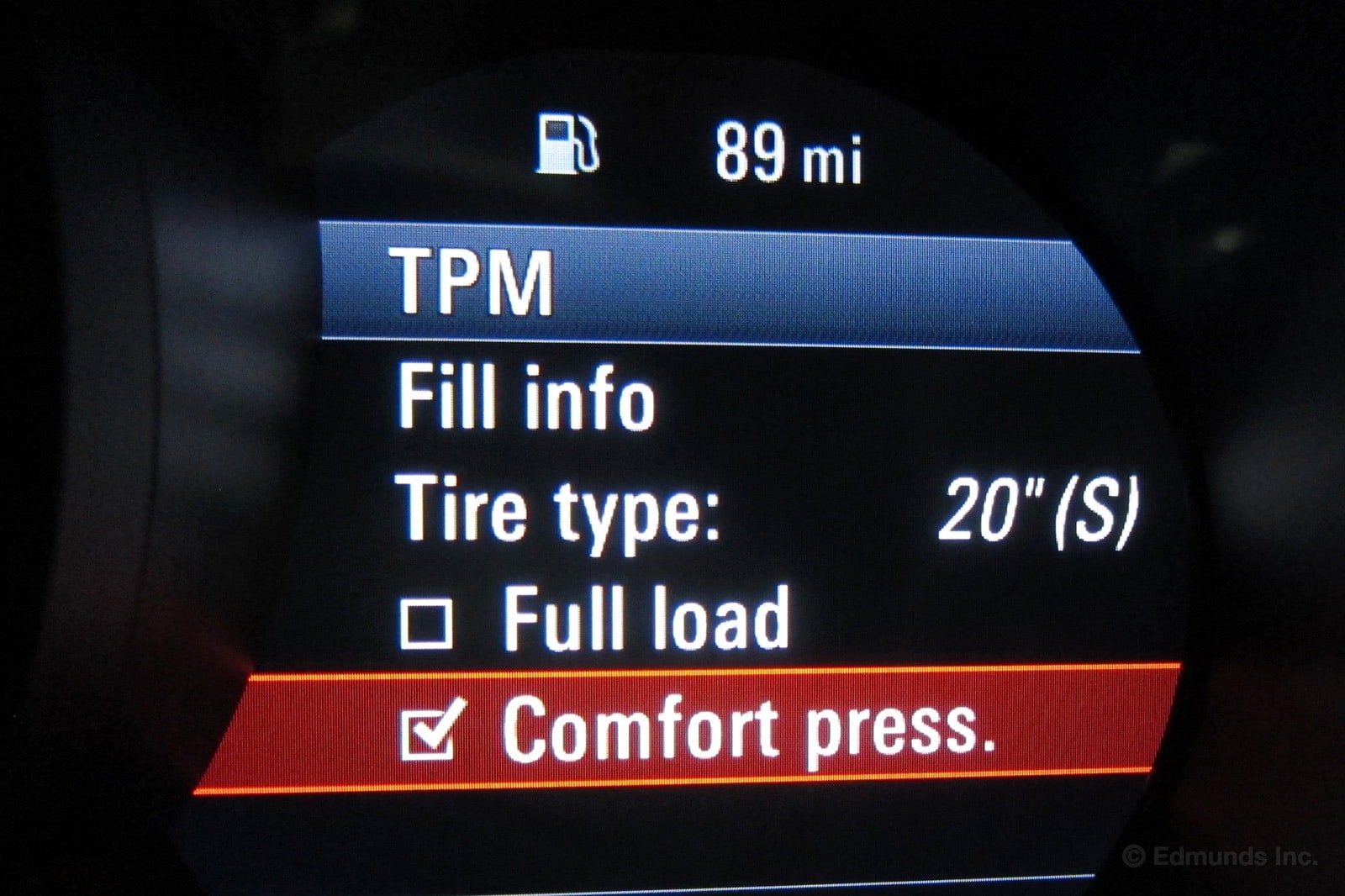
A quick two-hour call to Porsche cleared up all of these different options.
First things first: The additional window sticker is a perfectly legal move and their compliance department has confirmed that multiple factory tire pressure settings will not set them up for any liability. (See: Ford / Firestone.)
Next up, full load. Unlike most brands, Porsche's recommended tire pressure setting isn't there as some sort of compromise. Instead, the 36/44 setting is for running with full fuel, the full 660 pounds of cargo/passengers AT TOP SPEED. This is a max-duty setting that Porsche's putting out there just in case.
Further, the car wasn't engineered with that setting in mind. According to Porsche, the chassis engineers develop the cars according to the comfort, part-load tire pressure (on 19-inch wheels, but we'll get to that later) which for this car is 31 front, 34 rear. Oh, and Porsche says this tire pressure will make the car handle better, to boot.
So we let the car cool down (Porsche recommends the tires cool to 68 degrees, our garage is 66. Close enough) and set the pressures to the 31/34 "comfort, part load" specs. After doing this, we had to reset the tire pressure monitoring system (TPMS) in the IP. It couldn't have been easier. We selected 20-inch wheels with summer tires and then the comfort setting and BAM, it knew we needed 31/34. Perfect.
Selecting this option also reveals the only downside to the comfort part-load setting. Top speed is now reduced to 165 mph instead of 176 mph. Porsche says this isn't a hard limit, at 165 a warning will illuminate that we could, if feeling brave, power through. We don't have an Autobahn, we don't care.
The other potential downside to this tire-pressure reduction. FuelEconomy.Gov says that MPG can drop 0.3 percent for every psi drop. We went down an average of about 7.5 psi. This translates to about a two-percent drop in overall fuel economy. We'll test this moving forward.
So we took a top speed hit and we may take a hit in fuel economy. Did the drop to the comfort setting fix our ride quality issues?
In a word: Absolutely.
The Porsche is still firm, no doubt, but the impact harshness and overall unpleasantness is gone completely. It's a different animal. Previously, this wasn't a car you'd want to drive to the local florist, now you'd beg to drive it to Florida and it still kills it on mountain roads.
We didn't get away from our conversation with Porsche without some bad news, though. It turns out that Porsche doesn't necessarily like the idea of non-PASM-equipped cars (which have adjustable suspension and ride slightly lower) on 20s and that the 20s we have are actually the heaviest wheels available for the 911.
A set of 19s is likely in our future, but for now we're thrilled with the new character of our 911 and we're looking forward to track-testing the car on multiple suggested tire pressures to see what the performance difference actually is.
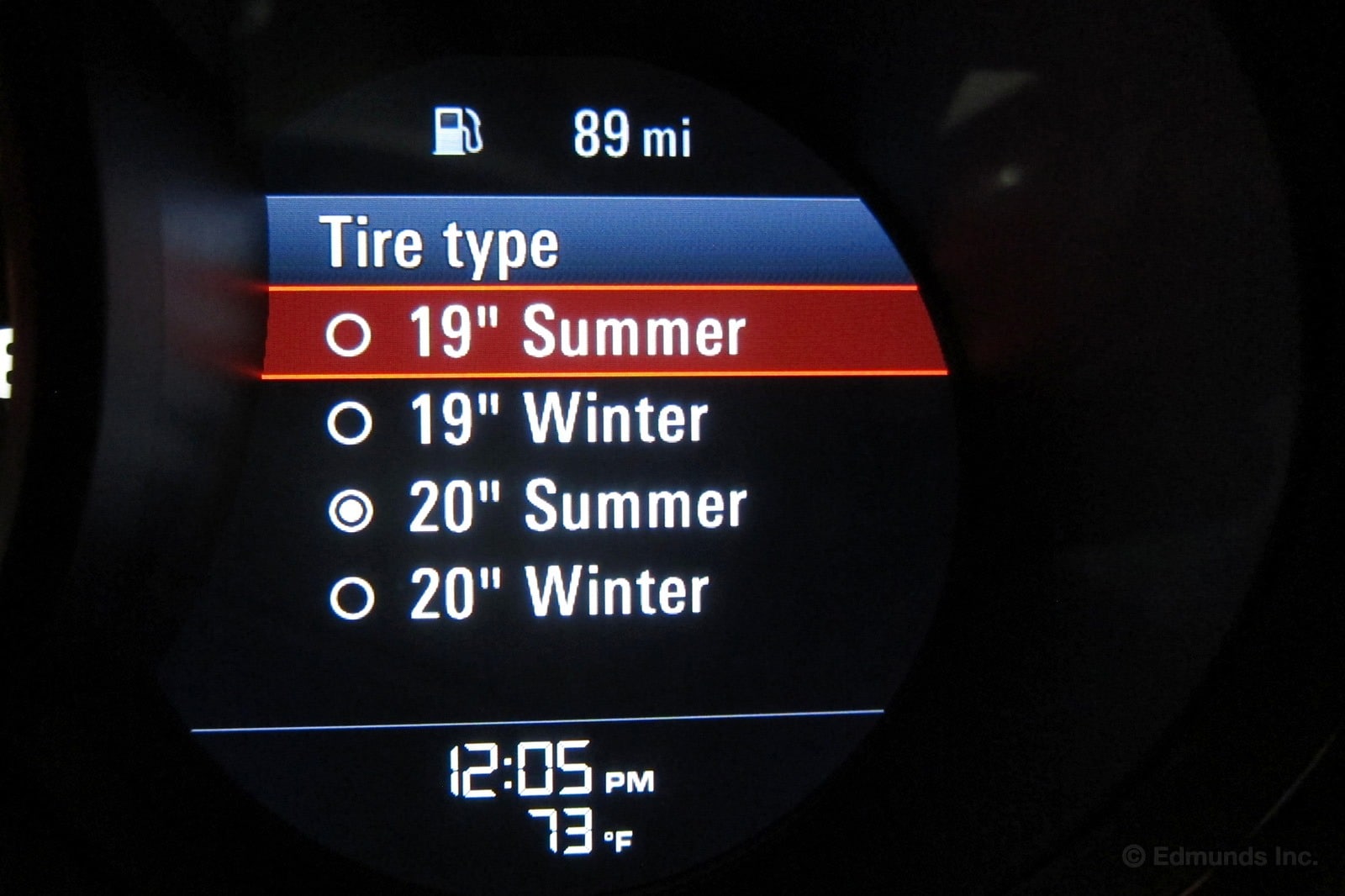
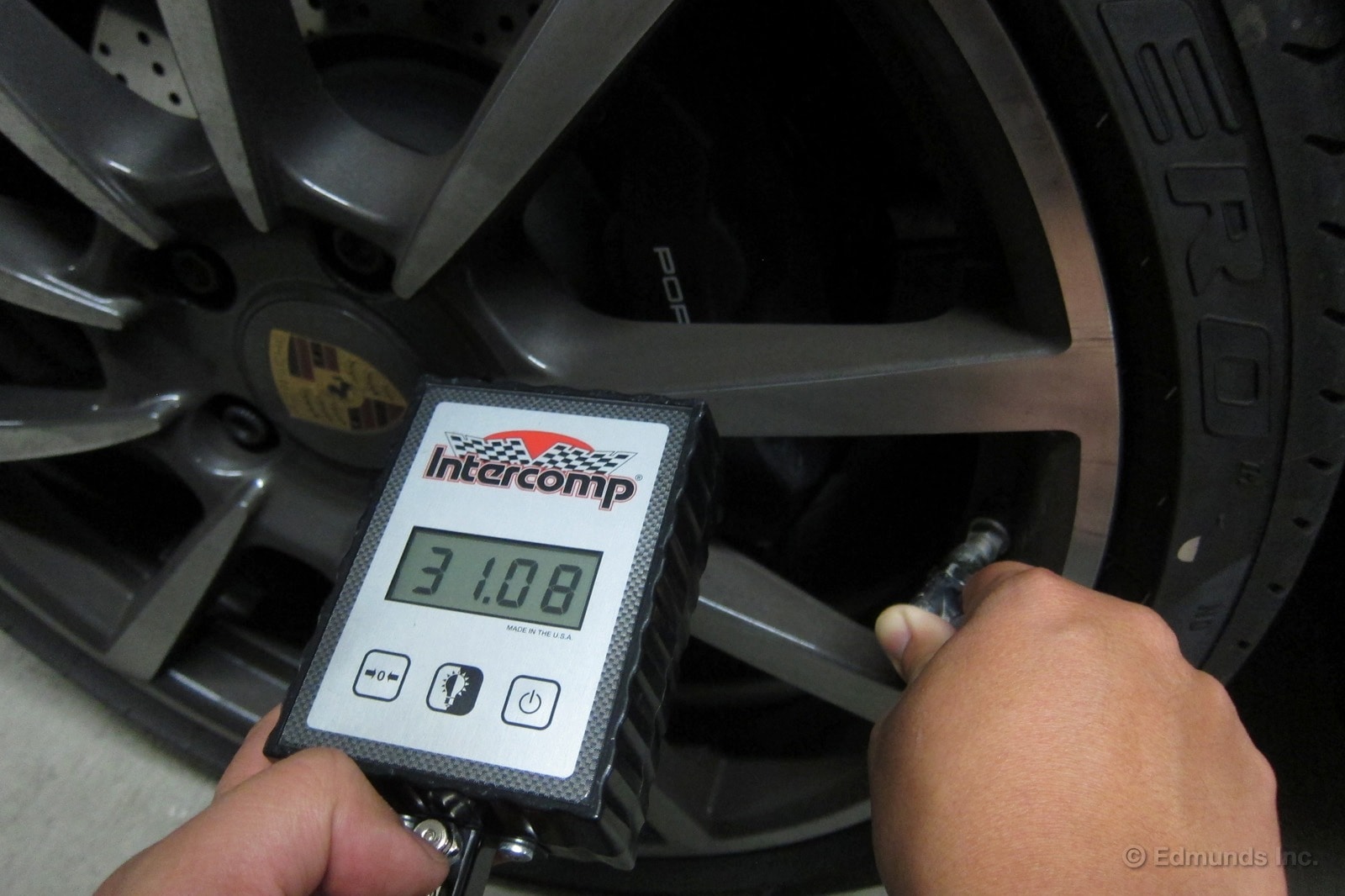
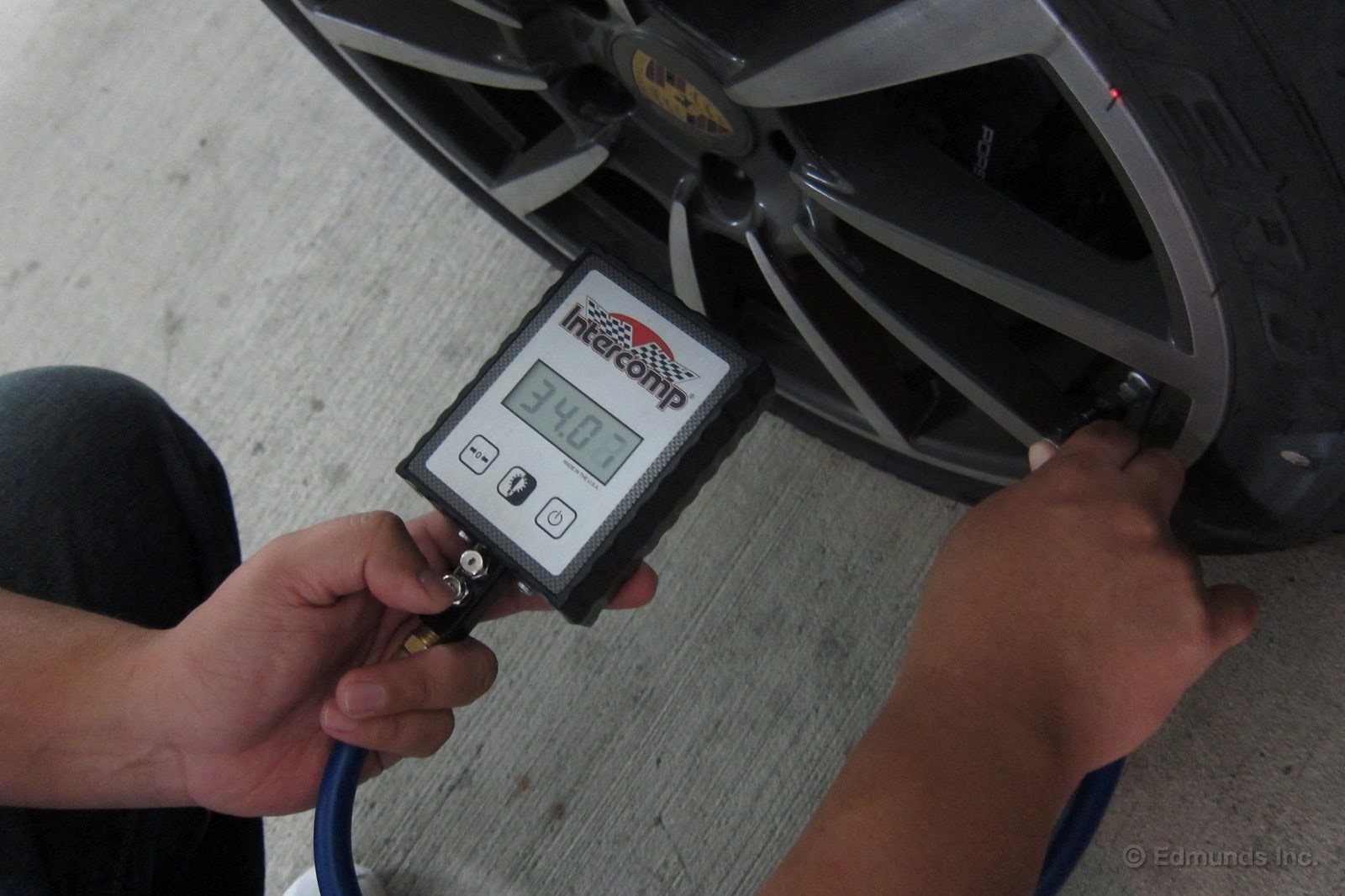
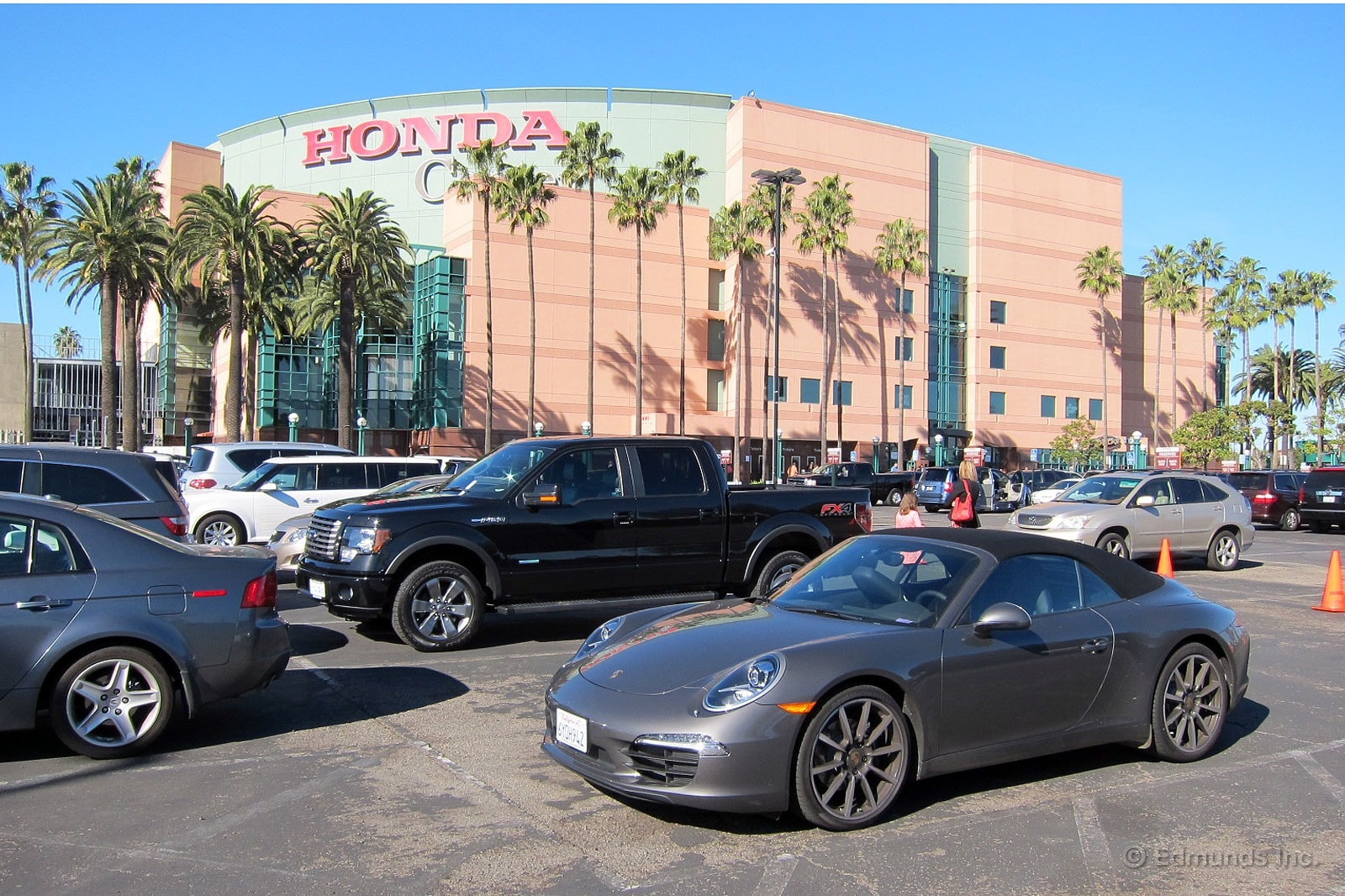
This past weekend my family used our long-term 2013 Porsche 911 more like a minivan than a supercar. There were no Autobahn-style top speed runs, no hardcore blasts through Malibu's twisting mountain roads, no tire smoking powerslides and not one Saturday night top down cruise on the Sunset Strip.
It did, however, take us to the Honda Center in Anaheim to see How to Train Your Dragon. It also took us to my daughter's basketball game, out for fro yo, to the pet food store, to the movies, to Home Depot and, wait for it, to Staples for some new printer ink cartridges.
Turns out my daughters (aged nine and seven) fit snugly in the Porsche's backseat. And it turns out that every other mom and dad at the basketball game wishes they too had a 911 Cabriolet. No shock there. In the sea of crossovers, SUVs and minivans, the 911 stood out like Kate Upton at an Oldham family reunion.
There was the occasional complaint about space from my girls, but they couldn't have been too uncomfortable as they both fell asleep back there on the way home from Dragon. For the record, they also whined about the lack of cupholders in the back.
Since the 1960s the Porsche 911 has been an everyday supercar. It still is. Such a family weekend would have been impossible in a Chevy Corvette, an Audi R8 or a dozen other two-seater sexmobiles. But in the 911 it's not only possible, it's the point.
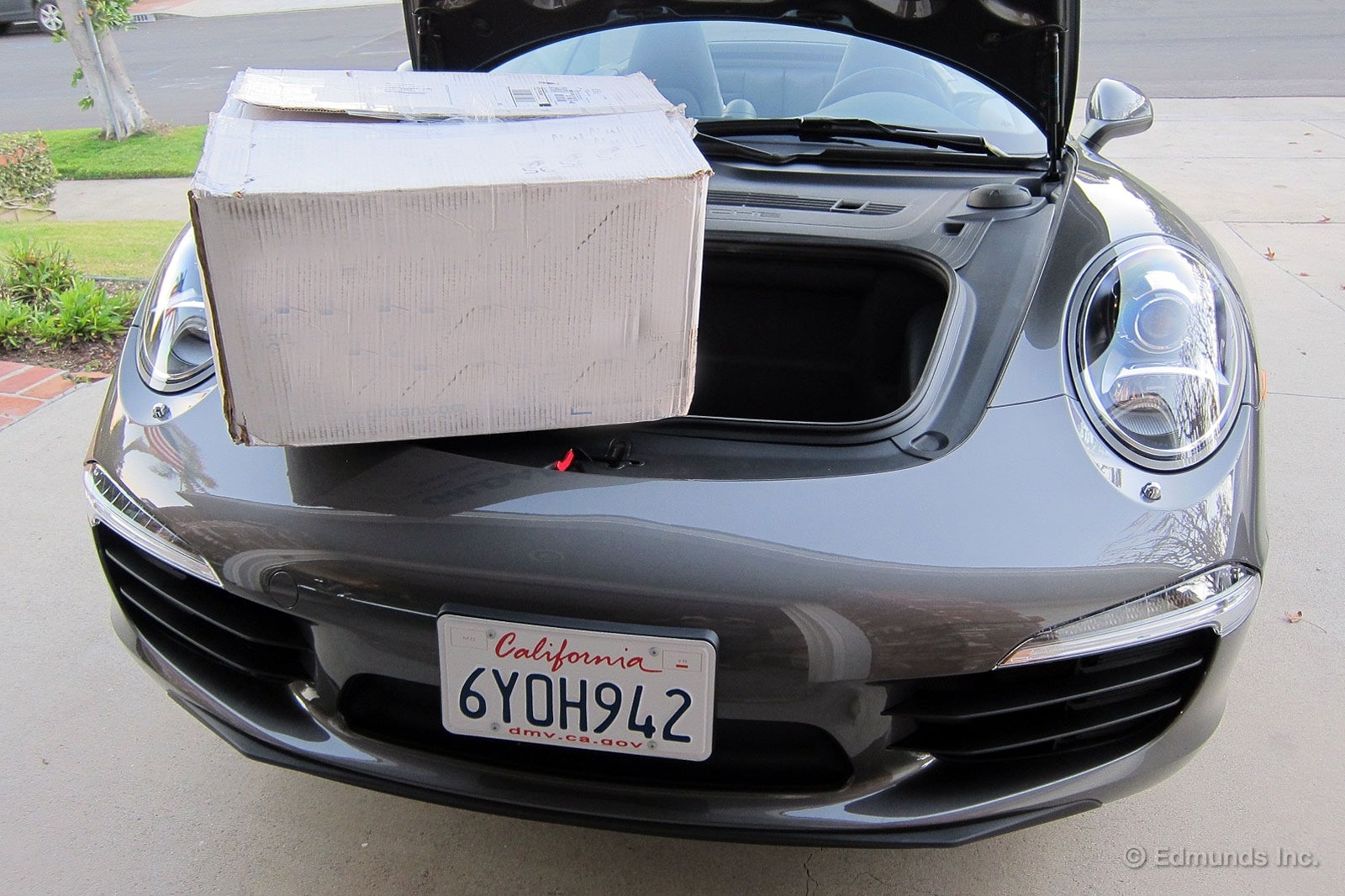
That is not a small box. It measures 12-inches tall, 16-inches wide and 22-inches long. I didn't think there was any way it was going to fit in the Porsche's frunk (front trunk, remember, the engine is in the back).
I was wrong. Very wrong.
It not only fit, it fit with several inches of height to spare, and many inches of room around the sides as well.
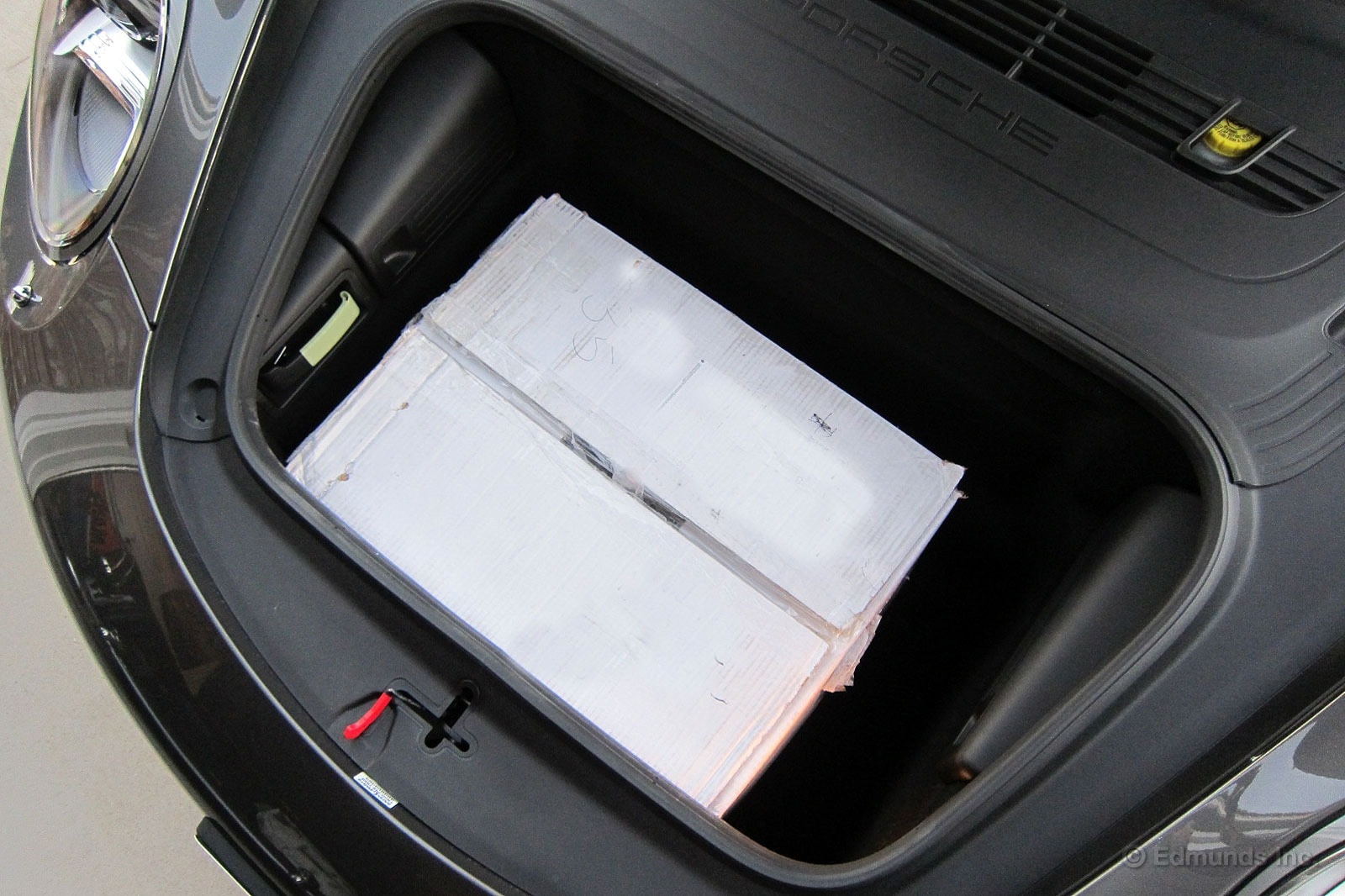

One of the first things I noticed when I got into our sleek, smells-so-new 911 is that it has an Auto Stop/Start function. And that it had been turned off.
I totally understand why. A couple of months ago, I was shuttling a short-term 2013 Porsche 911 from the photo studio to the office and had stopped to make a right turn when the car, apparently, died. I was sure I'd killed it somehow and would have some serious explaining to do to Oldham. Then I realized what was up. Not sudden death. Just Auto Stop/Start. Whew.
Carmakers are adding what they hope are unobtrusive technology bits like this to cars in an effort to wring better fuel economy out of conventional engines. An engine stop-start system can cut combined city-highway fuel consumption and greenhouse gas emissions by 3-10 percent. Add that to such things as regenerative braking, aerodynamics and other tricks that are often borrowed from hybrid cars and EVs and it can all add up to better mileage and fewer emissions.
Johnson Controls, which manufactures advanced batteries that are used in stop/start systems, estimates that up to 40 percent of all new cars and light trucks sold in the U.S. will have them by 2015, so it's a good idea to get used to them. Or hope you have the option of turning them off.
In our Porsche 911, it just takes a tap of a button to accomplish this. Auto Stop/Start also doesn't work when you're in Sport mode. Just one more reason to engage that baby at all times.

Yes, it was dark, rainy and 5:45 a.m., but I got off the freeway anyway in order to catch the 1,000-mile mark in our 2013 Porsche 911. It's a nice round number, and (I supposed) it represented the end of the engine break-in period.
Not so.
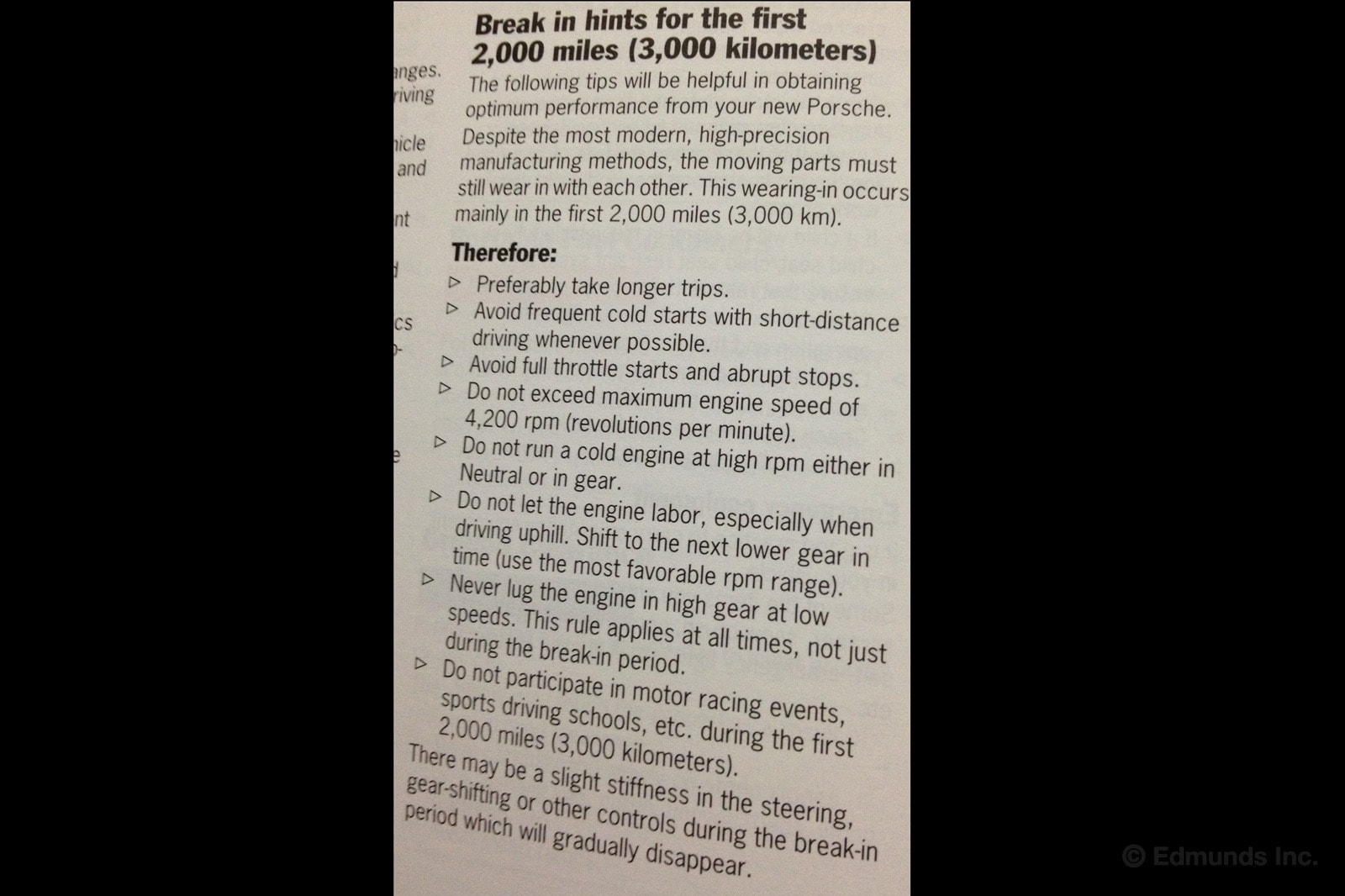
As this page from the owner's manual attests, Porsche wants you to put 2,000 miles on the car before you take the revs past 4,200 rpm or head out for sport driving school.
It's like a long, traditional engagement: lots of excitement, tempered by bouts of frustration.
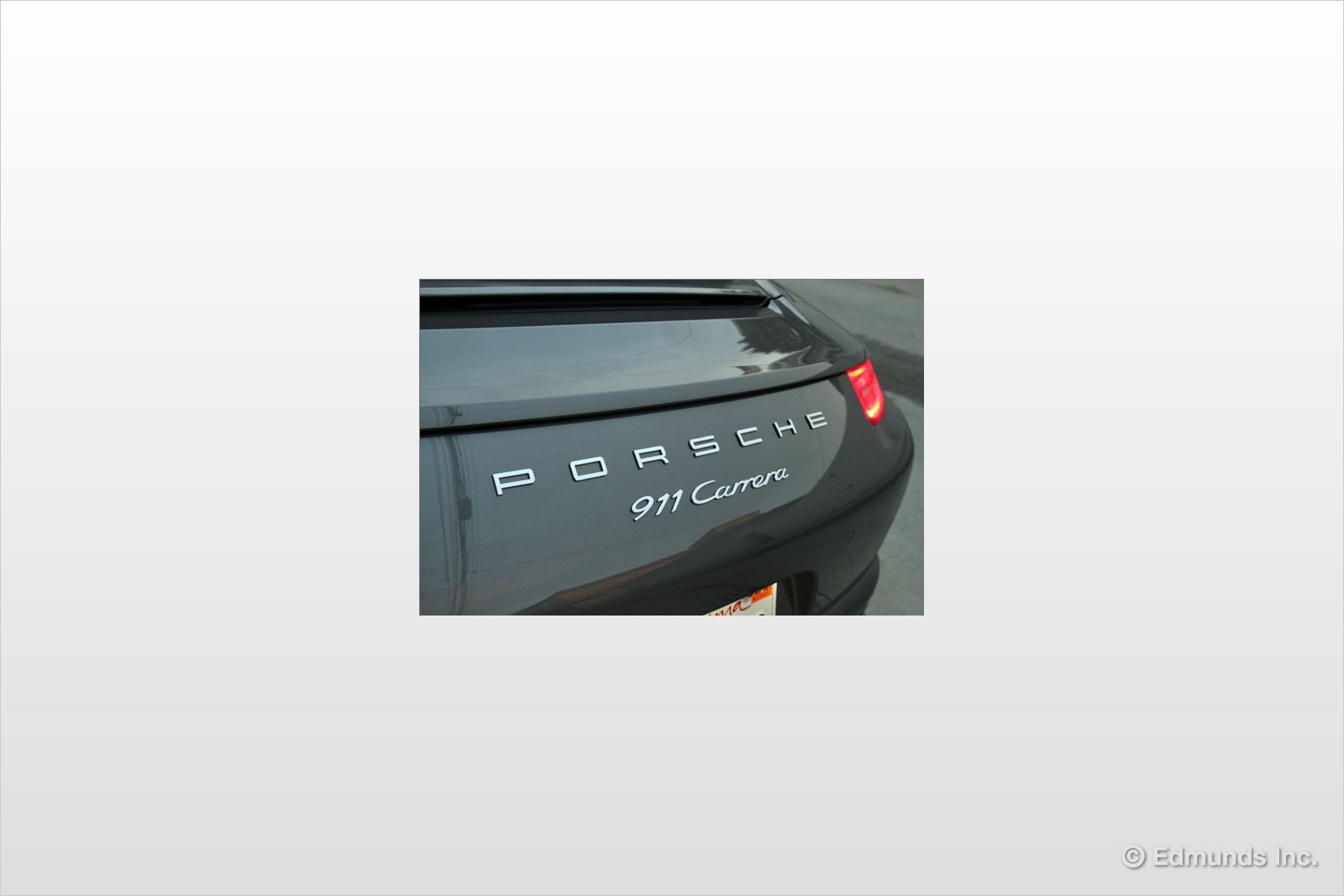
The 2013 Porsche 911 Carrera Cabriolet has been with us since the beginning of January, and we've burned just six tanks of 91 octane fuel so far.
Our worst tank was compliments of 200 miles of around-town city driving, leaving us with a tank average of 15.8 mpg. Porsche reports an EPA rating of 18 mpg in the city.
Our best tank was 19.4 mpg, not far off the mark of Porsche's combined EPA rating of 21 mpg.
We'll see how the Porsche Carrera Cab's average holds up as we get further into our year-long test.
Worst Fill MPG: 15.8
Best Fill MPG: 19.4
Average Lifetime MPG: 17.8
EPA MPG Rating (City/Highway Combined): 21
Best Range: 286 miles
Current Odometer: 1,274 miles
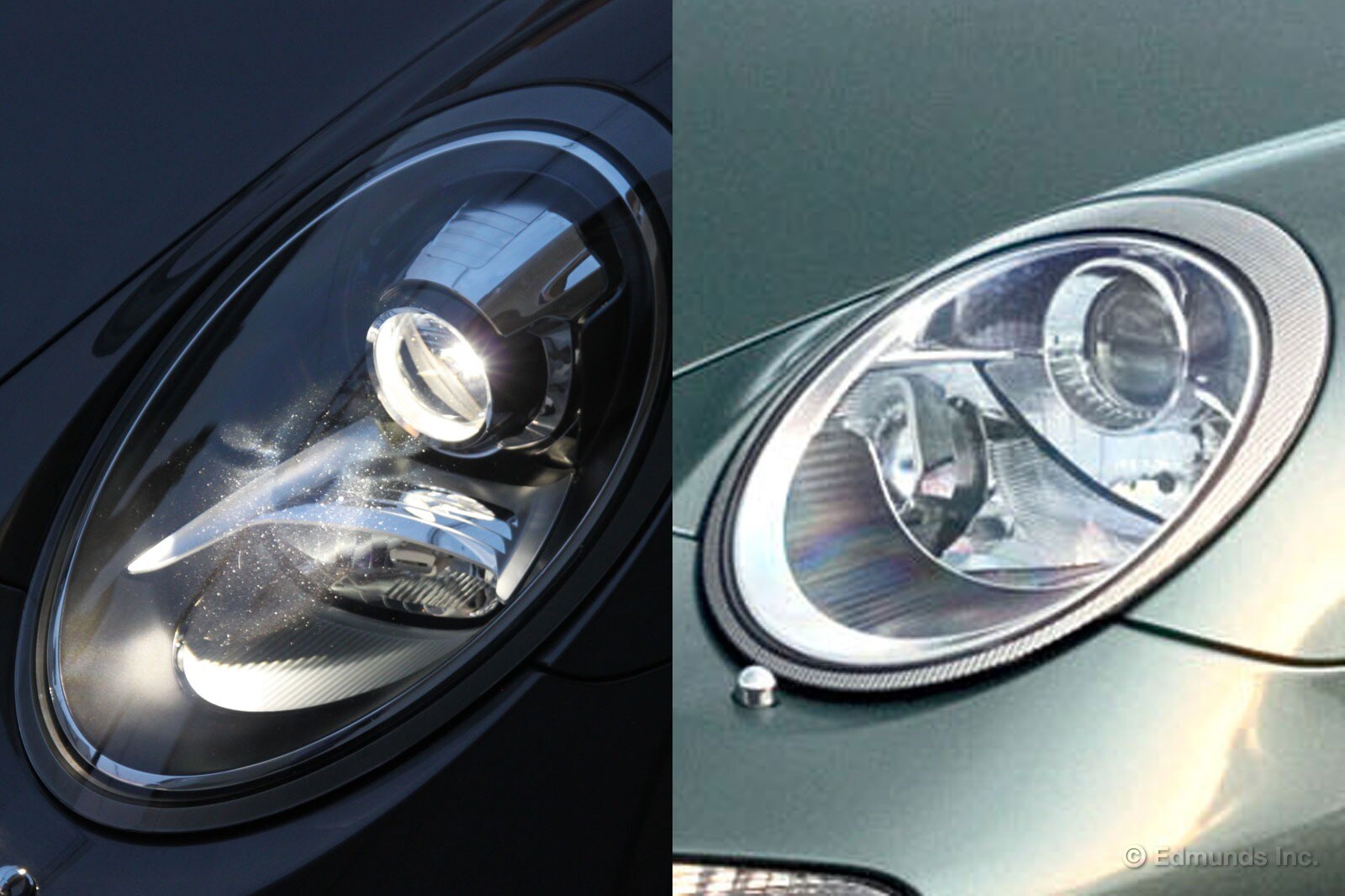
You might have noticed that all Porsche 911's look somewhat alike. Sticking to a design formula for over 50 years will do that to most people's sense of recognition.
The new 991-series 911 is way different. It's bigger, faster and has an all-new interior. Of course, none of that really helps when you spot one on the road and start thinking to yourself, "Is that a new 911? Or just one of the fourteen models that came out in 2012?"
Since eyeing the longer wheelbase isn't possible for the non-Porschephile, I just stick with the headlights. They're easy to see and simple to recognize. On the 991, the design features a prominent projector housing at the top and an overly elongated shape. The 997-series headlight was smaller with a recessed main lens.
Apart from the new design, I find the 991's lights well suited to quick driving at night. They stretch far enough that you would have to be deep into the triple digits to overrun them, and even then the beam is sufficiently wide and bright that you'll at least know what's 50 feet ahead of you.
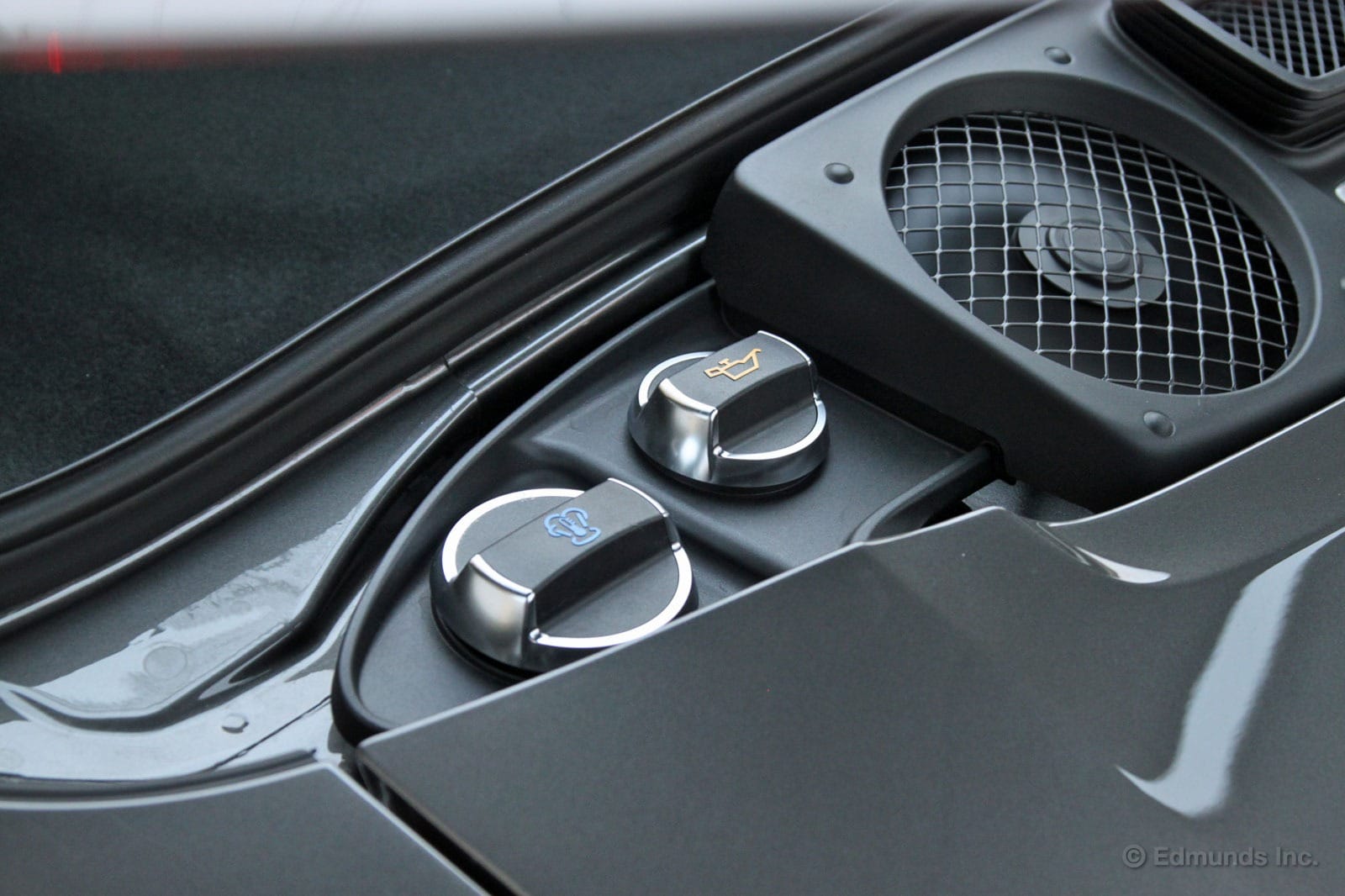
Hanging the engine off the back end of the 911 creates its own unique set of challenges, like basic maintenance for one. The engine in a 911 is buried so deep within its bodywork that you're lucky to see so much as a single hose let alone any of the actual mechanical parts that make this thing run.
Of course, everything can't be off limits, so Porsche kindly added these helpful fill points for the oil and water systems. Getting to them requires hitting the button up front that raises the cover for the convertible top, so they remain hidden otherwise. Porsche even finished them off with metallic-trimmed caps. It's the least it could do for a $100K.
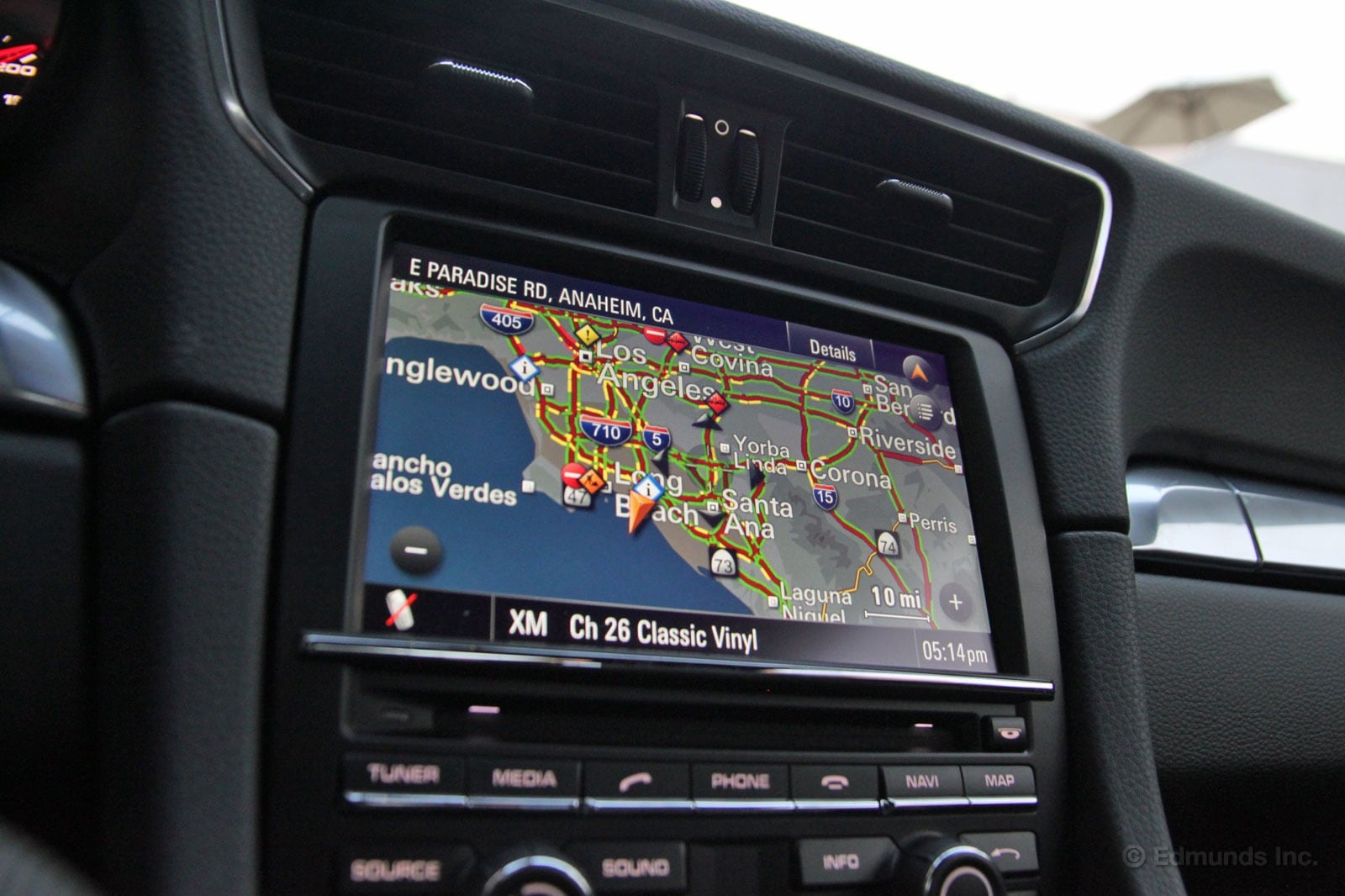
Porsche has never done navigation very well. Not sure why, probably because it was too busy building the best sports car in the world. Or maybe it was that detour into SUVs?
Regardless of why Porsche user interfaces were poorly done in the past, its latest setup is much better. As you can see, the screen is sharp, easy to read, and big enough to see without squinting. Even with L.A.'s mess of freeways clogging the screen, you can still pretty much tell what's going on.
Interaction with the various features is done mostly through the touchscreen. This is not typically a preferred method, but Porsche's system responds quickly and rarely requires you to push twice. There's a "back" button below the screen as well, so if you make a wrong turn it's not that hard to start over. I haven't used the system extensively enough to call it a great setup, but so far it seems well sorted and useful.

An automatic in a Porsche 911? Yeah, it sounds bad, but only if you've never used Porsche's PDK automatic. It makes a very good case for the demise of the manual transmission.
Shifts from the PDK are ridiculously quick, well timed, and every bit as firm as you can muster with a manual. And that's before you even put it in "Sport" mode. You can try to confuse it and nothing happens, it does the right thing anyway.
With such a smart transmission, it's no wonder so few manuals are purchased these days, but that doesn't mean I still wouldn't want one in this 911. As well as the PDK works, it's the feeling of working the gears that I miss. Modern Porsche 911s have one of the best shift linkages in the business, so it's fun just to row through the gears even if you don't really need to. It's hard to explain, but I'm not quite over the manual transmission just yet.

Remember when the Boxster came out and everyone complained about not being able to see the engine? Well, it's 1997 all over again. Our long-term 2013 Porsche 911 is the same way.
Hit the switch to open its engine cover and the clamshell motors upward not very far. Doesn't matter because there's not much to see or do here. Servicing the engine will at minimum require a lift and some surgery. Then again, service intervals are so long that tending to the engine itself will presumably be a rare occasion. This assumes that Porsche's recent DI engine architecture doesn't experience issues to the degree found in the earlier water-cooled flat-sixes.
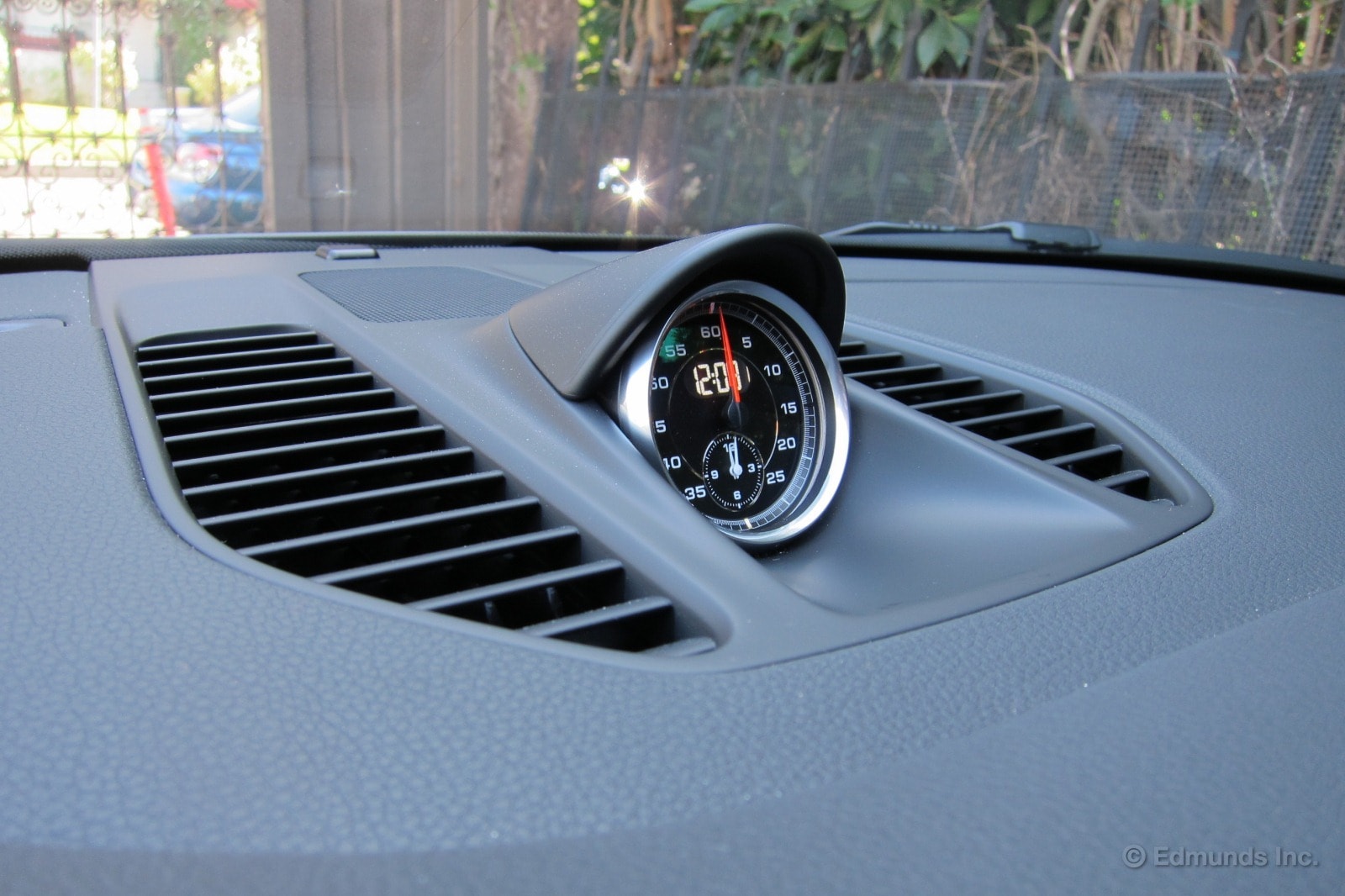
Dashboards are heavily textured not simply to look good, but so that they don't reflect light. It's an easy way to avoid casting reflections on the inside of the windshield. They're also almost universally colored black for the same reason. Dashboards of race cars are 'flocked' to take this visibility-maximizing approach to the next level.
Now note the smooth finish of the plastic panel surrounding the Sport Chrono timer in our long-term 2013 Porsche 911. It's too smooth. I know this because I see it plain as day, stretching across nearly the entire height of the windshield on bright days. It's a minor quibble, yes. But it's one I wouldn't expect to find in a driver-oriented car like this one.
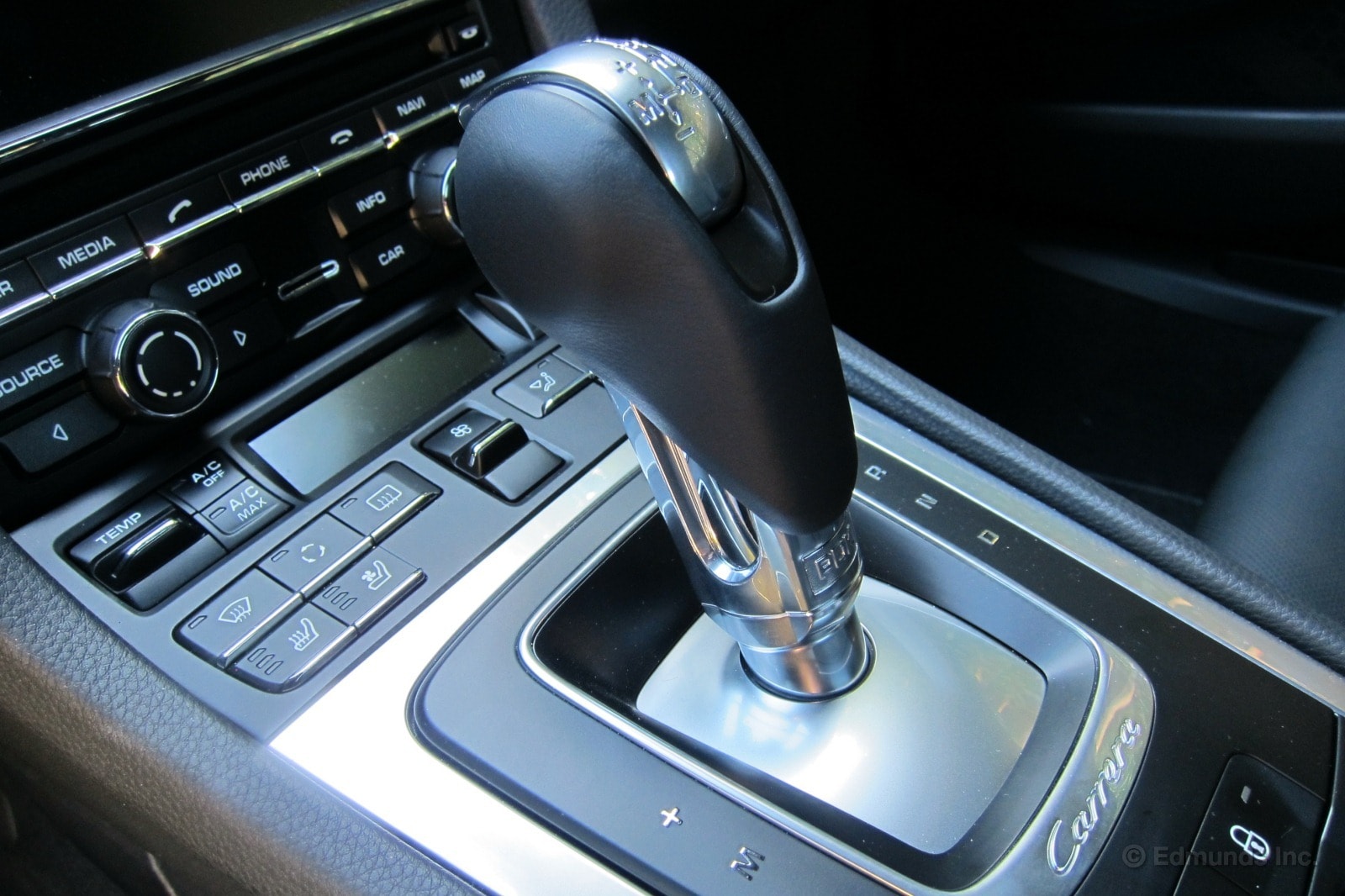
Okay, as much as I'd prefer that our long-term 2013 Porsche 911 was equipped with the conventional manual gearbox, I have to acknowledge the brilliance of its PDK transmission. It really is the best dual-clutch gearbox in production today. Not only does it shift imperceptibly smoothly, the gear changes occur in what appears to be no time at all. These characteristics are no surprises, and they're ones we've come to expect from competent, modern dual-clutch gearboxes.
What makes PDK stand above the rest is its manners, intuitive programming and quick reflexes. Unlike many other dual-clutch 'boxes, with PDK there's no low-speed nonsense, no clunkiness, and during three-point turns it swaps between 'R' and 'D' and back right now.
It just always seems to do the right thing at the right time. It's hard to describe, but here's one example. Floor the gas from low revs and hold it there, whereupon the PDK of course downshifts, causing the revs to soar. If you suddenly lift near redline, it will hold that gear at high revs to provide engine braking until you touch the gas again. Here's where it's smart: If you just barely roll into the throttle, it immediately upshifts multiple gears because it knows that you're back into cruising mode. Return to the throttle with a heavy foot and it continues to hold that gear.
This strategy is what drivers would intuitively expect. However, it wouldn't work right were it not for PDK's lightning-fast responses. It just executes everything immediately and without error. Very impressive. Aside from console lever's backwards push-to-upshift layout, the PDK box was clearly calibrated by drivers, for drivers.
I'd still buy my 911 with a manual gearbox.

I don't know. I guess this was cute for a couple of hours when it was introduced (I think) on the Panamera, but today the car-shaped key fob for our long-term 2013 Porsche 911 strikes me as...a bit cheesy.
The romantic notion of yesteryear was that the Porsche owner would plop his keys on the top of the bar with pride. With this thing, no way. It feels weird when operating its buttons, and sticking a miniature car into the key slot in the dashboard? Let's just say that this key fob would be the coolest thing in the world to the fifteen year-old version of me.
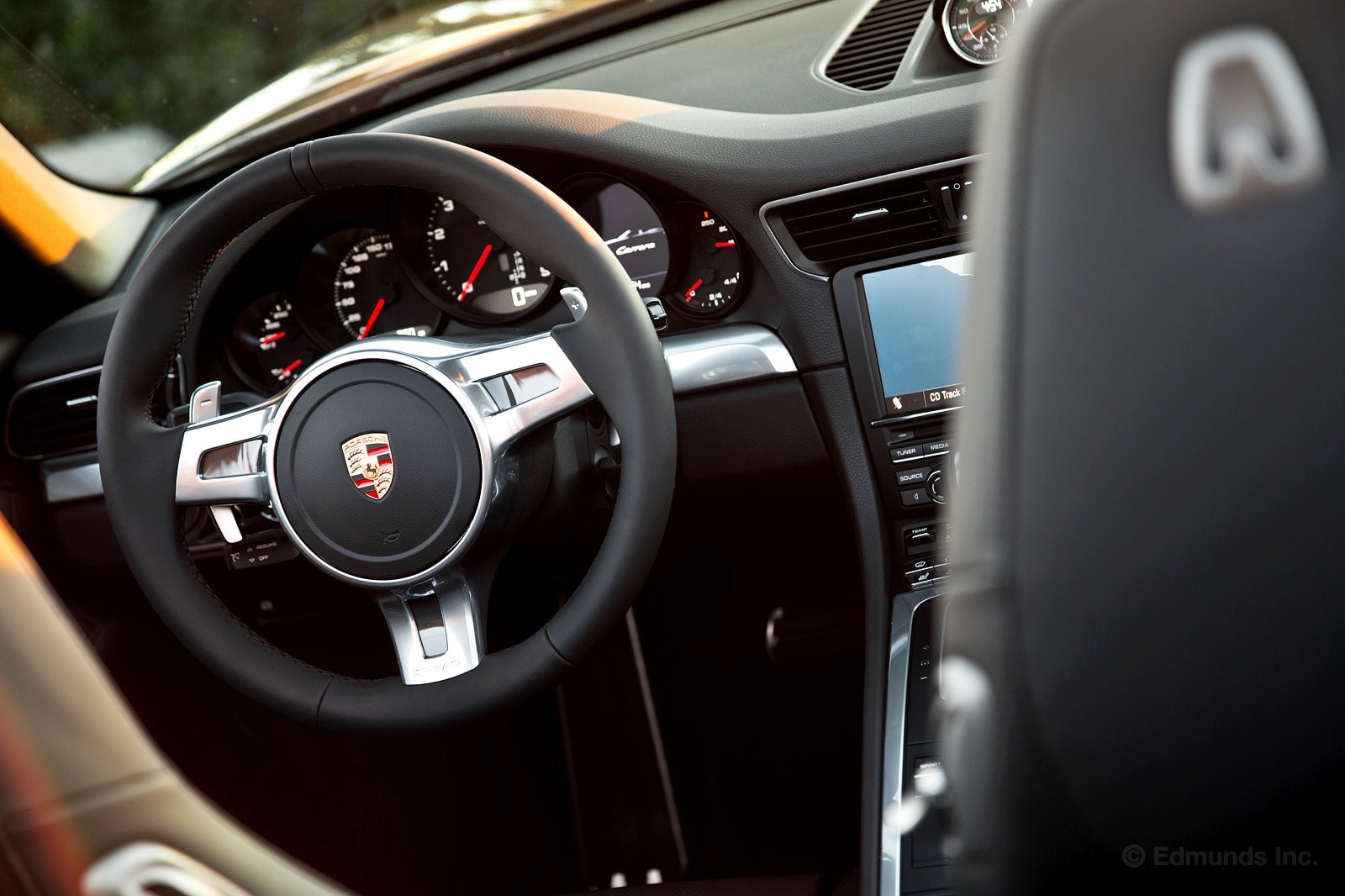
When we were buying our long-term 2013 Porsche 911 many members of our editorial staff were passionate about the steering wheel. "Scott, whatever you do don't get a car with the standard wheel with those weird shift buttons," they told me several times. "Make sure we get the SportDesign steering wheel with the real paddle shifters."
I resisted, but after a couple of weeks of constant drilling they convinced me the buttons were undesirable because of their unconventional action which allows both the left and right side button to up or downshift the transmission. You pull either to downshift and push either to upshift.
The paddle shifters on the other hand work as expected. Pull the left paddle to downshift and the right to upshift. But the optional wheel also has a downside. Besides the extra $490 it costs, it is unavailable with any other controls like radio or Bluetooth buttons. Order the SportDesign wheel and you have to reach for the center stack old school.
After overthinking it, I decided to only shop cars with the optional SportDesign wheel with the real paddle shifters and that's ultimately what we bought.
I regret it. It was a mistake. I just spent a weekend and 600 miles driving a Porsche Cayenne diesel equipped with the Multifunction Steering Wheel that's standard on the Cayenne (and 911 Carrera S) but a $615 option on our 911. Yes, it’s got the weird buttons.
I loved it. Sure, pushing a button to upshift takes a little getting used to, but I acclimated quickly and I very much appreciated the radio and Bluetooth controls on the wheel.
If I had to buy our 911 over again I would buy one with the Multifunction Steering Wheel. Our staff was wrong, turns out the SportDesign wheel just isn't worth the investment.
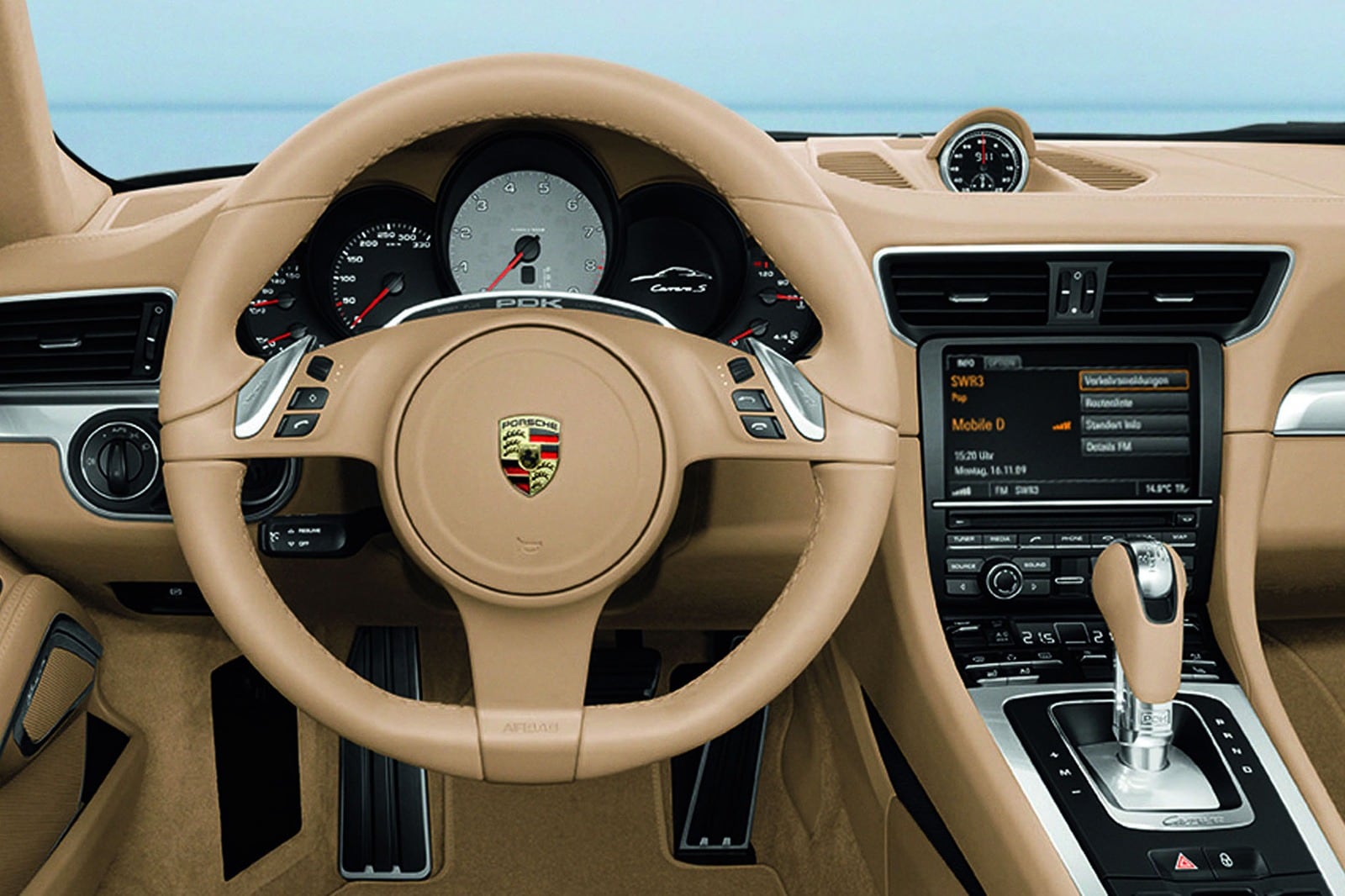

Apparently, nobody at Porsche realizes that a good chunk of the USA technically does not meet their minimum requirement of 93 octane.
It's even stranger when you consider that the USA buys more Porsches than does any other country, and that the state in the USA that buys the most Porsches, California, musters a maximum of just 91 octane.
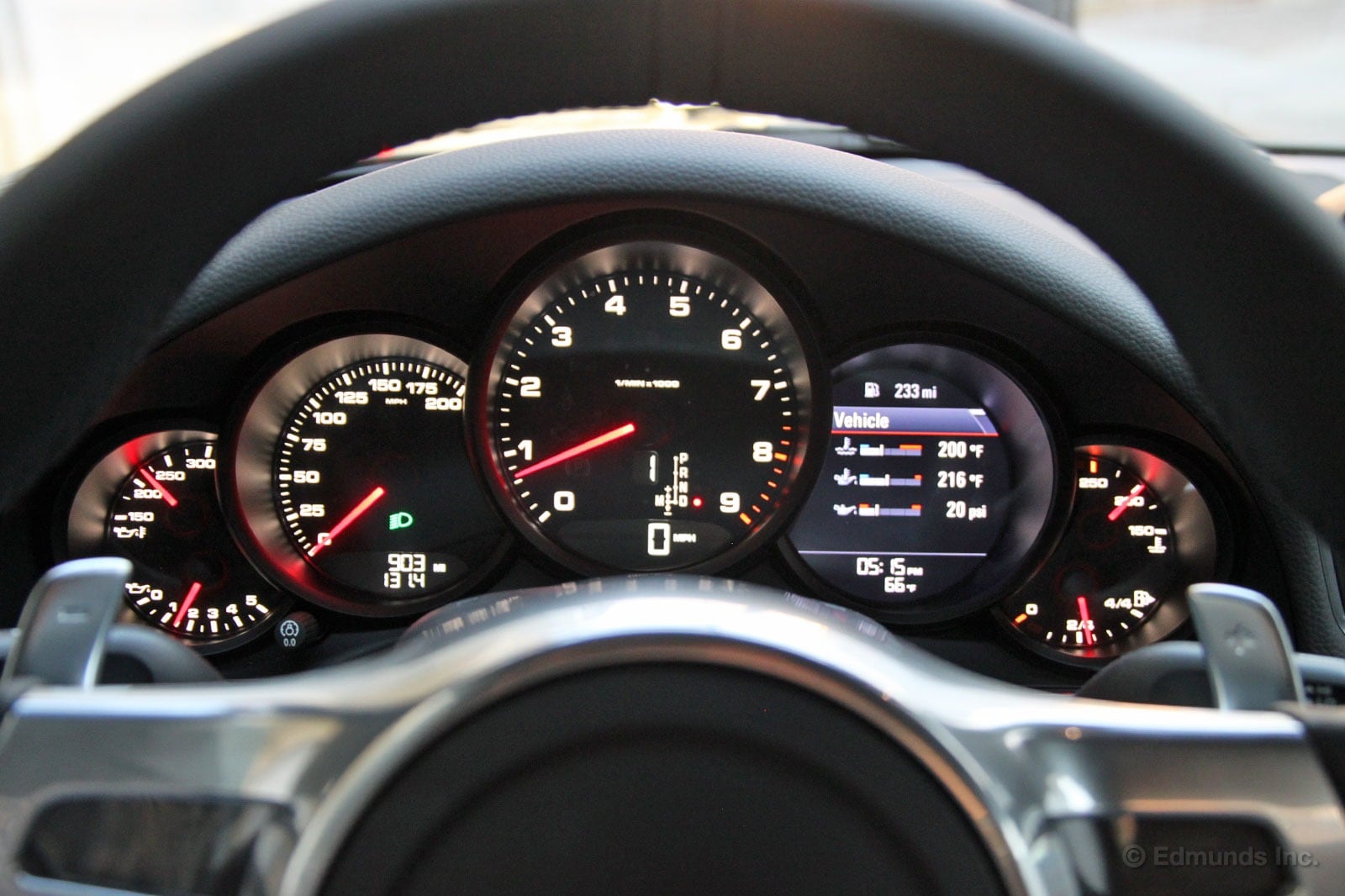
Much like the exterior design of the Porsche 911, the design of the gauges hasn't changed much over the years. Porsche's designers still put the tachometer in the middle and everything else wherever its fits. It works, so why mess it up?
Obviously, the latest 911 also jams in stuff like navigation commands, radio station info, a gear indicator and even tire pressure readings from all four corners. As you can see, it does this without getting rid of actual gauges for more important stuff like oil pressure and water temperature.
It's a clever setup that manages to blend tons of information with the simplicity of large analog gauges that can be read at a glance. Porsche traditionalists might find it a bit much, but I think our 911 is a great example of keeping the best of what's old while blending in the best of what's new.
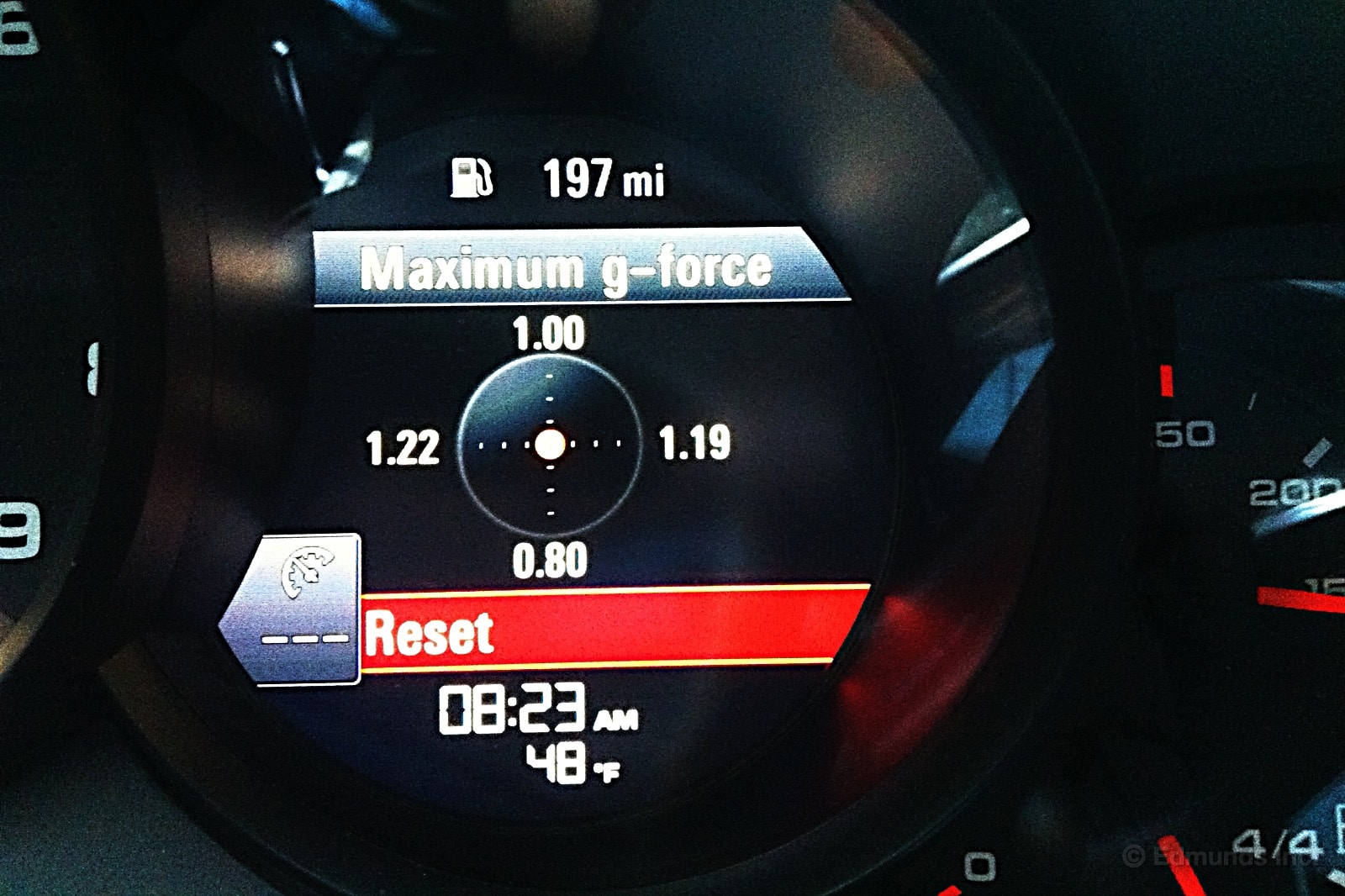
I might be a Porsche guy. I never thought I would be, but between our 2013 911 and our departed 1985 911, I think I'm headed that way.
I drove the new 911 Cabriolet out to my super secret test facility and I was thoroughly impressed. Overall, the car is balanced and it tracks through the curves with precision. As you'd expect, you can lift off the throttle slightly and get the rear end to rotate ever so slightly through turns. I left all of the electronic nannies on, but was still able to hold just a hint of oversteer when I desired it.
The release from adhesion is progressive and predictable. On the few occasions I tempted the traction and stability control to intervene, they did so without cutting the throttle and killing the fun. As much as I love our SLS AMG, this Porsche is way more fun to take into the canyons. This is primarily because it doesn't feel like the 911 is trying to kill me with every turn.

During the month of February we drove our 2013 Porsche 911 Carrera Cabriolet about 940 miles. During those almost-four weeks the sedan averaged 15.4 miles per gallon of 91 octane premium.
That's quite a bit lower than the 16.7 mpg that we've averaged over the car's 2,214 miles and the Porsche's 21.5 mpg combined EPA rating. The reason? Hard driving. The Porsche saw particularly spirited use this month and was also track-tested, where the throttle is used with impunity, eroding its fuel economy.
It's still early in the Porsche's test, so a few hard-driven fills make an unduly strong impression on the average to date. Once we throw in a few long trips we'll get a more complete picture of the 911's fuel-using ways.
Worst Fill MPG: 12.4
Best Fill MPG: 19.7
Average Lifetime MPG: 16.7
EPA MPG Rating (City/Highway Combined): 21.5
Best Range: 286.4 miles
Current Odometer: 2,214 miles
Note: Cars are sometimes refueled before their fuel tanks are nearly empty. As such, "best" and "worst" fuel economy entries above are not necessarily the result of an entire tank's worth of driving.

A recall has been issued for the Porsche 991. Seems the company discovered that the tailpipes of cars with the standard exhaust (but not the sport exhaust) can detach. This was observed in test cars in Porsche's fleet. So far, no reports of incidents in the field.
The recall applies to cars manufactured from March 7, 2012 through November 12, 2012.
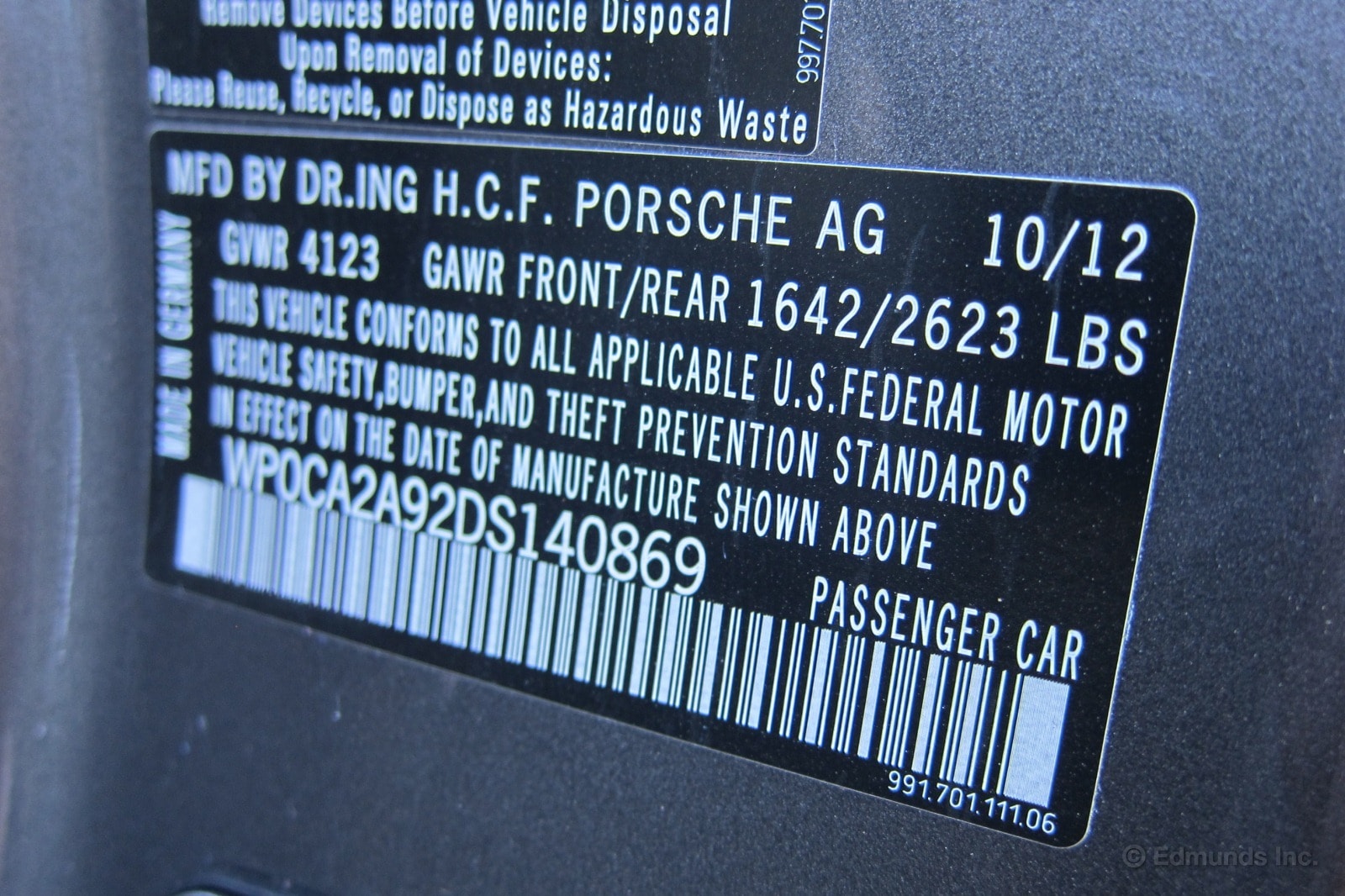
As you can see on the doorjamb sticker above, our long-term 2013 Porsche 911 Carrera Cabriolet was manufactured in October. And it is indeed equipped with the standard exhaust.
Looks like we'll be heading to the dealer soon. But not too soon as Porsche told NHTSA it is waiting for sufficient quantities of reinforced rear mufflers to become available before notifying owners to take their cars in for service.
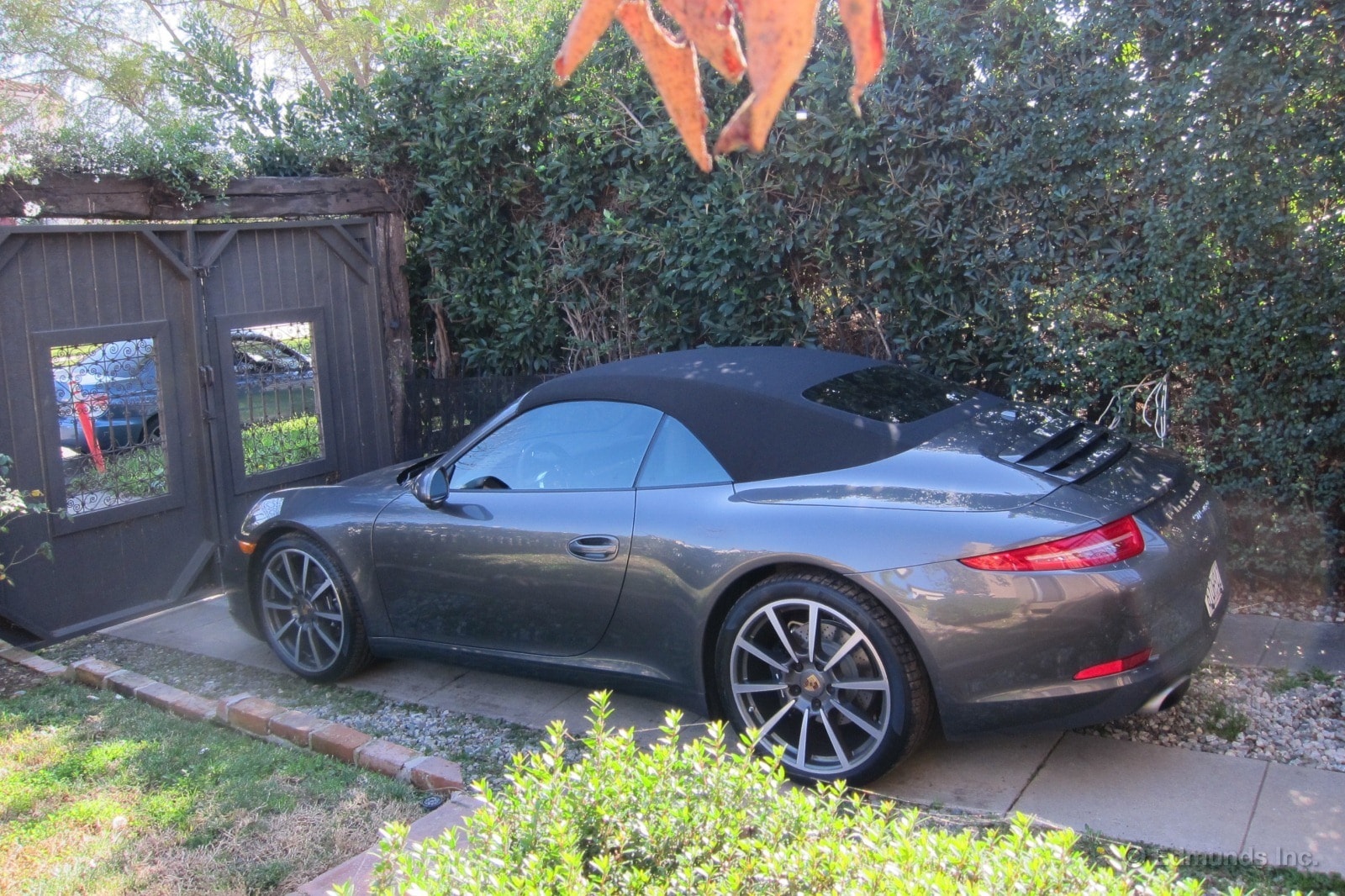
Our long-term 2013 Porsche 911 Carrera Cabriolet is better than our Mercedes SLS AMG Roadster. Believe it. Now, a drop-top 911 with an autobox is nearly the last 911 I would buy with my own money. But you'd think that the SLS Convertible, so similar in morphism to the 911 'vert, would be head and shoulders above the Porsche according to any conceivable metric.
I'll grant you that the SLS is faster. I've gone on record that the AMG M159 V8 is the world's best production aspro V8. There's no denying that the SLS will out-drag the 911. But it's not like the 911 is slow or sounds bad. Certainly the SLS is the rarer car, but neither is truly beautiful. And when the defining characteristic of the SLS — those gullwing doors — must be deleted in Roadster form, well, that erases the point of the car.
Those are all circumstantial factors. What it boils down to for me is the essence of the way a car drives, the cohesion of the elements of the driving experience. The Porsche nails the weighting and response of the steering, brakes, throttle and (especially) the transmission with more aplomb than does the Merc. Know what? The 911 drives like the more expensive car. This, despite the fact that the 911 costs a fraction of the SLS's sticker price. (The 911's seats are better than those in the SLS, too.)
If you're pondering the purchase of the SLS drop top, consider a 911 instead. It simply drives better.

It's never a good thing to see your 2013 Porsche 911 Carrera Cabriolet on a flatbed.
And few things are more miserable than realizing you have a flat tire. Especially when you're trying to get the long-term 911 to California Speedway to re-test it with lower tire pressures.
Since there is no spare tire onboard our 911 Cabrio, I called Porsche Roadside Assistance for a tow to a dealer or tire shop. The person I spoke with was very courteous and generally helpful. She said a flatbed tow truck could be there within an hour and 40 minutes, which seemed exorbitantly long to me. She also said they would tow it to the Porsche dealer in Newport Beach, which is quite a ways from my place in south Orange County.
And she made no promises as to how quickly the car could be ready once it got to the dealer.

After some thought, and realizing there are several tire shops very close to where I live (and where the car was), I called her back and asked if their tow truck driver could drop the car at a tire shop that was less than two miles from me, versus a dealer that was probably closer to 20 miles.v
She said, yes, they could do that. But it would cost us $119 for a drop-fee.
So I called AAA. A flatbed got there within a half hour, he towed me to the tire shop of my choice and it cost us exactly $0. Plus, Jonathan from Sea Country Towing & Recovery couldn't have been nicer or more careful with our Porsche.
I slipped him $10 as a thank you, which was all I had on me. Clearly, I'm not a Porsche owner.
Next step: Finding out why the tire went flat. I checked all around the tread but couldn't find any kind of nail or screw.
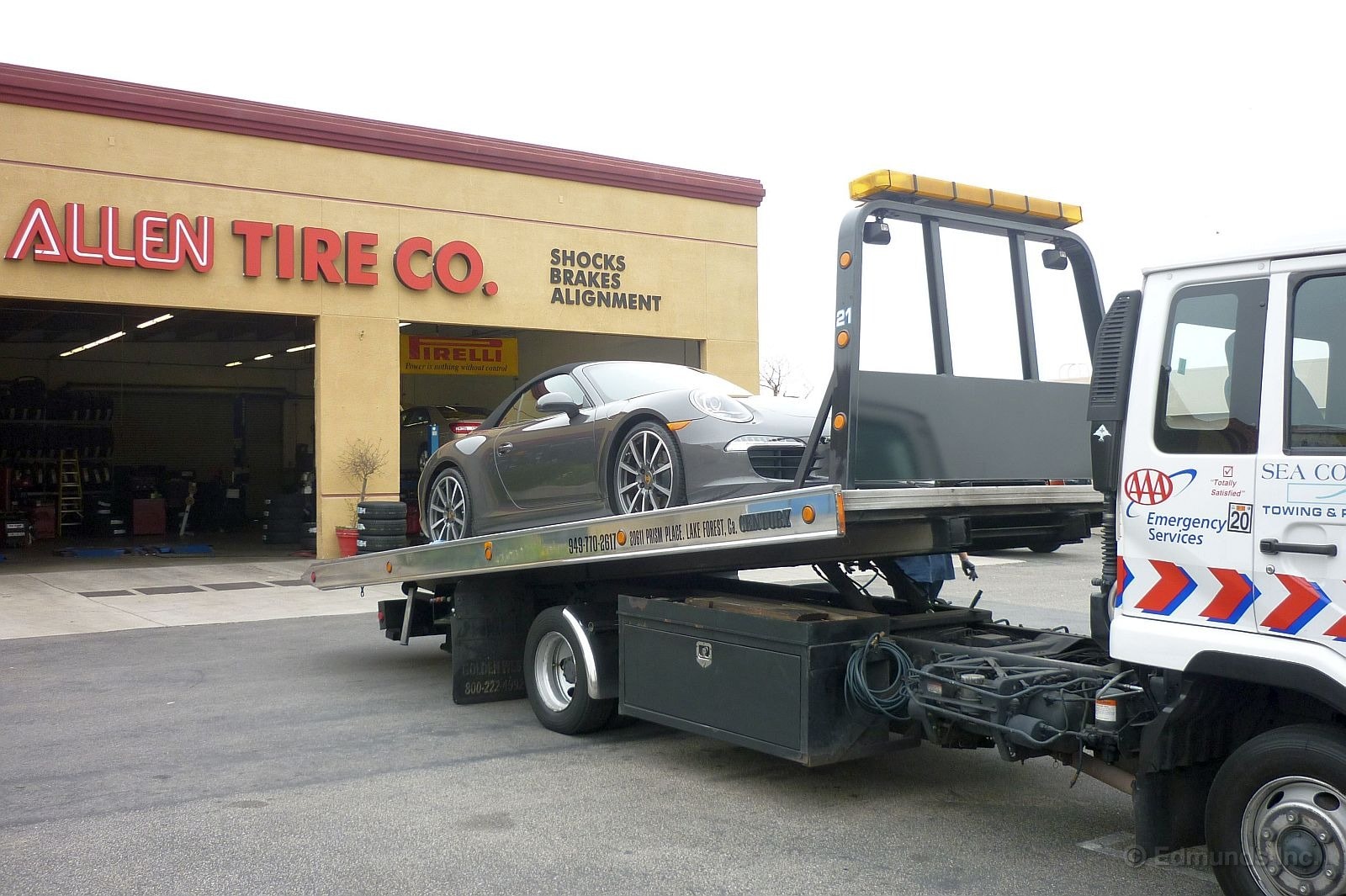
After we had our 2013 Porsche 911 Carrera Cabriolet towed to Allen Tire in Lake Forest to fix its flat left rear tire, the next question was: What caused it?
As mentioned in the last update, I had spun the tire around, felt all the tread and couldn't find a nail or anything obvious. After some air was added, it turned out to be a cut sidewall. How exactly it got cut is not clear, but the fact the rim is also slightly bent points to hitting a pothole.
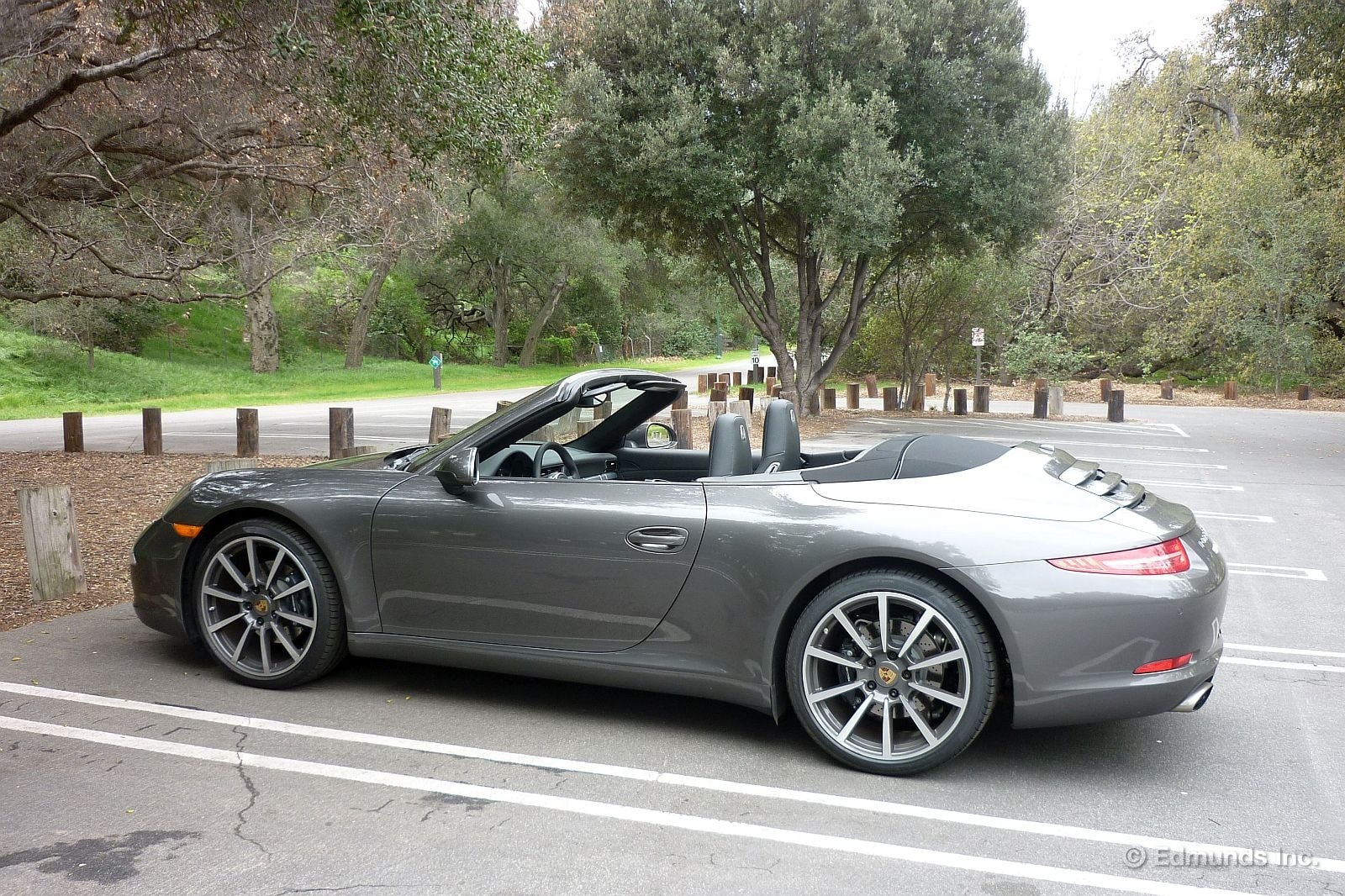
But that's a bit weird on two levels. First, I sure didn't think I hit any hole hard enough to bend a rim or cut a tire. Second, they don't even allow potholes down here in Orange County.
But the cut sidewall meant we needed a new tire. The tire shop was able to get a Pirelli PZero, size 295/30ZR20, to the store by the end of the day. With mounting and balancing, the total came to $661.38.
On the bright side, the 911 is back on the road and that slightly bent wheel doesn't seem to be a problem.
On the down side, those damn 20s.
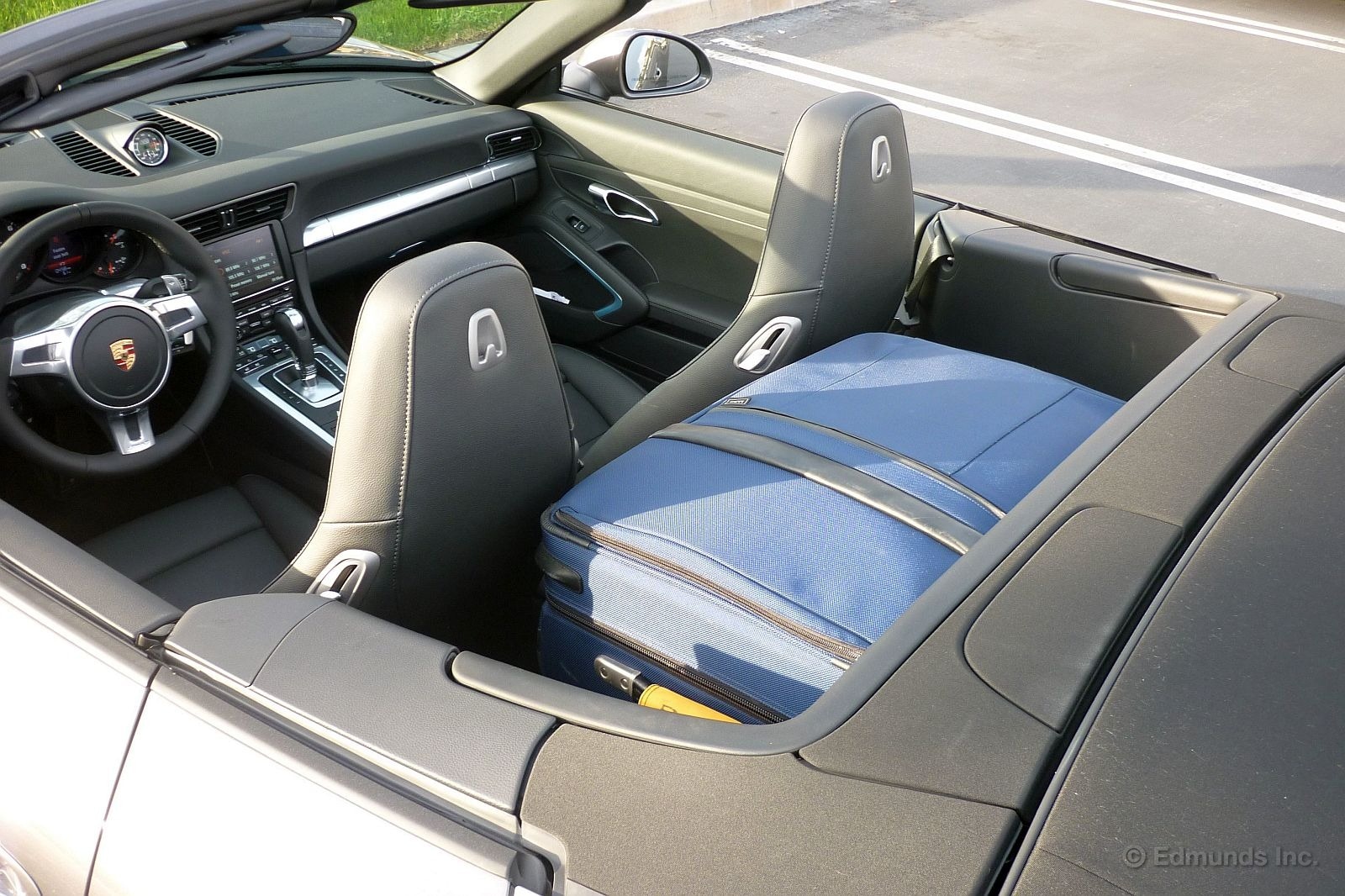
Last week my Mom flew into town from Vermont to spend a couple of days with me before heading down to a conference in San Diego. I hadn't thought about what car I would have in advance, and it just happened to be our long-term 2013 Porsche 911 Carrera Cabriolet.
As I was pulling into the airport I started questioning how smart a choice the 911 convertible was. And how much luggage my Mom would have.
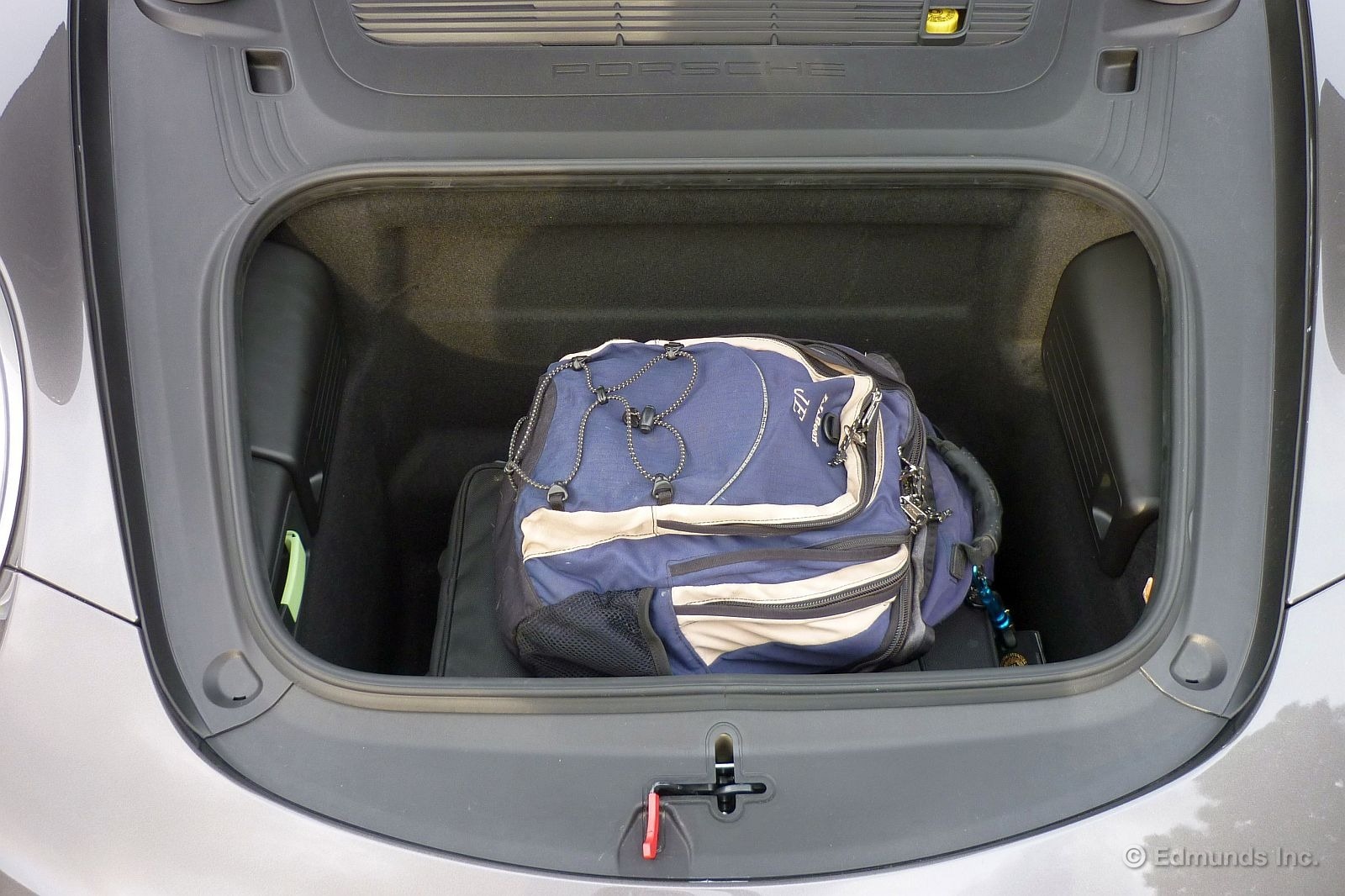
Turned out it wasn't a problem at all. I flipped down the two rear seatbacks to form a shelf for her large checked suitcase. And put her trumpet bag (she's a professional musician in her spare time) and backpack up in the front trunk, or frunk.
As for my Mom, who lives a sports-car-free life in her small college town in upstate Vermont, I think it was pretty special to get picked up in a Porsche 911.
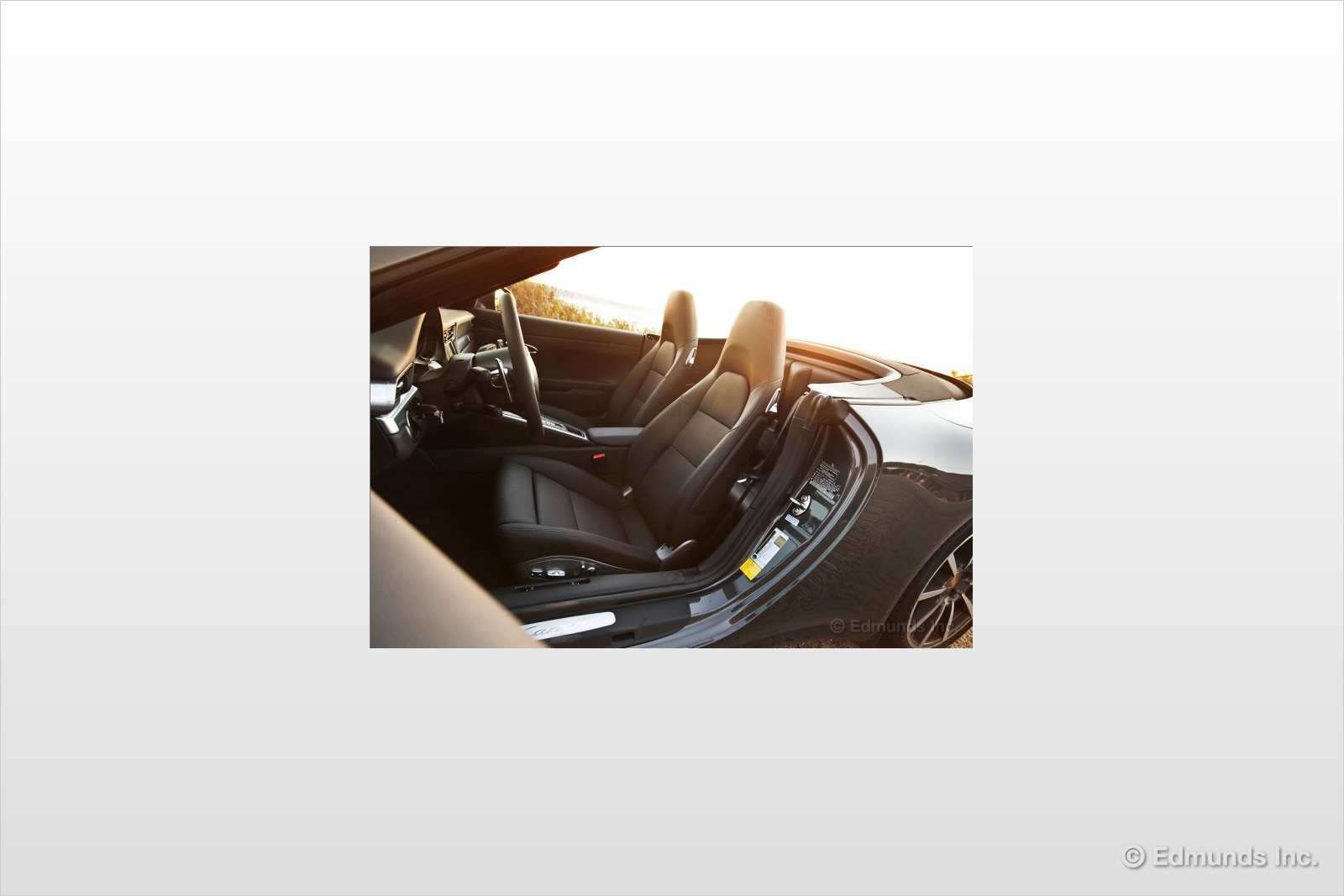
My friend and gym companion Doctor Mike is a big fan of the Porsche 911. As in 6-feet, 7-inches tall, 270 pounds big. And as much as he loves the 911, the car has never been commodious enough for someone his size.
When I had our long-term 2013 Porsche 911 Carrera Cabriolet last night, I flipped the key to Mike so he could try it on for size it while I put some miles on the elliptical trainer. He came back all smiles. By lowering the seat completely, letting it travel back as far as it would go and setting the proper angle of recline, Mike fit nicely in the car. Even with the top up, he had plenty of head room. Kudos to Porsche for ensuring that it's not just compact, whippet-thin people who get all the driving fun.
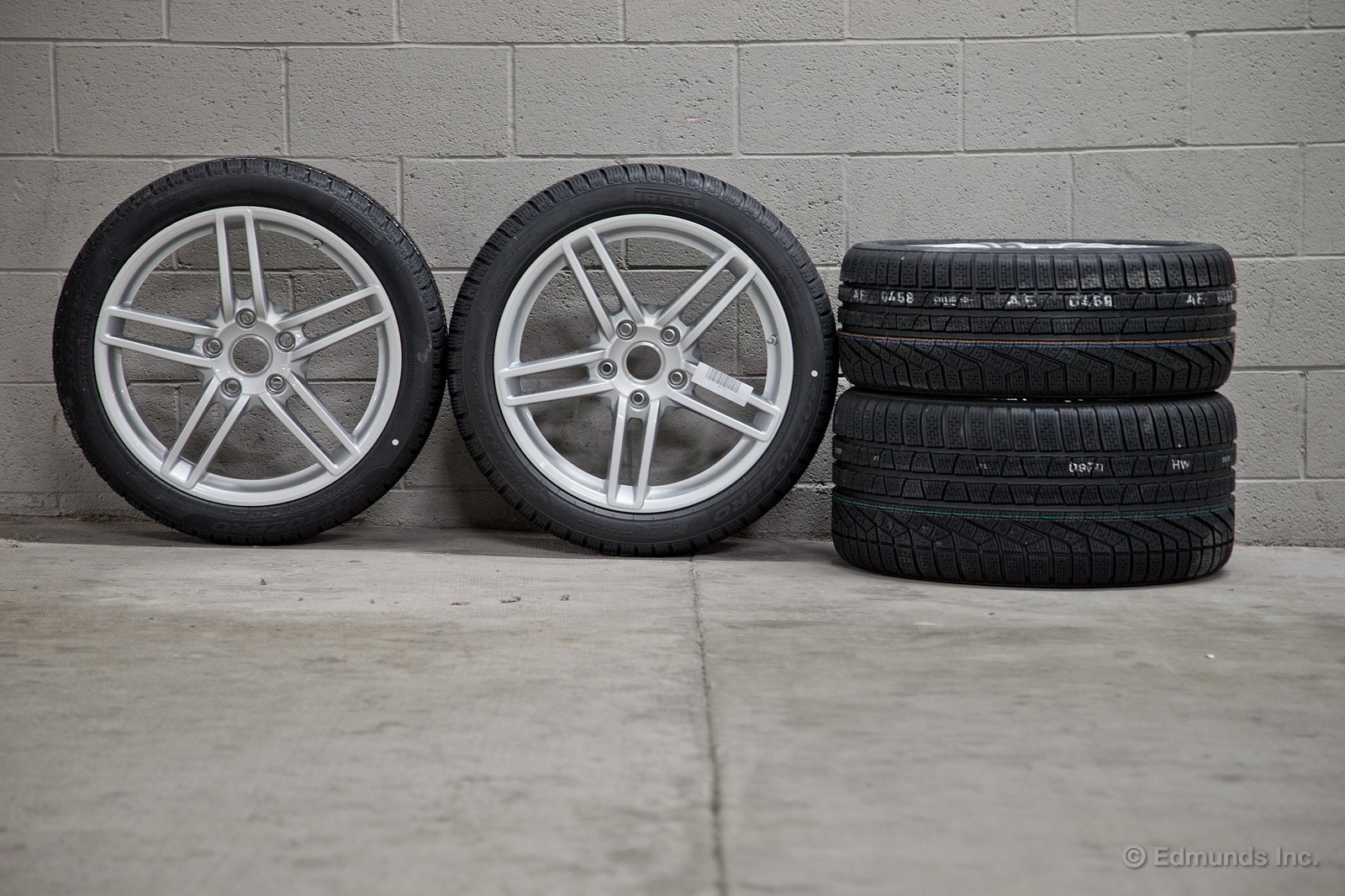
When we were shopping for our brand new, long-term 2013 Porsche 911 Cabriolet, we were railroaded into getting the 20-inch wheels. No, we weren't bullied by salesmen or anything like that. We just didn't want to special-order a car and everything we found here in SoCal was equipped with the optional 20s.
Once we had the tire pressures set correctly the ride was vastly improved, but we still would have preferred the 19s.
Then Porsche read our comments, stepped up and offered us a set of 19-inch wheels to try on our 911. We agreed, but only if they'd throw in a set of winter tires.
Initially, we wanted all-season tires. Turns out that all-season tires don't exist for the 235/40 (f) / 285/35 (r) Porsche 19s. Winter tires, like the Pirelli Sottozero Serie II, do.
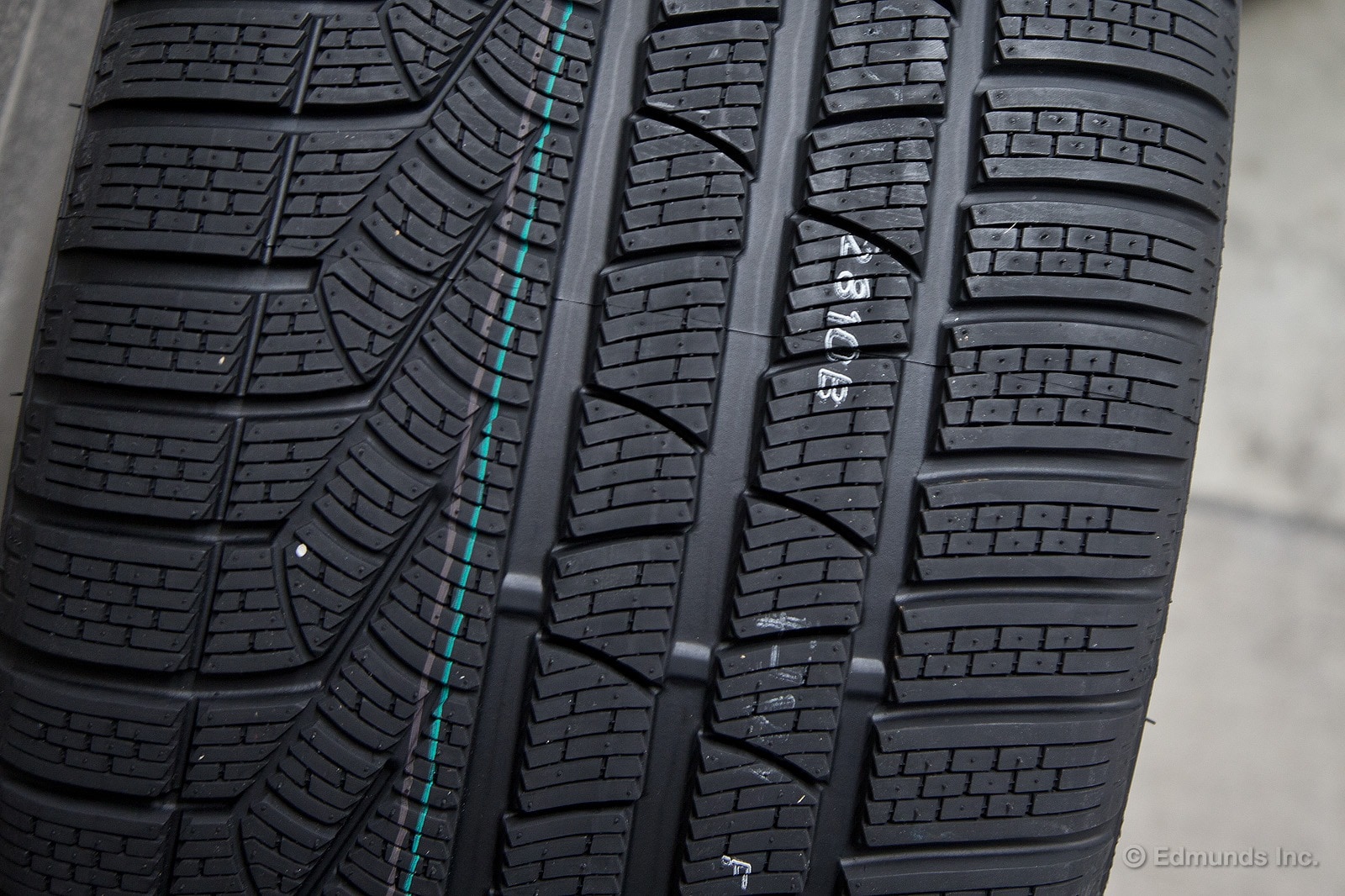
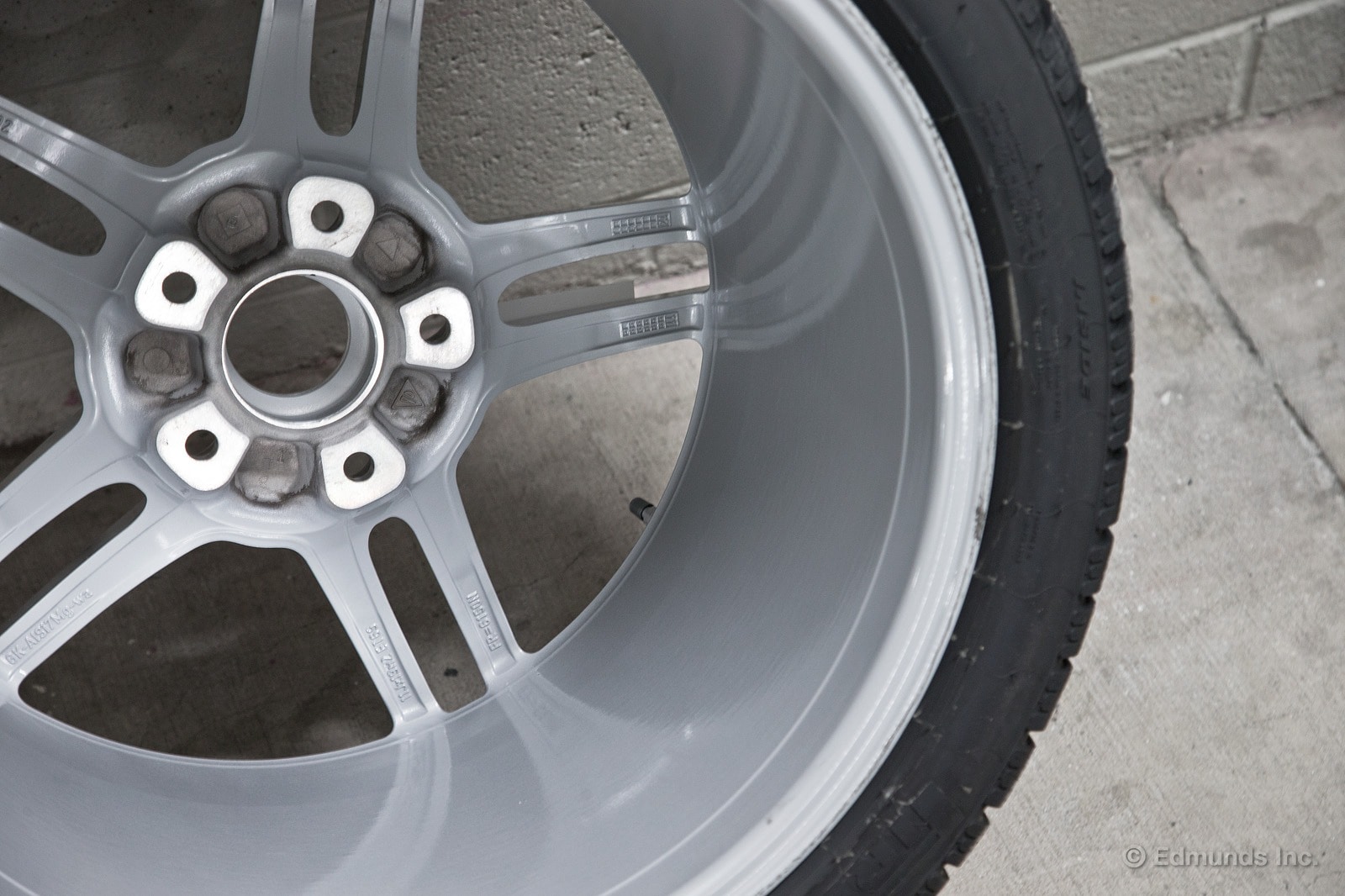
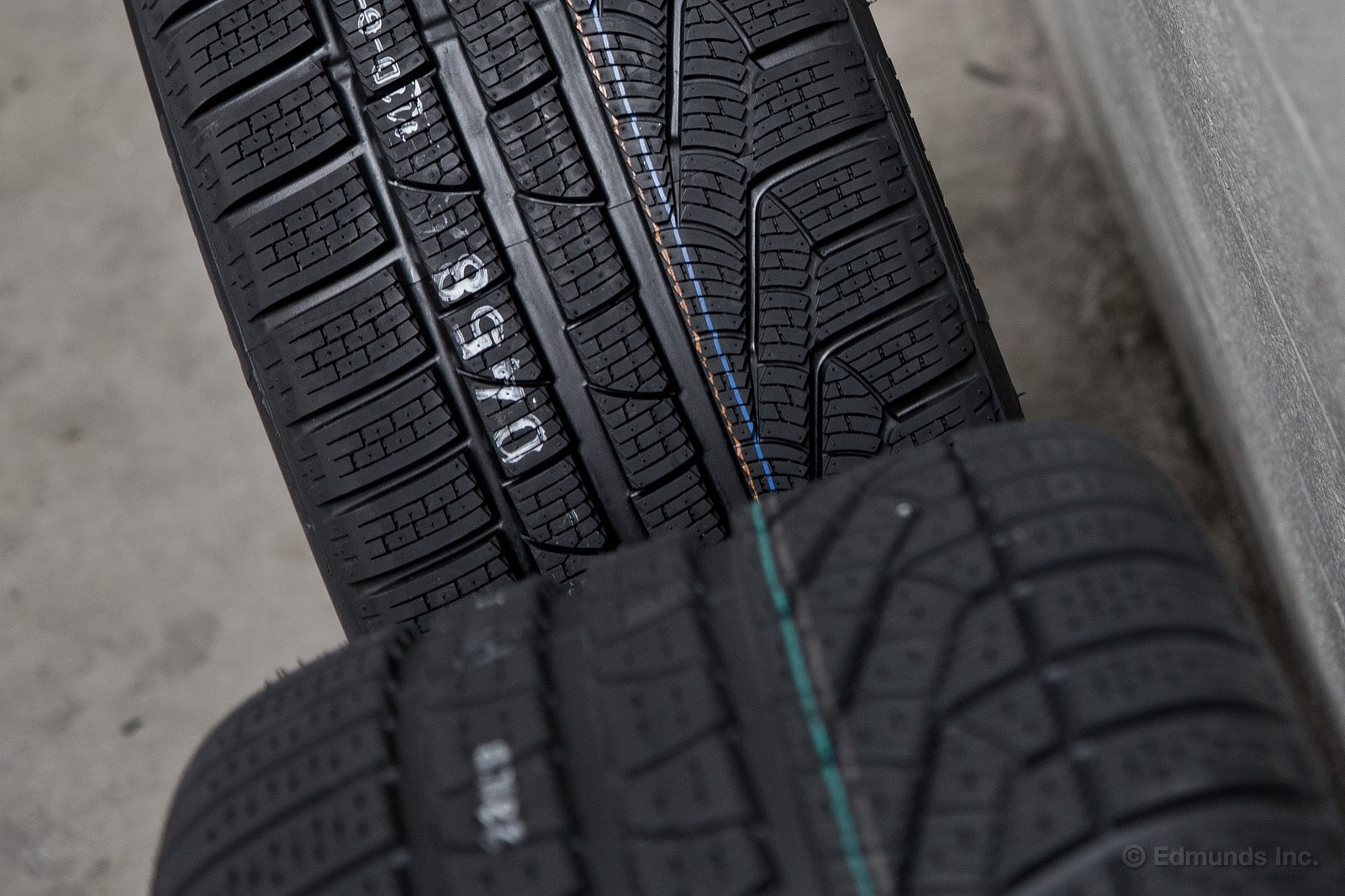
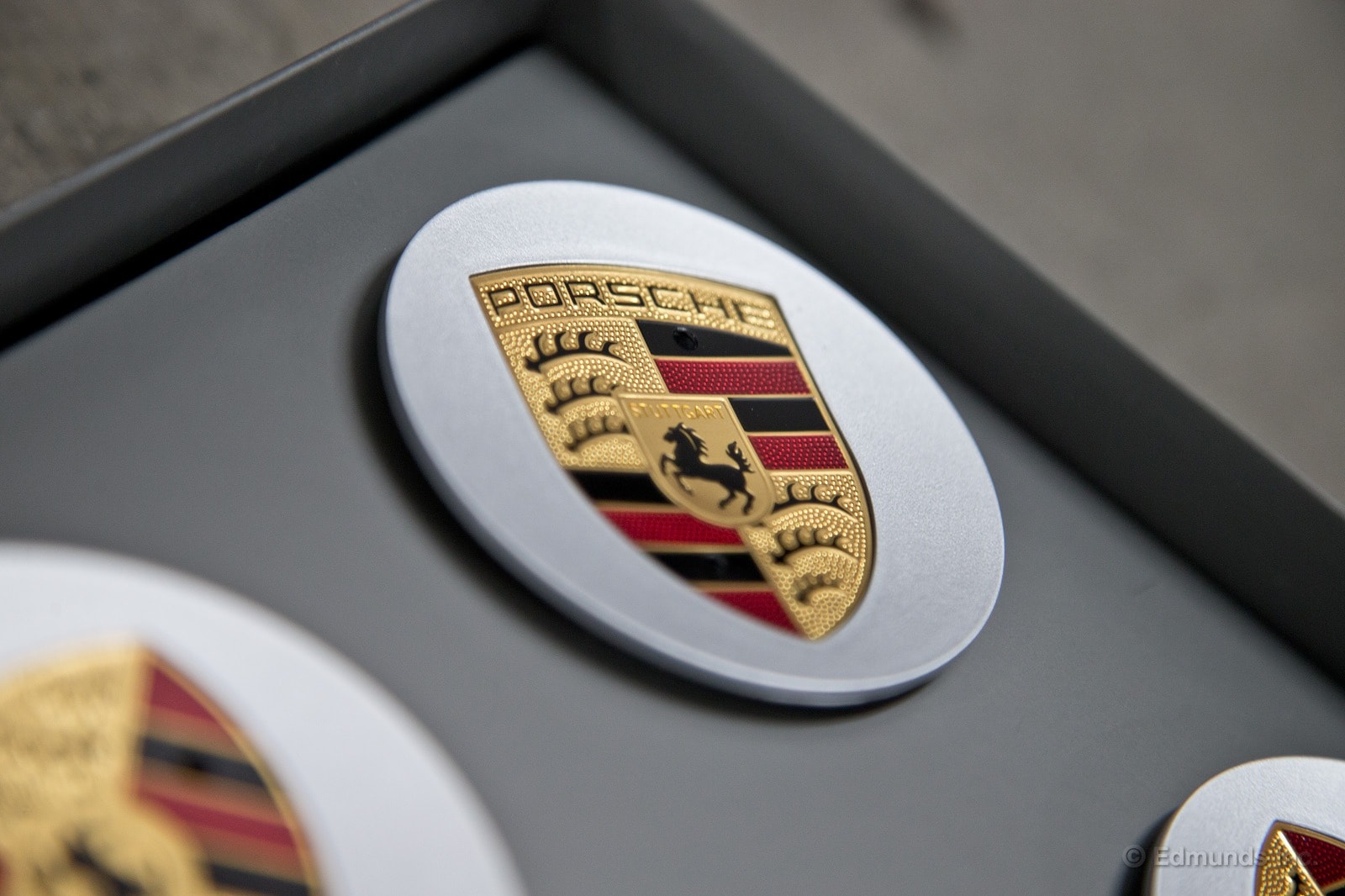
And they're available through the Porsche Tequipment catalogue. For a price. The tires and wheels run $4,481.31 and the painted center caps are $214.53. If that sounds expensive, remember that the alternative is having a dedicated winter car that would require insurance and winter tires of its own.
Yes, these are the same tires with which we armed our SLS AMG for its trip to Mount Rushmore.
But we're not going to Rushmore in our 911. Not intentionally at least. We're going much, much further.
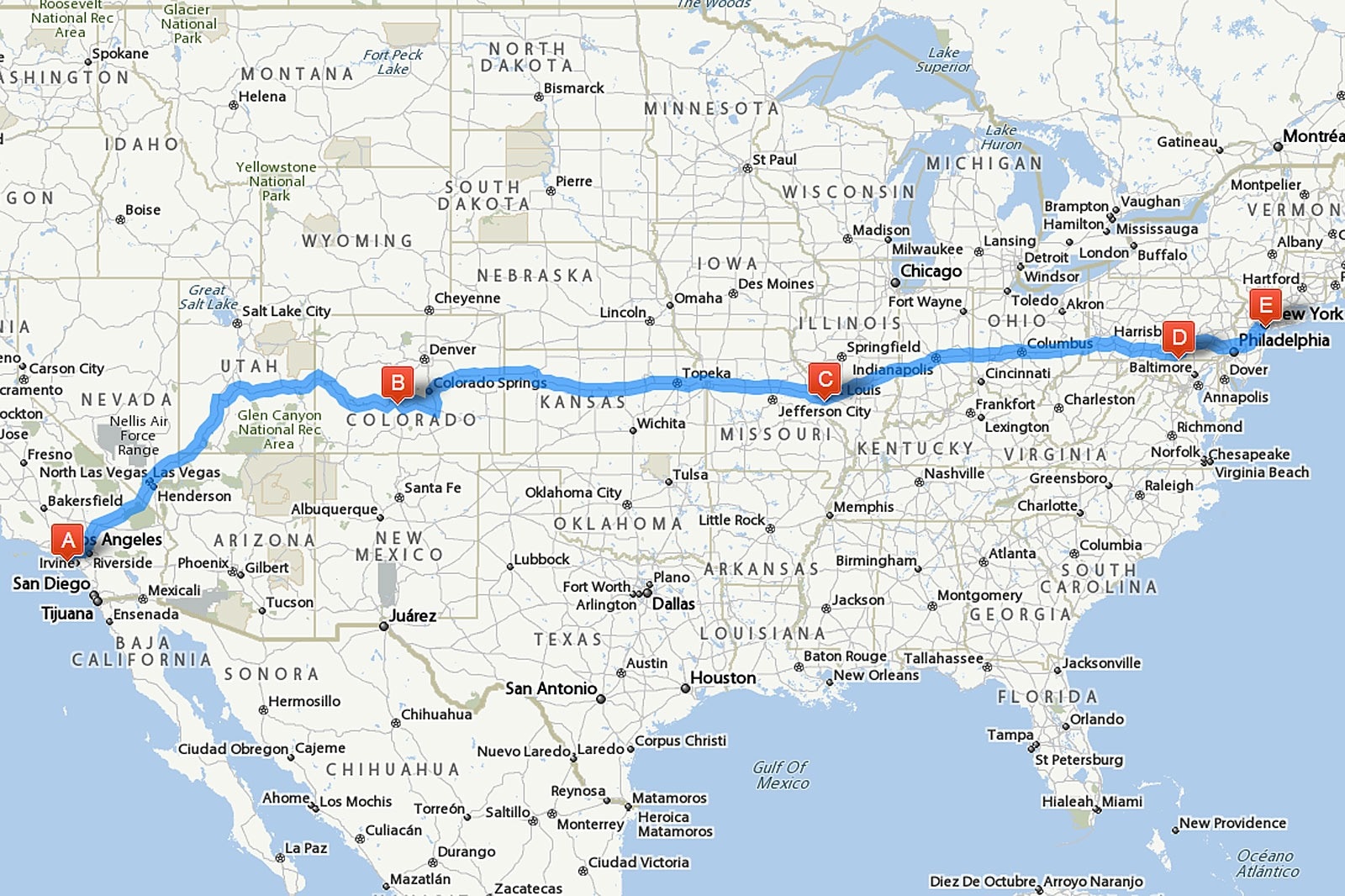
Yesterday, Mike Magrath told you that we put snow tires on our 2013 Porsche 911 Carrera Cabriolet. He also said we won't be retracing the SLS AMG's path to Mount Rushmore.
Instead, I'm driving the route above. All the way to New York. I'm leaving this very morning (yes, Saturday) and I have to be in Midtown Manhattan by Tuesday afternoon for the start of the 2013 New York Auto Show press days.
It doesn't look like a very aggressive, northerly route considering that our 911 Cab now has those awesome snow tires, but rest assured that snow is in the forecast for every one of my stops: Colorado, Missouri, Pennsylvania, and yes, even New York itself.
It's a 2,886-mile drive and it promises to be an adventure. Follow me on Twitter @eriches as I regale you with the highs, lows and amusing moments of our 2013 Porsche 911's first cross-country road trip.
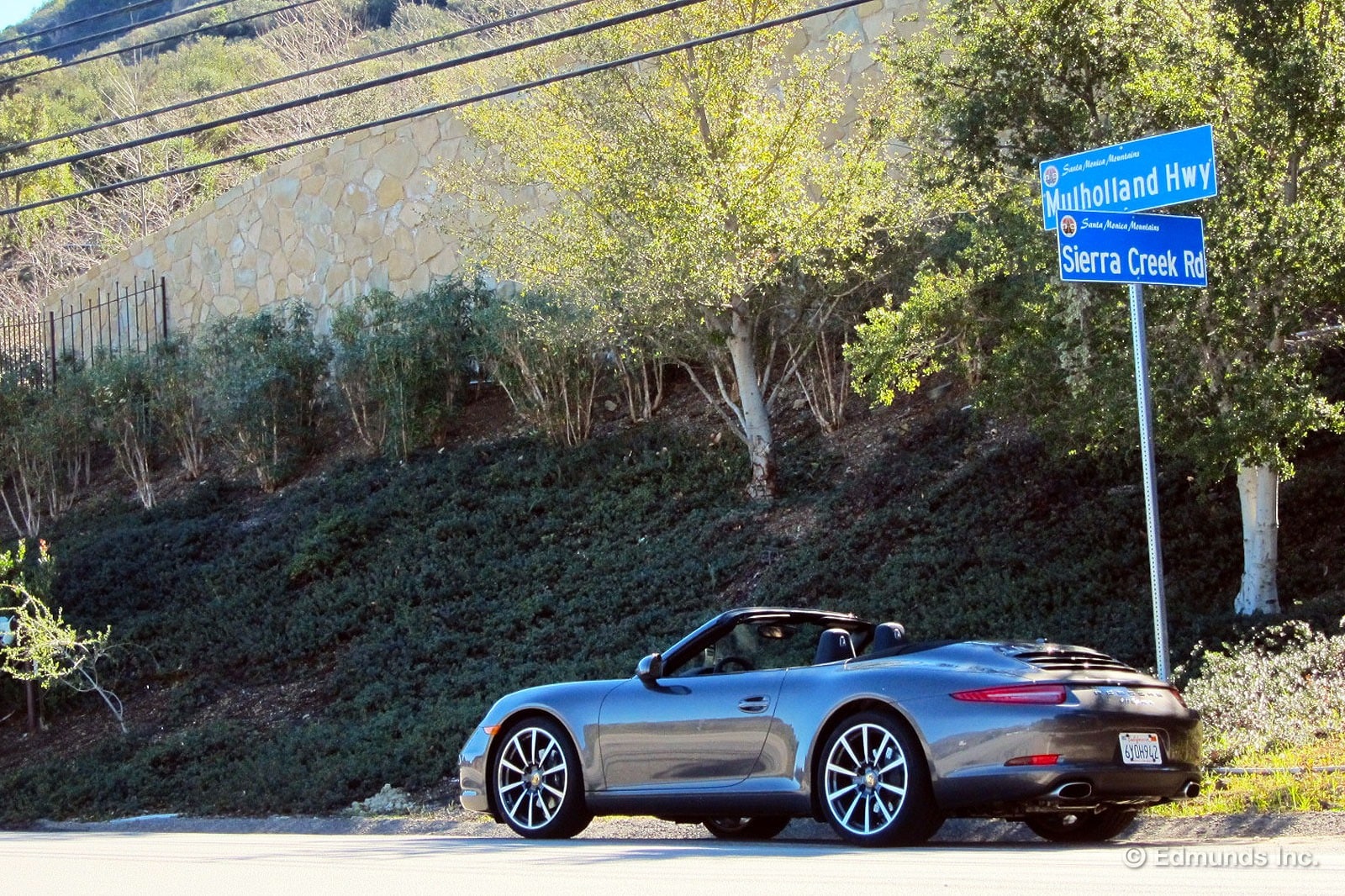
The fact that we bought a standard Porsche 911 convertible with an automatic transmission and heavy 20-inch wheels has caused a few of my hardcore pals to snicker at its girliness. They, of course, tell me we should have bought a 911 S Coupe with three pedals. You know, the "manly version" of Porsche's signature sports car.
A quick blast on the Mulholland Hwy., however, the most famous mountain road in the world, shuts them right up.
You see, our "girly" Porsche 911 is still stupid fast in the hills. In fact, it's faster in the hills than 99% of my friends are able to drive it. And it'll go faster than any of us should really drive on the street.
A few Sunday's ago I proved my point when a long-time friend began spouting about our 911 being a good car for his mom. "Maybe I'll buy it for her when you sell it off next December," he joked. "It'll be a good replacement for her Camry Solara."
He would soon regret it. I took a hard right off Pacific Coast Highway up Los Floras and began driving the 911 like Ferry intended. With the Porsche's PDK transmission in manual mode I was revving out each gear and making full use of its paddle shifters. Second and third gear mostly, with the occasional click up to fourth.
The harder you drive it the better it feels. Its 3.6-liter flat-six isn't a torque monster around town, but keep it over 3,500 rpm in the hills and the 911 storms from corner to corner, and with the top down the soundtrack from the rear mounted motor will give you goose bumps.
But it's the Porsche 911's brakes and grip that really impress. Overheating the brakes seems impossible and even rough patches in the pavement don't upset the chassis.
Few cars can run with a new 911 in the hills. Sure, there are cars with more power and more performance potential than our Porsche, but few allow the driver to access that potential so completely. I guarantee you that if a guy in a new Viper tried to keep up he'd be off the road almost immediately.
After a few miles my friend was already eating his words. And by the time we had reached the famous Mulholland Hwy., he was begging me to slow down.
On the way home I bought him an ice cold Zima to calm his nerves.
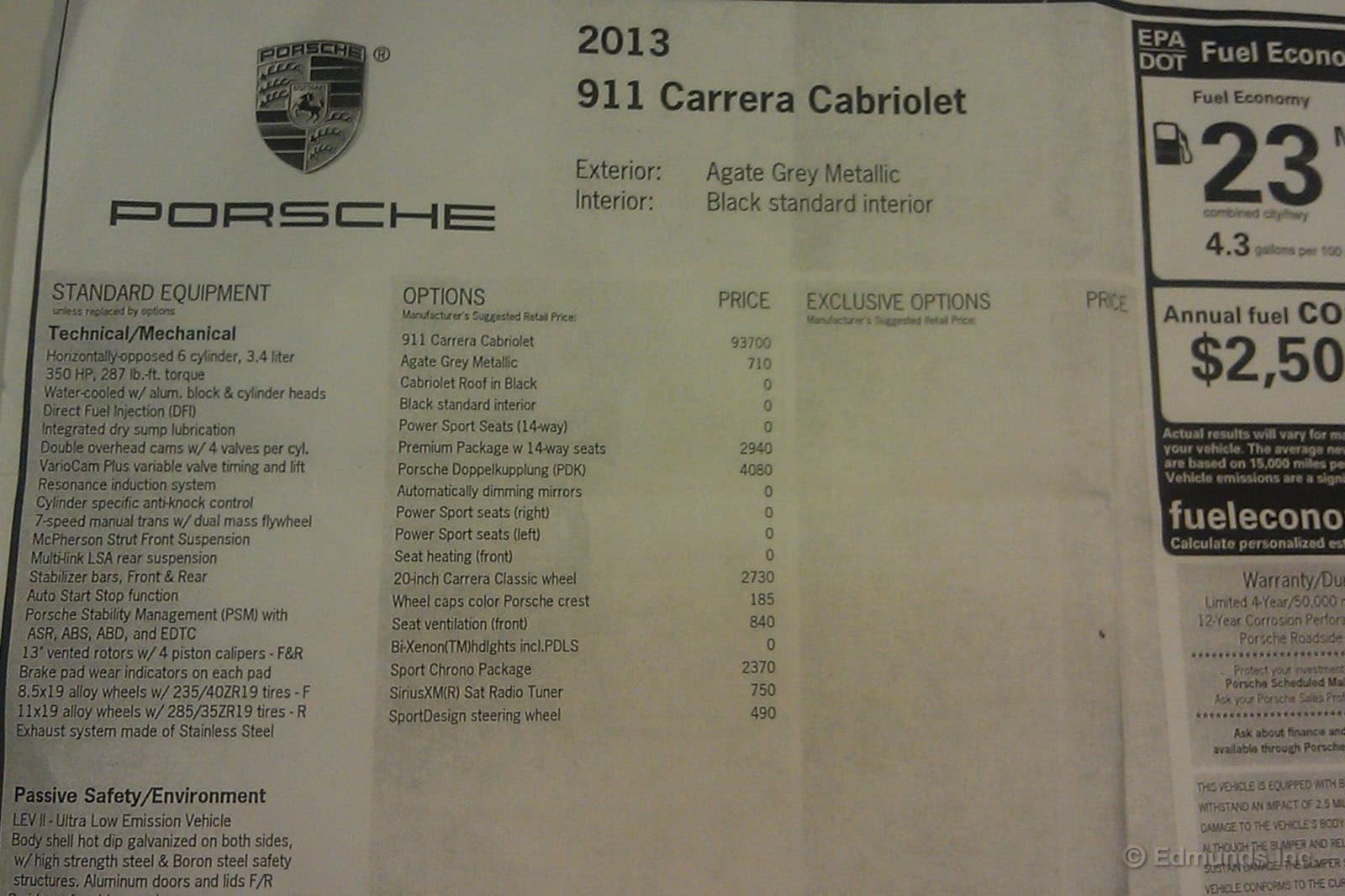
Satellite radio comes standard on a $14k Kia Rio. On a $94k base price (since increased to $96k) 2013 Porsche 911 Carrera cabrio, it's a $750 option. What?!
How can they get away with this? Because it's a Porsche 911. Well, that and something about "what the market will bear." Sadly for buyers and happily for Porsche, most folks looking at a new 911 probably aren't doing much comparison shopping. They want a 911.
The 911 enjoys the luxury of being a rather unique automotive icon, one that in addition to its classic styling provides a unique driving experience. In a world of overweight, electronically-insulated "driver's" cars, the light-on-its-feet and involving 911 is a breath of fresh air.
Big draws for me are its perfectly weighted, ultra-communicative steering and the eager engine's gruff yet powerful voice. You want one? I don't blame you. But if you happen to want it in "Agate Grey Metallic", prepare to pony up another $710.
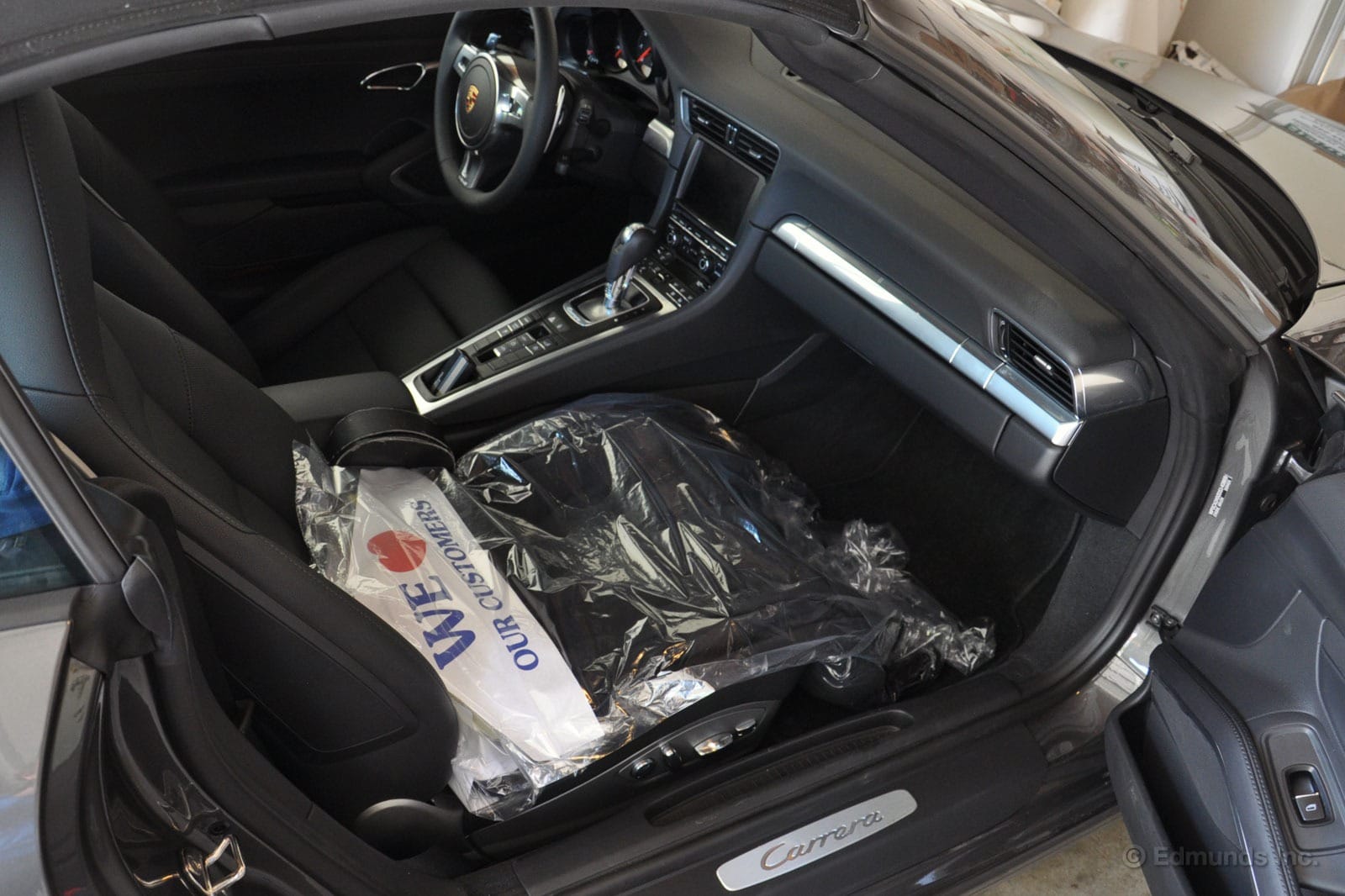
Before leaving on my road trip to New York in our 2013 Porsche 911, I had to run a really boring errand. One of the suits I'll be wearing at the 2013 New York Auto Show needed to be picked up from the dry cleaners.
I figured there'd be a hook or some piece of metal somewhere in our 911 Carrera Cabriolet on which to attach the hangers. But no, the 991-generation Porsche 911 is still a driver's car, not a servant's car.

I didn't have a passenger and it was a short trip, so I just piled my crisp, fresh clothes in the front-passenger seat. The backseat is another option, but I don't think the clothes would get any less wrinkled back there. Good thing it was a short trip home.

By now you already know we picked up a set of winter tires to drive our 2013 Porsche 911 to New York.
The install was easy. We showed up when the doors of our local shop, Stokes Tire Pros, opened. And since we were first in line, the tire exchange was done in no time.
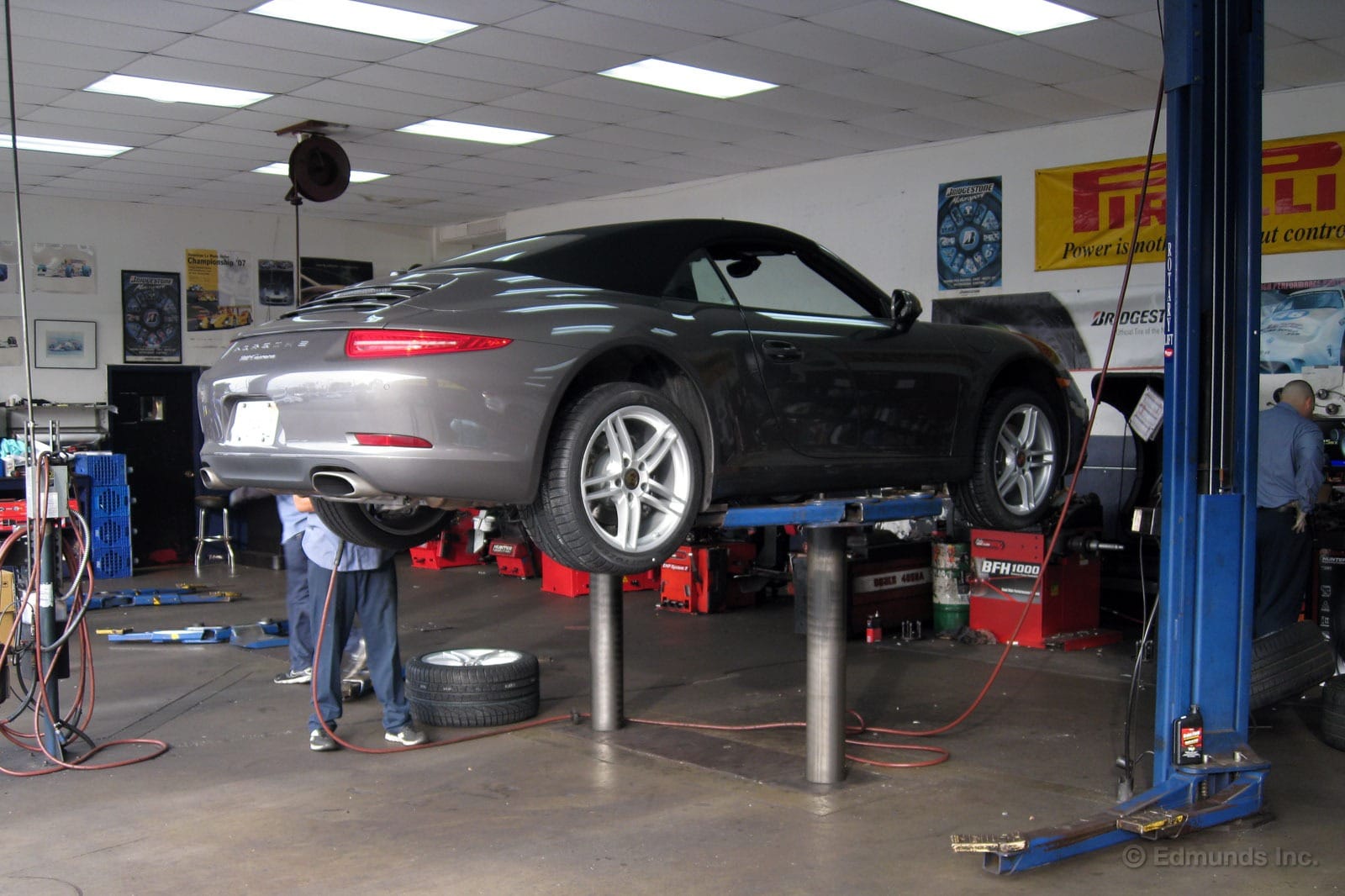

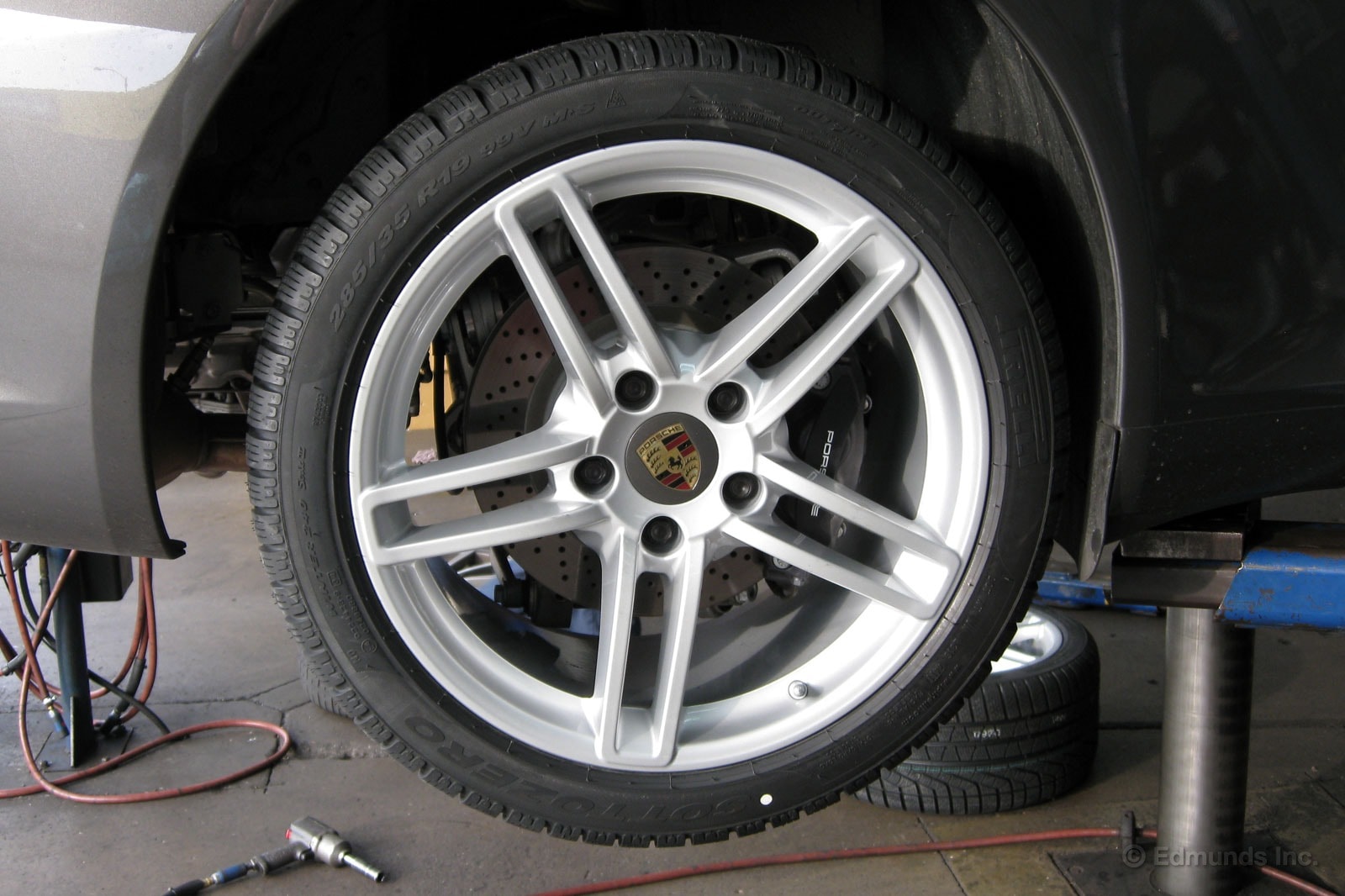
We spent $45 to balance the winter tires/wheels before installation. The 20s from the 911 will go into storage for now. We have until the car returns to decide whether or not we remount them, or get 19-inch tires to match our new wheels.
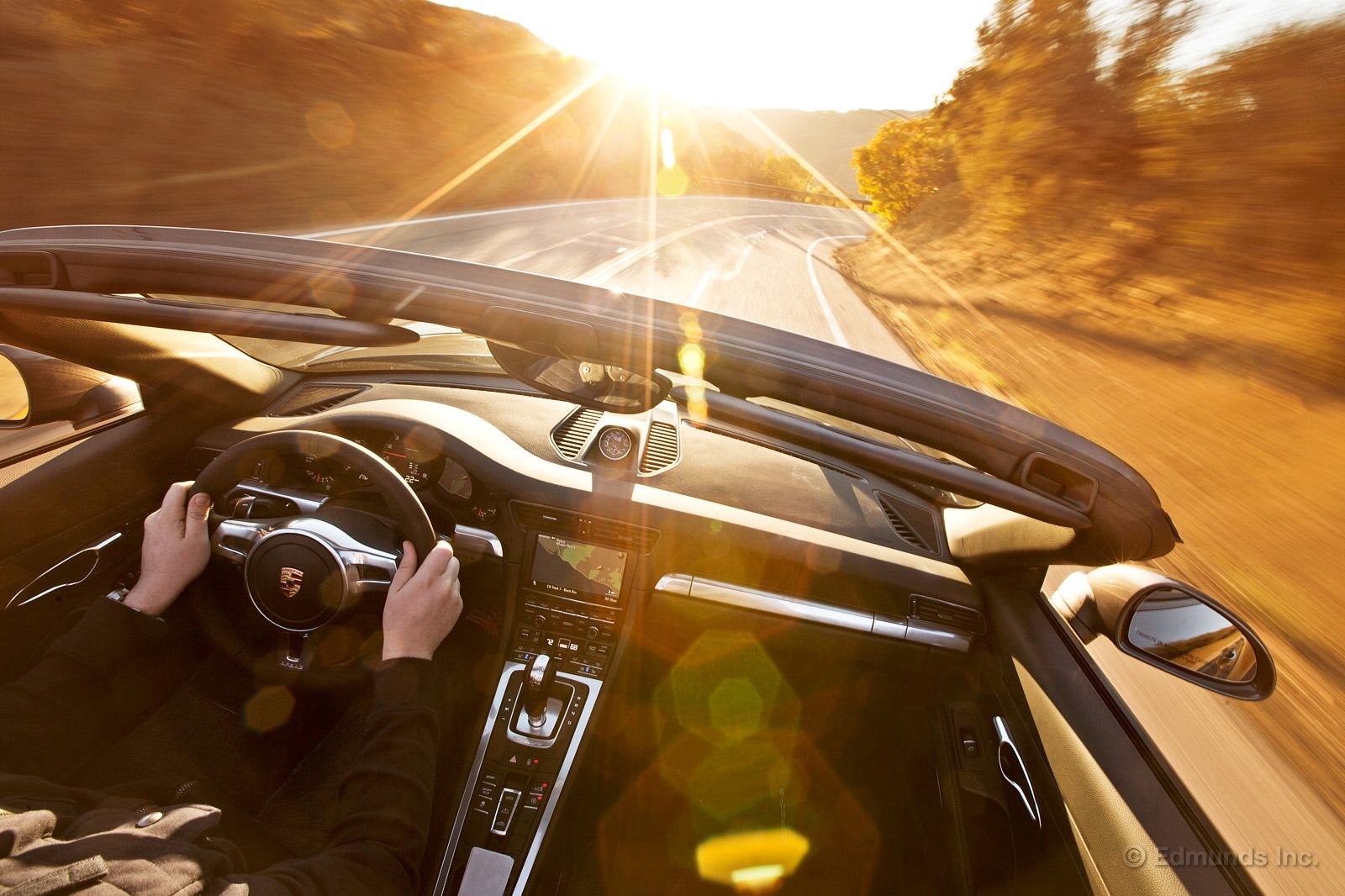
Our Porsche 911 Carrera Cabriolet packed on 6,225 miles in the month of March. A cross-country road trip helped its fuel economy numbers significantly.
Our Porsche 911 is still on the road so these numbers represent only part of its journey that fit into the 31 days of March.
We averaged 25.2 mpg with 18 fill-ups of 91-octane fuel. That took our lifetime average from 16.7 mpg to 22.7 mpg.
Worst Fill MPG: 12.4
Best Fill MPG: 31.1
Average Lifetime MPG: 22.7
EPA MPG Rating (City/Highway Combined): 20/28/23
Best Range: 494.3 miles
Current Odometer: 8,688 miles
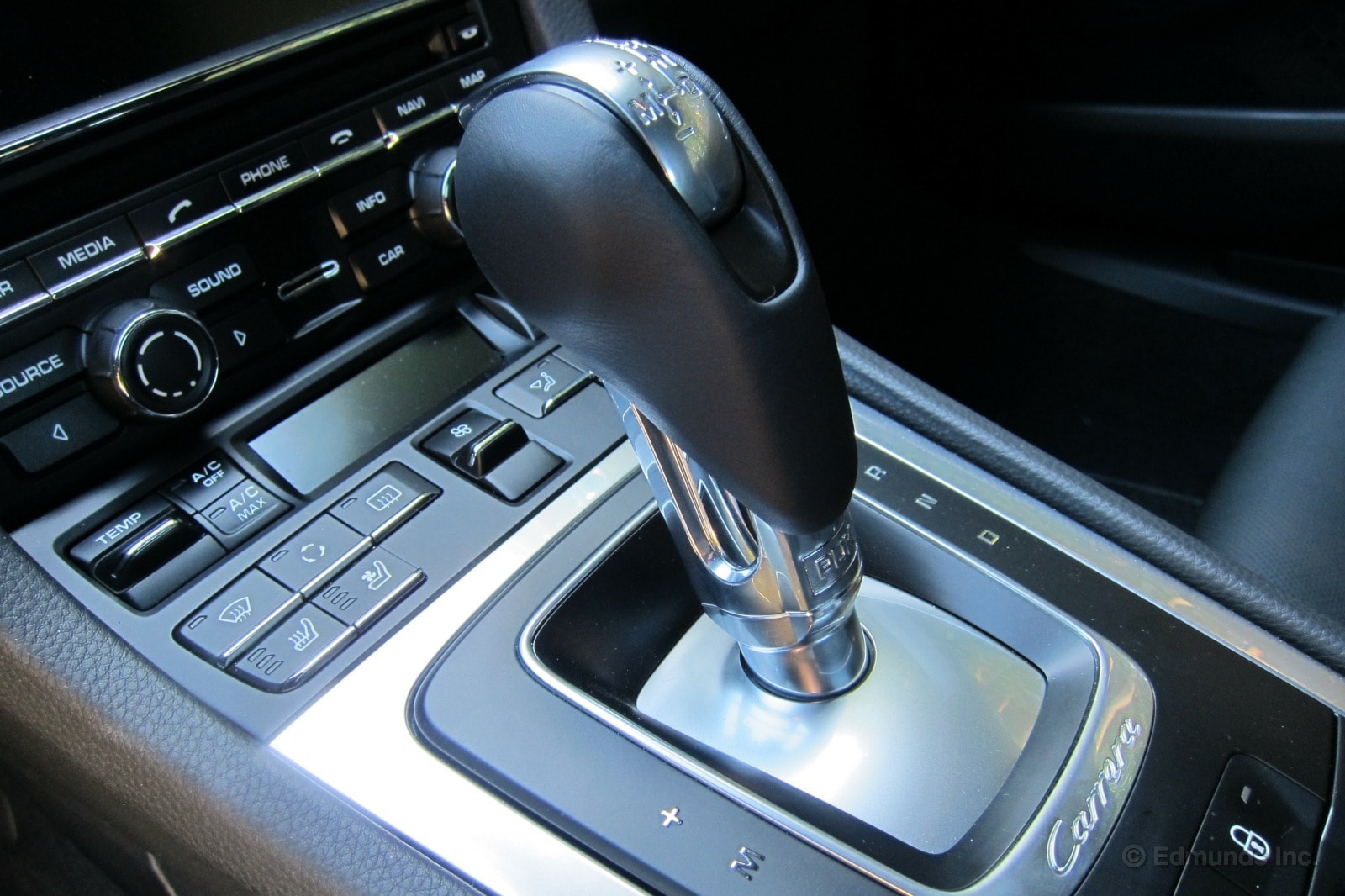
It's about time. With the 2014 Porsche 911 GT3, the company finally got around to configuring the console shifter in the correct orientation, where you push forward to downshift. Our long-term 2013 Porsche 911 Carrera Cabriolet's lever (pictured above) is all bass-ackwards, a layout about which you've no doubt heard us gripe.
And now that the company offers steering wheel paddles that command downshifts with the left one and upshifts with the right one, they've got both interfaces sorted out.
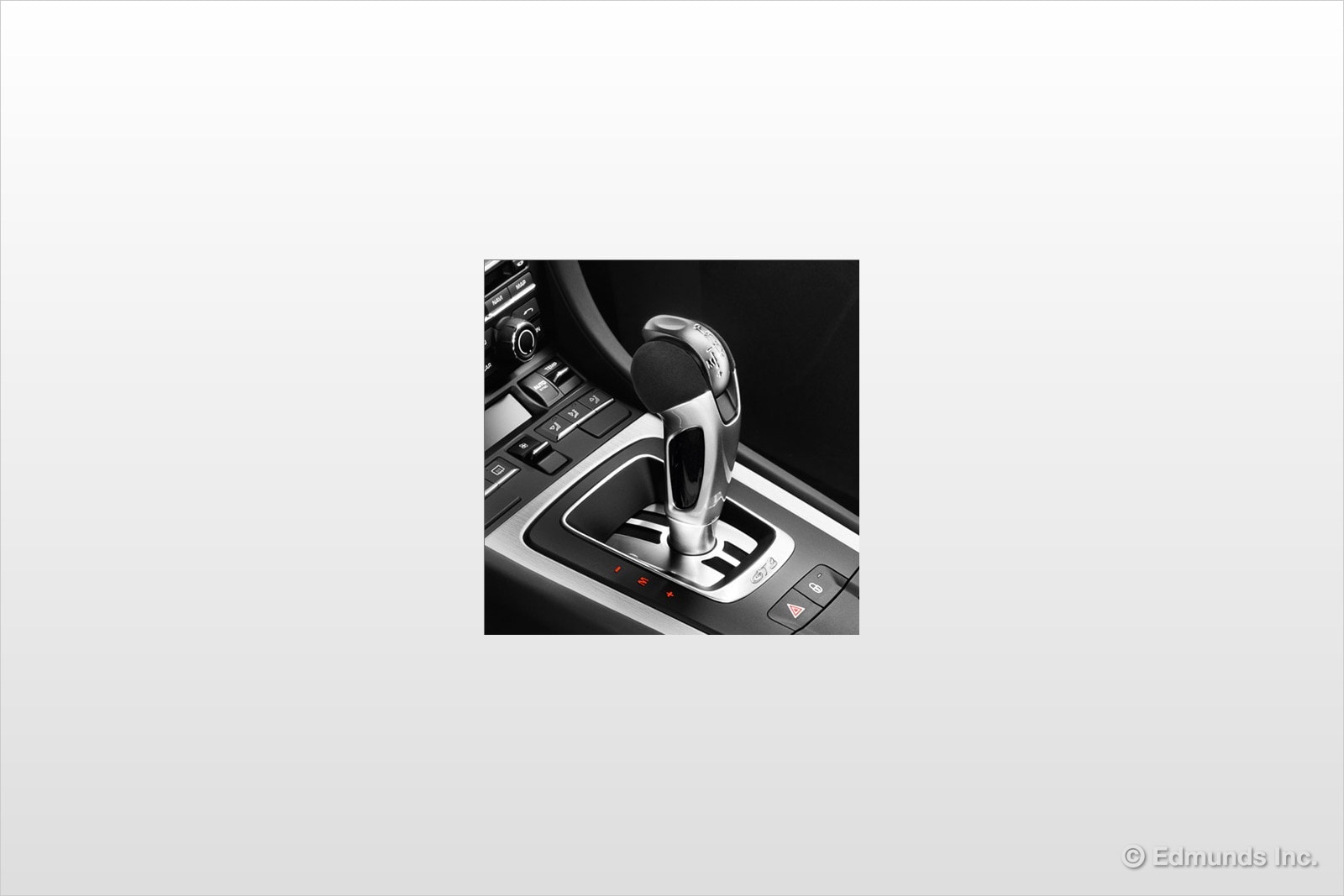
Time will tell whether the GT3's push-downshift layout (shown above) will trickle down into lesser 911 models.
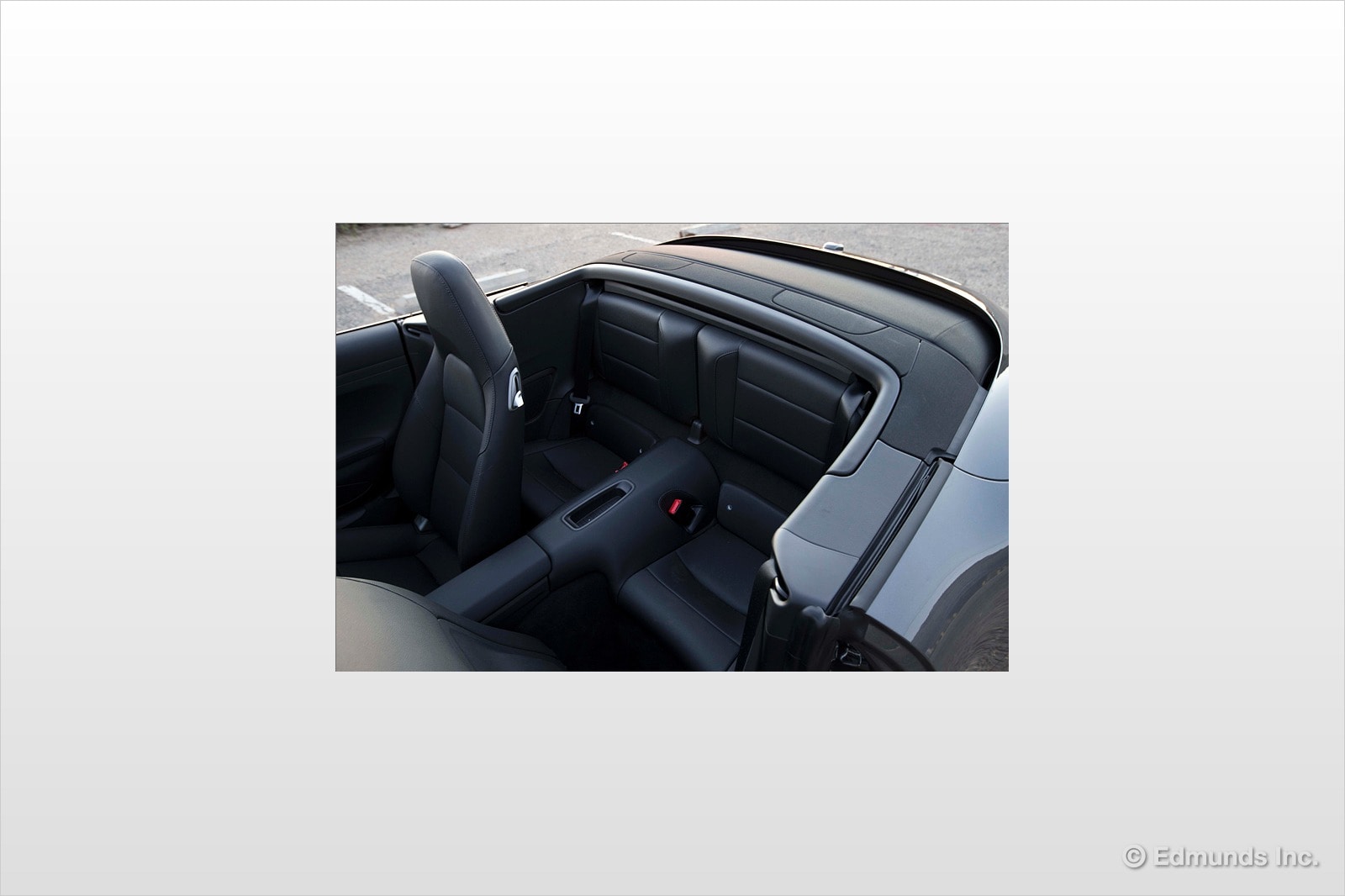
That's right, I took my dog Mya for a ride in our 2013 Porsche 911 Carrera Cabriolet. Every Sunday we go over to my brother's house to watch Walking Dead and, naturally, Mya has to come with us. But unfortunately for her we had the Porsche for the weekend. This would be her first time ever in a convertible.
And because of its low roof and her big head we decided to drive there with the top down. Fortunately, it was a fairly warm night so we were comfortable. The only one who didn't seem comfortable was Mya. Hit the jump to see a Vine video of how that looked.
Judging by how she fidgeted and looked unsure, I'm guessing she hated it. Keep in mind that Mya isn't like most dogs who like to stick their heads out the window. A regular dog would probably LOVE it back there with the top down. So many smells!
We had considered deploying the windblocker but then realized that it prevented her from sitting up, making her look even sadder.
In any case, this leads me to believe that the only being who would be comfortable in that backseat is a tiny human or a toy dog. I wonder how she'd do on a sunny day, though.

Days ago, I told you the long-term 2013 Porsche 911 and I were on the road to Midtown Manhattan for the 2013 New York Auto Show. Well, we made it there. Although, as with most road trips, a few things didn't go according to plan. But the Porsche is alive and well, and if you follow @Mike_Magrath on Twitter, you also know that it escaped the city and went on to have more adventures on the journey back to the West Coast.
Now, we bring you the story of the 6,000-mile road trip in our 991-generation 911 Carrera Cabriolet. I'll tell the first half. Mike Magrath will tell the second half. At the end, we'll total up the miles, gallons, mpg and dollars spent on premium fuel, and ask you to vote on which editor you'd rather ride with on a cross-country road trip. Kidding. But I guarantee you will like one of us less after you read about this trip.
Here's how it started.
It's Saturday morning and I'm supposed to leave the house at 7 a.m. sharp. My destination for the night is 973 miles away in Salida, Colorado, at the bottom of the Monarch Pass. Most of the drive will be on fast sections of Interstates 15 and 70, but U.S. 50 through Colorado will be slower and snow is in the forecast.
But I wake up feeling under the weather and convince myself that a couple more hours of sleep is a good idea. Because of the dual-purpose nature of this trip, I can't just throw jeans and t-shirts into a duffel bag. I have to bring suits for the auto show. So my 24-inch rollaboard bag is in its expanded state, and it just fits into the 911's frunk. Getting it in and out of the frunk at each nightly stop turns out to be a mini-ordeal, as I'm determined to avoid both scratching the car's paint and throwing out my back. But whatever, I'll deal, because it's not like I want to ride with the bag in the passenger seat.
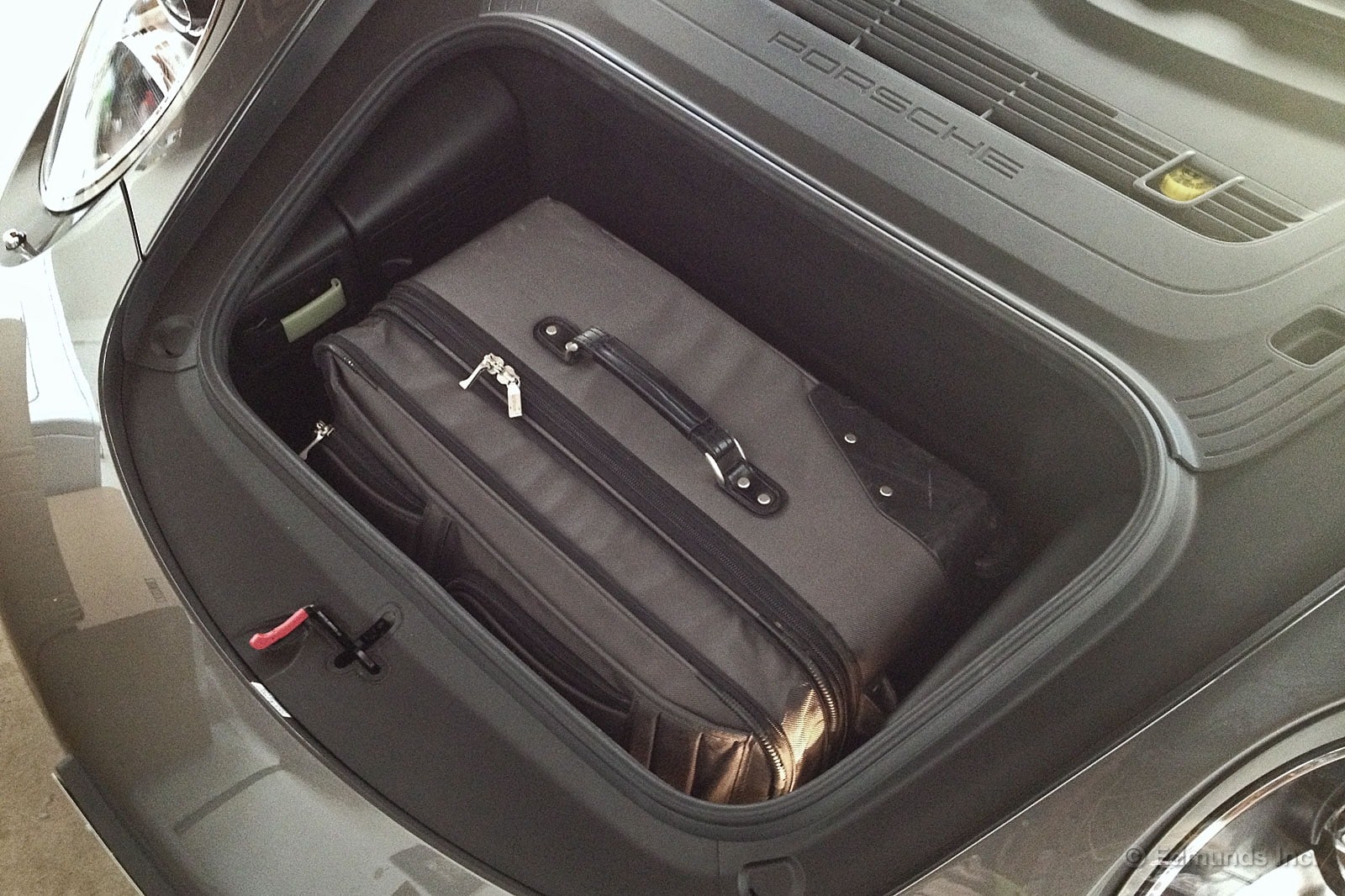
Finally, I'm on my way at 10:42 a.m. Twenty minutes in, I realize I've forgotten to get gas and pack the radar detector. The former is no problem, because the 911 has a 16.9-gallon fuel tank (plus a reserve tank) and a ton of range. I fill up in Baker, California, for peace of mind through the desert, and don't stop again for 91 octane until I'm in Richfield, Utah. Not having the radar detector is a disappointment, but there's no time to go back. I'll just have to drive smart and pay attention for the next three-and-a-half days. Which I should probably be doing anyway, right?
Right away, our 2013 911 Carrera Cabriolet feels like it's going to be a wonderful road trip car. For starters, it's very quiet with the top up. Anecdotally, it's the quietest soft-top convertible I've driven in the last five years. And it's quieter than a lot of cars with fixed roofs, with our long-term Toyota Prius C and Scion FR-S as obvious and convenient examples.
The other thing I notice is the 911's throttle response. Wow, is it sharp. Come to think of it, this is my first time in a 991-generation 911, and I'm certainly not disappointed by the directed-injected, 3.4-liter horizontally-opposed six-cylinder mounted behind me. This is a great engine with a fantastic mid-range. It's a very effective tool for getting around slower traffic and it makes good sounds when you're accelerating with commitment. This is why you choose a Porsche 911, regardless of body style.
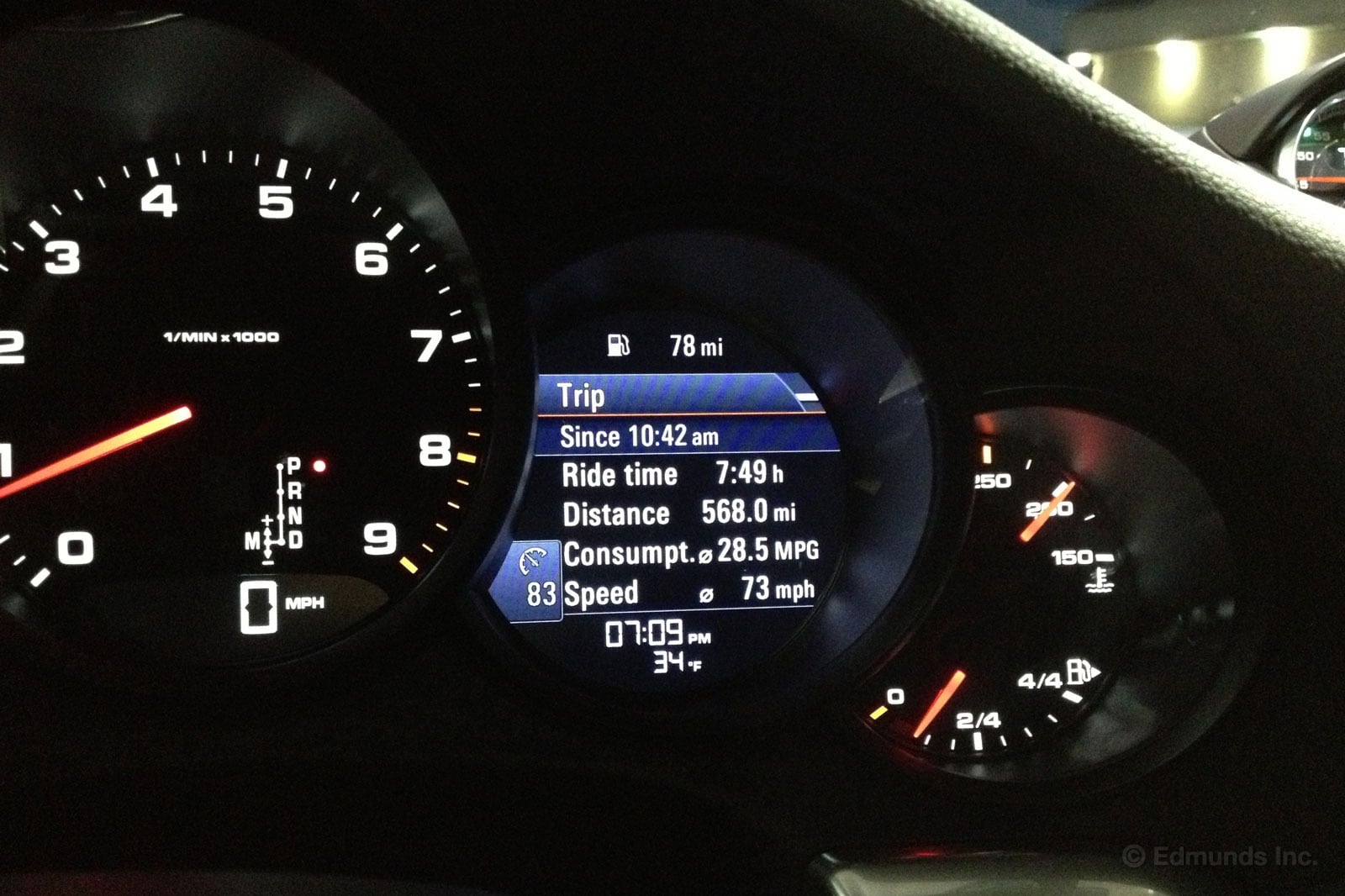
The instrumentation in our Porsche is a blend of old and new. The large analog tachometer in the center makes you feel right at home if you've ever driven a 911 before, while the trip computer on the right is totally modern. It can be an auxiliary navigation or audio display if you want or you can look at this trip history display, which tracks your driving time and doesn't reset when you stop for food or fuel (based on my experience during this trip, it resets only when you park the 911 for a sustained period of time, overnight in my case).
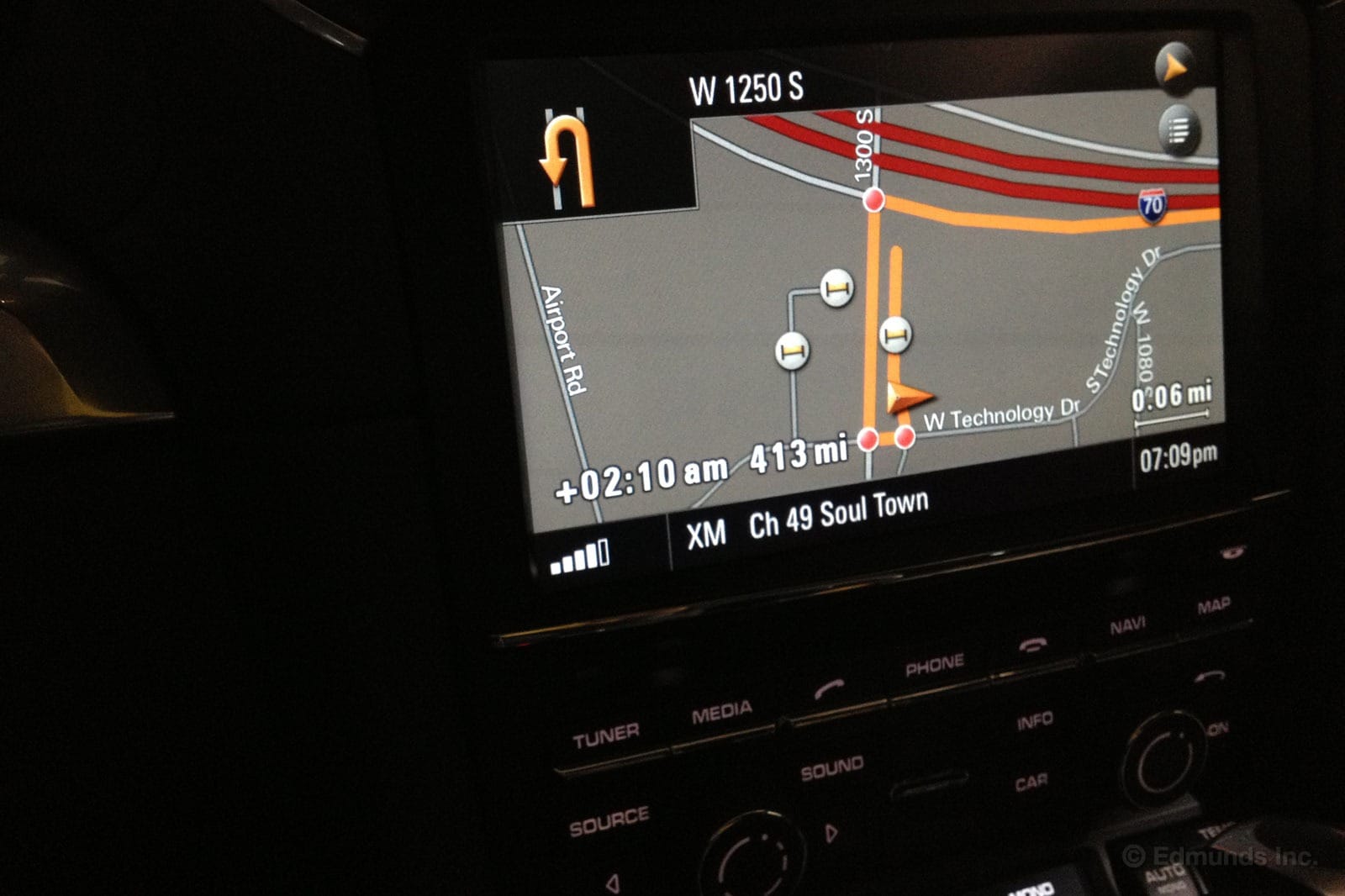
I feel encouraged seeing my average speed and accumulating mileage, but then I look over at the navigation screen and notice how far I still have to go. And what's with the estimated arrival time at 2:10 a.m. Maybe the car is taking into account the switch to mountain time? Nope. The clocks haven't changed. I really am looking at rolling into the Salida Super 8 at 3 a.m. Surely, it won't take me that many hours to get through Colorado. The Porsche must be wrong.
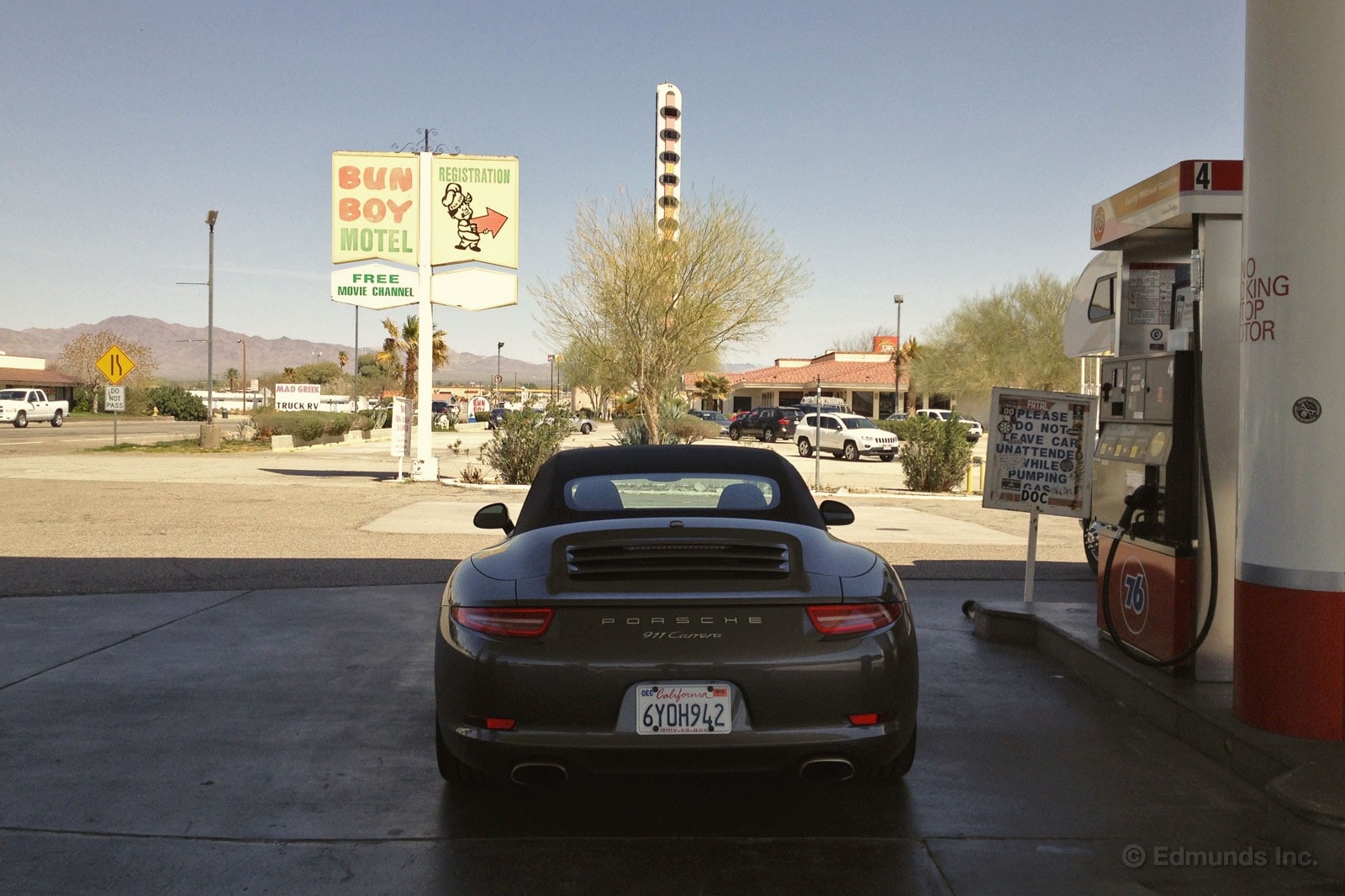
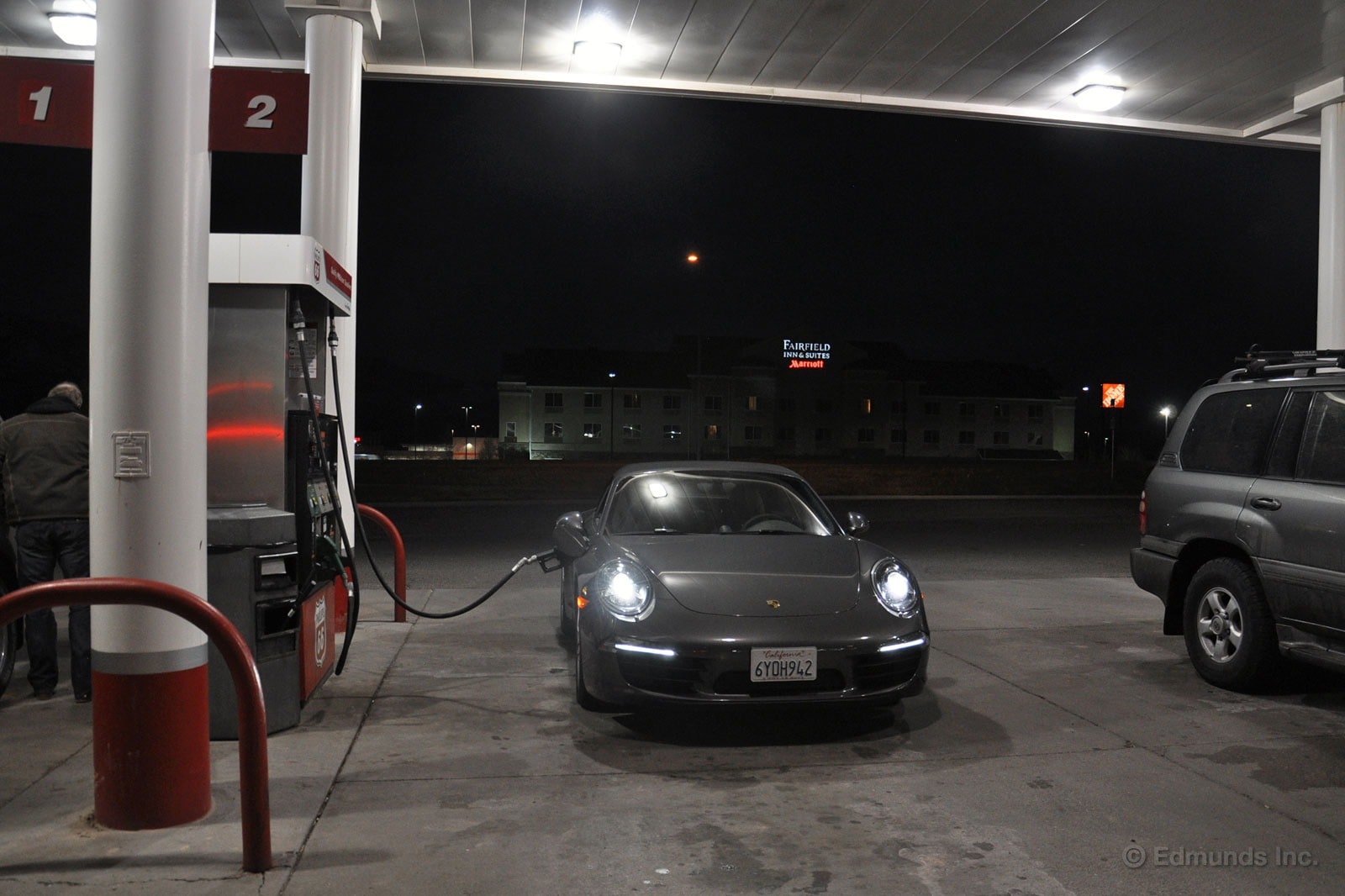
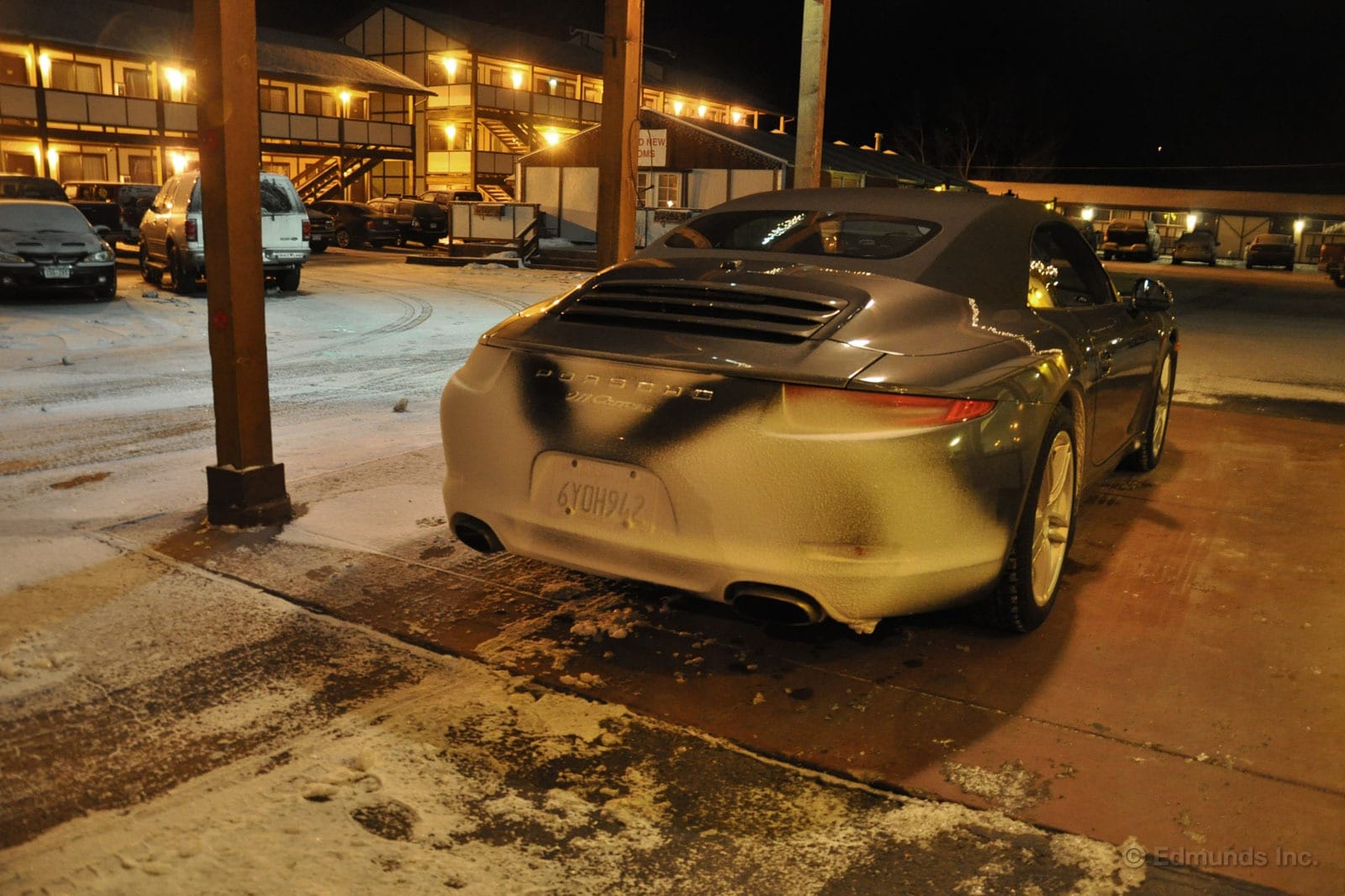
If you didn't read Part 1 of this 2013 Porsche 911 Goes to New York series, let me catch you up: It is 8:49 p.m. mountain time and I am 568 miles into a 973-mile drive from L.A. to Salida, Colorado. I'm in eastern Utah and I'm convinced that the 911's 3:10 a.m. (adjusted for mountain time) arrival estimate is way off. At least that's what I tell myself.
Eventually, I arrive in Grand Junction, Colorado, and exit Interstate 70 in favor of the far more scenic U.S. Highway 50. I know it's very scenic, because I've read about this highway, and occasionally during this drive, I catch sight of some really tall snow-covered mountains when the moon hits them just right. I can't believe how many Fourteeners this state has. In California, we have five (my favorite being Mt. Shasta). In Colorado, they have 25. The reality, though, is that it is completely dark, and I totally miss out on some cathartic moments as I'm unable to take in the magnificence. (Already I'm lobbying my spouse for a road trip on U.S. 50 this summer. He'll come around.)
Also, it doesn't take long to understand why the Porsche's nav system has decided it will take me so long to get to Salida. First, there are a lot of speed traps. Getting through Grand Junction alone takes at least a half hour, as U.S. 50 is a major surface street here, and littered with traffic lights and low speed limits. It's maddening for the hurried traveler (tip: don't be in a hurry). Second, within an hour or two, I'm aware that we're gaining elevation. It has started to snow and the temperature is dropping fast.
This is also about when U.S. 50 gets really remote and quite twisty. It would be great fun in drier, milder weather with the 911's standard-issue summer tires, especially since the 3.4-liter boxer six-cylinder is barely fazed by the increasing altitude. I notice I'm carrying a few more revs, yes, but it still feels very potent.
But right now there's a layer of snow on the road and it's about 10 degrees Fahrenheit. I turn off my Baseball Tonight podcast and focus on driving well. The 235/40R19 (front) and 285/30R19 (rear) Pirelli Sottozero Serie II snow tires we put on prove their worth here. There's plenty of grip, and the only time I need to do any extra steering is when I hit a patch of straight-up ice. Which happens a few times like I figured it would. Overall, though, I feel confident and relaxed, or as relaxed as you can be on a narrow, slippery mountain road where no one would find me for days if I went off.
The real challenge of the night, though, comes right before I get to Salida. I think I've heard of Monarch Pass, but until now, I really had no idea it was 11,312 feet at its summit. Also, it is -1 degrees F. at the summit, and on this evening, chains are required on all commercial vehicles driving the pass. But there's no such restriction for passenger cars, so off we go.
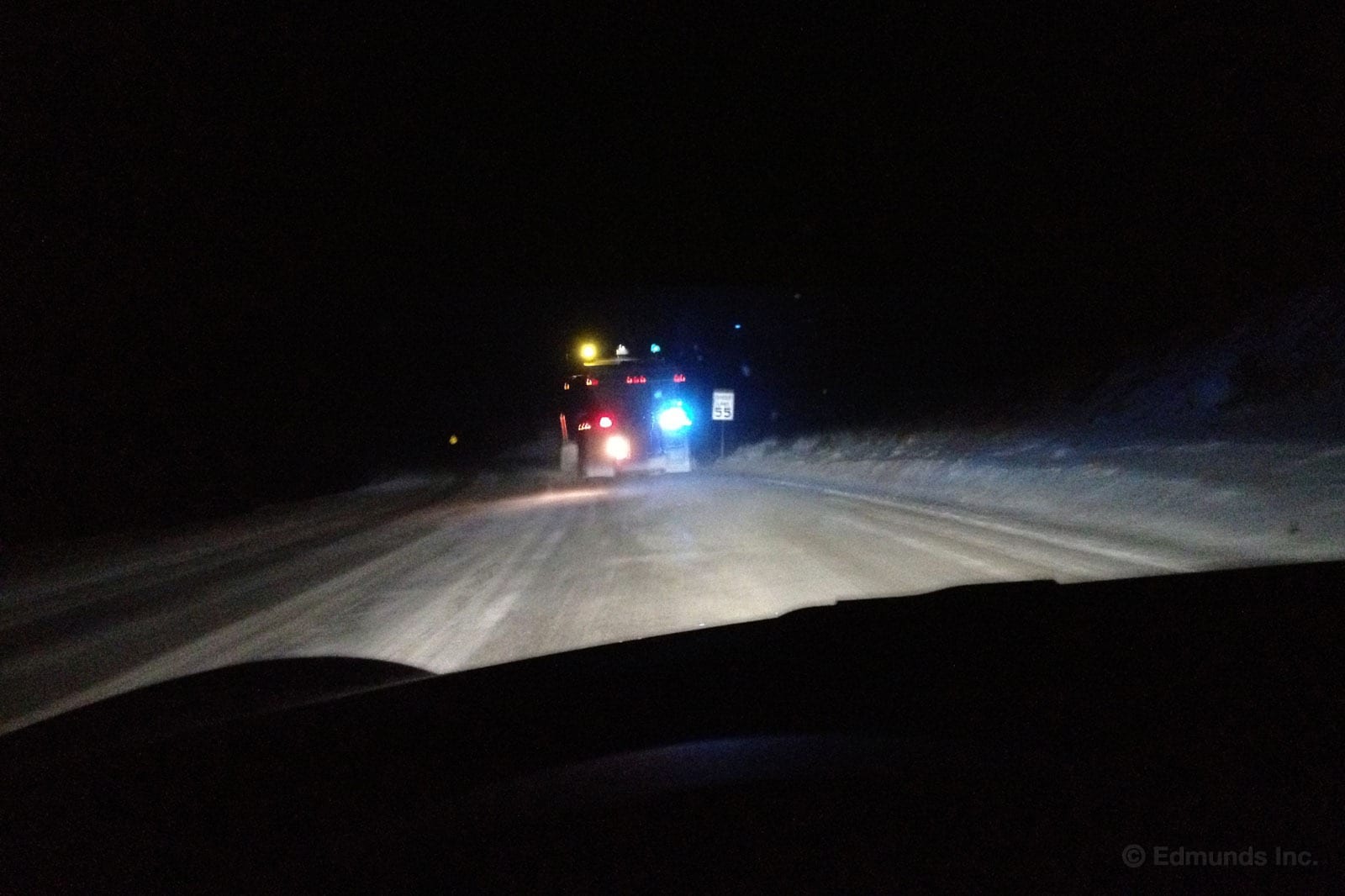
Soon, I encounter a plow and decide to pass in what I believe is the passing lane. Honestly, it's hard to see the lines, and for most of this stretch of U.S. 50, I'm just guessing at where my lane should be and assuming drivers coming the opposite way will do the same. I pass four more plows headed west before I arrive in Salida, which is at the bottom of the pass. The 911 does fine here, too, even at the summit, as its snow tires track nicely through the layer of snow that wants to freeze as soon as it hits the ground. I'm being careful, of course, keeping my pedal and steering inputs as smooth as smooth can be.
I really want to stop at take pictures when I catch sight of the Monarch summit marker signs. But it's dark and slick, and with only two driven wheels on our 911, I'm afraid of getting stuck in snow piled up on the shoulder. Nor would I like to get hit by another car distracted by the sight of a 991-generation 911 convertible on the side of the road. So I have no great photos of this adventure, which is all the more reason to repeat the drive this summer.
Apart from the effective winter tires, our 2013 911 Carrera Cabriolet's adaptive bi-xenon headlights really make the evening for me. They are bright with a nice, even spread of light even on the low-beam settings. The high-beams are great, too, especially during the portions of U.S. 50, where I drive for 20 minutes without seeing another car. I use them to help me figure what line to take through the turns.
Finally, I arrive at the Super 8 approximately 16 hours after I left my house in L.A. The nav system was right. It's about 3 a.m. It's so late the night desk clerk taped my key packed to the office door. I don't think I'll make breakfast.
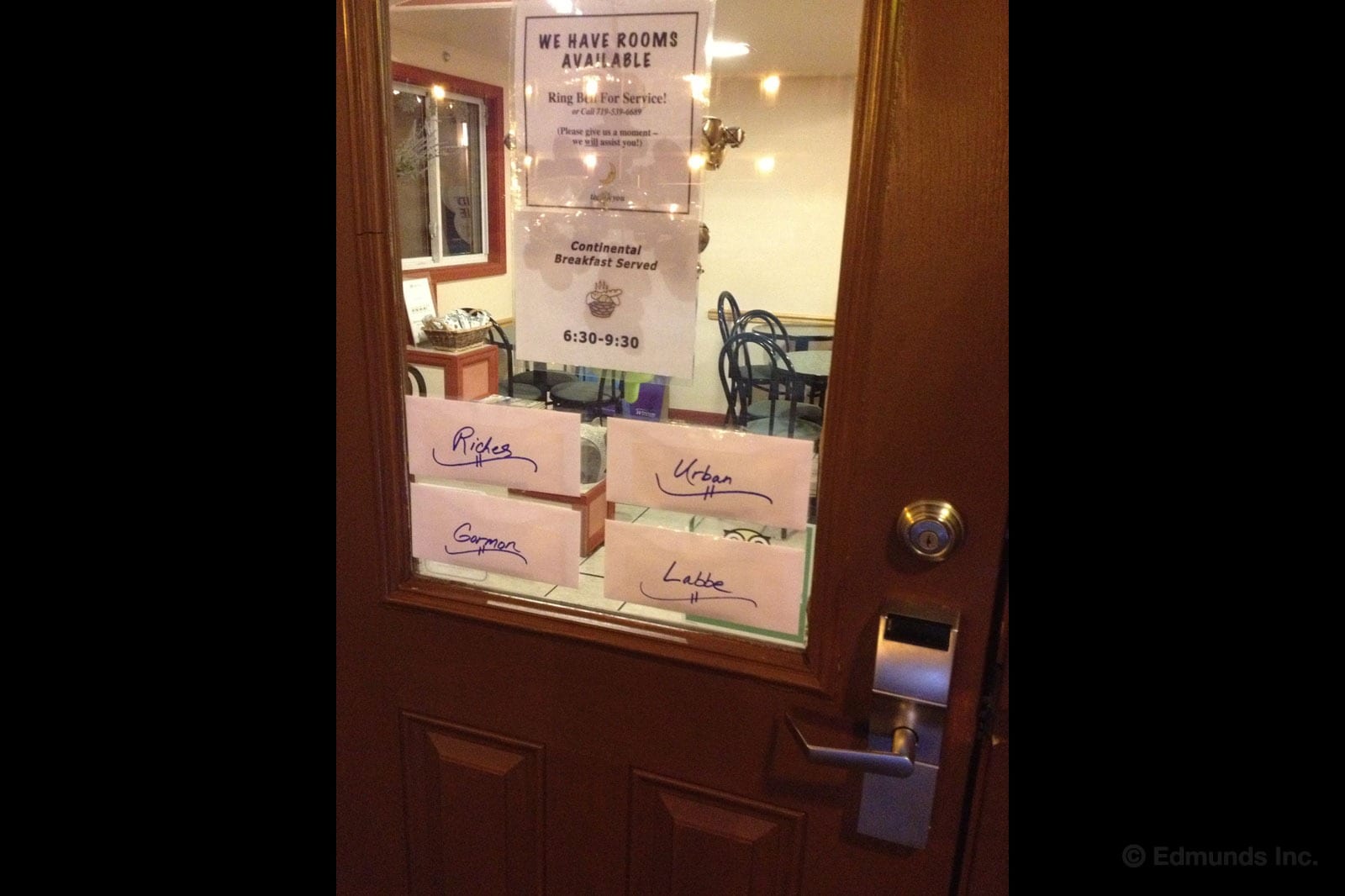
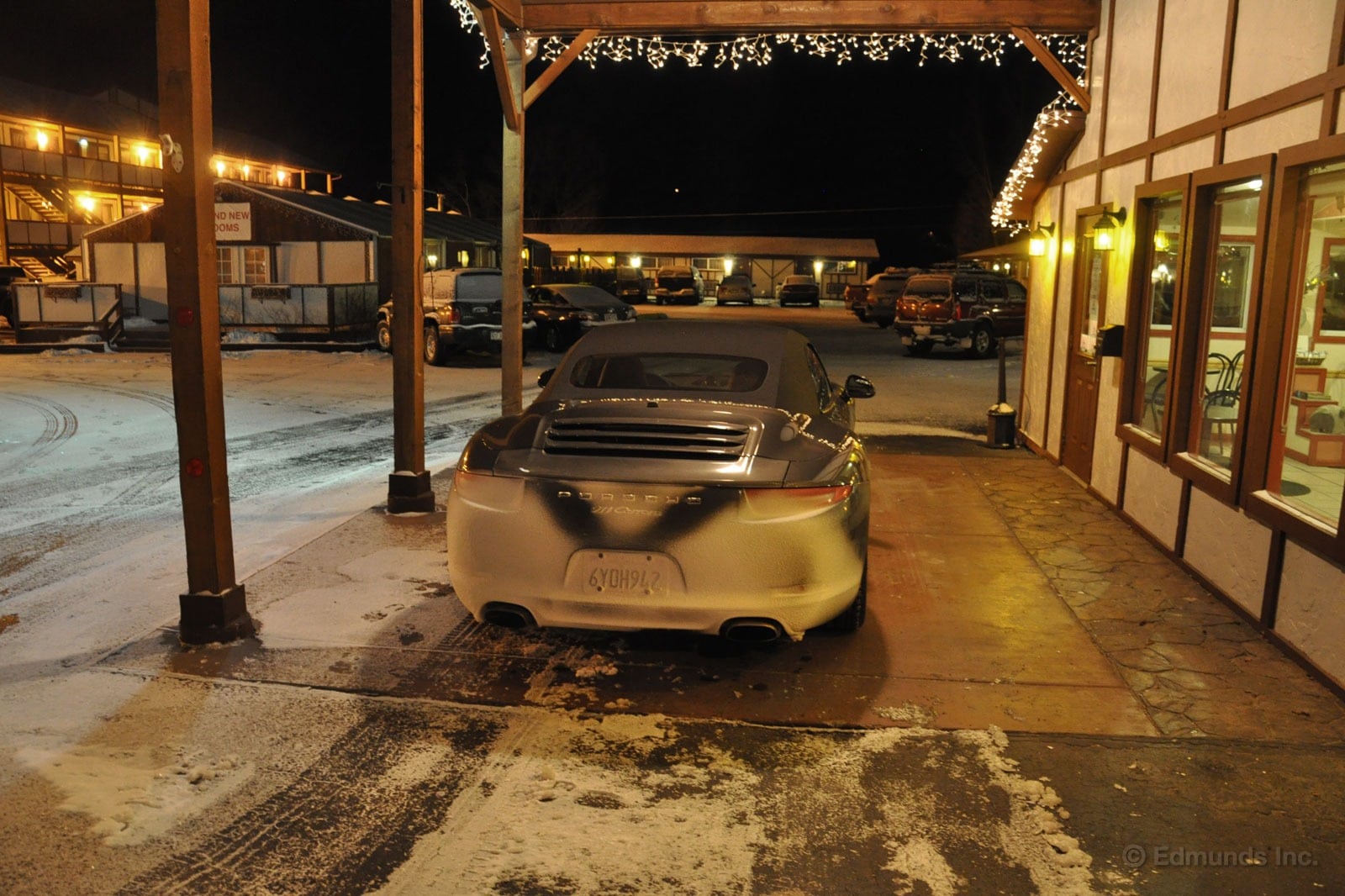
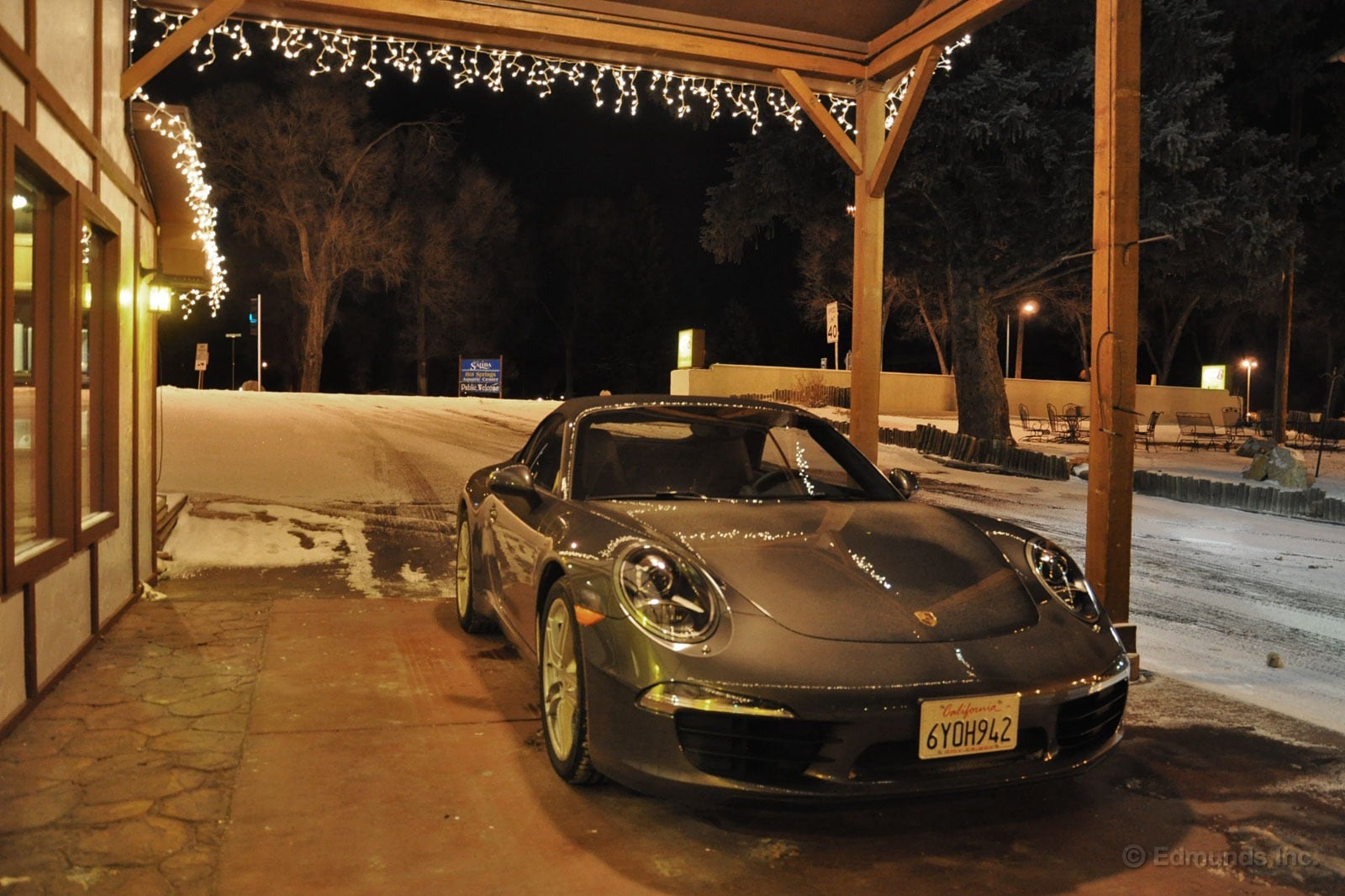
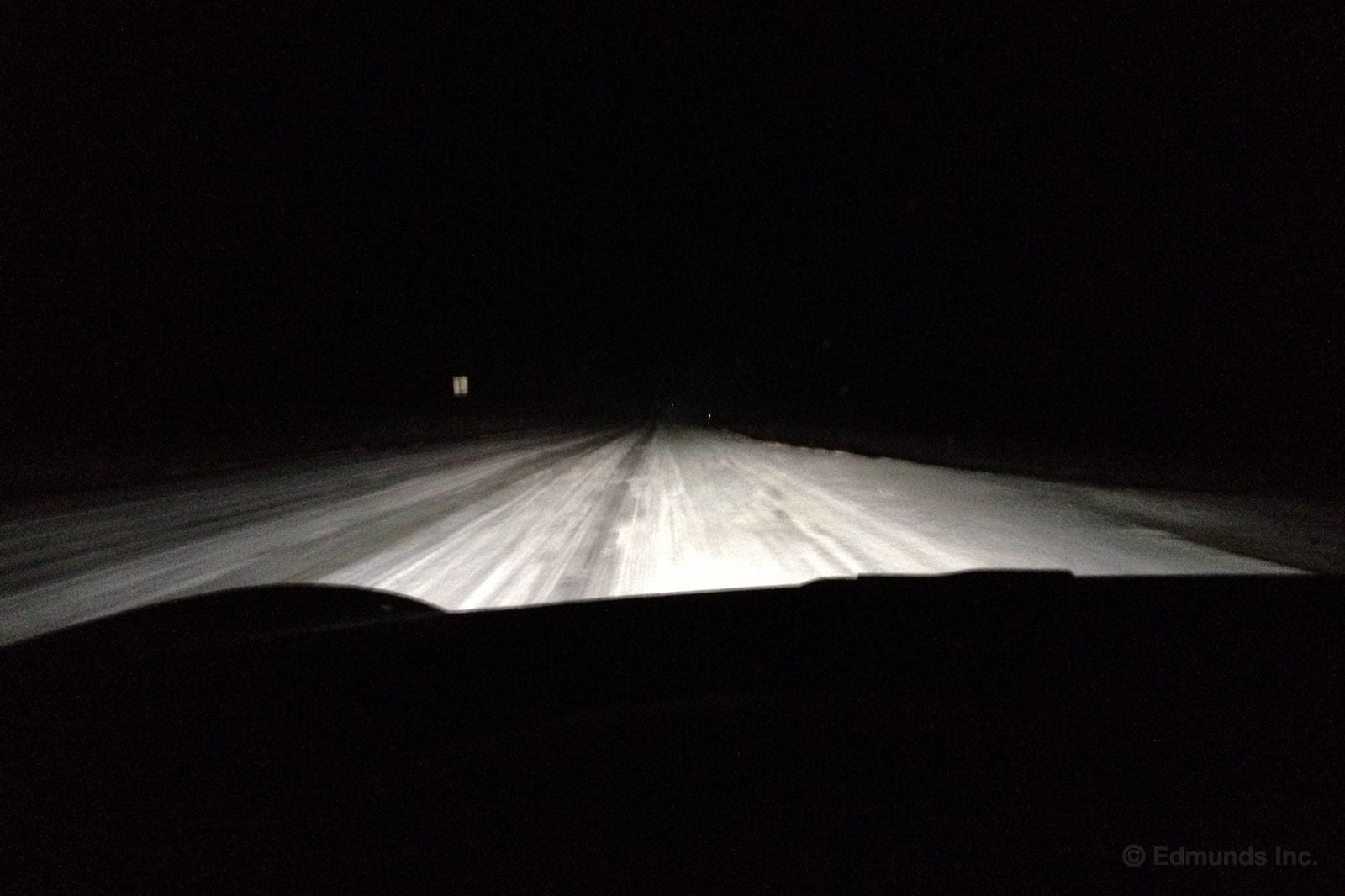
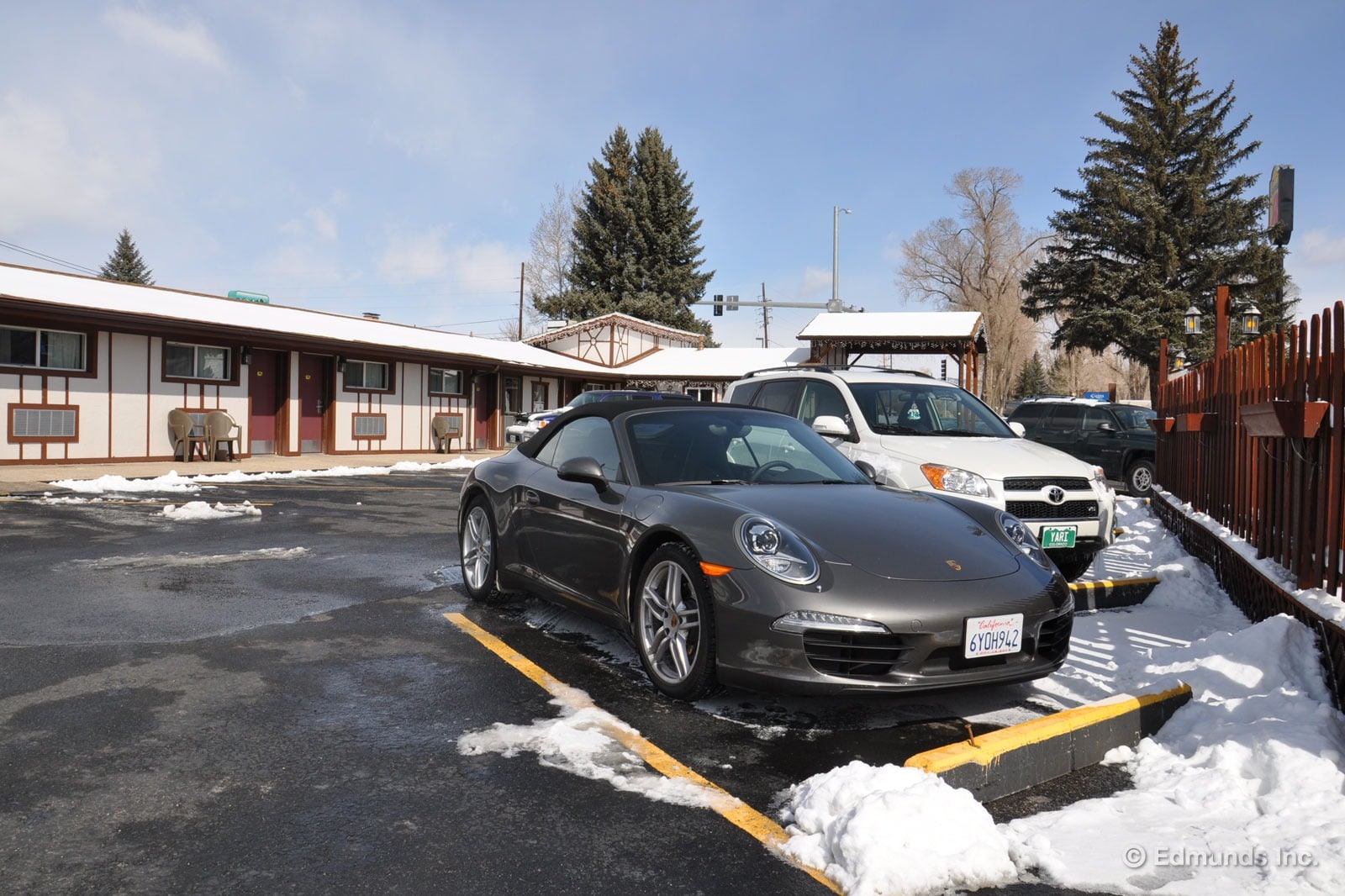
After a really long day and night behind the wheel of our 2013 Porsche 911 Carrera Cabriolet, I've arrived late at my motel in Salida, Colorado, a beautiful little mountain town at the bottom of the Monarch Pass.
Also, for those who have expressed misgivings about the wisdom of parking a 991-generation Porsche 911 at a Super 8: I've stayed in a fair amount of Super 8s over the years, and this one might be the best. It's freshly renovated, and my room is very tidy and decorated with photographs of the local mountains. I'd stay here again.
As predicted, I oversleep and miss breakfast. It's a sunny morning and much of the snow in the lot has melted, though honestly, I don't see how, as it's not even 20 degrees when I step outside. The motel is right there on U.S. 50 (or Rainbow Boulevard within the town limits), so after refueling I just continue east. The highest mountains are behind me, but there's still plenty of alpine scenery and it turns out the highway runs parallel to the meandering Arkansas River all the way until the latter empties into a reservoir in Pueblo.
The plows cleared most of U.S. 50 overnight, and the few remaining slippery spots are no big deal for our Porsche, thanks to its Pirelli snow tires. The ride is also quite respectable (not exactly compliant, but tolerably comfortable) for a sports car with the 19-inch wheel/tire package. If I bought a 911 and still lived in Southern California, I'd special-order a car with the 19s rather than buying one with 20s right off the lot. I'm older now. Ride quality matters to me.
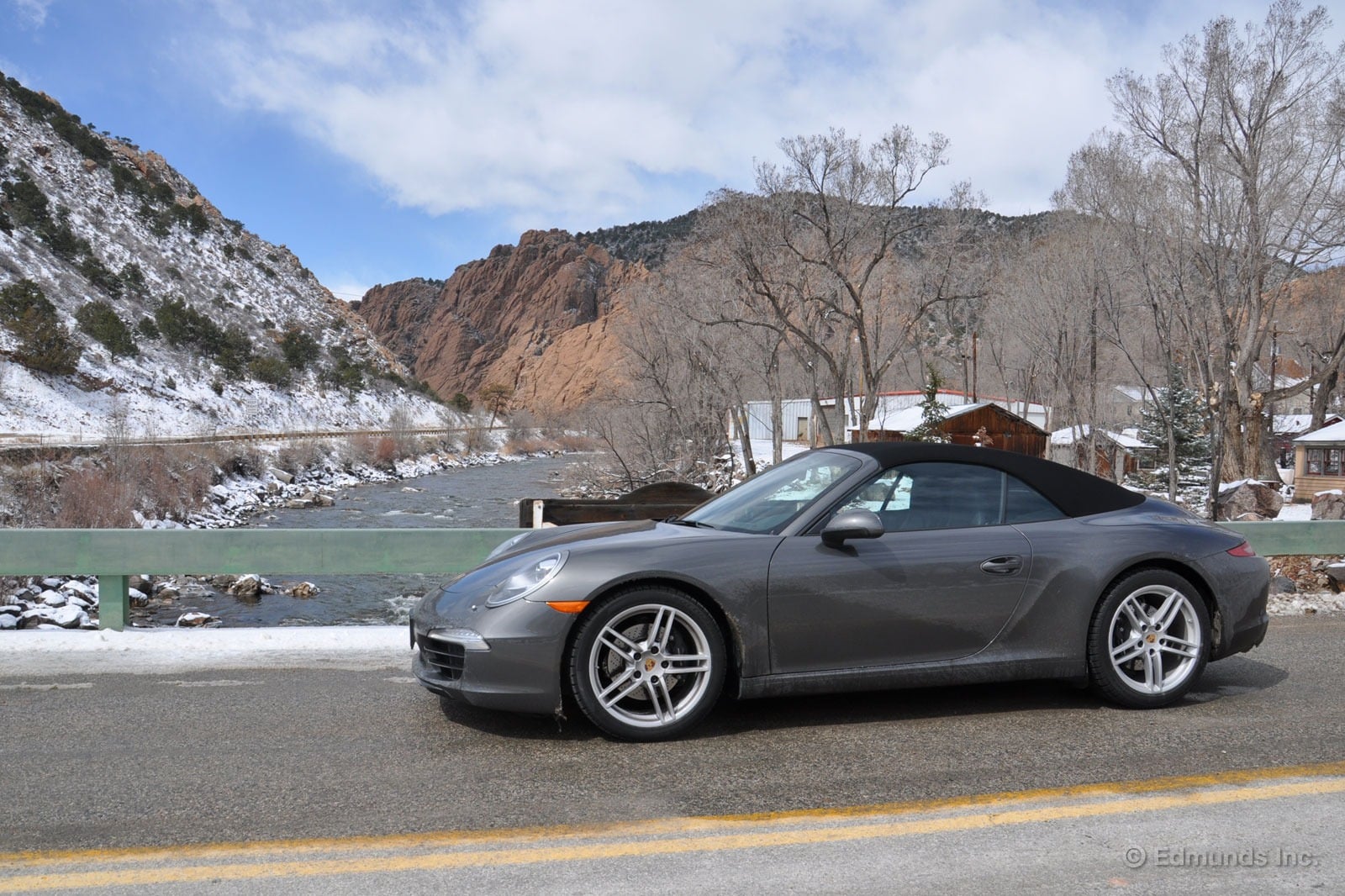
Actually, it really matters to me today, because yesterday's long haul has sapped my strength and I'm really dragging by the time I buy my first cup of coffee. Also, it takes an eternity to get out of Colorado. Instead of following Interstate 25 back to I-70, I take it only to U.S. 24, which meets up with 70 closer to the Kansas state line. This route is quicker, says the nav system, but I don't think it knows about all the traffic lights and state troopers on U.S. 24. And the road isn't even that pretty.
Finally, I'm back on I-70 hoping to make it to St. Louis for the night. The exit for Flagler, Colorado, promises a Subway, but strangely, it's not right off the highway. I motor about a half-mile up an unplowed road, passing a closed '50s-themed diner and an abandoned liquor store before finding the Subway next to an open liquor store. Without those snow tires, this would have been a much dicier journey.
I eat my six-inch tuna on honey oat in solitude. It's 3 o'clock and whatever constitutes a lunchtime rush in Flagler has long since passed. I realize St. Louis just isn't a realistic goal for the day and decide to stop in Kansas City (on the Missouri side) instead.
Kansas always drives bigger than it looks, though, and I finally hit the wall in Topeka. I'm tired, somewhat ill, and apparently in such bad shape that not even a drive in a Porsche 911 can make it better. I check into a Courtyard Marriott just before midnight (central time). And I'm embarrassed to say that due to my infirmity, the Porsche and I will make our home here for the next 36 hours. I won't be on time to the 2013 New York Auto Show. What will editor in chief Scott Oldham say?

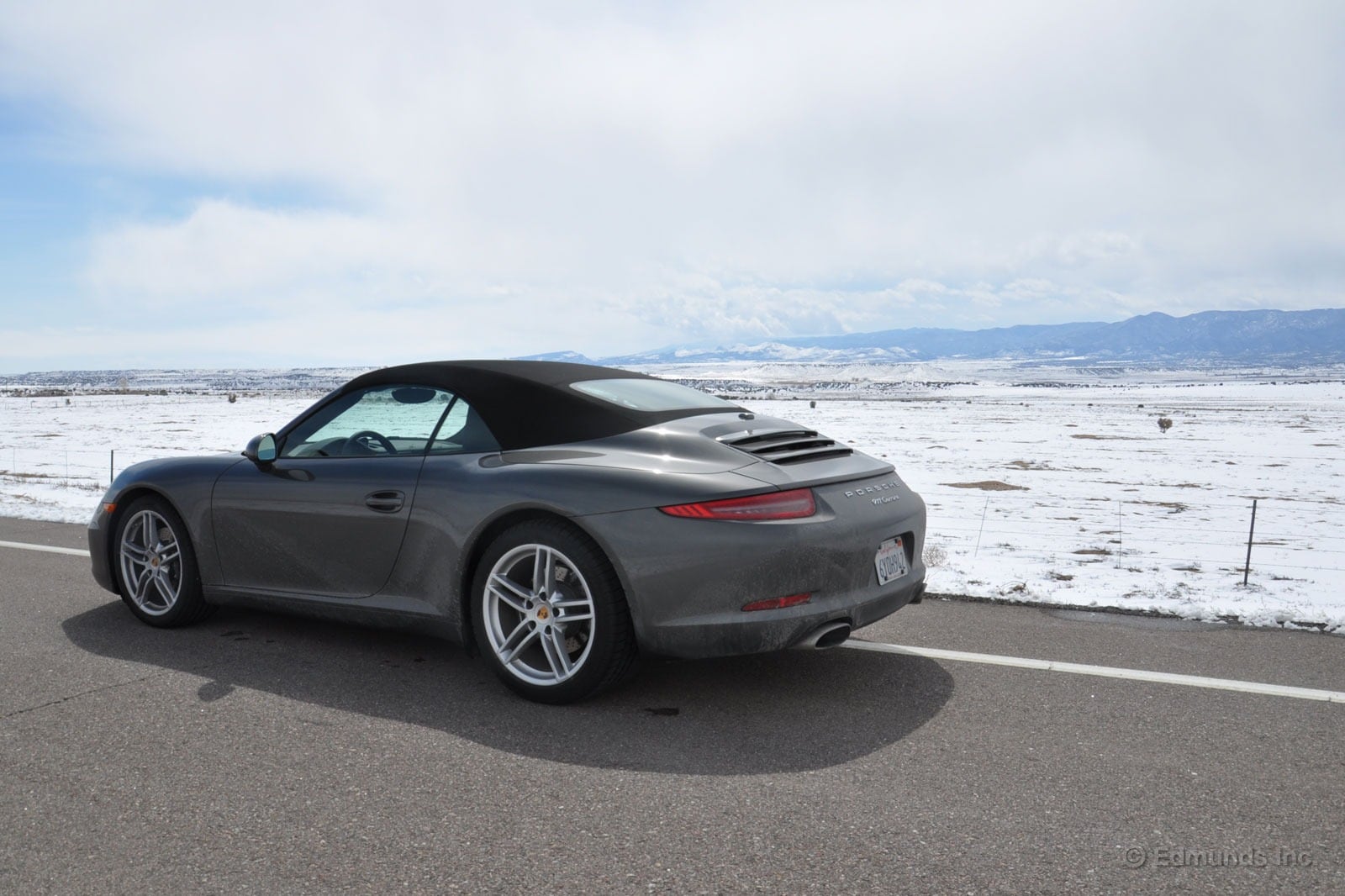
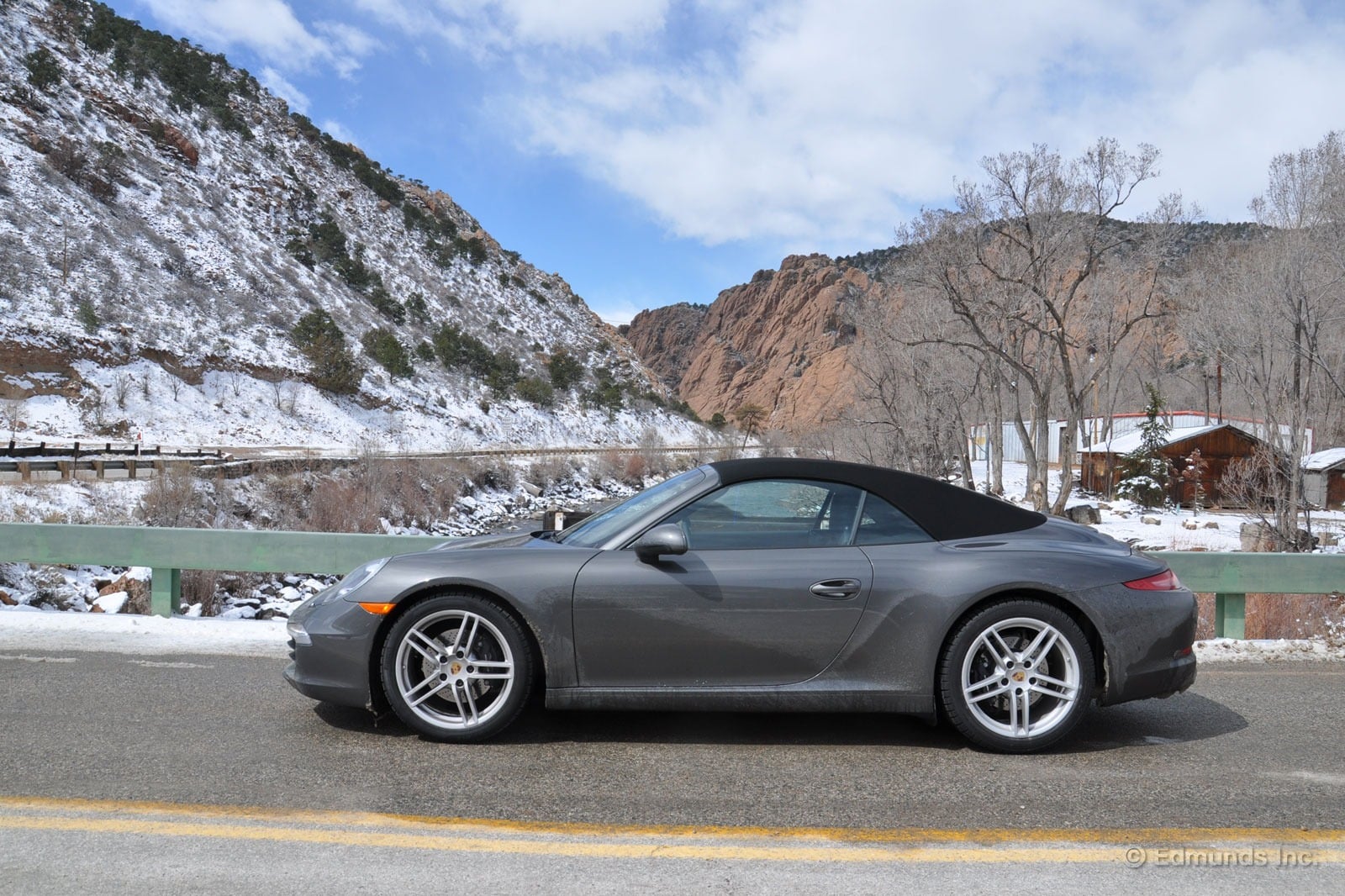
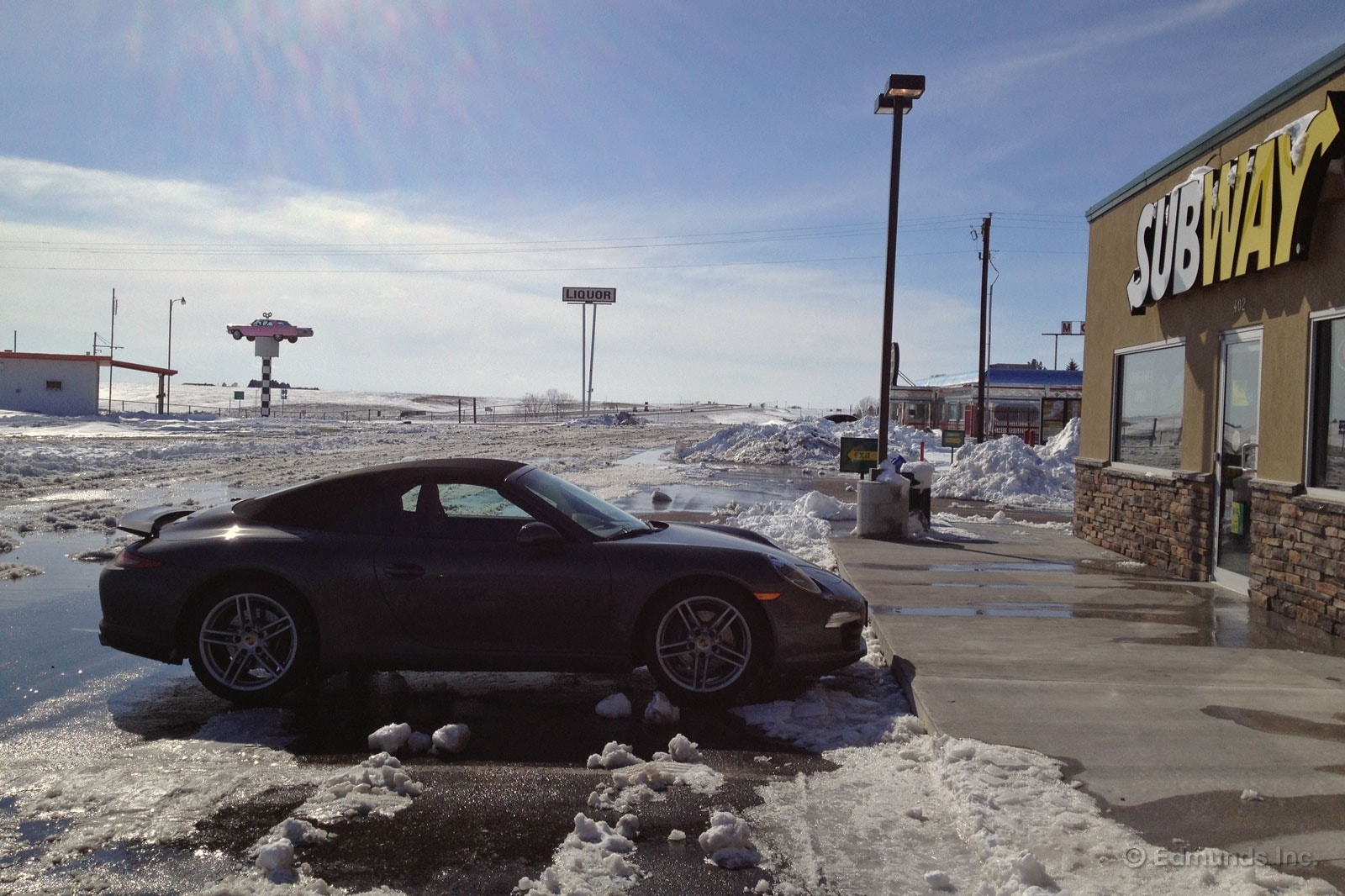
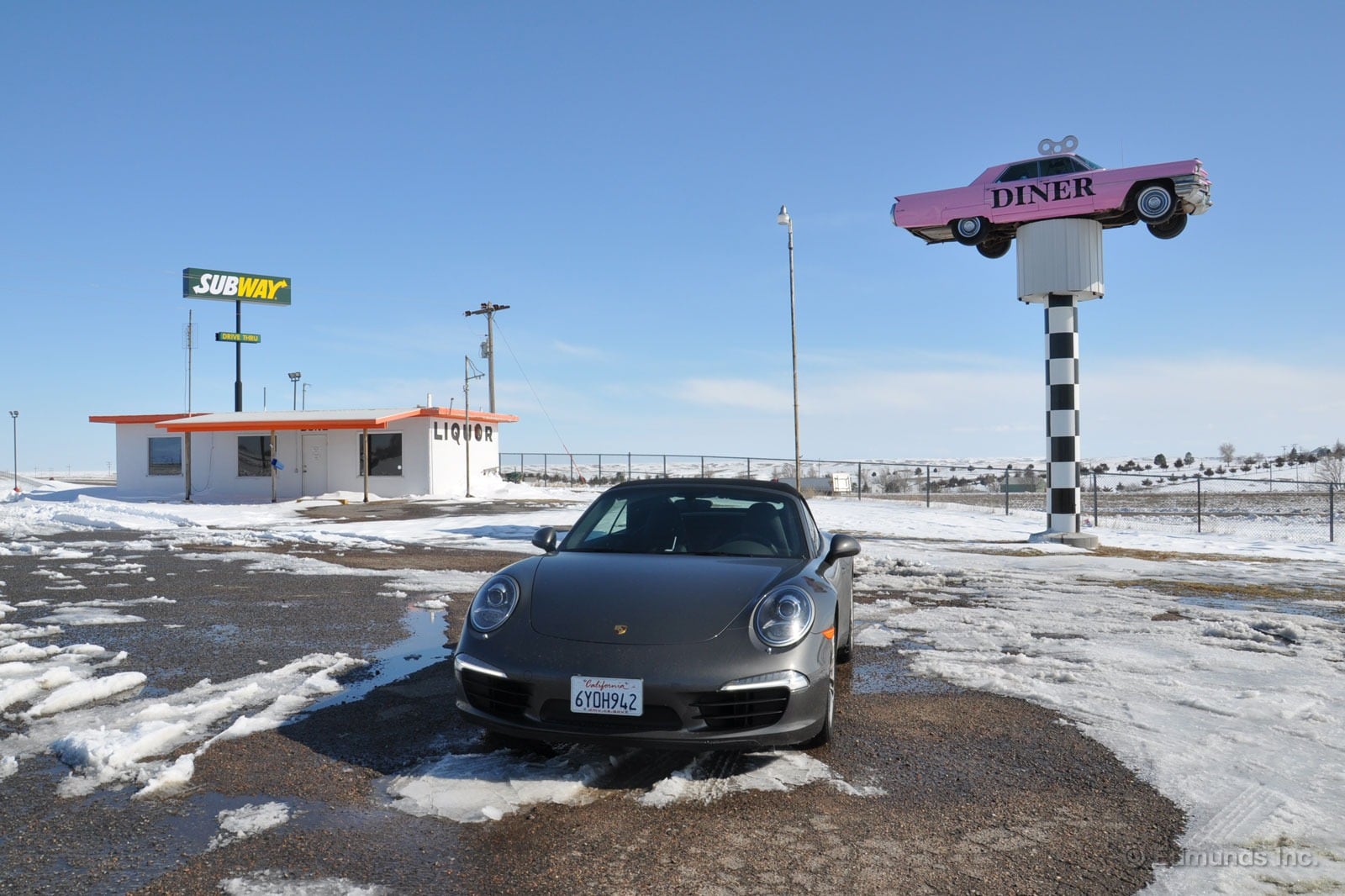
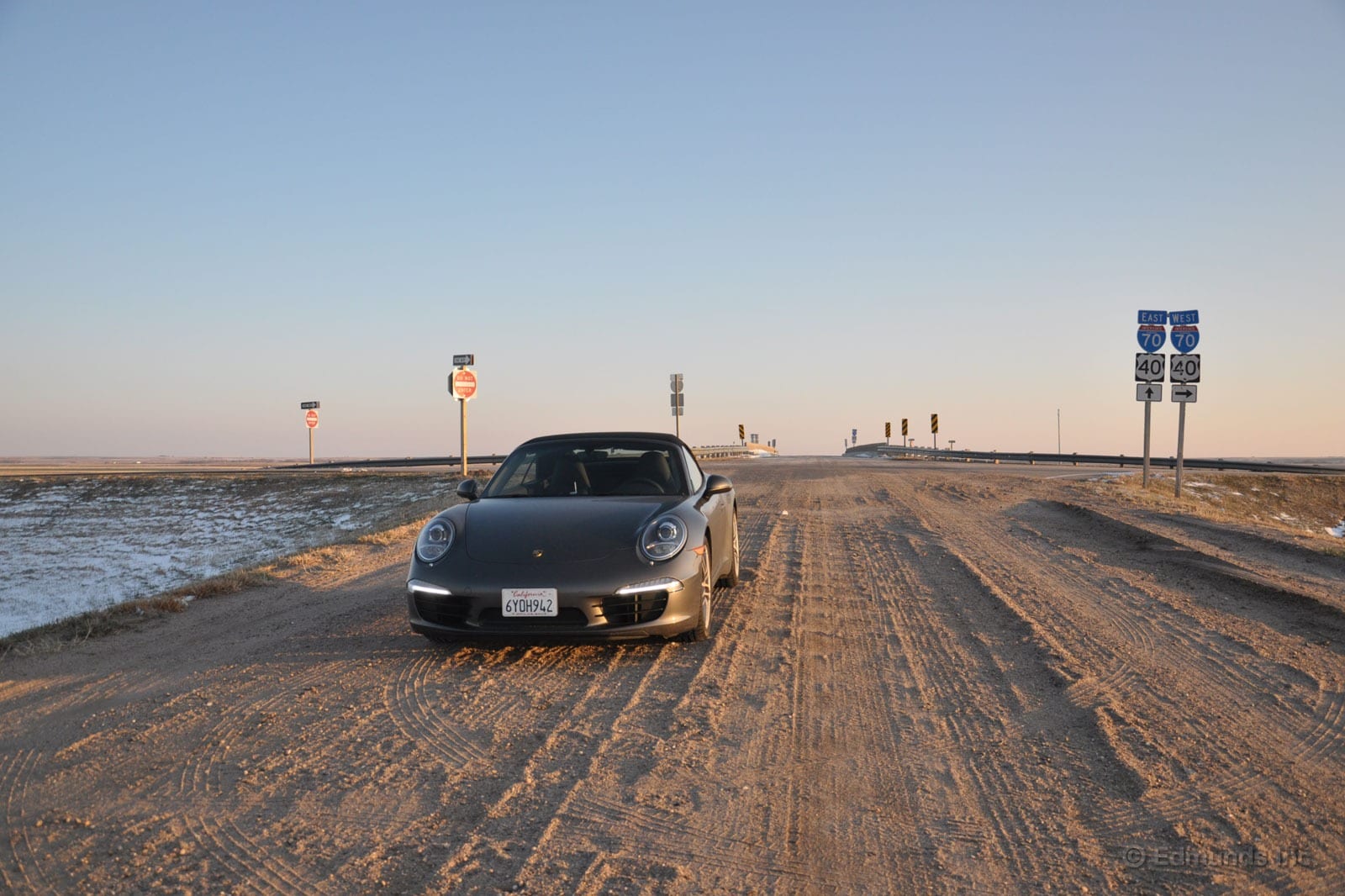
If you read the last installment of our 2013 Porsche 911 Carrera Cabriolet's journey to New York, then you noticed it hit 5,000 miles. Here's where it happened. I can't remember the name of this exit off Interstate 70. This road runs both north and south of the highway, and there's not a lick of pavement. Not many cars look this good on a desolate dirt road. My weather app told me that we were in Ruleton, Kansas. I think it was about 30 degrees.
The wind gusts were considerable when I popped out of the car for a quick shot in the evening light. I didn't linger, either, lest I get run over by a tractor or a steer. In any case, the 911 remained in tip-top health when it passed this milestone.
So far, I've seen only one other 911 on this road trip: It was a 996 Turbo convertible, and I spotted it, where else, just outside of Vegas. I suppose it's the weather that's keeping all the Porsche 911 owners off the road, but really, with a set of snow tires, the 991 generation at least is quite hardy.
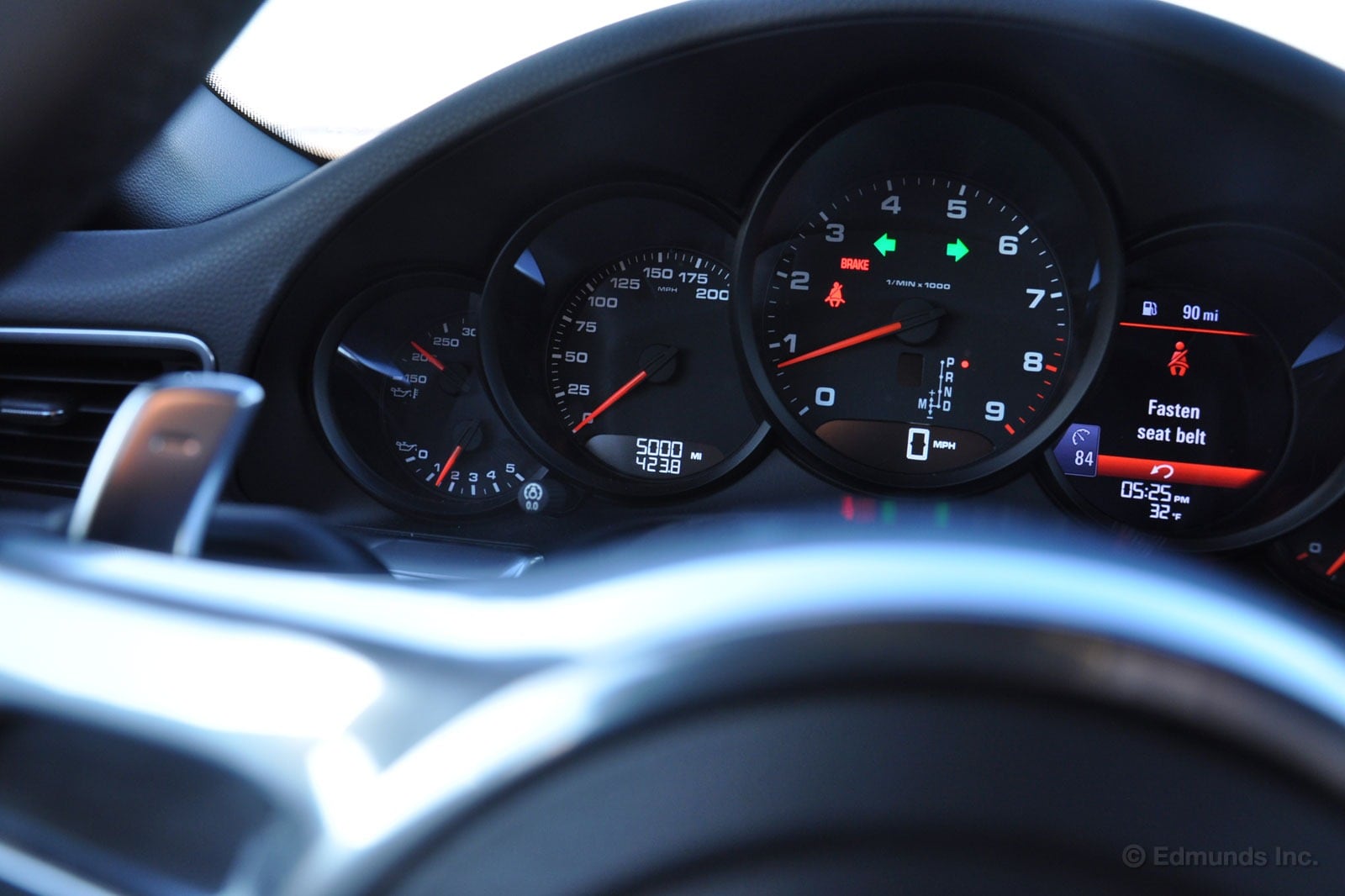
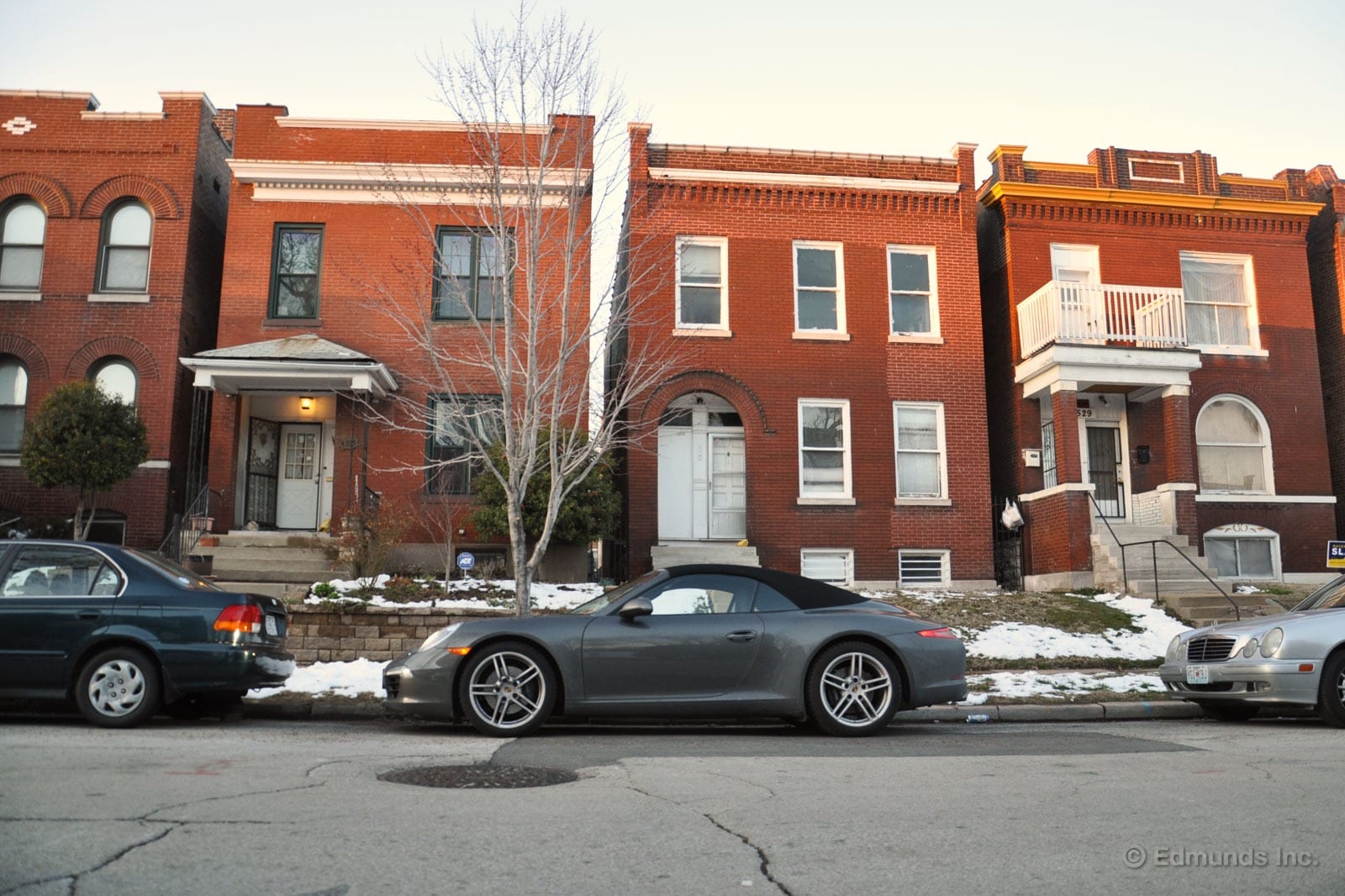
Two nights and a day after my road trip in our 2013 Porsche 911 Carrera Cabriolet stalls out in Kansas (due to a mechanical problem with the driver, not the car), the Porsche and I are back on the road to New York. Of course, now the goal is to get to Manhattan in time for the second press day of the 2013 New York Auto Show. There won't be time to explore any crazy back roads or tour the battlefield at Gettysburg as I'd planned.
I'm just going to have to be content with the 911's entertainment value when it's pointed straight down Interstate 70 (and then 76, 78 and every other numbing Northeast artery that comes after that). The PDK seven-speed, dual-clutch automated manual transmission makes this pretty easy.
Forget about the philosophical dilemma a car guy faces in choosing the PDK over the conventional seven-speed manual transmission. I'm focusing on function here. And on I-70 with a worn driver behind the wheel, this thing is functionally an automatic transmission (yeah, even if it's actually something else).
Frankly, it's the best automatic available in 2013. Downshifts are so quick. The PDK serves them up exactly when it first occurs to you that you want the 911 to drop a gear or two. I remember using the paddle shifters to hold onto lower gears during my night on snowy U.S. 50, but on dry, mostly flat roads, the car doesn't need to me to help with the thinking.
I also don't have to out-think the 911's electric-assist power steering. We've written that the 991 generation sacrificed steering feel when it adopted EPS, and I'd hoped to judge that for myself on this trip. It's not going to happen now, but on the more boring roads that we all end up on now and then, this is one of only a few EPS-equipped cars that feels totally normal. I never fidget with the steering when I'm trying to go straight. There's a good sense of stability on-center. This is relaxing, and it's one of many reasons that our 911 convertible is a fine cross-country road trip car.
This is the only photo I have from my extended stop in Topeka, Kansas, by the way. It's notable because it's the only time during this trip when I don't worry about throwing out my back while loading my too-large suitcase. The ability to pull up to a curb at the Courtyard Marriott significantly reduces the liftover height as I heave the bag back into the 911's frunk.
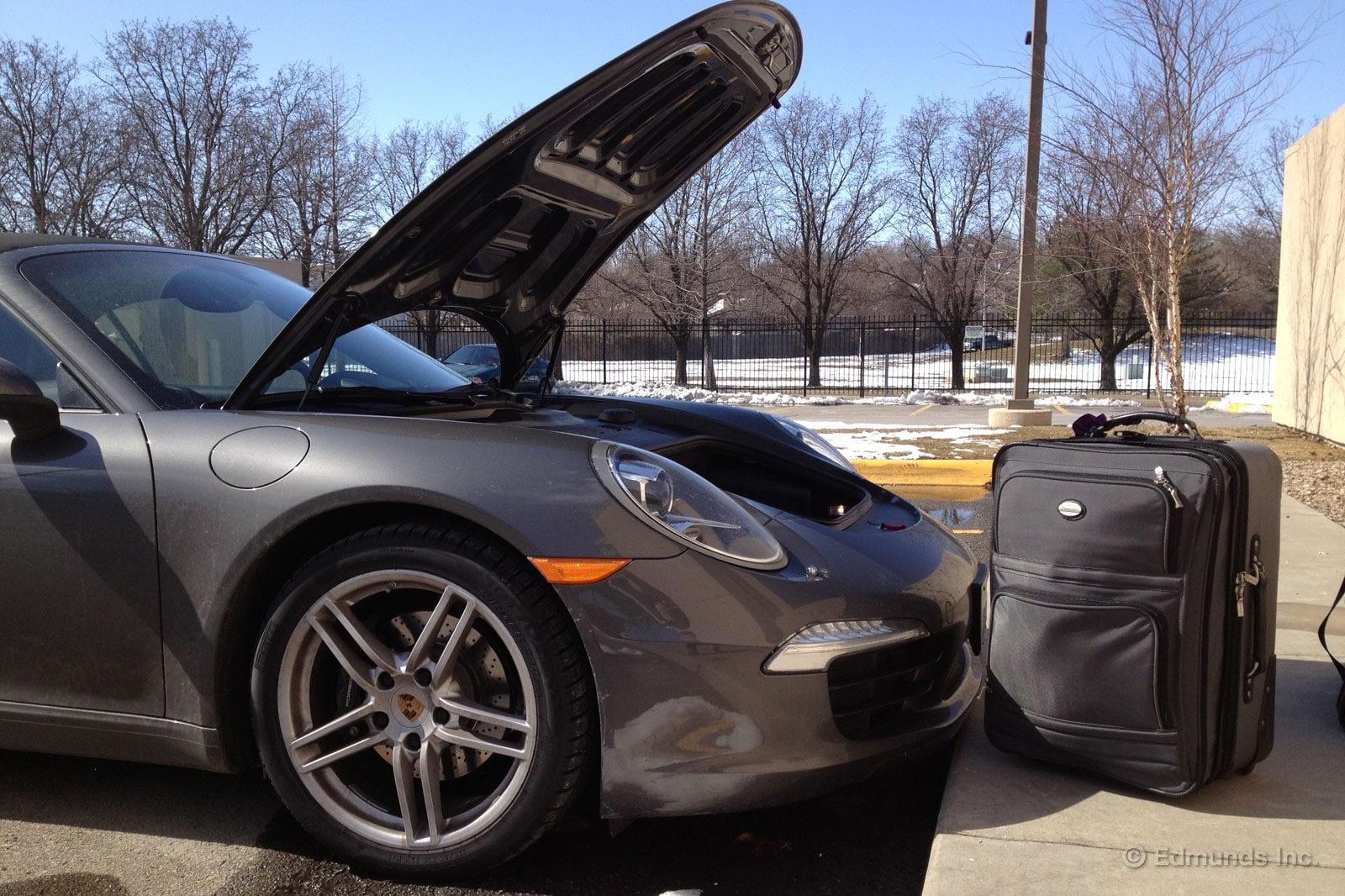
Highlights from Topeka include a visit to a walk-in clinic and meals at local eateries like Chipotle and Panera. Everyone here is as nice as can be. I'd forgotten that people outside California are nice.
I can't stay here, though. My next stop is Wentzville, Missouri, which is significant only because it's the first time the 911 gets a tank of 93 octane since we bought it.
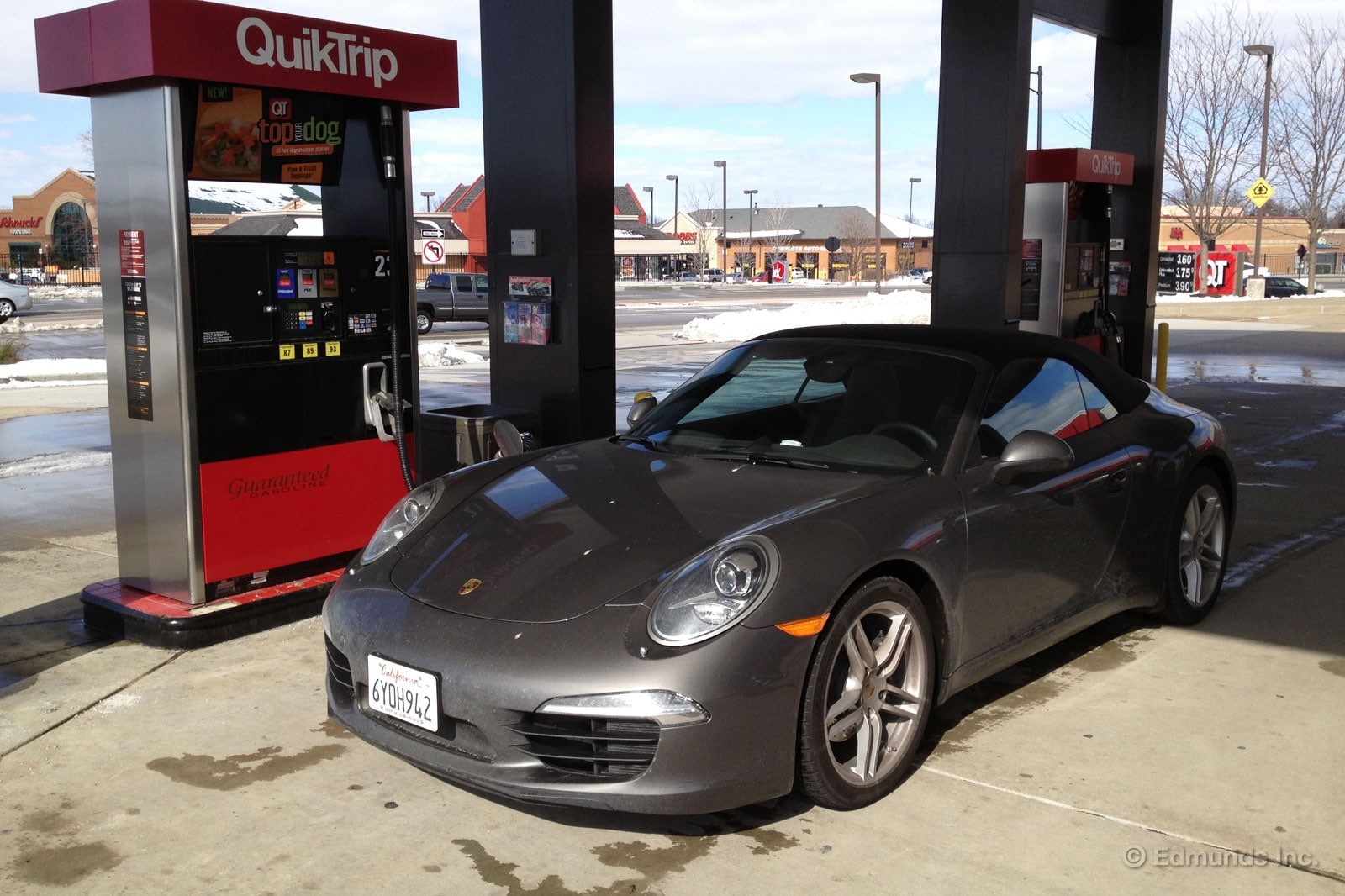
Other than getting much closer to New York, my goal for the day is dinner in St. Louis. Although medicated now, I require a therapeutic frozen custard from Ted Drewes on Chippewa Street (part of U.S. 66). Partly, the therapy is nostalgia, because I used to live in Missouri and have happy memories of gorging myself here. But, really, it's because this is the best frozen custard in the country, period.
I order my concrete with cookie dough, butterscotch and bananas. I think it's the same thing I ordered the last time I came here in our long-term Nissan GT-R. It's also one of the few cups that fits securely in the 911's half-hearted cupholders.
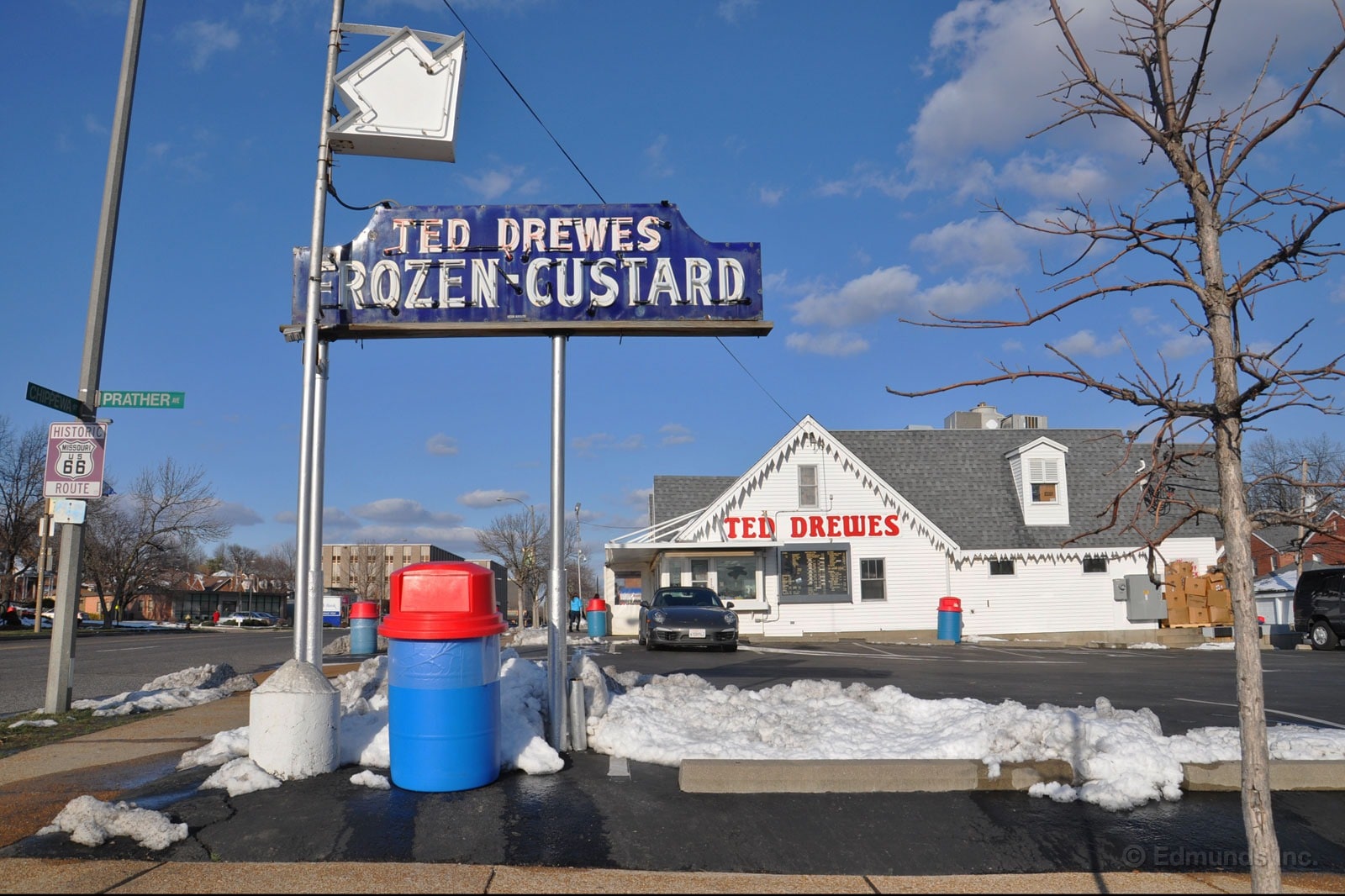

My photos make it look like I'm the only one here, but before long, there's a mini afternoon rush, never mind that it's only 40 degrees. Two days ago there was 9 inches of snow on the ground, or at least that's what my brother says. He's the other reason I've come here. He lives in The Grove neighborhood, which is old and cool looking. His old and cool brick house doesn't have its own garage, though, so I have to street-park the Porsche. It's either that or go without dinner (Ted Drewes was not dinner), which is not an option since he's promised to take me to his favorite neighborhood restaurant (it turns out to be a laidback Afghan place and the food is delicious).
Fortunately, I find a spot that's comfortably large. I'm able to spot the curb well enough with the side mirror, so the 19-inch wheels remain unharmed. I'd half expected our 911 to have a rearview camera and maybe some parking sensors, but I guess I shouldn't be asking the car to do everything for me.
After dinner, my brother gives me direction to his neighborhood's obscure onramp to U.S. 40 (seriously, it's like turning into someone's driveway), which eventually joins up with I-64 and I-70. From here, it's four hours to Indianapolis. As I check into a hotel near the airport around midnight, I know I've got a shot at making it to New York tomorrow.
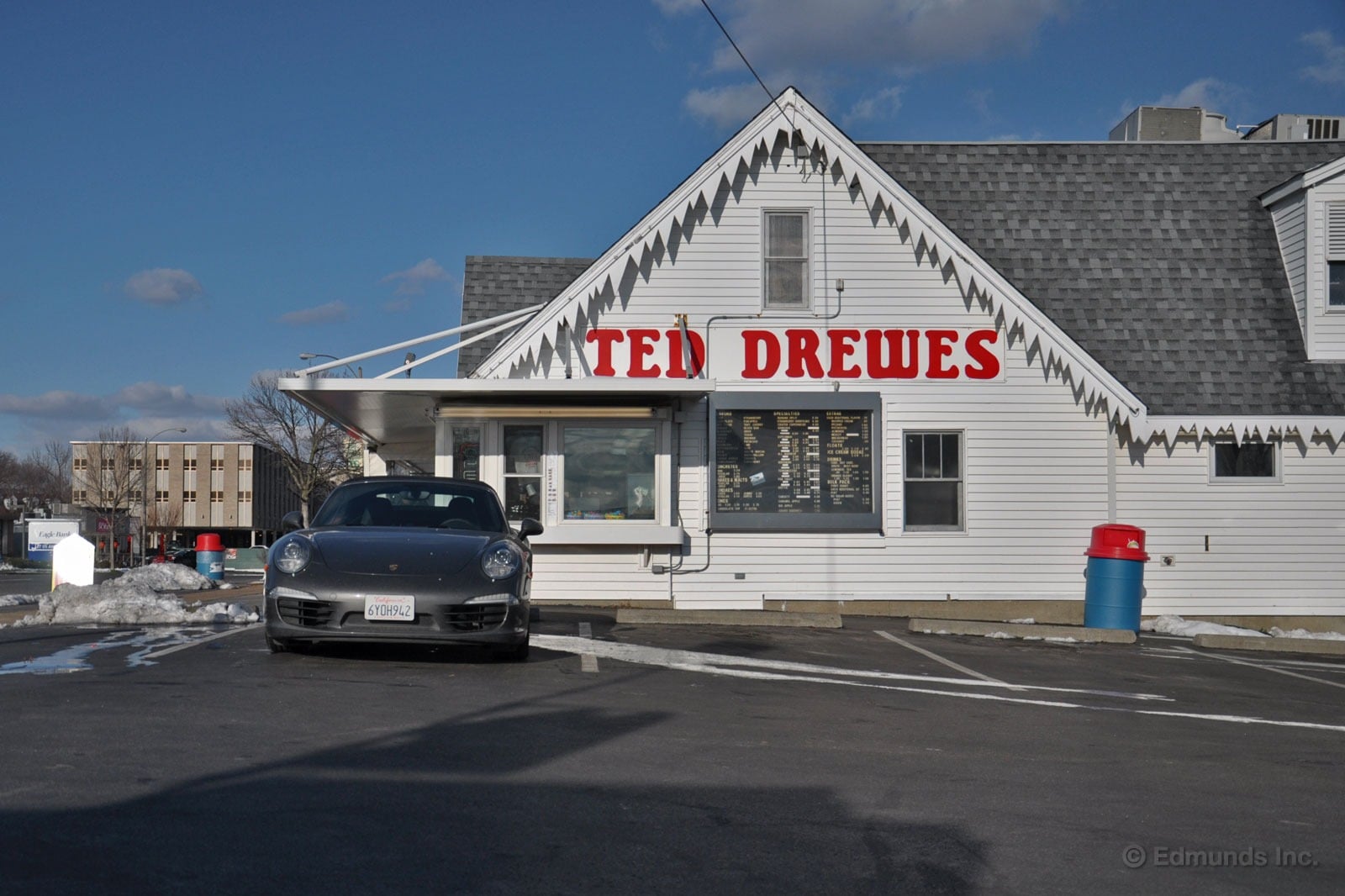
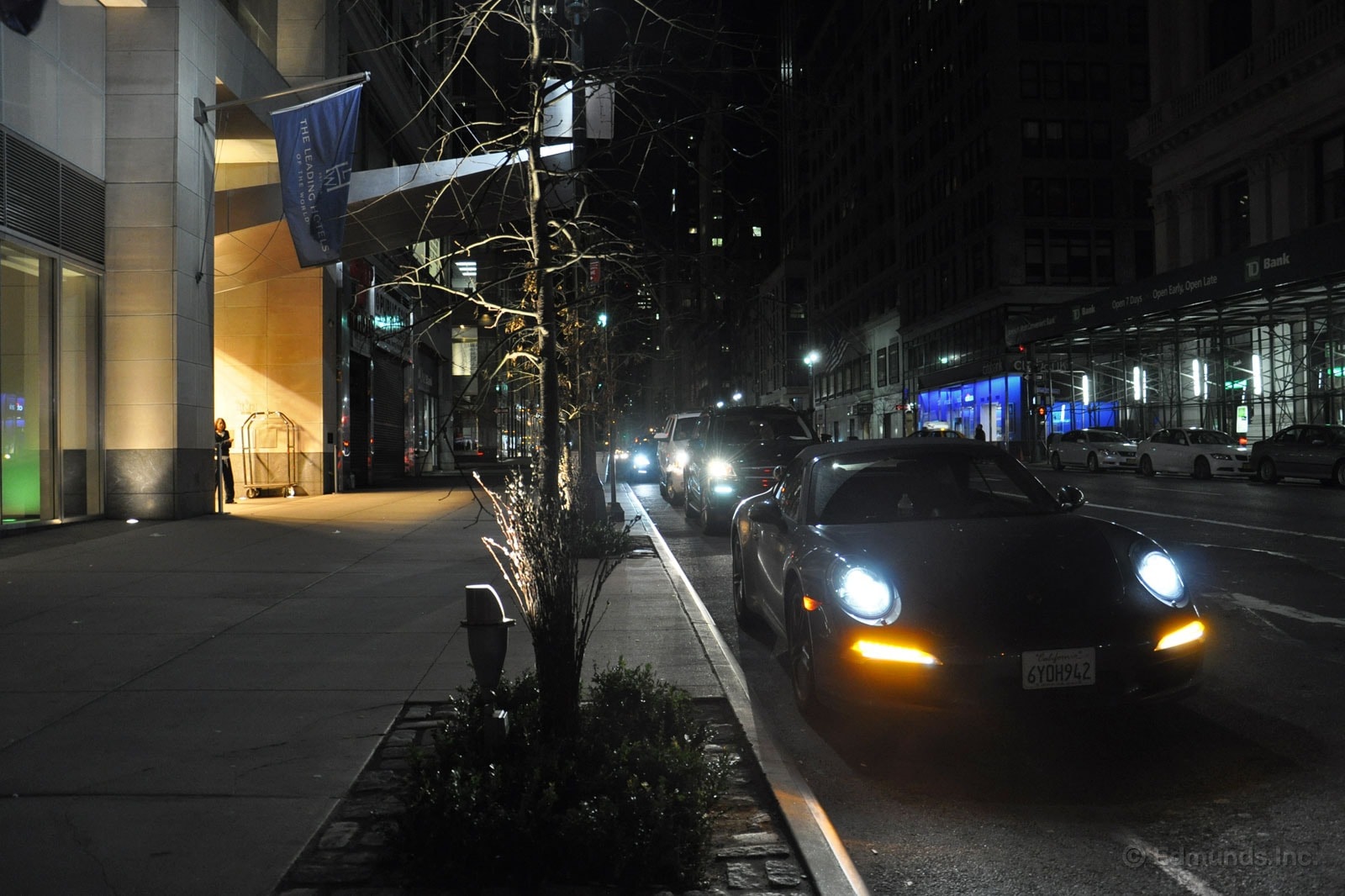
For the last three days, I've been getting supportive emails and texts from my coworkers. "Don't be foolish," some of them begin, "just park the Porsche and somebody will come get it." But even during my worst hour, I know I'm going to complete the drive to New York somehow. And after stopping in Indiana last night, that goal is finally in sight.
First, though, the 2013 Porsche 911 Carrera Cabriolet and I will take in more of Interstate 70, plus I-76 (better known as the Pennsylvania Turnpike) and I-78. It's an experience I won't soon forget.
See, this is the most direct route to New York and the one that the Porsche's navigation system recommends. (By the way, I don't love this navigation system. The accuracy is good, and voice prompts are well timed to make sure you don't miss turns. But the graphics are only so-so for a nav system in a six-figure car. BMW's maps are much prettier with better detail.)
I was tempted to go a bit farther north and use Interstate 80 instead, so I could retrace the steps of college-age Erin who spent a summer working in Youngstown, Ohio (the city is slightly scary, but northeastern Ohio is a fascinating place). I drove across Pennsylvania on I-80 that summer, and it was beautiful. But I figure I don't have time for beauty today.
And make no mistake, Interstate 76 is the opposite of beautiful. It's also clogged with trucks whose lane discipline makes the truckers on California's I-5 seem like the most courteous people in the world. "You should always take I-80," our Pennsylvania-based editor Bill Visnic tells me later.
Earlier in the day, as I'm driving through Ohio, I decide I haven't taken enough photos of the 911 in dramatic locations. I start looking for random historical places to stop. This semi-panic results in a detour through New Concord, Ohio, where I drive carefully past the local high school track team on an afternoon training run. Once in town, I snap photos of our 911 in front of a house where astronaut John Glenn apparently lived with his wife Annie and a section of National Road ("the nation's first federally funded interstate highway") called the Fox Run S-Bridge, which is a little twisty stretch of brick road that you can't actually drive on anymore.
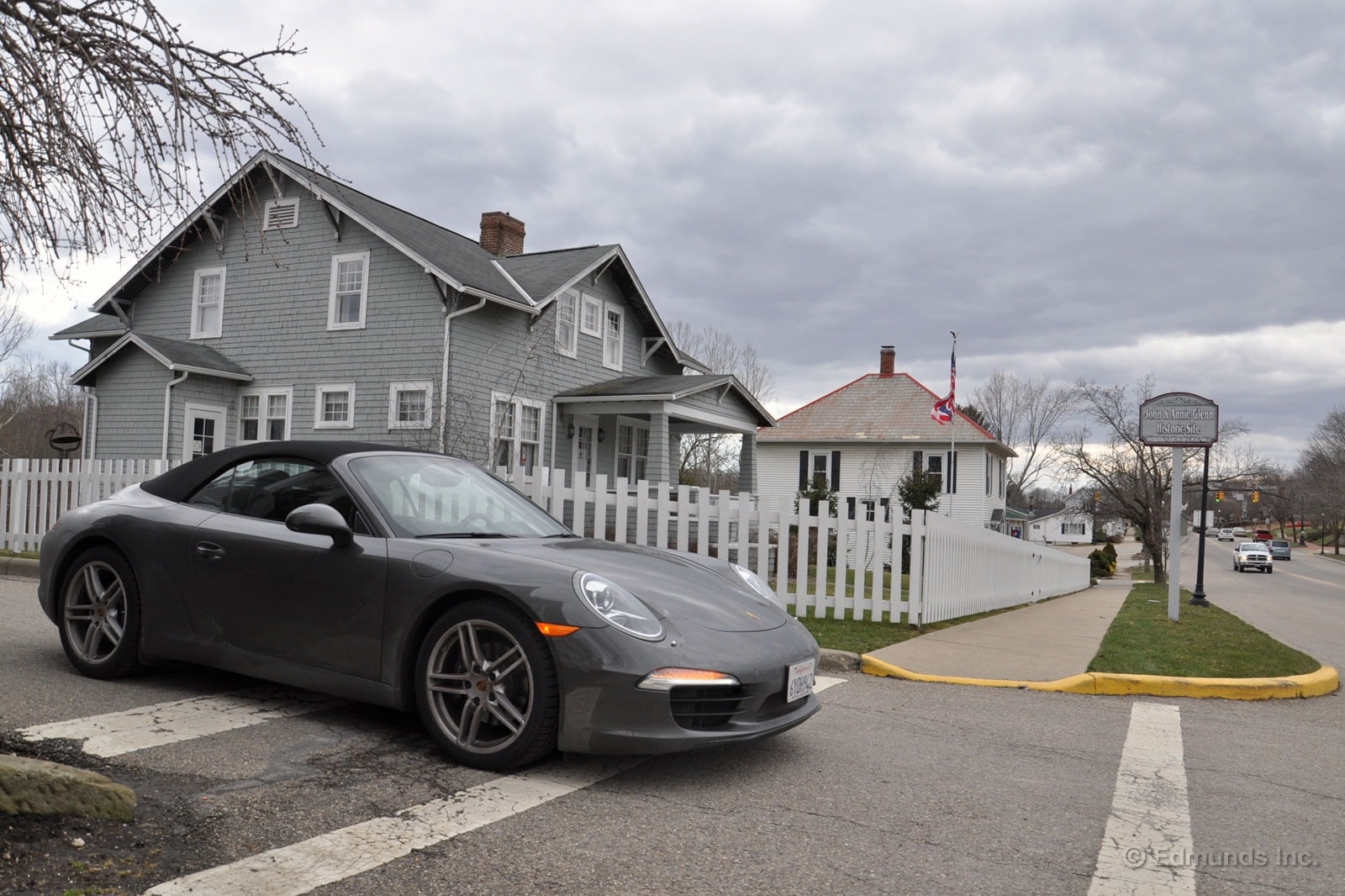

The Porsche's paint (now coated with several days of wintry gunk) matches the heavy gray sky. It ends up snowing through half of Pennsylvania, but for the most part, it's not cold enough to stick. It's more of a workout for the 911's wipers than it is for the tires.
One thing I haven't disclosed yet is that I dislike our 911 convertible's driver seat. The seat back is nicely contoured and very supportive, but no matter how I adjust the seat-bottom cushion, I can't go more than two hours without getting uncomfortable. Using cruise control helps a little but not enough. There's no way I could buy a 991-generation 911 with these particular seats. But I have a feeling I represent the minority in this regard, and there's little doubt Mike Magrath will have a different opinion when he gets his turn.
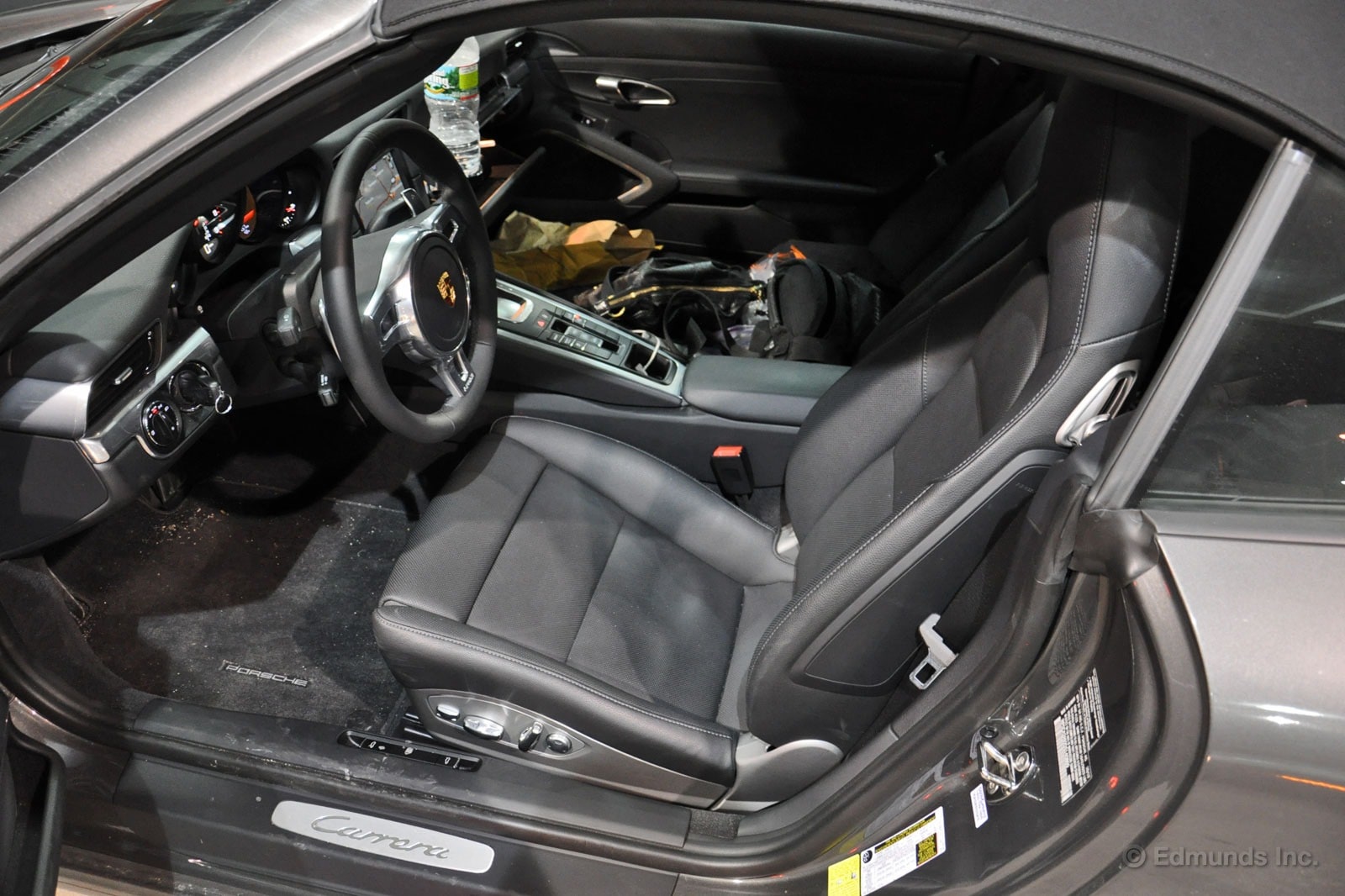
Also nagging at me is the feeling that I haven't bonded properly with our 911 Carrera Cabriolet. Due to cold weather and driver frailty, I've left the top up the whole time. I've also treated the PDK like an automatic for most of the trip. I've done boring things with a really interesting car.
Part of me thinks it would have been different if our 911 had the seven-speed manual transmission. Conventional manual gearboxes always make cars seem more real to me. It doesn't matter how much the car costs. If I get to do the shifting, even a very expensive car feels accessible, obtainable and more like a friend for lack of a better word (and damn, there's got to be a better word than friend, right?). I felt closer to our '85 Porsche 911, even as I was struggling to rev-match the 5-4 downshift. But I'm making excuses. I haven't lived right in our Porsche 911 convertible, and I'll leave it to Magrath to make amends with our long-termer.
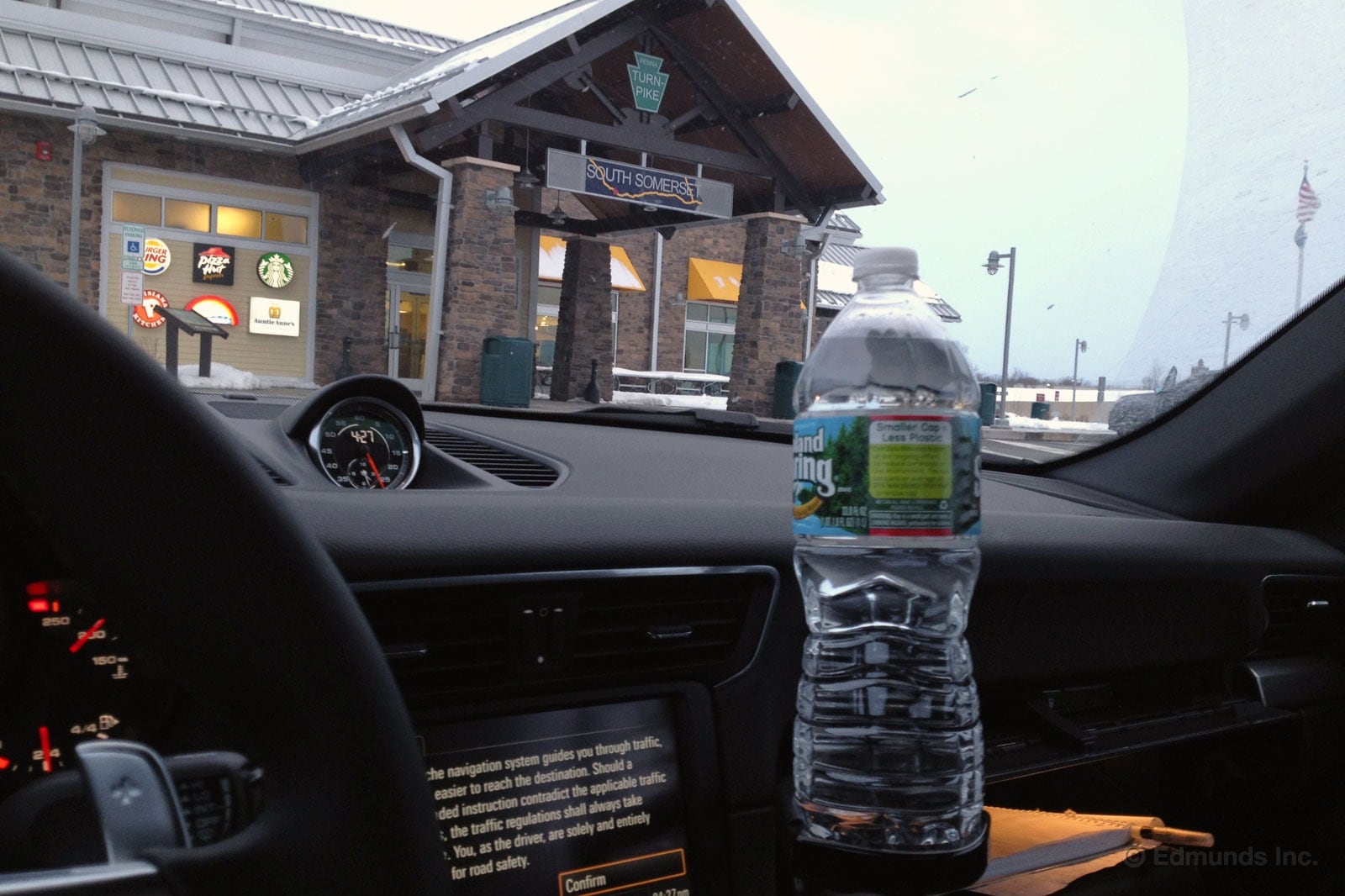
After buying the largest beverage that will fit in the 911's because-we-have-to-sell-it-to-Americans cupholders (it's a 1-liter bottle of water) along the PA Turnpike, I press on toward my last fuel stop in Allentown, Pennsylvania (and 92 octane is the best I can get here). I could probably make it into the city without refueling, but it would be unkind to surprise Magrath with an empty tank.
I've never driven into New York before, so the fact that there's only one cash lane for the toll plaza on the New Jersey side of the Lincoln Tunnel comes as surprise. While I'm waiting at a dead stop, I get a text from Magrath:
"Where you at?"
"Lincoln Tunnel toll plaza, NJ side."
"Congrats."
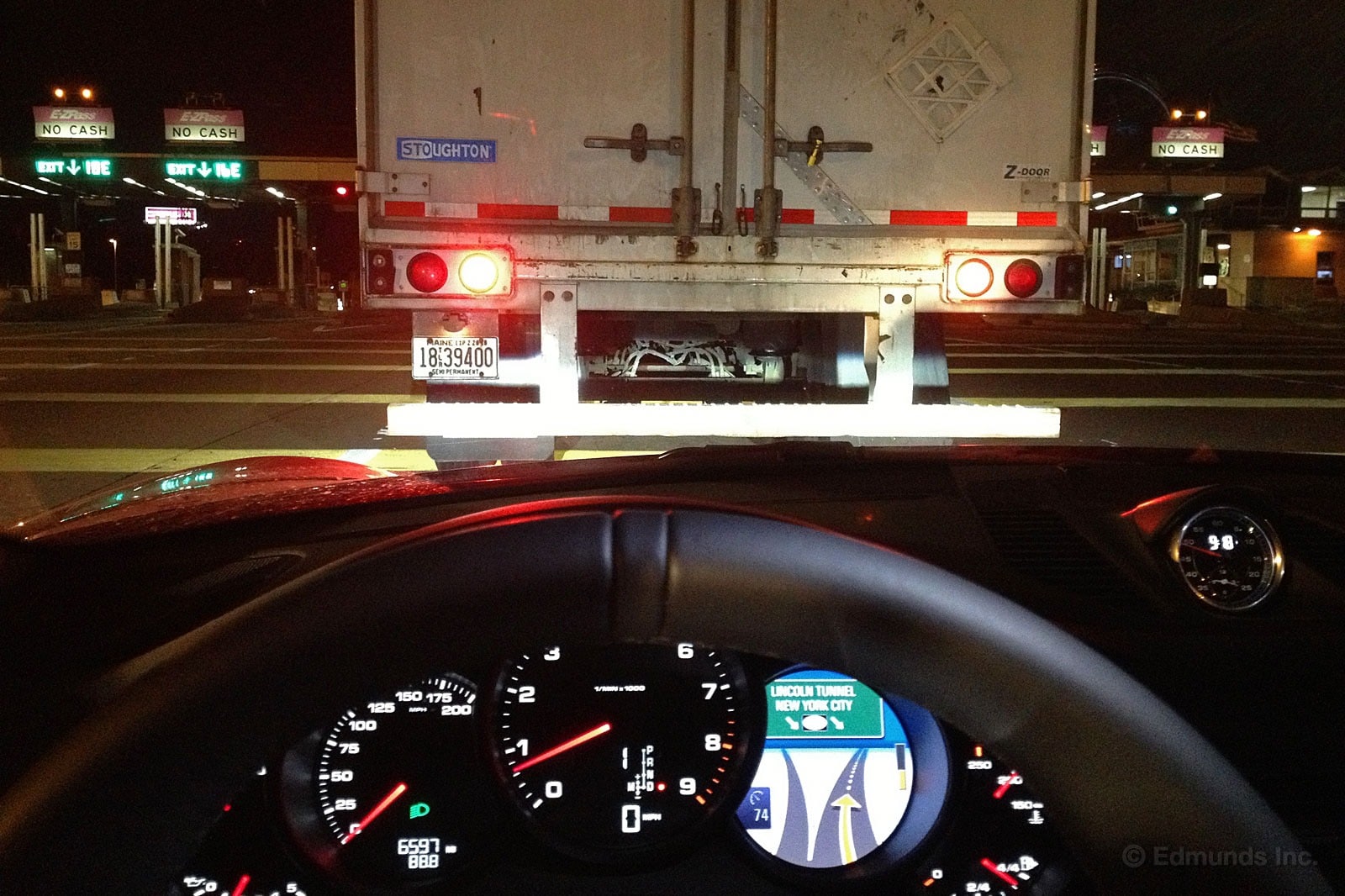
After that, it's an easy drive into Manhattan, because it's 1 a.m. and there's no traffic: It's a side of New York I've never seen before. I pull up at my hotel, and none of the valets come out to greet me. I put the hazards on and take my obligatory I-just-arrived-in-New-York photos. Five minutes pass. Still, nobody comes out and I'm parked in what's technically a bus zone. I lock the car and head inside.
"I'm staying at the hotel and I just drove in from California, " I blurt out, "can you put my car away for the night?"
It takes them a moment to process this, but soon they're in action, one taking the car, one trying to help me get my ridiculously large bag out of the 911's frunk. I slip the guy taking the Porsche a 20. "The car's pretty dirty," I say, "and I appreciate you taking care of it."
As I head up to my room, I realize just how far I am from Los Angeles. If you pull up at a nice hotel in L.A., the valets come running, eager to take your car and prevent the driveway from getting backed up. In contrast, hardly anybody drives into Midtown Manhattan, so I guess the valets don't bother waiting in the cold for privately driven cars.
But I drove into New York. It wasn't the most fun trip I've ever taken. But when I tell my kids about it, I'll make sure they think it was a fun trip. After all, I had a 2013 Porsche 911 to drive.
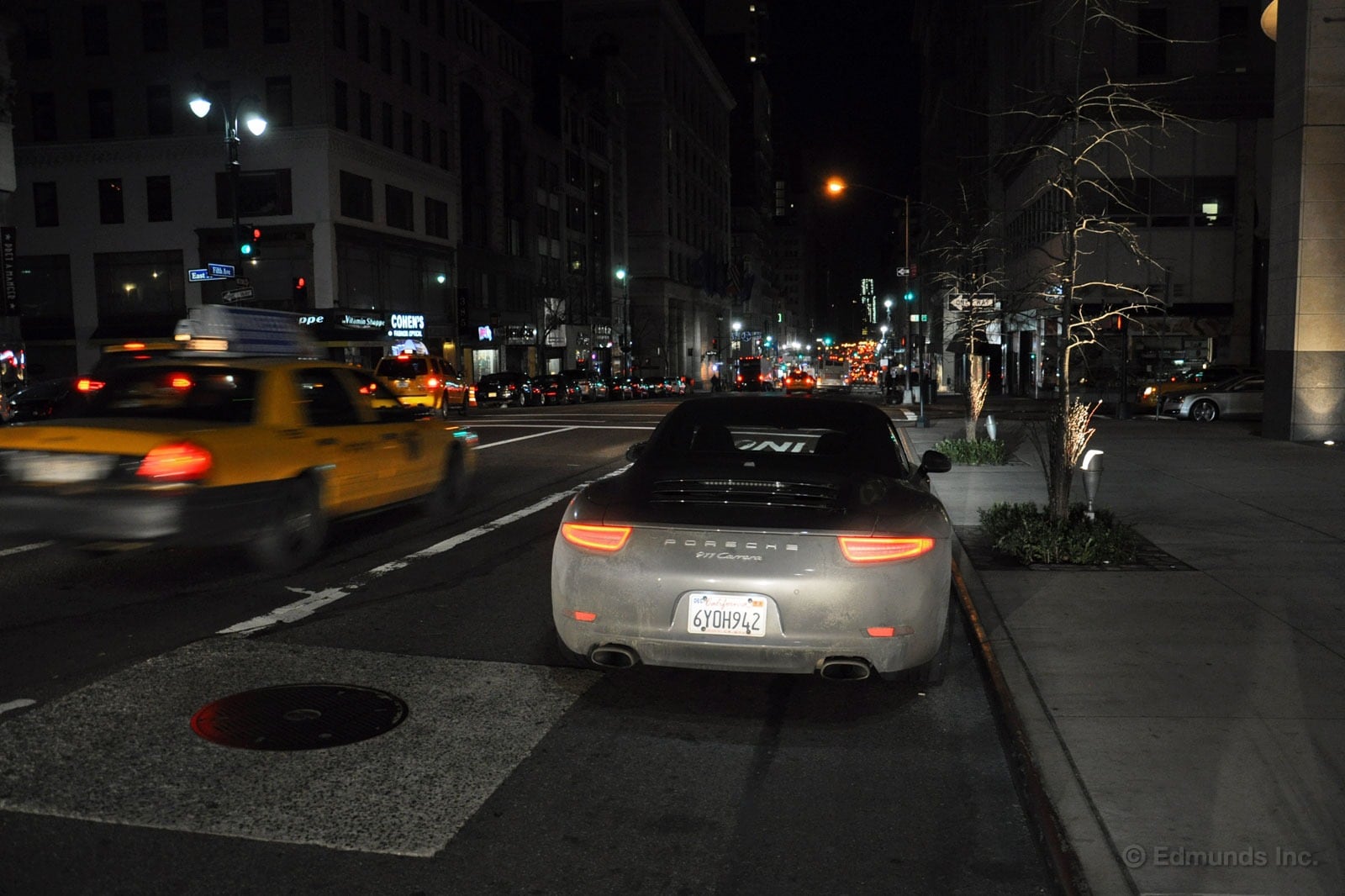
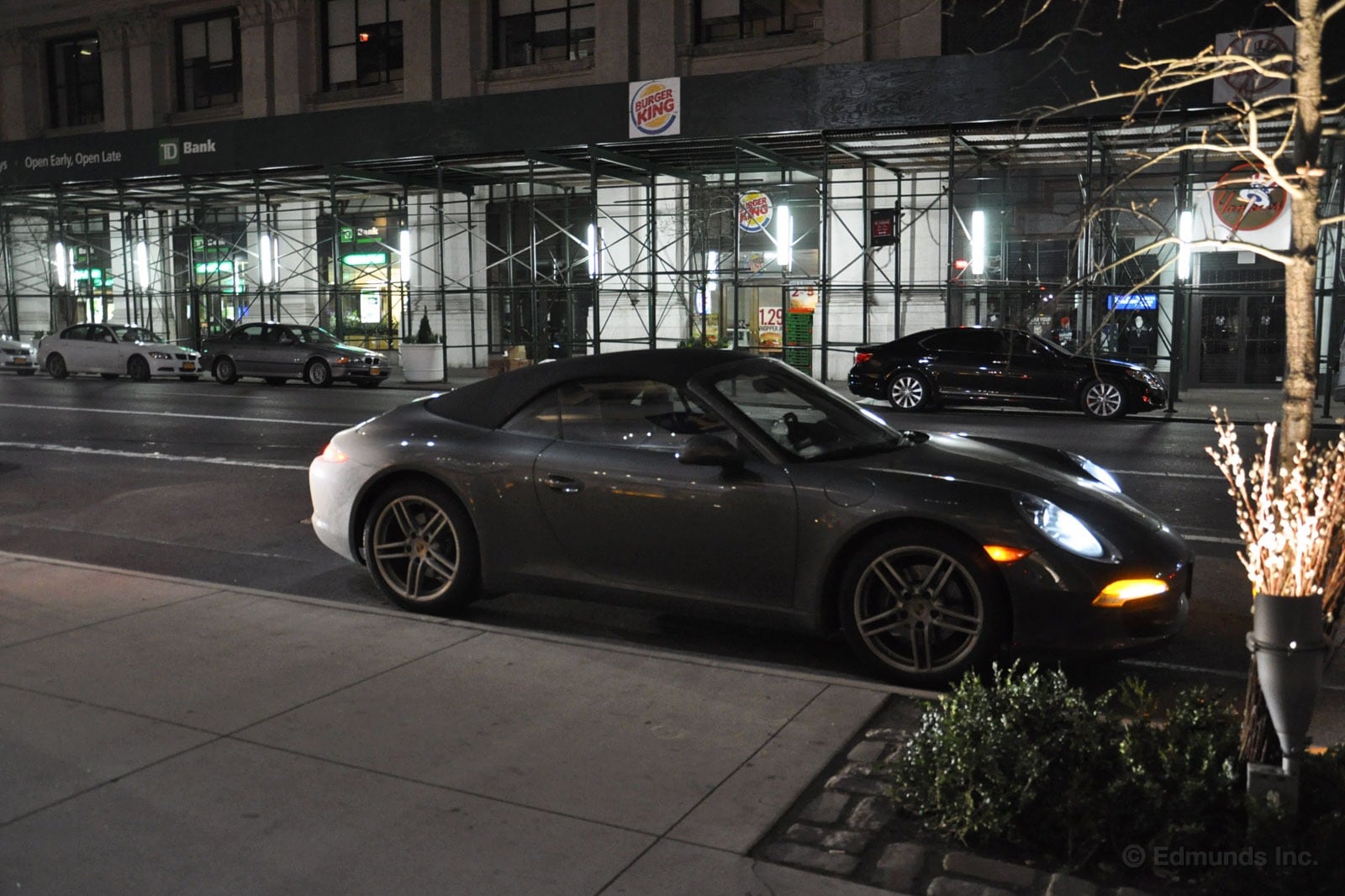
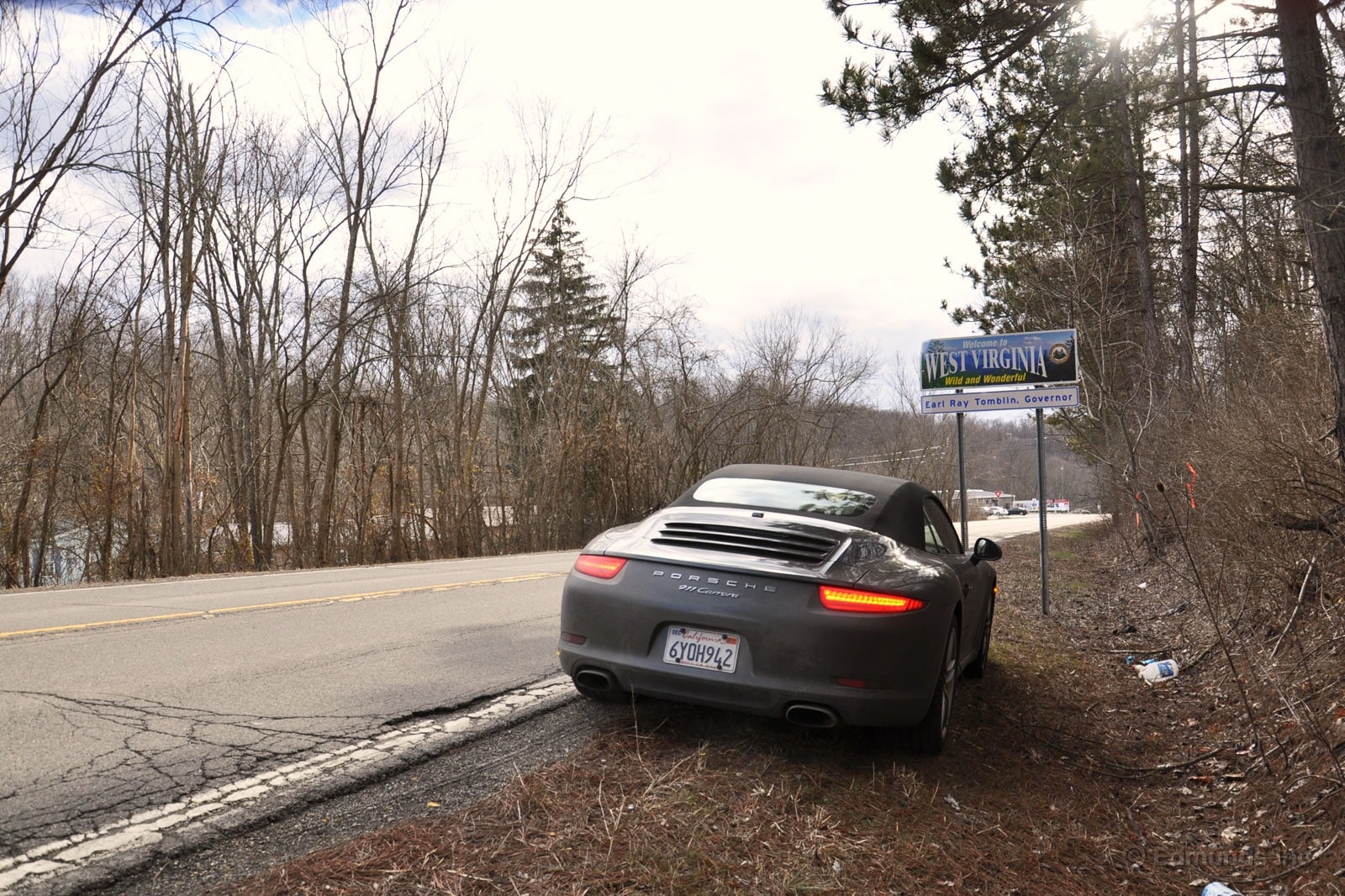

So our long-term 2012 Porsche 911 Carrera Cabriolet made it from L.A. to New York. But that was only the first half of the road trip. I've turned the keys over to Mike Magrath for a second half. He's not taking the same route, of course. And he'll probably put the top down no matter how cold it is.
It goes without saying that we're competing on fuel economy. It's not just about logging the highest overall average mpg, either. It's about who gets the best mpg on a single tank, worst mpg on a single tank, and the most miles on a single tank. There's also the matter of who spends the most money on premium fuel.
Check my totals after the jump. These are the numbers Magrath has to beat.
This is a chart of all my fuel stops during the 3,014-mile journey to Midtown Manhattan. I've totaled up the miles, gallons, money and mpg at the bottom.
|
Odometer
|
Trip
|
Octane
|
Gallons
|
Total Price
|
MPG
|
Location
|
|
3,770
|
300.4
|
91
|
12.73
|
$60.85
|
23.6
|
Baker, CA
|
|
4,170
|
380.7
|
91
|
14.62
|
$52.62
|
26.0
|
Richfield, UT
|
|
4,576
|
424.4
|
91
|
15.19
|
$59.83
|
27.9
|
Salida, CO
|
|
5,066
|
490.4
|
91
|
16.44
|
$64.27
|
29.8
|
Russell, KS
|
|
5,537
|
471.2
|
93
|
16.99
|
$66.41
|
27.7
|
Wentzville, MO
|
|
6,032
|
494.3
|
93
|
17.01
|
$66.50
|
29.1
|
Columbus, OH
|
|
6,508
|
476.2
|
92
|
15.28
|
$59.61
|
31.1
|
Allentown, PA
|
|
|
|
|
|
|
|
|
|
Totals*
|
3,014
|
108.26
|
$430.09
|
28.1
|
*I only drove 184 miles of the 300.4-mile tank I logged in Baker, CA. This is because I neglected to refuel before I hit the road in L.A.
Worst Fill MPG (NY road trip): 23.6 mpg
Best Fill MPG (NY road trip): 31.1 mpg
Best Range (NY road trip): 494.3 miles
EPA MPG Rating: 20 city/28 highway/23 combined mpg


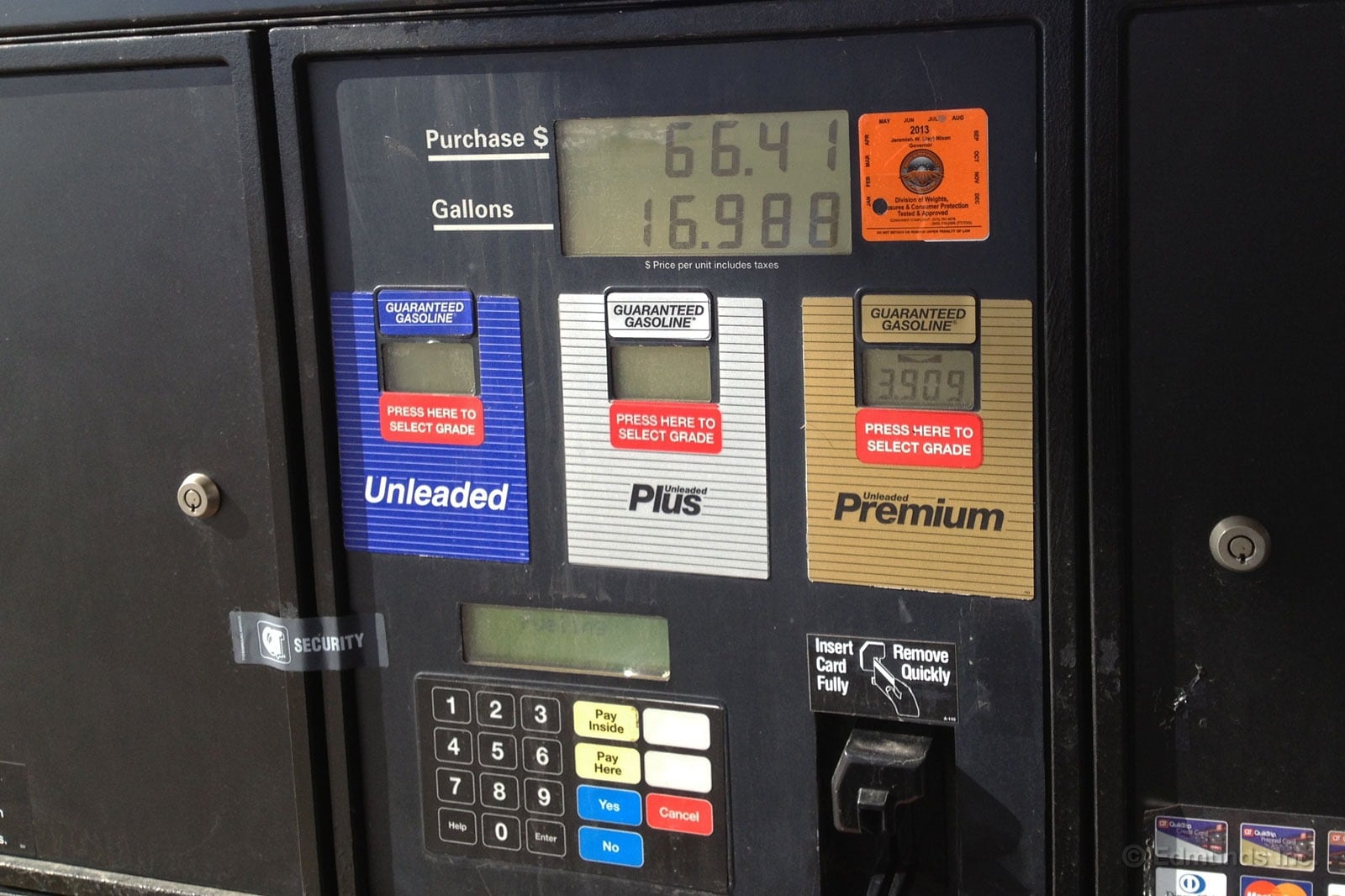
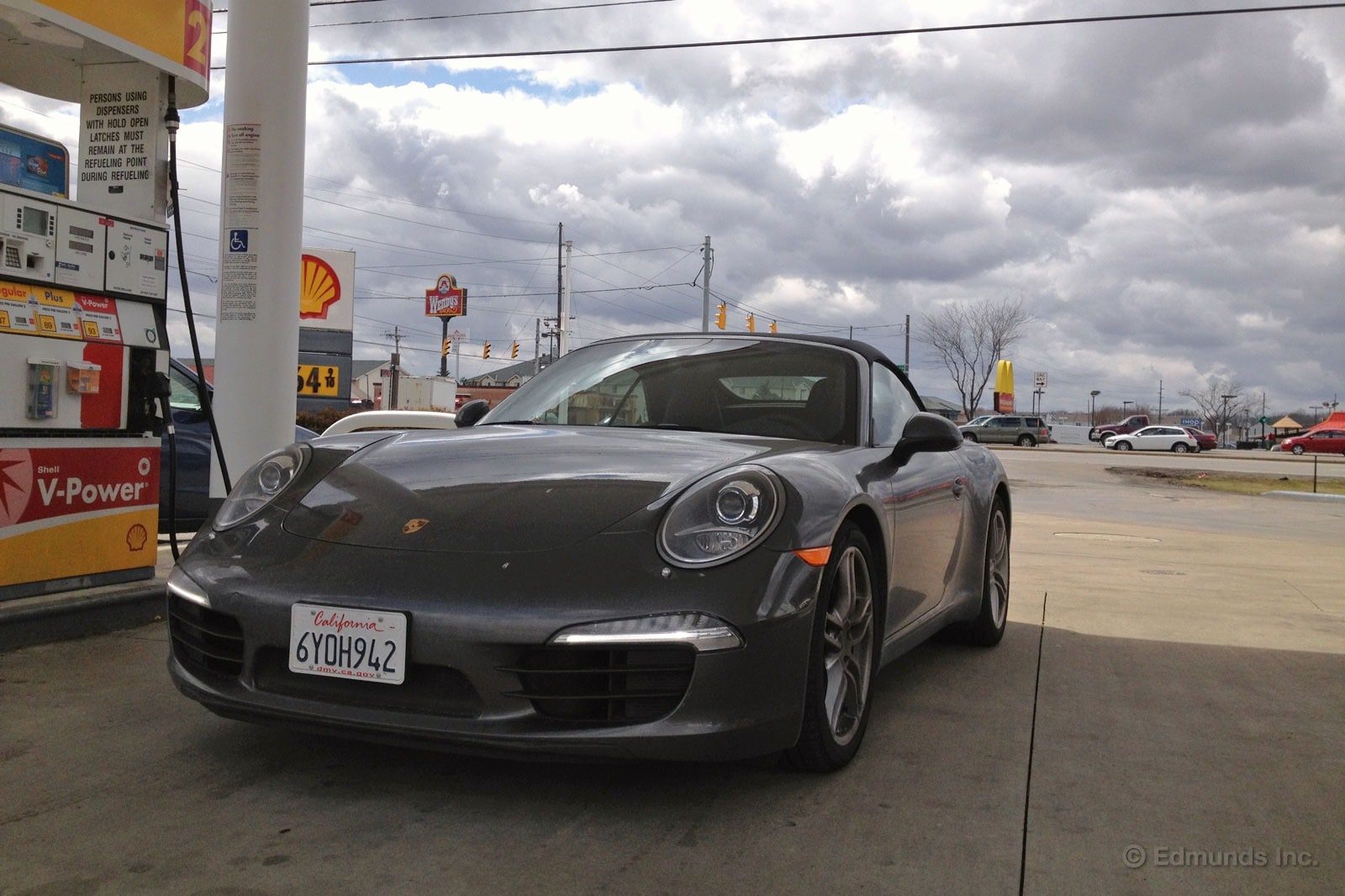

If I needed any more conclusive evidence that New York is not the same as Los Angeles, I got it at the valet counter at Erin's Hotel. High-end valets in L.A. understand the needs of a driver with a valeted car and can grasp the concept of a car being dropped off by one party and picked up by another.
In NYC, you have to wait 25-30 minutes for them to retrieve your vehicle from some rat-infested subterranean nightmare and the fact that I had the valet ticket only convinced the hotel that I'd murdered the fair Mrs. Riches and was planning to flee with her Porsche.
Hey, at least they graciously offered to let me stand in their lobby while they tried to figure it all out.
I didn't really have time for the wait, though. This was day 2 of the 2013 New York International Auto Show, I'd already covered a few cars and had to get this car quick; me and Scott Jacobs had a date with Times Square.
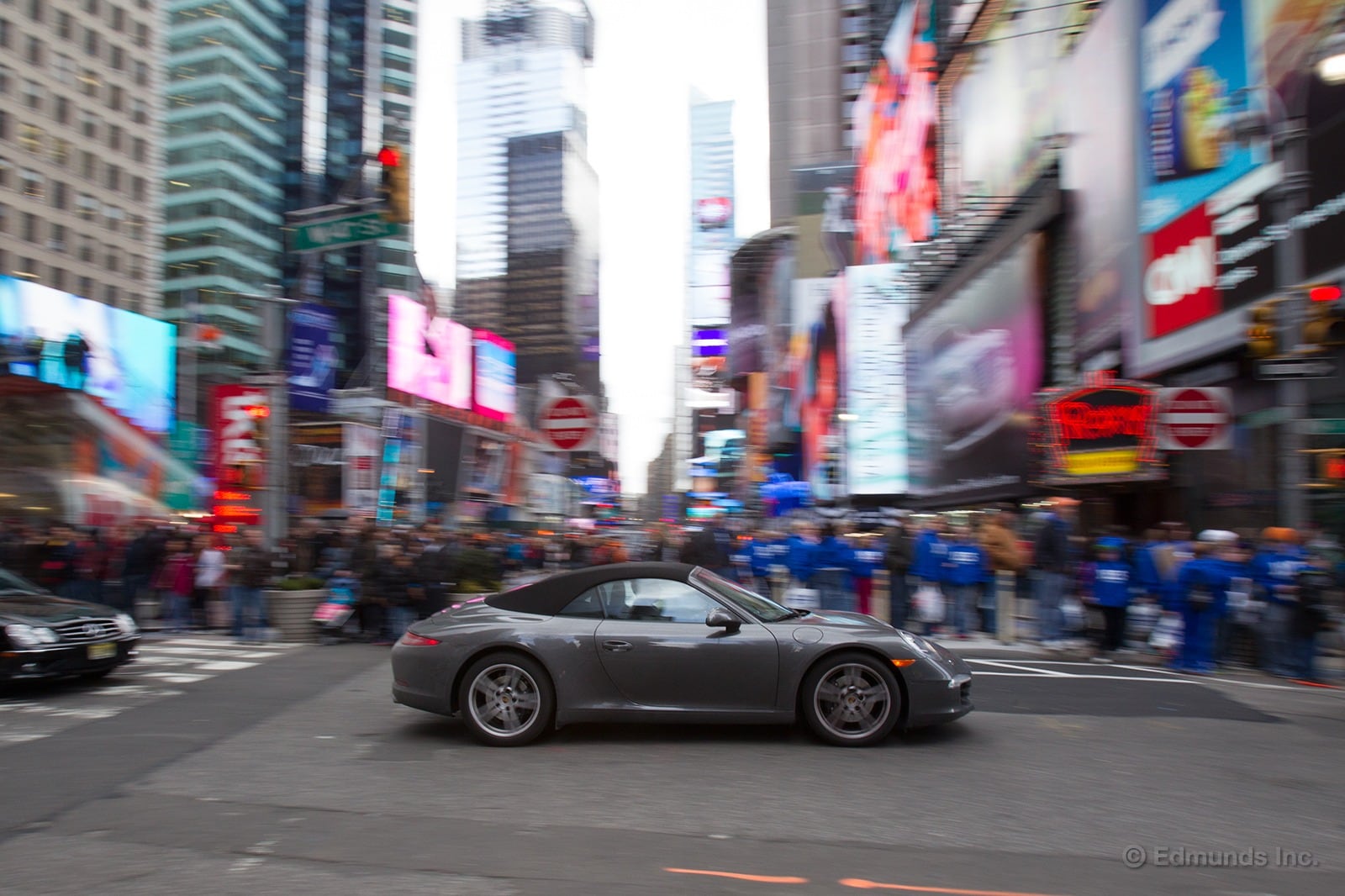
We've all seen pictures of sports/supercars in Manhattan and virtually chastised the owner for buying it purely for the status. After all, how fun can driving a fast car in the Big City be?
Answer: EXTREMELY.
It's only about 2 miles from Erin's hotel to the Jacob K Javits Center, home of the New York Auto Show and from there, 1.2 miles to New York's Times Square. And in our 2013 Porsche 911 with its 19s and winter tires, they were some of the most fun miles I've ever driven.
NYC is full of cars, yes, but most of them are slow, lumbering cabs. They're used to owning the road with size, boldness and a complete disregard for the exterior condition of their car. They are not used to a small, athletic car beating them at their own game.
Everything that makes the 911 great on a track or on a mountain road makes it great in NYC: You can squeeze in the smallest gaps. You can beat everything off the line. And because pedestrians think you're a banker who already doesn't care about people, pedestrians and bicyclists have some sort of internal fear/respect for a Porsche on the streets of NY. Best of all, the new 19s take a lot of the crashiness out of the suspension. If I didn't get a flat here, I was convinced I wouldn't get one for the next 3,000 miles.
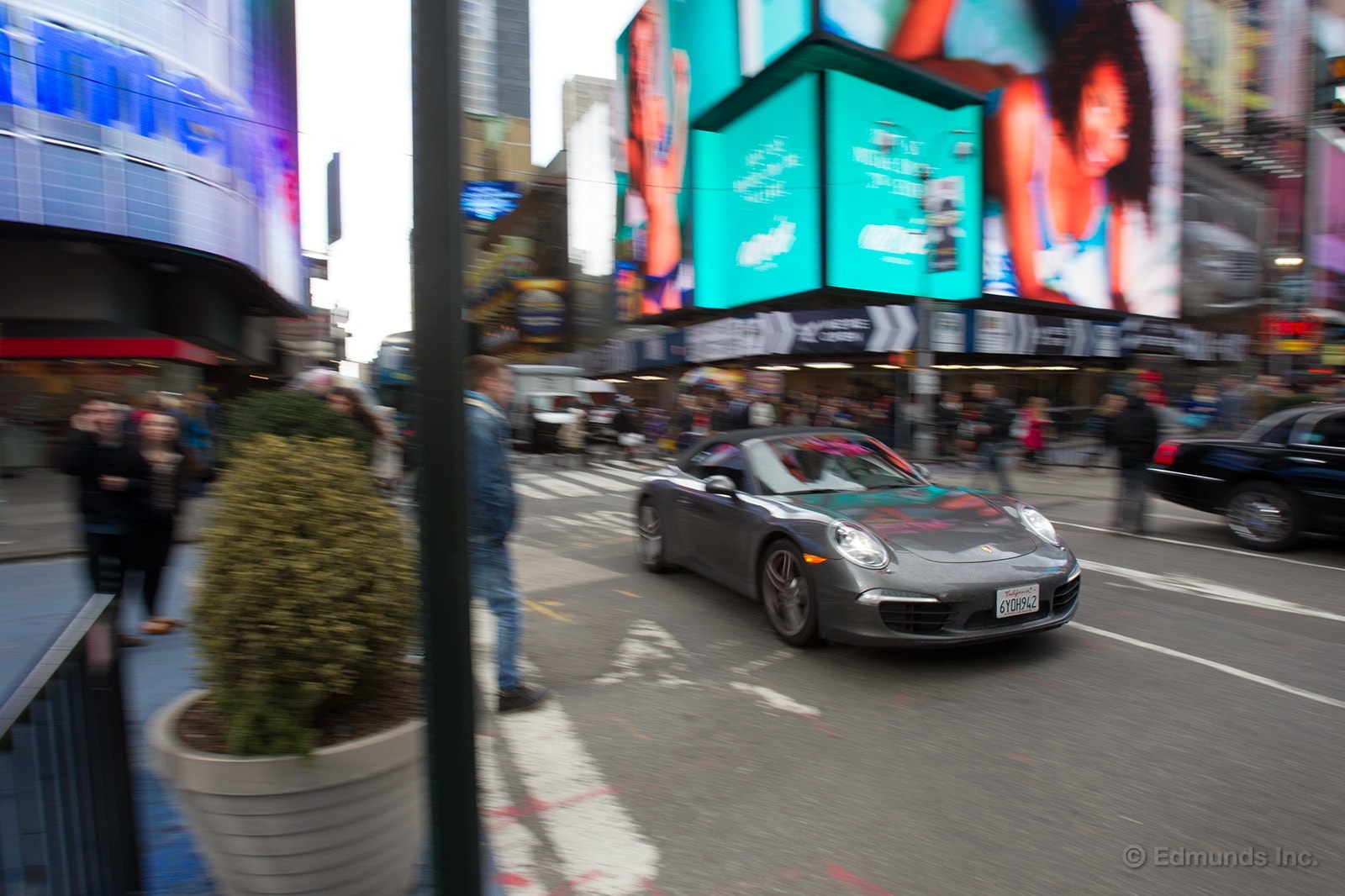
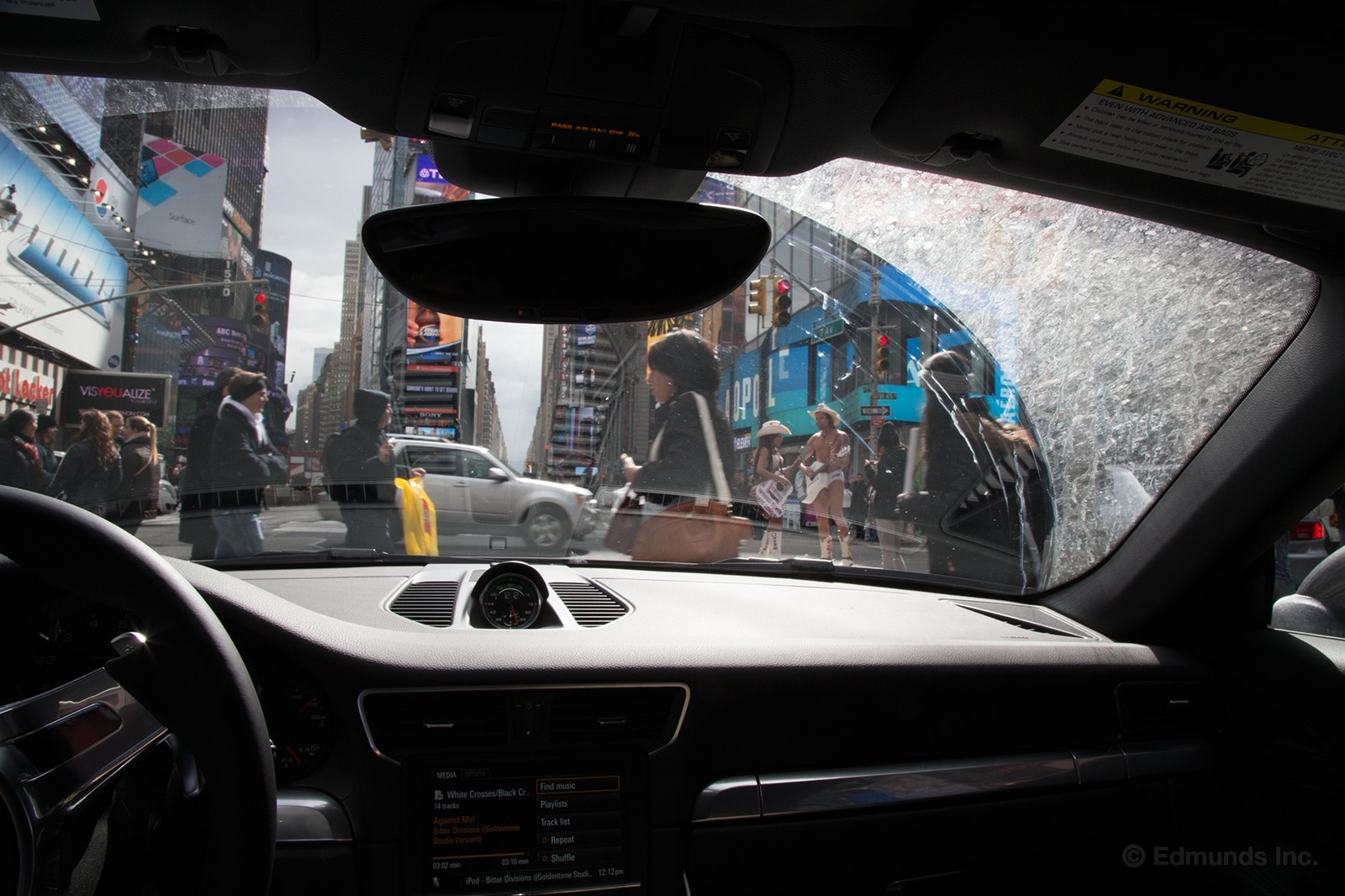
As you can see, despite the time crunch, Scott and I made it to Times Square and got the shot. (He stood out in the freezing rain, I put the top up — don't want to damage the interior, right?) After that, it was time for me to start this trip.
But instead of going straight back to Los Angeles, I decided to take a quick detour to New England. It made sense at the time.

I'm still not sure if it was worth it. Jacobs and I got the shot, but it cost me a safe exit from Manhattan. Traffic getting off of that island, if you hadn't heard, is a bit of a nightmare, especially if you're heading north into the 'burbs of Connecticut.
That's right. I was going north. Instead of simply heading back to L.A., I was taking a bit of a detour. My Mom's birthday fell on day 2 of the 2013 New York International Auto Show and, well, it's only a 4-hour drive...
While I'm from New England, I live in L.A. now. I'm used to traffic. I get traffic. I'm okay with it. Plus, our 911 has the PDK. Easy-peasy, right?

Maybe not.
The only time I've seen traffic this bad in L.A. was when President Obama came to town to beg for money from rich folk and decided it was in his best interest to shut down every road going east-west for, oh, the entire length of L.A. At least one time when that happened I got to see Marine One fly over my apartment.
Getting out of Manhattan was a nightmare, but did reveal one quirk about the Porsche: When it gets hot — like, 6 hours of bumper-to-bumper traffic hot — the PDK gets grabby.
I stopped off for coffee somewhere in Connecticut and, during normal decel-downshifting, the PDK didn't slip its clutches so much as it abruptly engaged them with little/no regard for smoothness. Think a novice driver trying to work a manual. Think someone with zero mechanical sympathy. Think clunkclunkclunk.
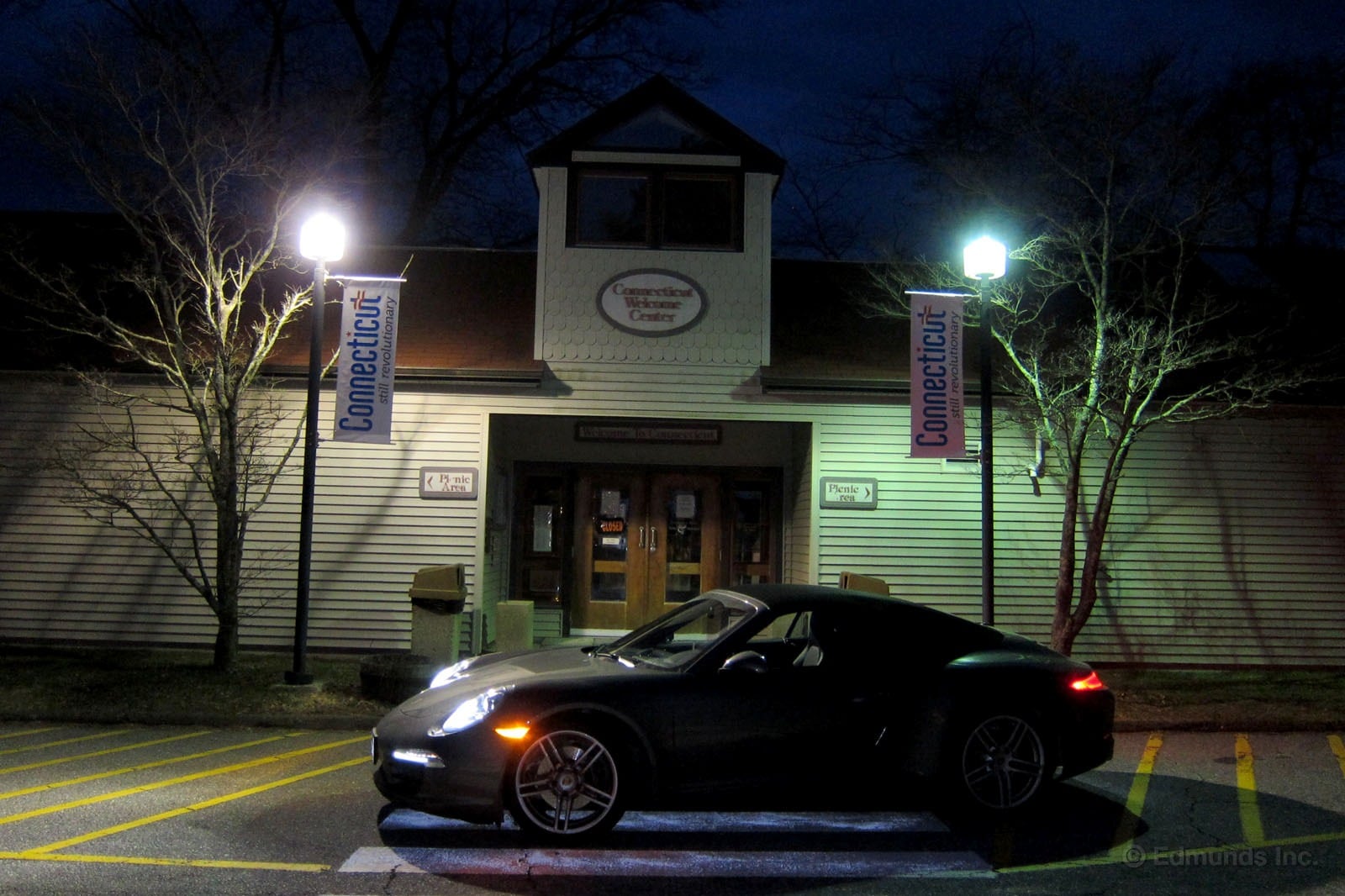
I let the 911 cool down (there were no overheating indicators on the IP and everything seemed in order) while I refilled my energy tanks with a few cups of scalding McDonalds Joe and then hit the road again.
The brief route back to the highway showed that my patience was rewarded. Not only was I pleasantly caffeinated, but the PDK's behavior had returned to normal. Traffic had also returned to normal and from here it was a straight shot to Massachusetts' North Shore.
Okay, I may have made one quick stop.
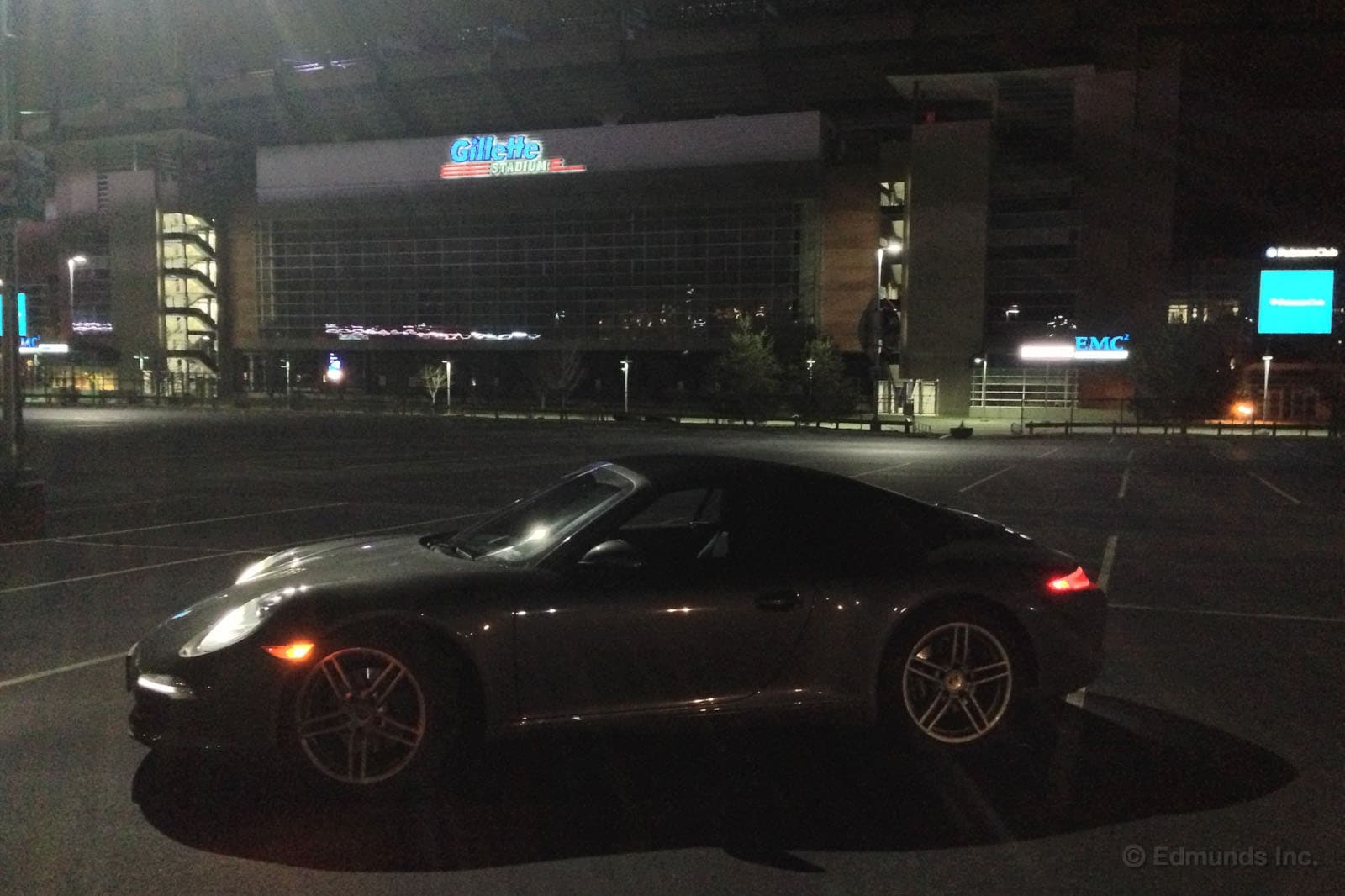
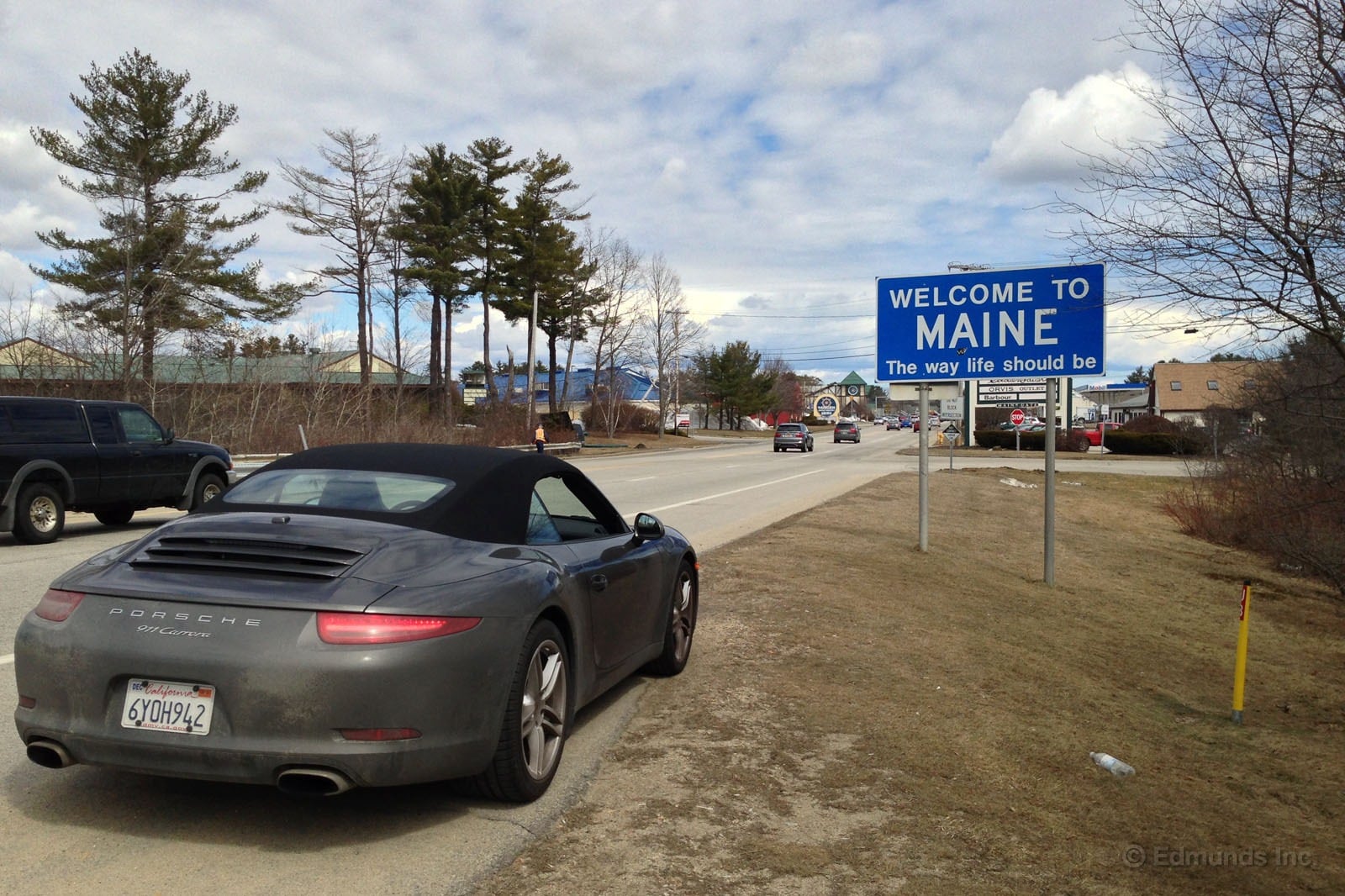
The danger of showing up, unannounced, to your mother's house on her birthday with a shiny new 2013 Porsche 911 Carrera Cabriolet is that she may think it's a surprise gift.
Good thing she knows I'm a journalist.
Still, the six-hour drive to northern Massachusetts was worth it. She hadn't seen her only child in quite a while, and I hadn't terrified her via a car with launch control in, like, ever.
I told her I'd take her to lunch. A spot up by Kittery. I told her we could put the top down and take the coast up.
I failed to mention what 350 horsepower in a Porsche was actually like.
Launch control in our 911 is outstandingly easy: While holding the brake pedal down, floor the gas. Do it right and the display changes as the revs hold steady. Sidestep the brake and hold on.
The holding on part is more of a technicality than an actual requirement. There is zero drama here. Even on the Pirelli SottoZero winter tires, there's only a scratch of wheelspin and then acceleration punctuated by the PDK's rapid-fire shifting. It's effective, fast and my mom HATES IT. There was screaming. There was random grabbing looking for a handle. I should've set up a GoPro.
Hey, at least I didn't cover the road with rubber like I did as a teenager. Right?
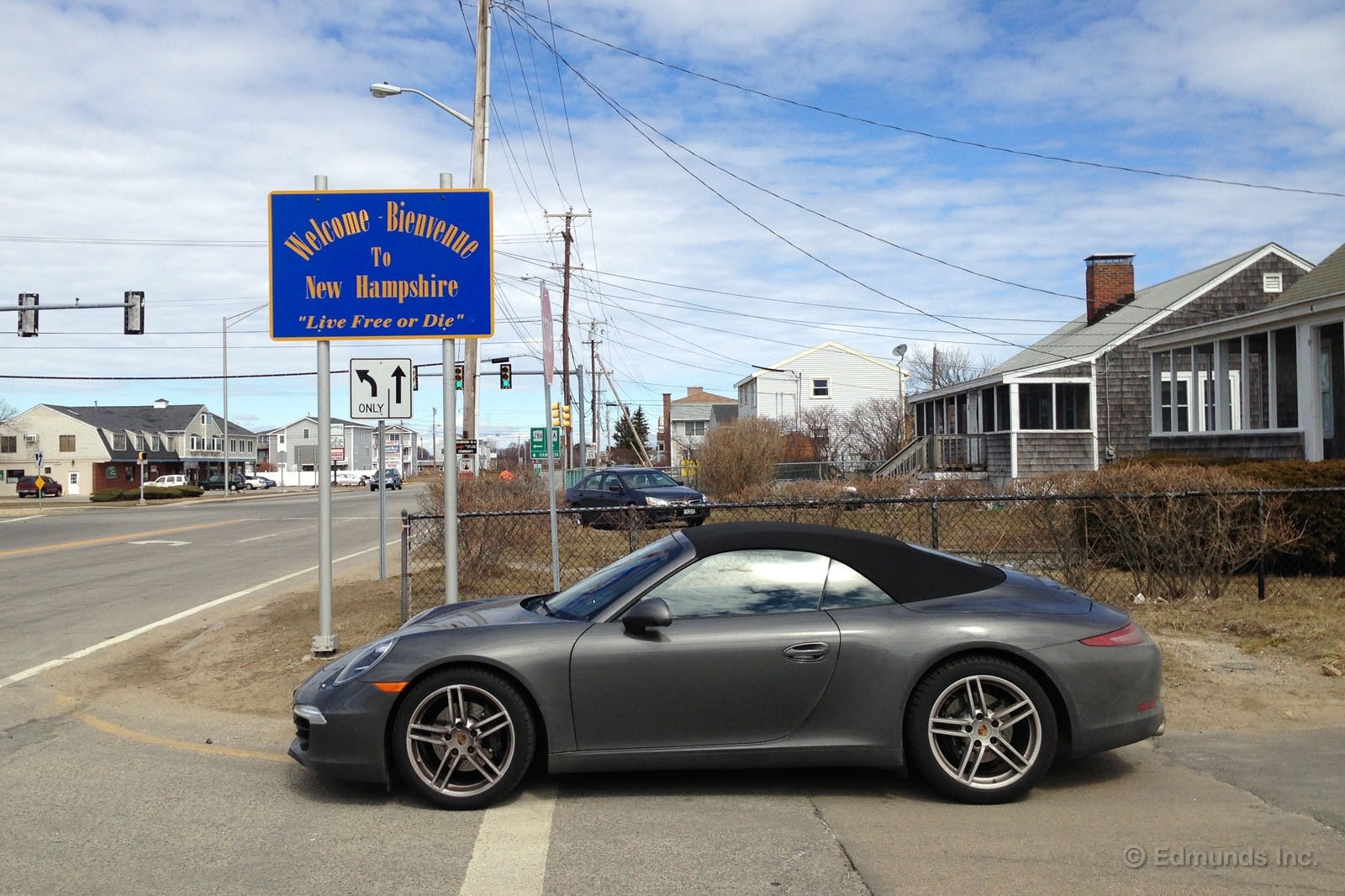
On this particular late-March day, the weather was nice enough to make the drive with the top down, and we tried. Unfortunately, another one of the Porsche's weaknesses showed up: Even with the windows up and the wind-deflector deployed, cross-winds are a problem. Okay, this may not be a problem with the 911 so much as a problem with convertibles in general. Still, the biting wind forced the top up.
Oh well, I still took my mom to lunch in a Porsche.

The return trip was a far less eventful highway slog as my mom commented on how nice the seats were and asked how I managed to get a car so dirty. I blamed Erin.
Later that night, I hoofed it down to Cambridge where I'd spend my last night before officially starting this road trip.
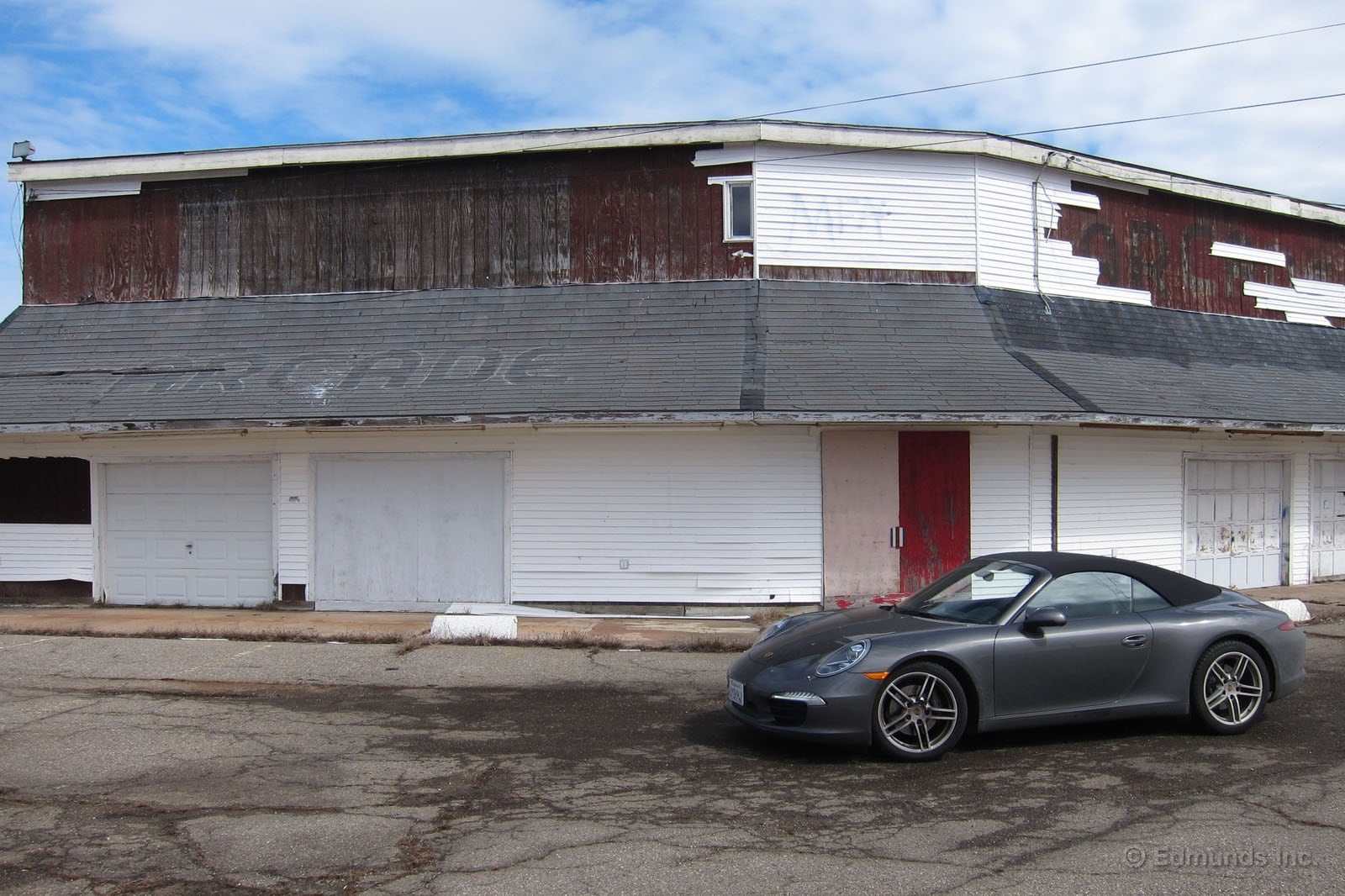
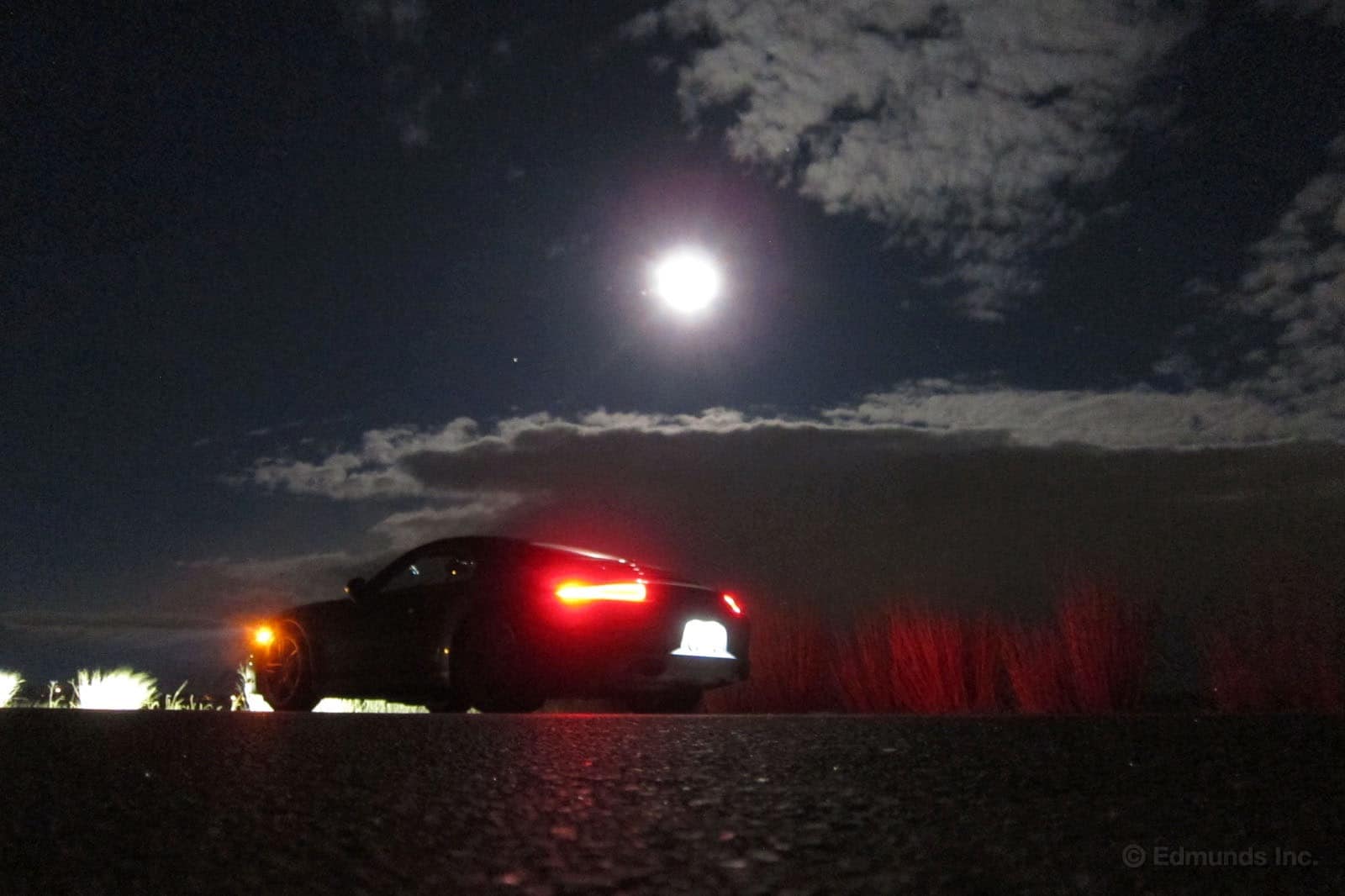
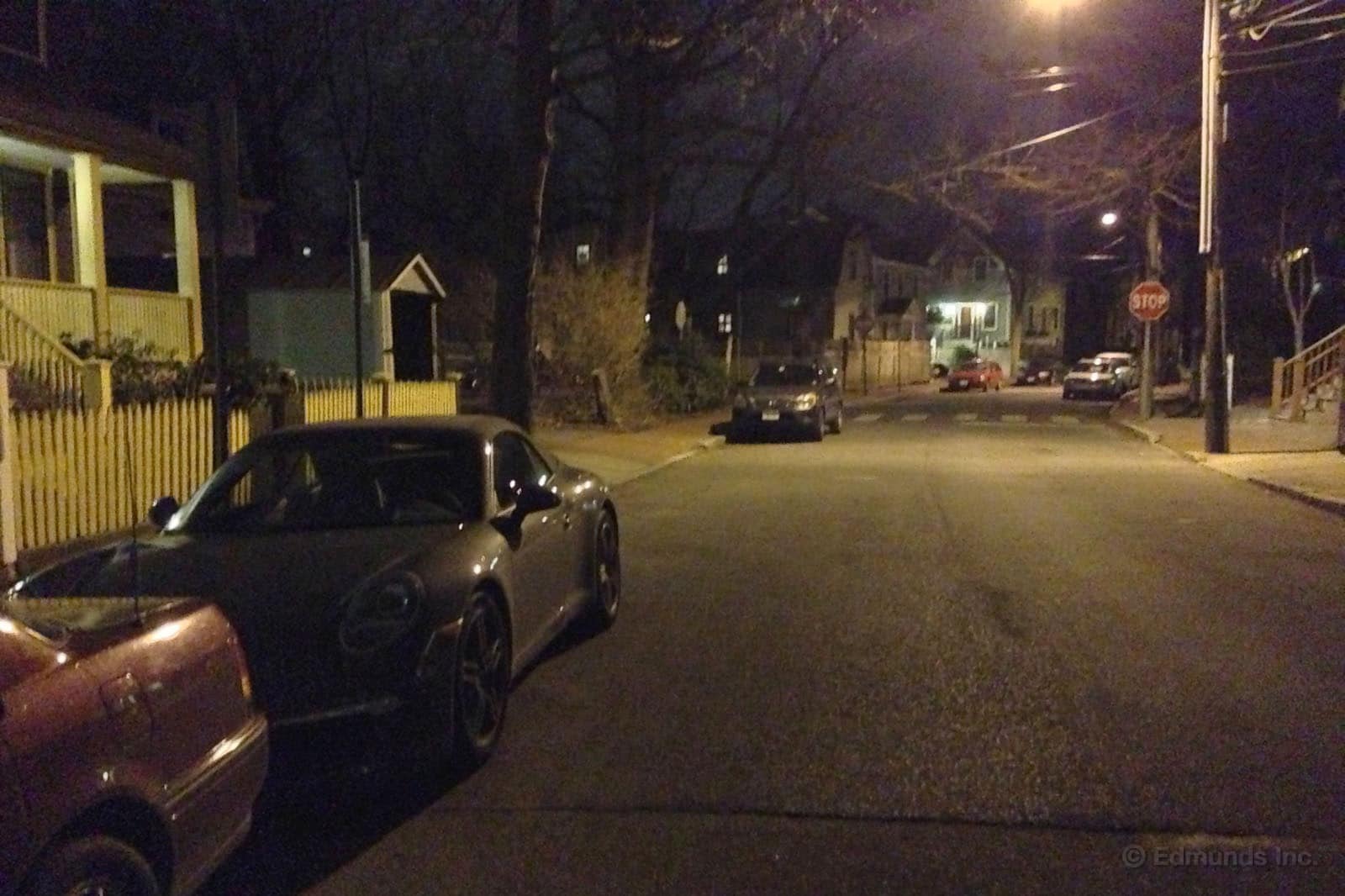
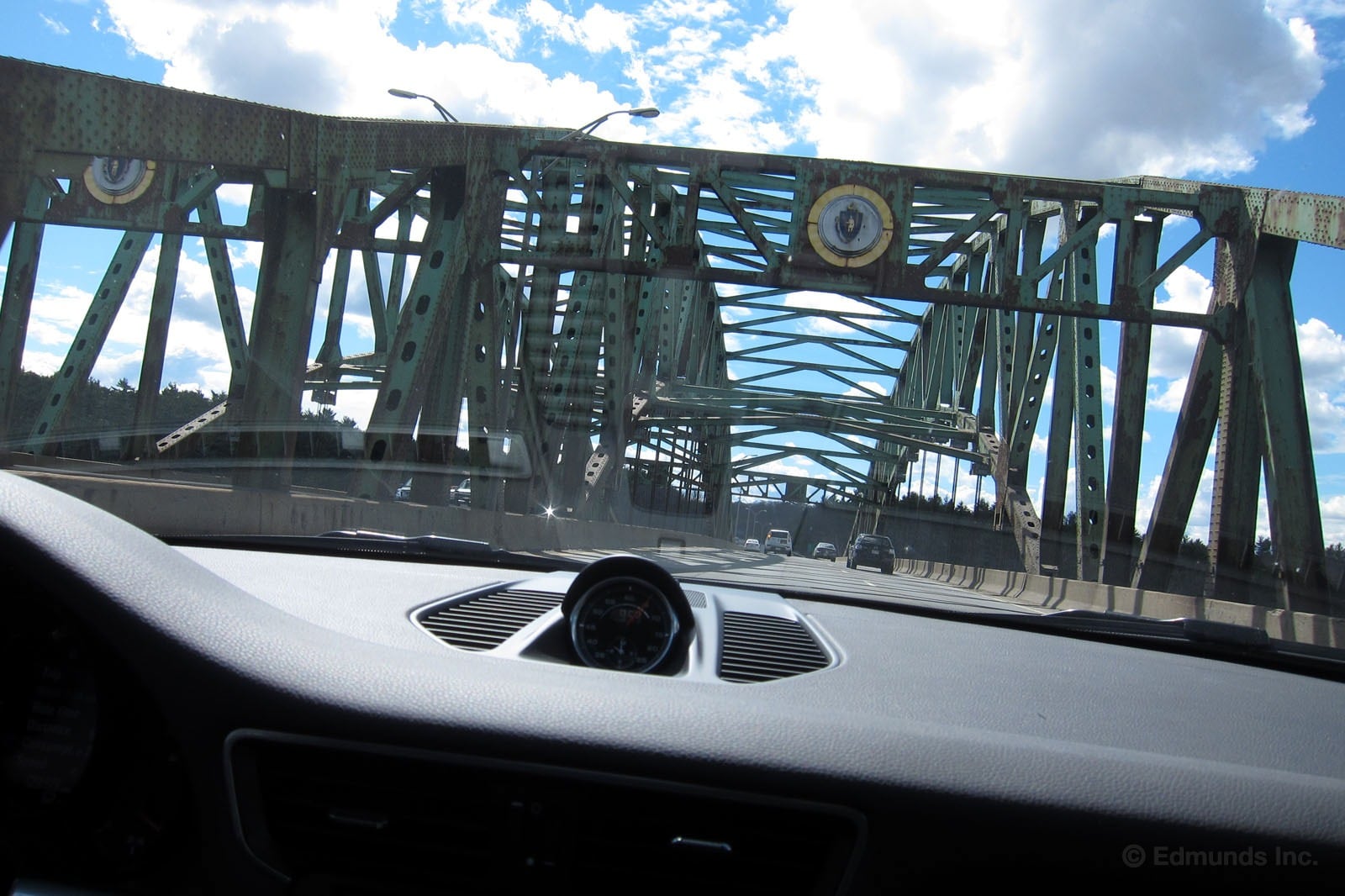
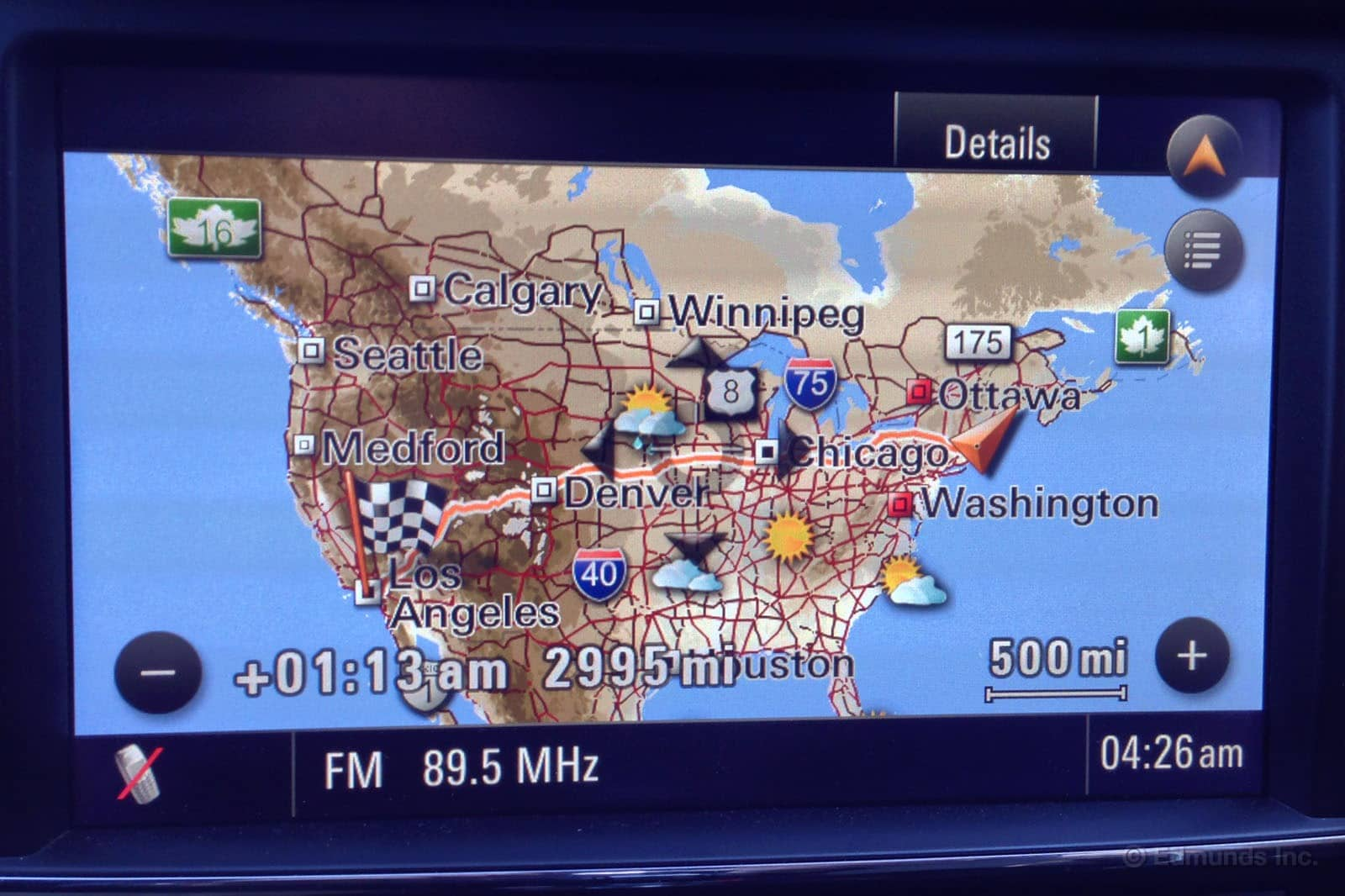
There are good ways to start a road trip and there are not so good ways.
I spent the night in Cambridge, MA before leaving on my route back to Los Angeles in our 2013 Porsche 911 Carrera Cabriolet. The apartment was 2ish miles from the Mass Pike and had ample, safe street parking. Perfect.
Except that there's an invisible line somewhere on this street that separates the towns of Cambridge and Somerville and, with my Cambridge parking permit, I was on the wrong side of that line in the mist.
I loaded my luggage into the frunk and, as my carry-on is exactly the same size as Erin's, it fit exactly the same with no room for my briefcase. I set that down on the curb, took pictures of every street sign within 200 feet (none said Somerville, two said Cambridge), got back in the car, set the nav and started my 2,995-mile drive.
I thought the trip was starting out on only one bad note. You, dear reader, via reading it a week after it happened, have noticed that the trip actually started out on two bad notes.
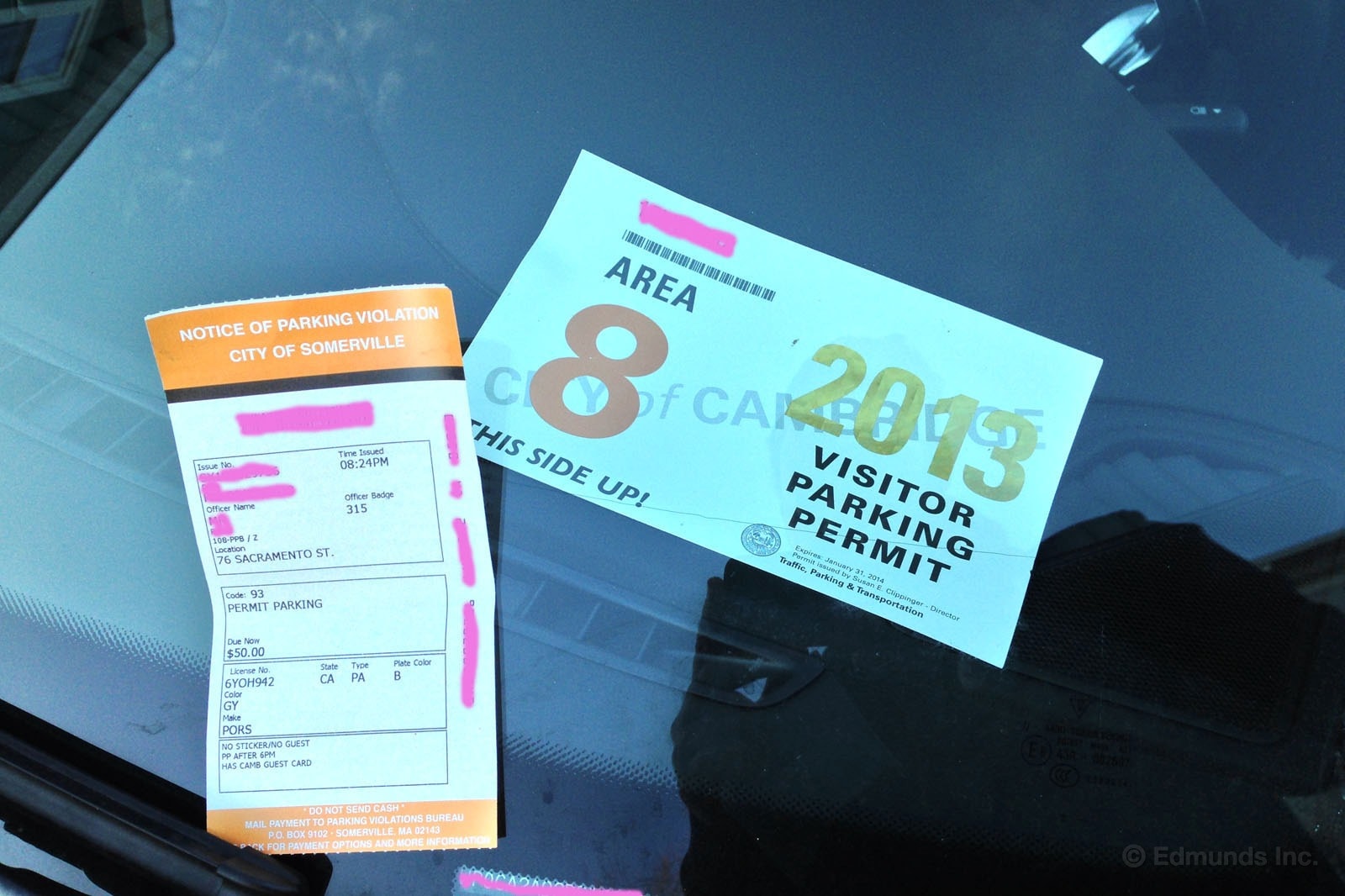
The trip to the Mass Pike took the 911 through some of Boston's worst streets. Like on the first day when I was tearing through Manhattan, the Pirelli SottoZero winter tires on their 19-inch wheels proved their worth. No punctures. No warped rims. No back-snapping impact on the myriad potholes. It's not snowing, but it's definitely below freezing and these tires have plenty of grip.
"Dollah twenty-five." The toll-taker says. Adam Sandler bits from the early '90s rush through my mind as I stifle a giggle. As anyone who's driven the mass-pike can confirm, this was the most exciting part of the next few hours.
The Massachusetts Turnpike, Interstate 90, is a phenomenally boring 138-mile stretch of road with an infuriatingly low 65-mph speed limit (more mind-bogglingly, it's 55 at the start) and drivers on this horrible road set cruise control to 64 mph. Oh, and there are cops. Everywhere. Marked. Unmarked. Anything they can do to get an extra buck out of the citizenry, they'll do. It's a nightmare and being back on it makes me glad I moved.
But because this road is so painfully slow for a modern, relatively straight freeway with good sight lines, it gave me the opportunity for some top-down motoring. I pulled off at a service plaza somewhere near the middle and kept the top down into New York. The toll taker in NY was not an Adam Sandler bit but he was extremely interested to know why I was driving with the top down in the winter.
Good question.
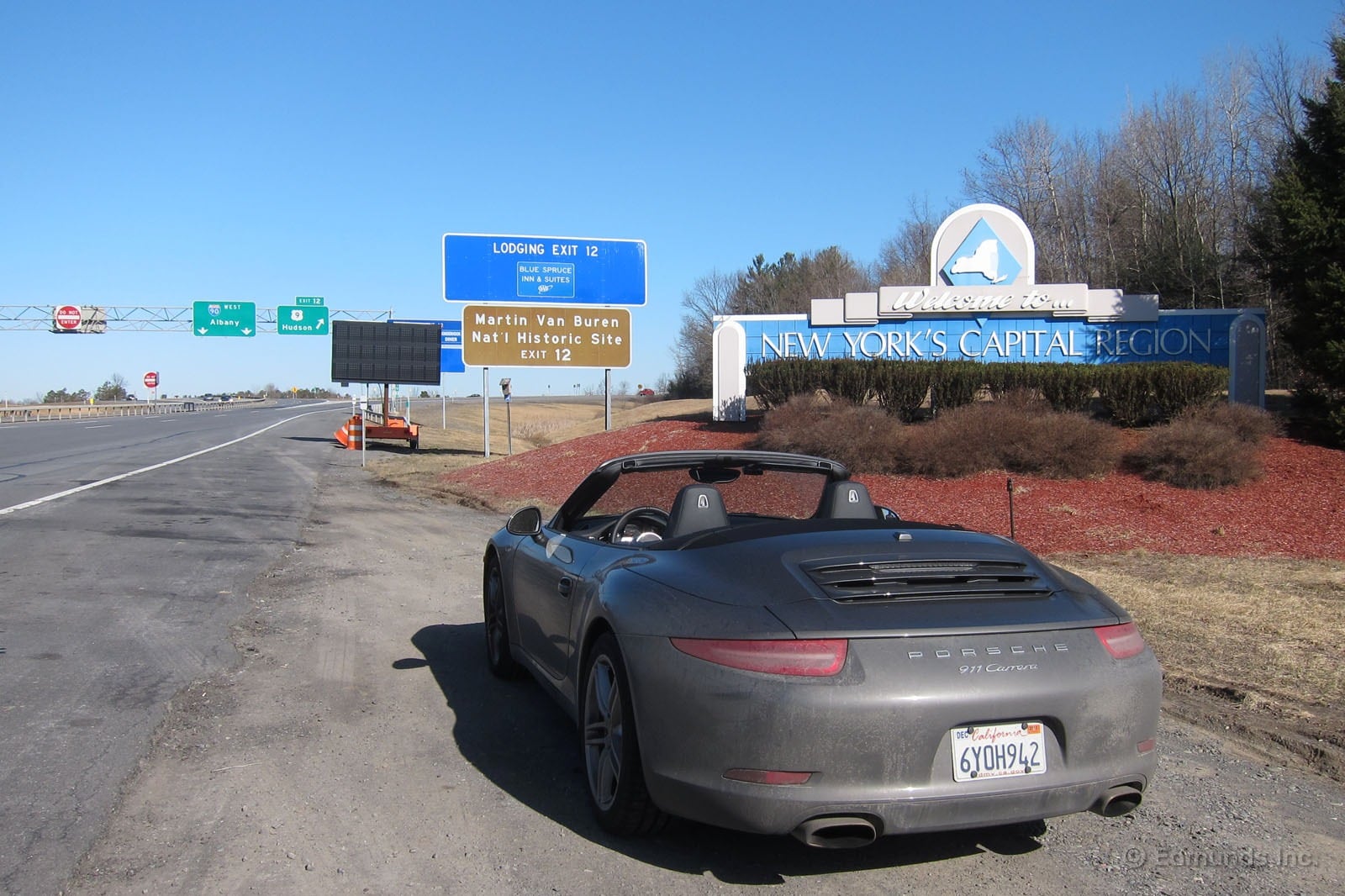
It was during this drive that I realized A) I didn't bring enough sunblock and B) that the 911's base stereo is not up to the task of cancelling out wind noise. For only $2,120, we could've upgraded to a 445-watt 12-speaker Bose stereo. Or spent $5,290 on an 821-watt Burmester kit. Either is surely better than the 9-speaker, 235-watt stock system which gets extremely tinny at the high volumes required for actually hearing it. Even with the treble set to its lowest level, it was still sub-par.
Thankfully, speed limits increased in New York (or at least people started driving faster) and the top went back up.
And then my radar detector crapped out.

The radar detector dying and the annoying stereo were quickly forgotten somewhere around Utica (I remember thinking about steamed hams) when I realized that I'd left my nice Tumi briefcase — filled with computer, iPad, iPod, digital camera, hard drives, headphones and more — on a curb in what may-or-may-not have been Cambridge.
I tested the Pirelli's stopping ability as I pulled off of the freeway as fast as possible. Screaming at myself at highway speeds didn't seem safe.
Thankfully, that 'hood is full of very nice people and my stuff was still exactly where I left it. The next day it would be safely in the hands of FedEx.
I drove the next few hundred miles in a bit of a funk and I put the top down again because being deaf seemed better than being mad.
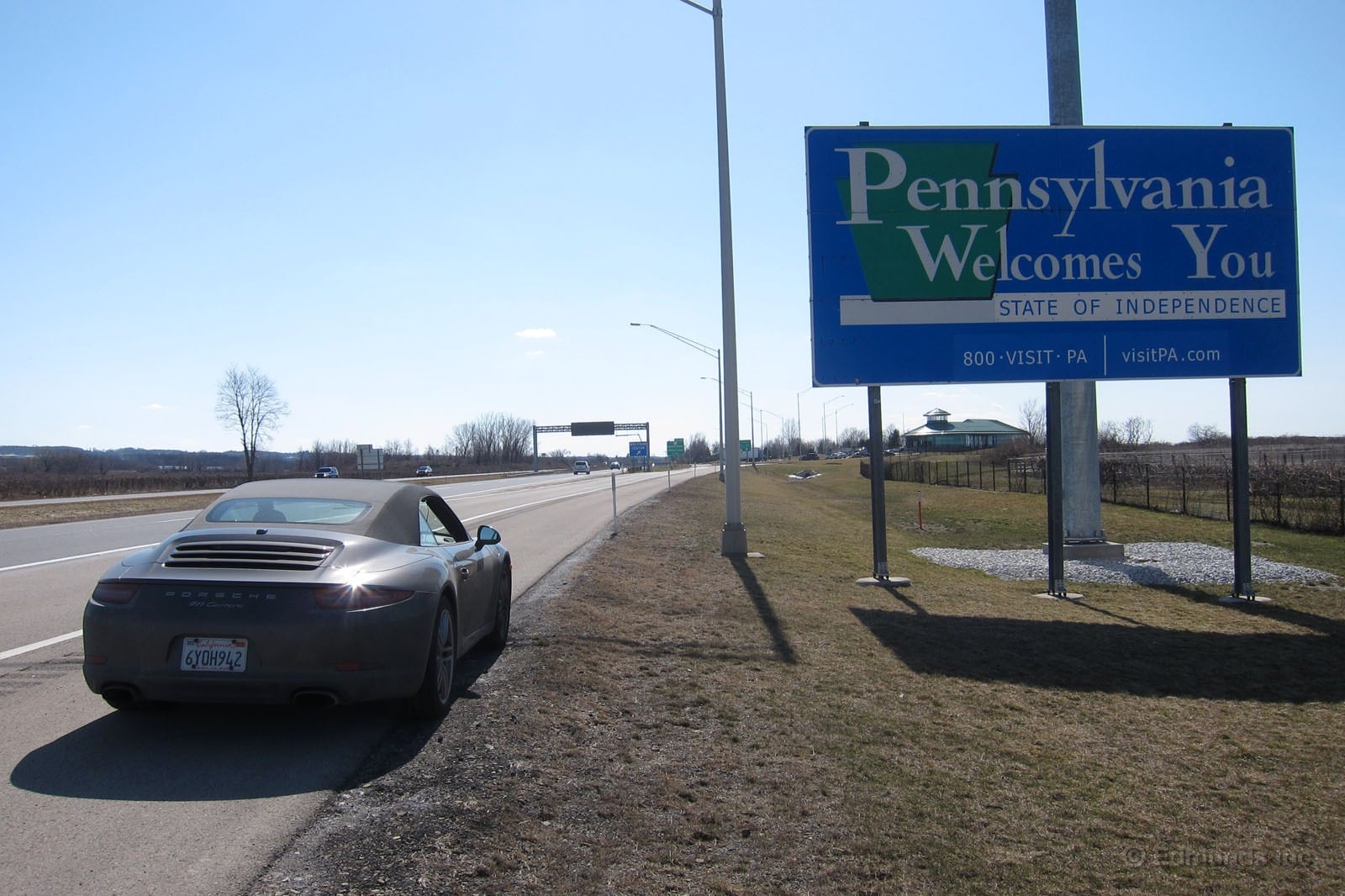
And then, something like 800 miles into the first day's drive, cruise control died.
Our 911 doesn't have some fancy (helpful) radar-based cruise control. Just the normal kind, but still, it was helpful. The 911 has a heavy throttle pedal and holding a steady 70+ mph speed requires deliberate effort.
This additional effort turned out to be a blessing. Having to pay just a little bit more attention kept me in the game. My head was fresh and I wasn't the least bit drowsy when I pulled into a hotel in Illinois, 1,016 miles from where I started earlier in the day.
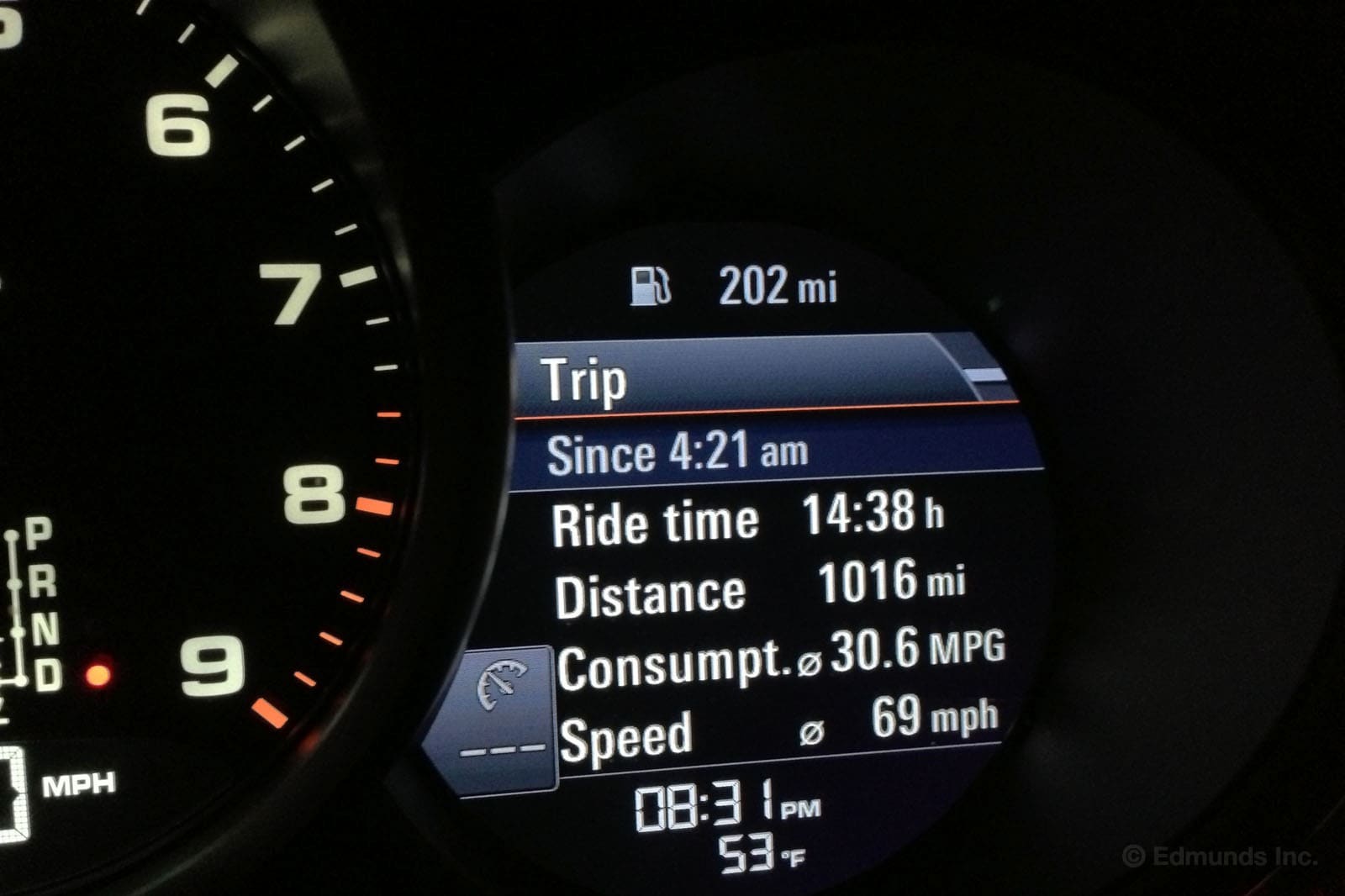
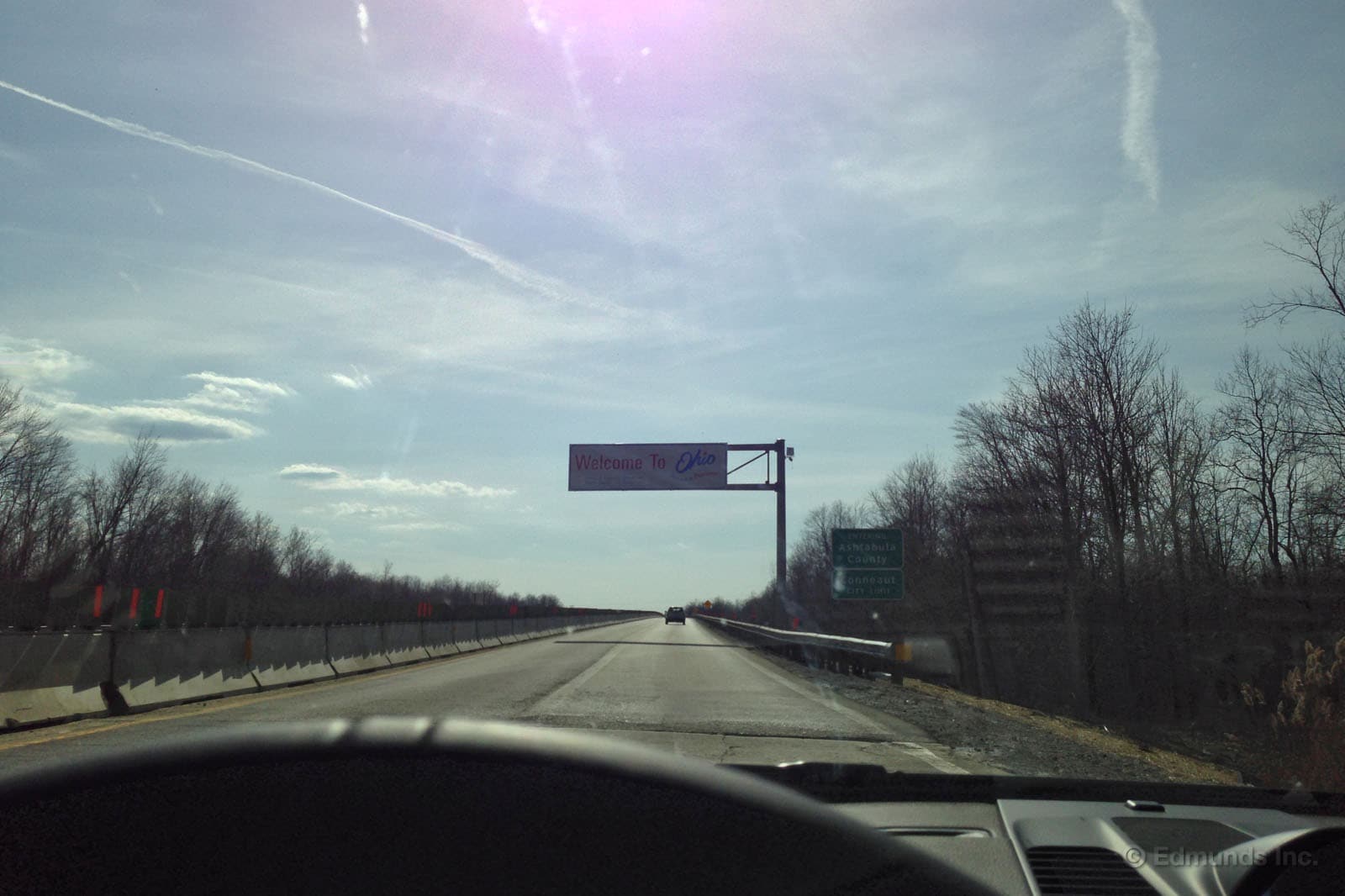


I am the polar opposite of Erin Riches. She plans things like road trips very thoroughly. She looks at maps, sets goals and hits them. I sort of assume I'm supposed to be heading roughly west and figure out the rest on the fly. So when managed 1,016 miles on day 1, I was pleasantly surprised.
When I sat down to dinner that night, I texted Kurt and asked if we'd ever done a 1,000-mile day during our Jaguar XF Supercharged Road Trip to Alaska. He confirmed that we hadn't, I blamed the slow photographer.
Not only did I feel smug at my small accomplishment. I felt great. I was awake, alert, and had absolutely zero butt/back/leg/hip/whatever pain from sitting in a car for 14-ish hours.
It's almost like they design these things for endurance racing.
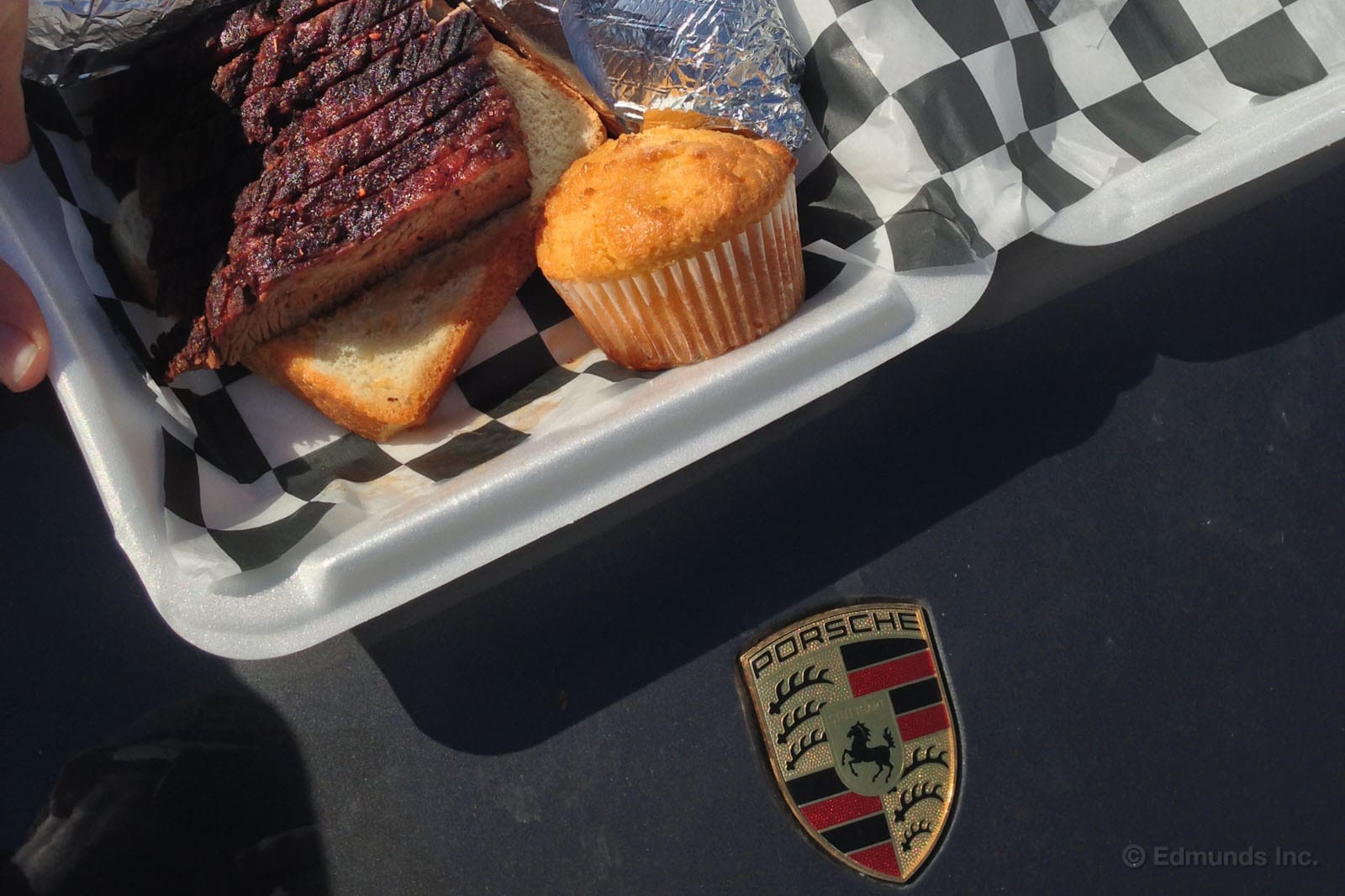
Over my Styrofoam box of takeout, I decided to take a page from Erin's book and do some planning. Good thing, too.
The idea was to head slightly north out of Indiana and hit a BBQ joint I'd heard of as I made my way towards South Dakota and Wall Drug. The following day was Easter Sunday in the off-season and all of my stops were either closed, or would be closed by the time I'd roll through town. Drats.
Time for a new plan.
Highway 80 isn't the most fun road in the world, but it's fast and, bolstered by my 1,000-mile triumph, I was kind of into making time. Also, Riches said she thought the car could do 500 miles on a single tank of fuel and I was kind of into breaking that barrier. I woke up naturally at about 5:30 am and got a move on.
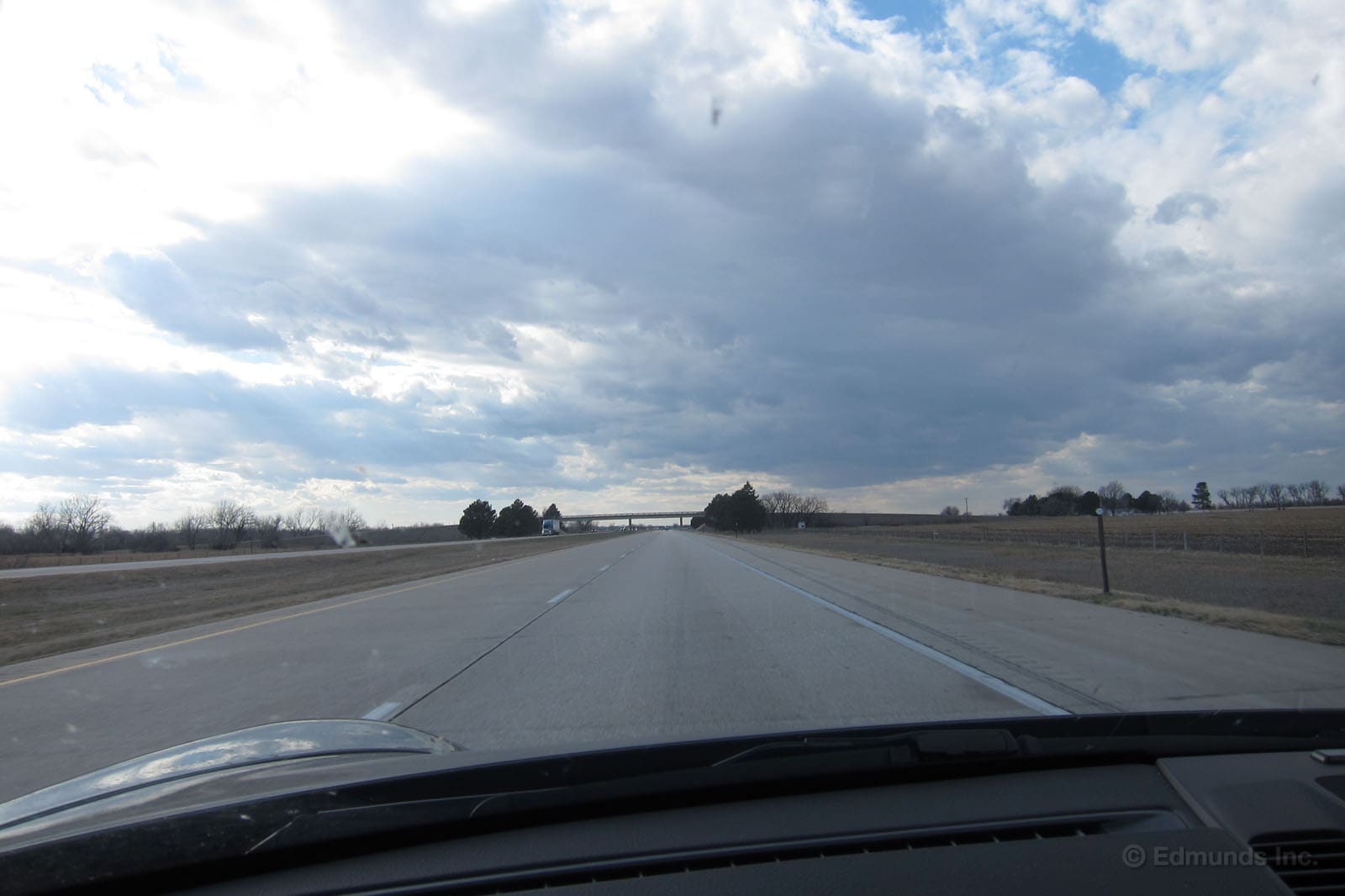
In Iowa, a California license plate apparently says "Hey, come talk to me!" (I'd later find this is also the message in Colorado and Nebraska.) The first guy who approaches me at Iowa 80, the world's largest truckstop, asks if I drove it all the way out here. I hadn't found a cup of coffee yet, and had little patience to explain the story, so I just said yes. He was impressed, thought my car was "sharp" and told me to have a good day.
Guy #2 grabbed me on my way back to the Porsche. He was tall, willowy and weathered and probably the nicest human being on the face of the earth. We talked about farming and food and he said he loved San Francisco.
Our chat was eating into my goal of making time, but doing anything but continuing it felt rude. Finally, he broke away, told me to enjoy the weather on this unseasonably warm March day. It was 37 degrees.
If the old guy says it's nice, I guess I have to put the top down.
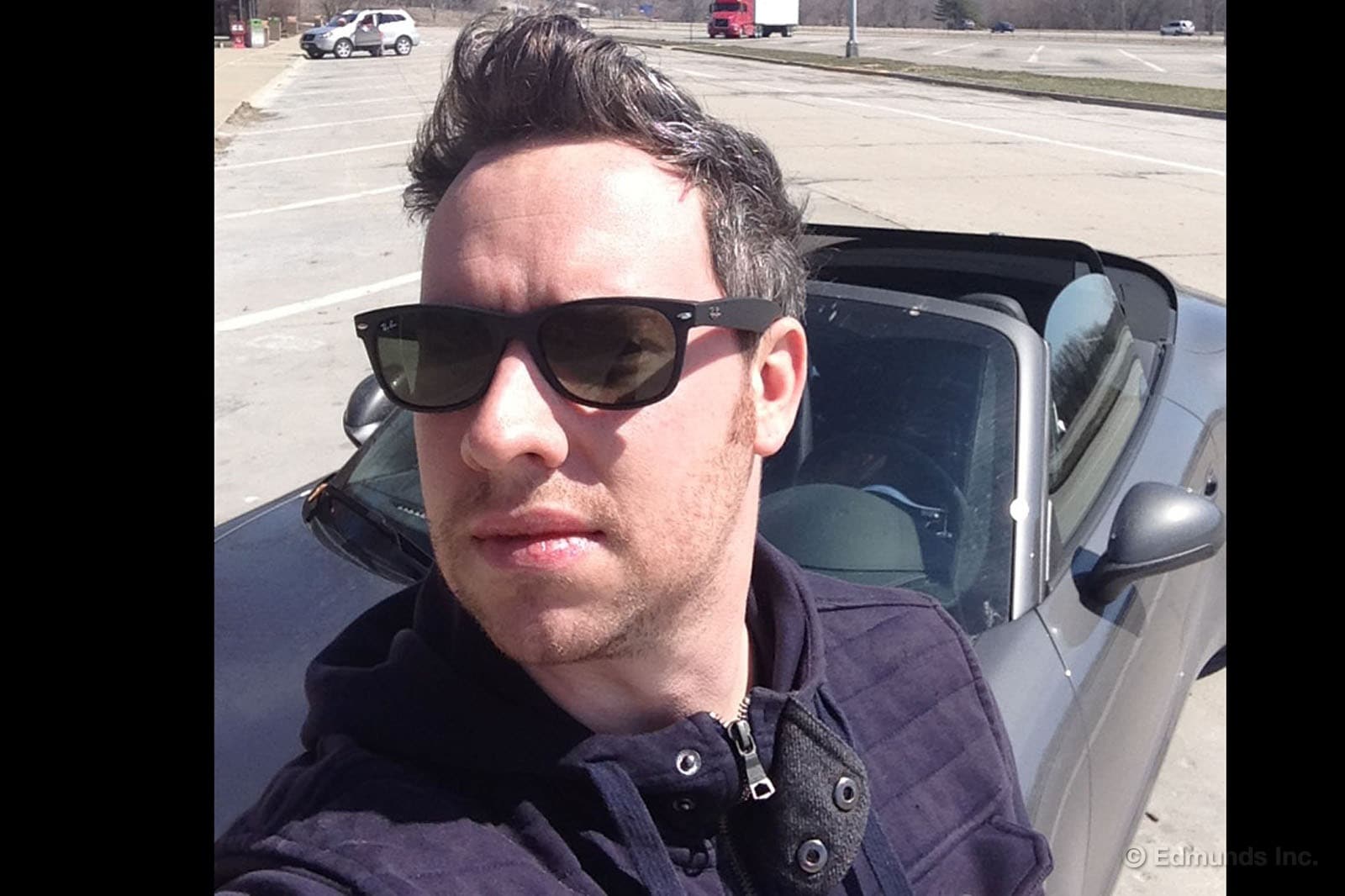
That's my face. That's what my hair looks like after doing 300 miles with the top down. What you can't see here is that, in this photo, I'm deaf.
Thankfully, it started to rain. Sideways. So I got to put the top back up.
When I pulled back onto the roadway, cruise control was working again.
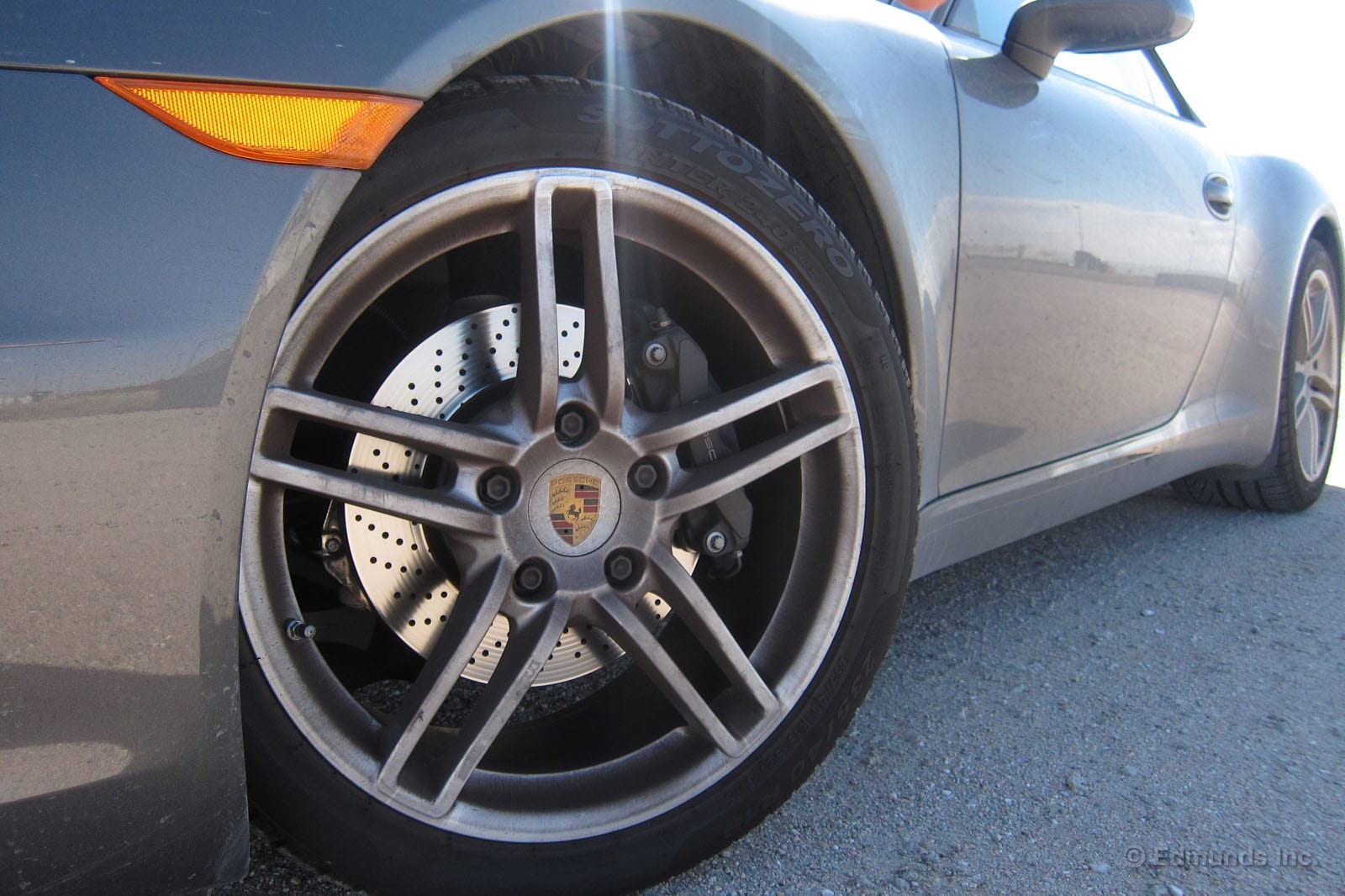
Until now, we've only discussed the good parts about the Pirelli SottoZero winter tires: the low-temp performance, the good grip in snow and the amount of abuse they can take on rough roads. Now let's take a moment to talk about one of the annoying parts of these tires courtesy of a Nebraska Highway Patrolman.
"Do you know why I pulled you over?"
(Don't say "California plates?" Don't say "California plates?" Don't say "California plates?") "No sir."
"Well, you were kind of wiggling around in your lane. Are you drowsy? You're clearly not drunk."
"Nope. To both. It's noon. I'm good. But I've got to tell you, these tires HATE the grooved surface here. They're huge winter tires with crazy tread blocks. They're a little loud. They follow every rain groove and rut and I've got to actually steer it in a straight line. And…"
"Okay. Okay. Boy, wow, did you drive this all the way from California?"
"Sure!"
"Looks fun. Be safe."
"Thanks!"
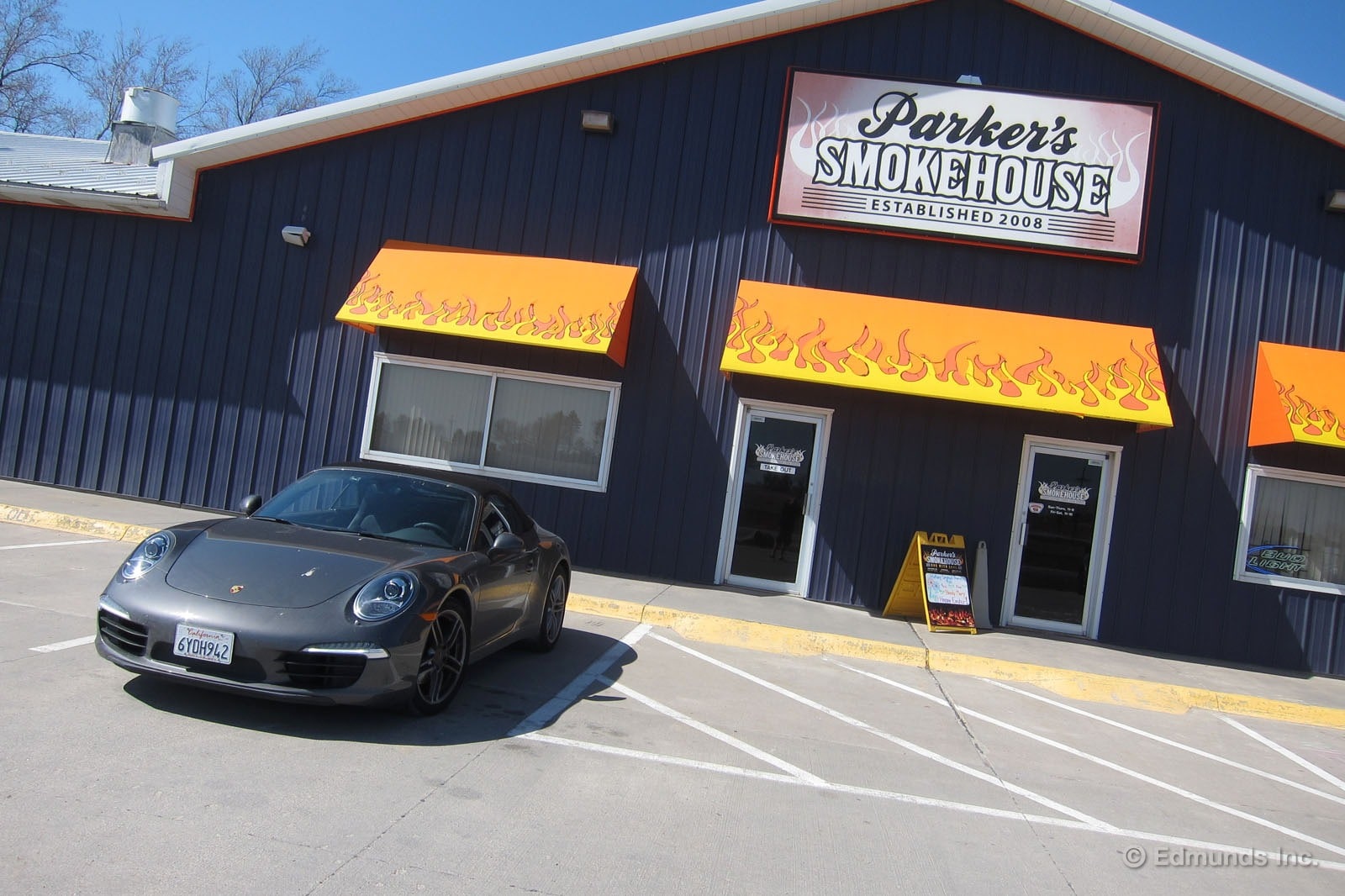
At this point, I'd been hit by two delays by super-nice Midwesterners and figured I'd add another one and hit a(nother) BBQ joint. I saw the sign on the highway and figured it'd be great. It was. I should have ordered a cup of sauce instead of an iced tea.
Full of meat, the next few hours passed quickly. Speed limits in that part of the world are mercifully high, 75 mph, and the traffic flows faster. Once again, 75 is simply too fast to drive with the top down on the 911 and I put it up on this 72-degree Nebraska day.

Welcome to the Midwest. Trucks get two lanes.
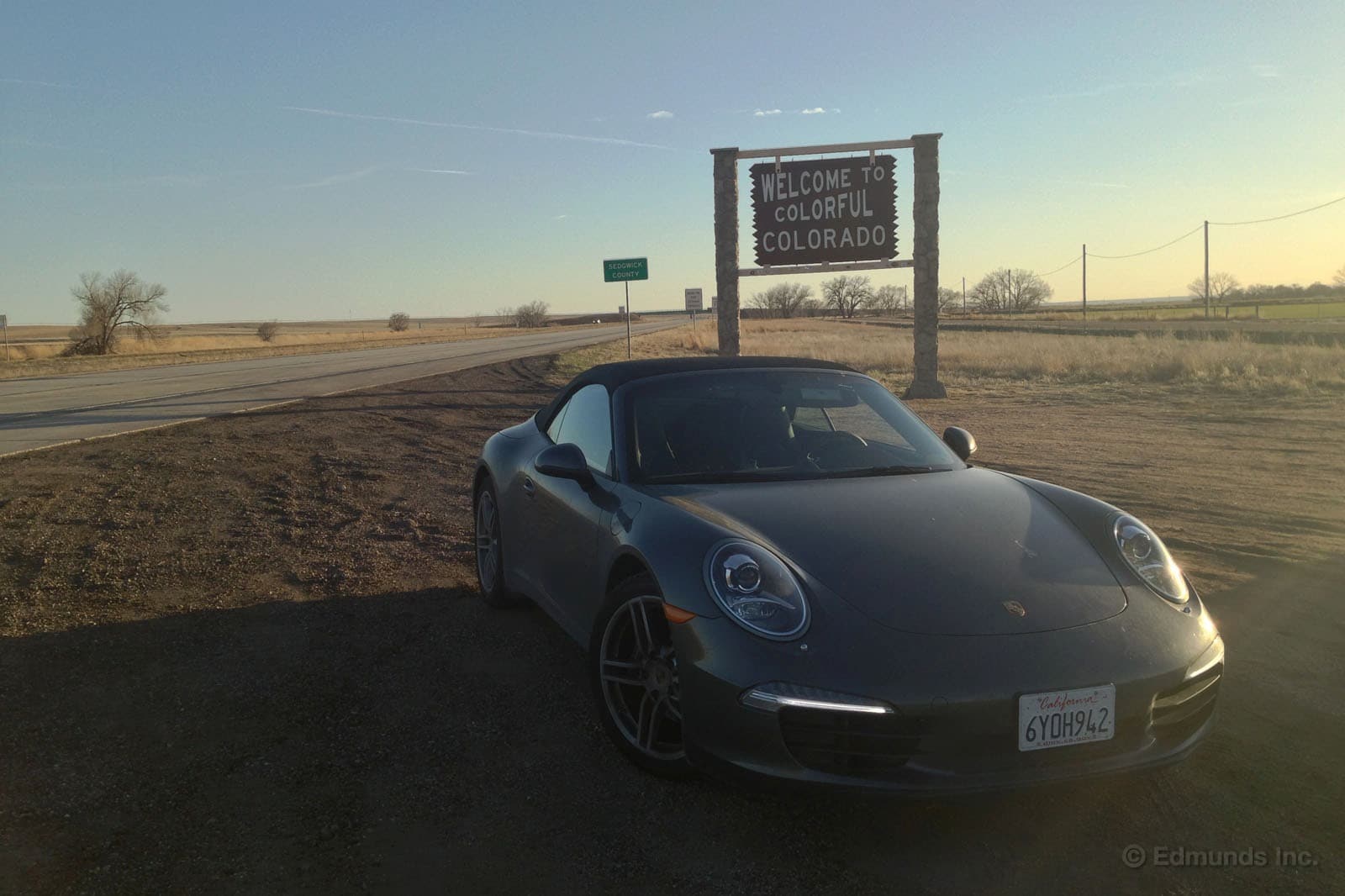
Colorado popped up sooner than I'd expected and, considering it was still light out, I figured I could do the 200 miles to Denver without a yawn. At this point I hadn't even cracked open a can of RealTree Brand camouflaged energy drink. (I now have this can in five shades of camo. Two from the Alaska trip, three from today.)
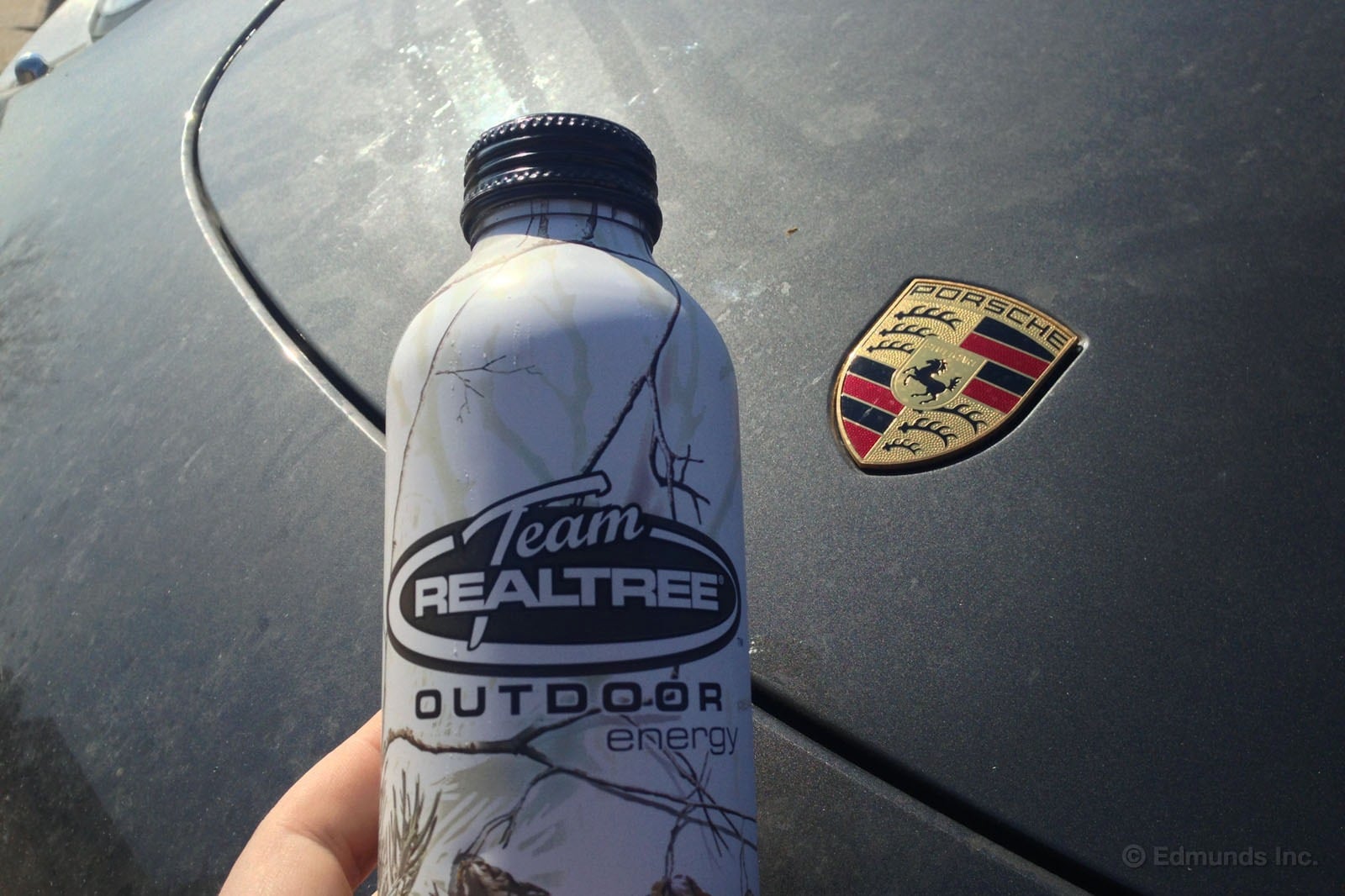
Like I assumed at the border, I coasted into Denver wide awake and feeling great. I can't stress enough how good the driving position is in the 911. Because the wheel doesn't extend terribly far, you need to sit quite upright and your arms just fall naturally into a perfect bend with hands at 10-and-2. The pedals, too, are deep in the footwell and require a firm foot.
The driving position isn't "relaxed." It's comfortable and active and keeps the blood a-flowin'.
I pulled in to get dinner just on the other side of Denver and saw the trip odometer reading 1,007 miles. After never having done a 1,000-mile day in my life, I'd now done two in a row.
There was a hotel next to the fast-food chain I'd picked for dinner. I'd done good. Might as well camp out for the night.

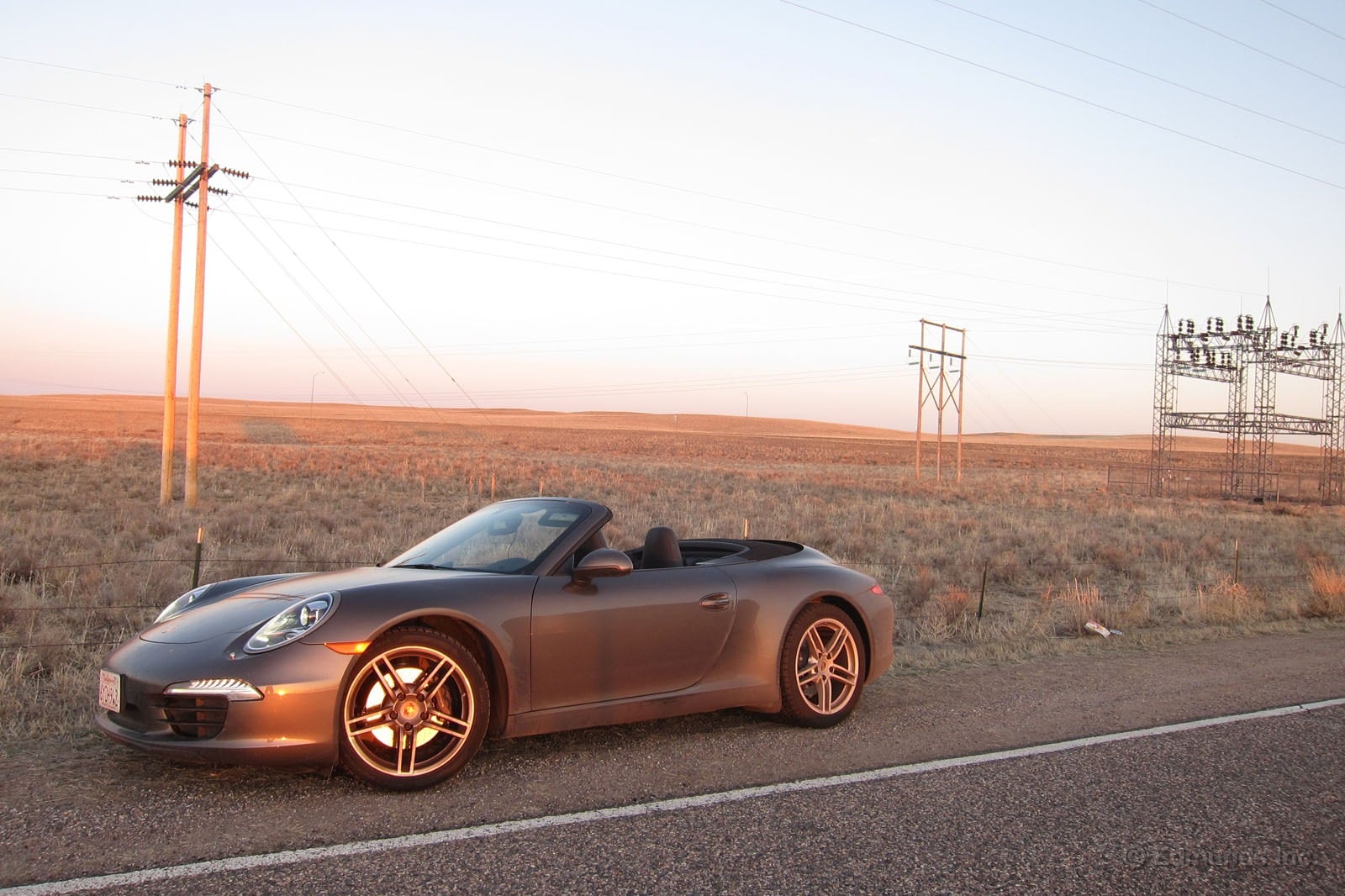
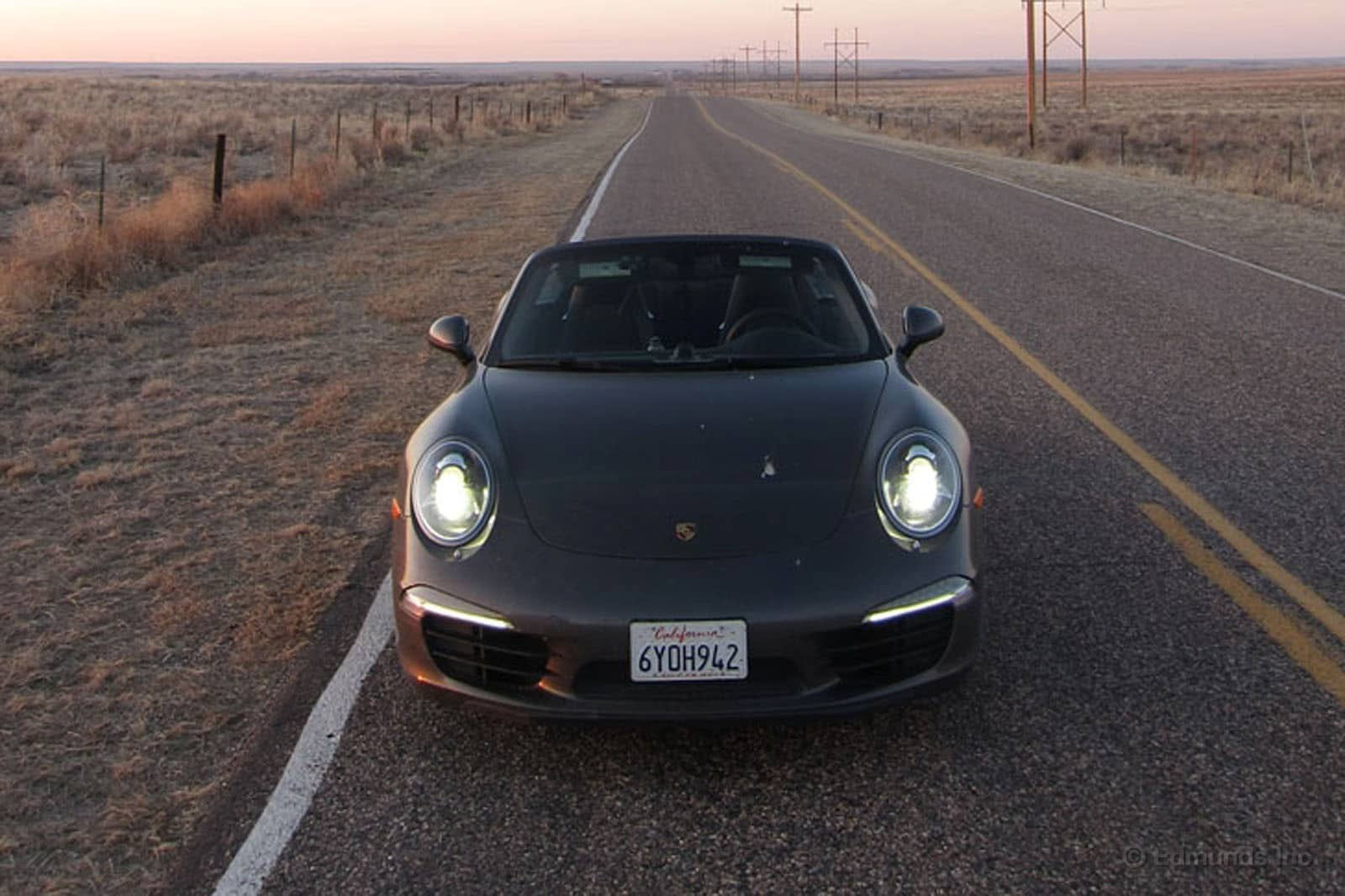
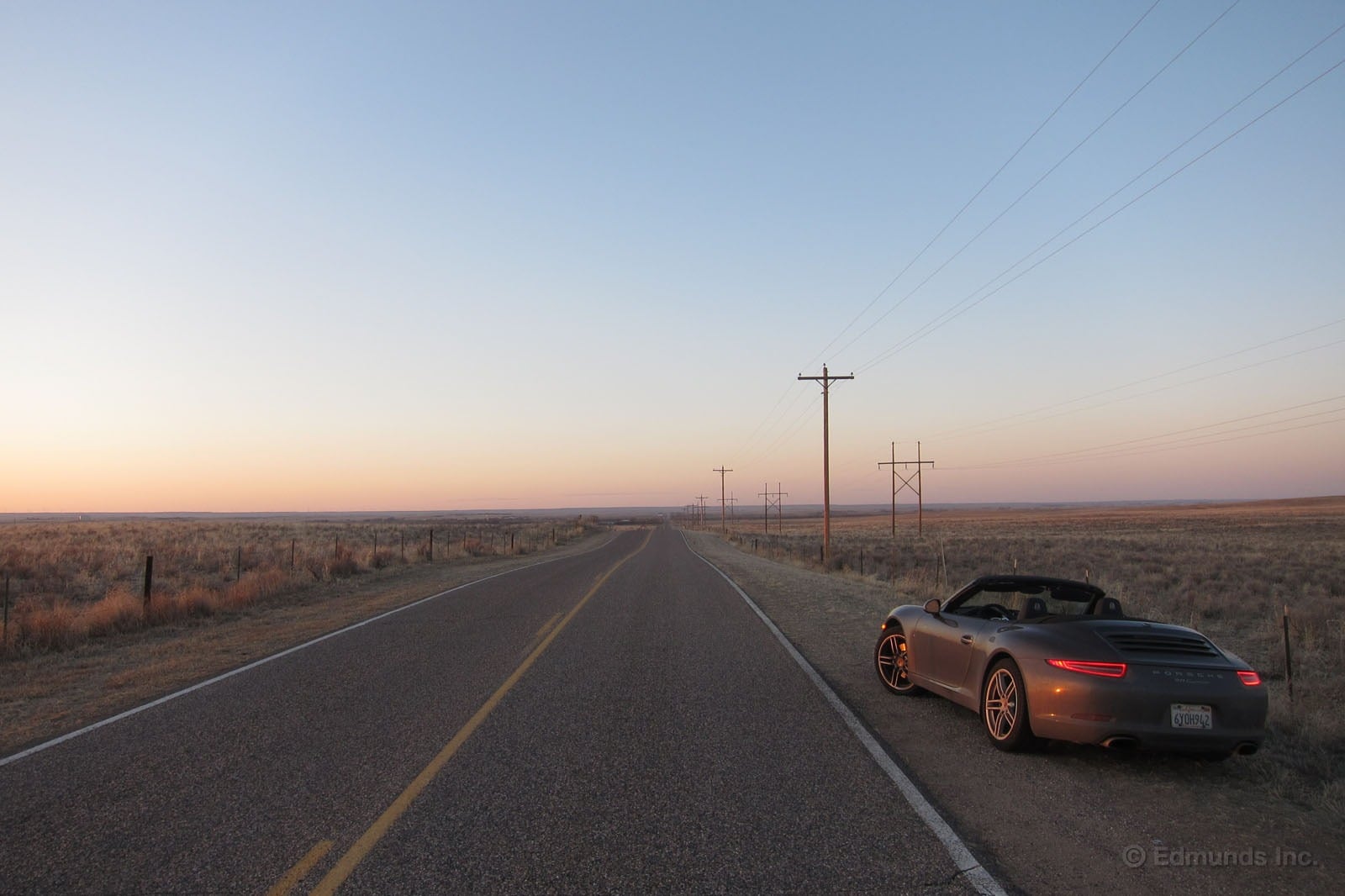

(See updates from the Road Trip on my Twitter or by searching #911RoadTrip.
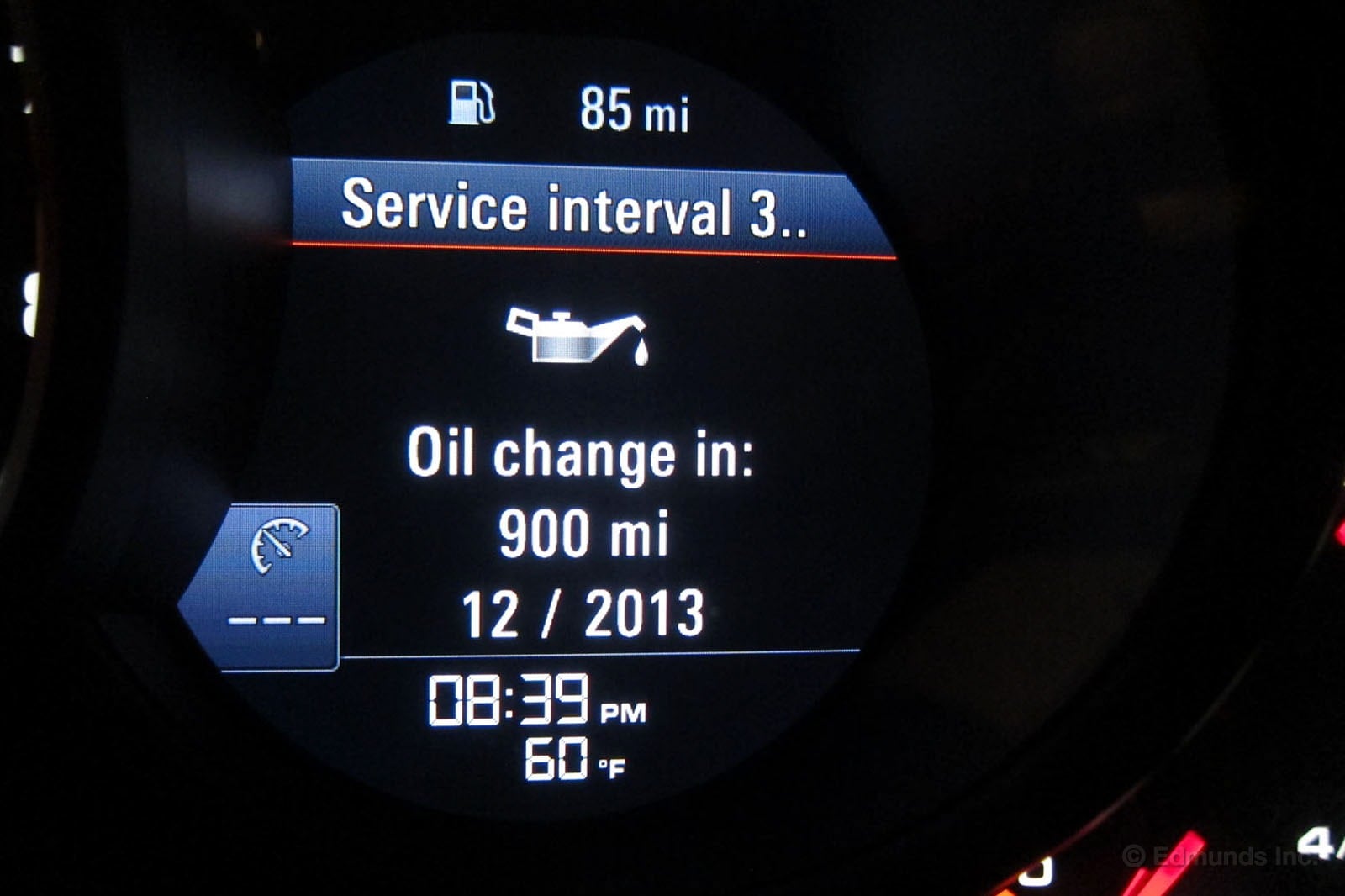
This maintenance minder popped up somewhere in Colorado letting me know that our 2013 Porsche 911 Carrera Cabriolet was due for its first service in 900 miles.
Sorry, buddy. We're just over 1,000 miles from home and I'm not stopping early for an oil change.
I put it on the list of things to do once I got back to L.A.

In the last post, our 2013 Porsche 911 Carrera Cabriolet was in a parking lot somewhere in Colorado with almost 9,200 miles on the odometer.
Before my next stop, it crossed a couple of mountain ranges and the 10,000-mile marker then promptly called for its first service. I checked the oil (digitally) at this point and then got back on my way.
Tune in next time to see how we got to this point, and how much further I had to go.

Day 3 started off much like day 2 of my leg of the cross-country road trip in our 2013 Porsche 911 Carrera Cabriolet: I woke up long before my alarm clock was set to go off and I was feeling good. By day 3 of me and Kurt's road trip to Anchorage I contemplated faking a seizure so that I wouldn't legally be allowed to drive home.
I hopped into the Porsche that third morning like it was my first time driving one. The car and I were ready to go.

Sitting at the gas station near my hotel, the navigation system showed its first (and perhaps only) weakness. There was traffic ahead on the 70. Average speed, the system said, was 30 mph. It wanted to re-route me to avoid this backup.
Ok, great!
And then my distance-to-home increased from just over 1,000 miles to a whopping 1,228 miles. The system was bypassing the 70 altogether and shooting me north on the 25 and then, somehow, over the 15 which I'd take straight into the Inland Empire and then over to L.A. This way also added more than four hours to my total estimated drive time.
While I like the idea of guidance systems trying to route me around a traffic situation, I'm not sure that being diverted over 200 miles and four hours is worth avoiding five miles of 30-mph traffic.
I, obviously, ignored the new suggestion and sucked up the mild backup. All told, it probably set me back 20 minutes.
But again, I had no set plan so setbacks didn't matter. This was, however, the first time that the navigation was reporting that I'd be home the same day. And if that didn't look like it would work out, well, I had to go through Vegas, right?
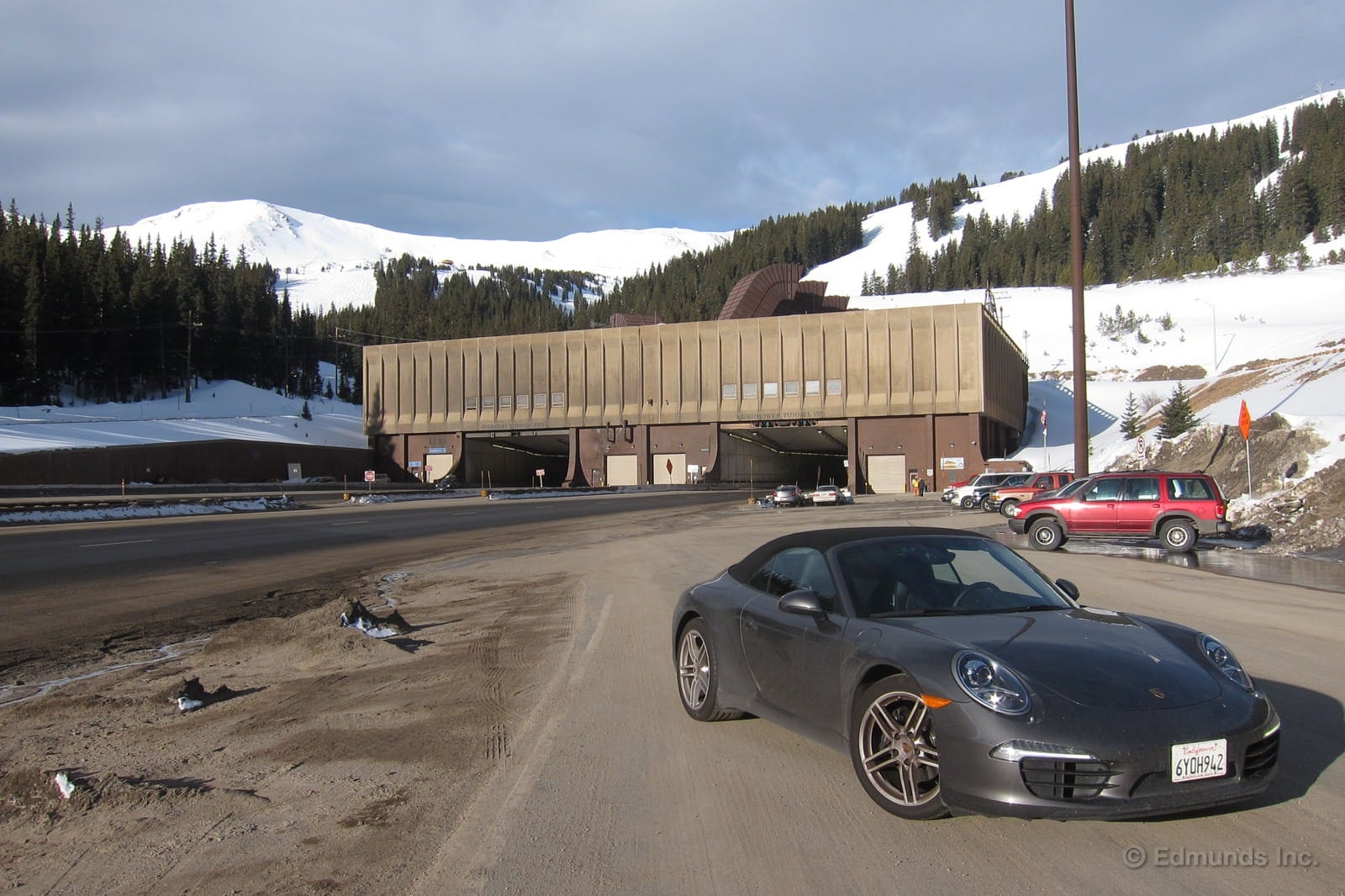
The drive west from Denver is phenomenal regardless the time of year. (Just be careful, chains are required frequently in the winter.) Amongst other things, you get to pass through the Rocky Mountains via the Eisenhower Tunnel.
It's not a road anyone would consider fun for spirited driving in a Porsche, but the views are worth the drive. And they stay worth it all the way through Utah.
Not only are the views rivaled only by those of Alaska, but the distance-to-empty meter was predicting I'd get over 600 miles on this tank.
But then a wild Subaru WRX STI and a snow storm got in my way. He had AWD and Colorado plates. I had winter tires and a Porsche. Needless to say, I did not make 600 miles on that tank. Worth it.
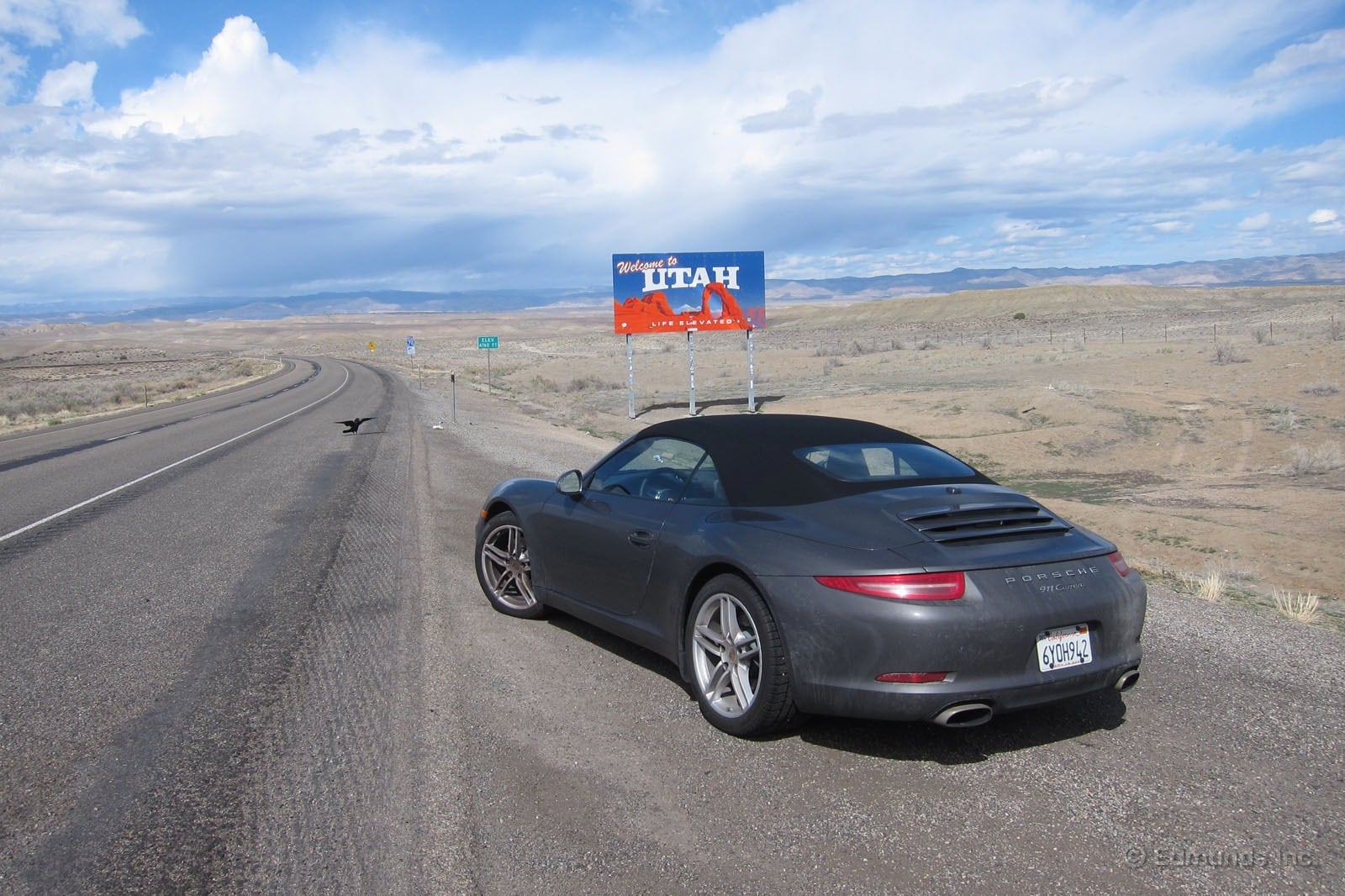
Right around the point in Utah where the 70 T-Bones the 15, everything gets really, really boring. The speed limit in this part of the world is something like 80, so that helps, but really, from here on out it's not driving, it's just commuting.
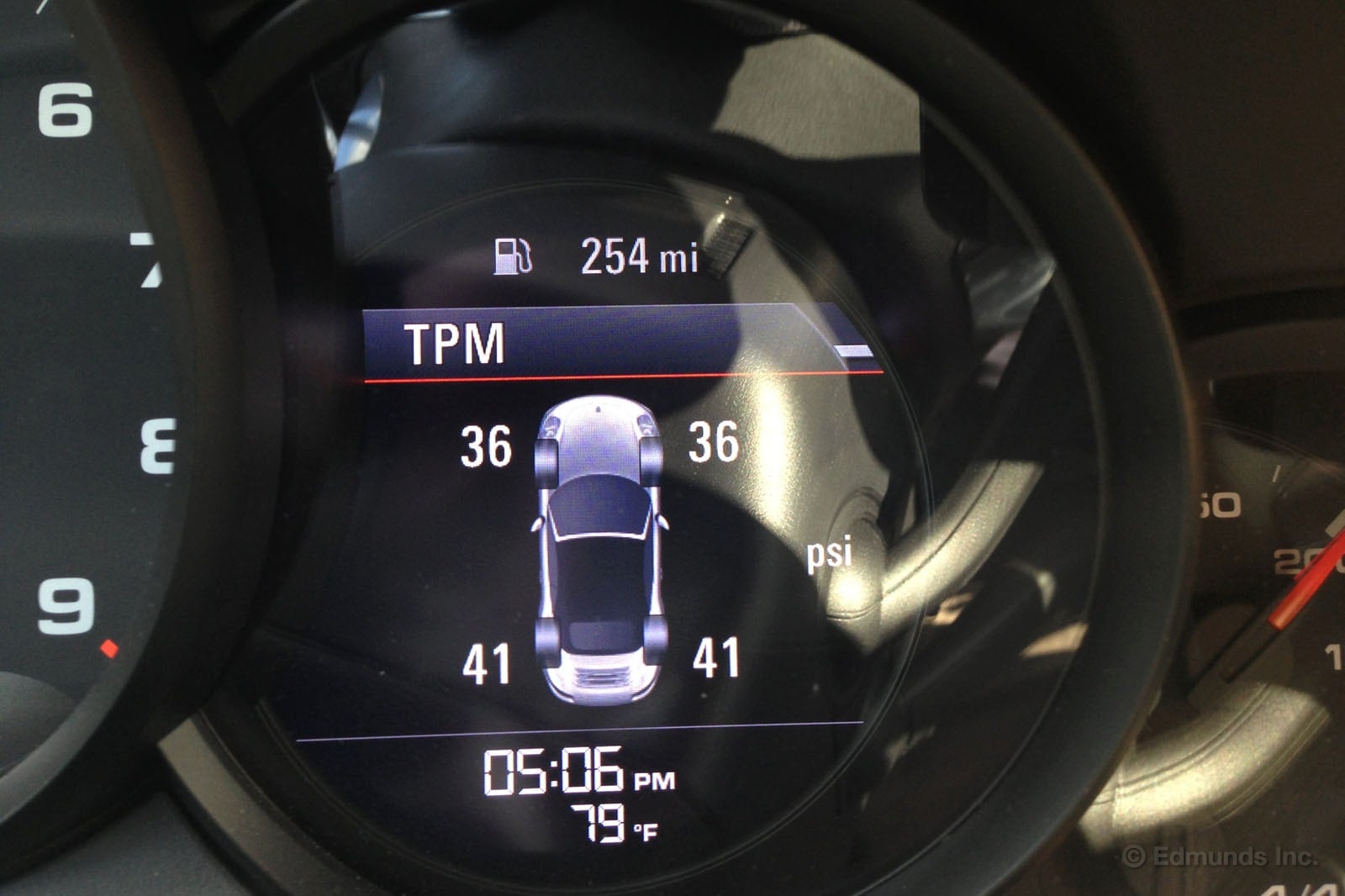
This was also the second point in the trip where I hit unseasonable warmth. Of course the Porsche's engine didn't care — though it had been spinning for hours continuously — but the tires were getting a little hot. Previously set at 31/34, the winter-spec Pirellis were enduring the near-80 degree heat by ramping up to 36/41. This is well within reason for these tires, though I still couldn't help but remember that the 911 doesn't have a spare, only a can of sealant and an inflator.
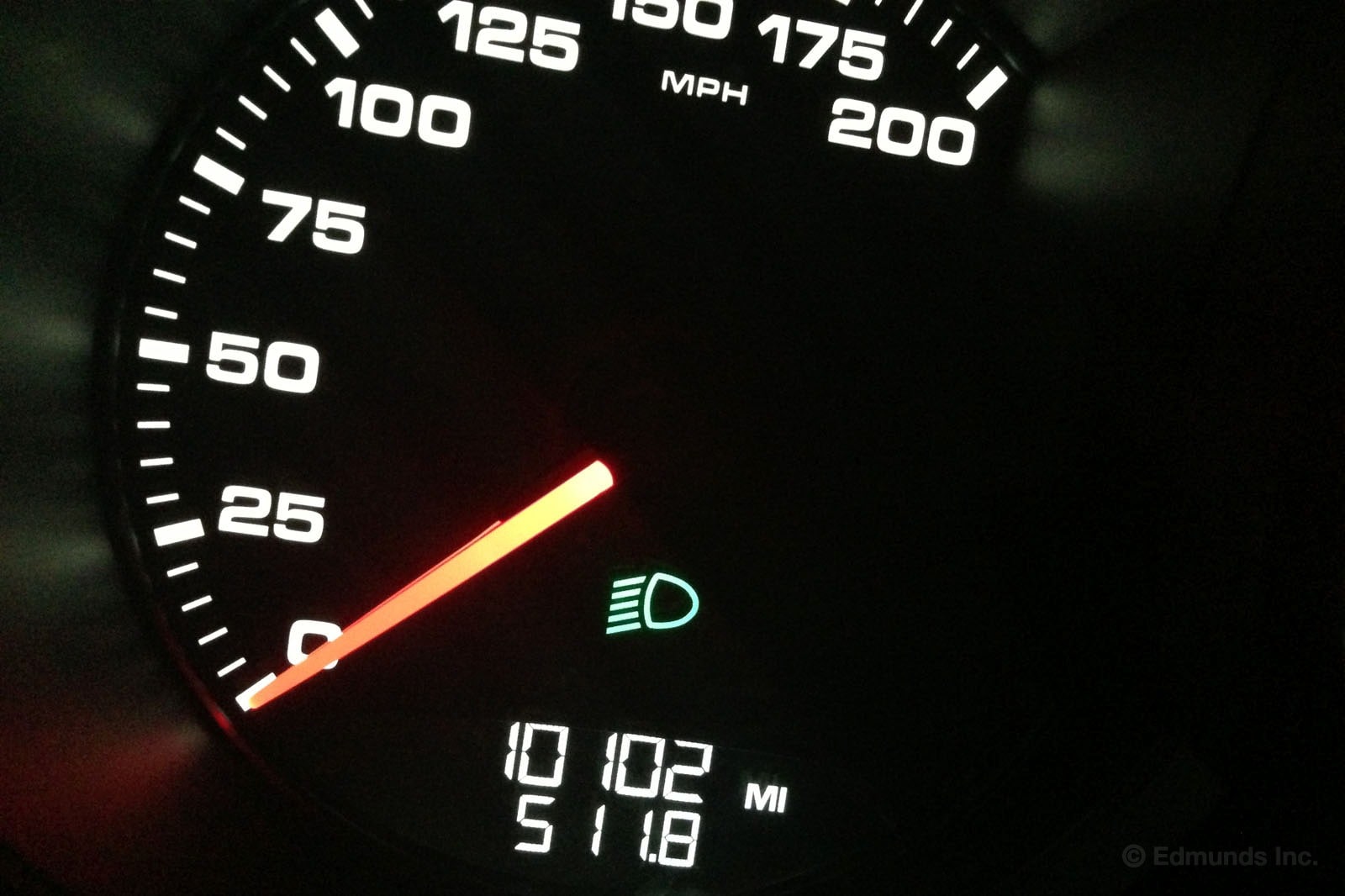
At this point I still hadn't hit the magical 500-mile tank and with only a few hundred miles left in the drive, it was now or never.
I passed the 10,000-mile mark and knew the landscape. There was an incline that would cut the projected range to its bone, but then there's a LONG downhill section. If I could power through the mental block of running out of gas this close to home and make it over the hill, I could break 500 just by coasting down the hill.
Thankfully, coasting was necessary and I made it to the crest with a bunch of "low fuel" warning signs, but doubted I was even into the reserve tank. From there on out, it was gravy.
I texted Erin from the final fuel stop, "511.8." I was going to send her a shot of my face smirking like an idiot, but she's got a husband and, well, that kind of thing might be frowned upon.
This stop, 1,048 miles later, was the technical end-point, though I coasted through downtown L.A. with the top down just to show that I'd arrived.
The nice LAPD officer, who told me to move my car, preventing a cool shot of the 911 with the Disney Concert Hall, was the closest thing I'd had to a ticket all trip. Figures it'd be this close to home.
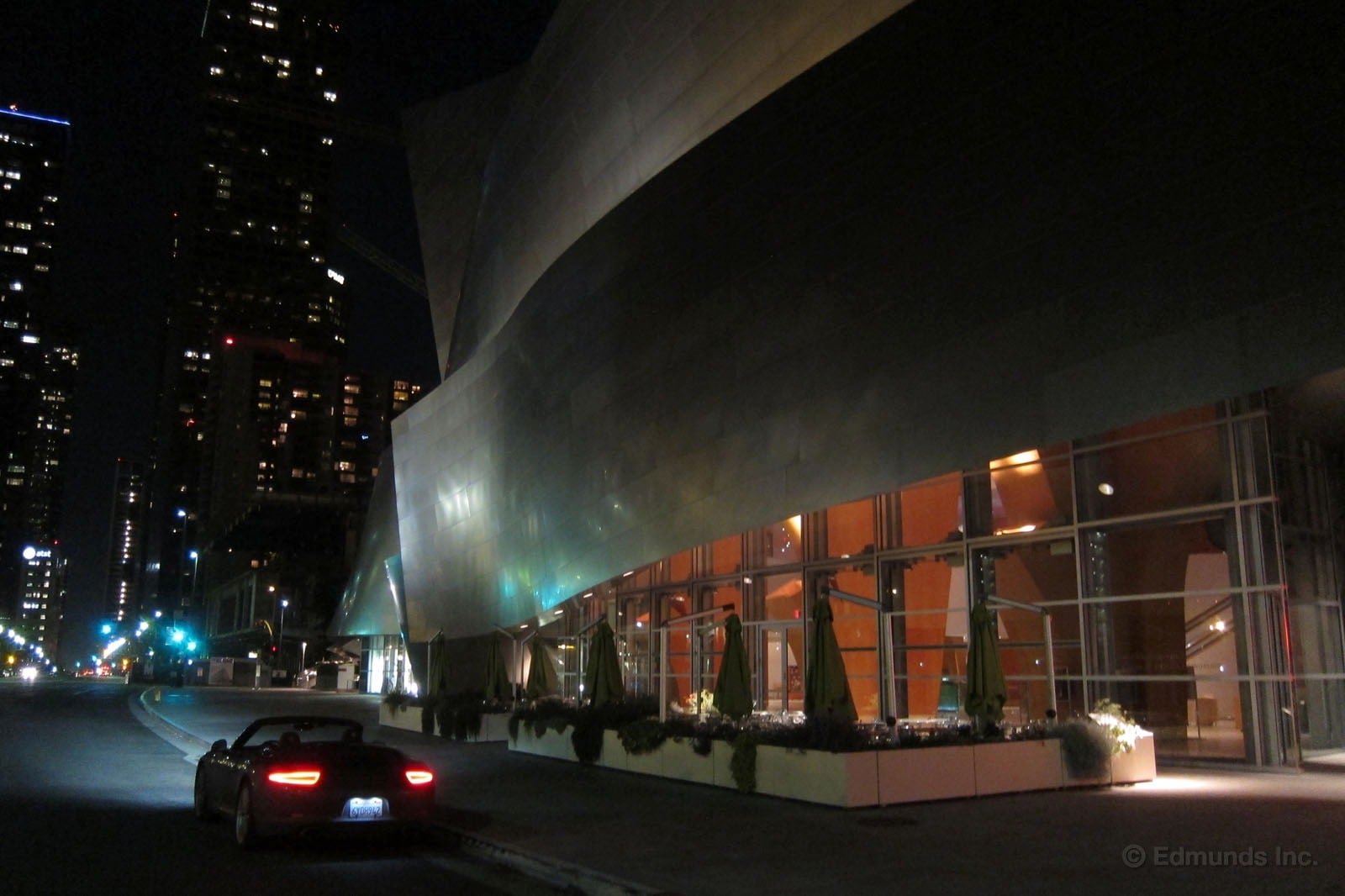
I missed dinner on day 3, but I made it. Awake. Alert. And ready for more.
(See updates from the Road Trip on my Twitter or by searching #911RoadTrip.
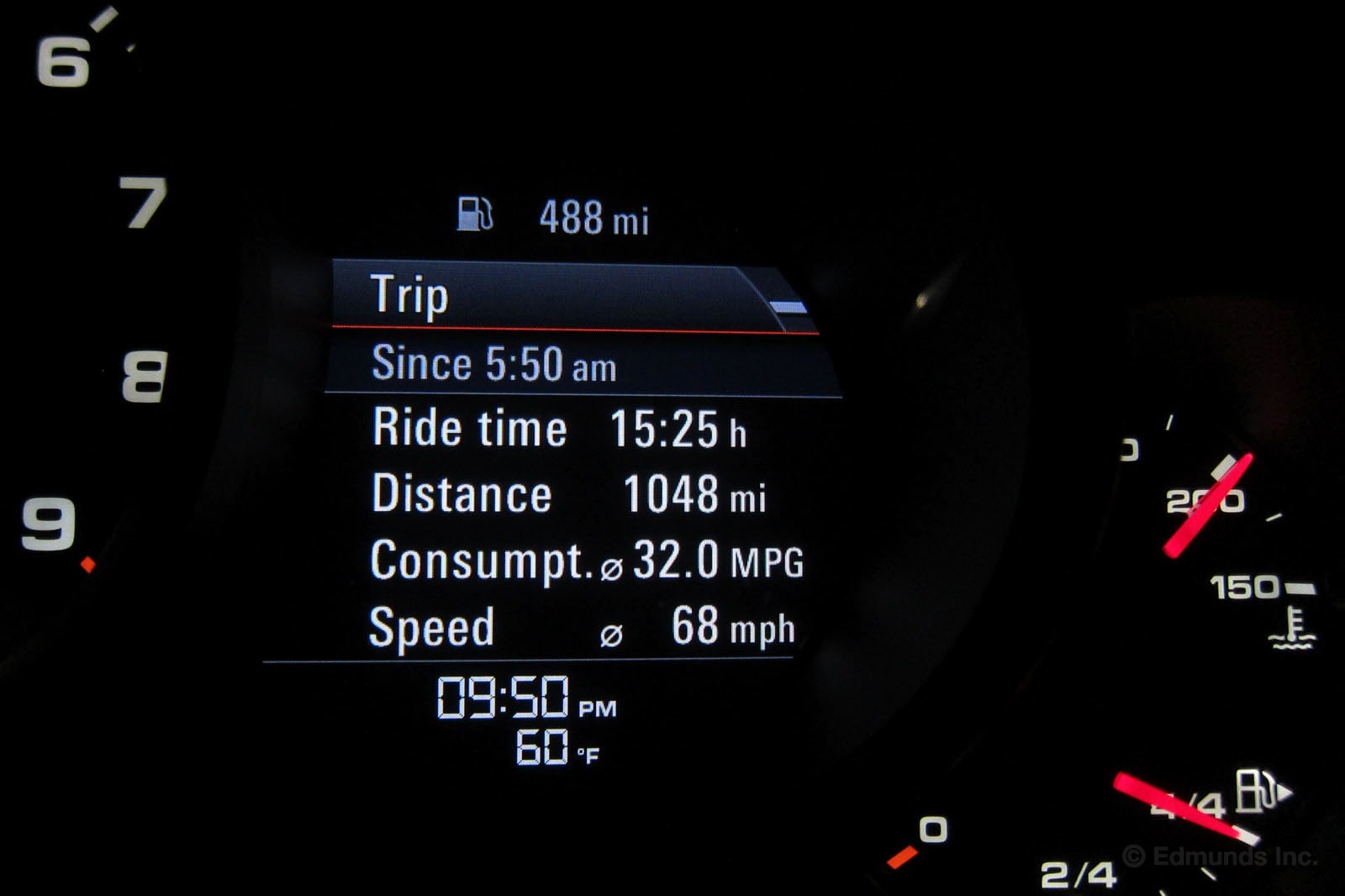
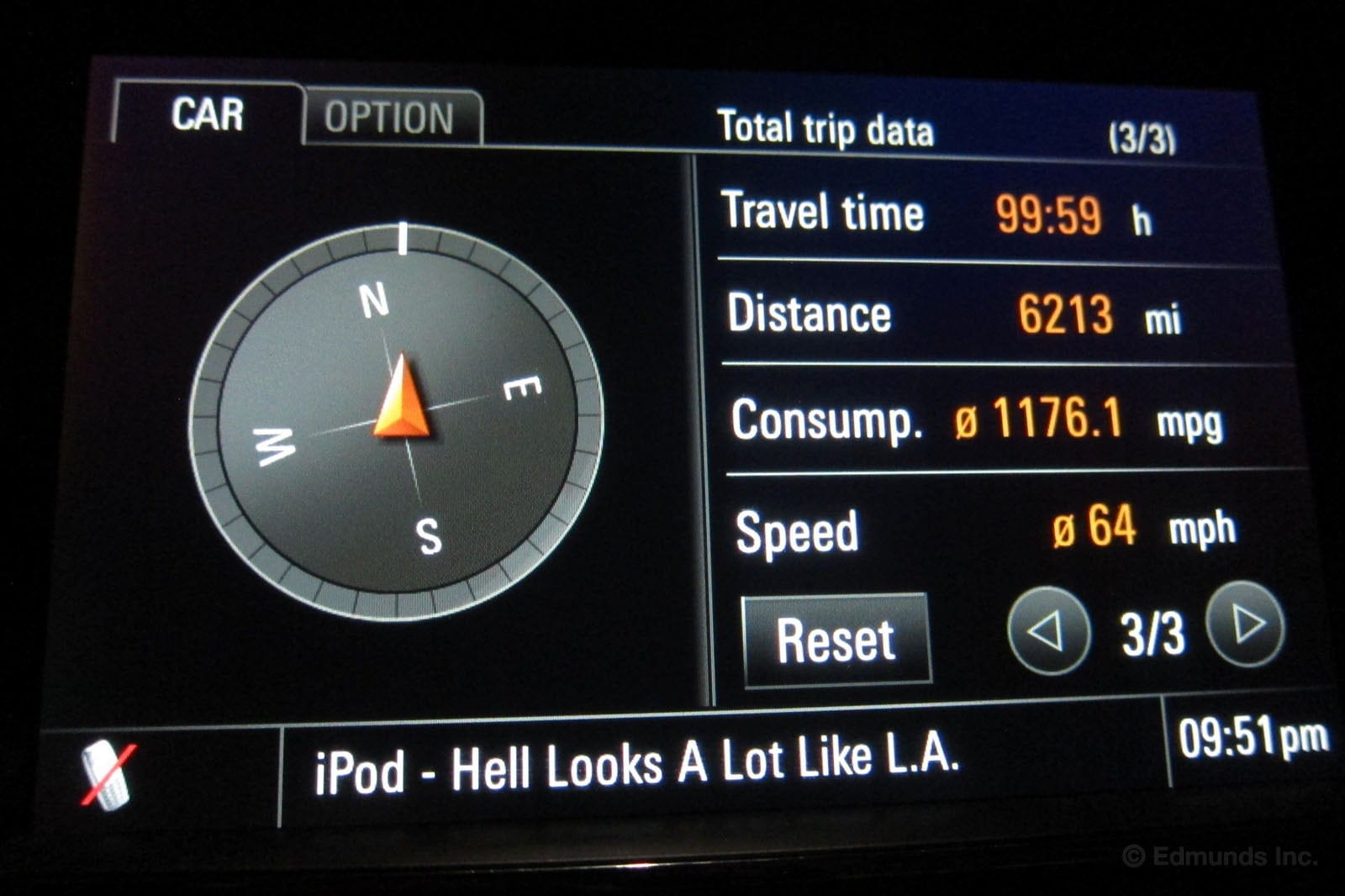
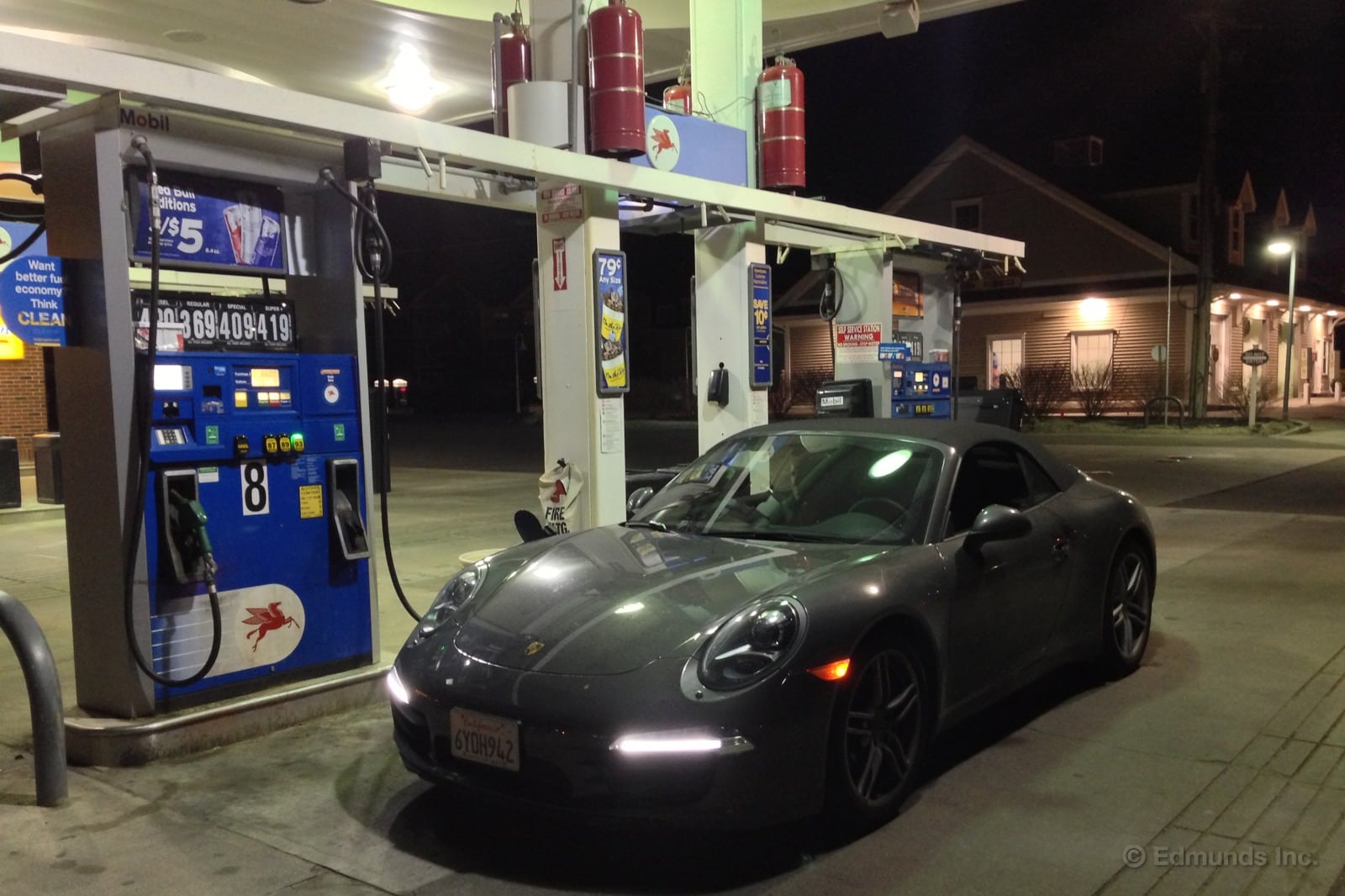
To be fair, I didn't know we were competing on fuel economy until I read Erin's post after I'd gotten home. I didn't know I was supposed to be trying for fuel economy.
I just knew this was a Porsche and that, after the first day's error, my radar detector was working very well.
This is a chart of all the fuel stops during my 3,594.6-mile journey from Manhattan to Maine to Los Angeles.
|
Odometer
|
Trip
|
Octane
|
Gallons
|
Total Price
|
MPG
|
Location
|
|
6,916
|
408.4
|
93
|
15.719
|
$66.00
|
26.0
|
Newburyport, MA
|
|
7,289
|
372.2
|
93
|
14.029
|
$59.89
|
26.5
|
New York
|
|
7,777
|
487.9
|
93
|
15.981
|
$62.63
|
30.5
|
Amherst, Oh
|
|
8,266
|
489.2
|
91
|
16.825
|
$68.07
|
29.1
|
Walcott, IA
|
|
8,688
|
422.1
|
89
|
15.408
|
$53.91
|
27.4
|
Aurora, NE
|
|
9,117
|
429.8
|
91
|
14.667
|
$56.89
|
29.3
|
Wheat Ridge, Co
|
|
9,590
|
473.2
|
91
|
15.092
|
$57.79
|
31.4
|
Utah
|
|
10,102
|
511.8
|
91
|
16.872
|
$72.53
|
30.3
|
California
|
|
Totals*
|
3,594.6
|
124.60
|
$497.71
|
28.9
|
Oh look. I won! My accidental 28.9 average bests Erin's 28.1and my 511-mile tank bests her 494.3 mile trek. I even took best tank MPG with 31.4 compared with her 31.1. Sucker.
Worst Fill MPG (CA road trip): 26.0 mpg
Best Fill MPG (CA road trip): 31.4 mpg
Best Range (CA road trip): 511.8 miles
EPA MPG Rating: 20 city/28 highway/23 combined mpg
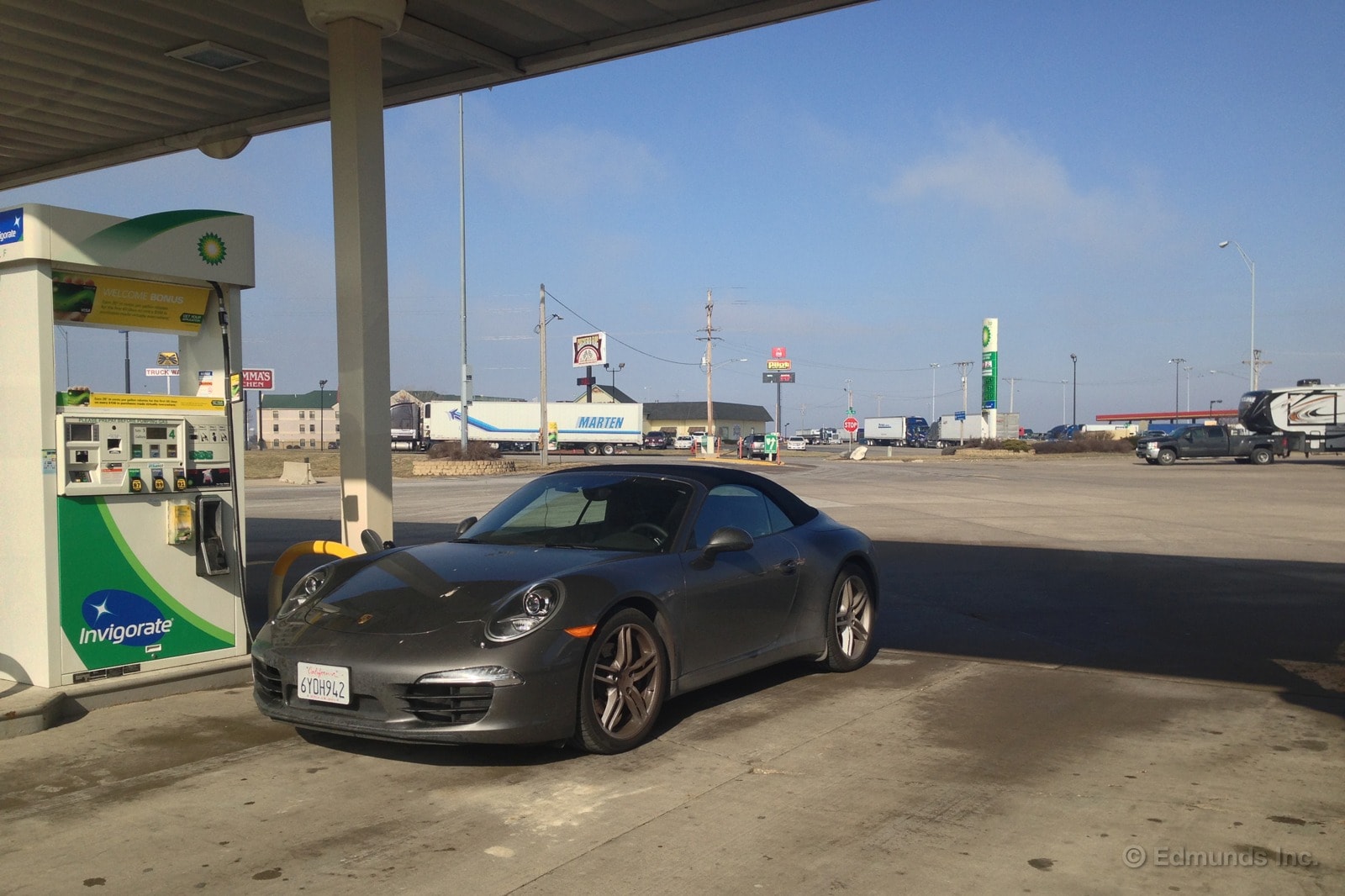
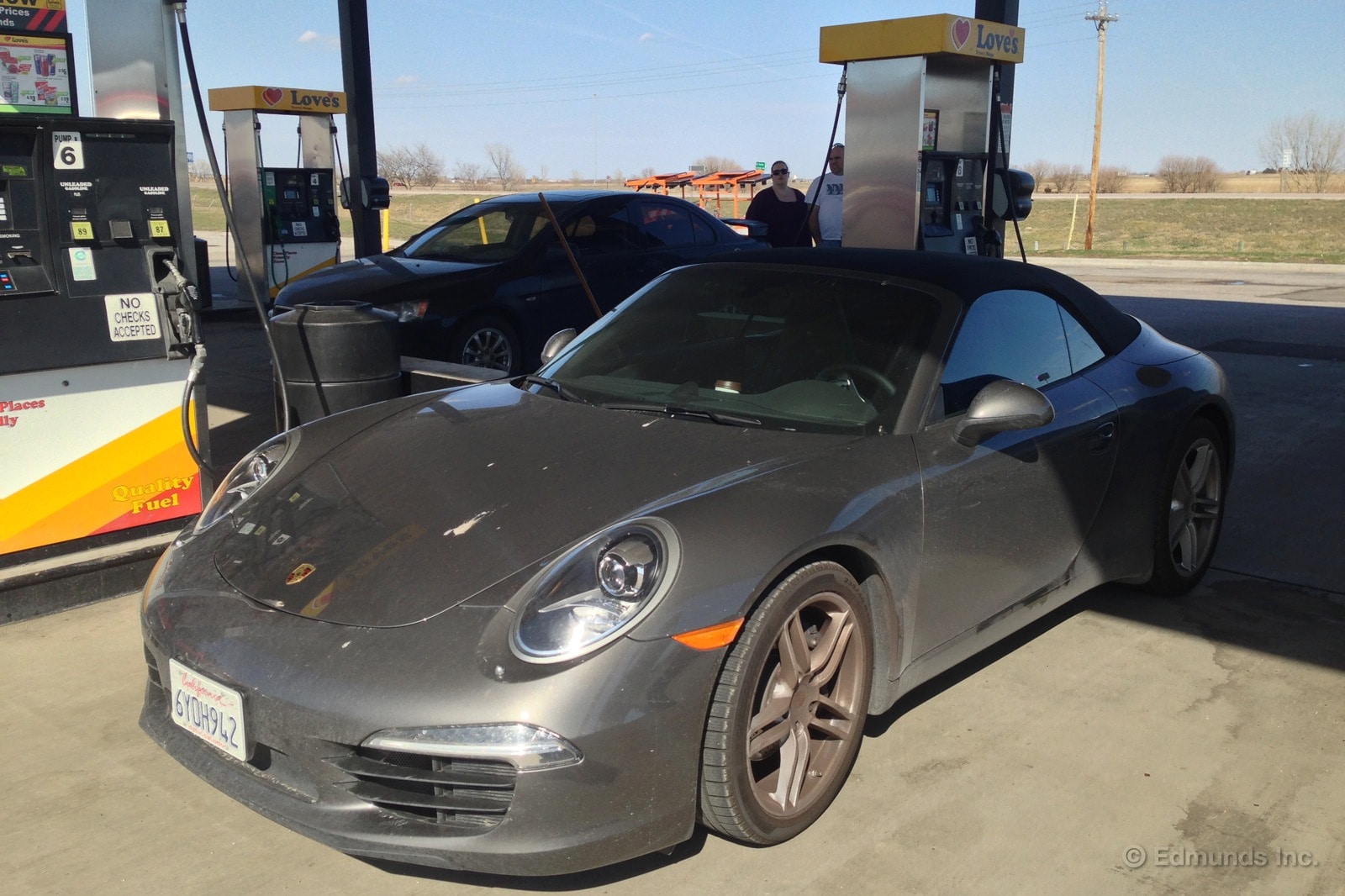
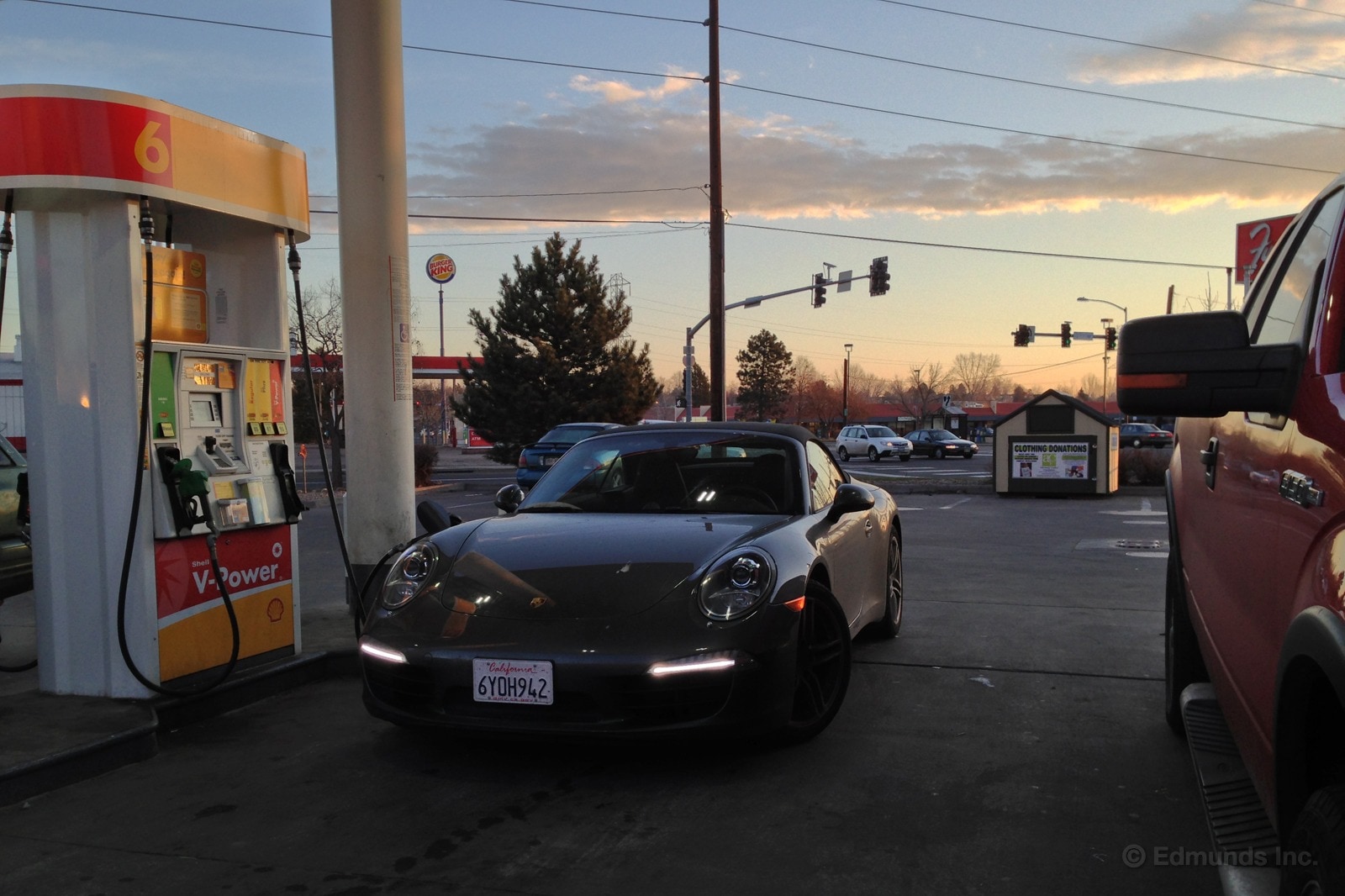
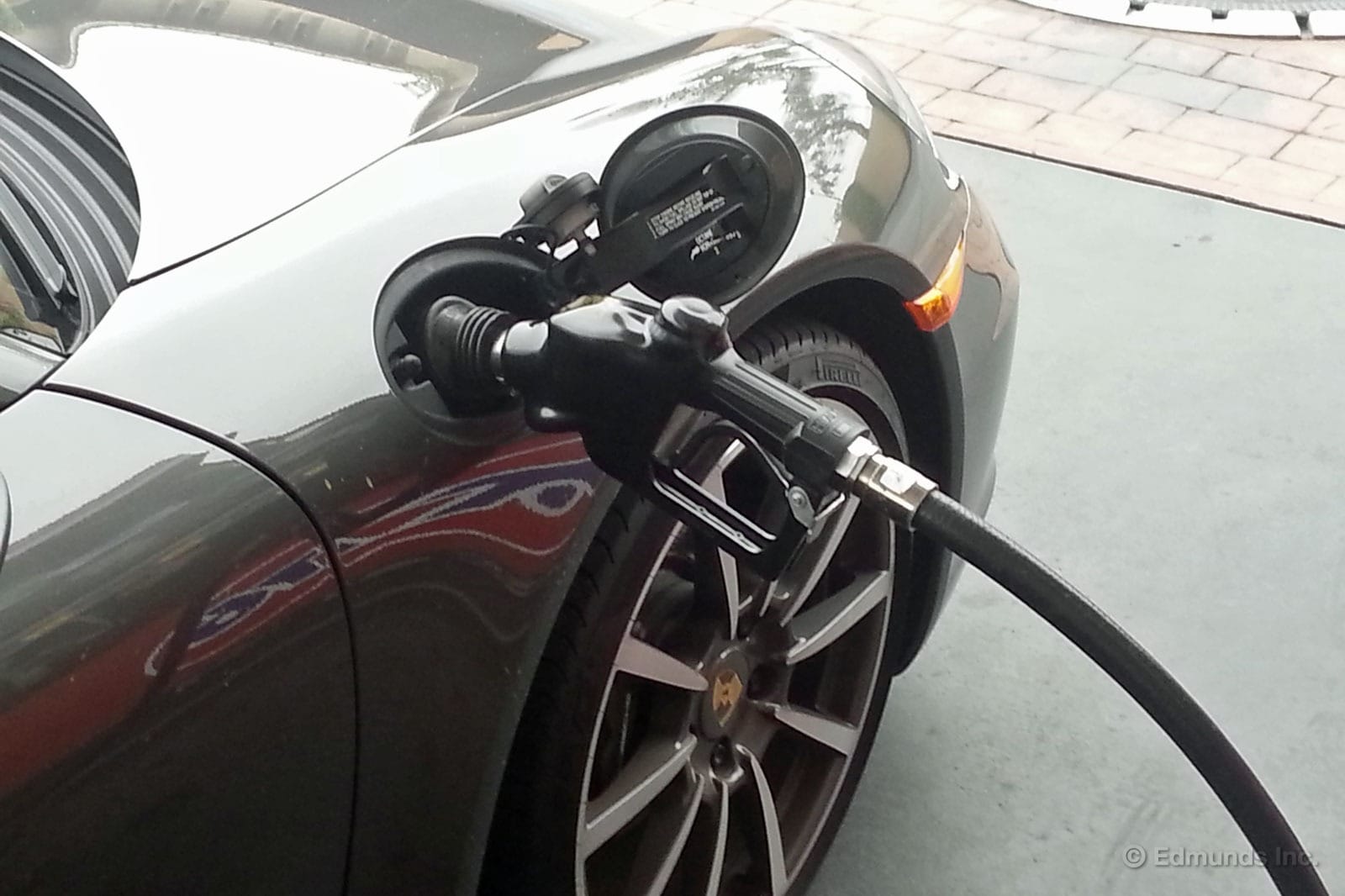
With the last few tanks of our cross-country road trip figured in, our 2013 Porsche 911 has now bumped its lifetime fuel economy number up another notch. Unlike last month, however, this time it was a mere tenth of a mile per gallon, from 22.7 to 22.8.
One figure worth noting is the new range record set by Mike Magrath: 511.8 miles on one tank. That's a nice long run for a 350-horsepower sports car and it reaffirms our contention that the 911 is one of the best grand touring cars around. Comfortable seats, excellent visibility and enough range to go a whole day on two fillups? Doesn't get much better than that.
Worst Fill MPG: 12.4
Best Fill MPG: 31.4
Average Lifetime MPG: 22.8
EPA MPG Rating (City/Highway/Combined): 20/28/23
Best Range: 511.8 miles
Current Odometer: 11,660 miles
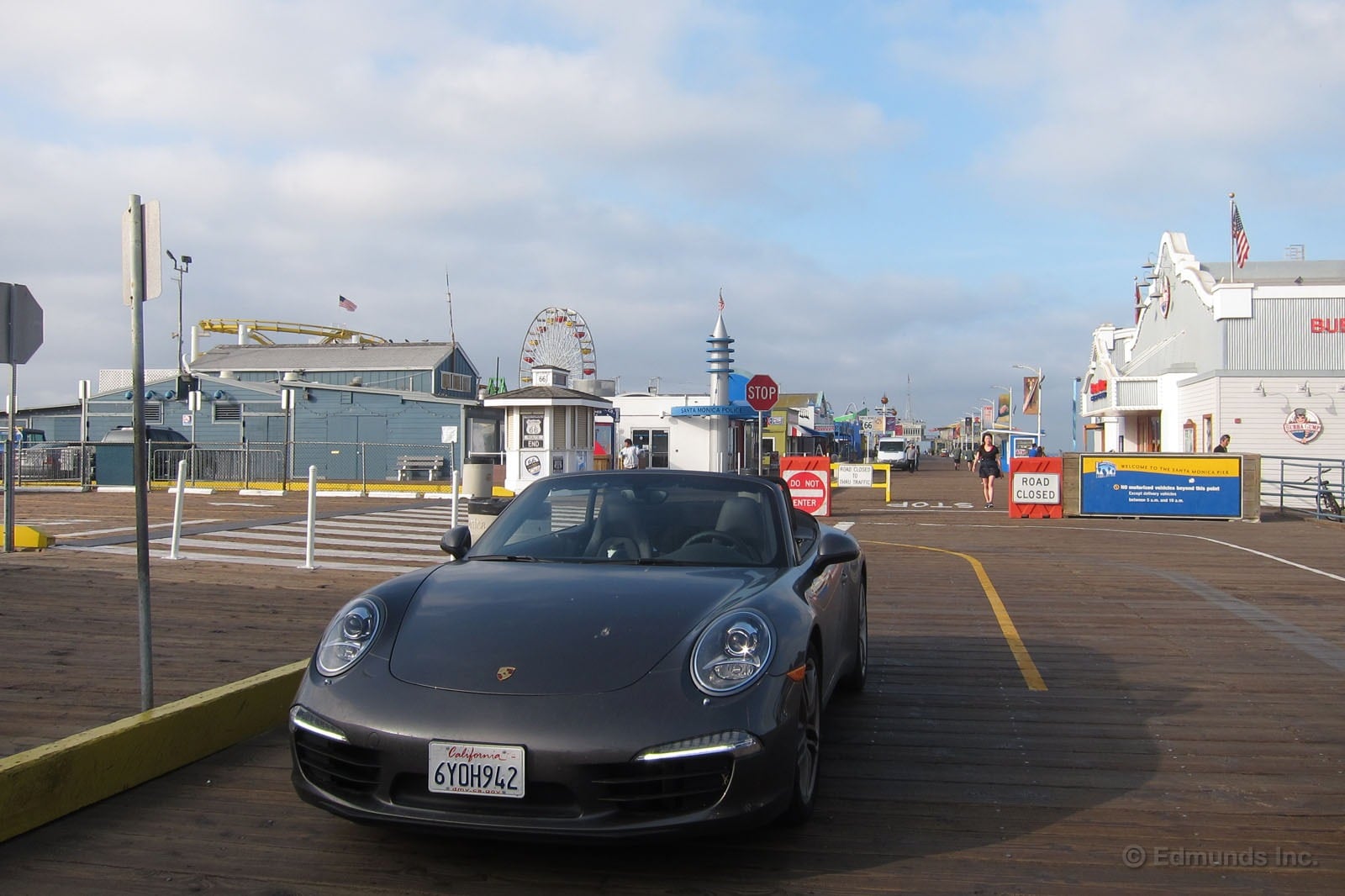
Between Erin and me, we drove our long-term 2013 Porsche 911Carrera Cabriolet from L.A. to New York to Maine and then back to Los Angeles. We covered 6,608.6 miles in less than two weeks and hit exactly zero car washes.
At the end of the 7,000+-mile Road Trip to Alaska in our Jag, the car looked like it had survived Superstorm Sandy after being fished out of the Hudson. This is why people hate black cars.
After 6,600 miles in the Porsche...it actually looked okay. Even the winter-spec tires weren't showing any wear from the days-upon-days of high-temp highway running.
The slippery Porsche shunned any real bug splatter and the light greyish color really hid the road grime. The only time you'd notice it was if you happened to touch the paint. Oh, the wheels were also a mess; had to hit them with $5 worth of that highly caustic (probably) green stuff from the self-wash just to make them presentable.
It took three carwashes to get it back to normal. Next stop: Porsche Service.
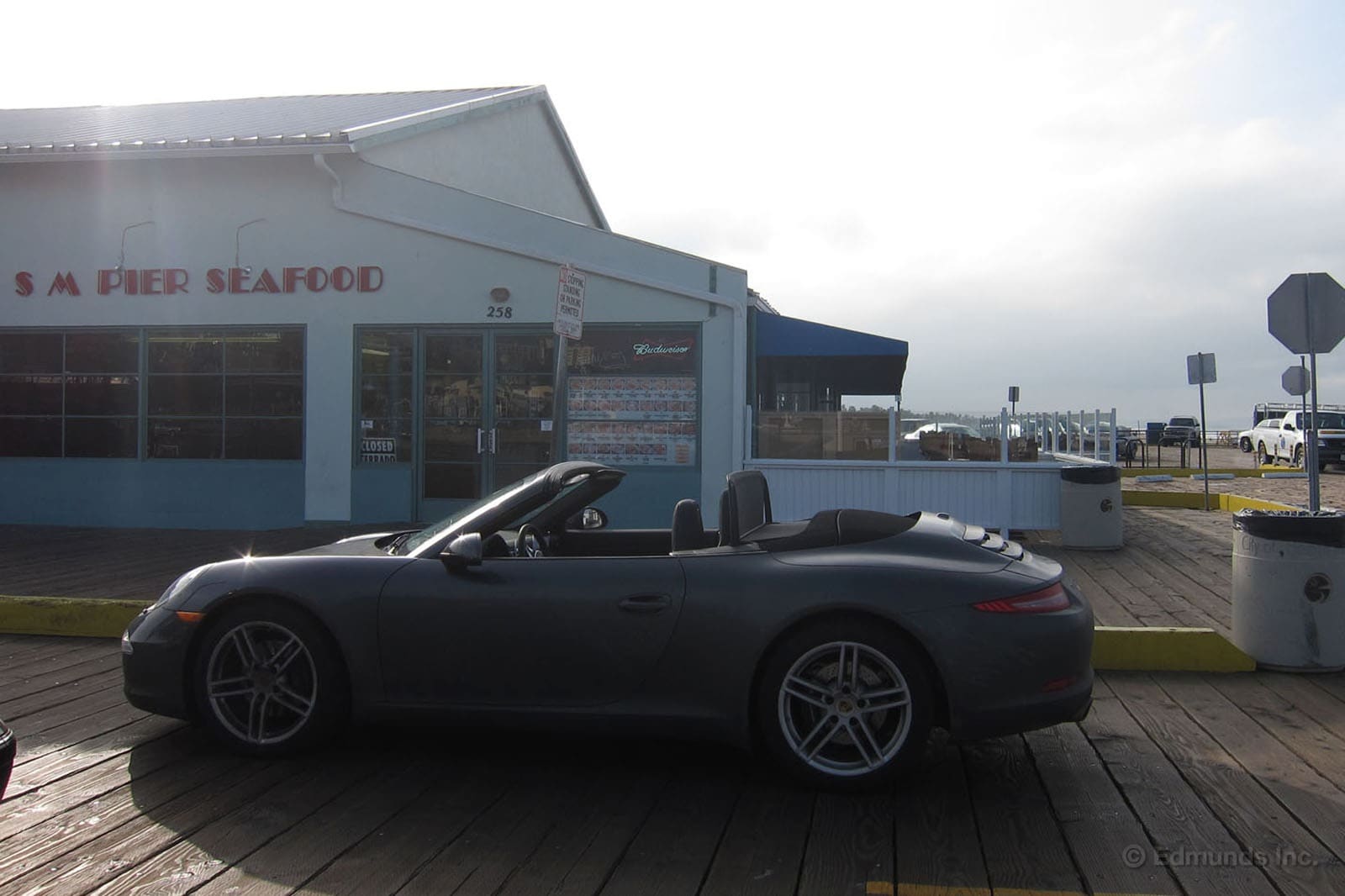
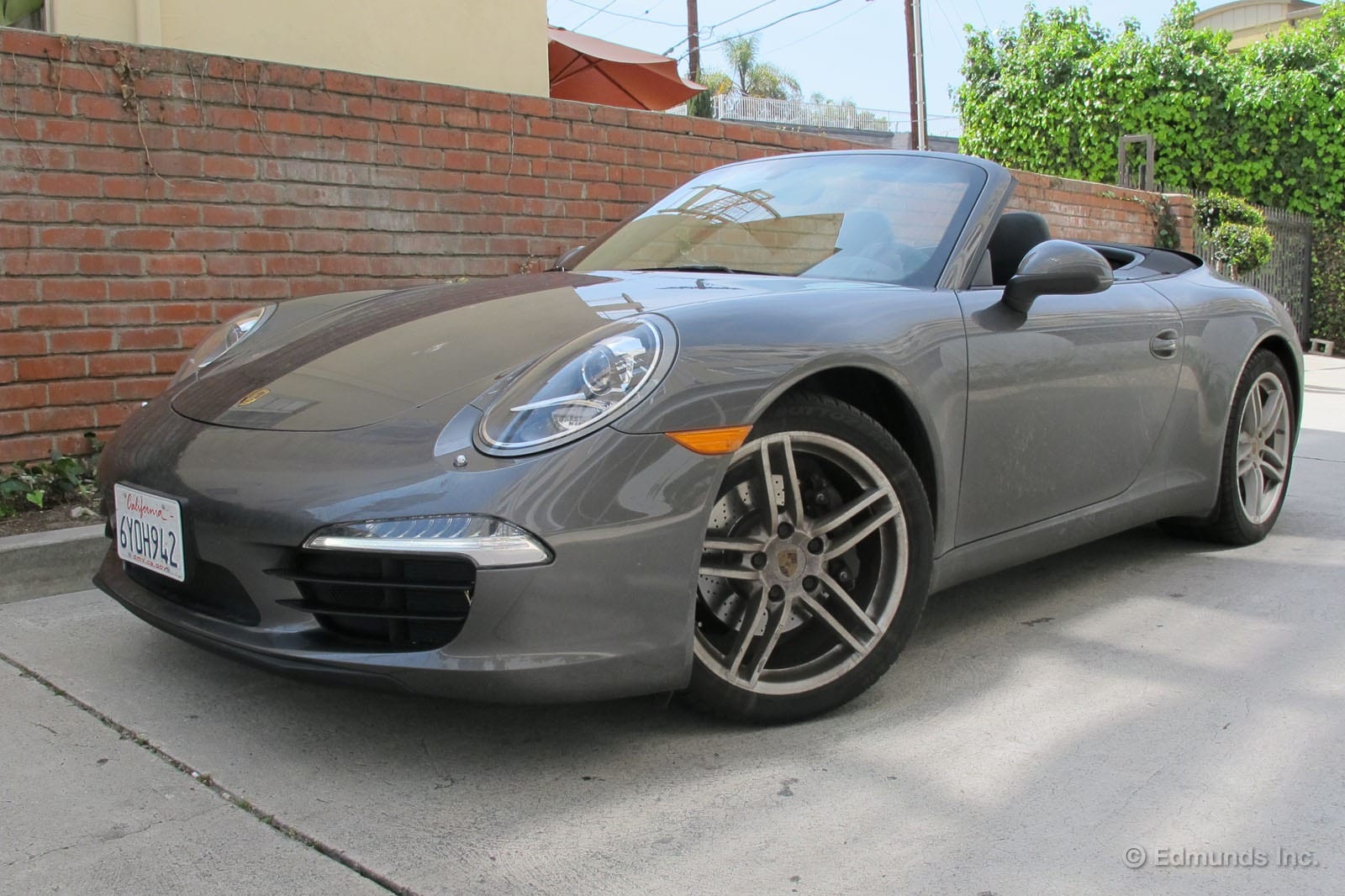
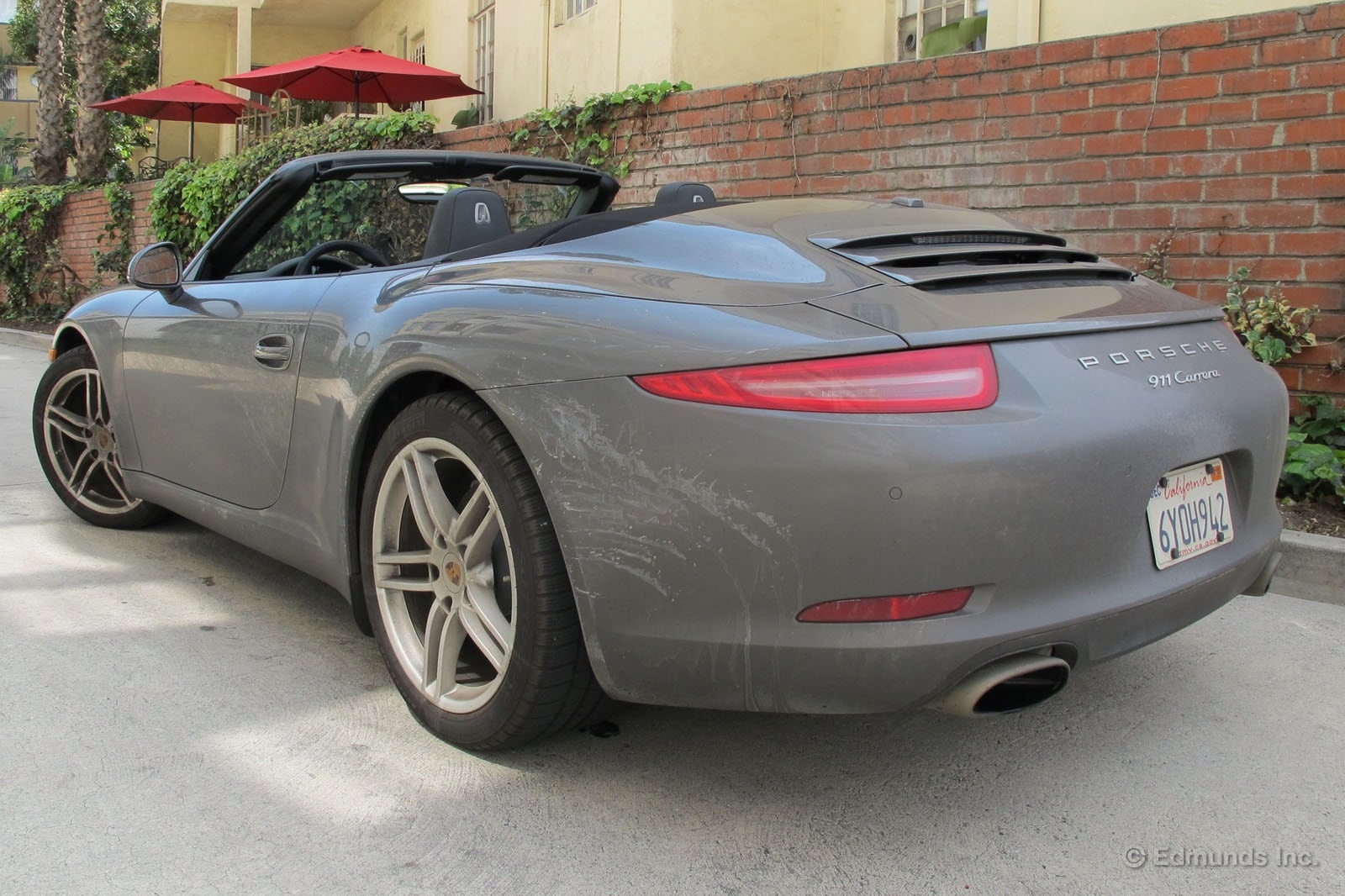
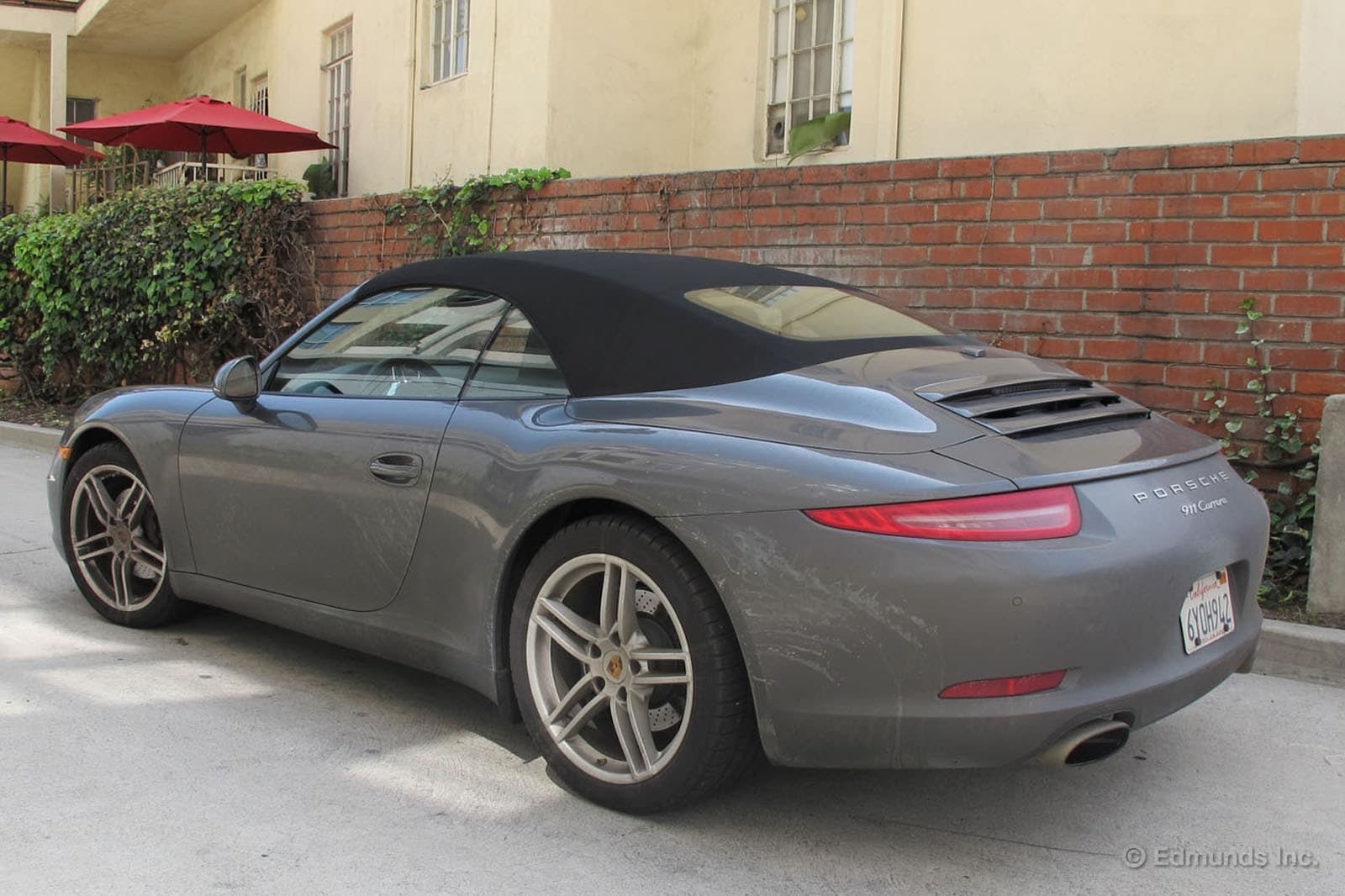
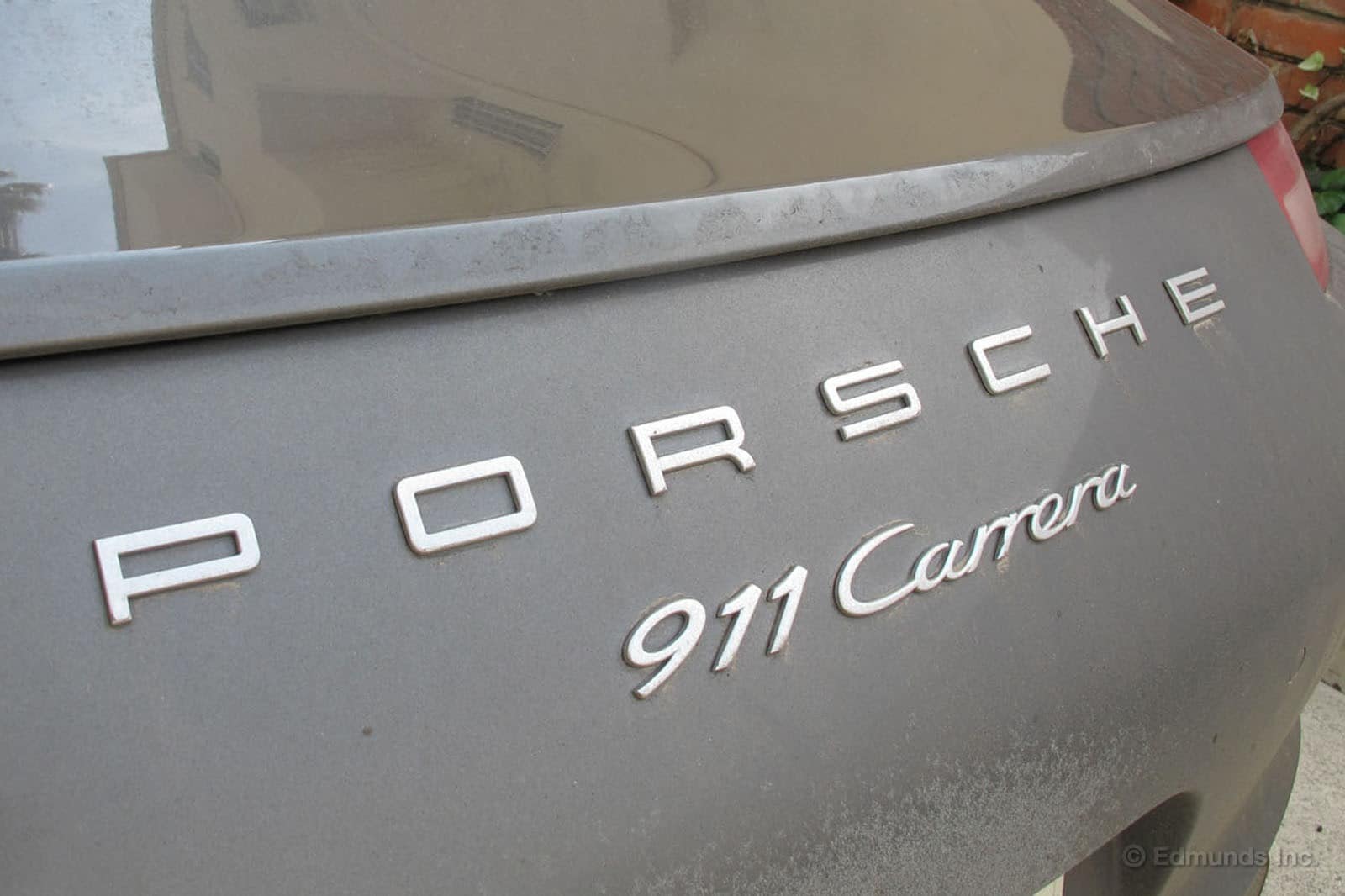
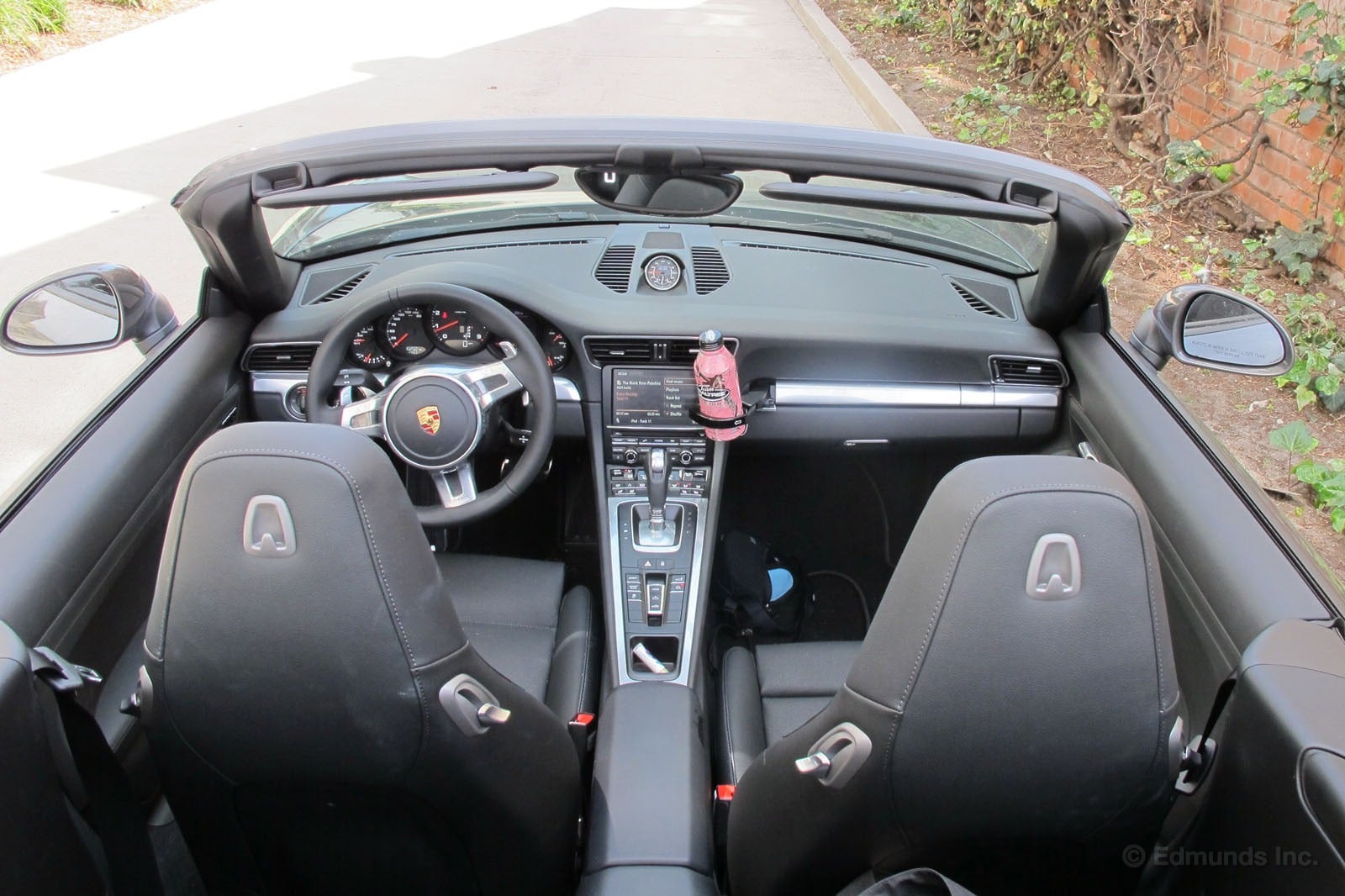

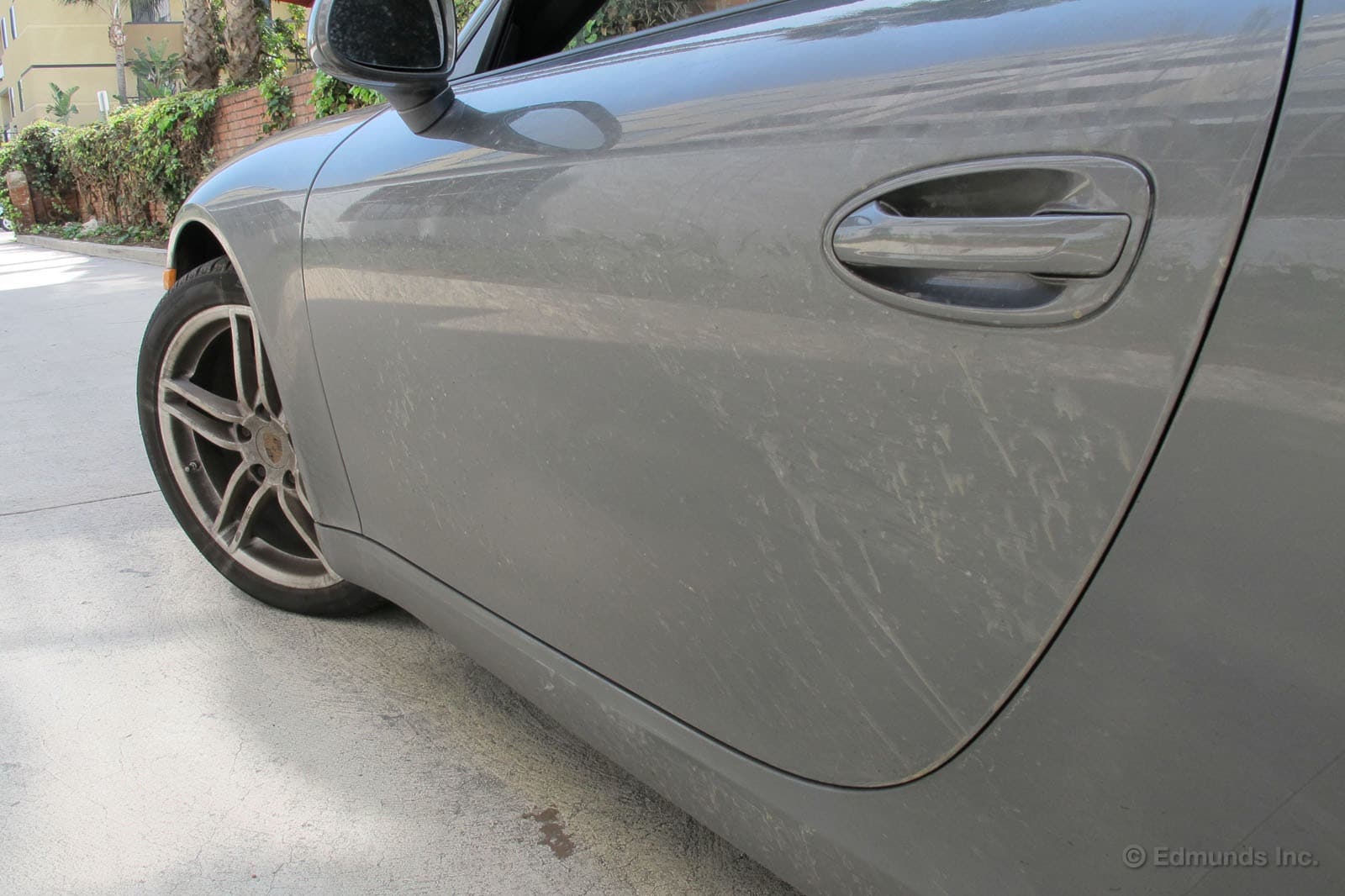
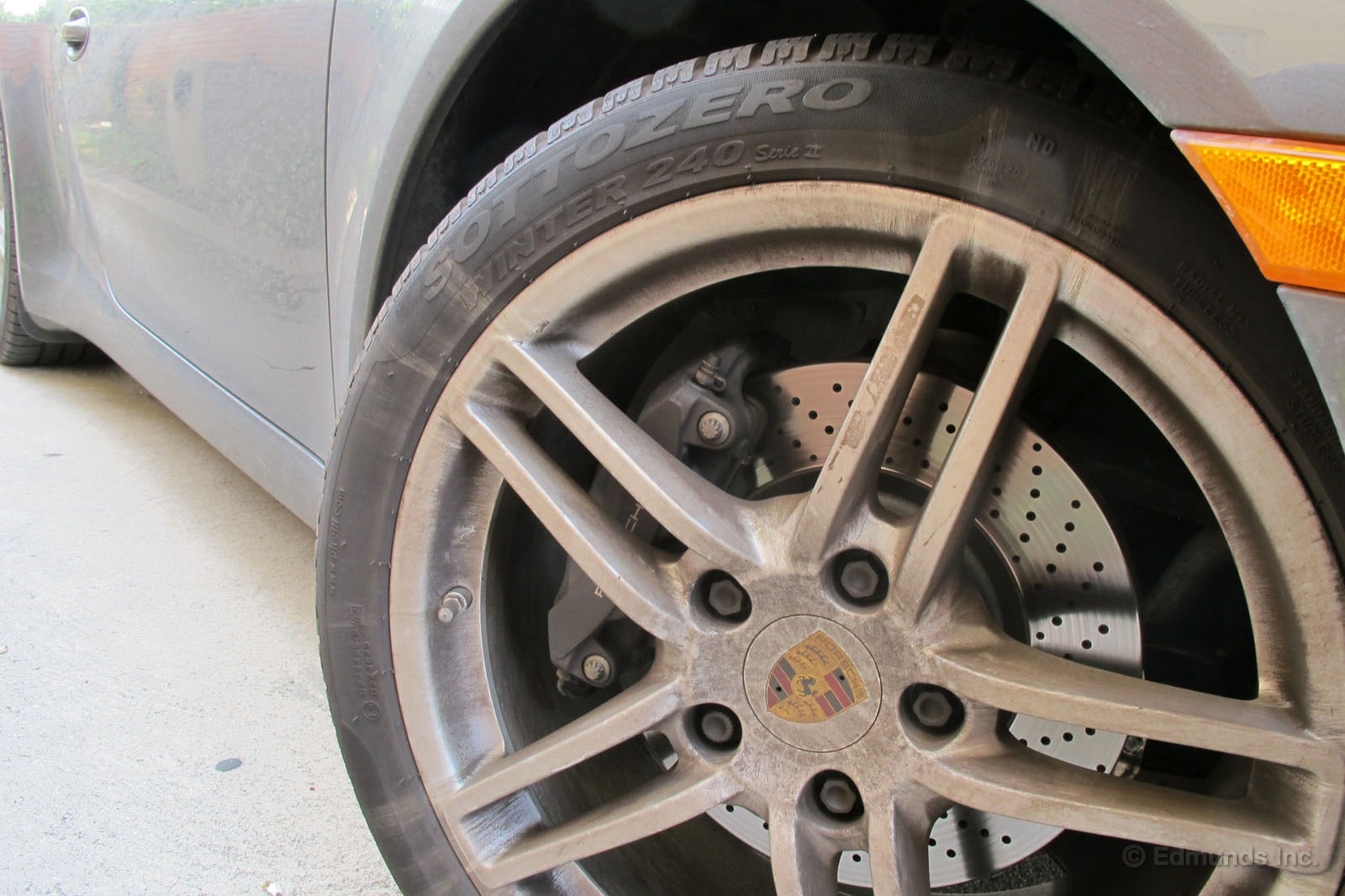
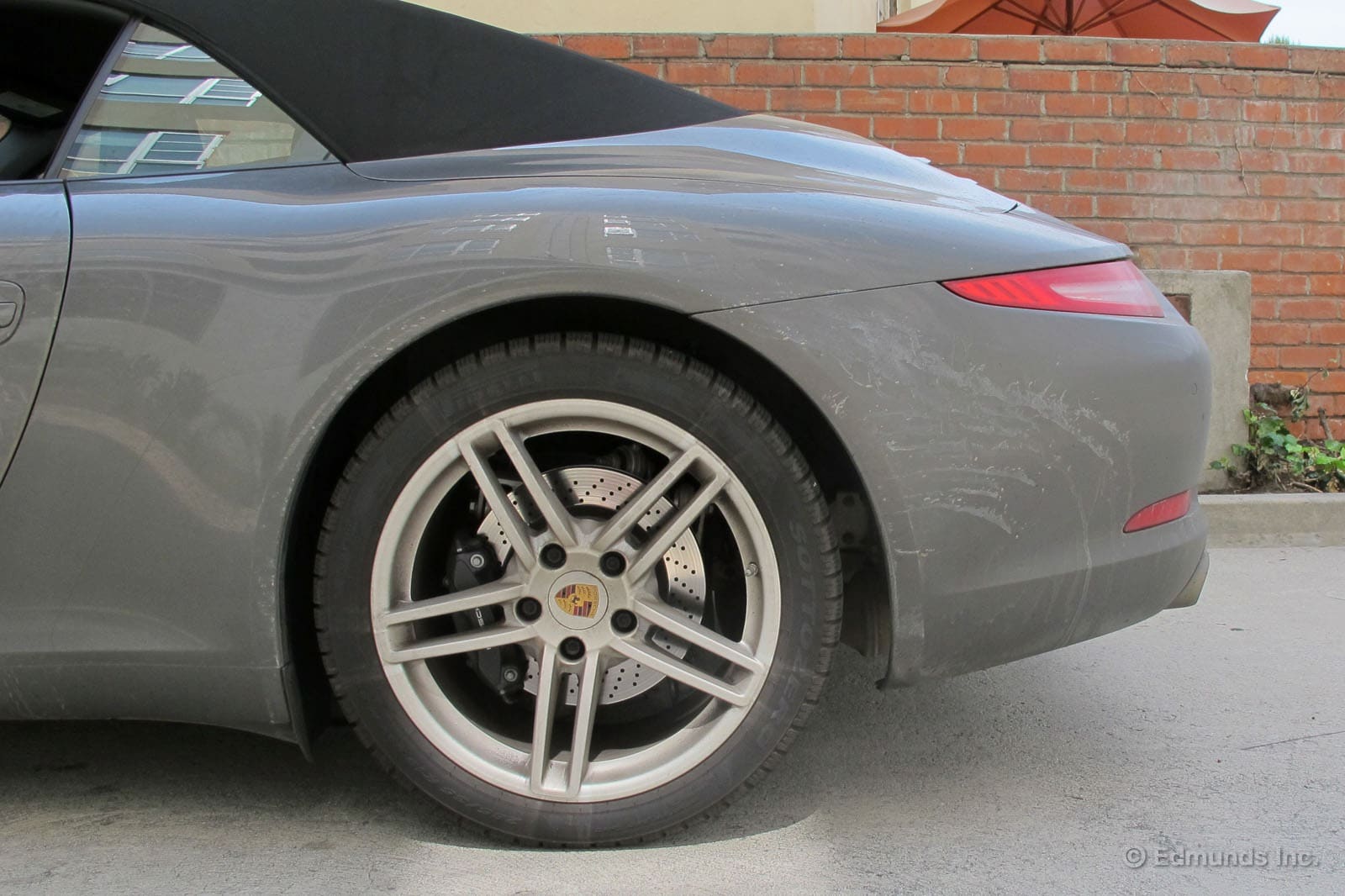
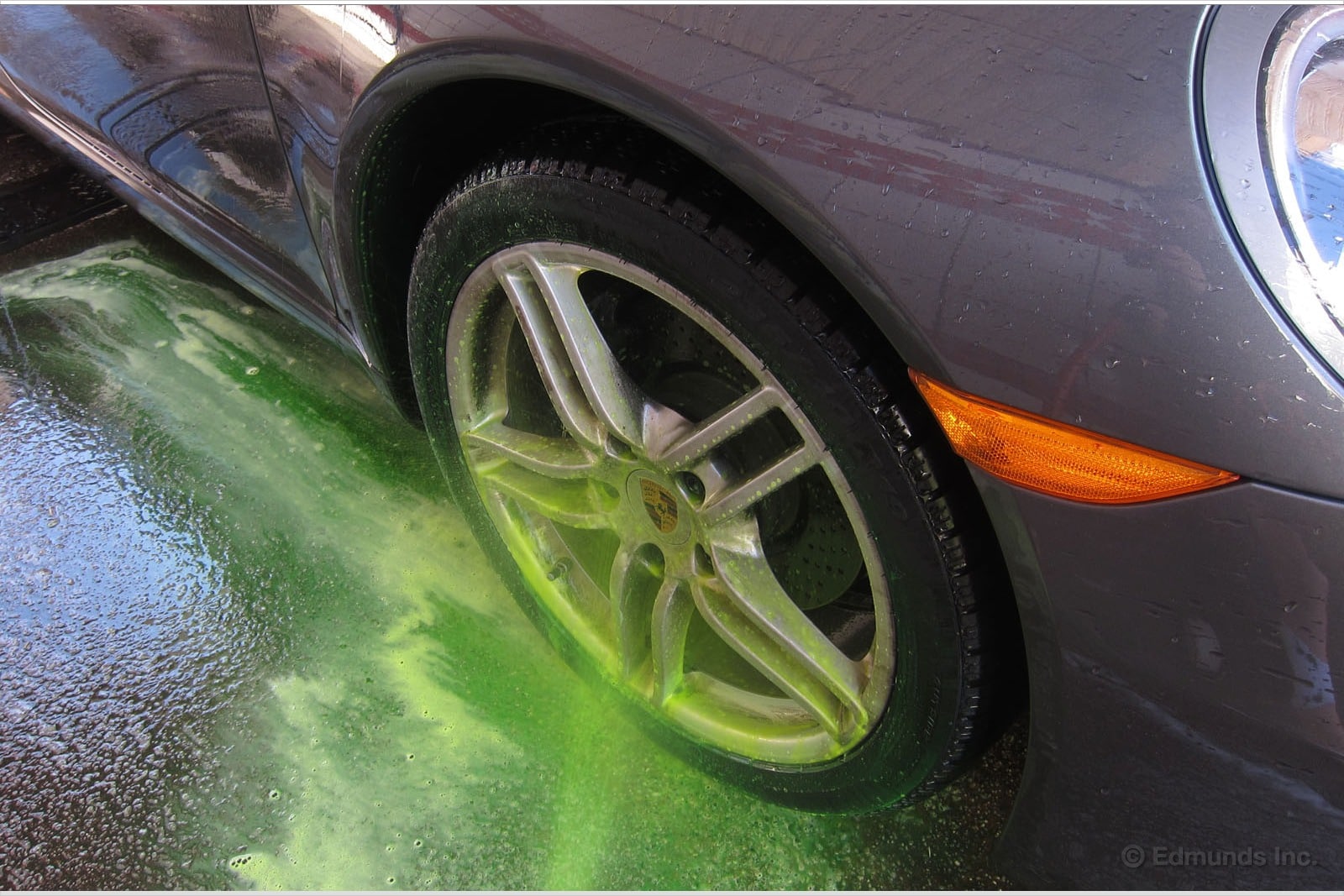

At the tail end of the road trip, our 2013 Porsche 911 Cabriolet declared that it needed service.
This wasn't an unexpected warning as we knew full well that the 911 requires a service at 10,000 miles and another one at 20,000 miles. We're not going to argue with a 10,000-mile service interval.
So, I got back to L.A., washed the car a few times and then called Beverly Hills Porsche, our closest dealership, to set up an appointment.
"Hi, I've got a 2013 911 Carrera Cabriolet that needs service."
"It doesn't need service until 10,000 miles, sir."
"Hi. I've got a 2013 911 Carrera Cabriolet that needs service."
"Oh. Wow. You might be our first. Good work!"
"Thanks. Can I bring it in today? Also, any estimate on how much this is going to run?
"We can take you tomorrow. As for the cost, it should be about $500. With this new car we have to take the wing off to get to the engine and perform the service. It's all labor."
"For an oil change? Wow. Great! See you tomorrow!"
I got to Beverly Hills Porsche a little late as their service center is not at their oh-so-convenient-to-me shop on Wilshire in BH, but down off of Santa Monica in West L.A.
I was helped immediately — Porsche knows how to treat customers — and was immediately shocked when he handed me an estimate that said $600. What was I saying about Porsche knowing how to treat customers?
I reminded him of our previous day's conversation where he said $500. He said this was the price. I said I still had the keys to the car (never give them up until you've signed some paperwork) and didn't mind driving to Long Beach or the Valley to hit a different dealer. Suddenly the estimate was $523.50 and I had a 10% discount and they offered to get it finished two hours earlier than the first estimate. Funny how things work out.
I headed back at exactly our pre-determined time and the 911 arrived 5 minutes later. They'd also pumped the tires up to their max-load setting of 36/44 that we've dealt with before. I asked if they could fix that, but it would require the car to be driven back to a different shop a few blocks down and take 10 or so more minutes. Not worth it.
Total cost: $467.63 ($324 for labor; $27.66 for oil filter insert; $10.30 for O-ring; $2.32 for alum seal ring; $85.50 for 0W40 Mobil 1; $2.25 for washer fluid (really, Porsche?); $2.04 for engine oil disposal; $2.00 misc; $11.53 tax.)
Total Time: 5h45
Days out of service: 0

After our cross-country road trip the Pirelli SottoZeros were still showing good tread and hadn't suffered much wear over the past 6,500 miles. Still, we'd had enough with driving on winter tires. They were darned good when the weather got cold or when we hit bad weather, but the summer tires we had on our stock 20-inch wheels just grip so much better.
Mark and I took the car down to our shop, threw it up on our Rotary Lift and swapped the wheels in about ten minutes. (And for those looking closely, yes, I forgot to bring the center caps and had to install them back at the office. That took another 45 seconds.)
I still think the 19s look better. We're considering getting a set of summer tires for these wheels as well. What say you?
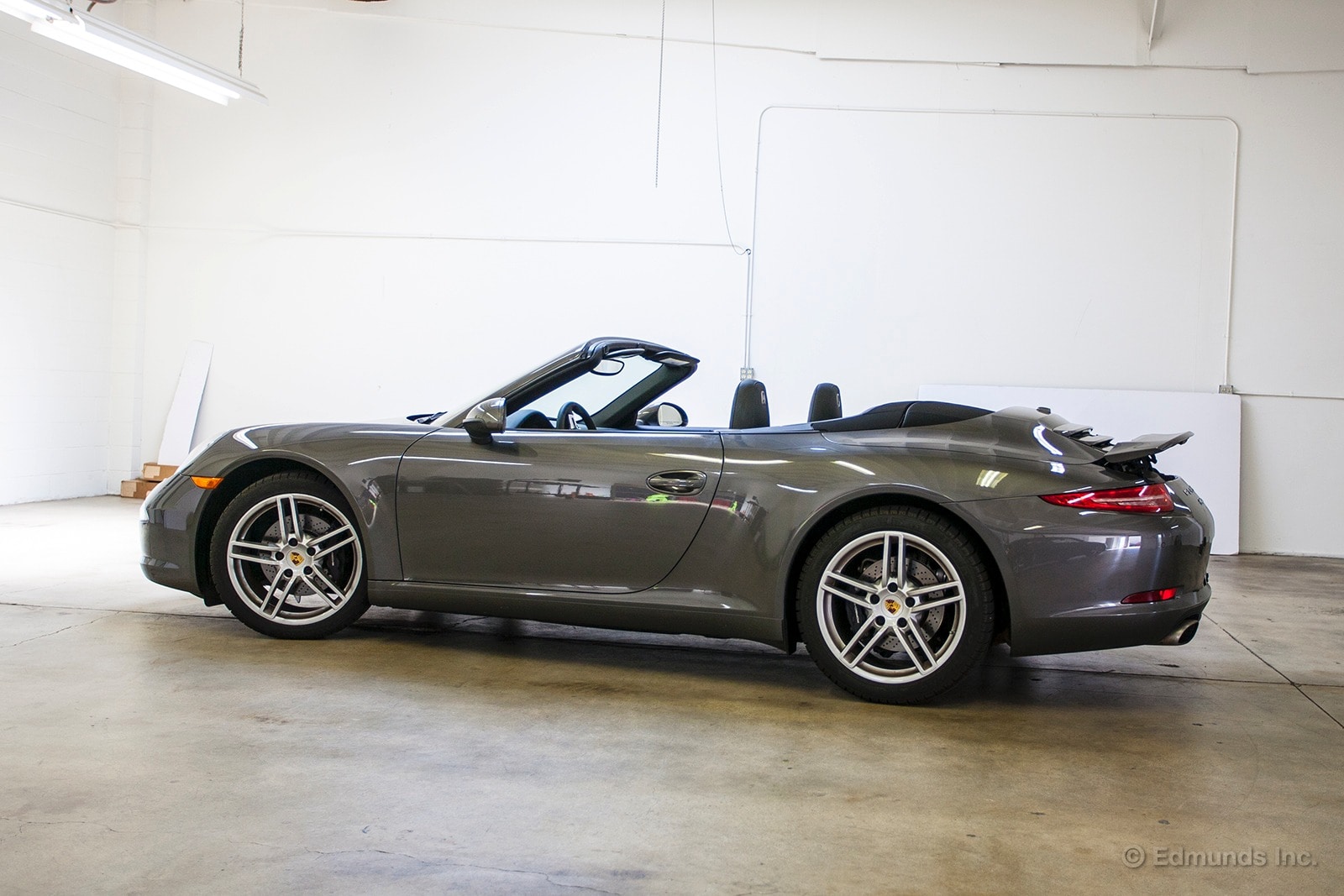
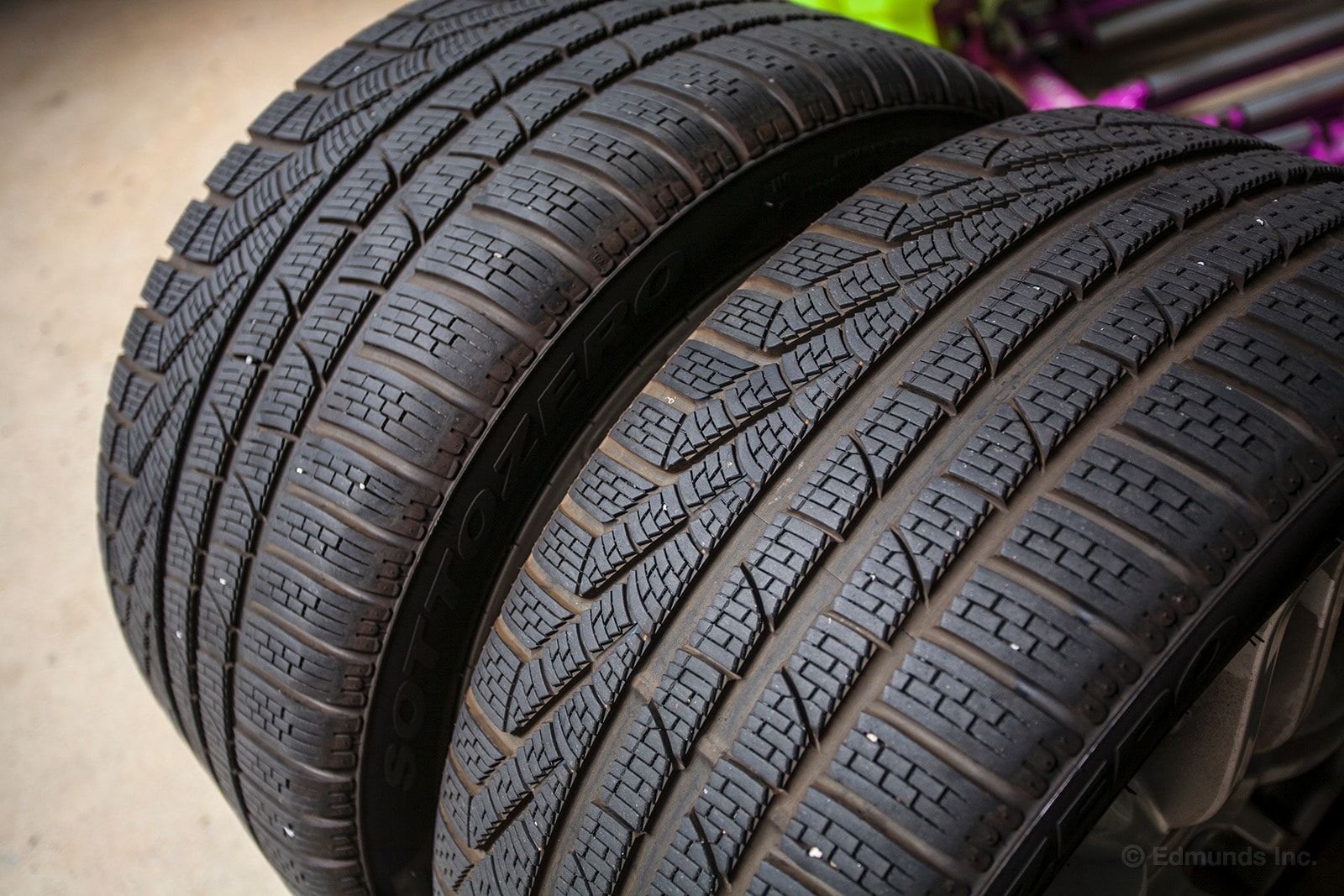
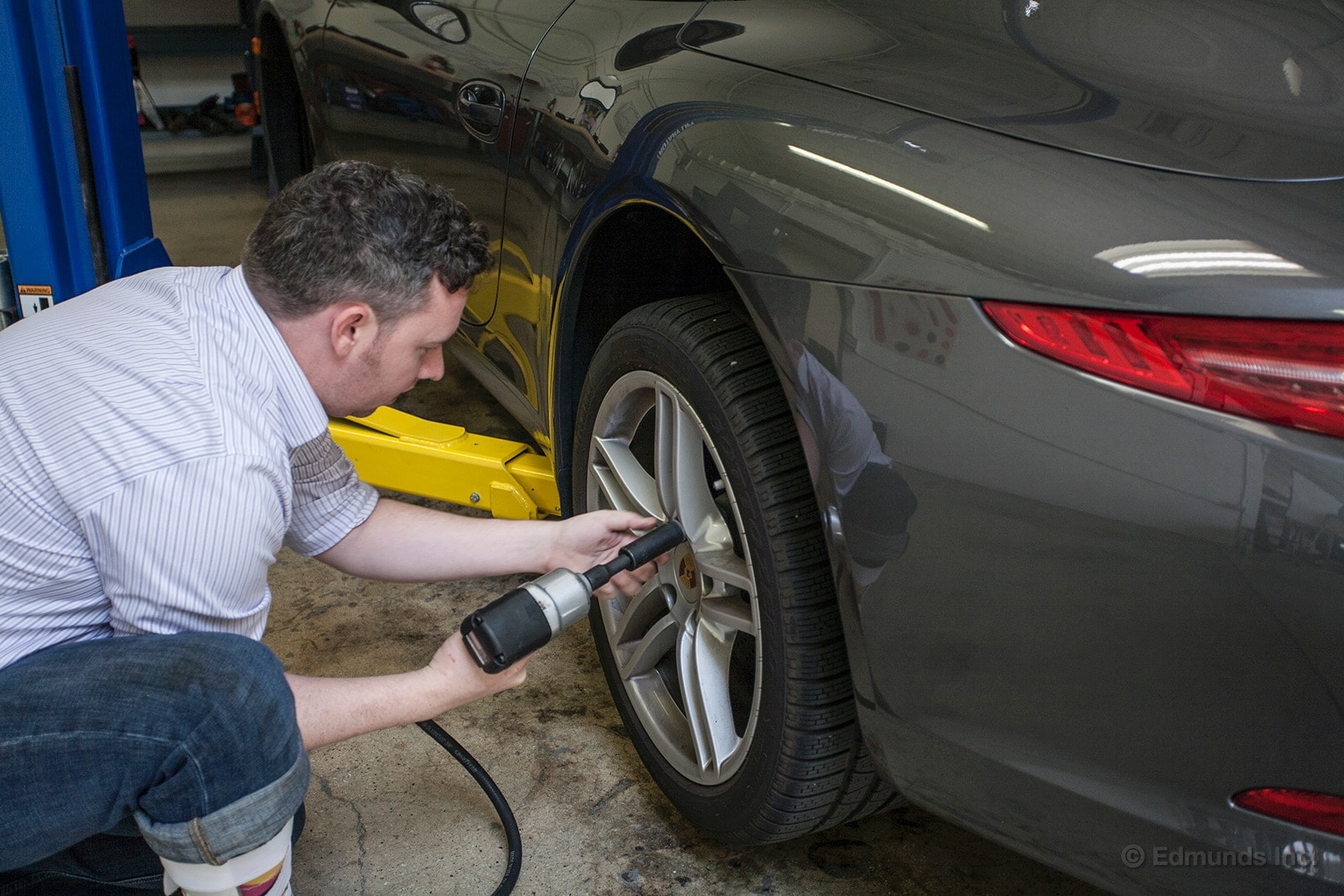
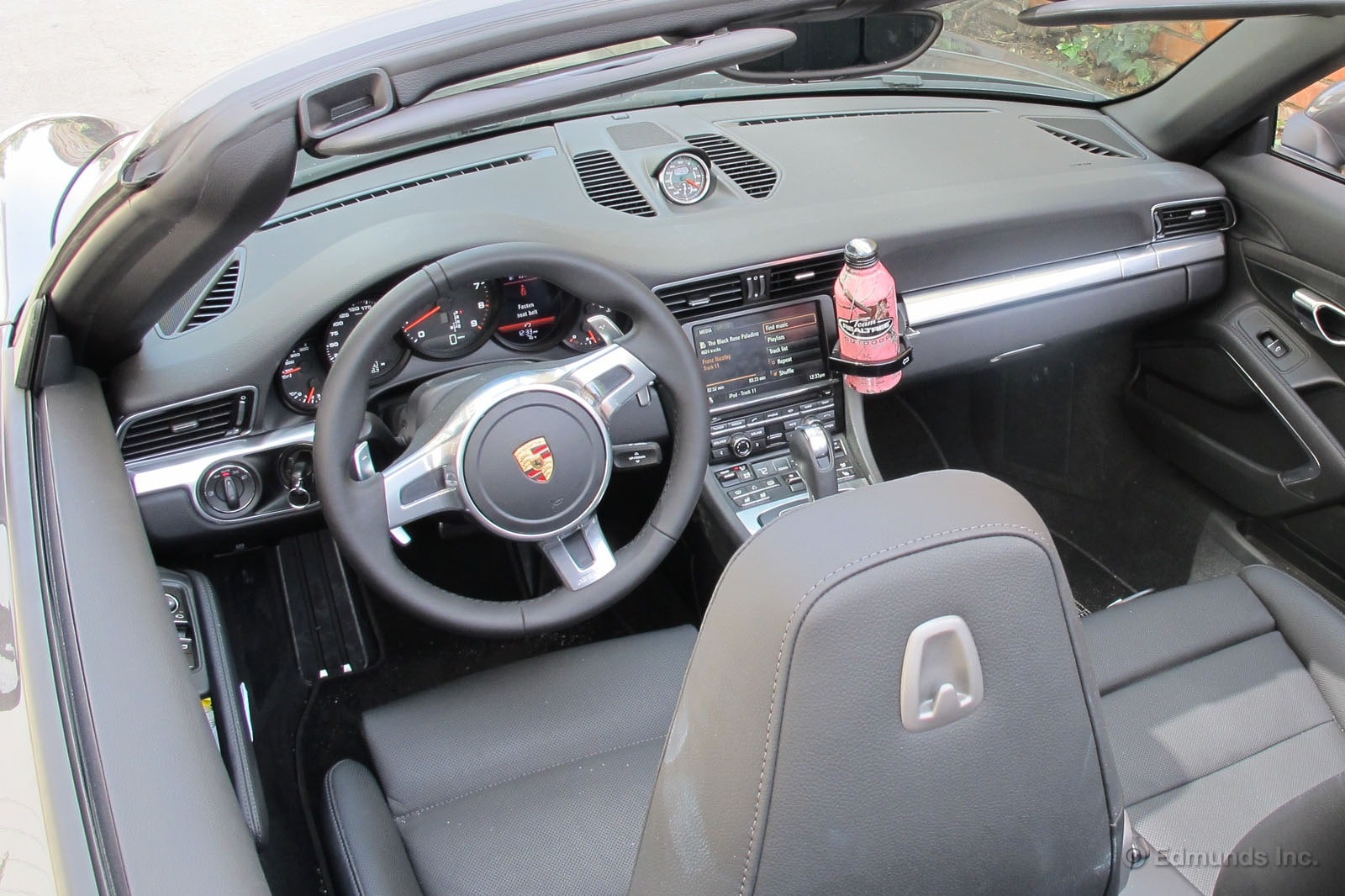
Before my cross-country drive in our 2013 Porsche 911 Carrera Cabriolet, I read through our long-term posts to see what I was getting myself into. One thing that stood out was a post by Erin, who was taking the car to NY for me, and addressed the Porsche's lack of garment hangers.
I was worried. I had a bunch of suits that wouldn't like being shoved into a bag. But this was a road trip and an adventure, if I got out of it with just a wrinkled suit, so be it.
So I shoved everything into the frunk and drove home to California.
And then, as I was taking some "after" photos of the 911, I saw them. Tucked into the front headrests in all of their bright plastic glory: hooks. Sure, they wouldn't have worked well with the top down, but they're better than nothing.
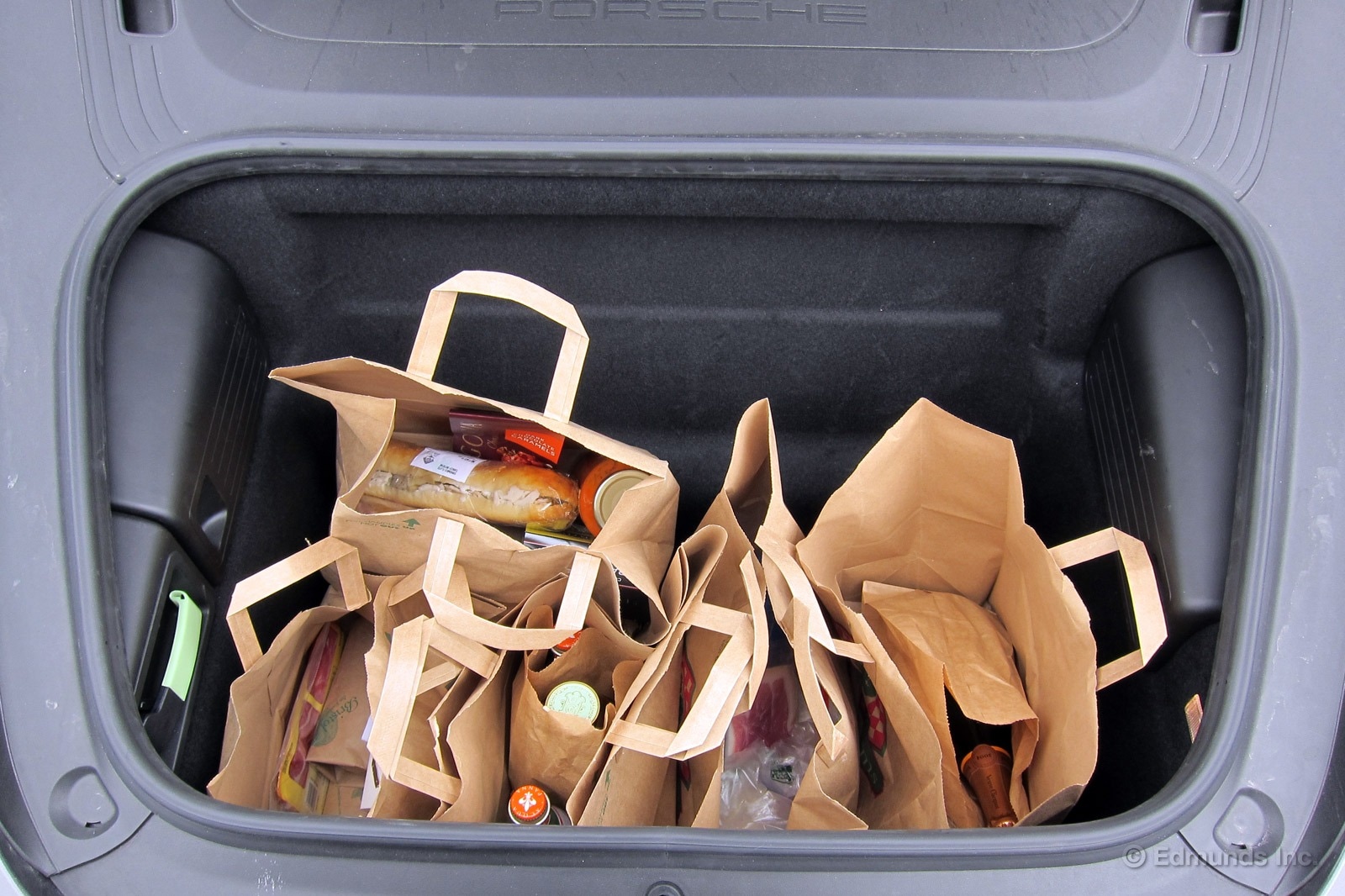
Both Erin and Mike said the frunk in our Porsche 911 Cabriolet held their carry-on bags but not much else. They had to use the interior for extra cargo space.
So, when I went to the supermarket and came out with way more than I intended to buy, I was not hopeful. But besides keeping two bundles of fresh-cut flowers in the backseat, the 5.5-cu-ft frunk managed to swallow five grocery bags standing up. It was nice to have them fit tightly and not be able to slide around.

This is nothing but nitpicking, but sometimes a car in this price range deserves it. I'm a little annoyed by the side mirrors on our Porsche 911, mainly because the bottom half of each mirror is covered in a big hunk of black plastic.
Now, I'm sure it's really nice plastic, and the use of plastic here is just one of a hundred things the engineers did to keep the 911s weight in check. But still, the mirrors are something you see every time you get in the car, and every time I open the door in our 911 I see that big piece of plastic on what is otherwise a finely sculpted machine.
For $100,000, you should be spared interaction with plastics. That is all.
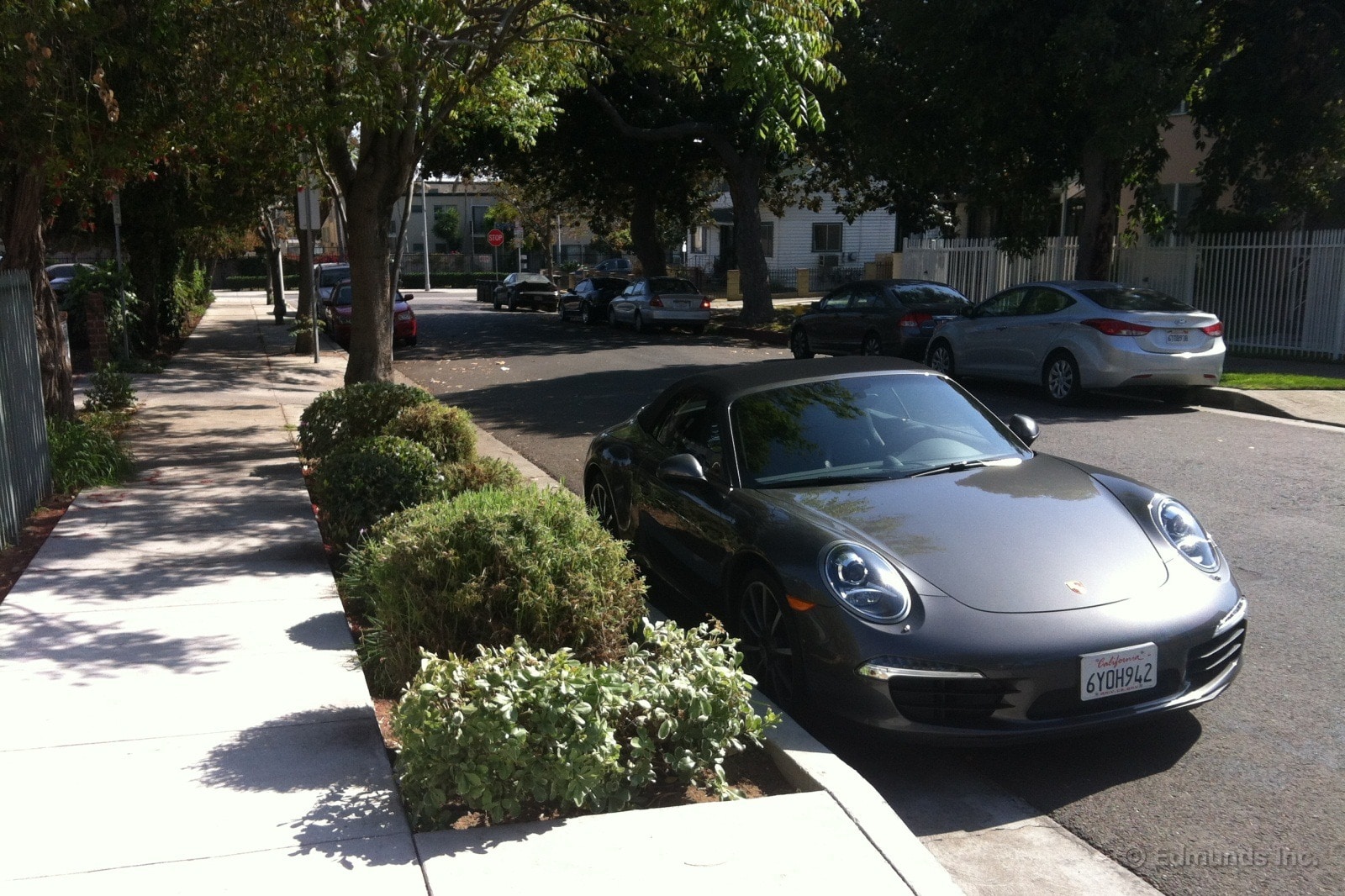
Our long-term 2013 Porsche 911's braking ability is outstanding in virtually every way. But there's that word: virtually. The one thing that could be better is the way our car approaches a halt in that tiny window of time just prior to when the tires stop rolling. Ideally you want a jolt-free stop, a result that comes from easing off the brake pedal ever so gently just as the car stops. The car then seamlessly transitions between rolling and stopping. In the trade this graceful halt is described as a "limousine stop."
In the Porsche there are no limousine stops. You get a jolt every time, as if you just got your license and haven't learned any nuance yet. It's impossible to be smooth when stopping this car, and I suspect it has more to do with the PDK gearbox (a transmission I've acknowledged as brilliant) than the brakes.
At some point prior to the stop, the PDK has to decouple the powertrain from the driven wheels. It happens to do this just as you're trying to modulate the brake pedal to achieve the desired smooth stop, and this unloads the engine braking effect, and so you try to compensate with pedal pressure, and you can never get it right in time, and...jolt.
To be fair this is a vanishingly minor niggle. However, Porsche as a manufacturer traditionally nails details of the driving experience such as this one better than pretty much any other automaker. It's part of what makes their cars so satisfying to drive.

As you can see, there's not much sidewall to the tires on our Porsche 911. A set of 20-inch wheels doesn't leave much room for such extravagances. The result is a slightly jarring ride depending on what you consider jarring.
Personally, I think our 911 rides exceptionally well given its combination of paper thin sidewall and firm suspension. It's an easy everyday driver, even on the beat-up, concrete highways here in Southern California.

Of course, not everybody agrees and Porsche knows that. There's apparently enough disagreement that the company even provides two sets of tire pressures. There are the standard settings on the door jamb and the "comfort" settings in the owner's manual. And even with those, there are "part load" and "full load" settings.
Needless to say, Porsche's engineers have gone to great lengths to dial in the correct pressures for the various situations you might encounter in the 911. It's as much art as it is science, requiring thousands of hours of testing and research. With that in mind, the next time you see a new Porsche 911 with aftermarket tires and wheels, don't listen to the owner if he or she says it rides like a truck.
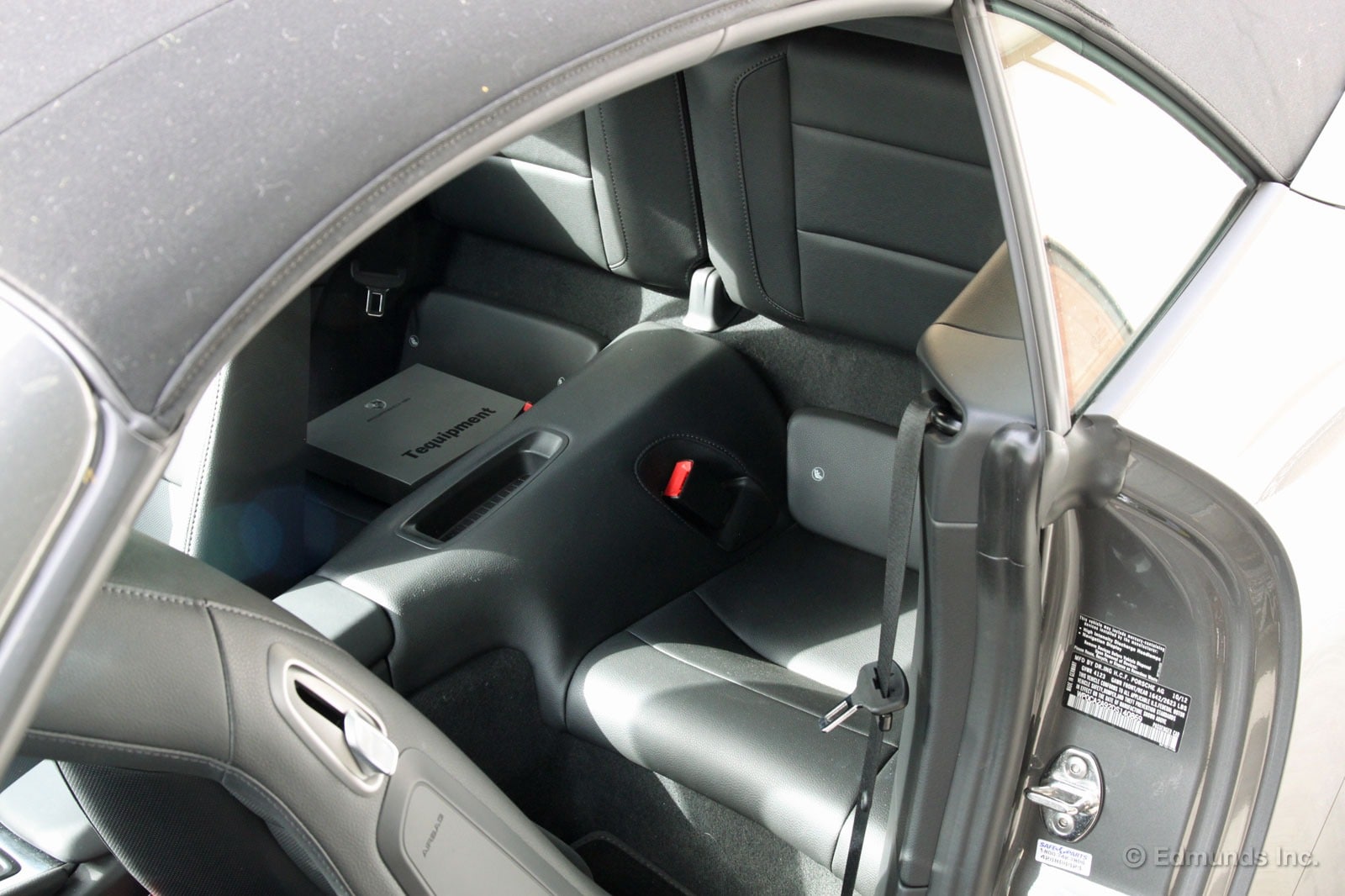
Most hardcore sports car fans would call the rear seats in the Porsche 911 useless. And they would be right to a large degree. You can't fit adults in them and even kids need to be small to wedge in there for any length of time.
So why bother with them? For one, they act as the world's biggest glove boxes. When you get in there's always plenty of space to throw whatever bag/briefcase/grocery bags you happen to be carrying.
Then there's the space factor. Having a pair of wide open seats back there makes the interior feel that much more spacious. And should you get caught waiting for somebody, you can lean back and take a nap. Try that in our SLS.
All of this may seem trivial, but if you're going to drive one car 100% of the time, little things like this add up. Even if I never used the rear seats in my Porsche 911, I'd still like to have them there.
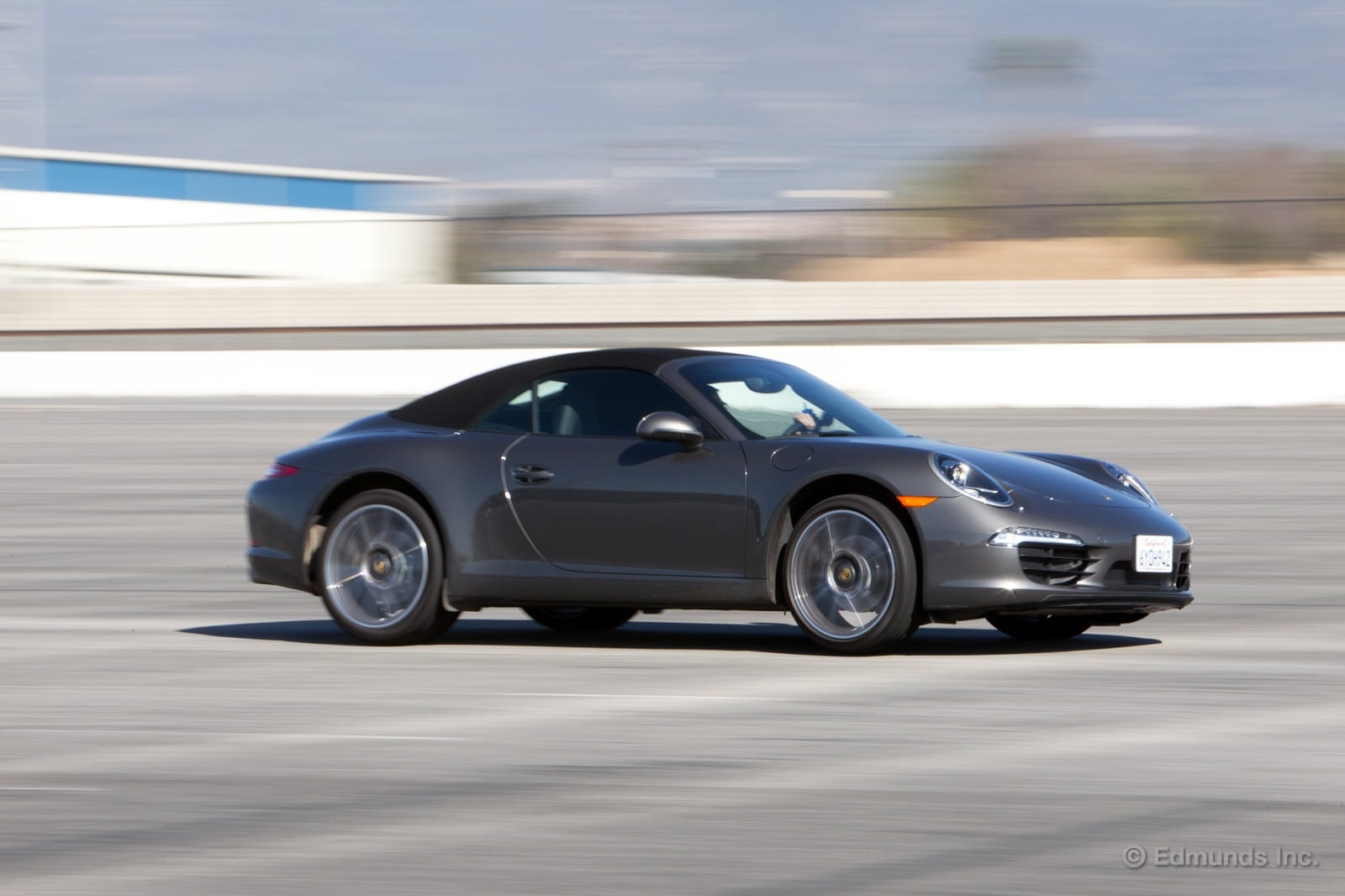
Before Erin and I shuttled our 2013 Porsche 911 Carrera Cabriolet cross-country, we took it to the track for our usual instrumented testing.
And for fun, we decided to compare it against a more powerful 991 911, a 2012 Porsche Carrera S Cabriolet.
Both have PDK, but the S has 50 more horsepower and better suspension. It also costs over $14,000 more.
See how both fared here: Track Tested: 2013 Porsche 911 Carrera Cabriolet vs. 2012 Porsche Carrera S Cabriolet.
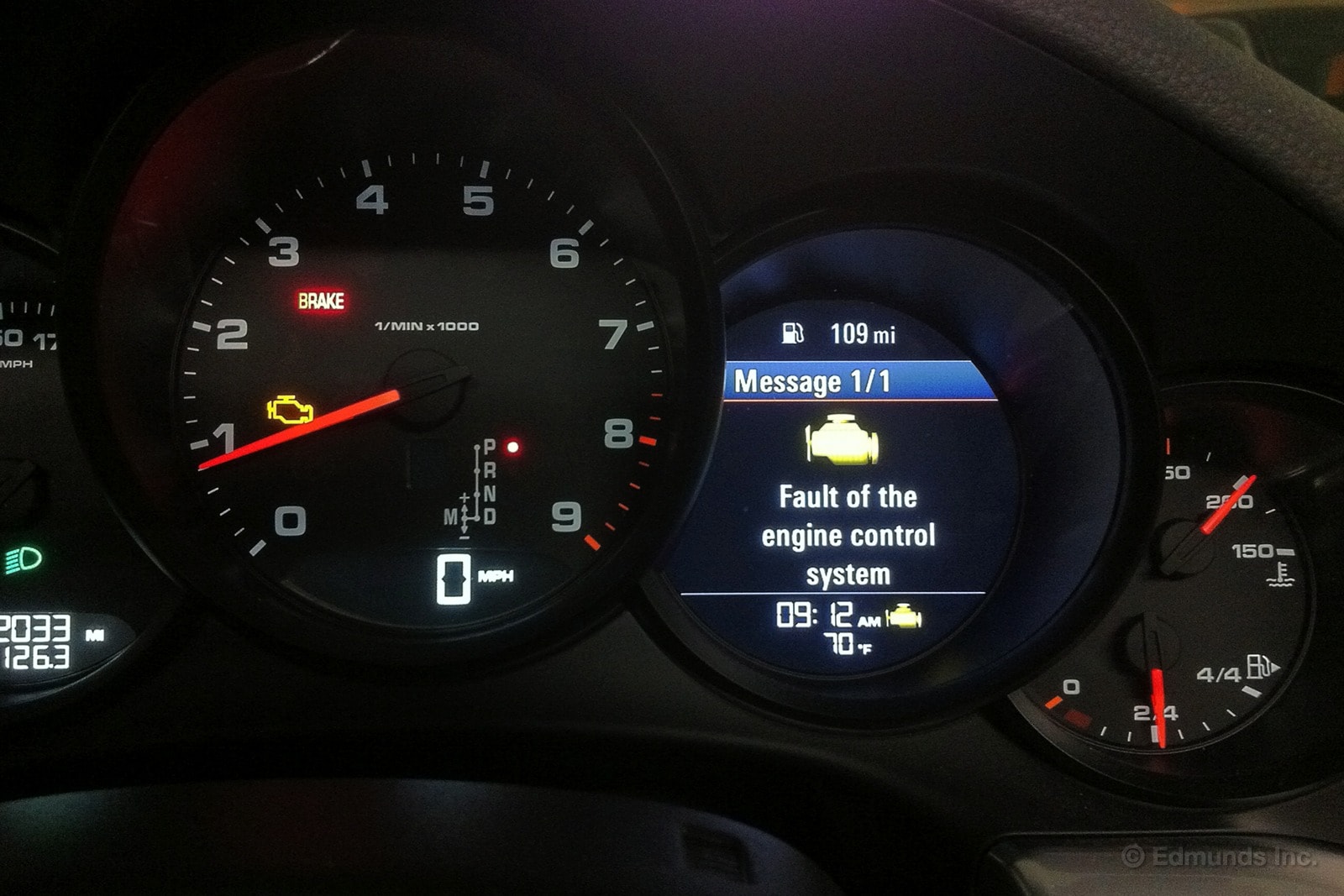
So here's a check engine warning that popped up in our long-term Porsche 911 when I started it up this morning. The 911 ran just fine on the drive into the office, so hopefully it's nothing major. Stay tuned.

Takahashi noted it first, and although I always hope for spontaneous remission of car problems, there has been no self-healing here. The "check engine" light in our 2013 Porsche 911 Carrera Cabriolet continues, in its very correct German way, to covey both information and blame.
We'll report back on what this "fault of the engine control system" turns out to be. We've checked for both loose gas and oil caps. Both are firmly in place.
What's the first thing you do when you get a "check engine" light?
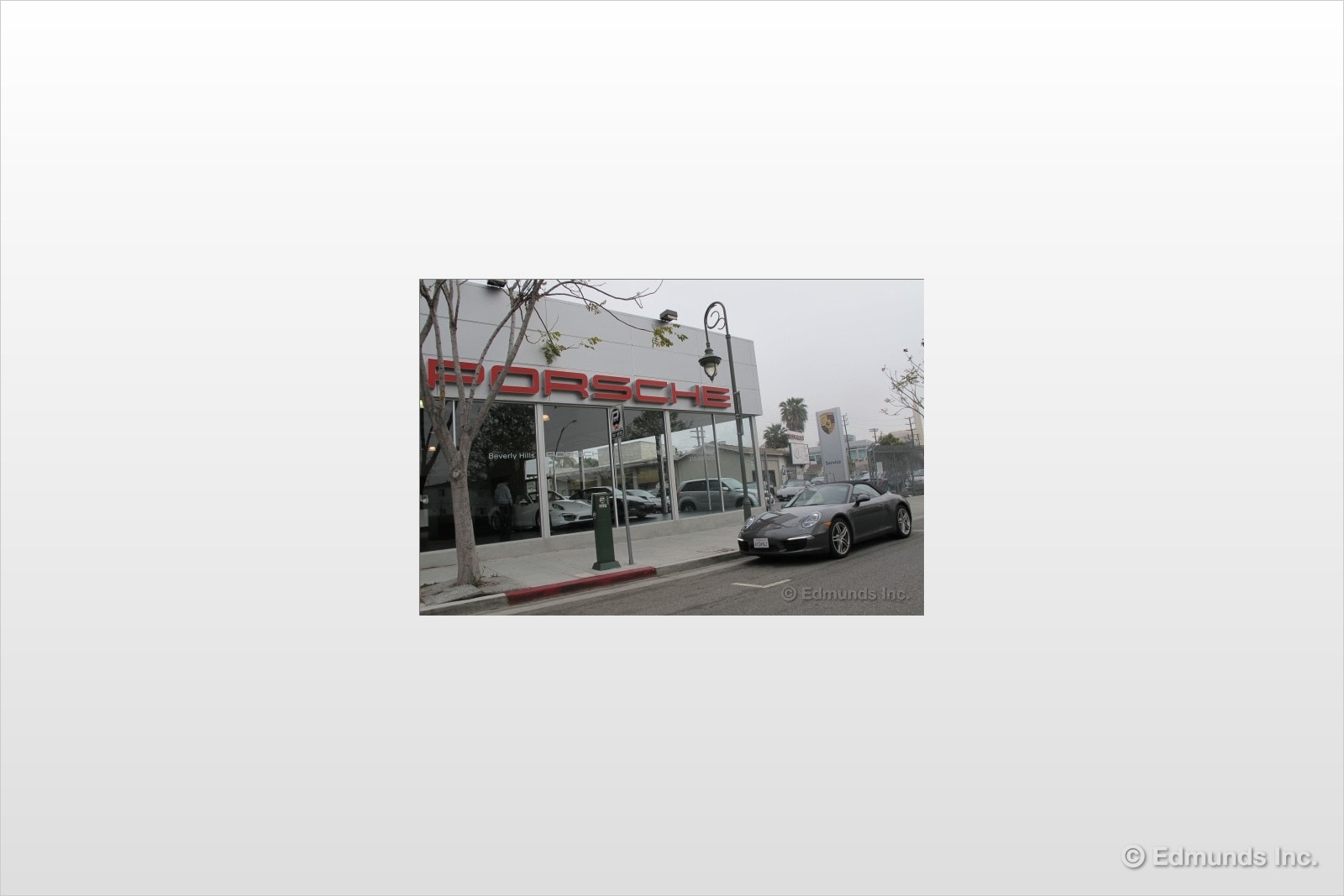
I took our 2013 Porsche 911 Carrera Cabriolet to our friends at Beverly Hills Porsche. And like some kind of automotive Dr. House, assistant service manager Erik rendered a probable diagnosis without even looking at the car.
"I know what it is," he said: the tank leakage diagnostics module. It's malfunctioning, and apparently a bunch of 911s of the 991 generation are having this issue. The parts are on order and should take a week to arrive. Erik says the car is good to drive in the meantime.
That's a relief. It's supposed to be a nice weekend.

As you've read before, finding the correct tire pressures for our 2013 Porsche 911 is no easy task.
We're currently running our tires at 31 psi front and 34 psi rear according to the "comfort, part load" specifications. In conversations with Porsche, they suggested that we use this tire pressure for our testing as well as it should give us the best results.
We could take their word. Or we could try it out for ourselves.
Our first track test, which we published on Tuesday, didn't report the numbers at 31/34, but rather 31/39 — a pressure suggested in the manual for less casual driving and the one that our driver liked the best.
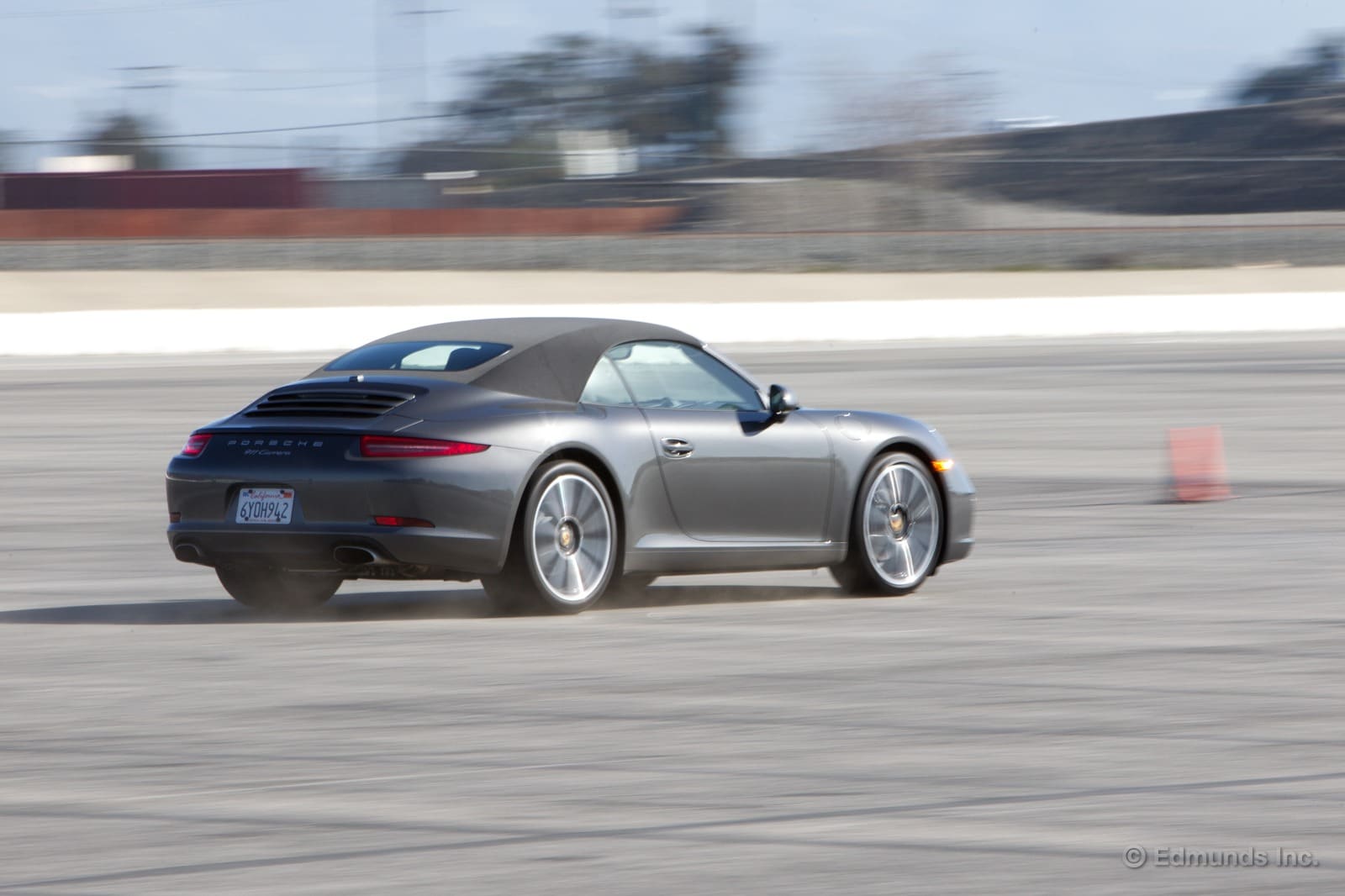
See the numbers in the chart below, and the driver's comments below that.
| 31/39 | 31/34 | |
| 0-30 (sec.): | 1.8 | 1.9 |
| 0-45 (sec.): | 3.1 | 3.2 |
| 0-60 (sec.): | 4.7 | 4.8 |
| 0-60 with 1-ft Rollout (sec.): | 4.4 | 4.5 |
| 0-75 (sec.): | 6.6 | 6.7 |
| 1/4-mile (sec @ mph): | 12.9 @ 108.4 | 13.0 @ 107.9 |
| 30-0 (ft): | 25 | 26 |
| 60-0 (ft): | 102 | 102 |
| Skid Pad Lateral Accel (g): | 0.99 | 1.00 |
| Slalom (mph): | 71.3 | 70.5 |
Comments on 31 psi front, 39 psi rear:
Acceleration: I only did one run with Launch Control and it was essentially the same as before with the higher rear-tire pressures. Same amazing launch and lightening shifts. No measureable feel or difference.
Braking: Once tires and brakes were hot, the best stop was the second and matched exactly our previous best 60-0 stop. No measureable feel or difference.
Skidpad: Like before, zero intrusion from PSM as the limit approaches and is even surpassed. If I was forced to point out a difference with the lower rear pressures, I would say the rear slip angle was slightly greater, but we can't verify this with the instruments we have.
Slalom: Here, however, the car felt more lively and loose. The turn-in was just as quick, but the car itself felt less stable and trustworthy. Sure, the ultimate slalom speed is slightly lower, but more or less comparable (down by 0.8 mph) , yet it required more vigilance and concentration on my part. I'm confident I could match the previous best, but it would take a bunch of runs to knock off the mere 0.06 seconds that separate my previous best to today's best.
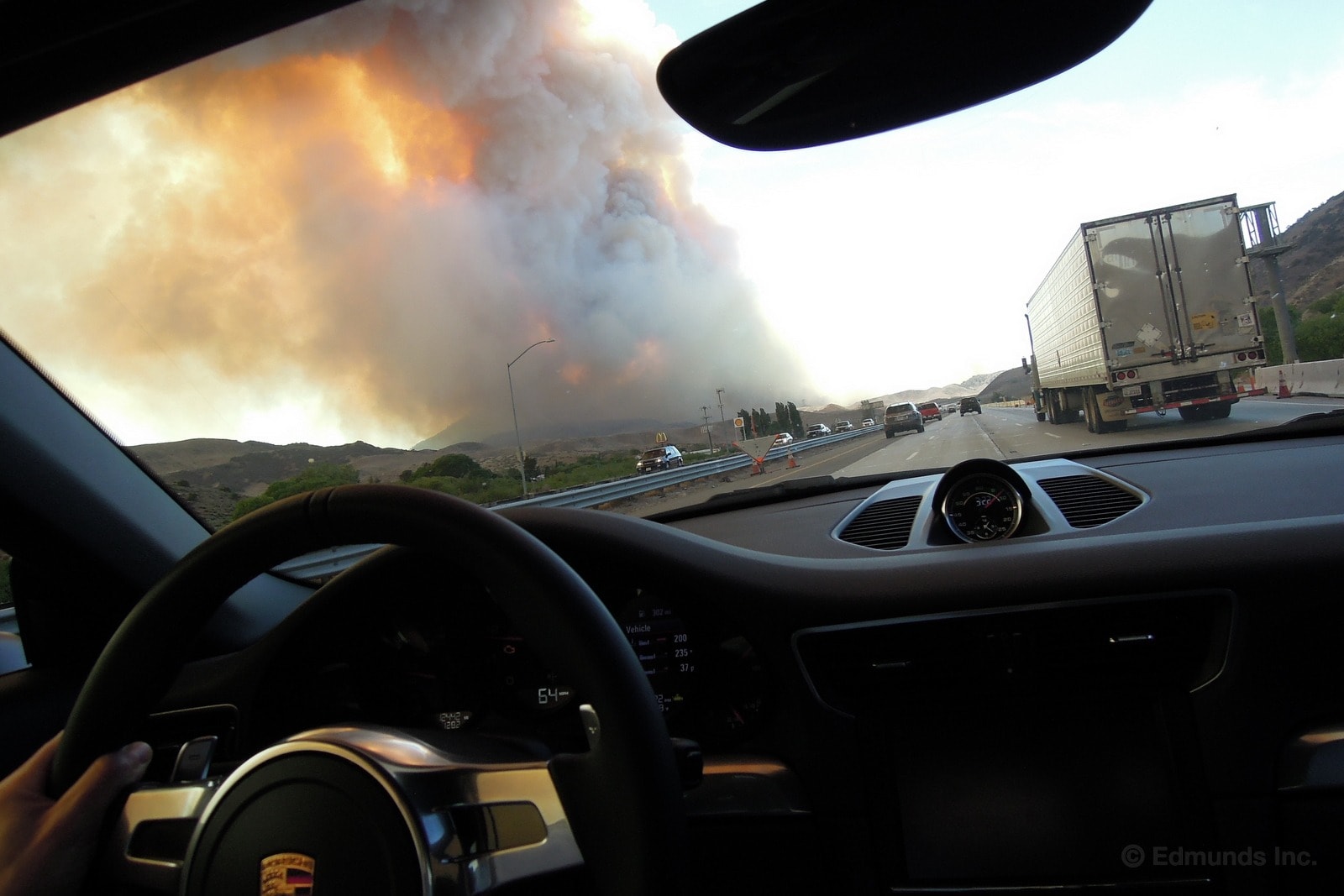
Our 2013 Porsche 911 has driven through freezing temperatures, ice and snow, thanks to its trip to New York. Now, a couple of months later, you can add "forest fire!" to its check-off bucket list.
Actually, it was more of a 4,100-acre wildfire that I encountered about 80 miles north of Edmunds' Santa Monica, CA, office. There was no imminent danger to motorists at the time, but it made for some very interesting scenery.
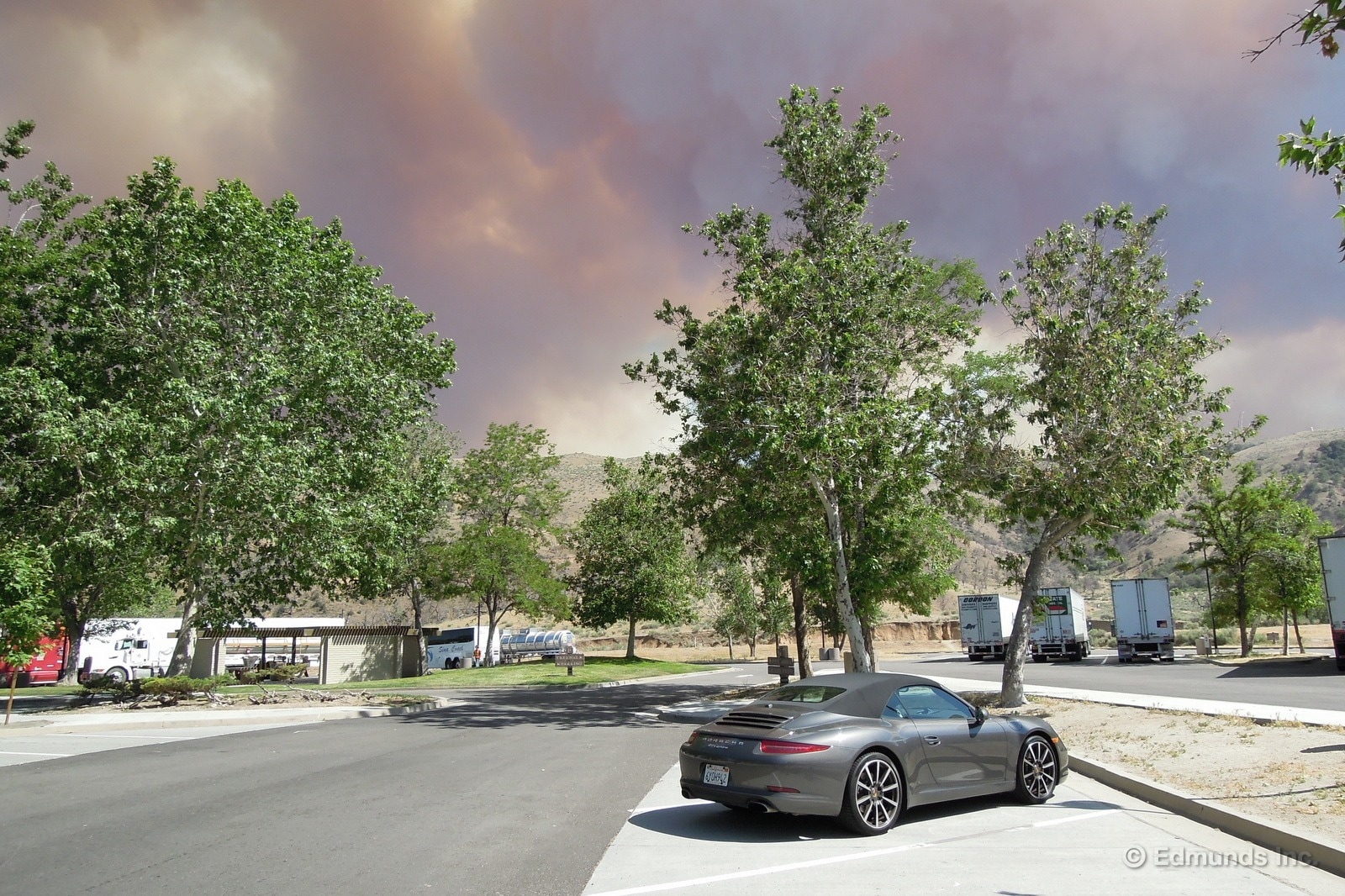
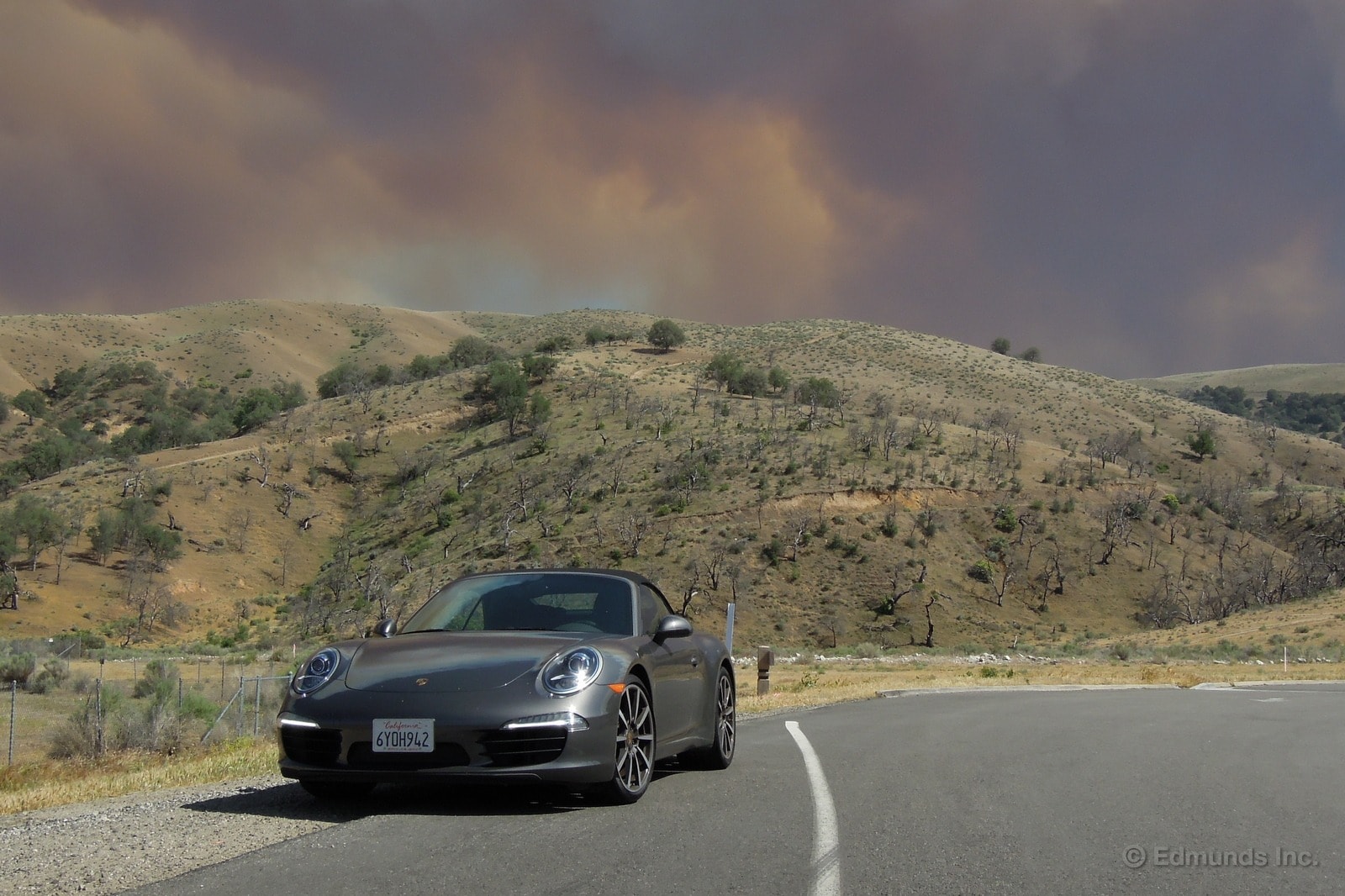

For a car that's has so much history behind it, it's inevitable that car enthusiasts are going to have preconceived notions about the Porsche 911. From some of the comments we've read or heard, it seems our long-term 911 is seen as a "lesser" car by a few people.
It's the base model, not the high-output S, they say. It has the automated PDK transmission, not a traditional manual. It's a convertible. It's got the big, flashy 20-inch wheels.
This is the 911 you assume smarmy Hollywood agents buy simply because it's a "Porsch."
Maybe those agents do just that. But if you were to drive our 911, you'd realize that it still has more pure sports car genes in it than just about any other competitor.
The 3.4-liter flat-6 engine is just sweet. The first time I got on the throttle and heard that snarling, raspy exhaust note singing up to redline, I unexpectedly chortled in a half laugh, half "Oh my god, this is so cool!" sort of way. Growling V8s are a dime a dozen. This one's unique. And yeah, even in base form, she's fast enough for you, old man.
PDK: Jay Kavanagh wrote that it's brilliant. I'd agree. He also said he'd still get the manual. Personally, I think PDK is so good that I wouldn't miss the manual.
Convertible: The body structure is so stiff you'd never know it's a convertible until you looked up to see what's over your head.
Wheels: Now that we've sorted out the tire pressure issue, our 911 rides a lot better. Meanwhile, it's still got great steering feel, proper weighting and loads of handling grip. It's still a car that's an absolute blast to drive.
In total: so our car's not a GT3 or Turbo. But it's still very much a 911.
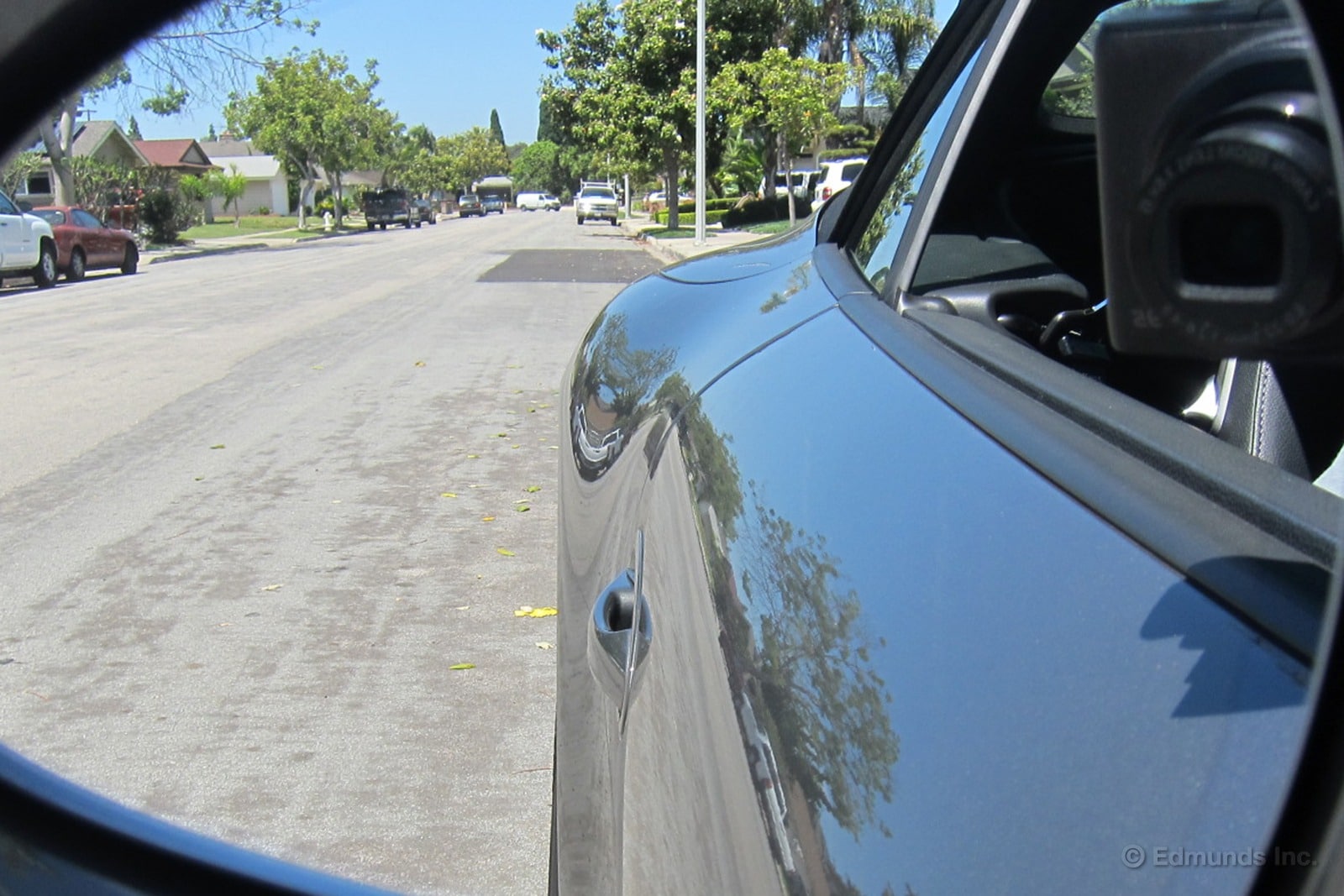
All right, so this is a lousy photo to illustrate my point, but you've seen a 911 before. You know what its hips look like. When we think of curves, we think Italian or maybe Jaguar (pound for pound, does anyone bend sheet metal better than Jaguar?).
We could get into a long history of 911 design but we won't. Lingering for a moment in the side mirror, you're reminded that the Germans can do sexy as well as their Anglo and Latin rivals.

Cross country in a 911? Erin Riches and I did it around the time of the 2013 New York Auto Show in our Long-Term 2013 Porsche Carrera Cabriolet.
You know this. You followed us on the Long-Term Road page.
Now, skip all those bothersome words and take a look at the trip through the lens of our cameras and view all 131 photos of our 6,608.6-mile Cross-Country Road Trip.
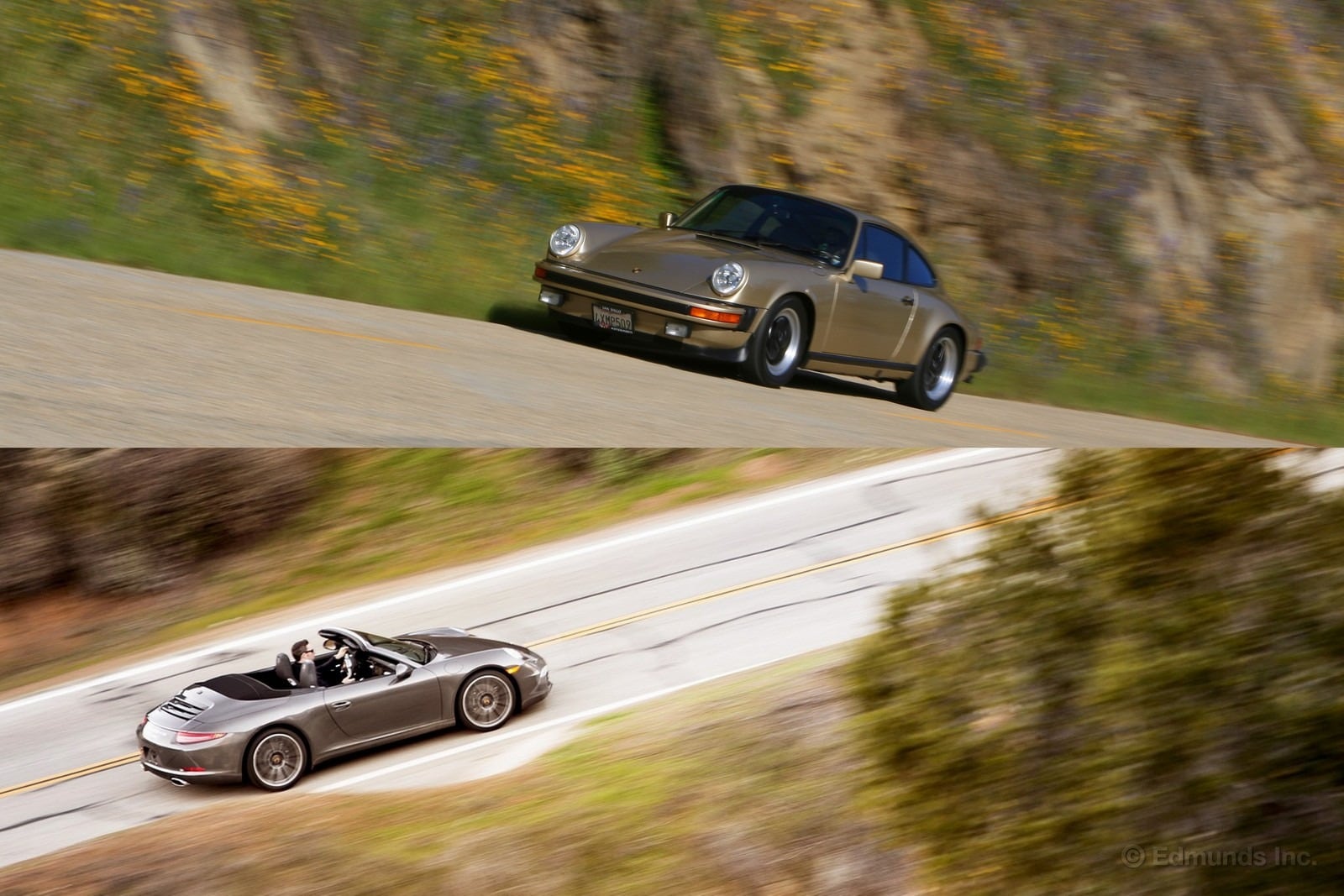
A friend of mine owns an older 911, a 1983 911 SC. Curious to get his thoughts on our long-term 2013 Porsche 911 and 30 years of 911 progress, I suggested we go to lunch.
I met him at his office. The 1978-1983 generation 911 had always been his dream car growing up, and he finally got the chance to buy his in 2001. Right now it's just a weekend car for him.
We do a little walk around. "So, this one has a radiator, eh?" my friend starts off with. Man, even 15 years later they (Porsche people) still talk about the day Porsche switched from air-cooling to water cooling like it was the Reformation or something. For the most part, he's into the older 911s more than the new ones.
Still, he does like the look of the newest 911. I show him the "frunk." He notes it's a lot deeper than the one on his '83, but not as long.
"Let me see the engine," he says. Uh oh. I pull the switch down near the driver-side rocker panel, which raises the convertible top's cover and reveals the oil and washer fill points and not much else.
"That's it," I tell him. "That's all you can see." He just shakes his head. I follow with: "But it's German. It's a Porsche. You don't have to ever do any service because it never breaks, right?" He just gives me a look.
After that we hop in the 2013 and drive to lunch. The PDK transmission, he admits, is pretty sweet after seeing and hearing it blitz through upshifts. "My wife would actually drive this car thanks to this. She hates driving my 911." I can certainly see his point.
He thinks that the ignition slot (still to the left of the steering wheel) and classic, black-and-white gauges are cool. He also likes the fact that you can bring up a navigation screen in the configurable gauge cluster display.
But then he gets giddy over something I would have never expected.
"Oh, this is great! Cupholders!" he says, popping them out of the dash. "On mine, you have to try and keep your water bottle in the door pocket." He's serious.
And sure enough, we end up using one of them on the way back from lunch.
He takes a few pictures of the 911 with his iPhone before I leave. He's going to show his older son, who's in elementary school. "I lusted after the 911 when I was his age. This generation for him would be the equivalent of my car when I was young."
A couple decades from now, his son could very well be looking at buying a 2013 Porsche 911. That's pretty cool.
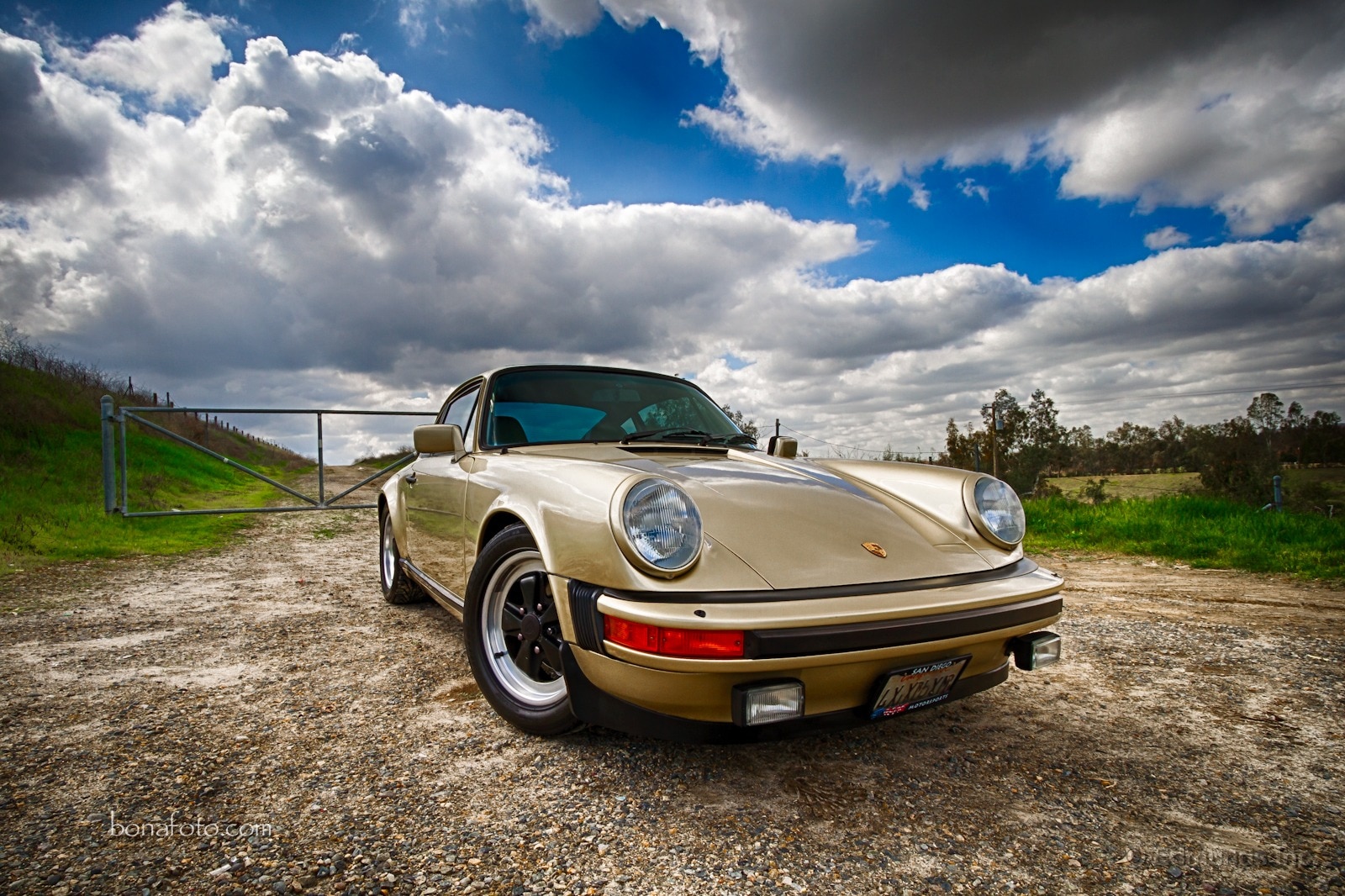

If you're fortunate enough to have a 2013 Porsche 911 at your disposal, I suspect you'll always been on the lookout for extra opportunities to drive it. Maybe your household needs some milk, or a drug prescription picked up. Exciting or mundane, it doesn't matter. All you need is an excuse.
In my case, I cheerfully asked my wife if there was anything we needed. Diapers and toilet paper, I was told. "Great!" I said. "On my way!"
They even fit perfectly in the 911's "frunk."
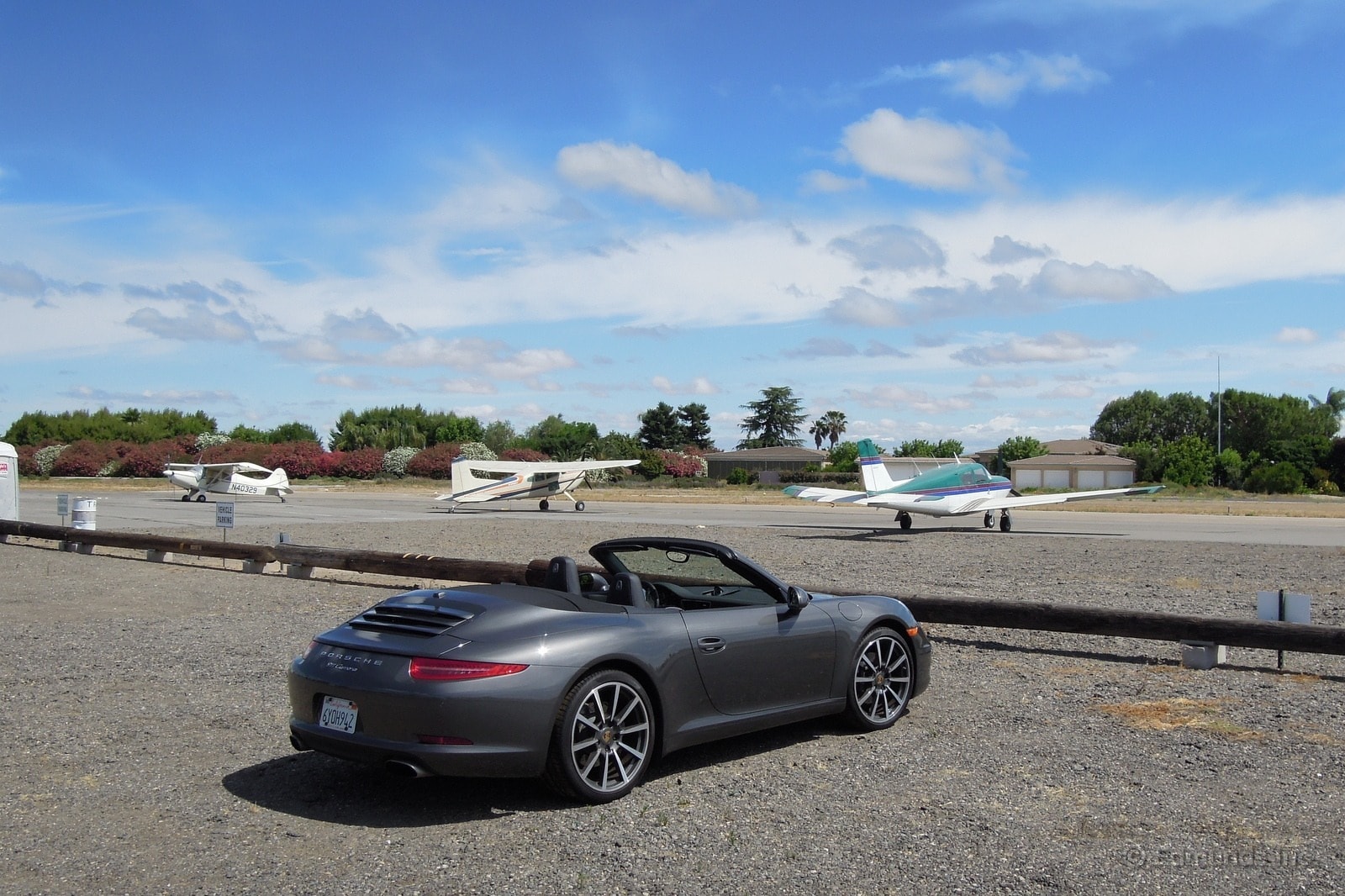
On a recent weekend morning I was out driving our long-term 2013 Porsche 911. It was a beautiful day. Sunny, 76 degrees and pretty blue sky and clouds. Ideal, you might say, for a convertible sports car such as our 911.
I only had a few errands to run that morning, but I took the long road back to savor the experience. I've grown quite fond of our 911 for the way it drives, sounds and feels.
Later that day I played around with Porsche's online configurator to see what 911 I'd end up with. (For funsies, you know.) Well, it was expensive, as 911s tend to be. And of course, I don't have the financial balance sheet to support such a thing.
But it's certainly fun to live the life for at least a little bit.
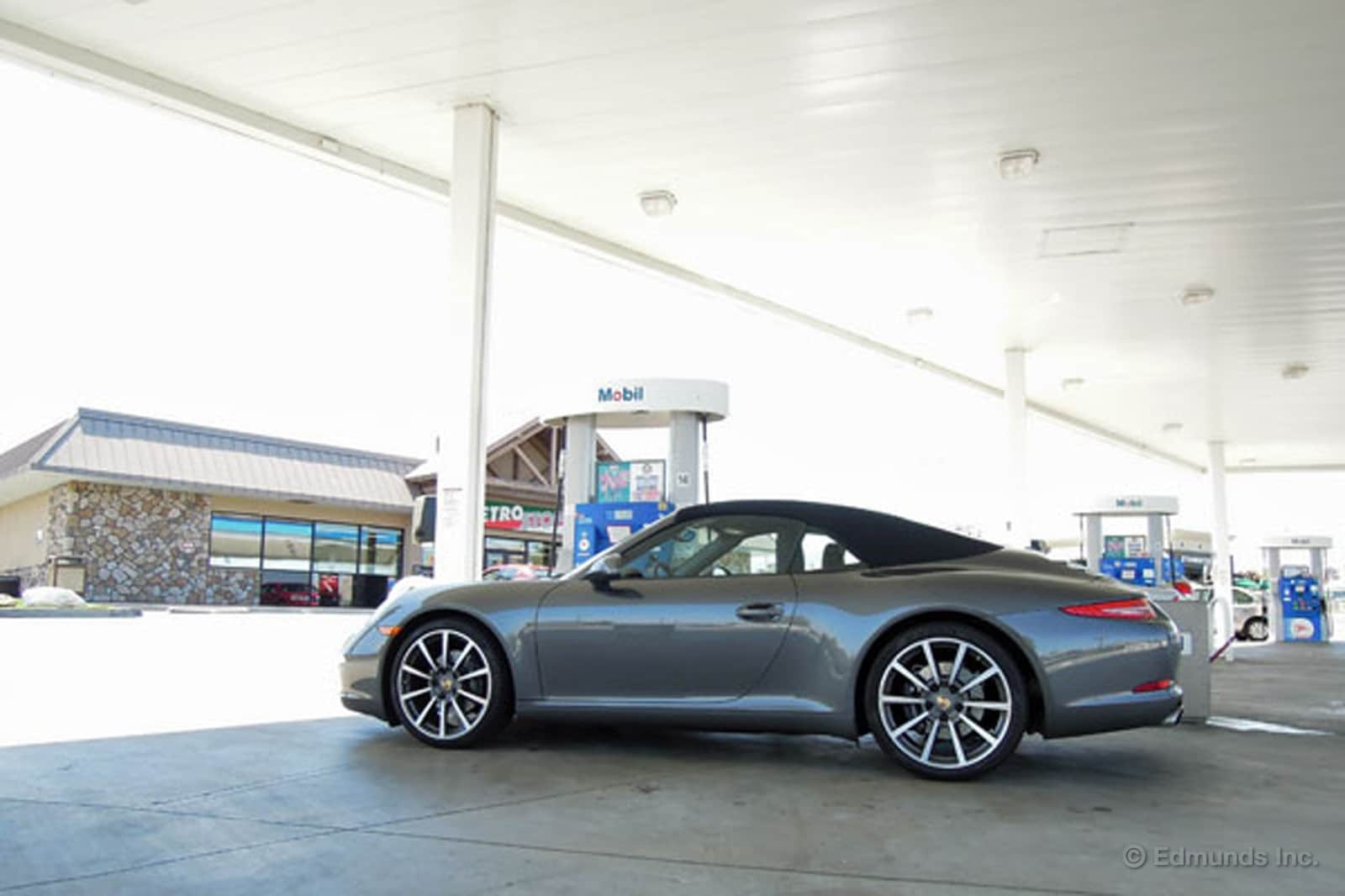
Now that our Porsche 911 has settled back into daily driver duty after its cross country trip, its mileage has suffered a bit. Its overall mileage number dropped from 22.8 to 22.4 after several tanks of, uh, let's call it aggressive driving.
If anything, the variations between tanks noted in this month's log show that the 911 is very responsive to driver behavior. Drive it like a sports car and it will nail you with mileage in the teens. Go easy on the highway, however, and it will deliver an easy 28-29 miles per gallon.
Worst Fill MPG: 12.4
Best Fill MPG: 31.4
Average Lifetime MPG: 22.4
EPA MPG Rating (City/Highway Combined): 20/28/23
Best Range: 511.8 miles
Current Odometer: 13,668 miles
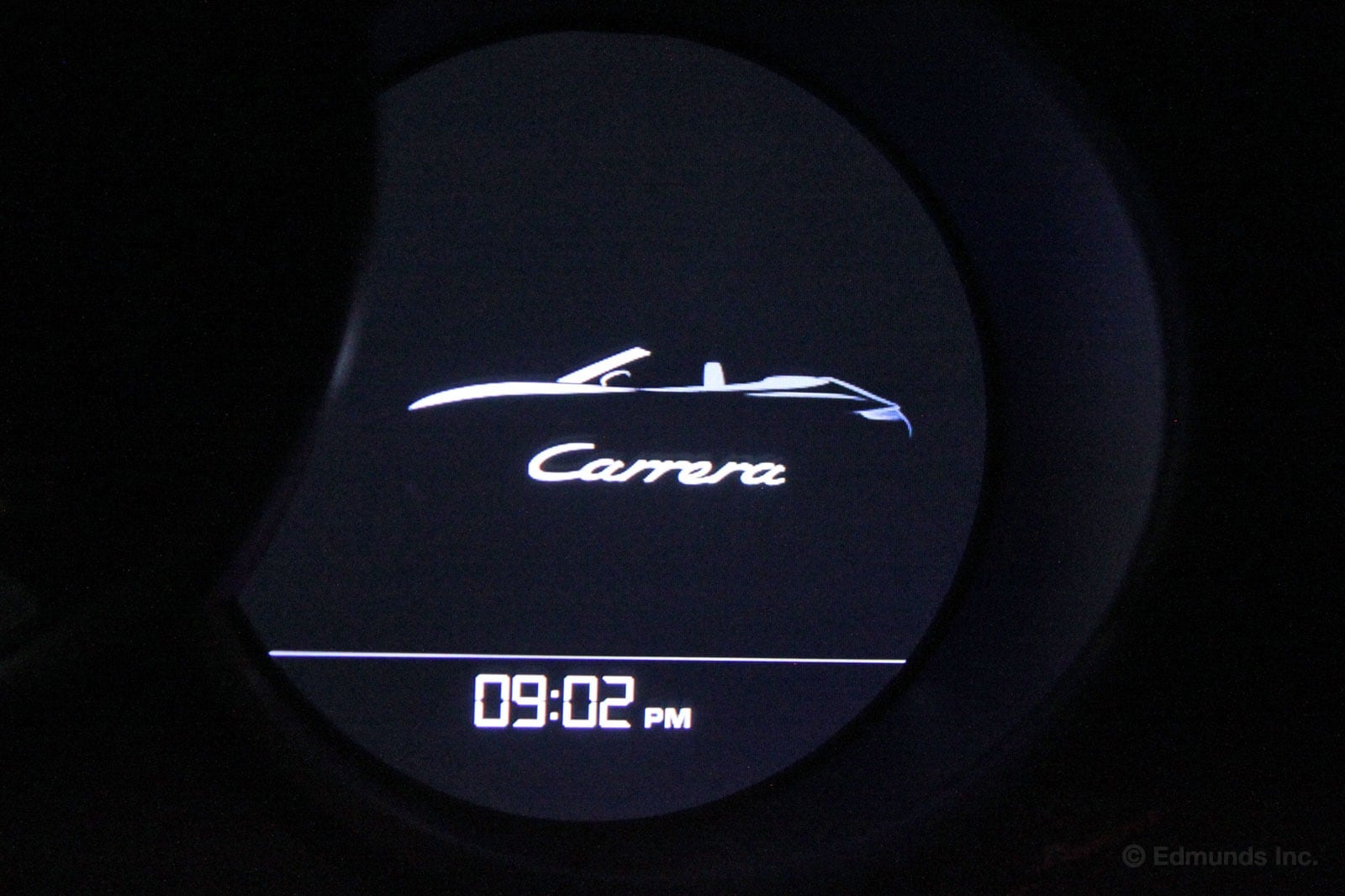
Whenever I drive our 2013 911 Carrera I'm always struck by how well Porsche's engineers sweat the details. It's evident throughout the cabin and it almost makes it feel like it's worth over $100,000.
The image on the instrument panel that correctly shows the silhouette of a convertible in our car is just one small example. The feel of the shift paddles is another, as is the action of the buttons on the dash. Everything is uniform and tight, from the rarely used engine cover switch to the often used "Sport" mode button, they all feel the same.
Even the electronics appear well thought out. After connecting my phone's Bluetooth signal once, it remembers from there on out. I just get in the car and it connects. Clearly someone has paid attention to the annoyance of Bluetooth connections. And that's not typically a strong suit of German companies, especially ones that compete in Porsche's price range.
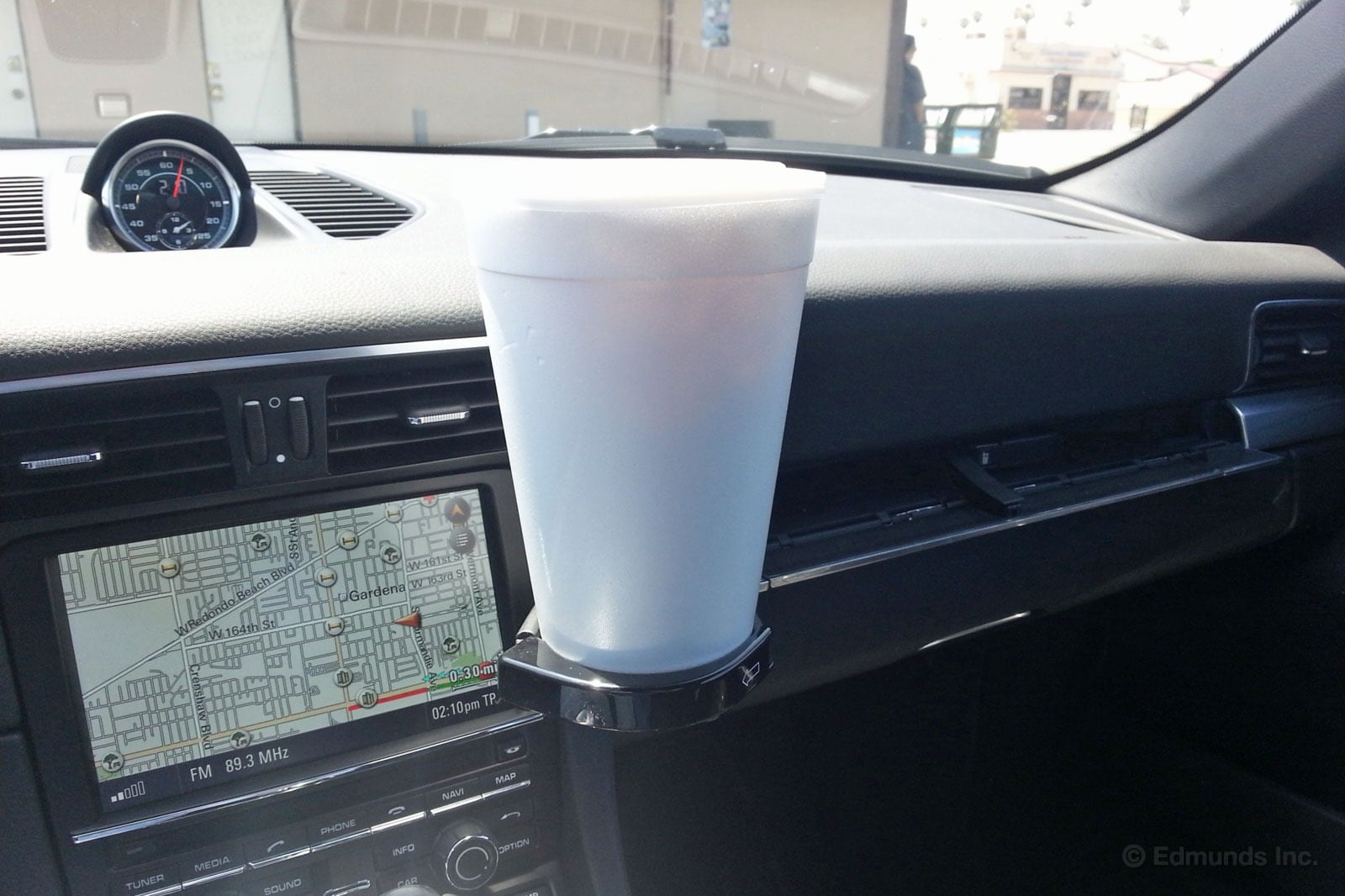
Porsche can make a damn fine sports car, but when it comes to cupholders, it doesn't waste much time on them. The fold out contraptions used in the 911 are marginal at best, so they don't stand a chance against the monstrous Styrofoam cups used at a local teriyaki bowl stand I splurge on every once in a while.
Purists will say "who cares" since this is a sports car that's meant for driving. I say, if they can make a car with the engine hung off the back end handle like this, one decent cupholder shouldn't be a problem, right?
It's a debate with no end, and it didn't matter anyway as I just sat in the parking lot to eat my bowl of chicken and rice. To its credit, the cupholder did actually hold the cup in question, but there was only about half an inch in so even the slightest hint of g-force would have sent it into my lap. Not exactly a deal breaker for me, I would just as soon not drink and drive. But for those who have to have a morning cup of coffee on the drive to work, the 911 isn't your friend.
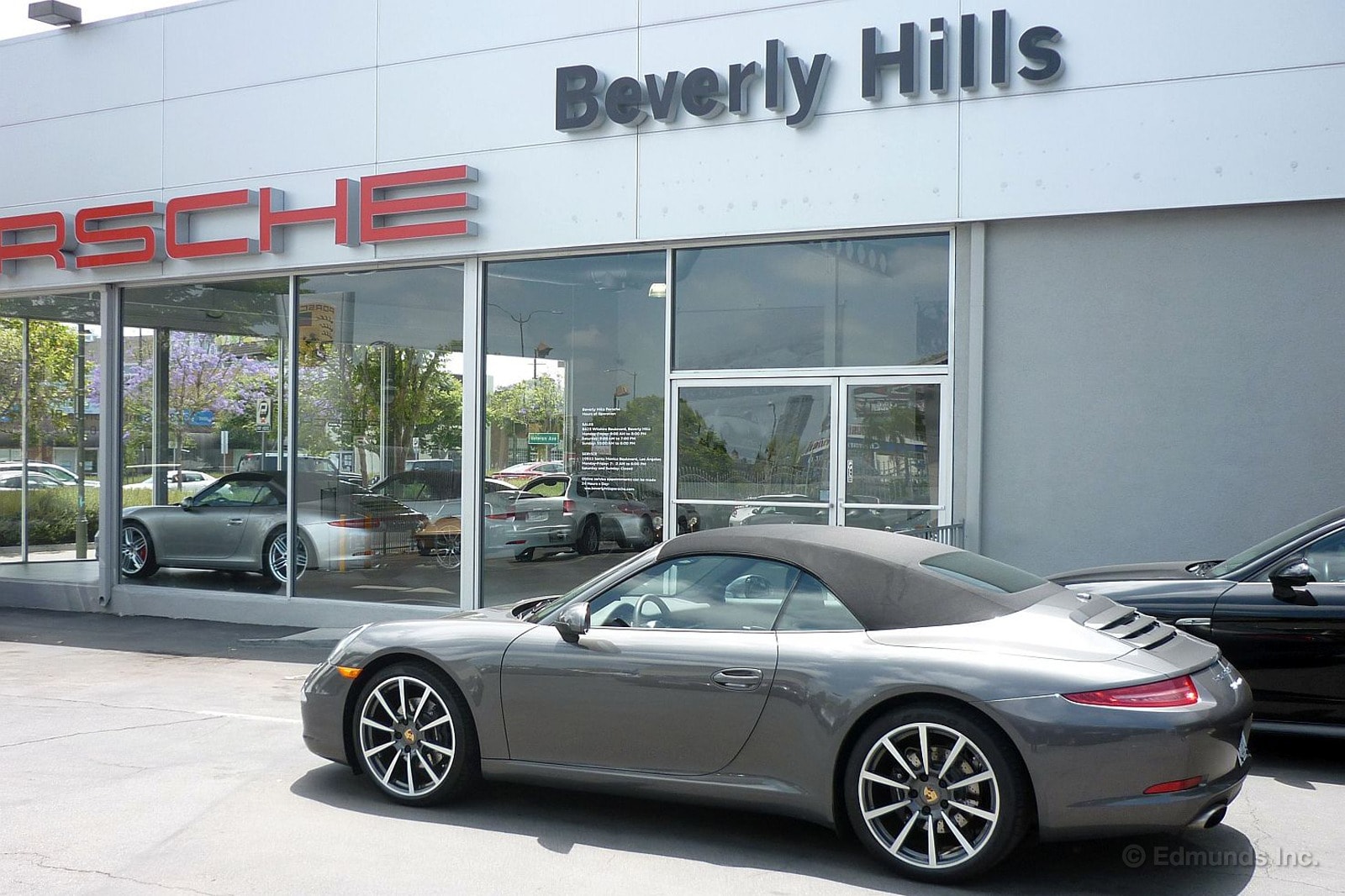
If you remember, Beverly Hills Porsche told us the cause of the check engine light on our 2013 Porsche 911 Carrera Cabriolet was a faulty tank leakage diagnostics module. Apparently this has been an all-too-common problem on the 991 generation.
The part arrived, we dropped the car off at the service department in the morning, and the work was finished the same afternoon.
Parts and labor free of charge, of course.

There have been a few times now when I've gotten out of our 2013 Porsche 911 after driving it and found myself saying out loud (to myself, but hey, nobody else was around), "Man, this car is cool."
Now, you might be thinking, "Of course Brent would say that. It's a 911". Well, that's true. But it really does go deeper than that. It's the little details that Ed Hellwig has mentioned. It's the way the exhaust sounds both raspy and smooth at the same time. It's the way it looks, iconic yet up-to-date. And it's the way I feel connected to the car through the steering wheel. I'm relaxed and confident, never intimidated.
Everything comes together in a way that isn't easy to understand from just looking at pictures and specs. Our 911 is one very cool car.

I'm not really a convertible kind of guy. I don't like roasting in the sun, I'd rather not have the wind in my hair, and the noise on highways gets old quickly. Now, I do appreciate the top-down experience more in cooler months when I can bundle up, throw on a hat and enjoy the car at slower speeds on a scenic and/or twisty road. There is certainly a more engaging experience one enjoys. Unfortunately, my wife takes little joy at any time of the year. She doesn't tolerate the cold and I certainly understand why she might not relish having long hair constantly whipping about her face. Put together, we are not ideal candidates for a lengthy drive in a convertible.
Nevertheless, the Porsche 911 Cabriolet turns out to be an exception.
Am I roasting in the sun? Put on the butt coolers. Is she freezing in the winter? Put on the butt heaters. Is the wind fussing up our respective coiffures? Put up the windows and the ingenious power wind deflector. The latter results in a cabin with simply a light breeze cycling through. I get a little more since I'm closer to the windshield header, but I'm far from needing Mercedes' goofy Air Cap thing.
I was skeptical about our decision to get the 911 Cabriolet in favor of a traditional coupe, but now I'm actually thinking it's the one I'd get.
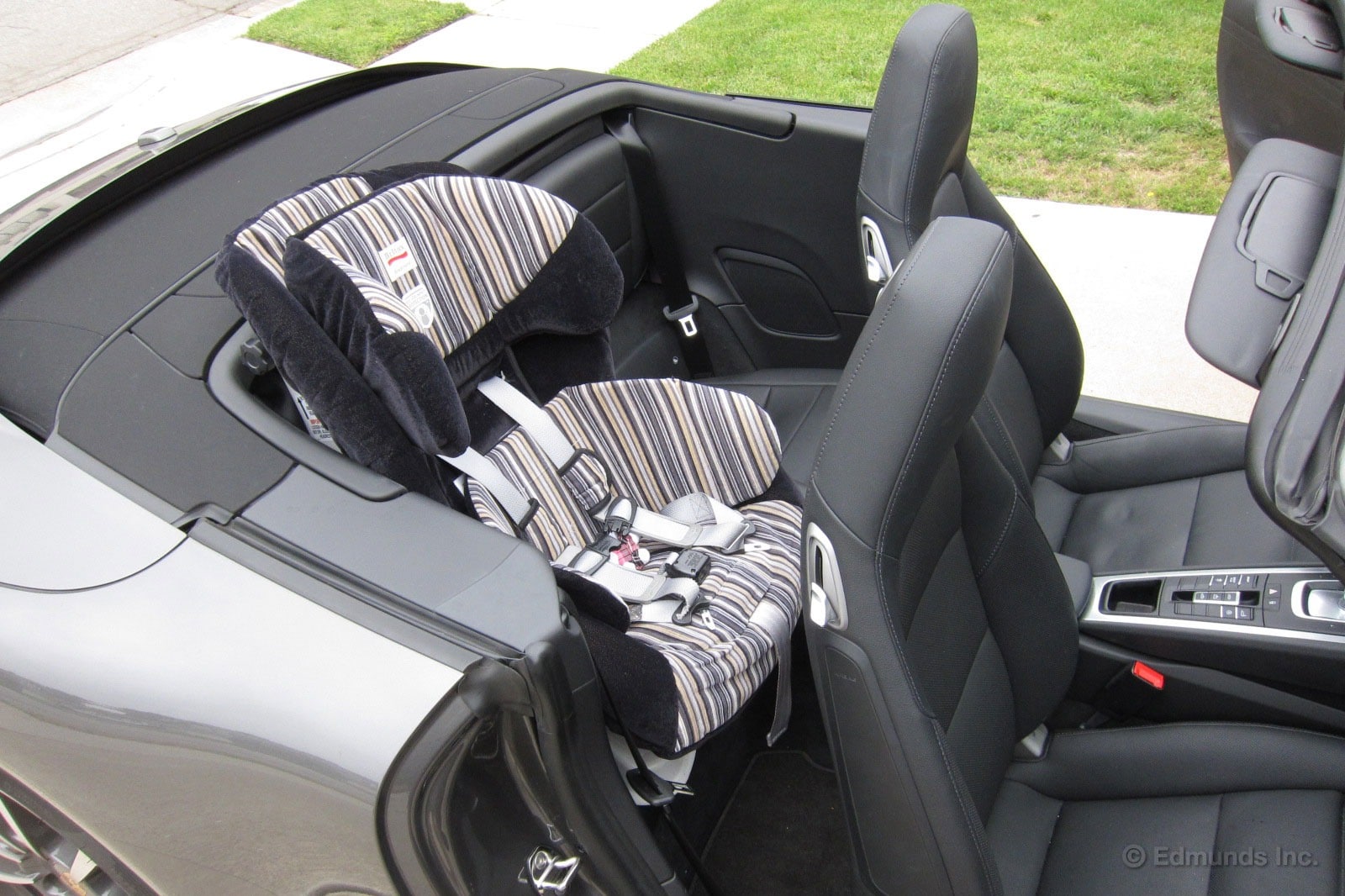
The presence of LATCH fasteners in our Porsche 911's back seats (I use the term loosely) means somebody thinks it's possible to put a child seat back there.
Here's the reality...

It can be done. But there are multiple caveats. First, there's no top tether, at least not in the Cabriolet. But the fact that you can lower the top to install the seat not only makes it easier but also possible without injury.
Still, this isn't an ideal setup. The lack of a top tether allows lateral movement and the lack of padding in the rear seat cushions prevents a sufficiently snug fit using only the LATCH fasteners.
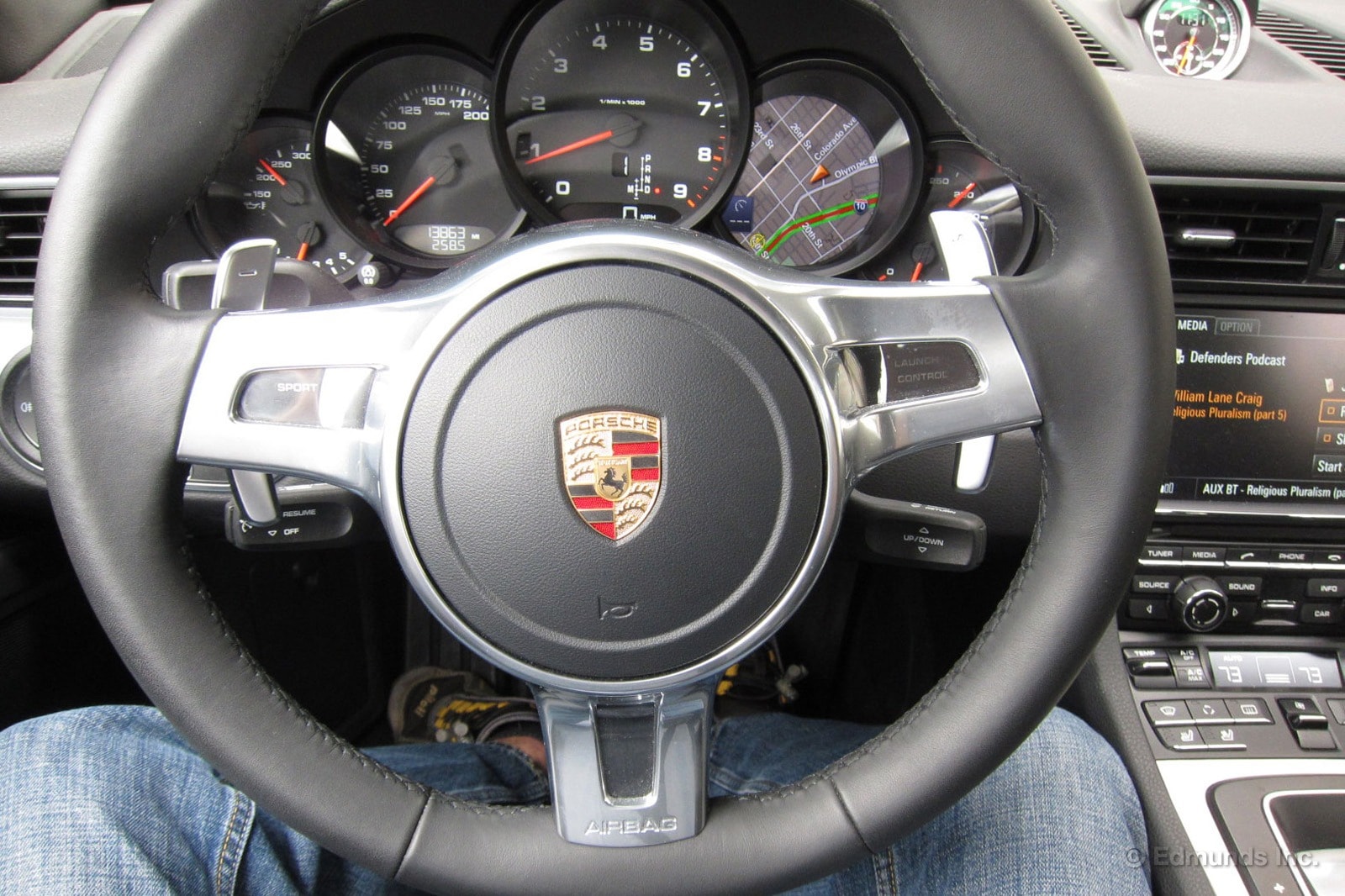
Porsche's 911 lacks even a single steering wheel button. This, I'd wager, is a choice. Possibly Porsche knows that a steering wheel's function is so fundamental to what happens while driving that cluttering it up with a bunch of buttons is something it refuses to do.
Notice, however, that there is a display between the spokes. On the left spoke you can see that "Sport" mode is activated. And in the right spoke is the "Launch Control" indicator.
Answering the phone, in the Porsche 911, means reaching for the center stack, which is fine with me.
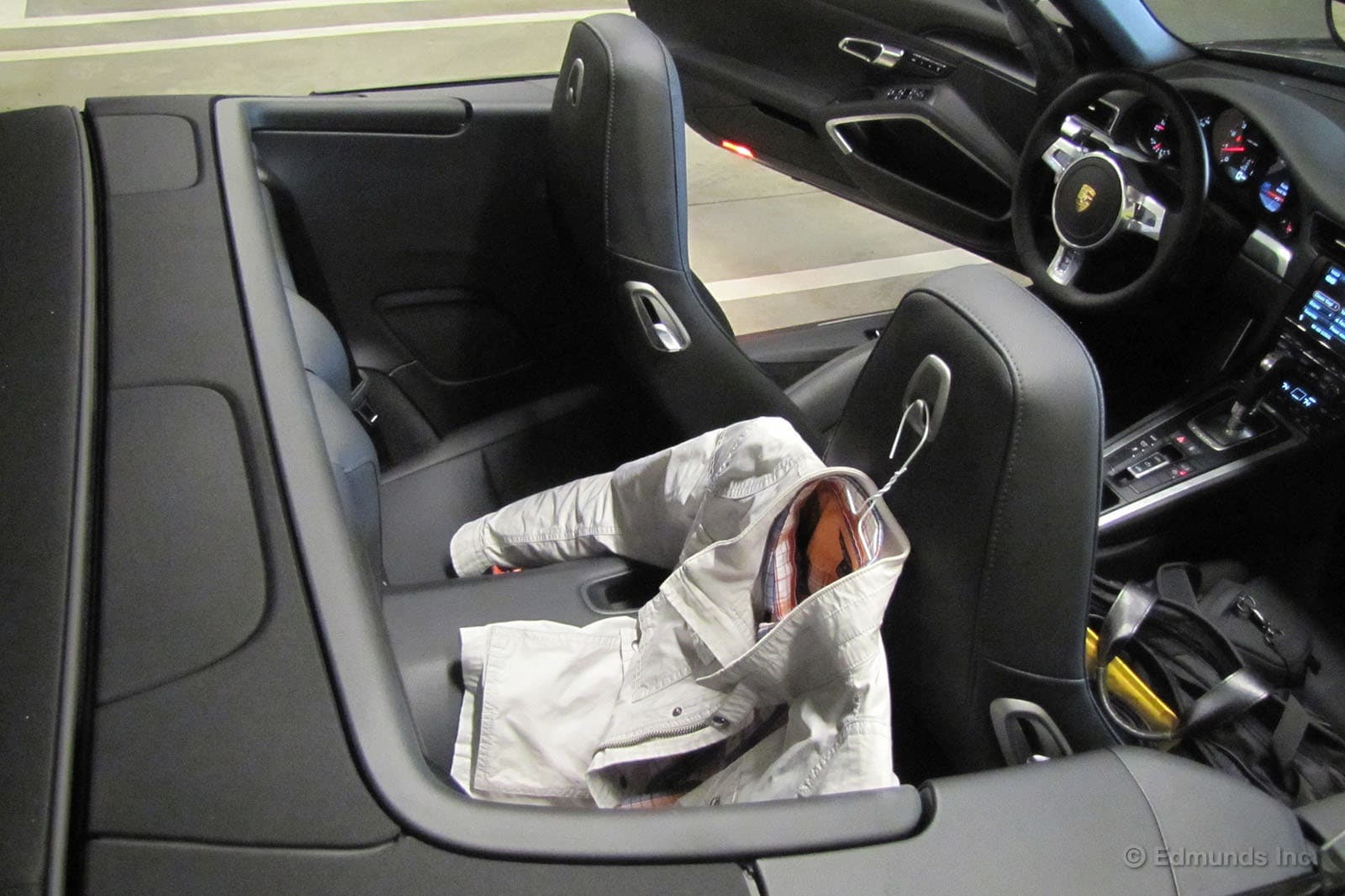
The coat hooks embedded in the 911's seat backs aren't especially useful. You can forget about using a nice hanger, as the cheap wire one seen here had to be severely misshapen to only slightly fit and even then, it quickly dislodged after only a minor jostle. Joan Crawford would not approve. Using them with a coat's internal tag hook works better, but the garment itself doesn't really have enough vertical real estate to hang down.
So they're lousy, but hey, at least they're present. You can't say that about most convertibles.
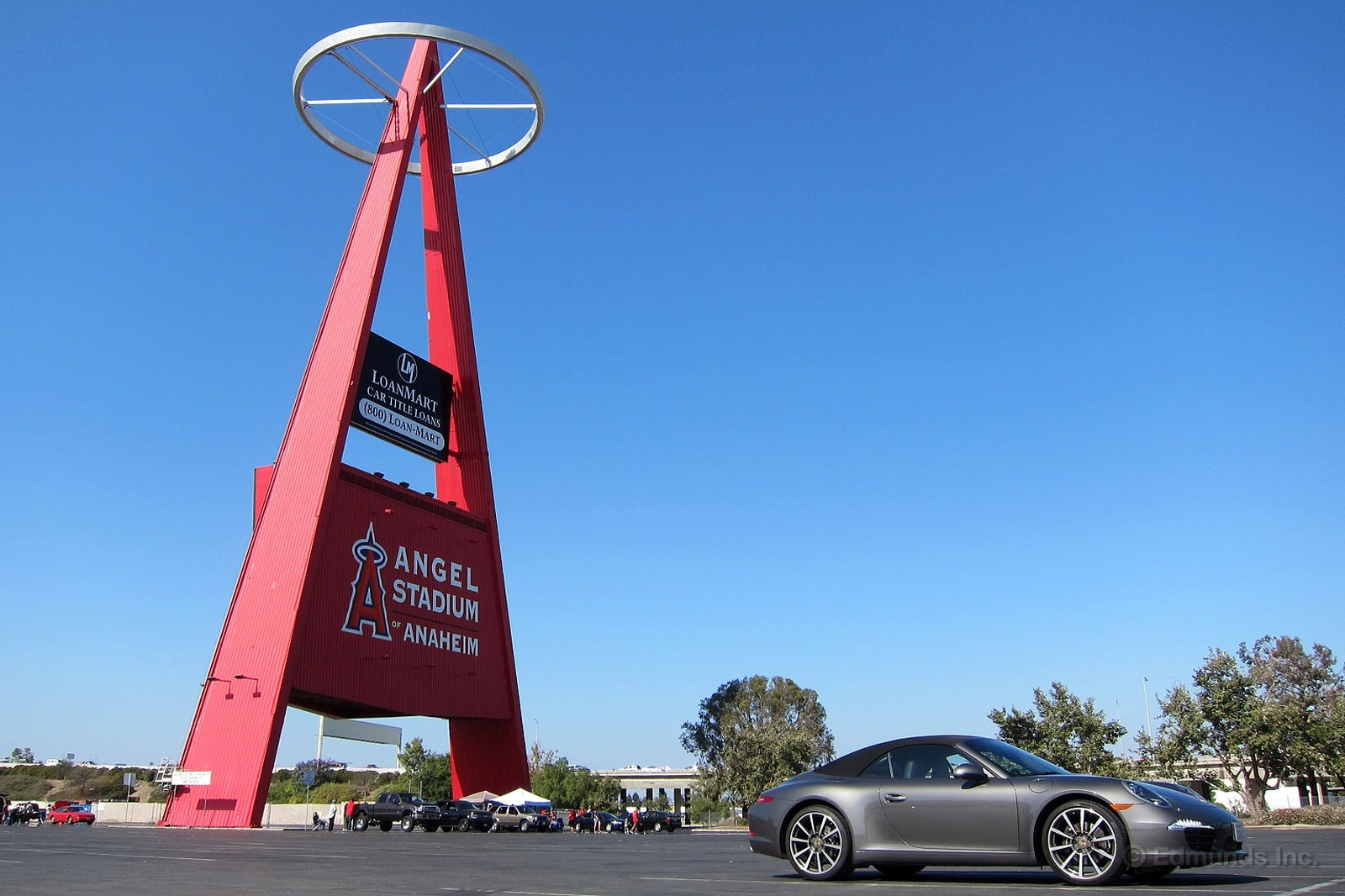
There's one thing a Porsche 911 can do that a Chevy Corvette, Porsche Cayman, Mercedes SLS, Mercedes SL, McLaren MP4-12C, SRT Viper, any new Lamborghini, and even a Nissan 370Z cannot: Take my kids to a ball game.
The Porsche 911 is the only car on that list that has a backseat. And that makes it far more useful when, like me, you have two preteen daughters.
Case in point. Last Saturday my family surprised me with tickets to the Angels game that very night. My Yankees were in town. If our long-term SLS or any of those other two-seaters were in my driveway we would have had to drive Mom's GMC Acadia to the game. Not the end of the world, but not exactly fun either.
Luckily, I had the keys to the Porsche and the entire Oldham family of four piled into the sports car for the 50-mile drive to the ballpark, where we gorged on junk food and watched my Yanks get beat up by the boys from Anaheim.
Such versatility has been part of the Porsche 911's unique character for 50 years. It's the original everyday supercar. And it's still the best.

This morning I checked the Porsche's oil level. The entire process took about one second and I never left the driver's seat.
With just a few flicks of a steering wheel stalk the screen in the 911's gauge cluster told me all I needed to know. Very cool.
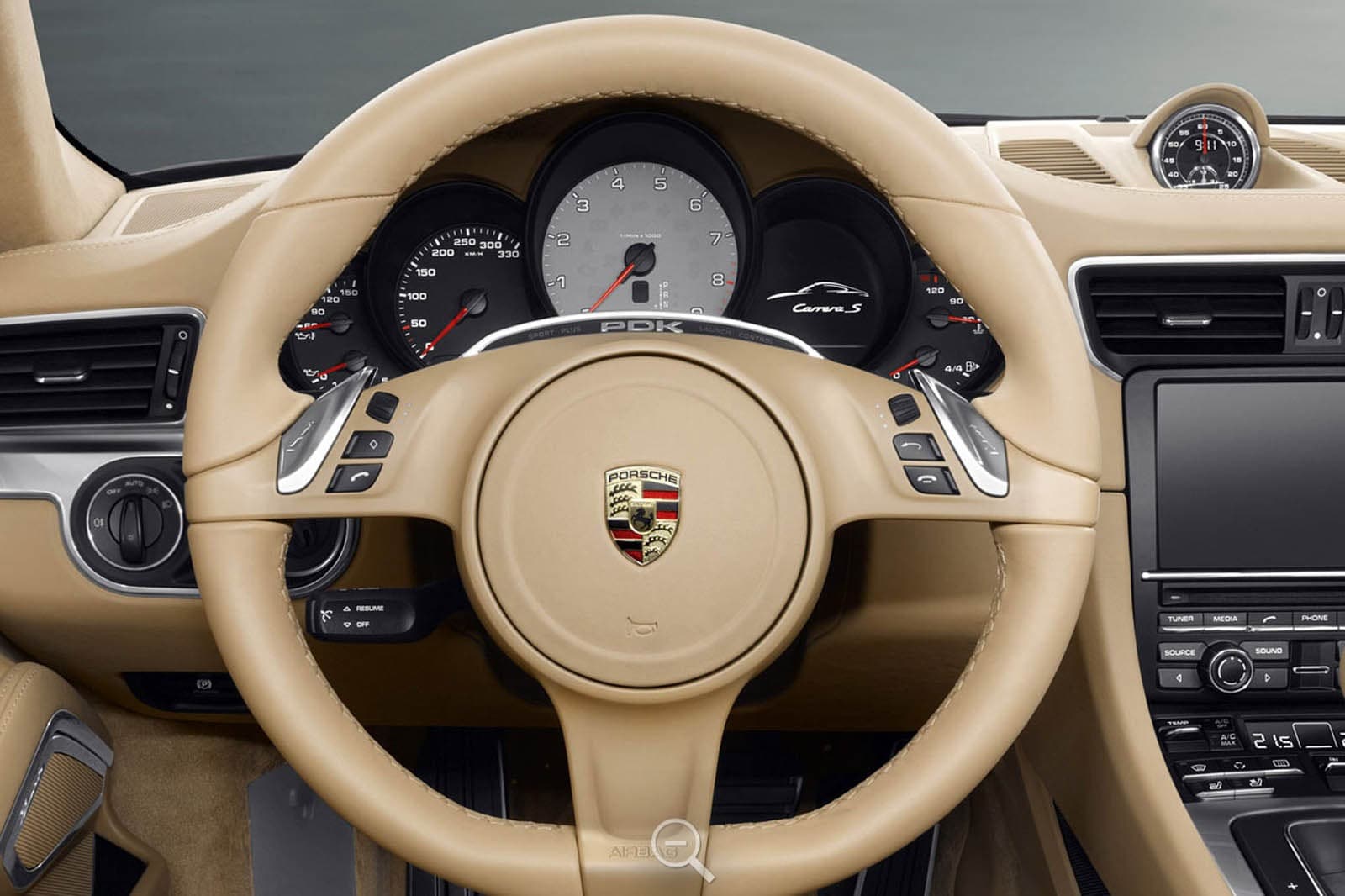
Last week I wrote a long-term update stating that Porsche doesn't clutter the 911's steering wheel with buttons.
I was wrong.
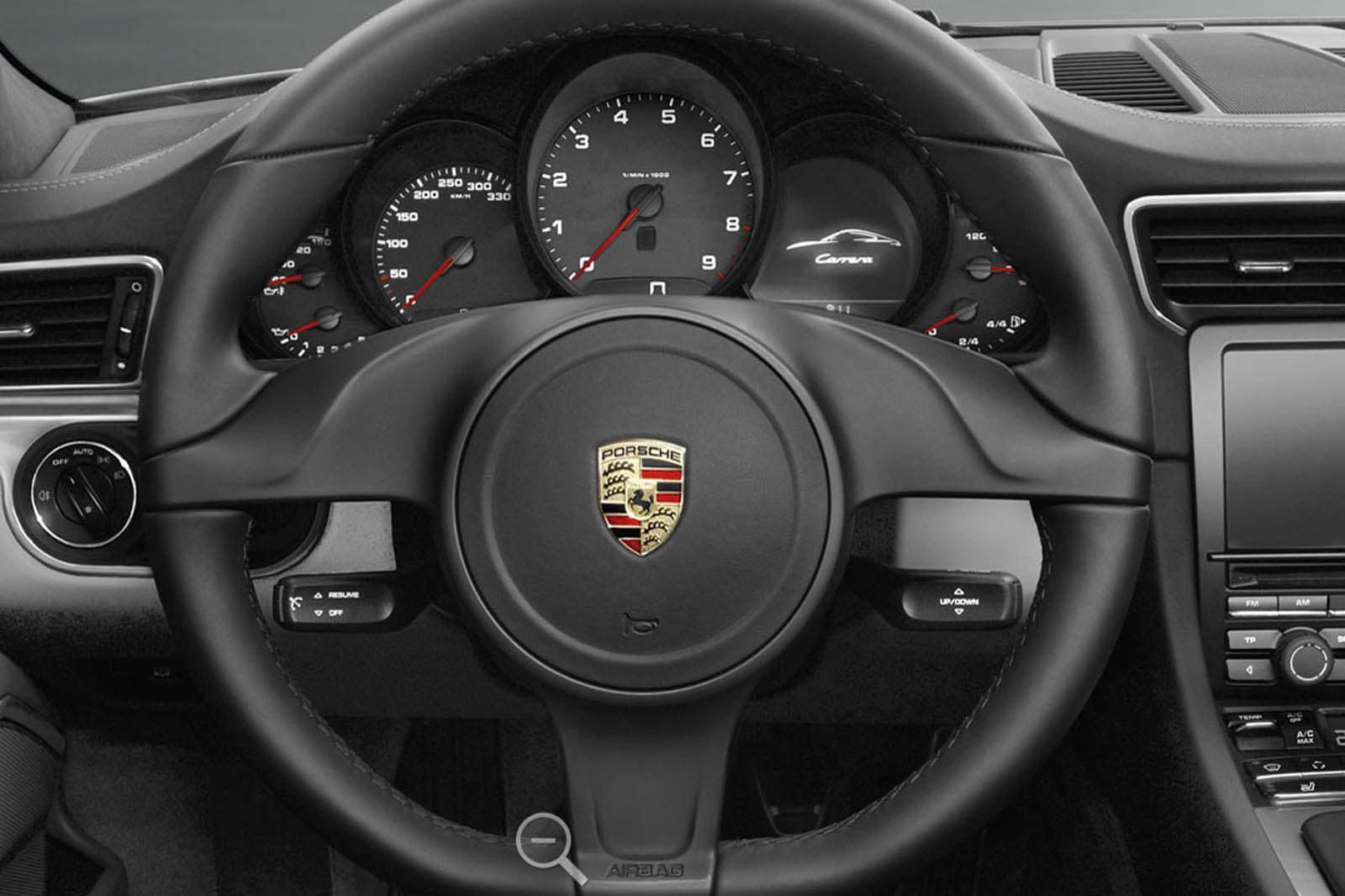
And I should know better. Porsche is famous for its many options, and multiple steering wheels on its flagship model are among them. There are at least two other steering wheels available, one of which does offer buttons for operating a Bluetooth-linked phone as well as other functions.

So I caught the Science Channel's How It's Made program a few nights ago. The program is currently showing a series called Dream Cars and features the Porsche 911 assembly plant in Stuttgart, Germany.
It made me laugh.
The voice-over narration interchangeably uses the words "V6" and "flat six" to describe the 911's engine. Here, for example, we see how "a worker fixes the gearbox to the 3.4-liter V6 engine block."
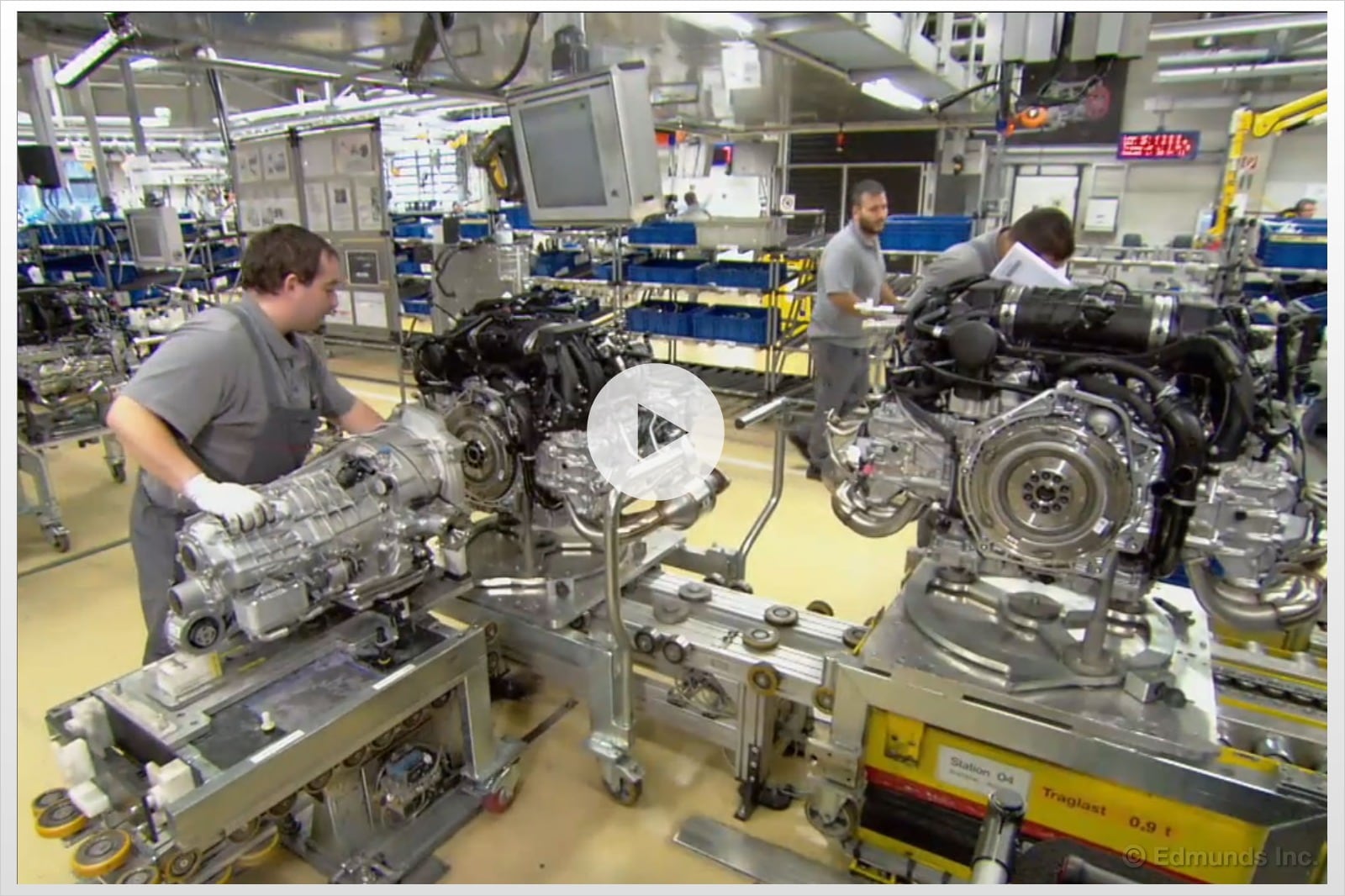
And below, in a shot clearly showing assembly of the coolant lines, we see "workers attach and align the exhaust system."
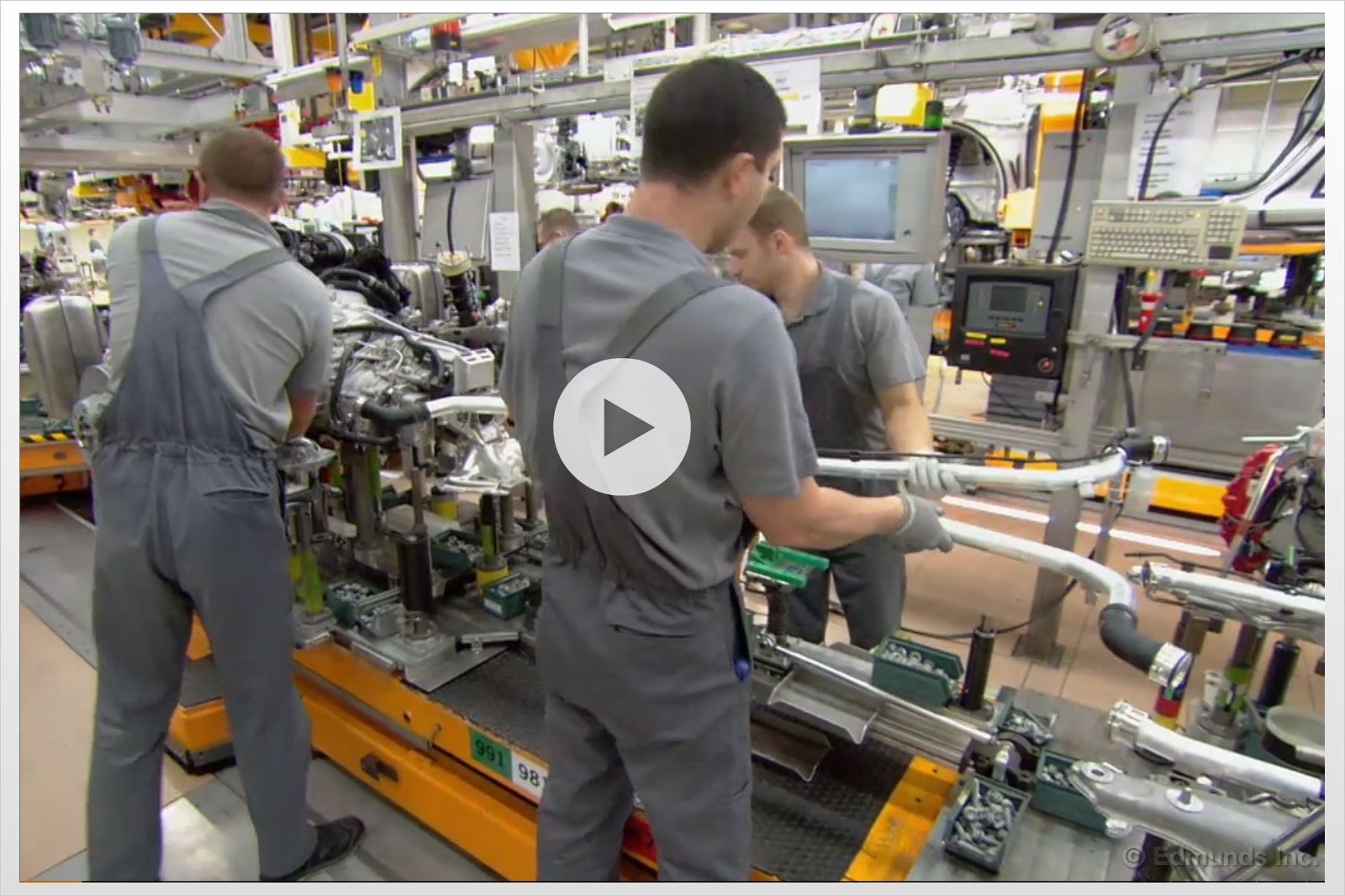
Why do all car shows have to be made by people with no interest in or knowledge of cars?
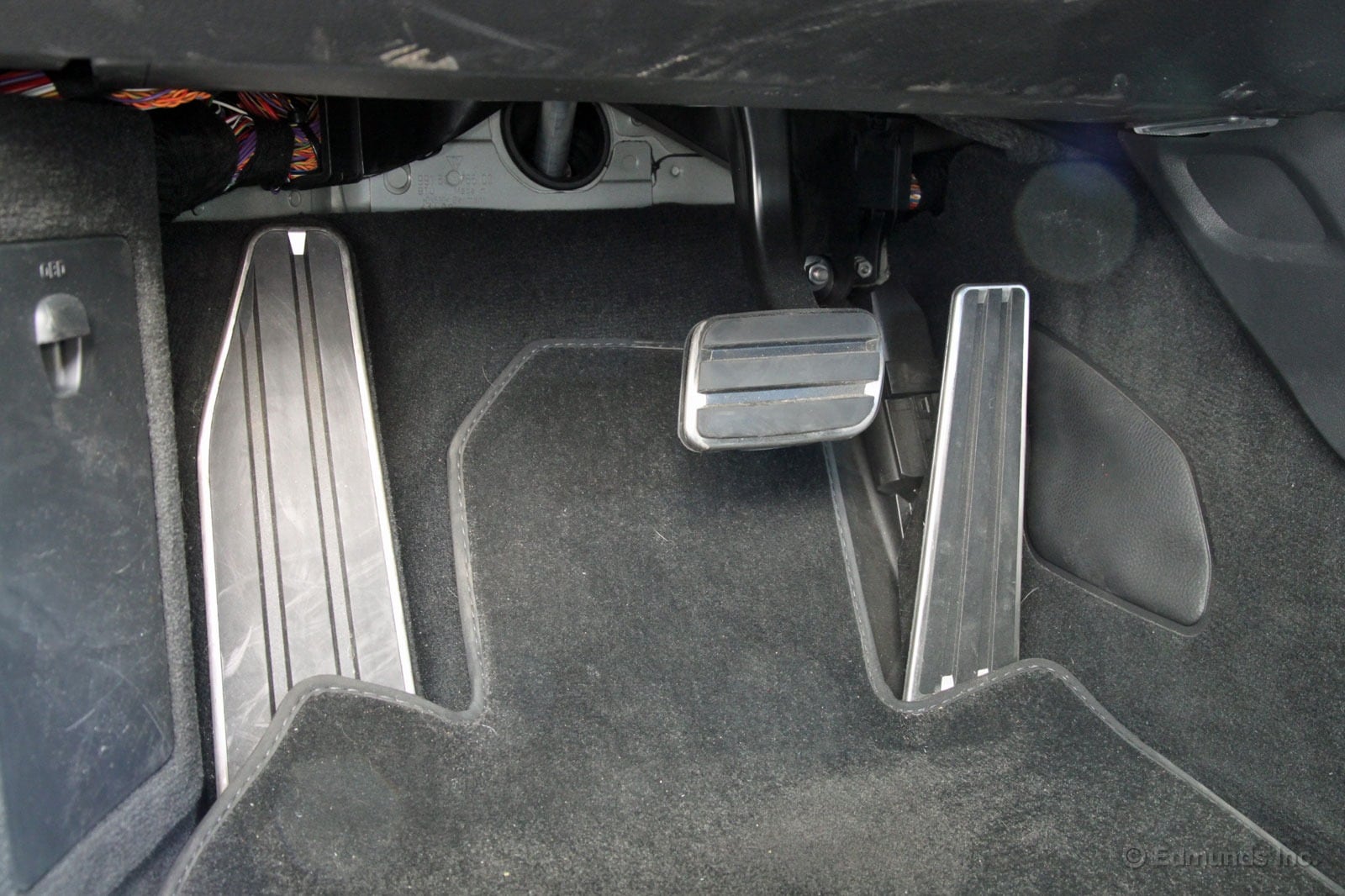
I like to use my left foot for braking. It feels natural once you get used to it and it's safer. There are plenty of people who will tell you differently, but to each his own.
As you can see, our 911 doesn't exactly accommodate left-foot braking. The brake pedal is clearly cheated over to the right. This obviously makes for easy to swap between the accelerator and the brake pedal with your right foot, but trying to squeeze both feet in there isn't very natural.
Can't really blame Porsche for this one as this is the preferred setup when there's a third pedal jammed in there. Then again, with increasingly small numbers of 911s leaving the factory with manual transmissions, maybe this is worth reconsidering in the future.
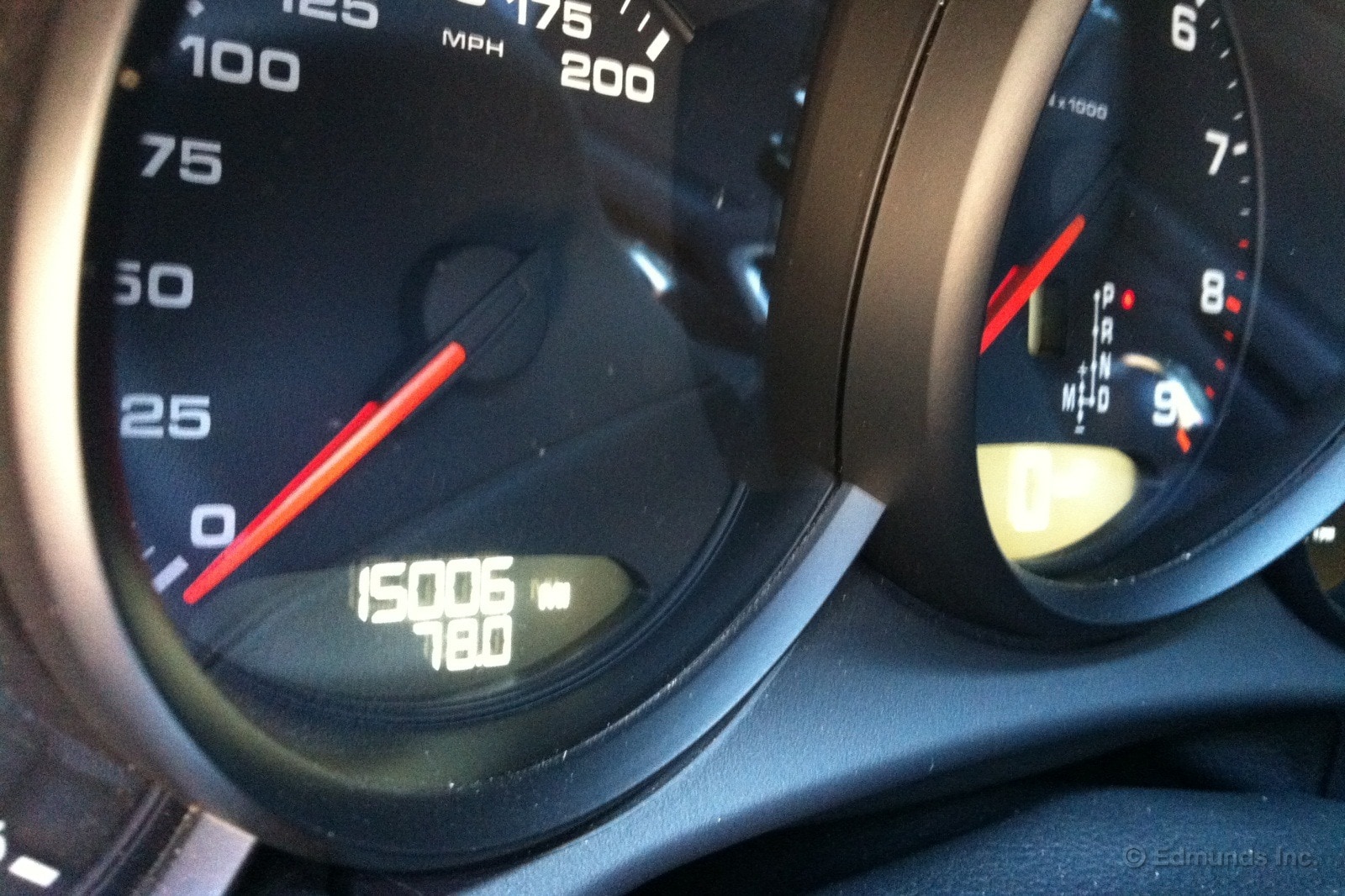
We've had our long-term 2013 Porsche 911 Carrera Cabriolet for 8 months and just a smidge more than 15,000 miles. In that time it has been overall an impressive drive, and nearly trouble-free to boot. The only unscheduled stop attributable to the car has been for a check engine light related to the fuel tank diagnostics module.
Aside from that it just keeps on rippin'.
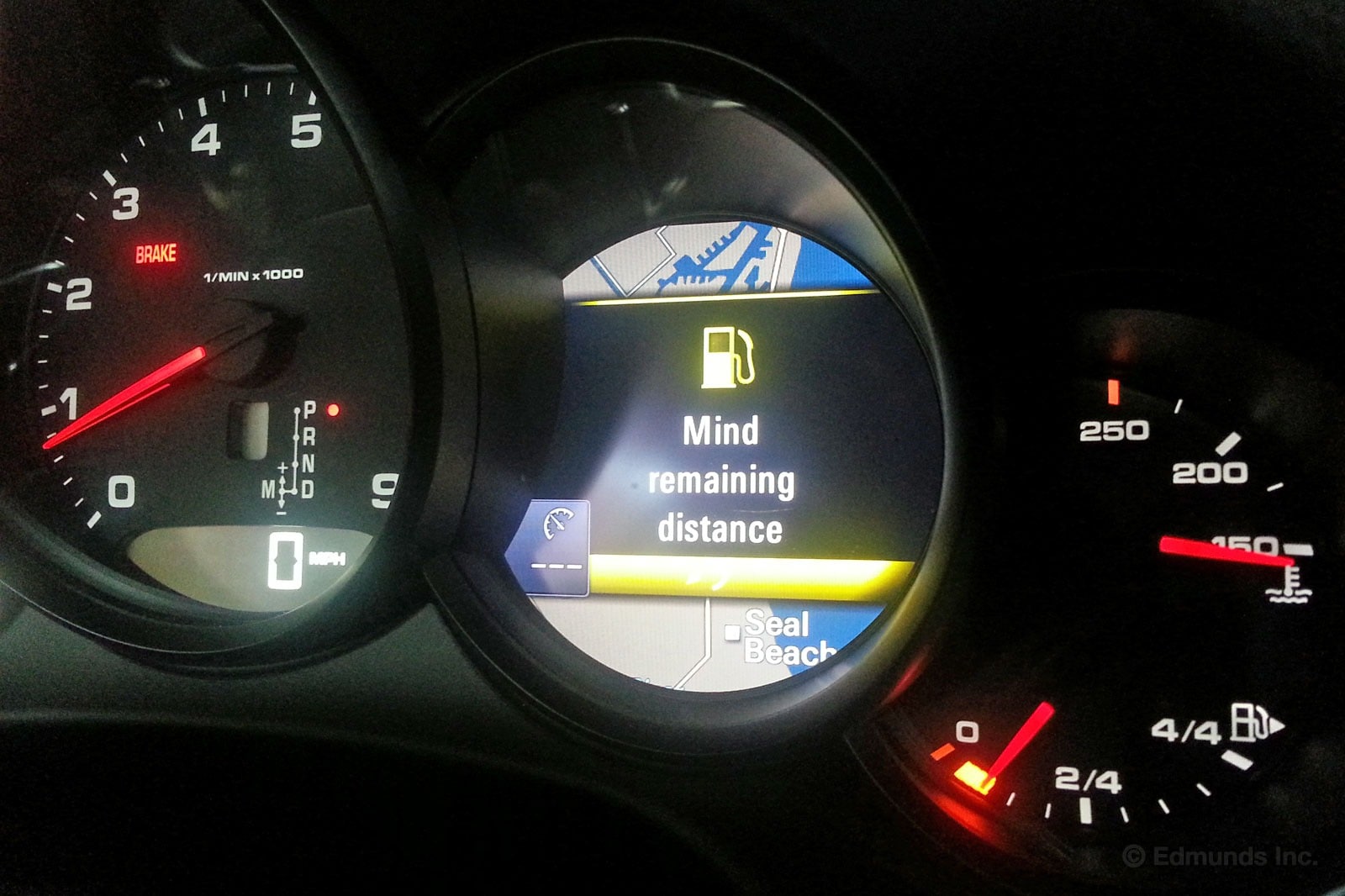
No boring low fuel warning message from Porsche. When our long-term 2013 911 Carrera dipped too low into its tank last night, it politely asked me to, "Mind remaining distance."
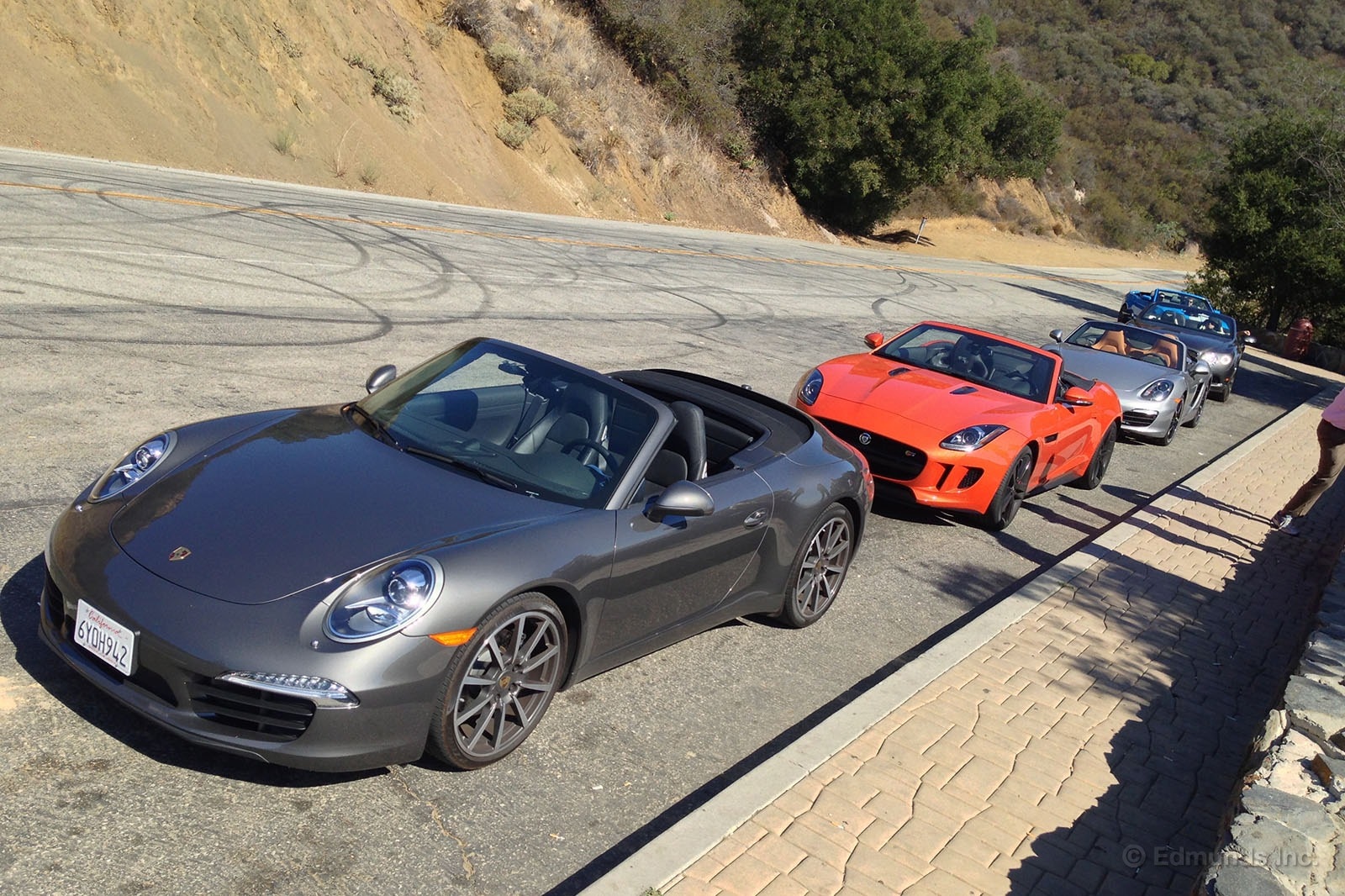
Despite the support from the commenters here (thanks!) I still felt like a bit of a weenie for not taking the Tesla up to Monterey for the big Pebble Beach Weekend.
So, instead of doing something difficult, I hopped in our 2013 Porsche 911 Carrera Cabriolet, which I know has 500 miles of range, and had some fun.
Instead of skipping from Supercharger to Supercharger going straight up the 101, I got together with some guys I met () on the internet and headed for PCH, Mulholland and the spectacular Highway 33 just outside of Ventura.
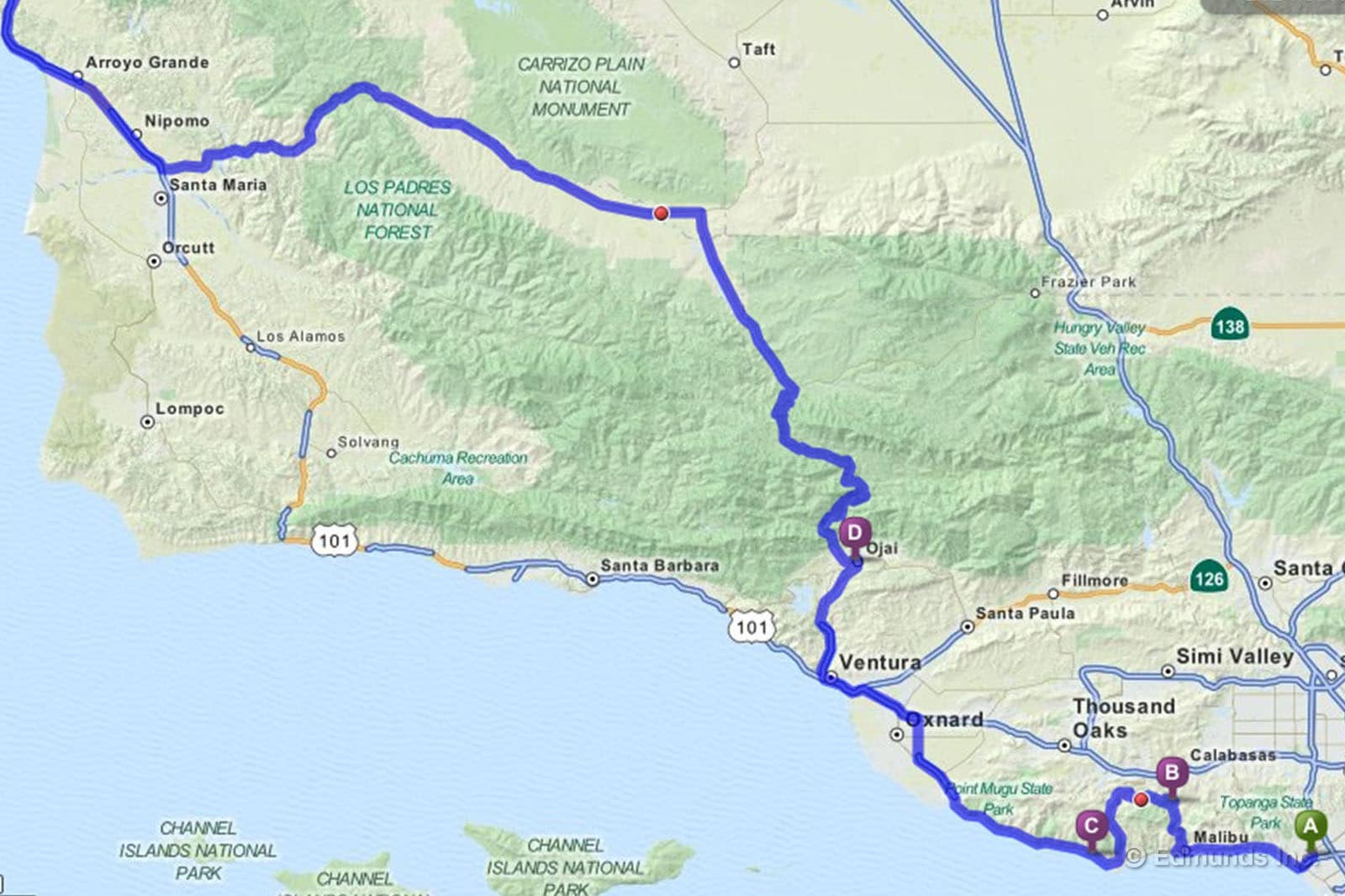
Instead of a slow, steady slog up a highway I've driven a billion times, we took a handful of the best convertibles available today and ran them through the hills. Overall distance was down from the direct route, only 384 miles instead of the 391 required by the original route, but the time commitment was much higher at 7 hours and 39 minutes.
We made up some time on the twisty bits where the 911 more than held its own against a Jaguar F-Type V8 (truth be told, the Boxster S was much harder to get away from than the Jag by a long shot) and did so while returning something like 20 mpg.
Best chickening out ever? I think so.
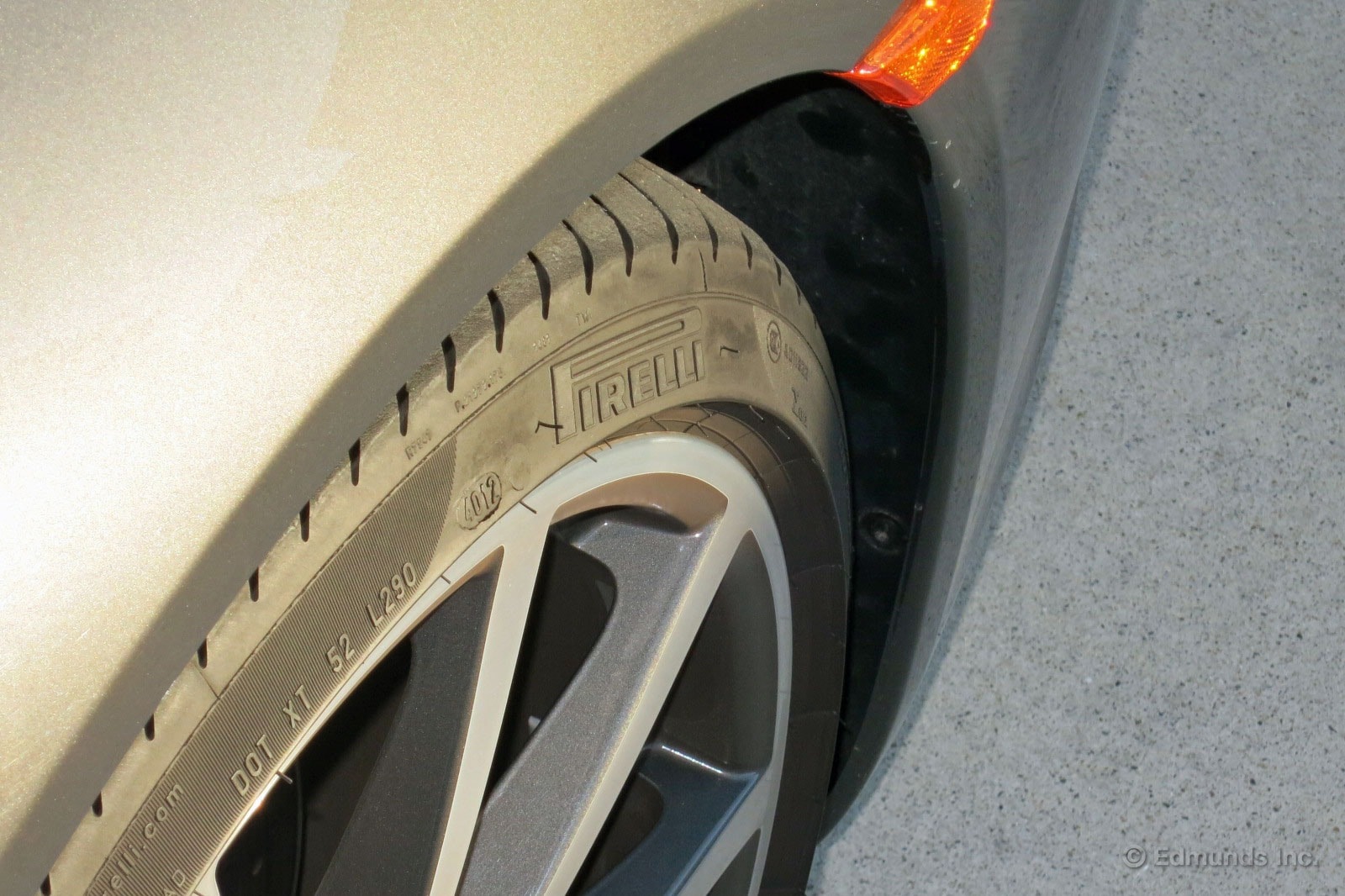
Is there anything worse than curbing a gleaming new wheel? In the grand scheme of things, yes, there are many. But confine the circumstances to driving and parking a valuable sports car and the wheel damage issue is always there.
As you can see, it's not an issue with our 2013 Porsche 911. Despite the big 20-inch wheels and 30/35 series tires, it would be pretty hard to curb these wheels thanks to the shape of the sidewall. It sticks out far enough to protect even the most ham-fisted parking maneuvers and does so without looking the slightest bit awkward from afar. I always adjust my mirrors so I can see the rear wheels when I park on the curb to avoid any nicks, but it's nice to know there's some room for error.

I'm an extremely pasty person. I can get sunburned just looking at a picture of the beach. So, while I enjoy the feeling of the free, fresh wind in my hair and life without care, I find I never actually drop the top on our Porsche 911 Carrera Cabriolet.
Southern California's relentless sun has already freckled my arms and attacked my forehead even while wearing sunscreen religiously. You just can't escape it.
While I love the look of our Cabriolet when the top is down, I'd much rather drive the coupe. Perhaps I'm getting old. But then again, this isn't really a young person's car.
What about you, would you use the convertible top enough to justify the ~$12,000 addition in price?
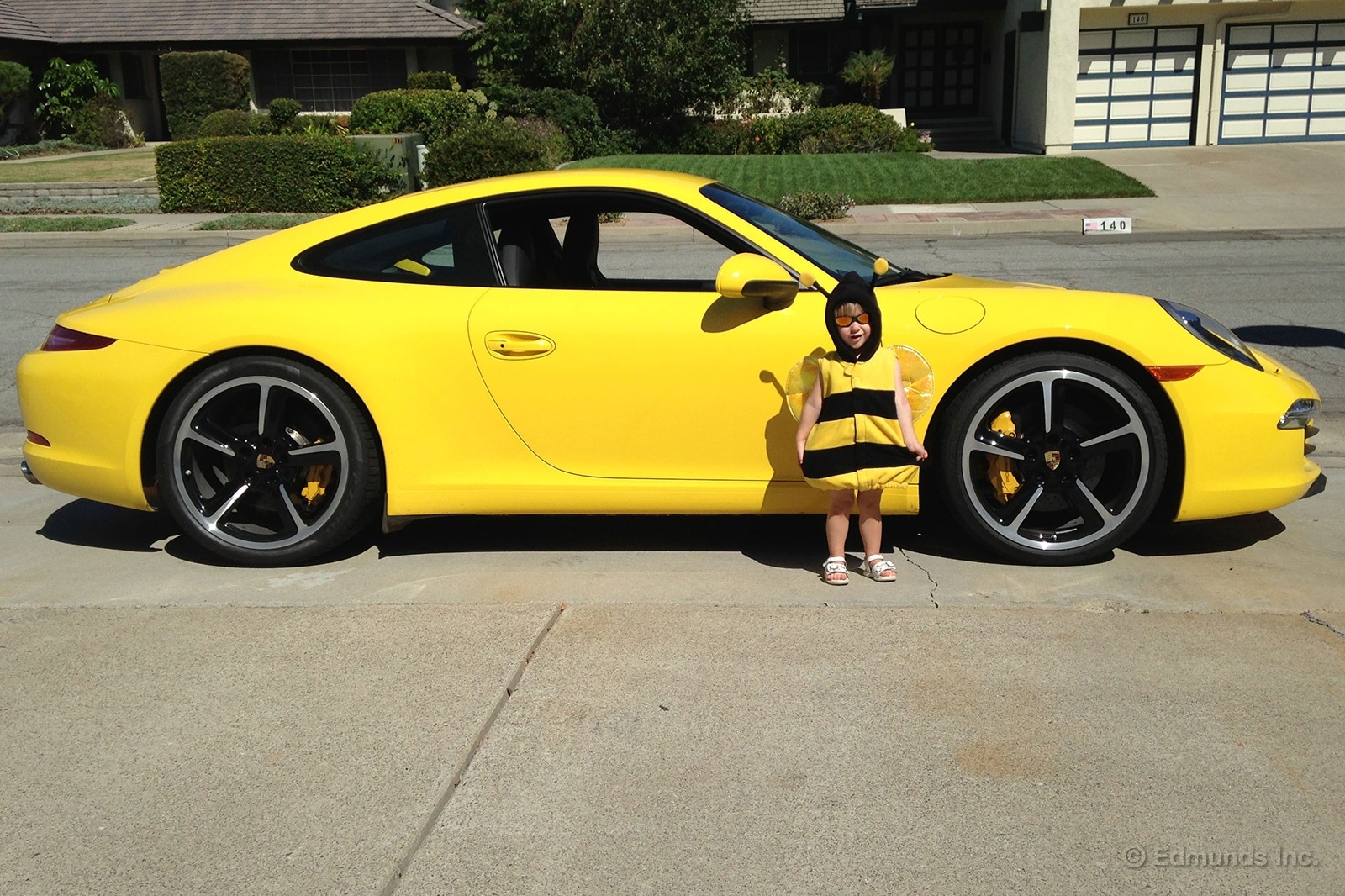
This 911 is better than ours for four reasons. Its color is number four. You guess the first three.
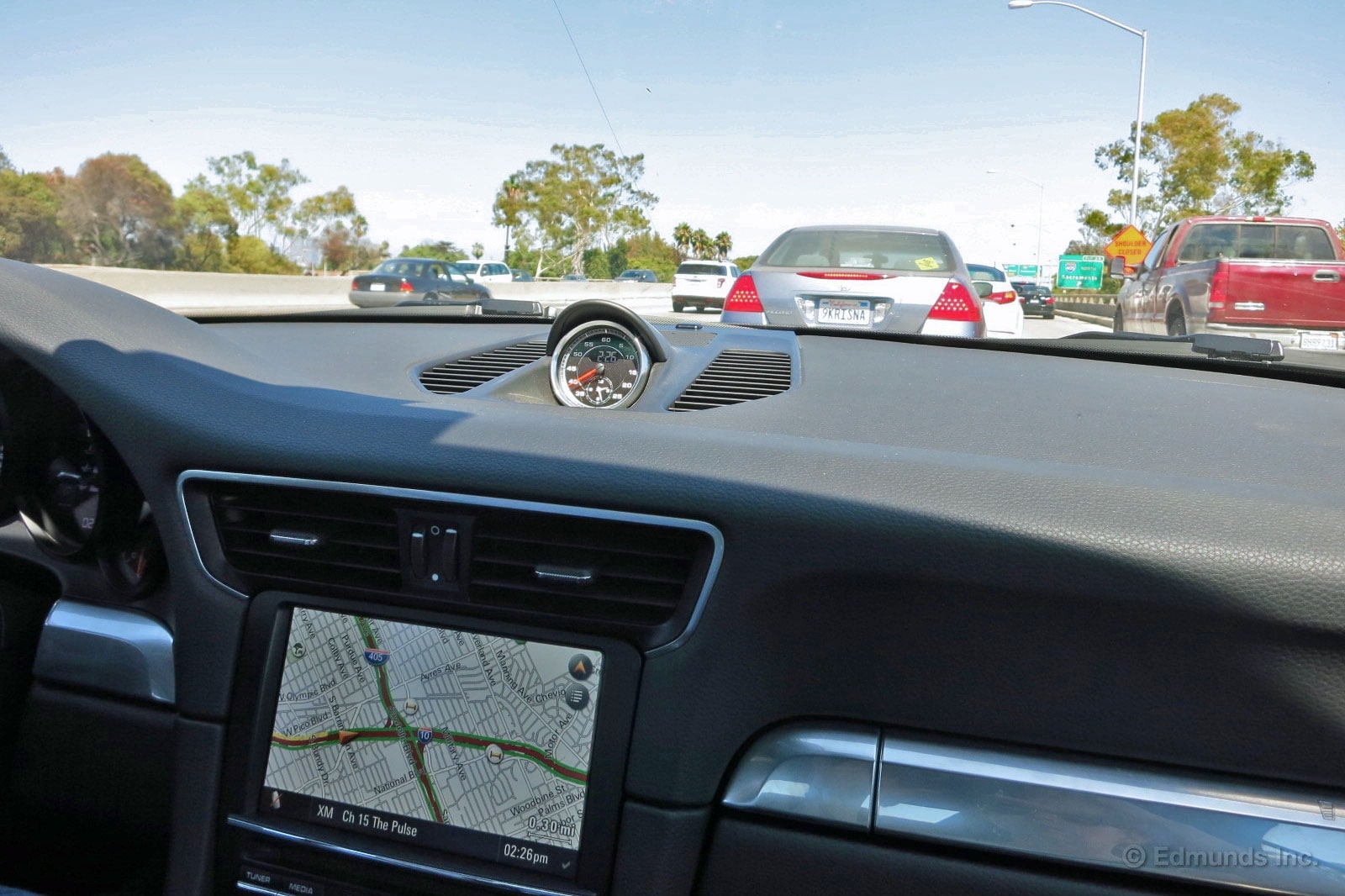
It's nice to have a navigation system that tells you the local traffic conditions. Even if you can't do anything about it (which is the case about 99% of the time) just knowing what to expect is oddly soothing.
Then again, that's assuming that the system is accurate. That's not always the case in our 2013 Porsche 911. More than once I've been sitting in stop-and-go traffic while the navigation screen says it's green sailing ahead.
I'm not sure where this particular system is getting its information, but clearly it's not getting it fast enough. In one instance I had a passenger check her Waze app to see if it was any better. In one case, it was, in another it was just as oblivious to the traffic.
Luckily I've been driving in L.A. traffic long enough to know to just sit back and relax no matter what technology is telling me. Seems to work more consistently.

Yesterday I had a lot of city driving to do. I took my 6'1" brother to the eye doctor, which was 22 miles from my house. They warned him that he would need someone else to drive when he was done. So, I drove him to his appointment in our long-term 2013 Porsche 911.
Due to congestion, you never know how long it will take to get from place to place in Los Angeles, so we gave ourselves plenty of time. Turns out we had a nice stretch of open highway on the way to the appointment and arrived 45 minutes early. This car loves the open road and despite him being nervous about his appointment, we enjoyed the drive listening to satellite radio and passing commuters in the carpool lane.
Coming home four hours (!) later, we were in the thick of L.A. evening rush hour. The medical center was in the very busy area of Westwood. There was lots of pedestrian traffic crossing the streets and plenty of cars trying to get to the freeway. We were tired, starving, and it was 90 degrees out.
Even when the Porsche is not breezing down the highway, it is still a great car to be stuck in. As we inched forward with the rest of the herd, we appreciated the handsome leather seats which are supportive and comfortable. The air conditioner kept the cabin cool despite it being a glaringly sunny day. And when we finally found a clearing on the highway, the 911 didn't hesitate to kick right through it. The suspension is stiff and you can feel the bumps in the road but they don't tire your tush. We could sit in those seats for a long time without going crazy.
When we finally made it home, my brother said that this is the car he would buy if he could afford it. It's plenty of fun but he also didn't mind being stuck in it in a high-traffic situation. He wouldn't get tired of driving it back and forth to work each day.
And that, my friends, is the true genius of this car.
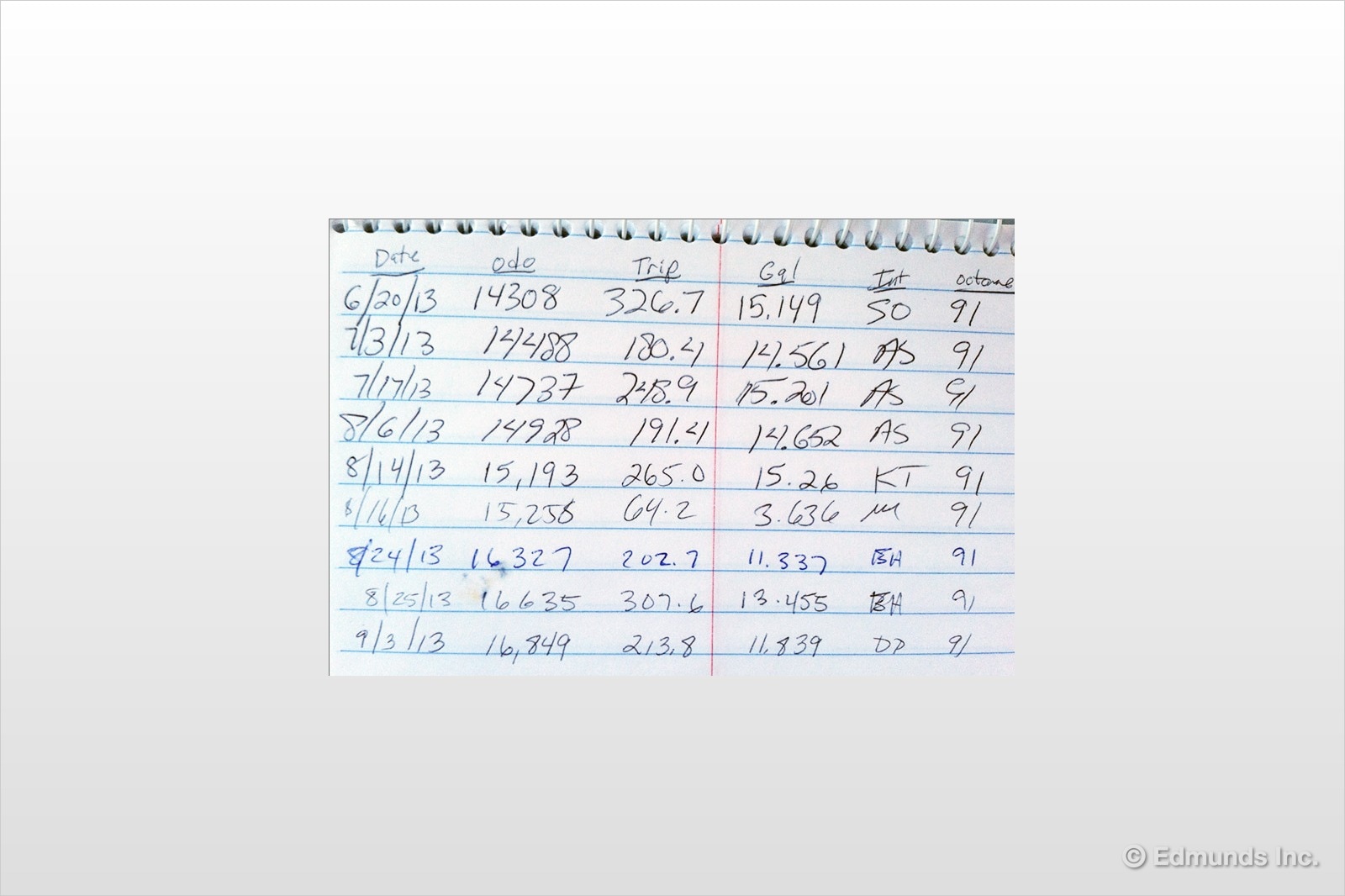
Our 2013 Porsche 911 Carrera Cabriolet is running just below the EPA expectations for combined city/highway driving.
I've been driving it for the past few days and I can tell you I've been cranking the A/C in our 911 because of the late summer heat wave we've been having.
But I'm sure our fuel economy figures have more to do with how fun this car is to drive.
In August we added about 1,900 miles to its odometer, using 71 gallons of 91-octane fuel.
Worst Fill MPG: 12.4
Best Fill MPG: 31.4
Average Lifetime MPG: 21.6
EPA MPG Rating: 23 Combined (20 City / 28 highway)
Best Range: 511.8 miles
Current Odometer: 16,849 miles
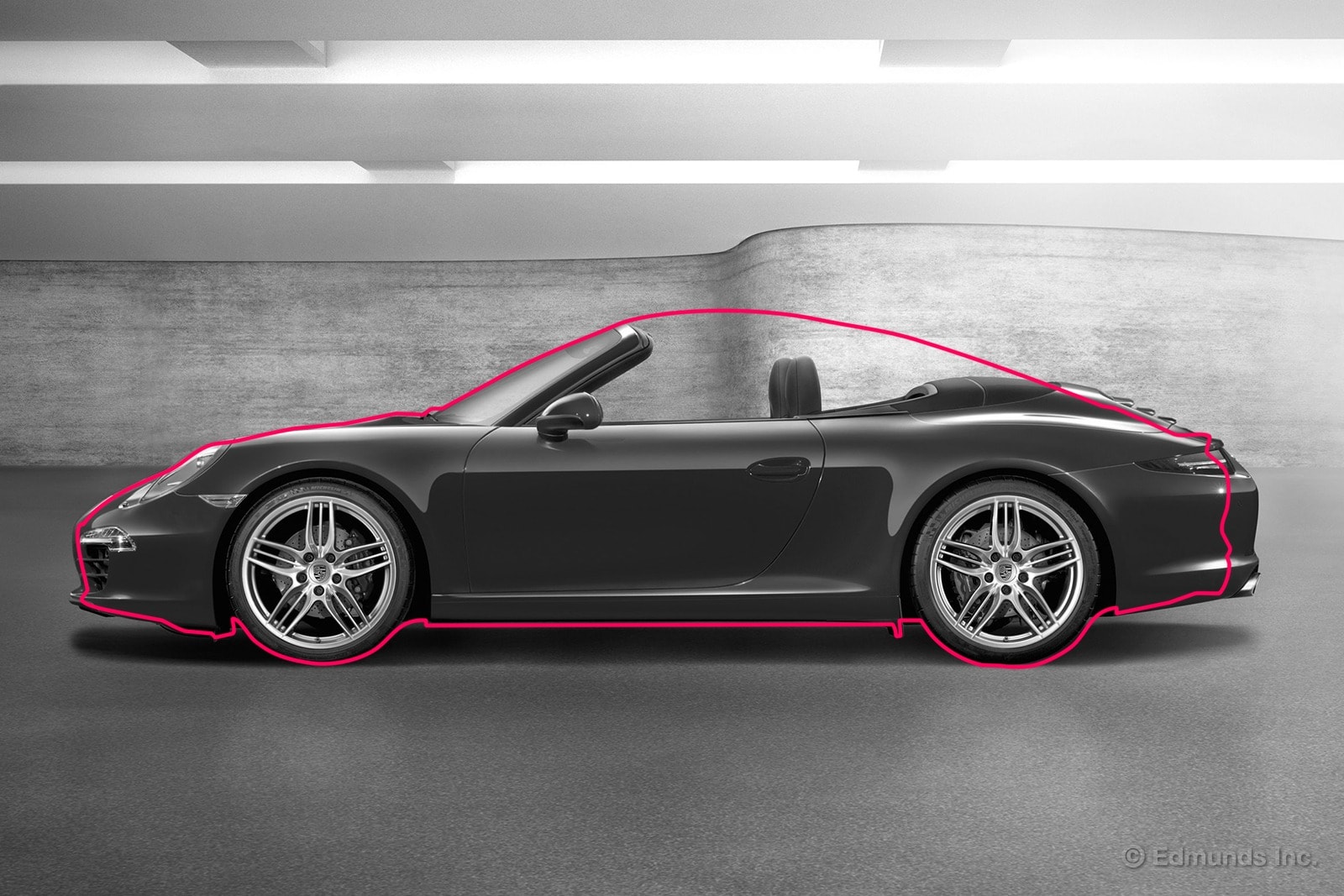
I had the very good fortune of driving around in the new 2014 Cayman S recently. Now I'm in a quandary. Which would I rather have, a Porsche 911 or a Cayman S?
I've been one of those guys who always considered the Boxster or Cayman the poor man's Porsche. I thought of them as entry-level models that weren't for the "real" Porsche drivers.
I can admit when I'm wrong, and I was.
Holy smokes, the Cayman S is good. As good, maybe better in some areas, as the 911. I also thought that the Cayman was considerably smaller, but as the overlay above shows, that's not the case.
I never thought the 911 should have had rear seats, so that's not a concern between these two. With the frunk and trunk you get with the Cayman, I think it's actually more convenient in terms of cargo.
Sure, I like the power that our 911 puts down to the pavement, but the Cayman is no slouch, either. In terms of handling, on the track or in the canyons, I'm equally giddy tossing either car around. With the 911 starting at $85,250 and the Cayman S stickering at $64,750, I now have 20,500 reasons to go with the Cayman.
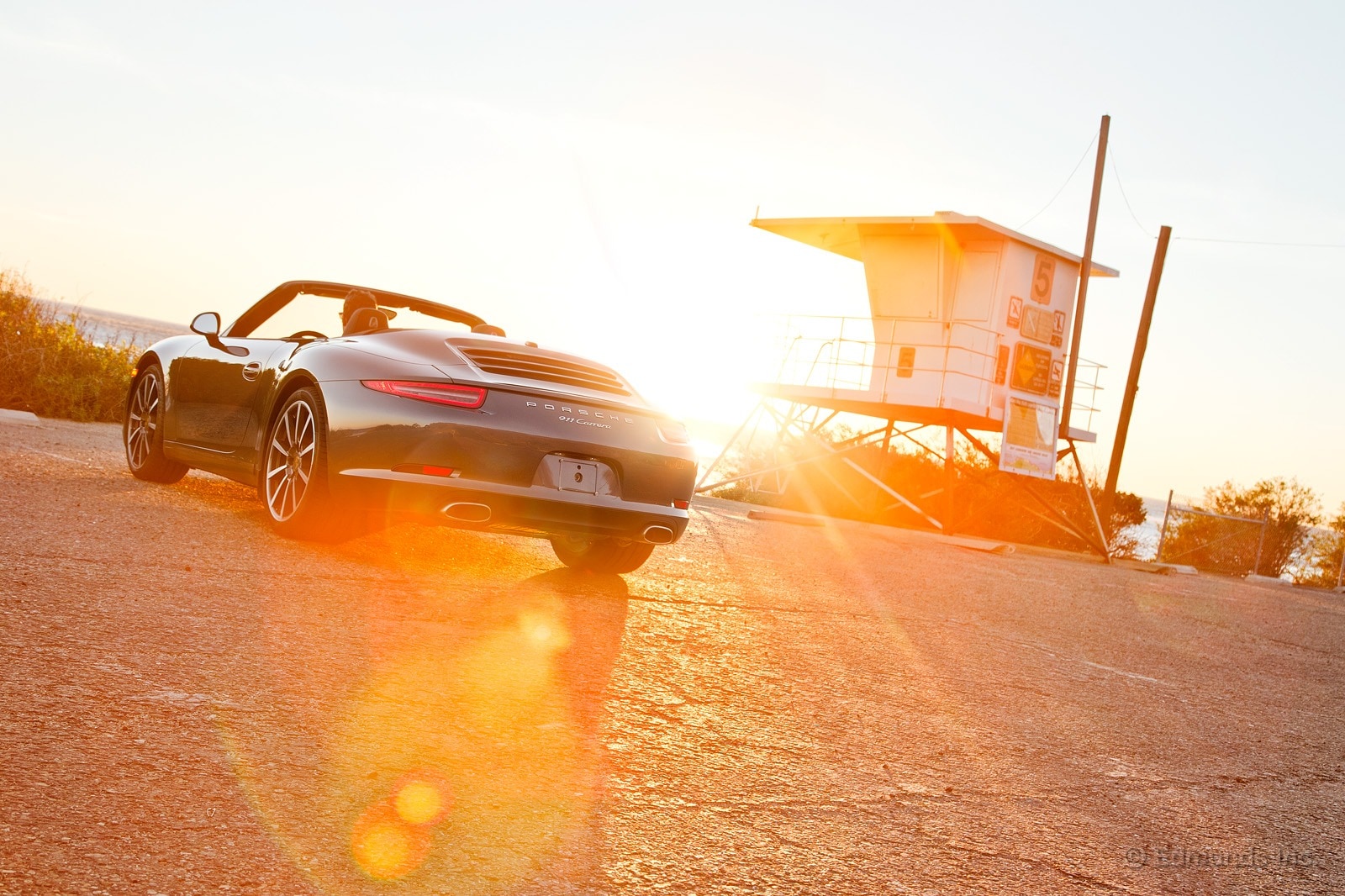
You know when I said I never put the top down on our 2013 Porsche 911 Carrera Cabriolet.
Well...
Last night when I left the office, the sky was turning to dusk. The air was soft and cool and the universe converged to make me desire an open-top car.
I took my freeway ride with the top up. Too many cars surrounding me, smelly trucks, and the general loudness of a poorly paved Los Angeles freeway deterred me.
But as soon as I exited the freeway, I was stopped at a long red light. So I pulled the lever and let the Porsche drops its top. I don't usually like to operate the top while sitting at a light. I find that other drivers get mesmerized by its operation and I don't want to distract them. But the Porsche manages to complete the task in only about 13 seconds.
For the last 15 minutes of my commute I enjoyed the end-of-summer evening. My hair was gently blowing in the breeze, Nirvana was on the radio, and I felt part of L.A.

When I signed out our long-term 2013 Porsche 911 Cabriolet, I completely forgot that I'd be picking up my wife from the airport. Uh oh.
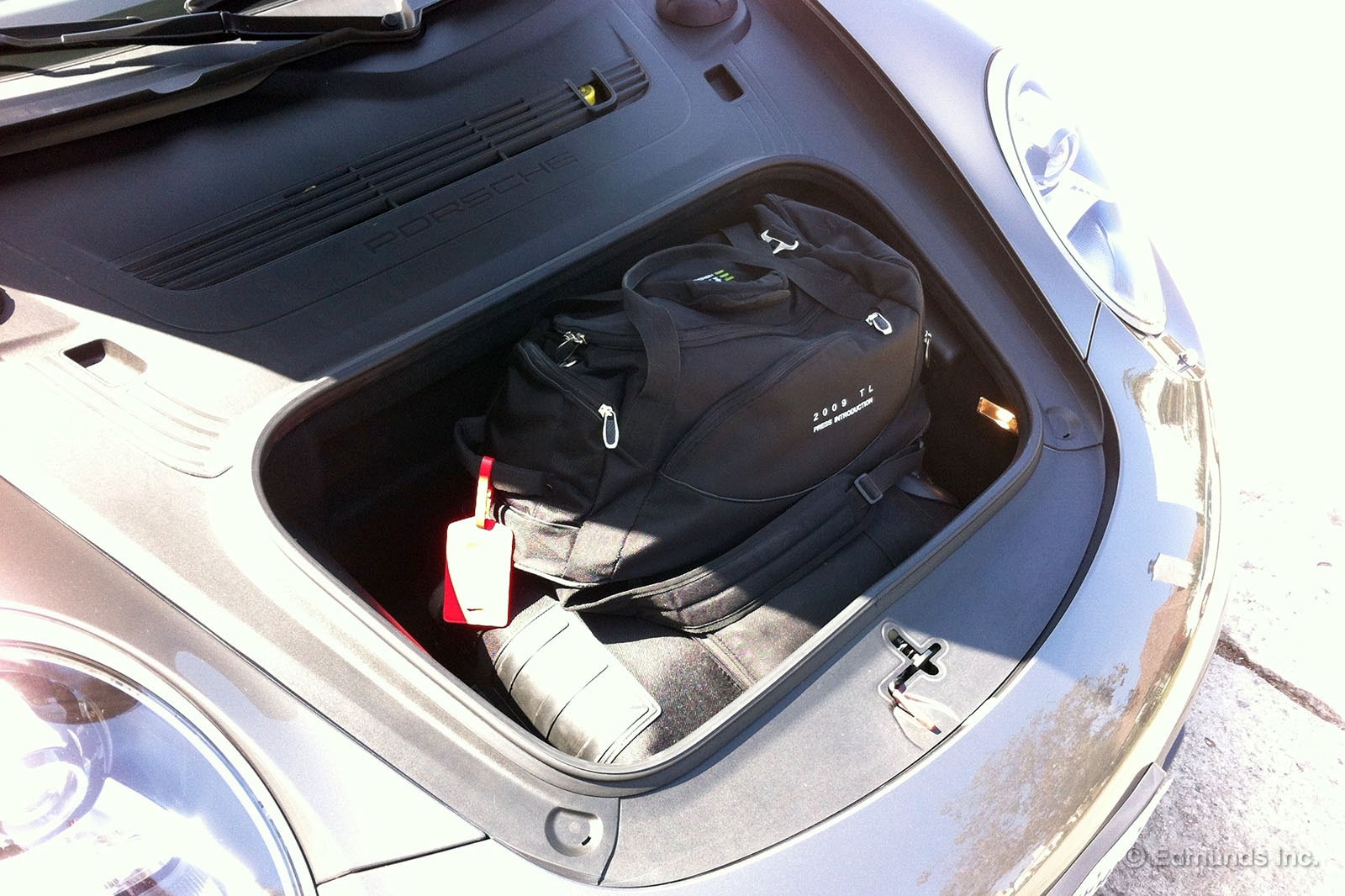
I folded down the rear parcel shelf fully anticipating that her expanded rollaboard bag wouldn't fit in the 911's frunk, but to my surprise, there wasn't an issue at all. Surprisingly, her carry-on weekend bag fit on top as well. Had I accompanied her, the aforementioned parcel shelf was still there for my hypothetical bags. Yet another reason the 911 is such an excellent everyday sports car.

One specific element of the exterior design on the 2013 Porsche 911 Carrera that I can't stop admiring is the taillights.
These taillights debuted in the 2012 and they fit the character lines of the car much better than the last generation. If you look at the breaks in body panels on a 2011 911 Carrera you'll see several distinct, interrupted character lines that ruin the look of the entire back end. On the current-generation Porsche 911, the engine cover lines flow over the top of the taillights rather than stopping abruptly at each light.
This generation's smooth and elegant taillight design results in the best set of hindquarters ever bolted to a 911.
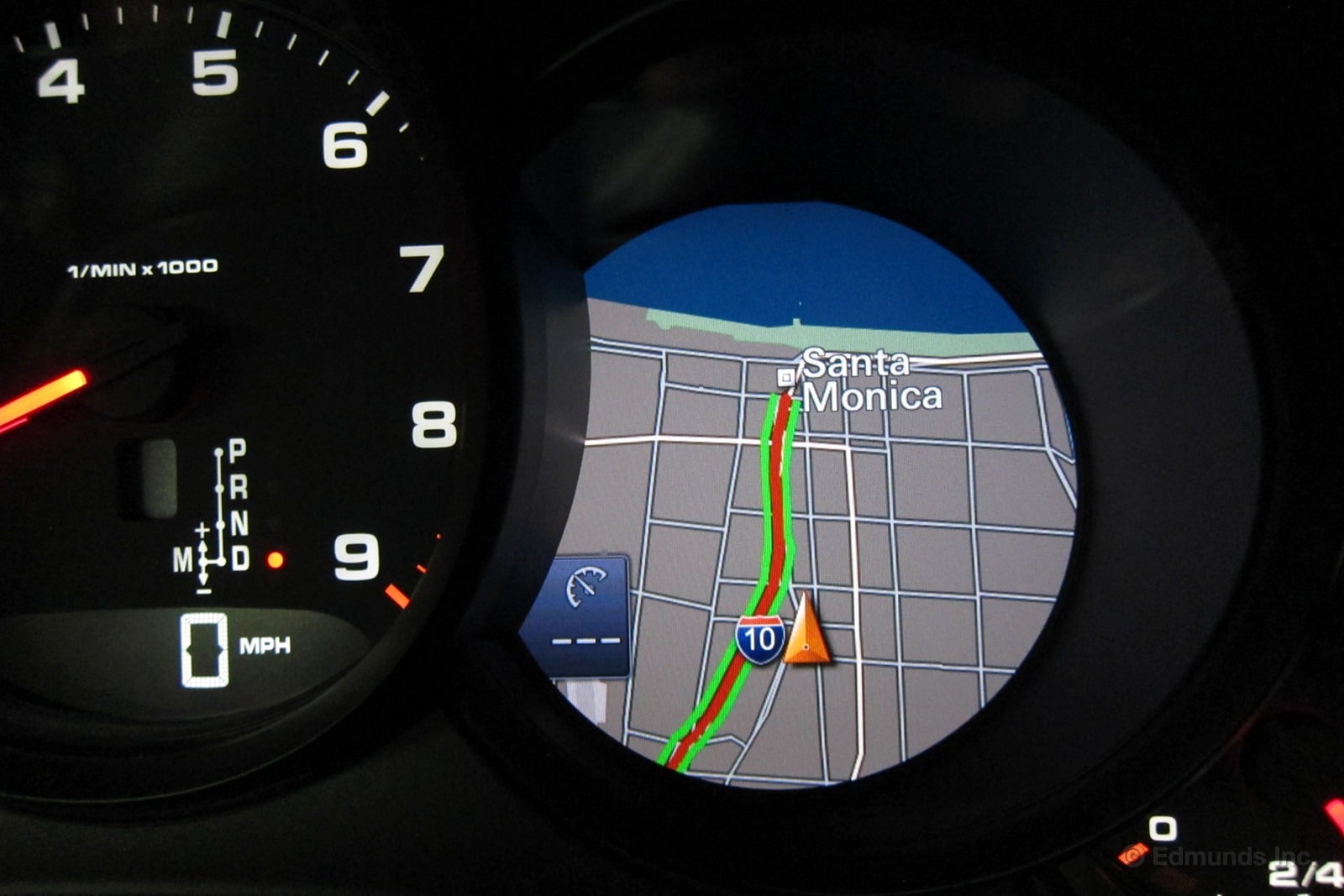
The steering. The sound. The physical sensation of sitting forward of both the motor mass and drive wheels. These are the traditional characteristics to crush on in our 2013 Porsche 911, or any 911.
But I'm a simpleton. One of my current favorite 911 features is the configurable gauge that mimics the center console nav screen. The graphics are bright and crispy, and they're also right dead in front of you. Angling one's head slightly to the right to view a center console nav screen suddenly seems an inefficient use of neck movement.
Exaggeration aside, this is a cool touch where most automakers might simply give you a directional arrow and a distance figure to your next move in the small display between the speedo and tach.
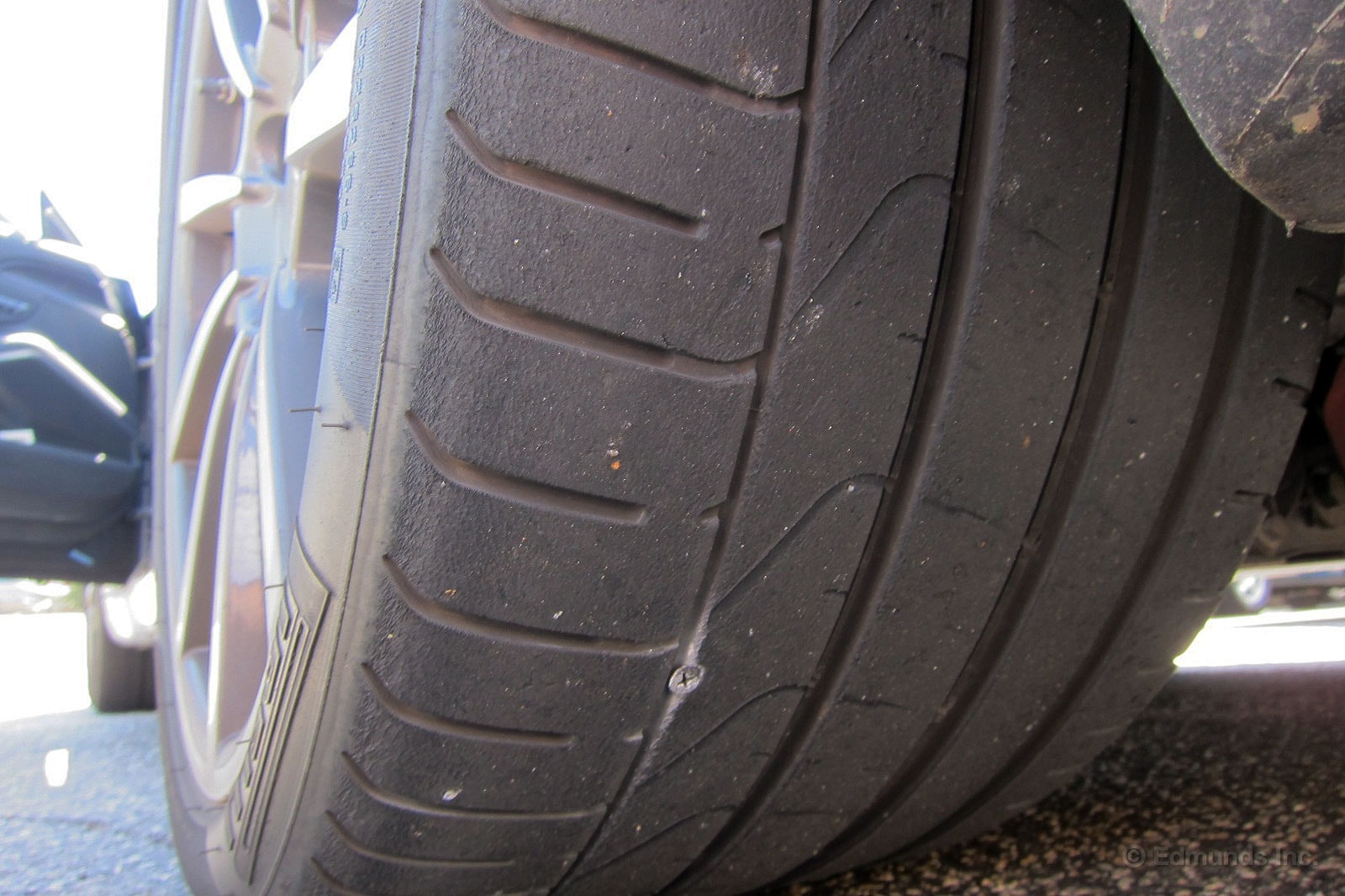
Last Wednesday I was hot-lapping our long-term 2013 Porsche 911 Carrera Cabriolet around The Streets of Willow, a tight small racetrack 100 miles northeast of our Santa Monica office. I had checked the tires and the tire pressures before the car touched the track.
That night I drove the 911 home. 110 miles. No problem.
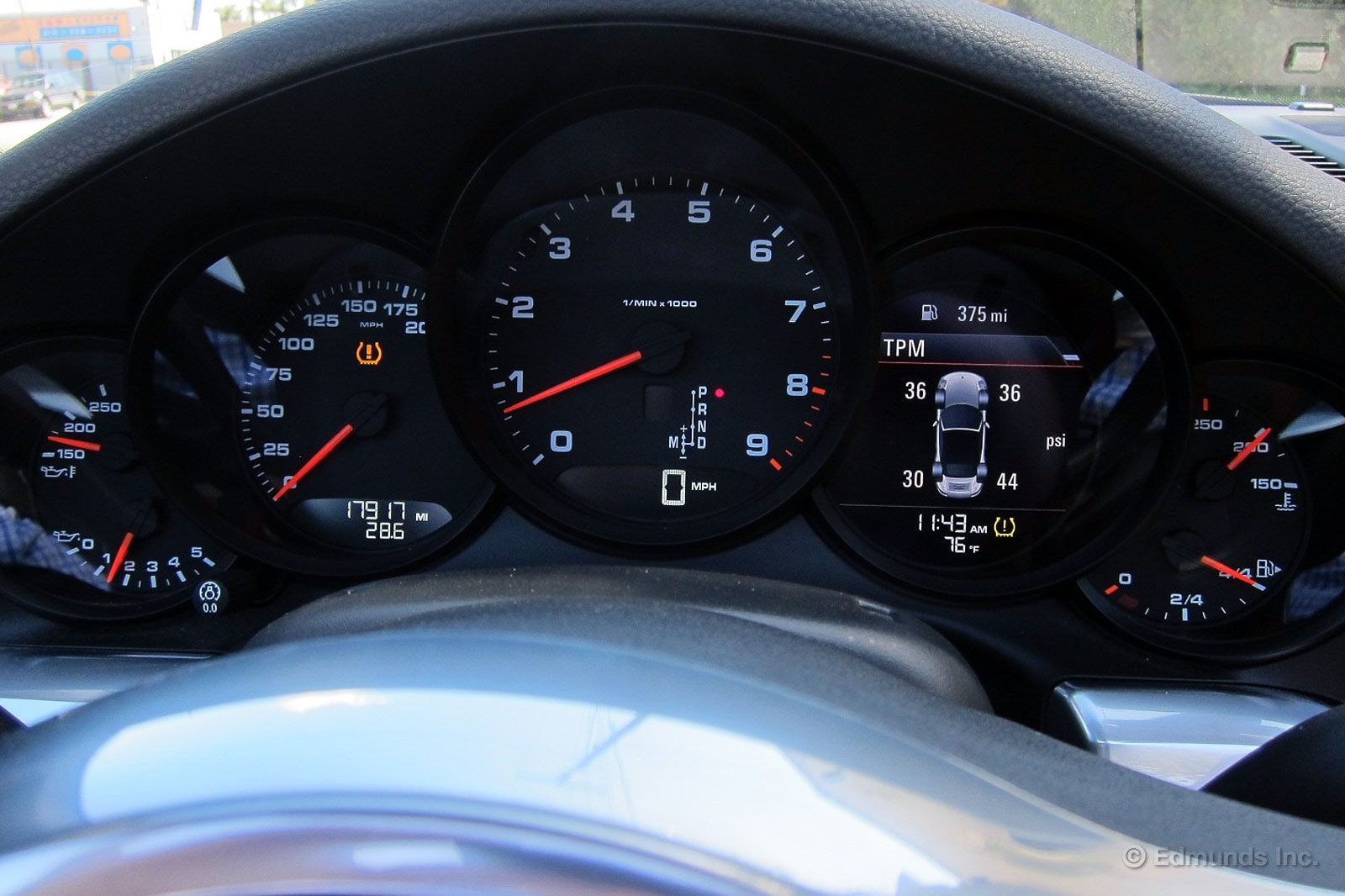
The next morning I drove it south to Torrance to visit my friends at Starlite Rod & Kustom. Still nothing.
And then it happened. As soon as I fired up the Porsche to drive from Torrance to Santa Monica (about 25 miles) the low tire light fired up on the car's instrument cluster. A few stalk toggles and the Carrera's TPM (Tire Pressure Monitor) clearly told me that it was the 911's left rear that was down. Down from 44 psi to 30 psi.
At that pressure I could make the drive, but I wouldn't want it to get any lower. I drove gingerly and kept one eye on the pressures. It was holding.
Back in Santa Monica I drove straight to Stokes Tire. There was no missing the long screw stuck in the Pirelli's tread. Thankfully it could be patched. They jumped right on it and 30 minutes and $30 later the Porsche and I were back on the road.
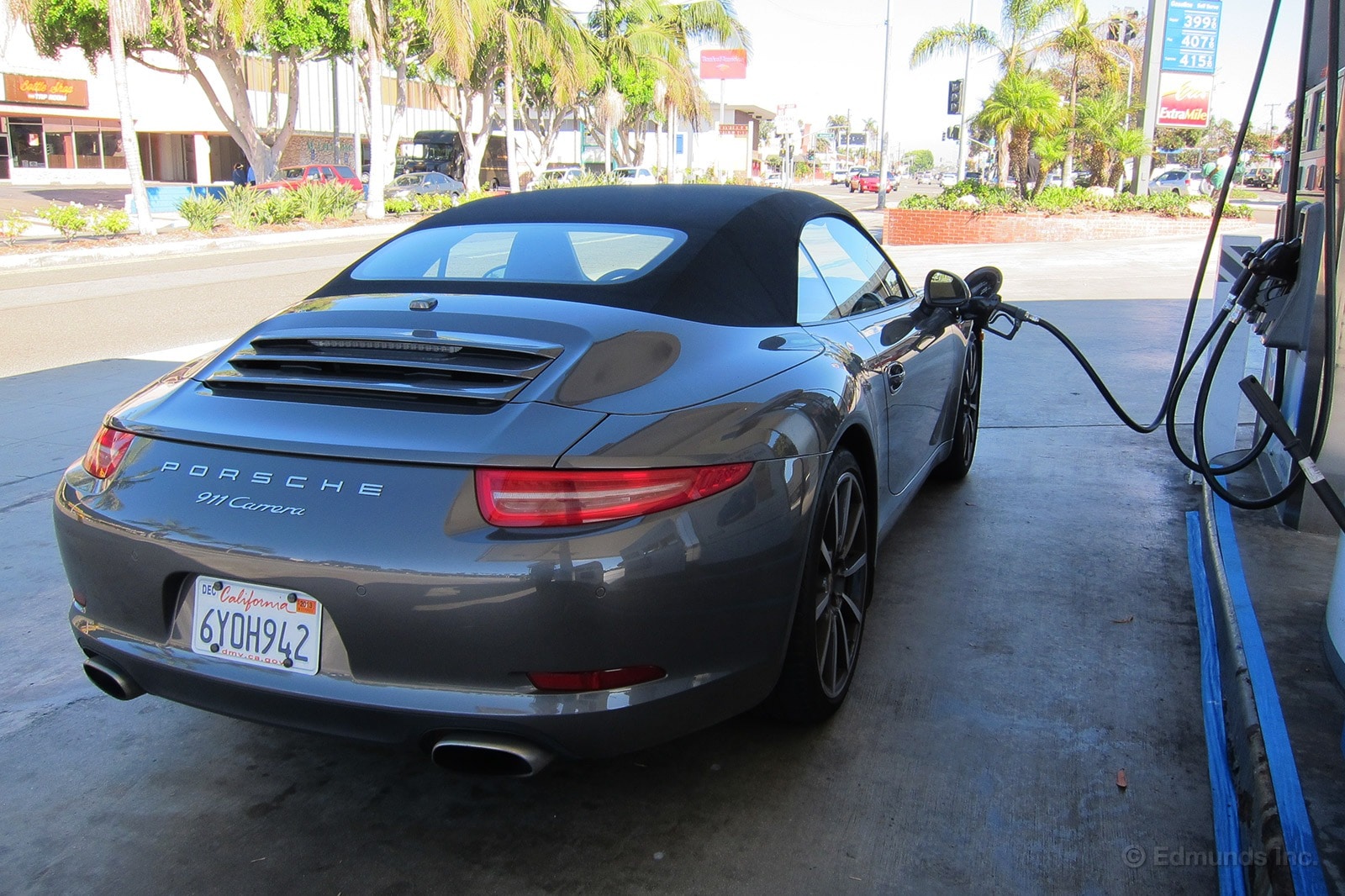
Our 2013 Porsche 911 Carrera Cabriolet has performed relatively the same as last month. We're averaging a little below the EPA combined estimate, as we have all along.
In August we drove our Porsche 1,170 miles, using about 64 gallons of 91-octane fuel.
Worst Fill MPG: 12.4
Best Fill MPG: 31.4
Average Lifetime MPG: 21.2 (down .4 from last month)
EPA MPG Rating: 23 Combined (20 City / 28 highway)
Best Range: 511.8 miles
Current Odometer: 18,019 miles
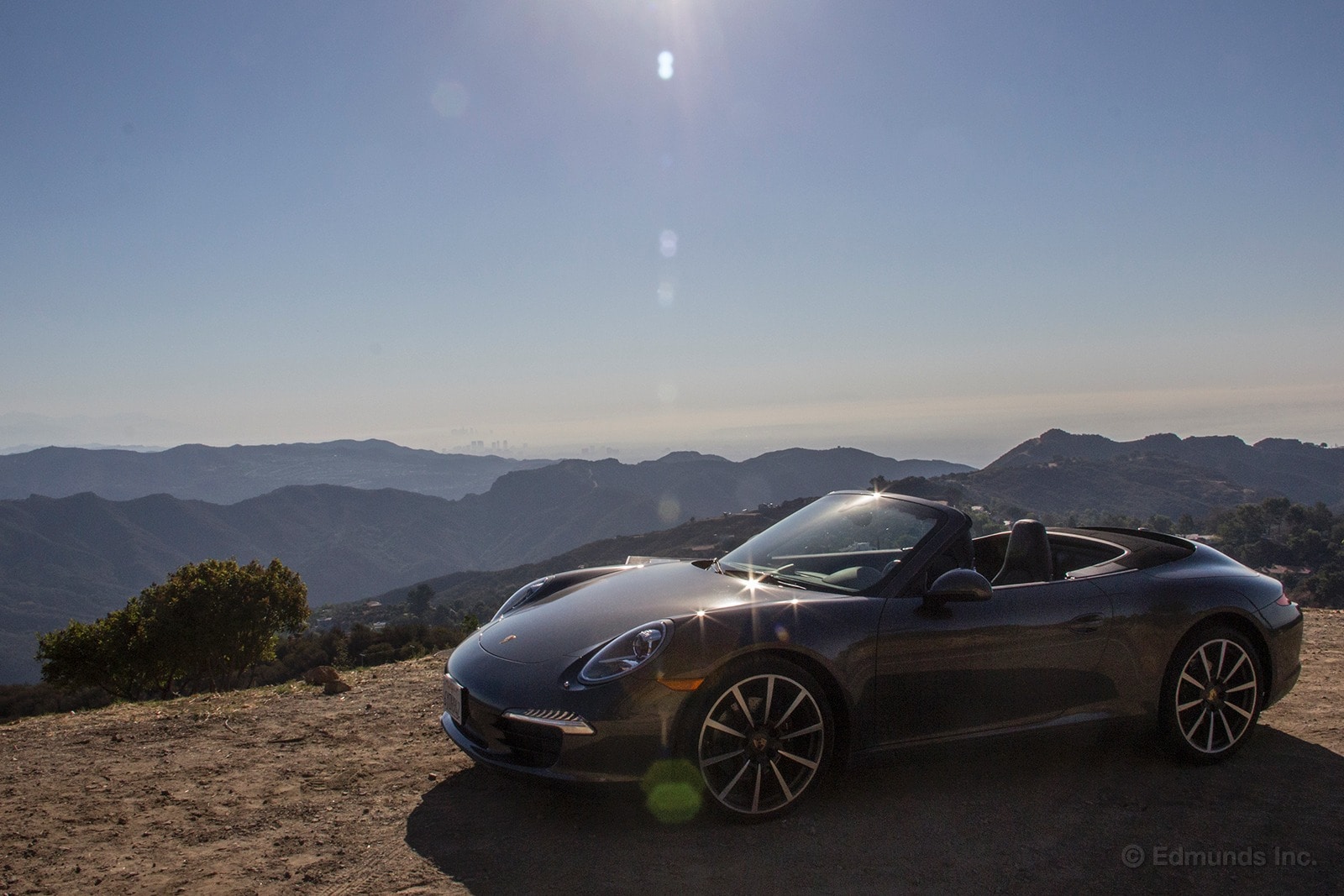
Our managing editor, Donna DeRosa, went back and forth on whether to put our 2013 Porsche 911 Carrera Cabriolet's top down. While I understood her dilemma, I had a much easier time making this decision last weekend.
A steady supply of SPF 30 and a good hat were all I needed to log a couple hundred miles with the convertible top retracted. Hiking in Hollywood, driving my mother and brother to brunch just three blocks from home, cruising Pacific Coast Highway, tunnel-blasting and darting through the mountains, and stopping at Trader Joe's for my weekly cookie-supply were all better as top-down enterprises.
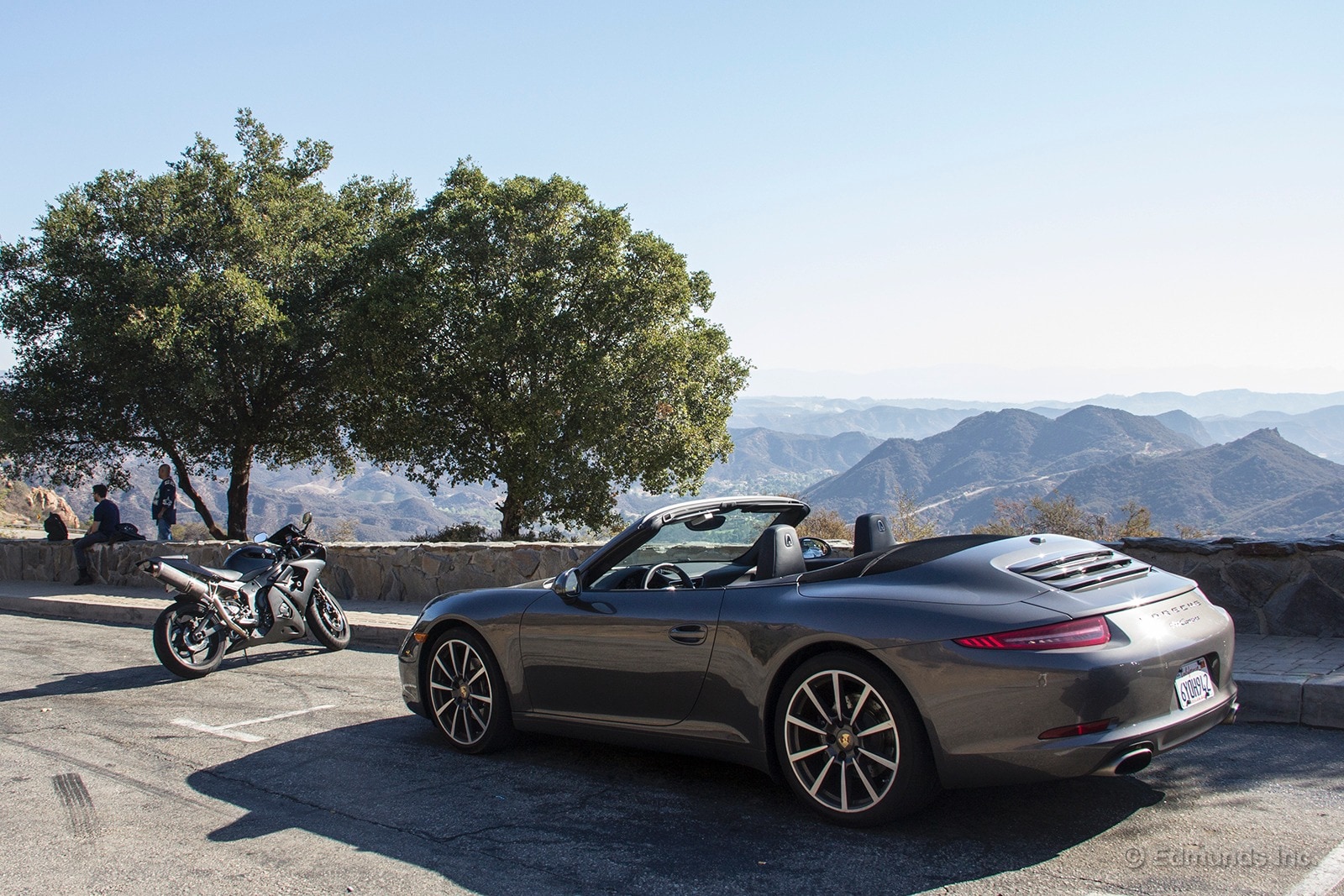
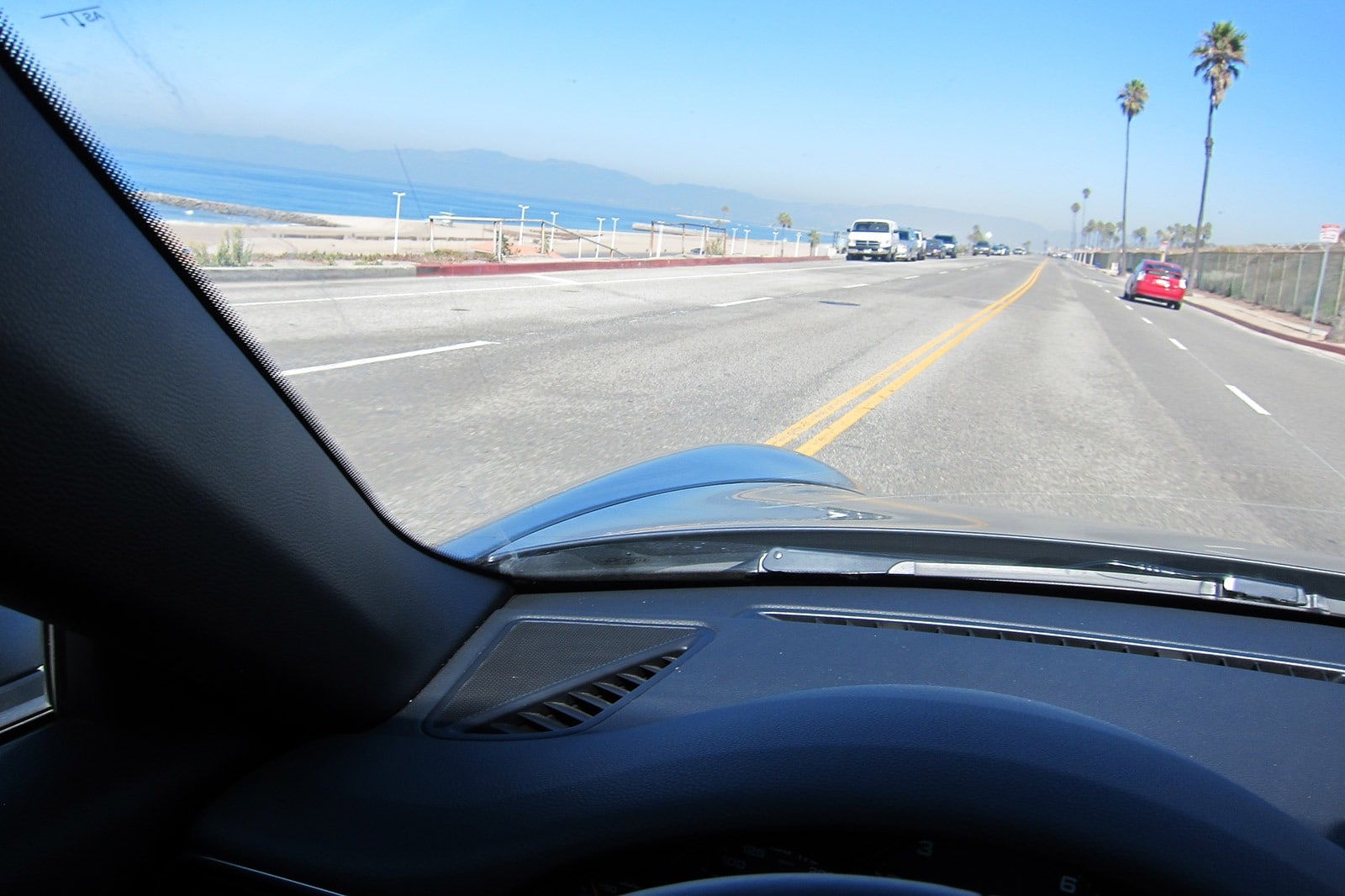
I don't care what the technical name is for the aerodynamic bumps you see from the driver seat of the 2013 Porsche 911 Carrera Cabriolet, but they are quite handsome.
I like to think of them as a pair of well-toned biceps or the thigh muscles of a ballet dancer. Strong yet graceful.
Adding to the luscious view from the cockpit is the leather-wrapped sweep of the dash and techy-with-a-hint-of-steampunk analog stopwatch that comes with the Sport Chrono package.
Eyes up. Throttle down. Yes.
Here are more professional shots by Kurt Niebuhr.
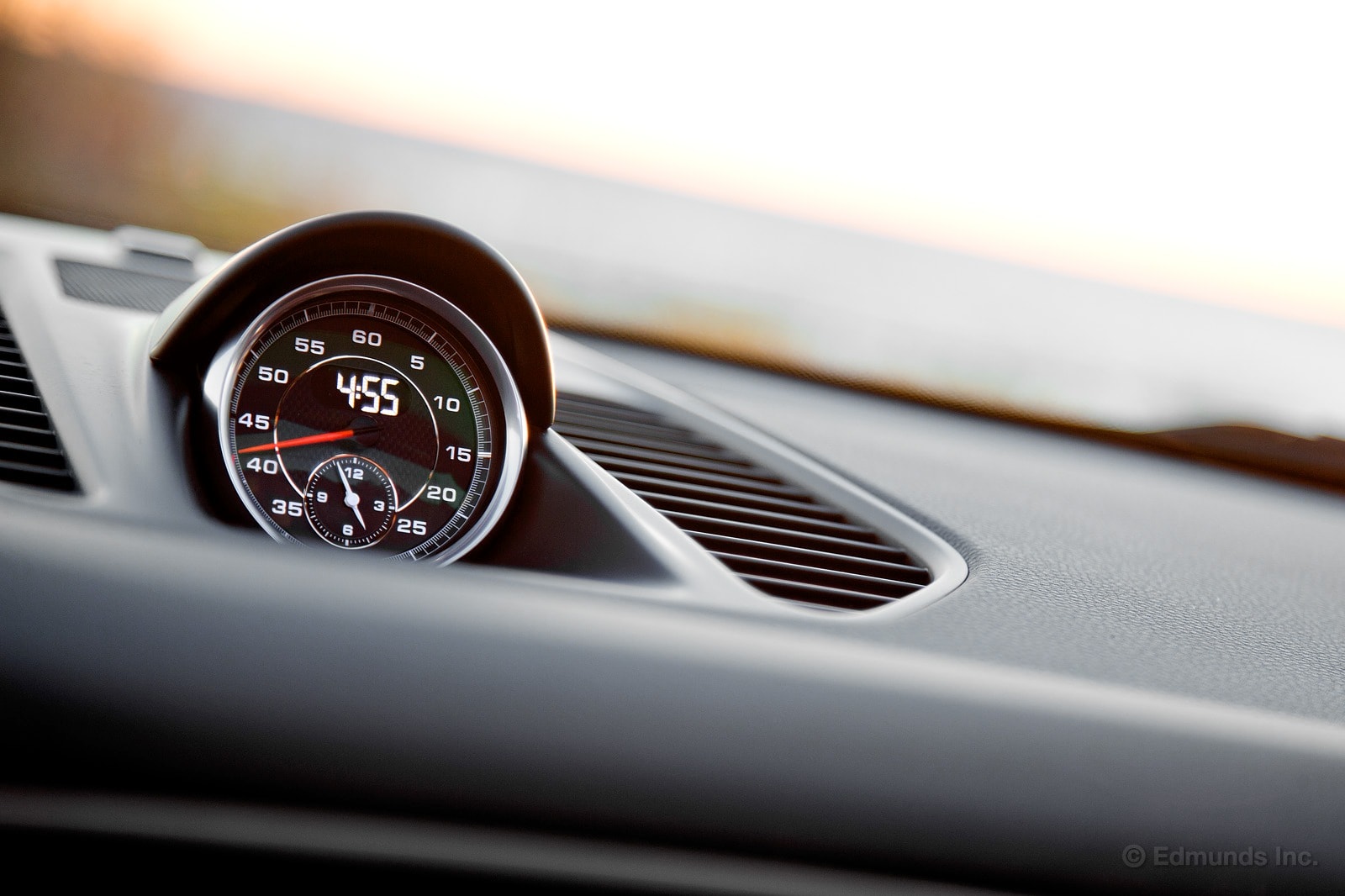

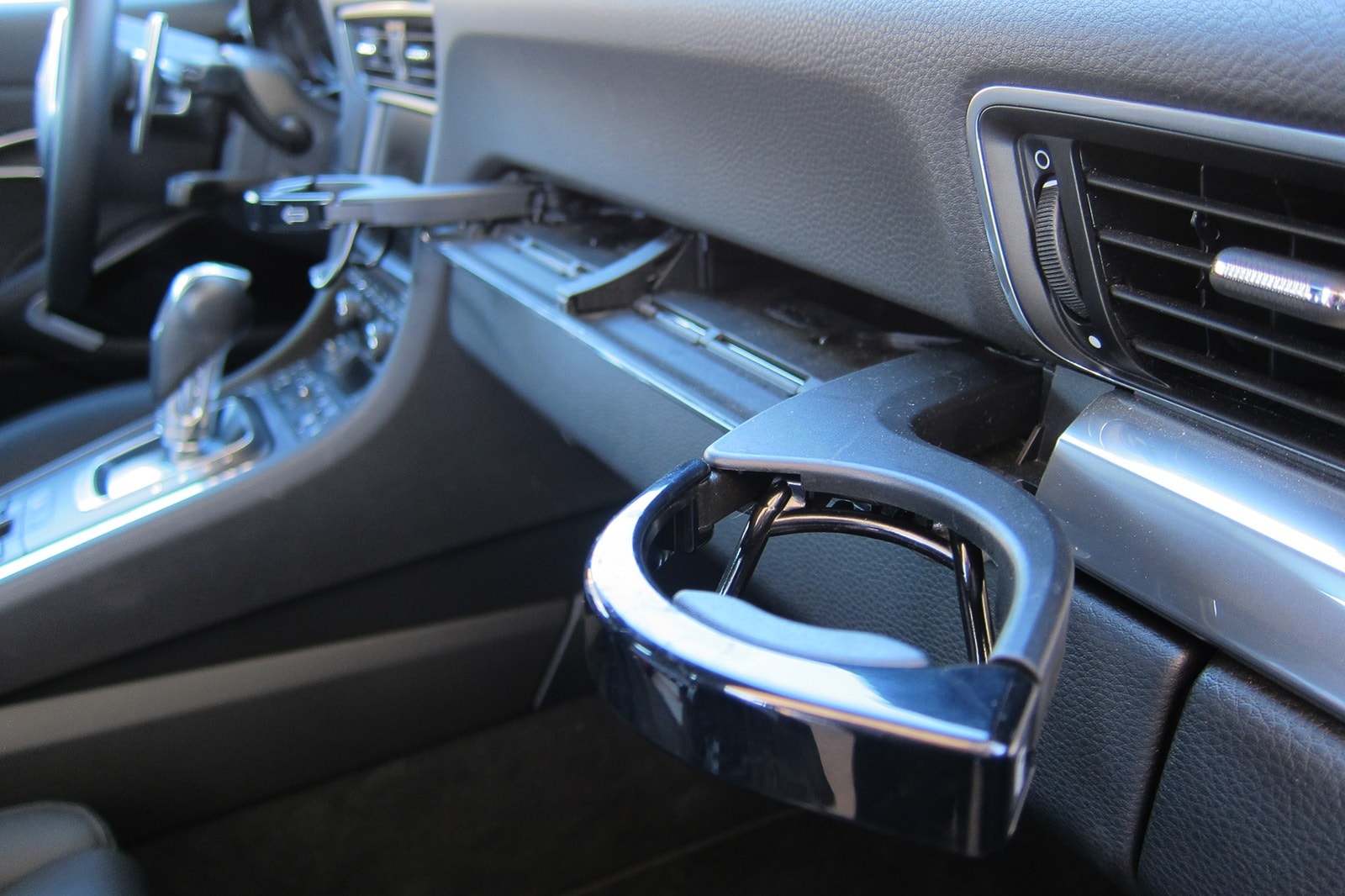
It's no secret that our long-term 2013 Porsche 911 Carrera Cabriolet has cupholders, but they are hidden from plain site.
Tucked away in a space above the glove box, two bottomless cupholders will pop out if you press on the narrow chrome strip. While they will hold a cup or bottle, they are no good for storing change, keys, phones, or other trinkets while driving.
This 911's interior is made for driving, not distractions.
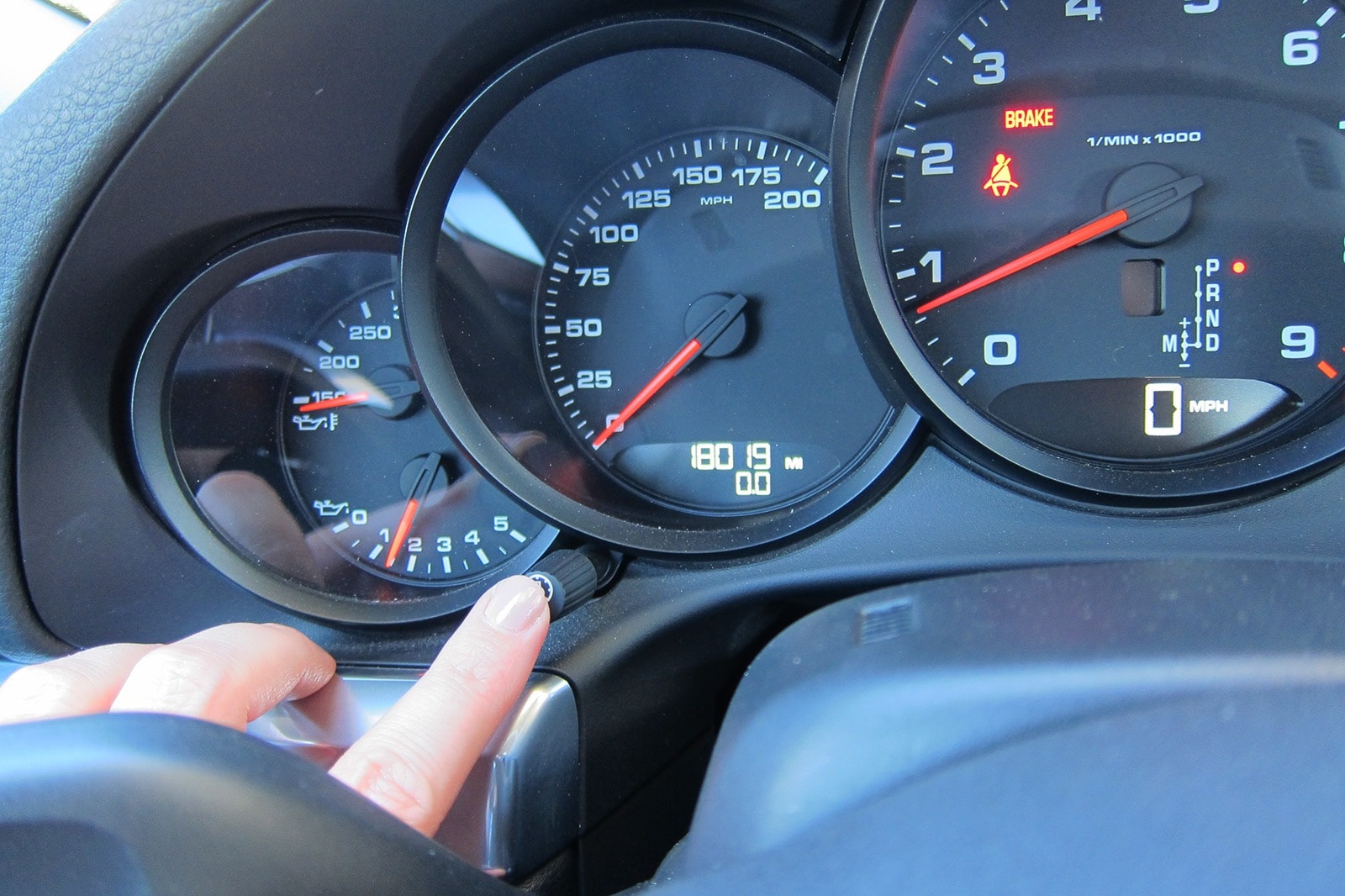
I like simple things that work well. Resetting the trip meter in our 2013 Porsche 911 Carrera Cabriolet requires only one press by one finger.
Some manufacturers have hidden this simple task inside complicated levels of buttons and message systems. Porsche 911 drivers don't have time for that. They have some serious driving to do.
Press button and continue adventure.

I meant to show this when we last Track Tested our 2013 Porsche 911 Carrera Cabriolet. What you see here is a graph of two acceleration runs with time on the X-axis and speed on the Y. The red line shows the result of utilizing Launch Control.
We've already extolled the many virtues of Porsche's exquisite PDK automated-manual transmission, but this is yet another reason it is superior to a traditional manual transmission. So good is this system that it not only clobbers most, if not all drivers' ability to launch the car effectively, but it does so consistently and repeatedly. And when we say repeatedly, a Porsche engineer told us that during PDK reliability testing that their factory driver grew car sick after 40 or so launches, or well before the system began to protect itself from the nut behind the wheel. Not all launch control systems are created equal.
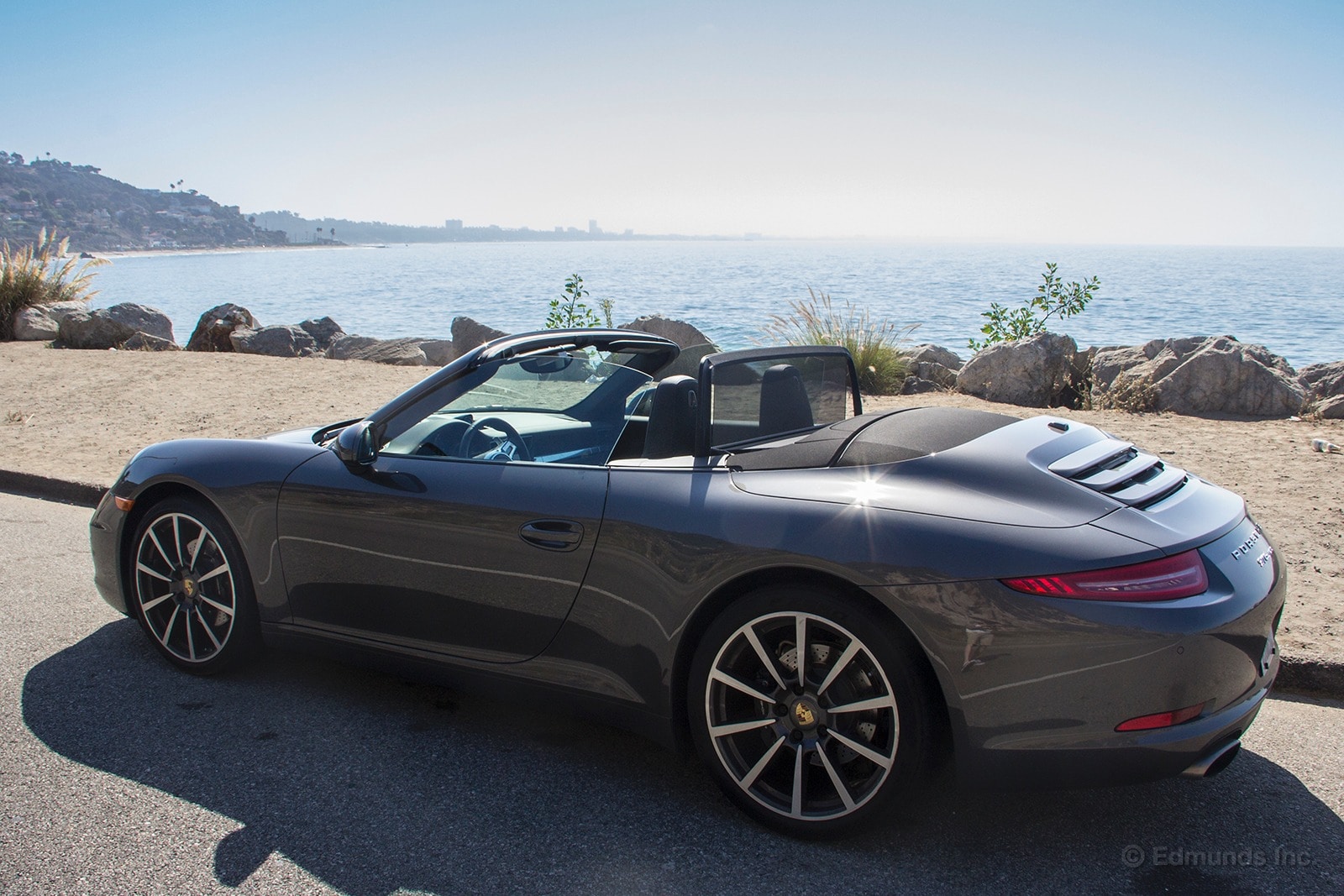
I've taken my mother in several of our long-term cars, but this was her first time in our 2013 Porsche 911 Carrera convertible. She screamed with fear when I put my foot in to the loud pedal of our SLS AMG Roadster. She squeaked with glee (and likely a little fear, too) when I showed our Cadillac ATS some corners and she couldn't stop staring at the Tesla Model S when we took it out to get frozen yogurt.
But I've never seen my mother as happy in a car, as when I put the 911's top down, turned up volume on the new Avicii single and drove her home from brunch.
Mom drives a 1990 Oldsmobile Delta 88 so I couldn't pass up the opportunity to give her a ride in this modern sports car with its fancy handling prowess. The Porsche was planted, smooth and even my 6-foot-tall older brother fit (sort of) in the backseat. When I took a tight right-hander on the way home, and decided to do so at Porsche-capable speed, she was wide-eyed at first but subsequently amazed by the stability and confidence the car had. I have no doubt that she'd happily take one as a birthday present, and she'd probably like it in red.
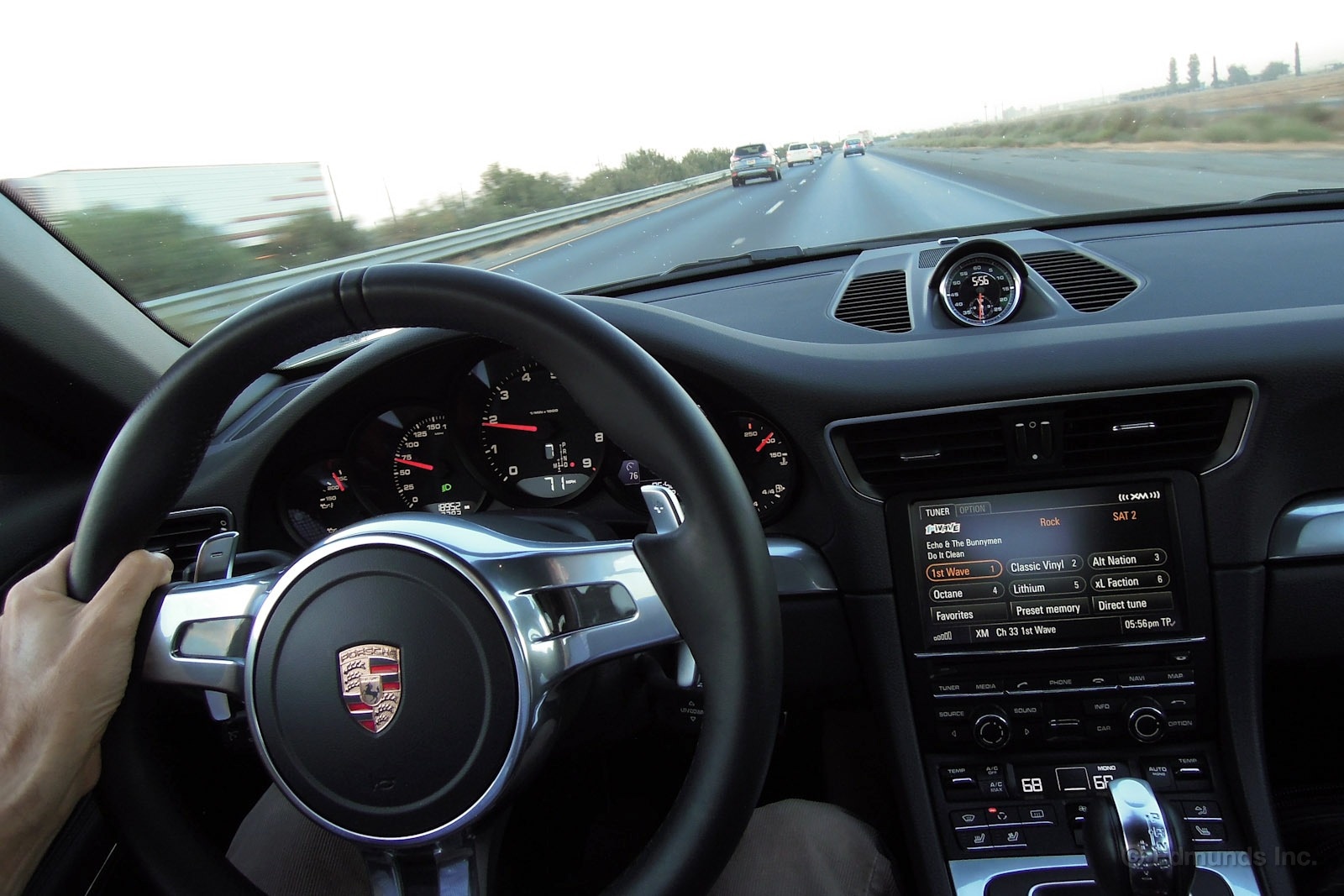
Have you ever driven a car that seems to have a devilish personality? One that's always whispering in your ear for you to drive faster? Well, for me, our 2013 Porsche 911 Carrera is like that. And it takes a lot of mental restraint to ignore it.
It's almost like the 911 has a version of KITT (from Knight Rider), but with a German accent. I've named it FRANS.
FRANS: "The road is clear ahead. We can go faster, ja?"
Me: "Uhh, it's tempting, FRANS, I admit. But no, we need to follow the speed limit. No tickets, please."
FRANS: "I see...You know I am precision engineered to the highest standard. My Porsche Doppelkupplung can downshift in hundredths of a second. On the Autobahn I am meant to achieve 176 mph with absolute stability."
Me: "I know, I know. Sorry."
FRANS: How do you Americans say it? "You're a chicken?" David Hasselhoff is more manly than you.
Me: Look, I'm turning you off and putting on NPR's Fresh Air, OK…
In all seriousness, there is something that makes this car special. Maybe it is the stability, the glorious sound of the flat-6, or the confidence-inspiring steering. But regardless, I really do have to watch myself in this car. And that's certainly part of its appeal.

A couple of years ago, Porsche ran a campaign, Engineered for Magic Every Day, where owners could submit real stories of using their cars. One promotional commercial at the time showed a guy buying bags of cement with his Cayman and a mom picking up kids at school in a 911 Turbo.
It's a clever commercial, but the funny thing with having a 911 Carrera in our fleet is that we've pretty much validated the whole concept. For instance, the past week I've used the 911 to take my two kids to school every morning, and it's been great.
The back seats are small, certainly, but in a way they're ideal for small children and will hold booster seats pretty easily. Initially, I thought I'd have to get out of the car and walk around to open the passenger-side door to help my daughter get out for drop-off at her elementary school. But there's actually enough space for her to step past the front passenger seat, and she can flip the seatback forward and open the door without my help.
Plus, my kids like the car. I love the car. Were it actually my 911, I'd certainly use it every day.
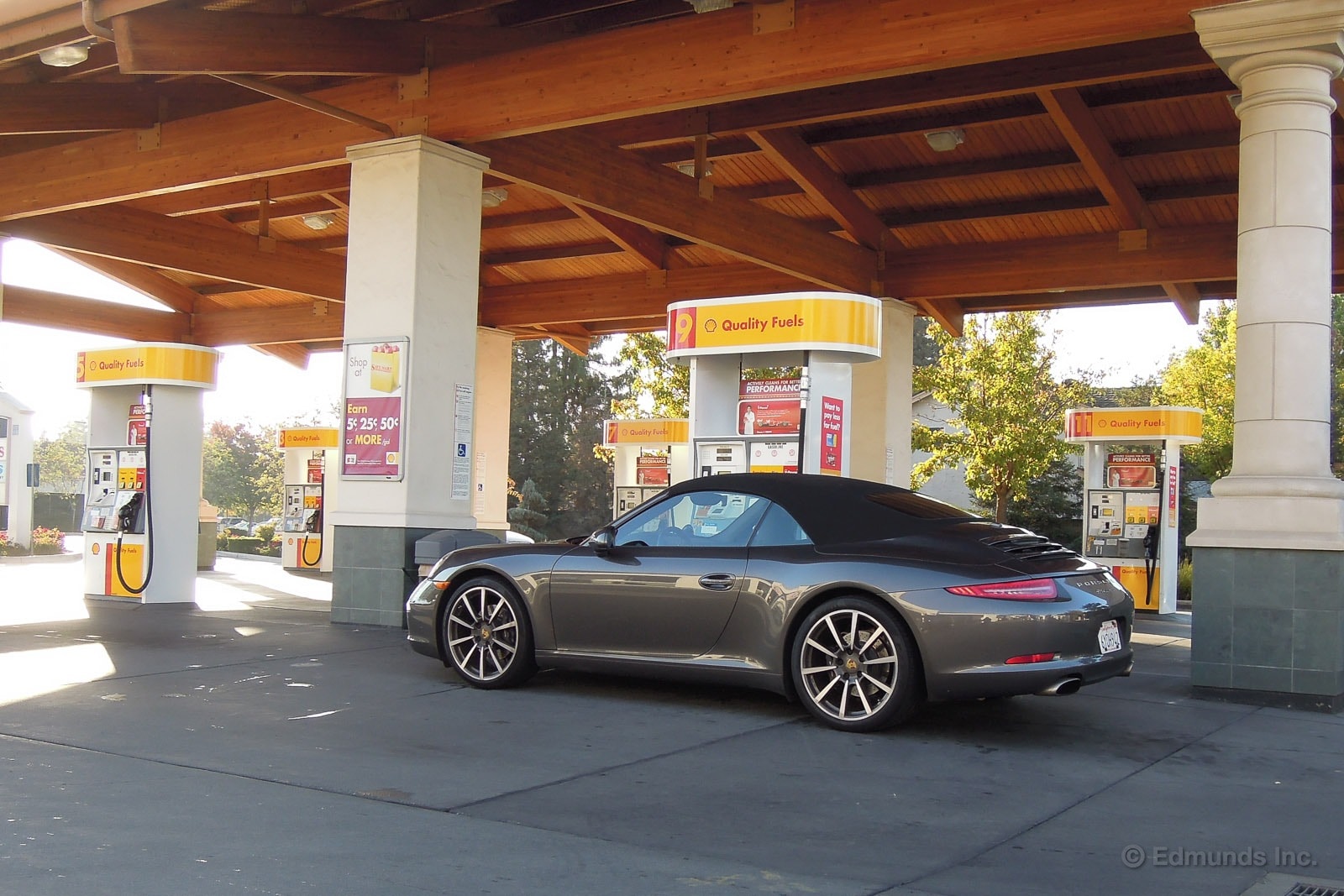
We added about 1,200 miles to our 2013 Porsche 911 Carrera convertible during October. It didn't make any big road trips, so that mileage was largely racked up by our typical commuting within Southern California.
For the month, we averaged 20.9 mpg. That's close to our lifetime average since we started the test back in January.
That lifetime average currently stands at 21.2 mpg, which is a little below the EPA's 23 mpg combined average.
Worst Fill MPG: 12.4
Best Fill MPG: 31.4
Average Lifetime MPG: 21.2
EPA MPG Rating: 23 Combined (20 City/28 Highway Combined)
Best Range: 511 miles
Current Odometer: 19,288 miles
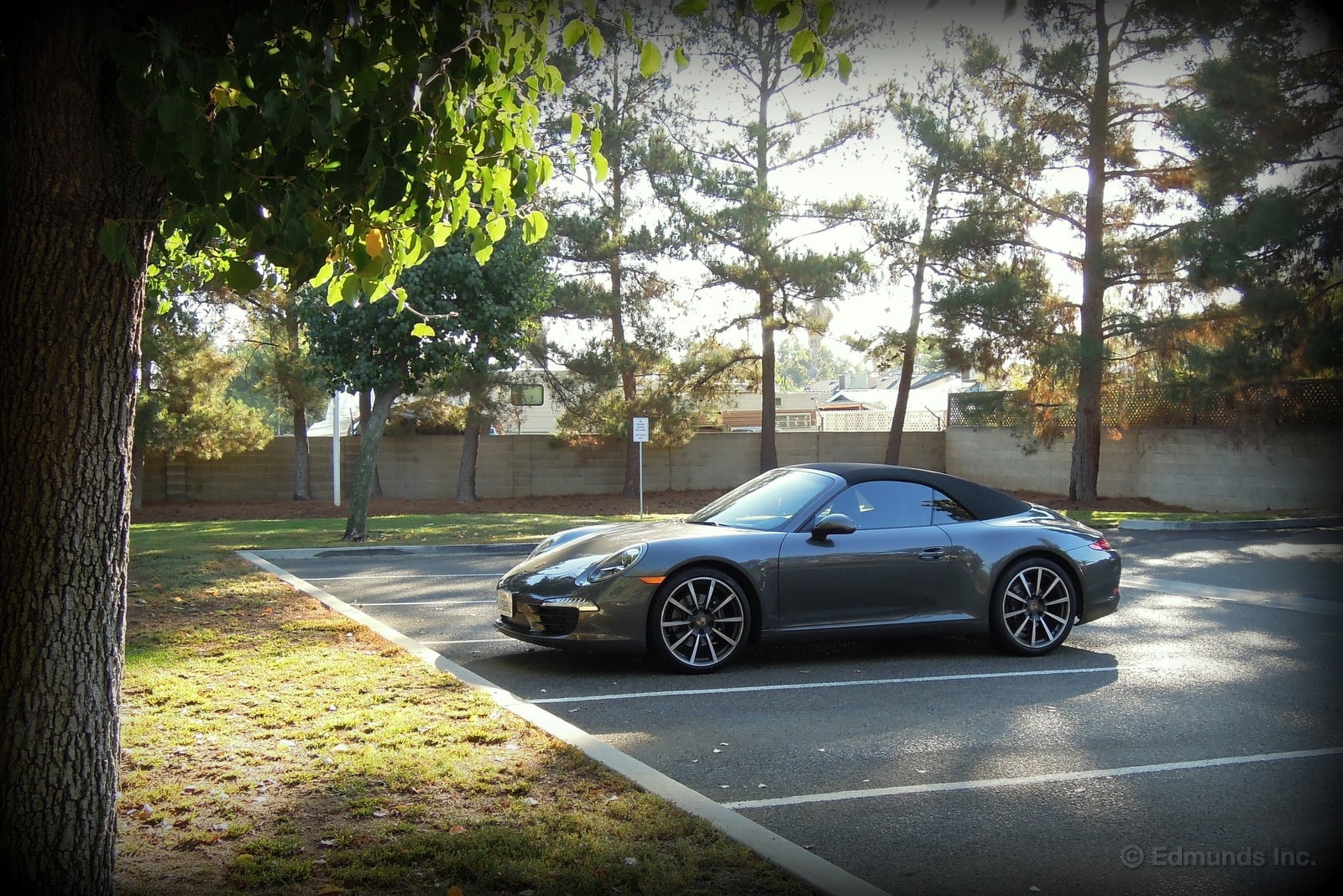
A sure way to burn away a solid half-hour out of your day (or more) is to fantasize about what your dream 2014 Porsche 911 would look like and then build it out on Porsche's Web site. (And if you don't need to fantasize because you already own your dream 2014 911, well, I tip my hat.)
Our introduction details how we ended up with our 2013 Carrera convertible. But I'm curious: if you could order your own 911, what would it be? Would you keep it simple or go all out on a 911 Turbo S or GT3? What options would you pick?
You can access the configurator off of Porsche's consumer site. And if you want, reply in our comments section with what you'd buy. The configurator also gives you the option to share a link that details your build.
Here's mine: www.porsche-code.com/PE53UAS6
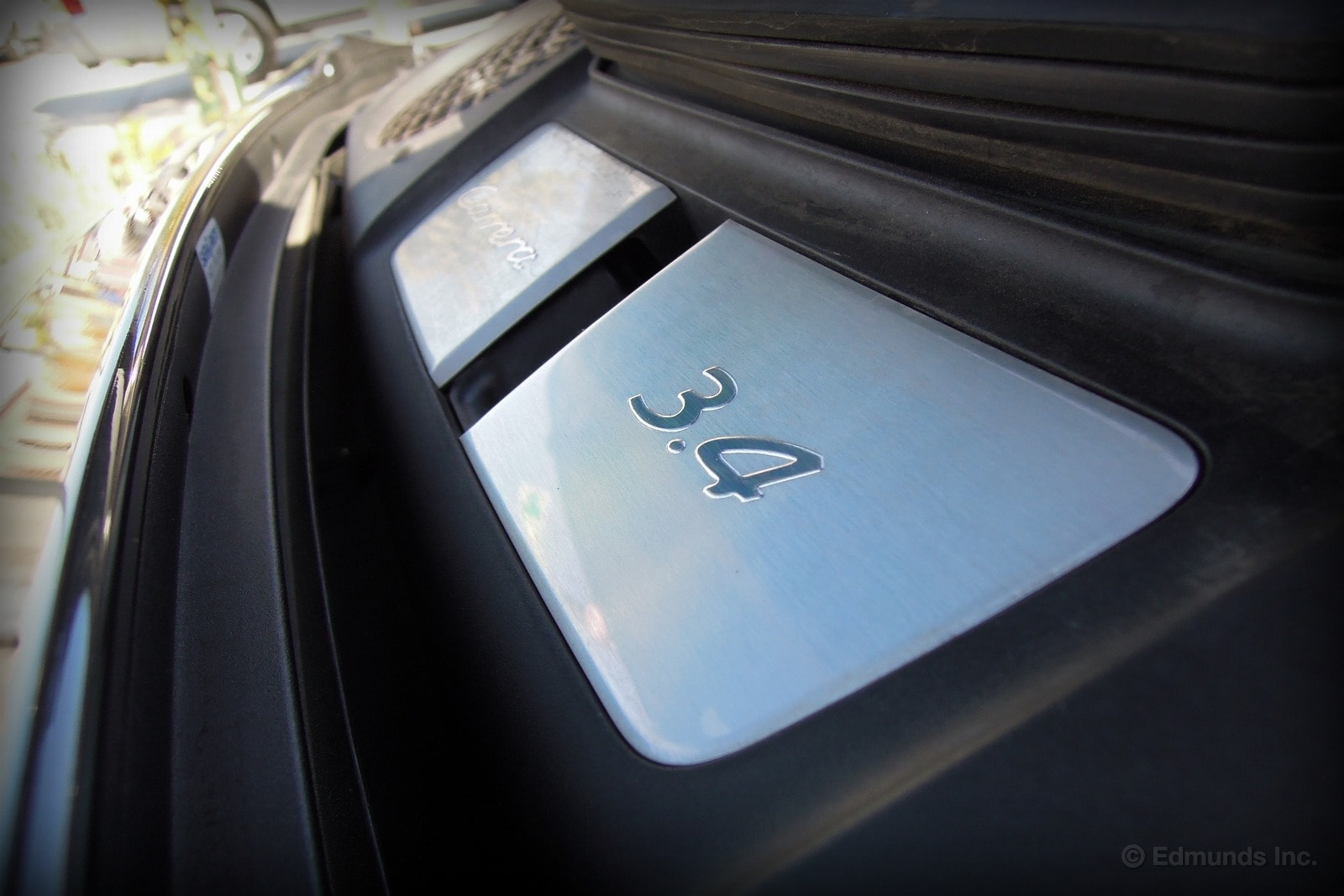
We've posted updates on our 2013 Porsche 911's performance previously. In our track testing, the car accelerated from zero to 60 mph in a quite respectable 4.7 seconds. Even better than that is the way the 3.4-liter flat-6 sounds as it sings towards redline. It's just awesome and pleasingly unique.
But I could also see where the 911's real-world performance would leave somebody wanting.
The reality is that the 4.7-second 0-60 time is under track conditions using launch control. In more normal driving, you're looking at a nearly 3,400-pound car with high power peaks: 350 hp at 7,400 rpm and 287 lb-ft of torque at 5,600 rpm.
In contrast, almost all competing sports cars or coupes these days have big-displacement engines or turbocharging or supercharging. The Corvette Stingray is at 460 hp at 6,000 rpm and 465 lb-ft at 4,600 rpm (with the optional exhaust). The Jaguar F-Type V8 S churns out 495 hp at 6,500 rpm and 460 lb-ft at 2,500 rpm. The upcoming BMW M4 is expected to offer at least 369 lb-ft of torque starting at 1,500 rpm.
Now, throwing around numbers like that is largely just bench racing. But there's no denying that the 911 Carrera represents classic, naturally aspirated sports car performance. You can't just gently roll on the throttle to make quick passes like you can in those other high-end sports cars. You've got to make some downshifts and be pretty high in the rpm range to get maximum effect.
Of course, if it's torque you want, Porsche will gladly sell you a 911 Turbo. But for the potential Carrera convertible buyer, I think he or she should know that there are pros and cons to the way this car makes it power.
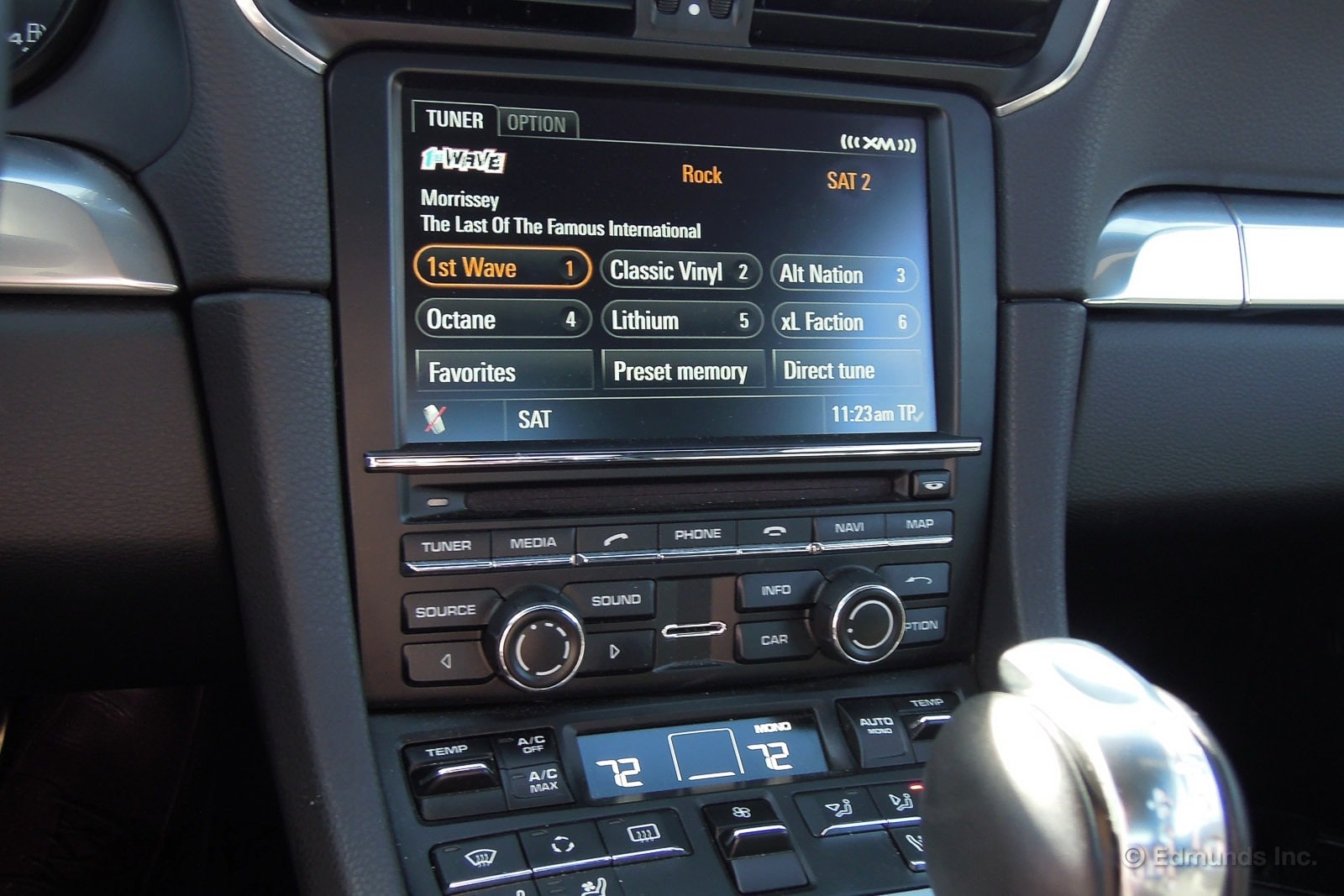
When you buy a Porsche, you're expecting to get a boat-load of superlatives regarding performance. But would you expect the same regarding the interior controls? Probably not. Yet I'm actually quite impressed with our 2013 Porsche 911's electronic interface.
Porsche calls the collection of buttons, knobs and a touchscreen its "Porsche Communication System," or PCM. While it lacks a central input controller like BMW's iDrive or Mercedes' COMAND, PCM's 7-inch touchscreen does give the system a level of redundancy that I find useful.
Other positives of the system include clearly labeled buttons, quick and accurate responses to your touch, easy navigation use, the additional helper screen in the gauge cluster and generally intuitive menus. I think it's unlikely that you'll have to use the owner's manual to operate the system.
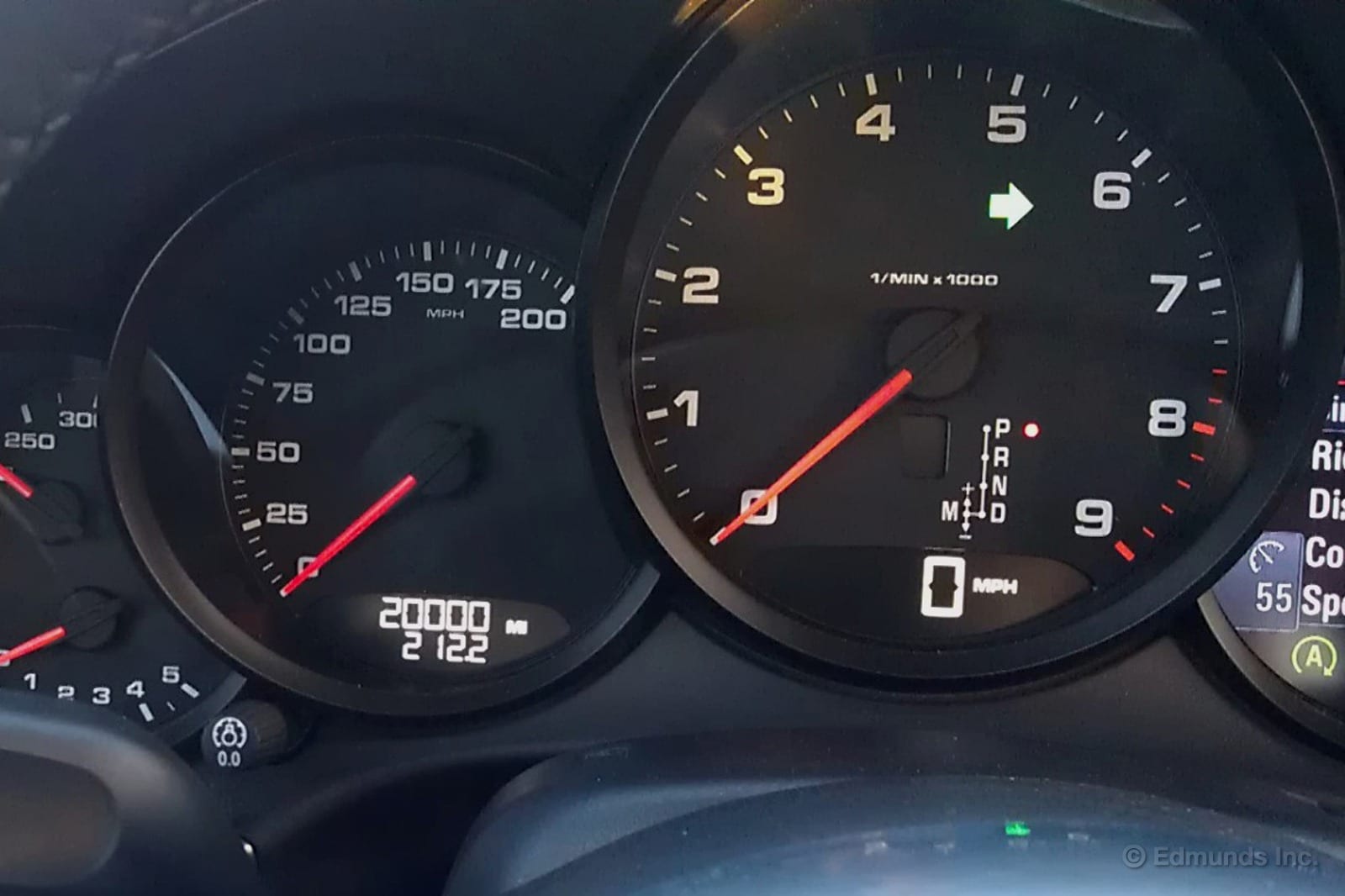
A month ahead of schedule, our long-term 2013 Porsche 911 has hit the 20,000-mile mark. Evidently, piling up the miles on this sports car is no sweat. Yes, that cross-country road trip certainly helped. But that journey and just living with the car on a daily basis both highlight one of the 911's most endearing qualities: its split personality.
When you want it to be a ripping and ultra-rewarding sports car, it is more than happy to oblige with its muscular flat six, buttoned-down handling and superb steering and brakes. Yet when you have to trundle along with traffic or want to kick back and cruise up the coast, the 911 isn't some herky-jerky, stiff-riding thoroughbred. A comfortable driving position, relatively compact size, supportive seats and an athletic suspension that still takes the edge off the bumps make Porsche's icon a comfortable commuter and a pretty good touring car.
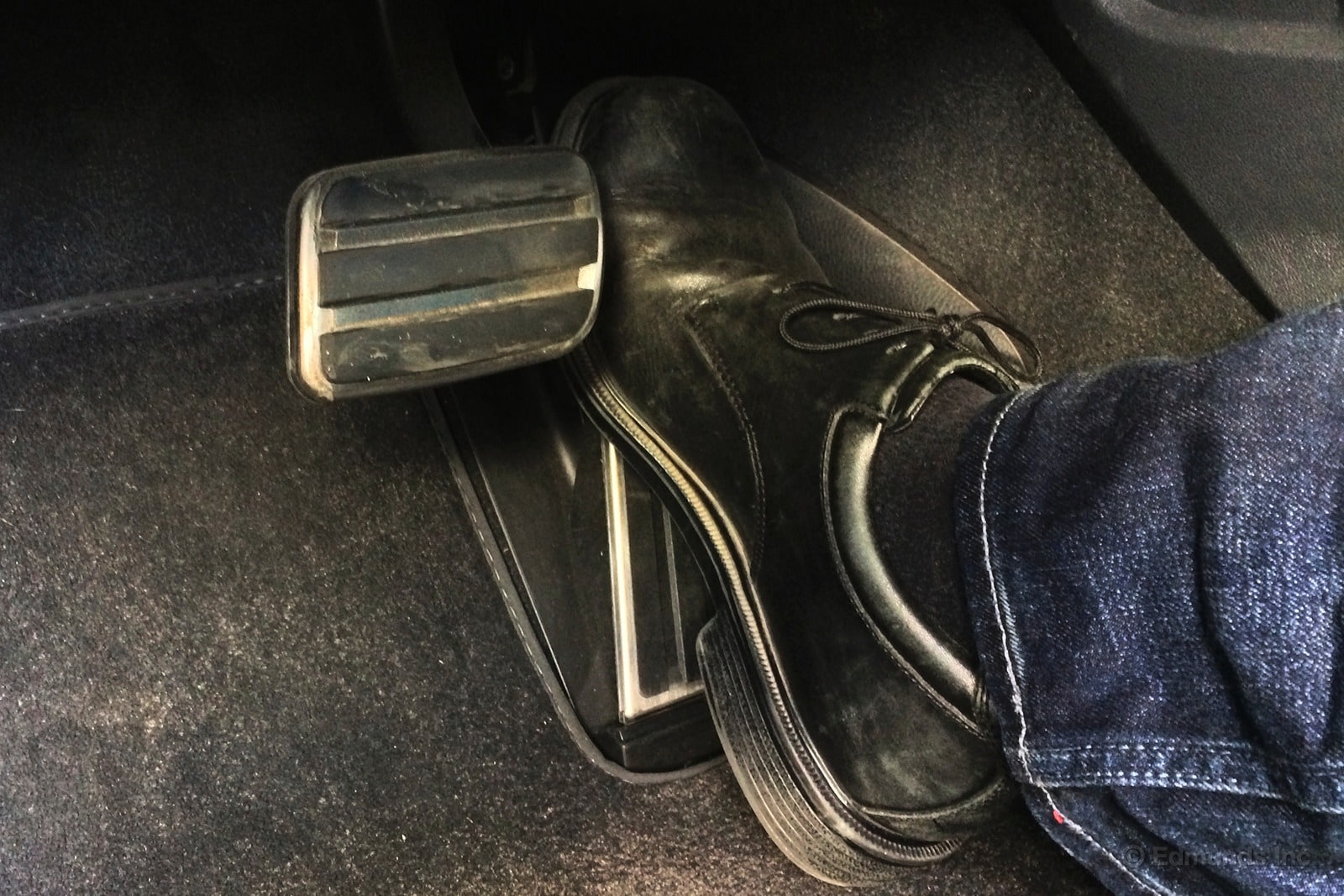
In some instances, it's better to hit the gas to avoid a collision rather than the brakes. There I was, cruising up the highway in seventh gear, when an inattentive driver alongside me started drifting out of his lane and into mine. I hit the gas to keep him from contacting the Porsche.
The pedal went all the way to the stop. Well not the stop, but a stop, as I discovered. In that split second I needed to accelerate past with more aggression. Just before I went to pull the shift paddle three times (I always drive in manual mode), I inadvertently pushed even harder on the pedal and discovered hidden level of throttle.
As Nigel Tufnel said in This is Spinal Tap, "it goes to 11."
This second stop in the pedal dropped me into third gear and the Porsche took off like a fighter jet hitting the afterburners. The sound and fury woke Mr. Inattentive Driver out of his text-fueled haze and he swerved right back into his lane.
Yet another feature I applaud in our Porsche.

I've been using cruise control with much more frequency lately. In most cases, it keeps me from inadvertently exceeding the speed limit, which is easy in some of the more powerful cars that roll through the Edmunds lot.
On the way home one night in our 2013 Porsche 911, I discovered a minor peculiarity.
During a break between songs on my iDevice, I noticed the revs were a bit higher than normal. A quick glance at the gauges showed that I was in sixth gear instead of seventh. Since I normally drive the 911 in manual mode, I pulled the paddle to step up a gear. Nothing happened.
I moved the gear selector over to automatic mode. Still nothing. Then I remembered how some other cars won't let you select the higher gears in sport mode. Bingo!
I switched off the Sport Plus button and the transmission instantly dropped into seventh. Back in manual mode, seventh was again available. I never really understood why manufacturers would block out the highest gear like this, but there it is. And yes, I realize that the title of this post sounds like a Bruno Mars song.
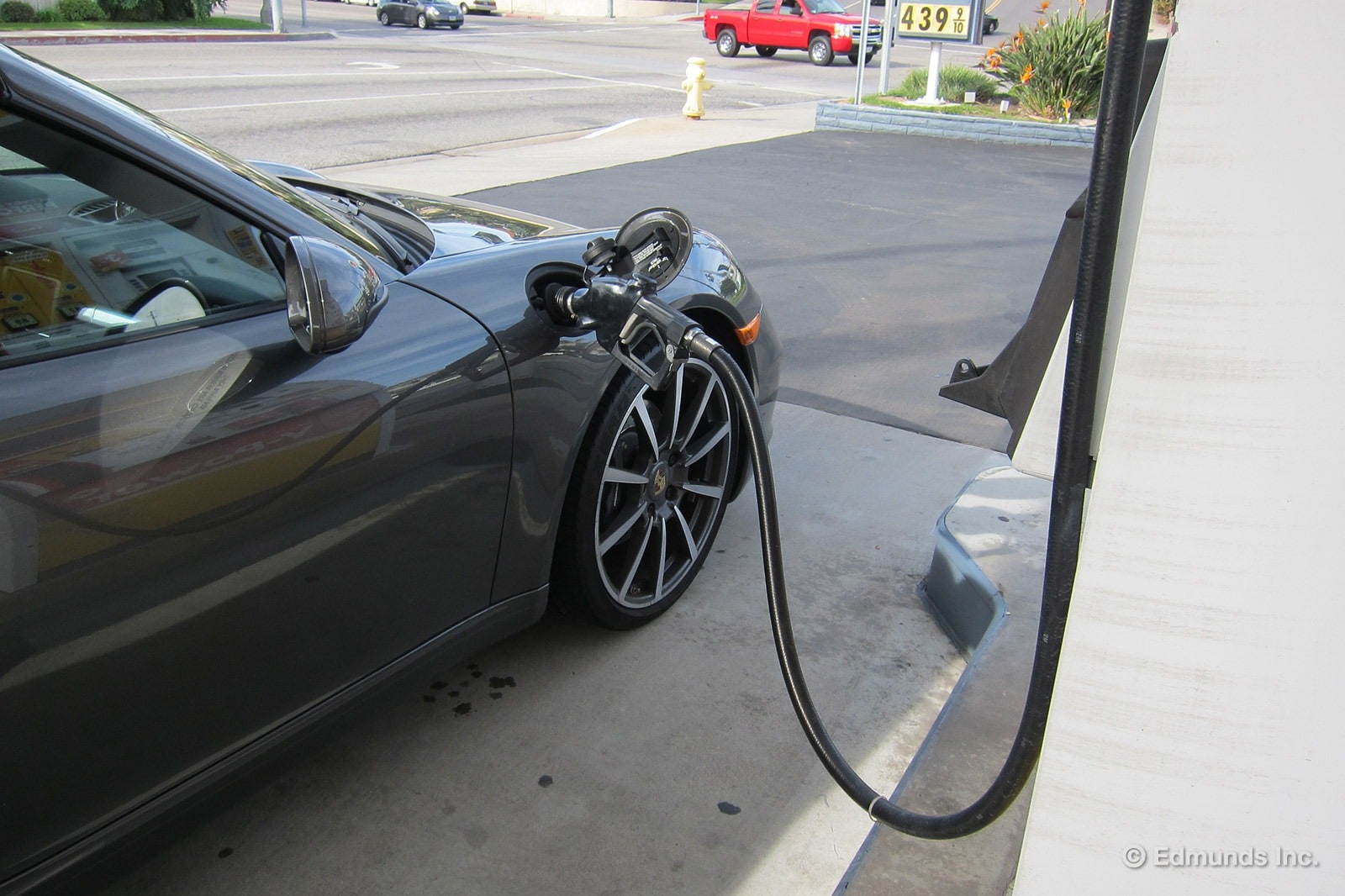
We added just over 1,300 miles to our 2013 Porsche 911 convertible in November.
Our best and worst fill numbers haven't changed since last month but our overall fuel economy dropped slightly to 21.0 mpg. We're running slightly behind the EPA combined estimates.
But you know what? It's a Porsche 911 and it would be a waste to drive it like a granny.
Worst Fill MPG: 12.4
Best Fill MPG: 31.4
Average Lifetime MPG: 21.0
EPA MPG Rating: 23 Combined (20 City/28 Highway Combined)
Best Range: 511.8 miles
Current Odometer: 20,647 miles
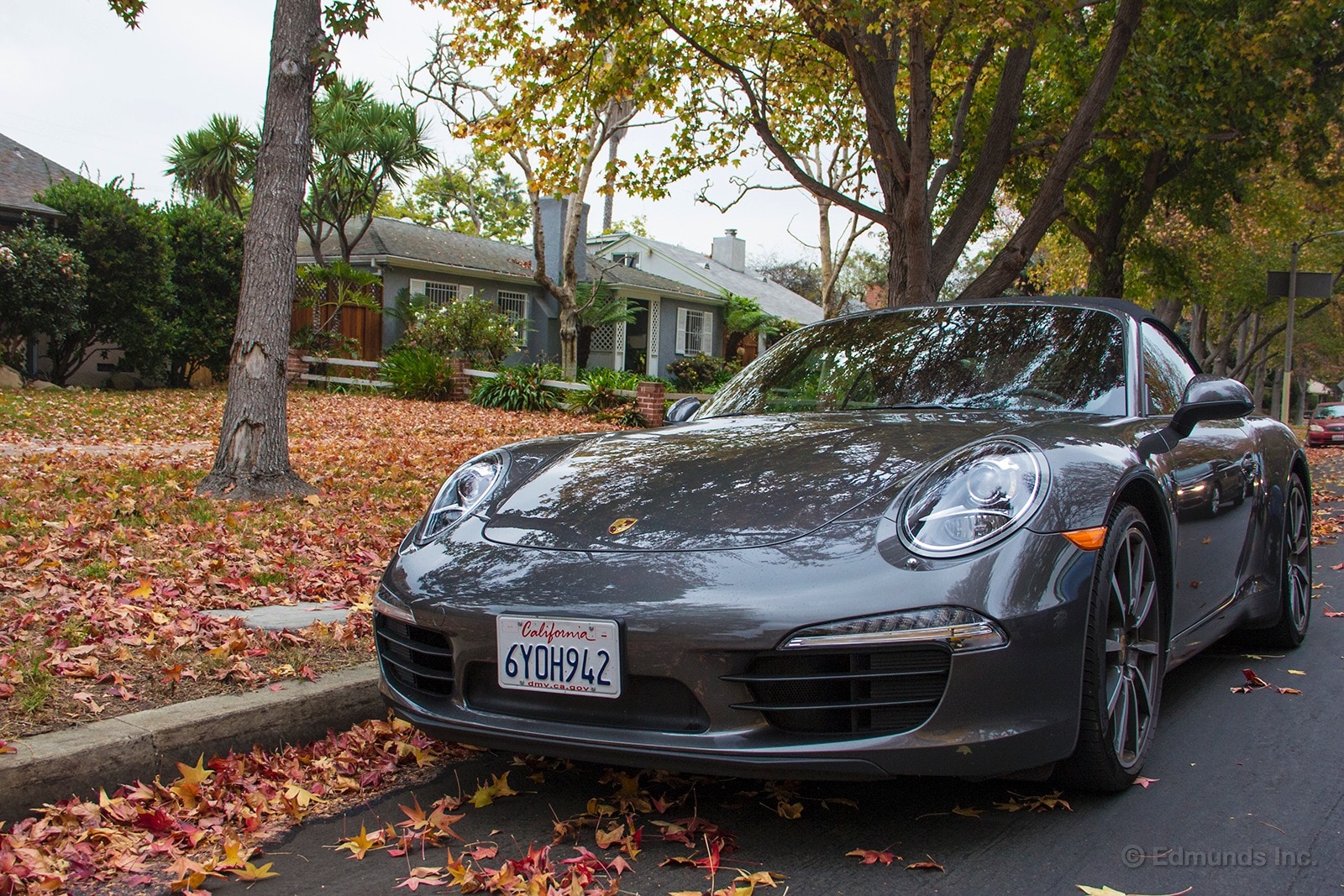
"Which would you rather have?" my mother asked. She wanted me to choose between two of our long-term cars: the 2013 Porsche 911 Carrera Cabriolet and the 2014 Chevrolet Corvette Stingray. I knew immediately what my answer was.
"The Corvette. No question," I said.
"Really?" she responded, surprised.
I explained that the Porsche 911 is brilliant around corners. It's precise like a sniper rifle. The flat-six engine in the Porsche makes a classy, highly tuned sound when you throw some revs at it. Words like "refined" and "balanced" come to mind when you drive the rear-engine 911 Carrera convertible.

The raw, visceral nature of a small-block V8 like the one in the Chevy Corvette leaves you with a different feeling when you drive it. Flex your big toe a couple of times while the Stingray is in neutral and you feel filthy and alive all over. Every startup is spine-tingling.
Our comparison test proved it's no slouch around corners, either, when it beat a 911 Carrera S around Streets of Willow. If it were my money and I had to choose between our two long-termers, I'd save the $28,520 and get the Vette.
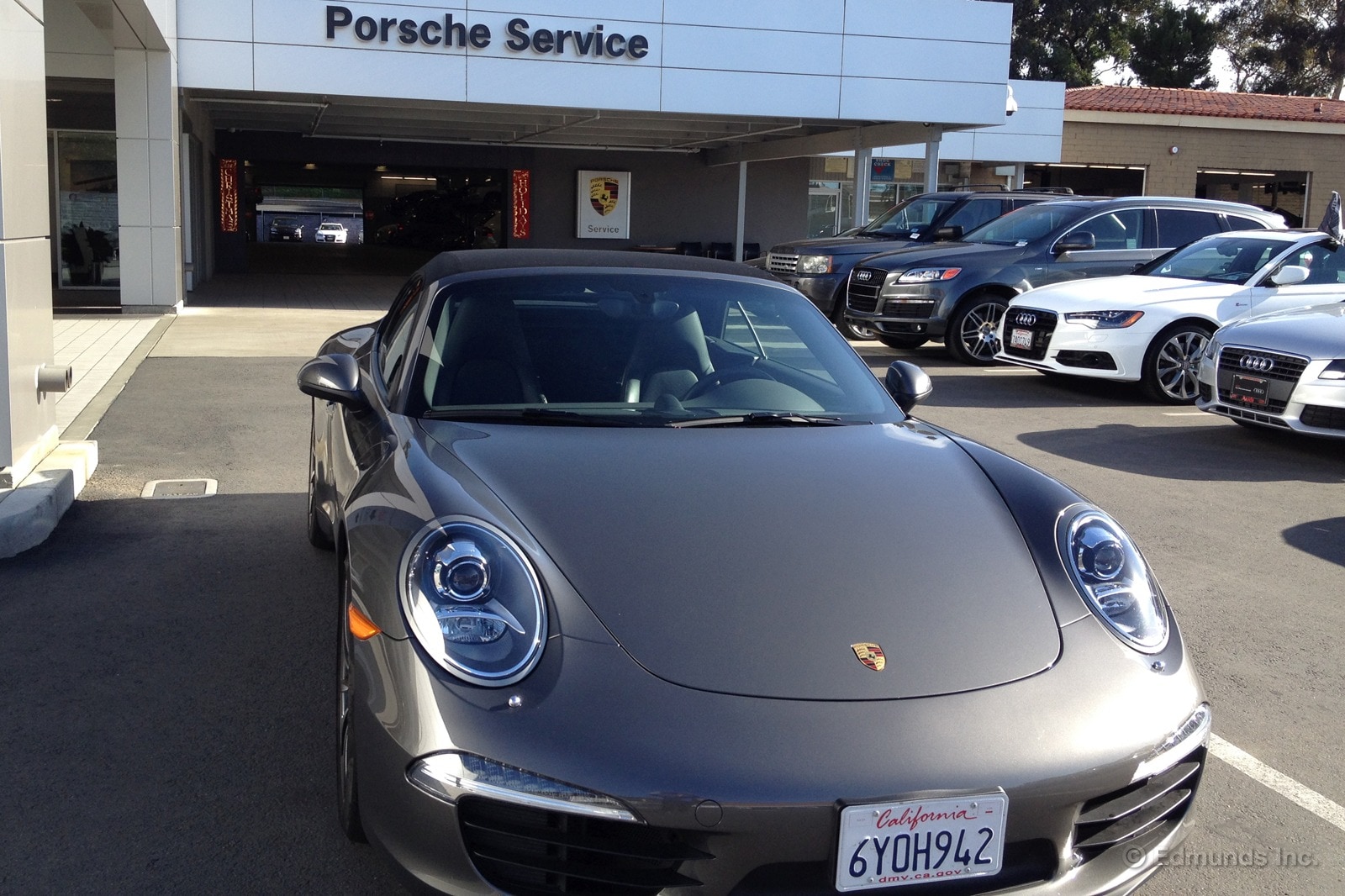
We're coming up on a year in our 2013 Porsche 911 Carrera Cabriolet, and we ticked over the 20,000-mile mark recently. That meant it was time for the 20,000-mile "Intermediate" maintenance visit. I took the car to the Newport Beach dealership from whence we bought it. Now, after Beverly Hills, Newport Beach is renowned for its pricey ways, but here's why I decided to go there.
There are three Porsche dealerships within a 20-mile radius of where I live. The closest is very small, and while the service team is great, you need to schedule your maintenance and repair visits well in advance. Loaner cars are nearly impossible to get there. Another store has a bigger service department, but in this case, the dealer couldn't supply a loaner car. So Newport Beach Auto Center it was. The service department is huge, and Rick, the excellent service advisor, said a loaner would be no problem.

This might be an intermediate service, but the price estimate was advanced: $874. In addition to an oil change and the usual system checks, this service also calls for a new air filter ($23) and cabin air filter ($90). If you're going to buy a Porsche, don't forget to budget for upkeep.
Luckily, there's a 2009 Porsche 911 residing in my garage at home, also purchased from the dealership, and we found a recent dealership coupon that our 911 didn't need. It offered some significant savings, and although it was a few days past its expiration date, the dealership honored it, which was great.
The loaner turned out to be a damned nice Audi A6. I had no complaints about that. Though, as Rick noted, it can't beat a 911 for fun.
Just about five hours after I dropped the car off, Rick called to say it was ready to roll. Post-couponing, labor cost $385 and parts were $291.
Total Cost (after applying $200 in coupon savings, plus tax): $696.21
Total Time: 4hr45
Days Out of Service: 0
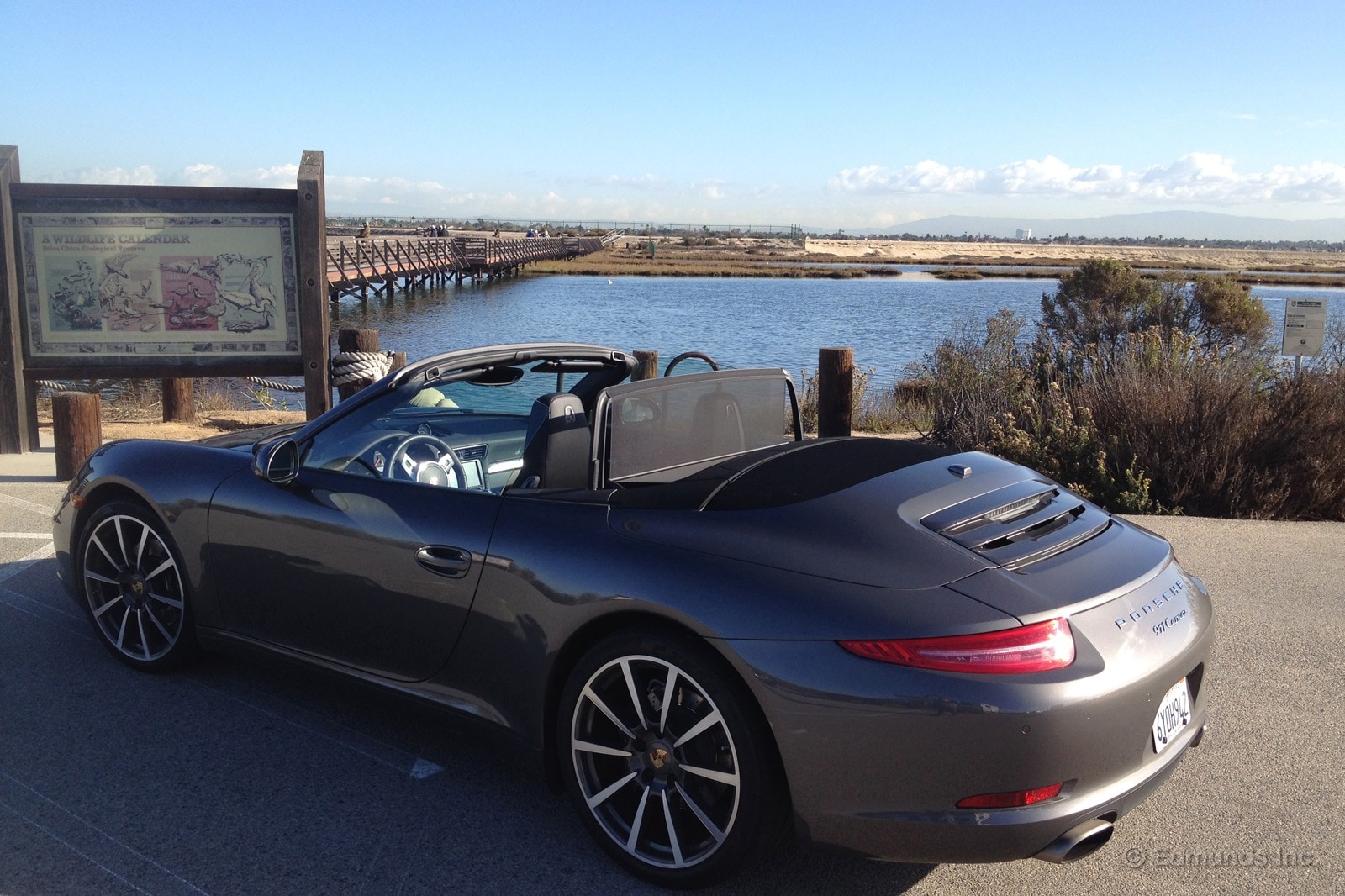
I'm a wuss when it comes to the cold but I come by it honestly: I'm a native Californian, and I break out sweaters when the temperature drops below 70.
We had a "cold" snap recently, which meant the morning temperature was in the mid-to-high 40s, but sunny and beautiful. For a freeway-avoiding drive from Orange County to Long Beach, I took down the top on our 2013 Porsche 911 Carrera Cabriolet, engaged the electrically powered wind deflector and cranked up the heater and seat heaters. I like how little time the cabriolet operation takes: 2 seconds for the deflector to rise.
Thanks to the windows-up position and the wind deflector, it was a deliciously cozy drive. I felt little eddies of fresh, cool air slip into the cabin. I could hear bits of conversation from bicyclists that I passed. I smelled air, sea, trees and coffee as I wended my way north on Pacific Coast Highway. Heavenly.
Now I'd be willing to try top-down driving at even lower temperatures. I noticed, however, that Porsche warns against operating the cabriolet top at temperatures below 32 degrees. I gather below-freezing temperatures play havoc with the top and its mechanisms.
If you have a convertible, how low does the temperature have to go (on a non-rainy/snowy) day before you put the top up?
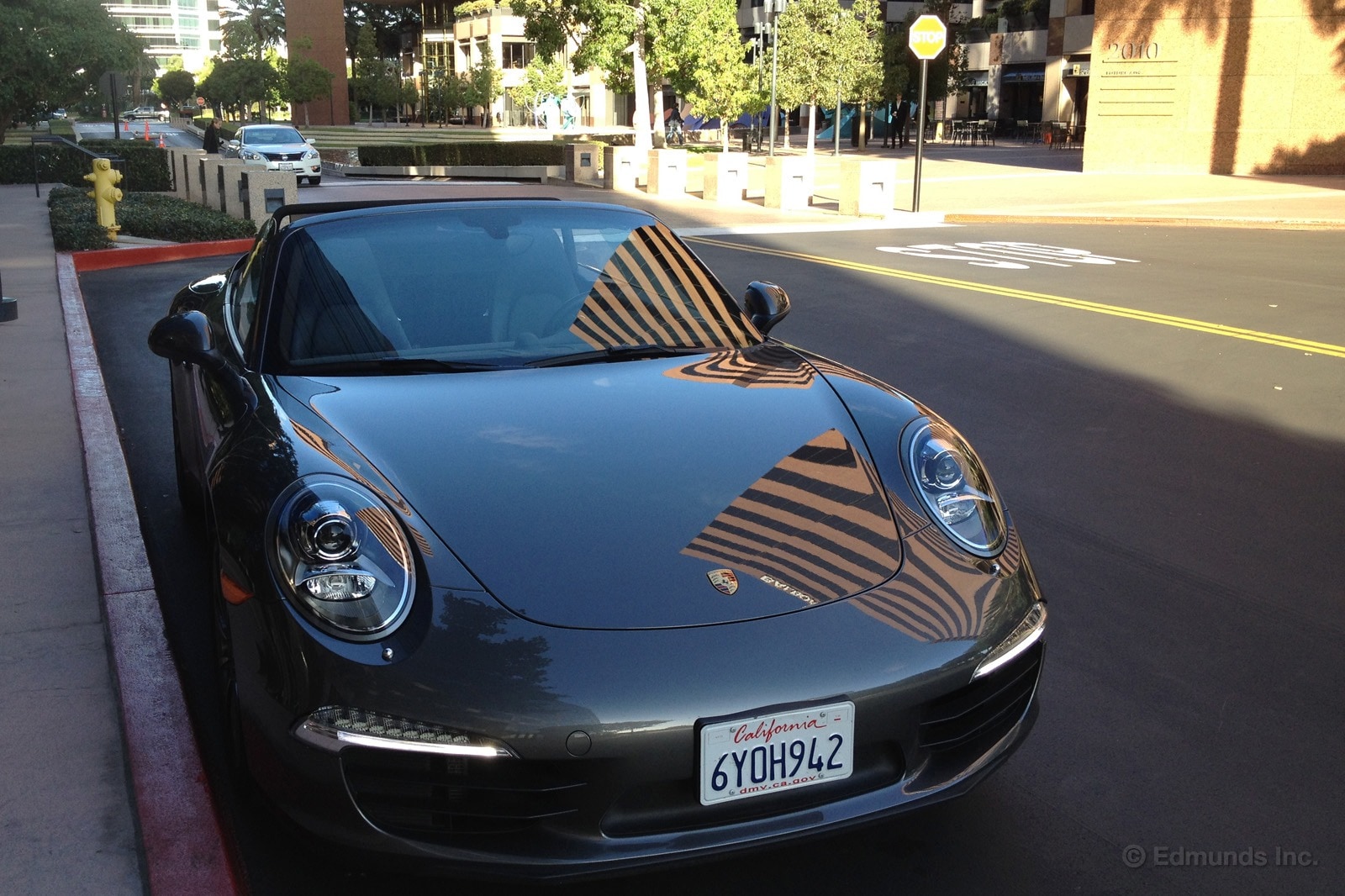
Could our 2013 Porsche 911 Carrera Cabriolet be a workable daily driver? After driving it for four days in a variety of circumstances, I give it a qualified yes.
In terms of drivability, comfort and fun, no problem — obviously. But it's not an all-arounder. I seldom have to tote people around, so the limited backseat doesn't bother me. But there are times when you need to bring home stuff: a sound bar for your entertainment system, a humungous amount of groceries or a set of Fuchs wheels. These things are just not going to fit in the frunk or backseat, no matter what.
I'd say that the 2013 Porsche 911 Carrera Cabriolet is just like Sex Panther cologne: 60 percent of the time, it works every time.
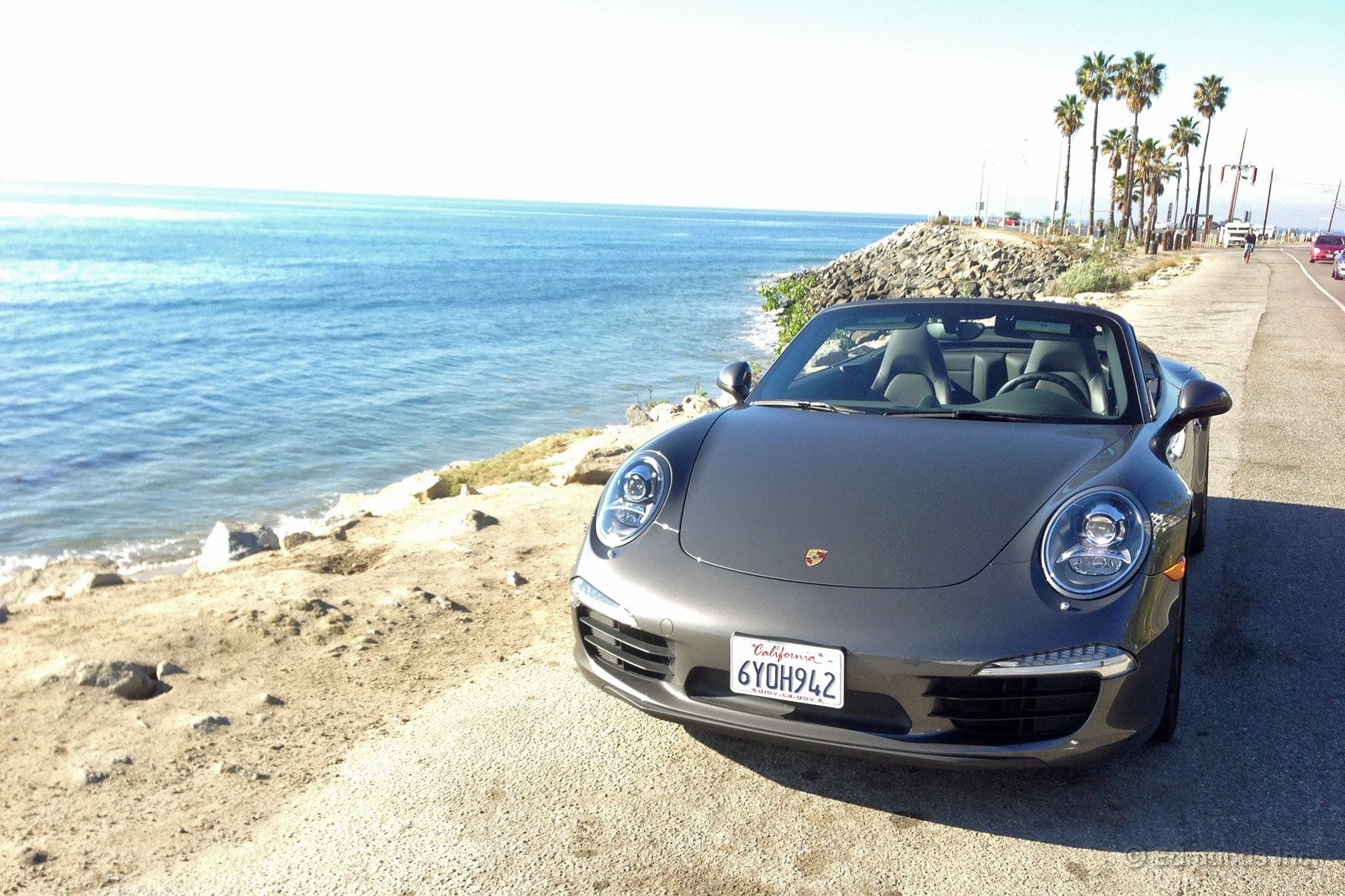
I have patiently waited 359 and a half days to drive the long-term 2013 Porsche 911 Cabriolet, but who's counting? I wasn't a fan of the last 911 I drove, but this one was far more modern. Would it be worth the wait?
Yes, though I didn't think so initially. I took the 911 home around 5:30 p.m., which put me right in the heart of rush hour traffic. The top was down and I could smell the fumes from the other cars and from the 911's own engine. I also turned on the stop-start function to conserve fuel. I drove a mile and promptly turned it back off.
The stop-start was way too harsh for my tastes. I'm guessing other editors felt the same too, since it was in the off position when I found it. The whole car shudders when it shuts off and is about as smooth as someone manually stopping and starting the car with the key.
The next morning, however, was a completely different experience. It was a cool, yet sunny day. I put the top down, windscreen up and dialed the climate control to 80 degrees. I took the long way into work, which took me down Topanga Canyon in the San Fernando Valley, and ends up at Pacific Coast Highway.
I turned on sport mode, which made the car far more responsive than the default setting. As I cruised down Topanga, a Prius passed on my right and cut in front of me.
"I'm not going fast enough," I said to myself. But then I saw another sign that said "Share the road." And given that I wasn't in a real hurry, I did just that.
While I never really blasted through the canyons, traffic flowed enough to get a feel for the acceleration and hear the engine roar (sport mode will help with that). That was good enough for me.
There are few cars that I'd consider taking the long way to work, the 2013 Porsche 911 Cabriolet is one of them. It was definitely worth the wait.
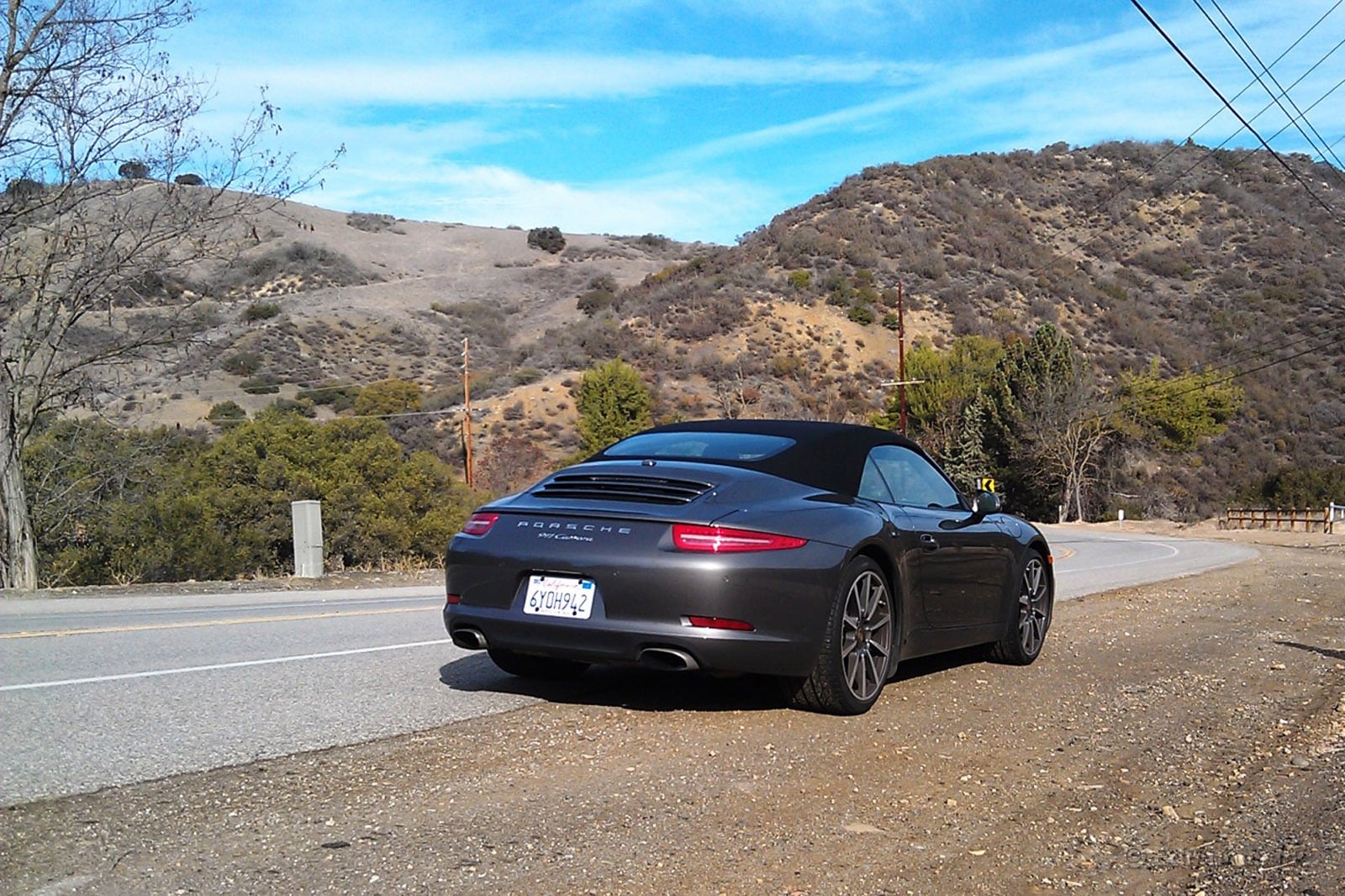
We recently took our 2013 Porsche 911 in for its 20,000-mile service. After the service, however, we noticed that the tires were aired up (at 39 psi front / 46 psi rear) to beyond max spec. We don't recall entering the 911 in a fuel economy contest or wanting to see how it handled the slalom with contact patches the size of silver dollars, so we checked into this.
This happened before, as Mr. Magrath previously observed. As he noted, not only did the service tech pump 'em up higher than the specs shown in the standard door jamb location, but even those official numbers (36 front / 44 rear) are too high. Those specs are for a fully laden car that will be driven occasionally at top speed. Well, the first scenario is very rare, given the 911's tiny rear seats. And the second is essentially impossible, given traffic, safety concerns and, oh yeah, speed limits.
The additional yellow sticker seen next to the white one advises that "For better driving comfort, the tire pressures in the owner's manual may be used." So for our needs (and likely 99.9 percent of U.S. 911 owners), we again selected Comfort Pressure/Part Load, which dictates 31 psi front / 34 psi rear. Even at those settings, the 911 has no problem making quick, enjoyable work of winding roads like those we enjoyed recently.
Looks like Porsche's service departments need to learn to RTFM.
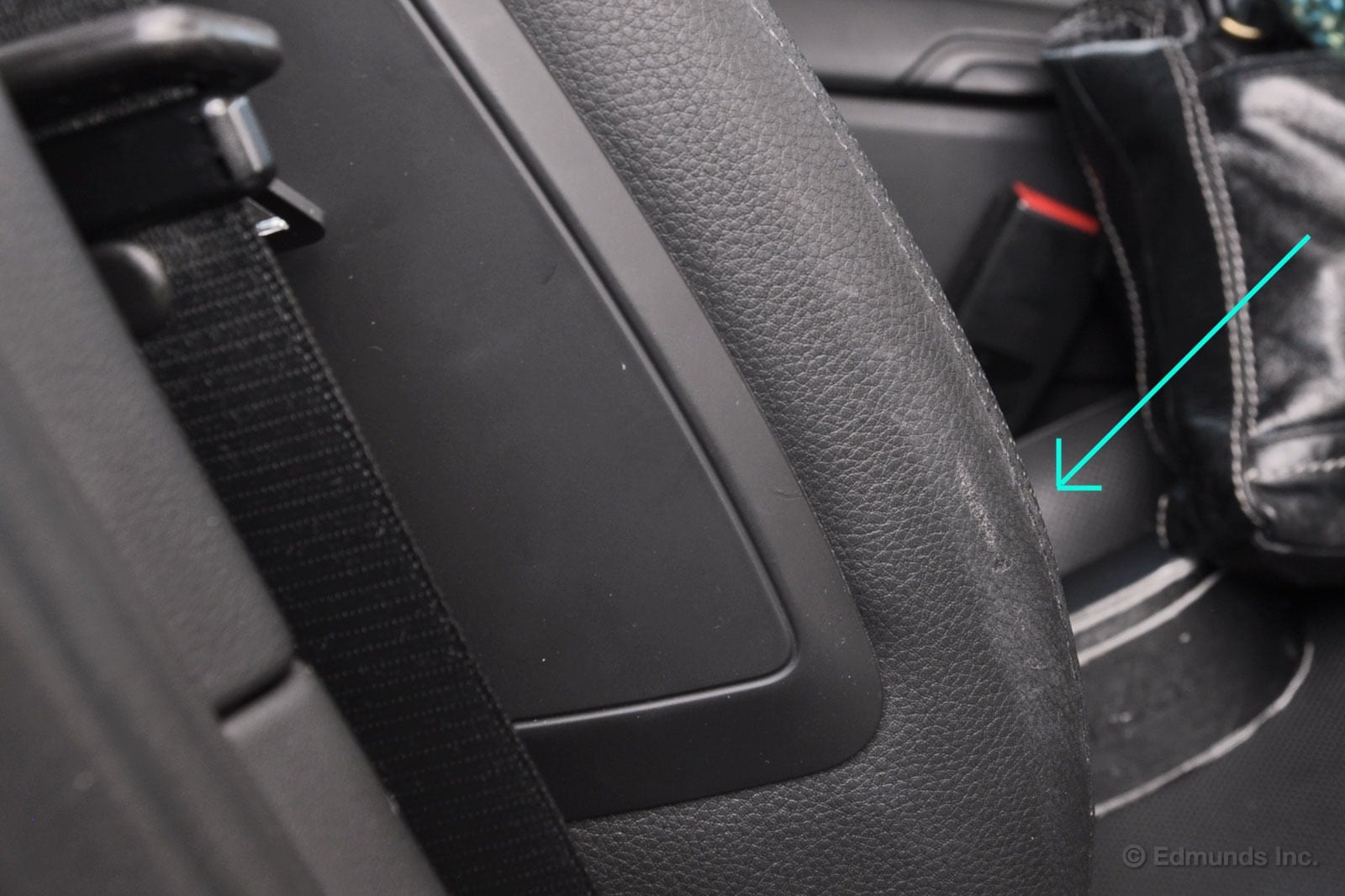
Getting comfortable in our long-term 2013 Porsche 911 Carrera Cabriolet takes no time at all. Last spring I drove the car from Los Angeles to New York, so I know exactly how I like the seat.
Many miles have gone by since then, but the Porsche's interior looks the same with one exception. The leather lateral bolsters on the seat-back cushion are showing some wear. And oddly the outboard bolster on the passenger-side seat is significantly more worn than the one on the driver seat. In fact, I think a little leather conditioner would eradicate most signs of wear on the driver-seat bolster.

I don't know how to explain this. It's the opposite of how our two-seat long-termers usually wear. The only thing I can think of is that the driver of this 911 (and any 911) knows he's in a position of privilege (because he gets to drive a 911) and takes more care when getting into the car.
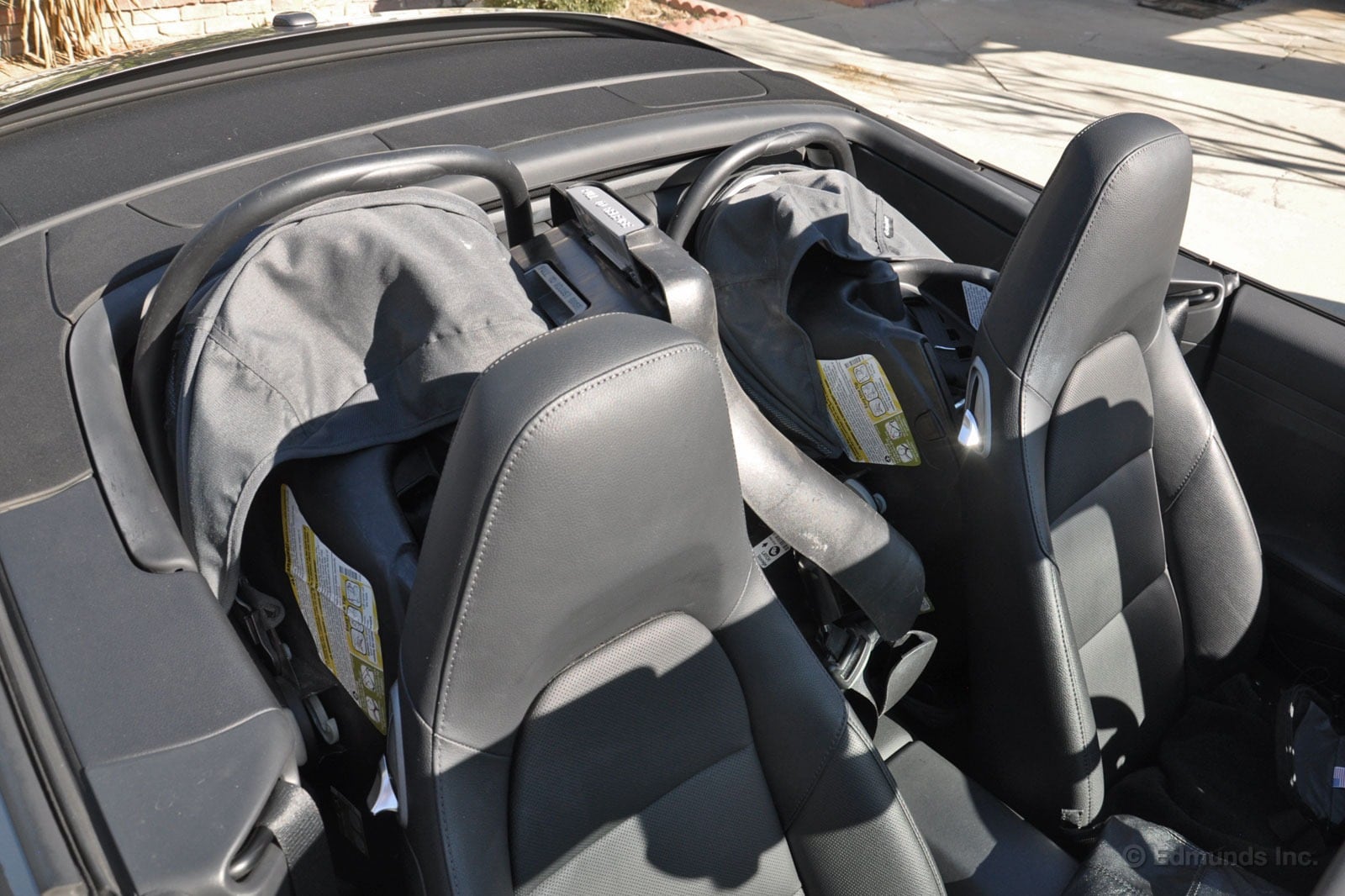
Although I generally agree with Carroll's sentiments about our 2013 Porsche 911's limited abilities as a cargo hauler, I was determined to make our cabriolet work for a couple of kid-related errands I had planned over the weekend.
See, a friend and I went halfsies on a pair of pre-owned (but in good condition and still very safe) rear-facing infant seats. I also got three car-seat bases out of the deal, which is very useful given how many cars my husband and I have between us. My friend figured we'd use her Accord to haul the seats away.
"No, no," I insisted. "They'll fit in the Porsche. I just need to lower the top."
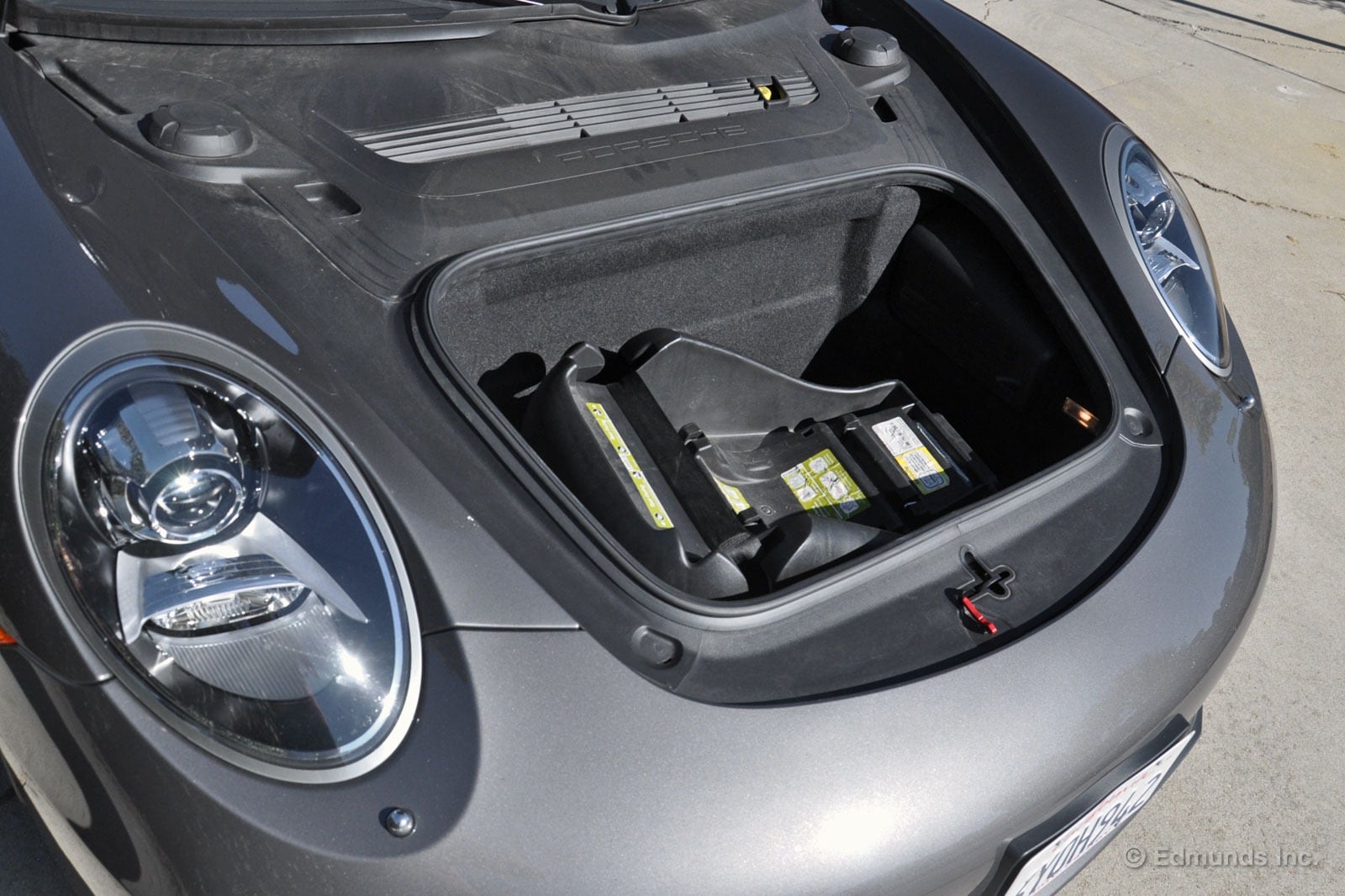
And so they did. The two car seats fit in back with one car-seat base in-between them, and we were still able to lower the top for closed-top motoring. Three more bases went into the 911's frunk.
Eh, so we had to move the seats up a little to accommodate this arrangement. Driving a 911 in minor discomfort is still better than not driving one at all. Steering response was still just as immediate, and the engine note was still just as glorious with a few revs.
A couple days later, I bought a pre-owned stroller to go with my pre-owned infant seat. Again, I lowered the top and placed it in the backseat. This time I didn't have to scoot the driver seat forward. And sure enough, the top still closed just fine.

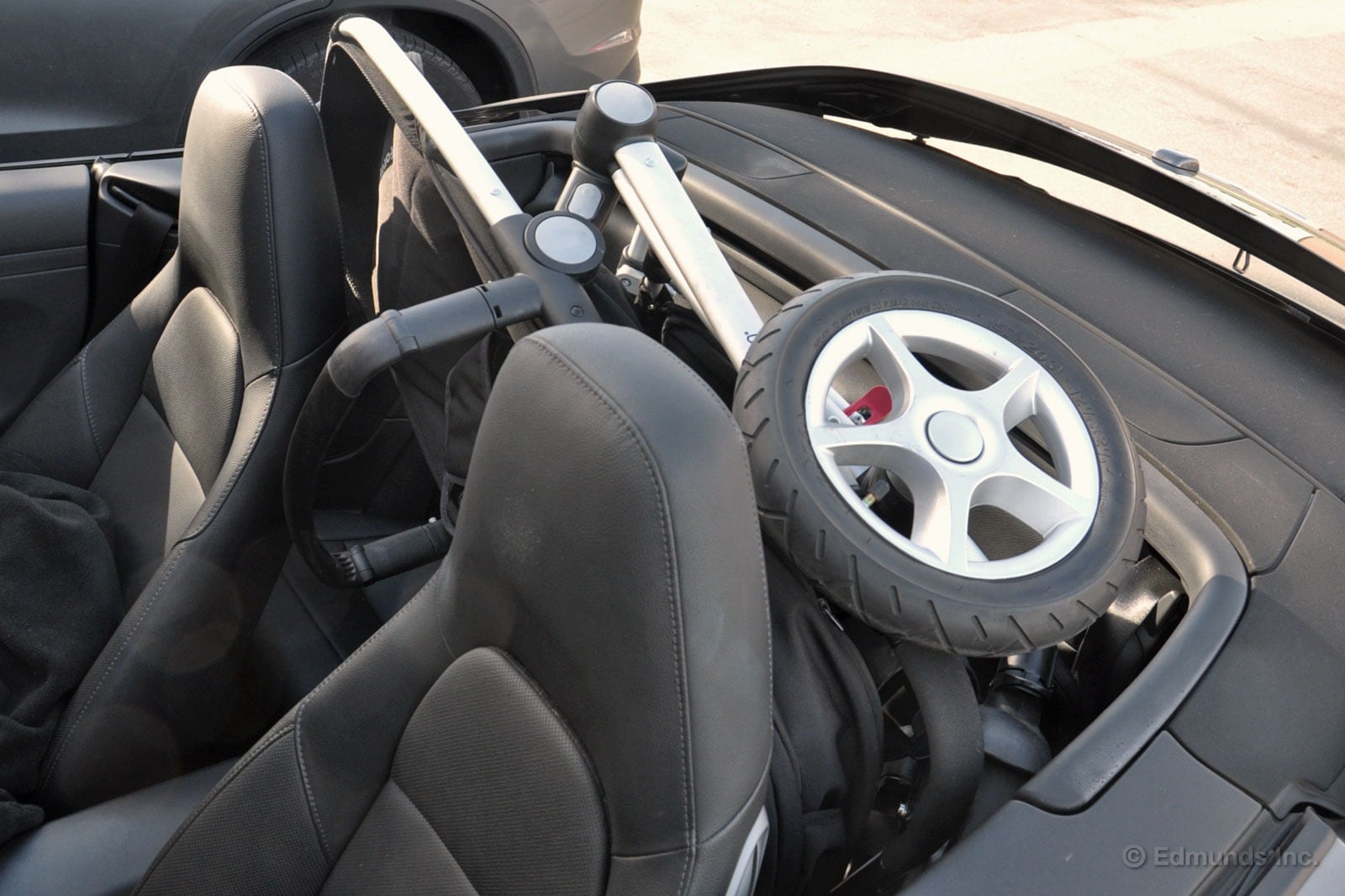
So when push comes to shove, our 2013 Porsche 911 Carrera Cabriolet does offer some utility. Then again, if I'd wanted to install the rear-facing infant seat and put a real baby in it, well, then I would have had a problem.

Sad to say, I spend much more drive-time commuting compared to driving. What's the difference? In Los Angeles, about 35 mph. While commuting to the office, I rarely hit speeds above 30 mph. It takes a 5:30 a.m. departure from my house to even near the 65-mph freeway limit.
For that reason, I left the house at 5:15 a.m. this morning. You see, our 2013 Porsche 911 will be leaving us soon, and I wanted to make sure I actually "drove" it one last time.
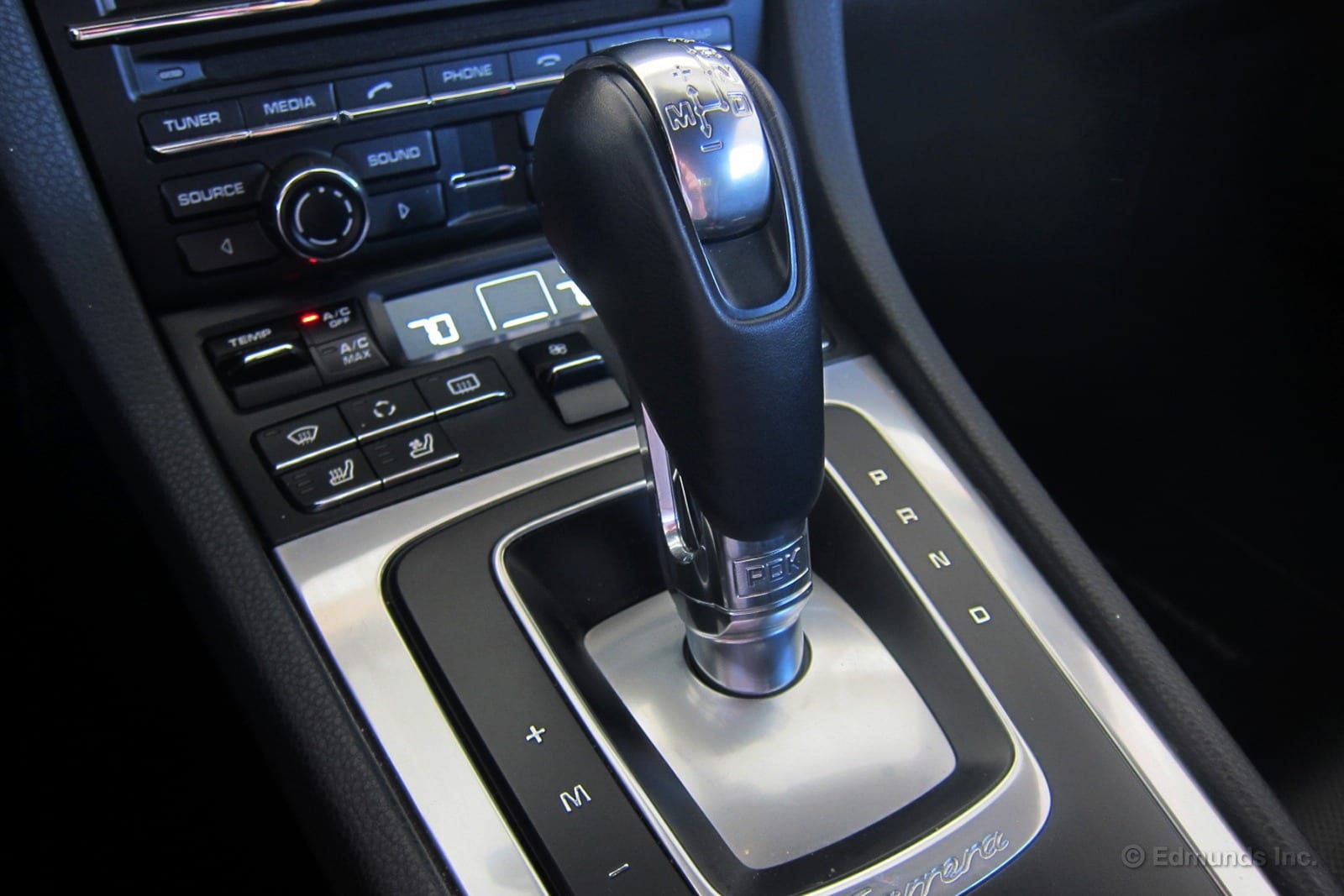
I admit, I sorta mock other publications when they occasionally sound the alarm for the endangered manual transmission. "Save the Manuals," they exclaim, with a cute graphic and some melancholy rumination about the slow death of the three-pedal box. Mercedes and Google will have us in autonomous cars within 10 years. These quaint protests are sweeping the tide with a broom.
They have a point, of course. I'm even willing to sign on to a national referendum that requires certain automakers to offer specific models with a manual in perpetuity. If our country is indeed headed toward socialism, as many breathless, agitated minds believe, than I say this is an acceptable use of government power. The GT500, Corvette, M3/M4, and Miata, for example, should always offer ways for your right hand and left foot to collaborate.
But if we are in fact on the MT deathwatch, then Porsche's PDK is a fine solution. The paddles are great in heavy traffic. Grabbing a solid metal flap with a few fingertips is sometimes all the effort you're willing to muster when lurching along at 10 mph. But when the road is open, I prefer the shifter. For its function, the 911's stalk feels superb, a short, taut upward flick of the palm or downward finger-snap, met with nice, weighted resistance. I can imagine Porsche engineers obsessing over the damping force, one that you rarely find in almost any automatic with manual control. Most move with a hollow, empty click with indistinct range of motion.
Not the 911's. Jefferson would have approved, I'm certain.
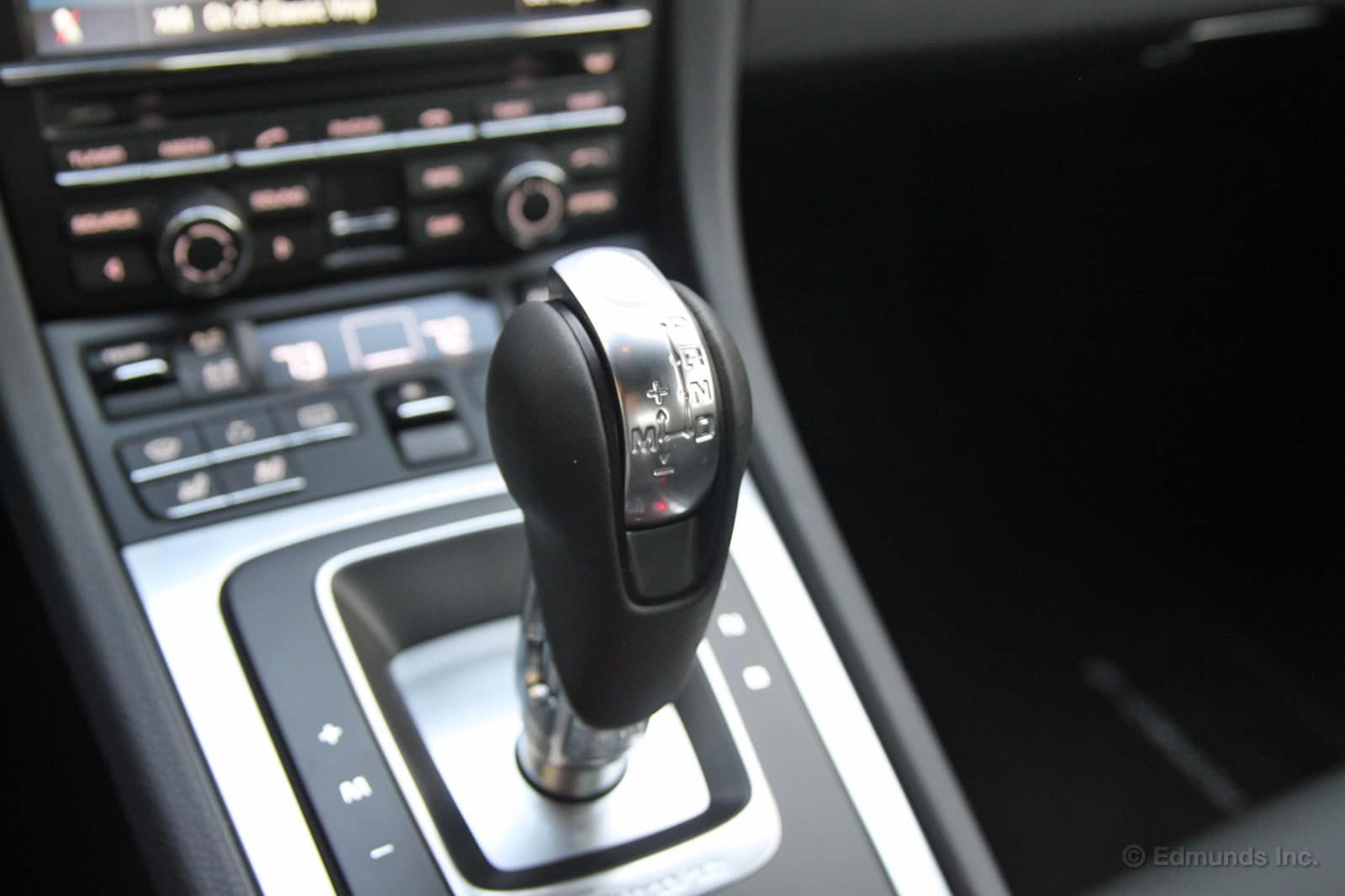
I've written before about how our 2013 Porsche 911's automatic "PDK" transmission is one of the best ever built. And after over 20,000 miles it still serves up incredibly quick shifts that are always perfectly timed.
But it's not without its issues. Recently I've noticed that it seems to be getting a little clunky at slower speeds. And by slower speeds I mean parking lot speeds, roughly 5-10 mph. There are occasional "thunks" from the gearbox that remind me of our long-term Nissan GT-R. That car also had a double-clutch automatic gearbox, but it was clunky from the start.
Our 911 merely feels like it has loosened up just a bit, something you only notice when it's trying to slip the clutch during a three-point turn. The rest of the time it's business as usual.

As our 2013 Porsche 911 long-term test nears its end, the miles are still racking up nicely. We added about 2,000 ticks to the odometer with a variety of driving. Our overall mileage number bumped up slightly to 21.1 miles per gallon which is still well below its EPA estimate for combined driving.
Once again, the mileage numbers varied greatly. On the low end, we saw a tank that averaged only 16.2 miles per gallon while another tank returned nearly 24 mpg. Needless to say, with Sport mode engaged and twisty roads on the map, it's hard to keep the numbers above 20 mpg. On the highway, however, a light foot will return respectable numbers without much trouble.
Worst Fill MPG: 12.4
Best Fill MPG: 31.4
Average Lifetime MPG: 21.1
EPA MPG Rating (City/Highway Combined): 20/28/23
Best Range: 511.8 miles
Current Odometer: 22,389 mile
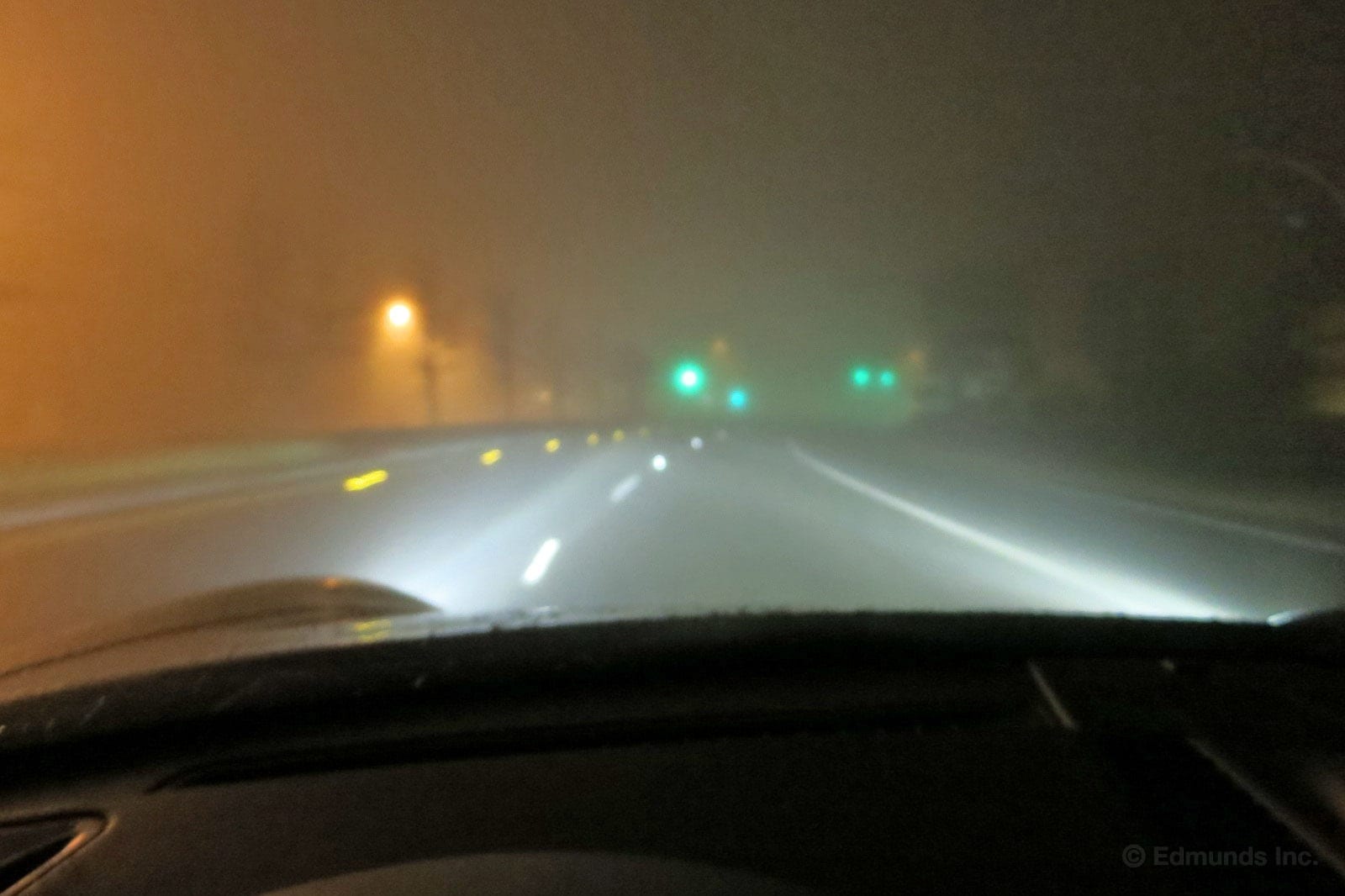
Adaptive headlights, or headlights that move in the direction that you're steering, are often underappreciated. It's easy not to notice them once you've driven a car that has them for a while, you just think it has really great headlights and forget about the fact that they follow your every move.
Driving our 2013 Porsche 911 in the fog the other night reminded me how well they work. Not only because of how well they light the road, or the fog in this case, but how well they synch with your steering motions.
They're not so directly linked that every little movement in the wheel causes them to flutter one way or the other. There's a well-timed delay that smoothes the whole process out. It's probably one reason you forget about them, at least until you drive a car without them and wonder why corners suddenly seem so dark.
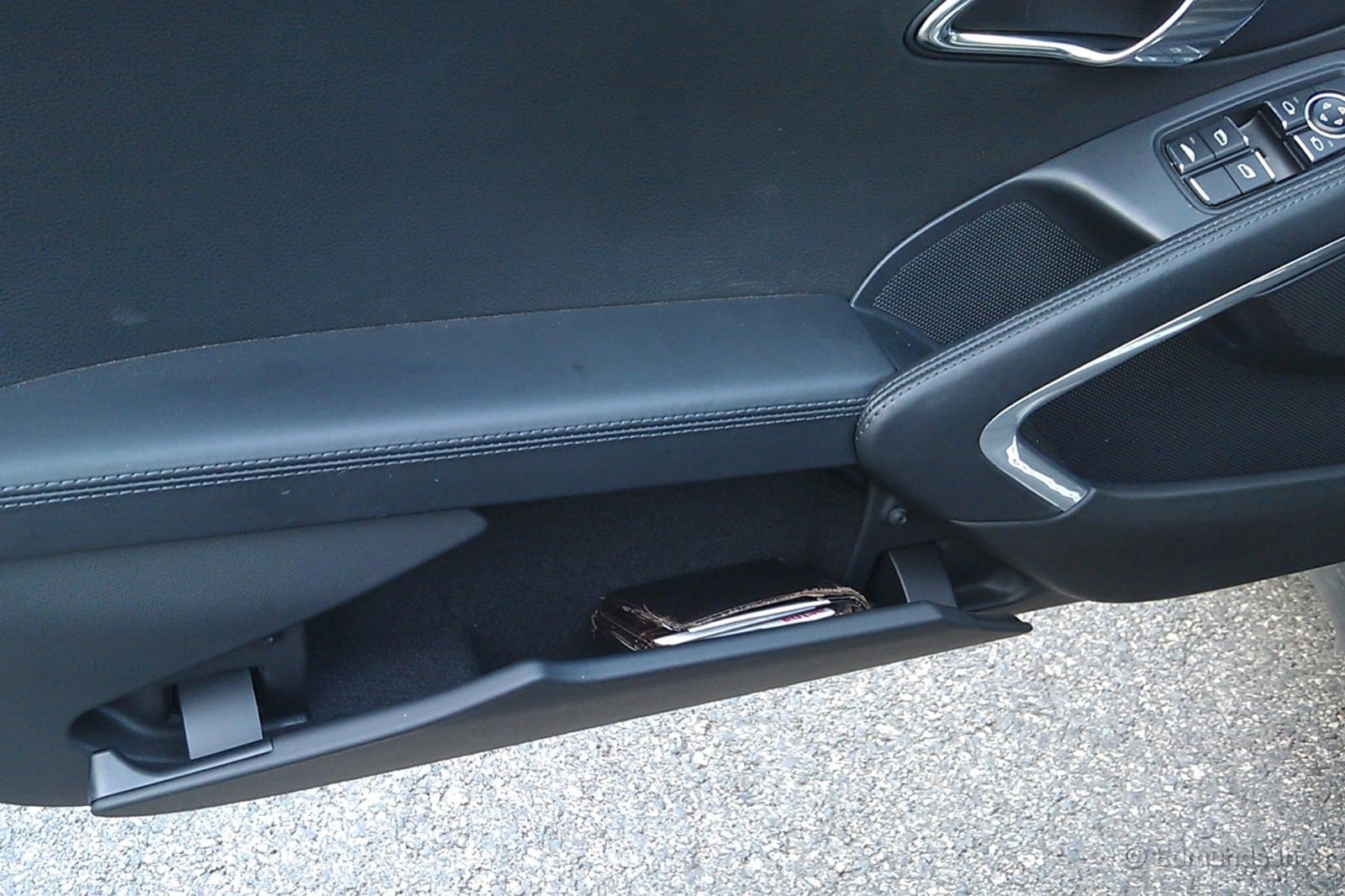
There's not much in the way of stowage compartments in our 2013 Porsche 911. A center console will typically have one or two open cubbies and/or a pair of cupholders. These are usually big enough to securely stash my phone, garage door opener and office garage key card.
The 911's console has no cupholders (they are hidden within the passenger's side of the dash) and has only a small covered compartment along with a tiny open cubby. The former is shallow and not as easily accessed as an open compartment while the latter is suitable for holding a few sticks of Dentyne. All is not lost however...
Thankfully, the 911's door pockets help out in this regard. They're not exactly cavernous, but they easily accommodate all the aforementioned stuff and make it easy to access quickly via the pocket's clever swing-open design.
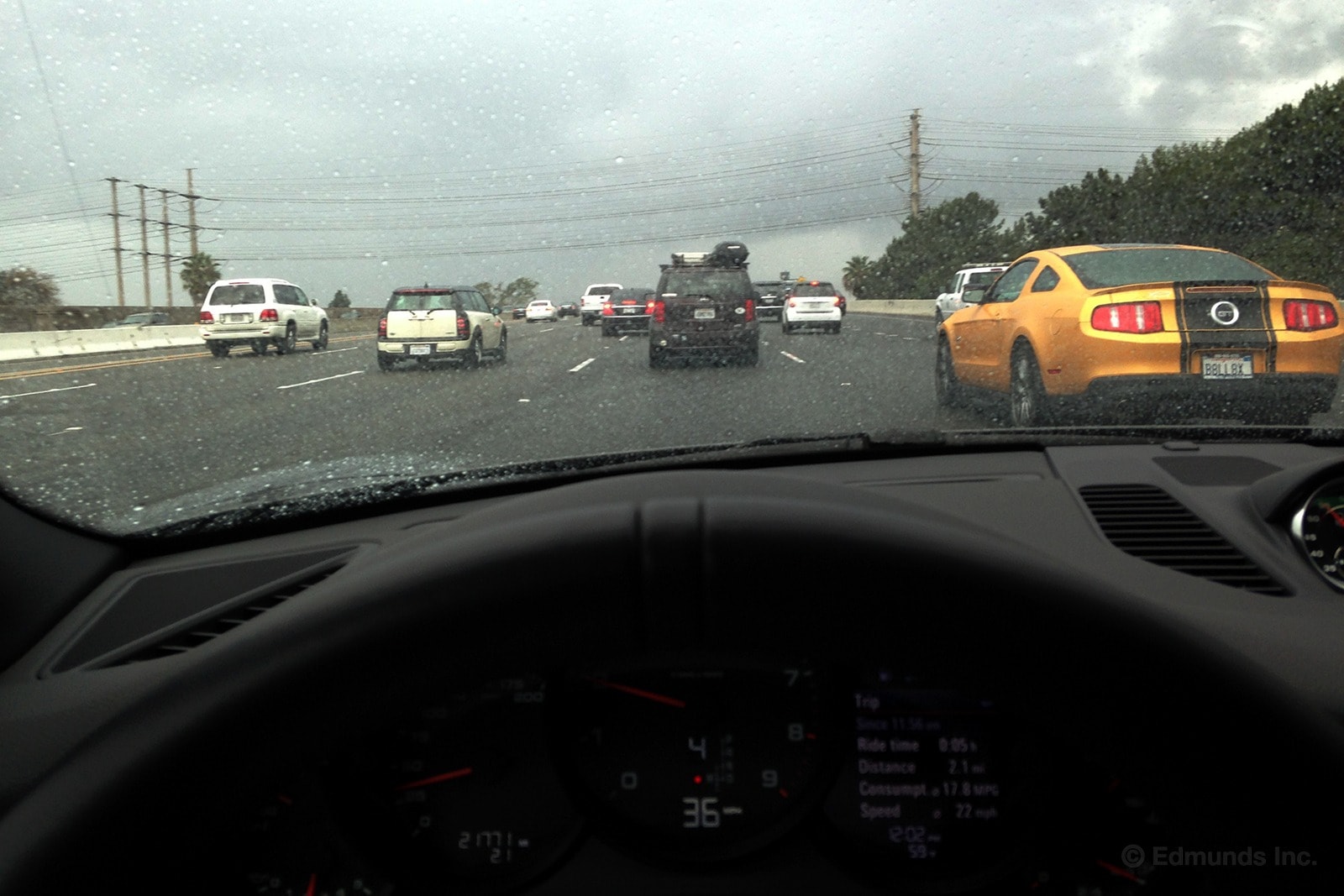
It's the first rule you hear about 911s, right? When the back end starts sliding, resist your instincts and push through it. That back end is the only thing propelling you forward. It's one thing to initiate rear-wheel drift, quite another when it's unexpected. So in the few times I drove our former 1985 Porsche 911 in the rain, I'd always remember the story of my father's friend, who long ago stuffed his late-1970s 911 into the guardrail of a freeway transition on a wet day.
Said friend was a great Porsche fan but a novice driver. You've heard slight variations on this story before. He carried too much speed into the left-hander transition ramp, felt the rear end start to slide and couldn't fight his instincts. An off-throttle steering over-correction spun the car around tail-end into the barrier.
He was OK, although his pride was shattered, standing there on the side of the freeway behind a Porsche 911 write-off. That story made me just a little more alert when driving the Black Plague. No such worries in our 2013 Porsche 911 Carrera, though. I mean, I wouldn't take it full wood around that same transition on a morning like this, pictured above. This 911 can still embarrass you.
Then again, this car feels so solid, so weighted, so balanced — even in the path of an 18-wheeler's wake — that you're in more danger of embarrassing yourself on a day like this, not listening to your instincts.
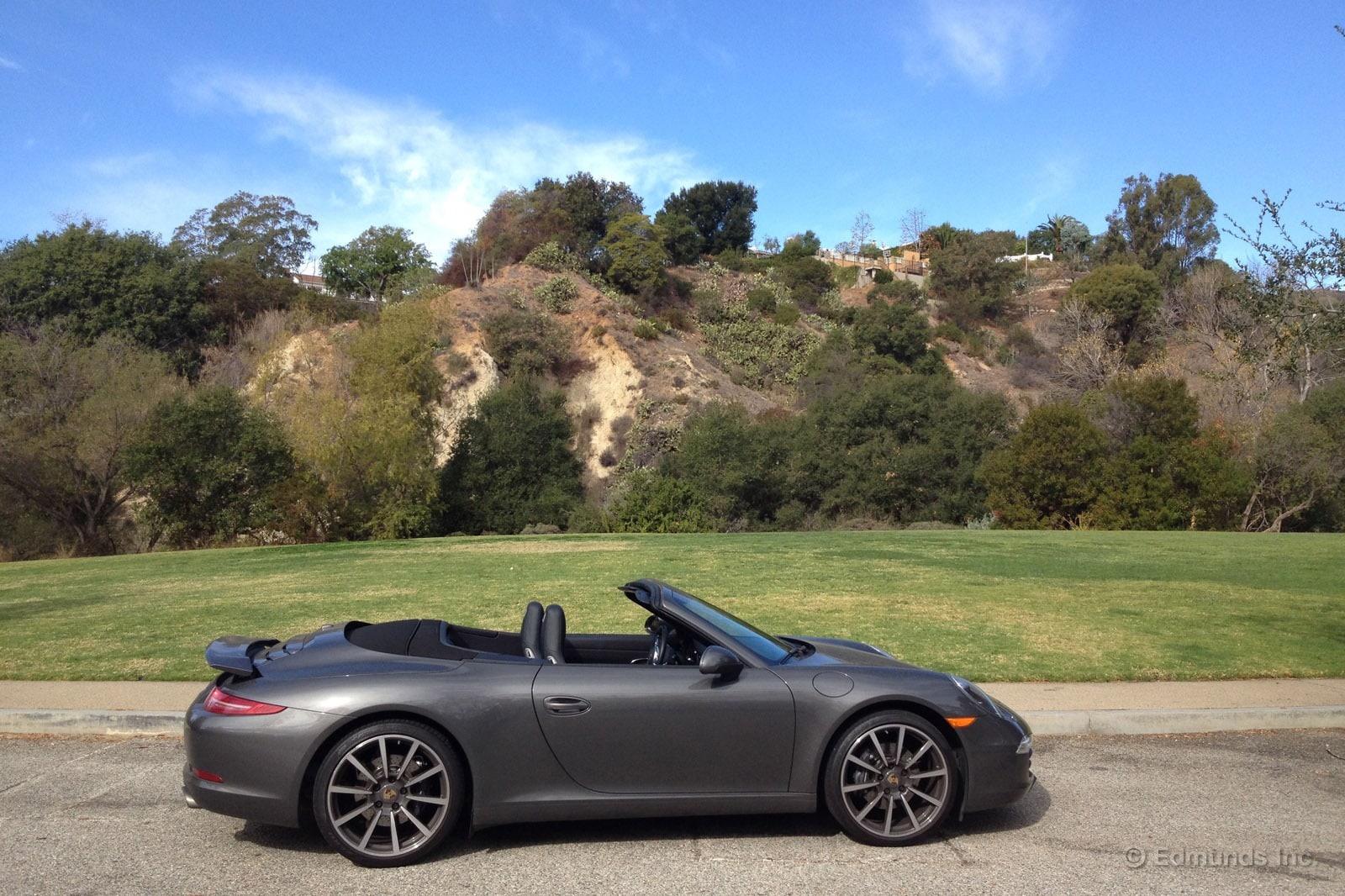
I had driven our 2013 Porsche 911 Cabriolet once before. Well, "driven" isn't the most accurate description of the experience. More like, "moved the car 10 feet to another parking spot." I don't think my feet even touched the accelerator. But, with the car's retirement date fast approaching, I knew I wouldn't get another shot. This is the story of how I got lost on the way to the gas station and ambled up and down Pacific Coast Highway one lazy morning in January.
It started, as my travels with the Edmunds cars often do, with a certain amount of dignified pleading and begging to take the 911 out for one last jaunt before it departs forever. On its last day, the car arrived a bit dirty from a once-in-six-months California rain shower, with the gas needle hovering in the danger zone. Remedying these complications almost seemed too much for any one person to overcome, but I bravely volunteered to give it a shot. I did some research into local fueling stations and selected one several miles away on PCH, but only because it had a good Yelp review.
The 911 Cab has a hilariously small rear window, so the soft top had to go down. Seat warmers and the heater would have to battle the frigid 63-degree air at the coast. With the air deflector deployed and shifter set in manual mode, it was time to go.
There are many things about the 911 that impressed me almost immediately. The electrically assisted steering is pleasantly heavy. If I wanted something light and effort-free, I'd go back to our Hyundai Santa Fe. Although the suspension is appropriate for a sports car, the varying degrees of road quality never upset the Porsche to the point where I felt uncomfortable sitting in it. There's also no cowl shake to speak of, but that's to be expected of a car in this price range. The sport buckets hug you and don't let go, like that person you knew in high school who wanted to be more than "just friends."
Although I prefer rowing through the transmission gears myself in a car like this, Porsche's PDK dual-clutch transmission is a perfectly acceptable alternative. In normal and Sport modes, gear changes at low rpm are barely perceptible. Under heavy acceleration, or in Sport Plus mode, gear changes are more dynamic but still completely painless. On recommendation from Consumer Advice Editor Ron Montoya, I left the gearbox in manual and the comfort settings pinned in Sport.
The thrust of the 3.4-liter flat-6 is intoxicating, as is the accompanying wail from the pair of oval exhaust pipes in the rear. The car sounds especially good in the tunnel that marks the beginning of the 10 freeway in Santa Monica. Or just north on Highway 1, with the engine's snarls rebounding off the sheer rock walls opposite the Pacific Ocean.
The accelerator pulls in your right foot as if it were caught in a tractor beam. There's just enough resistance to it, like it's asking you whether you are absolutely sure you want to press it closer to the floor. "Of course I do. Why is my pedal second-guessing my decisions?" you will ask yourself insanely. The manual shifter, likewise, has considerable heft. Between the steering, accelerator, and shifter, everything that makes this car move forces you to act with purpose. No car I've ever driven demands more attention from the driver, and it's an absolutely beautiful thing to partake in.
Two hours passed like an instant, and the Porsche 911 was all fueled up and sparkling clean. I glumly relinquished the keys upon my return, but I am thrilled I was able to take it for a spin before it abandons us. I am about to leave for the night in my own car, but I feel compelled to grab the Porsche keys and flee into the Mexican desert for the rest of my days.
I could learn Spanish. I already know adios.
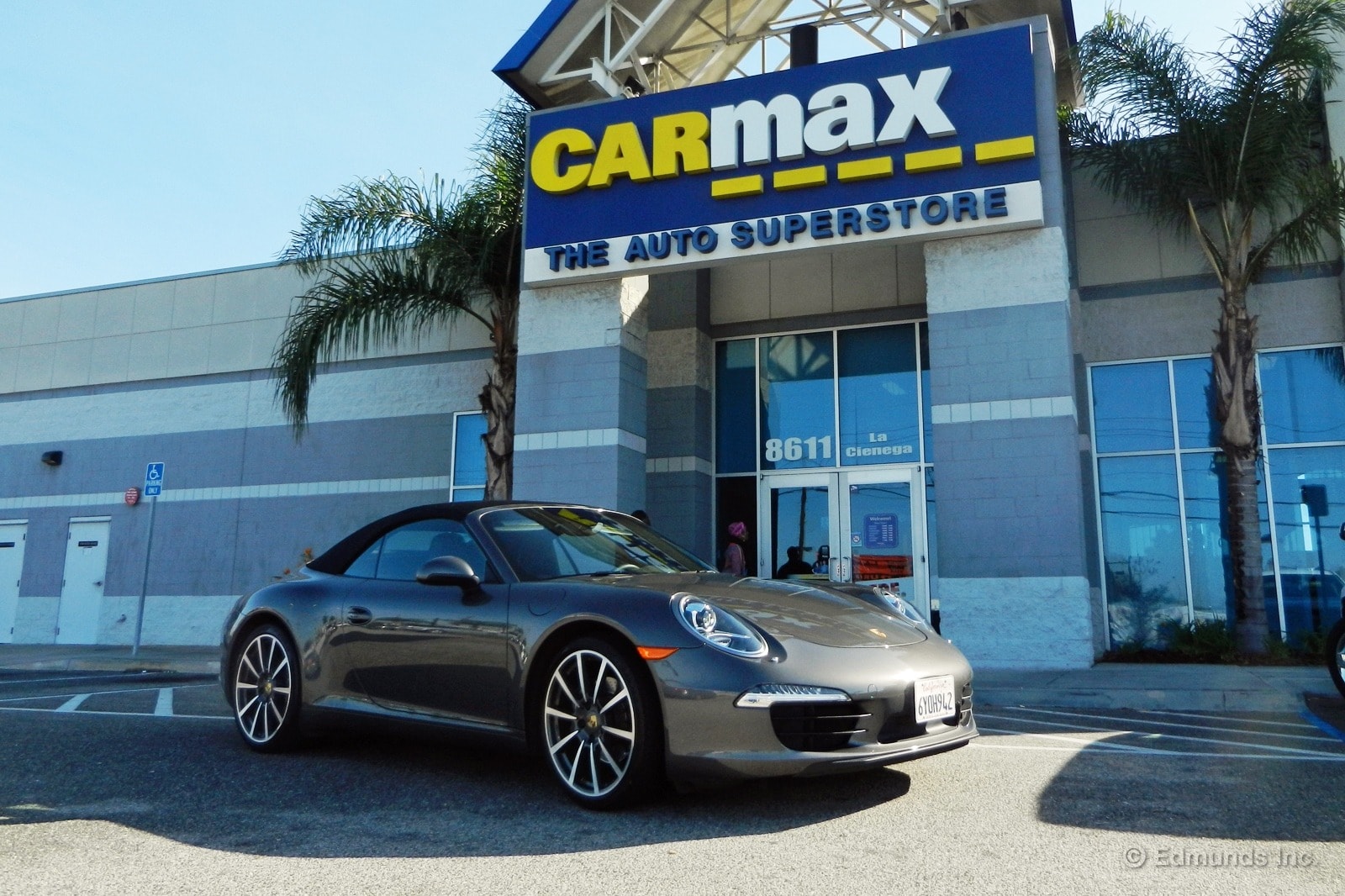
Our long-term 2013 Porsche 911 Carrera Cabriolet never sat parked in our garage for big stretches of time. It was one of the most popular vehicles we've had around here and deservedly so. That's great for us, but when it comes to selling the car, not so much.
I took the 911 to CarMax for an appraisal the other day, filled with confidence for the price it would fetch. After all, it's a Porsche 911. These things keep their value like a champ, right? But now it seems I might have drunk some Porsche owner's Kool-Aid, or should I say sparkling wine?
"I had three customers trade in their Porsches for Telsa Model S's this past weekend," said Carlos, the appraiser at CarMax. He remembered them all: a 911 Turbo, a Panamera and a Cayenne.
I told Carlos we already had a Model S, so he wasn't too far off in terms of owner preferences, I suppose. I asked him if cabriolets had more value than coupes. He said yes, but only slightly more. So far so good.
"This one may take me a bit longer," Carlos said. "If it was an Accord, I'd have an offer for you in 10 minutes." Porsches, with their plethora of options, apparently require more work.
I went over the numbers in my head while I waited. This car had an MSRP of $109,745. We paid $98,048 and it has an Edmunds trade-in TMV of $79,317.
Carlos wasn't kidding. It took at least 30 minutes until the sales rep came out to show me the offer on his computer screen. I was expecting a cool $80,000, but what I saw made my heart sink: $78,000.
Why so low? The right rear wheel was curbed and CarMax factored in the cost of repair. But the biggest culprit was the high miles. We drove nearly double what the average person would put on the car in a year and that took its toll on the depreciation curve.
I later called Porsche of Newport Beach, where we bought the car, to get a second opinion. "How much you looking to get for it?" the used-car manager asked.
I told him I wanted to get more than the $78,000 that CarMax offered me. He ran it up the chain of command and called back that evening. "We're going to pass on this one," he said. "Those miles are too high. You should take the CarMax offer."
Rather than do that, however, we're going to try our luck on AutoTrader. I'll be taking an ad out in a few days. Edmunds private party TMV is $82,740. I'm going to test the waters with an asking price of $83,000.
Wish me luck, or tell me I'm foolish for not taking the quick cash.
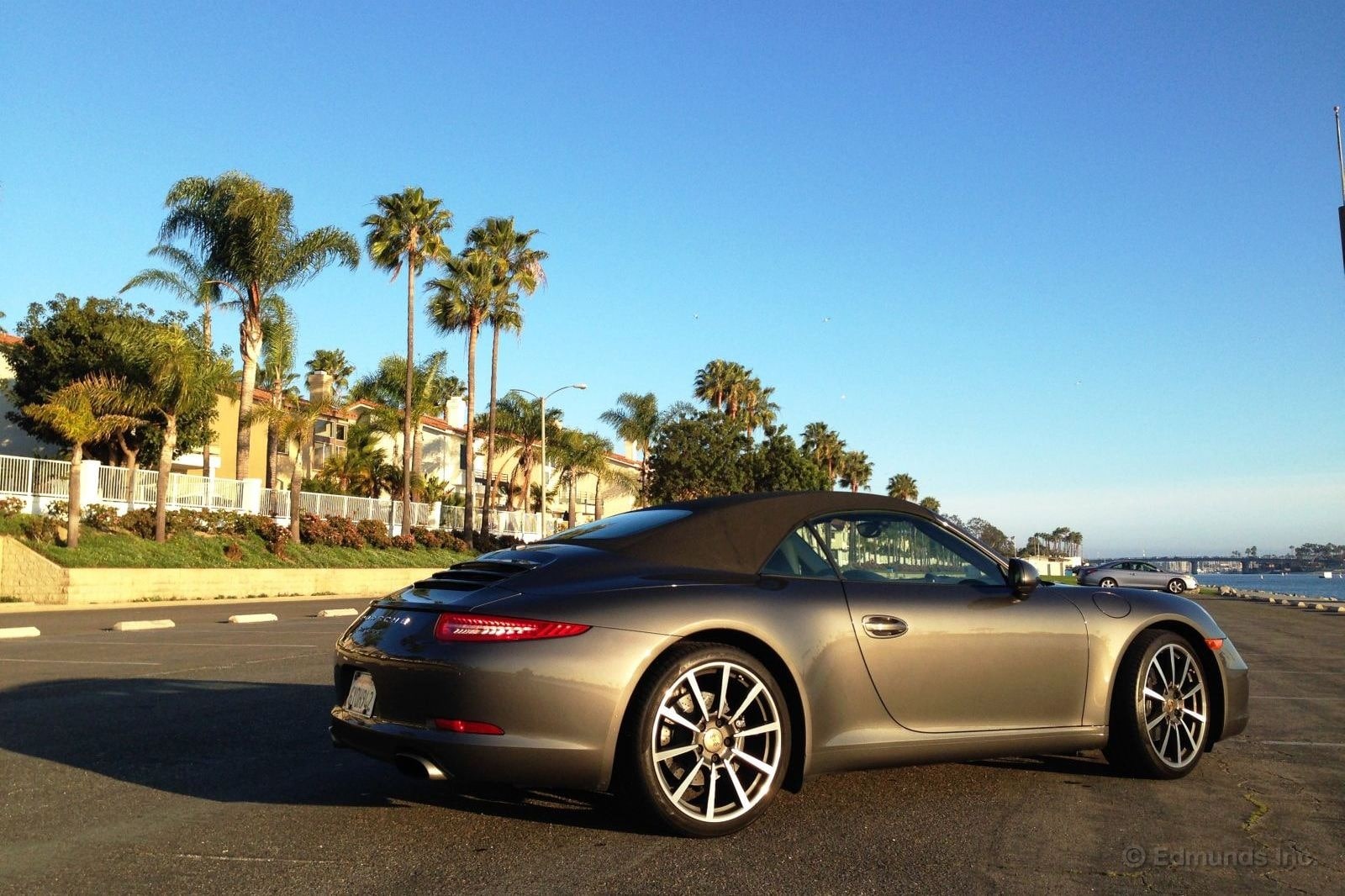
An out-of-state shopper contacted us about the 2013 Porsche 911 Carrera and asked if we would take it in for a pre-purchase inspection. No problem, we said. If you're considering spending $83K for a used car, it's a good idea to give it a thorough inspection by an expert. We told the shopper to set up an appointment and we would take the car to the dealership.
Unfortunately, it turned out to be a bit more involved. Three dealerships turned down our shopper's request. Finally, Circle Porsche in Long Beach, agreed to do the inspection. Here's what they found.
We dropped the Porsche off and left it overnight. When we went to pick it up, we were a little surprised to find that we couldn't get a copy of the report. The shopper paid $400 for the inspection, so it was up to him to share the results with us if he wanted to.
However, Alberto Garcia, Circle Porsche brand ambassador told us, "It's a really clean car." He added that their pre-purchase inspection is the same as the 111-point inspection they use when considering whether to include a car in the certified pre-owned car program.
On its Website, Circle Porsche says it is the oldest Porsche dealer in California. It is located at the notorious Long Beach Traffic Circle through which 60,000 cars travel each day. Getting into the dealership is somewhat circuitous, but once there you feel you are in Porsche heaven.

We have had the Porsche 911 up for sale for a while now and four people have contacted us. No solid offers yet but getting a clean inspection report will certainly improve our chances.
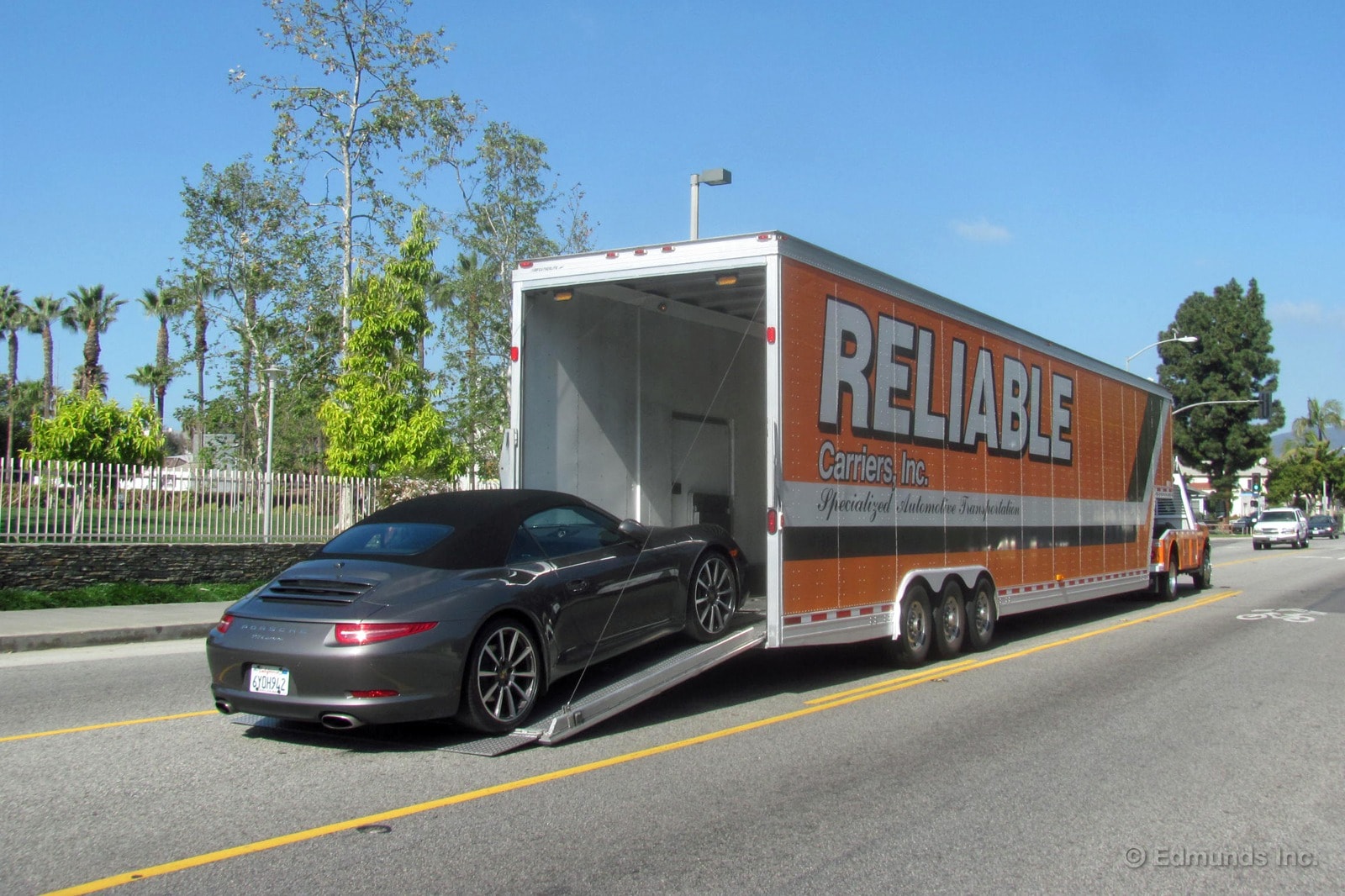
Our long-term 2013 Porsche 911 Carrera Cabriolet has a new owner and is headed to Pittsburgh. Sorry Gslippy and Noburgers, but we didn't go back to CarMax. The buyer, Tom, contacted me on Autotrader and paid to have the pre-purchase inspection that we reported earlier. The 911 earned a clean bill of health, but Tom hadn't yet made an offer. All that remained was agreeing on a price.
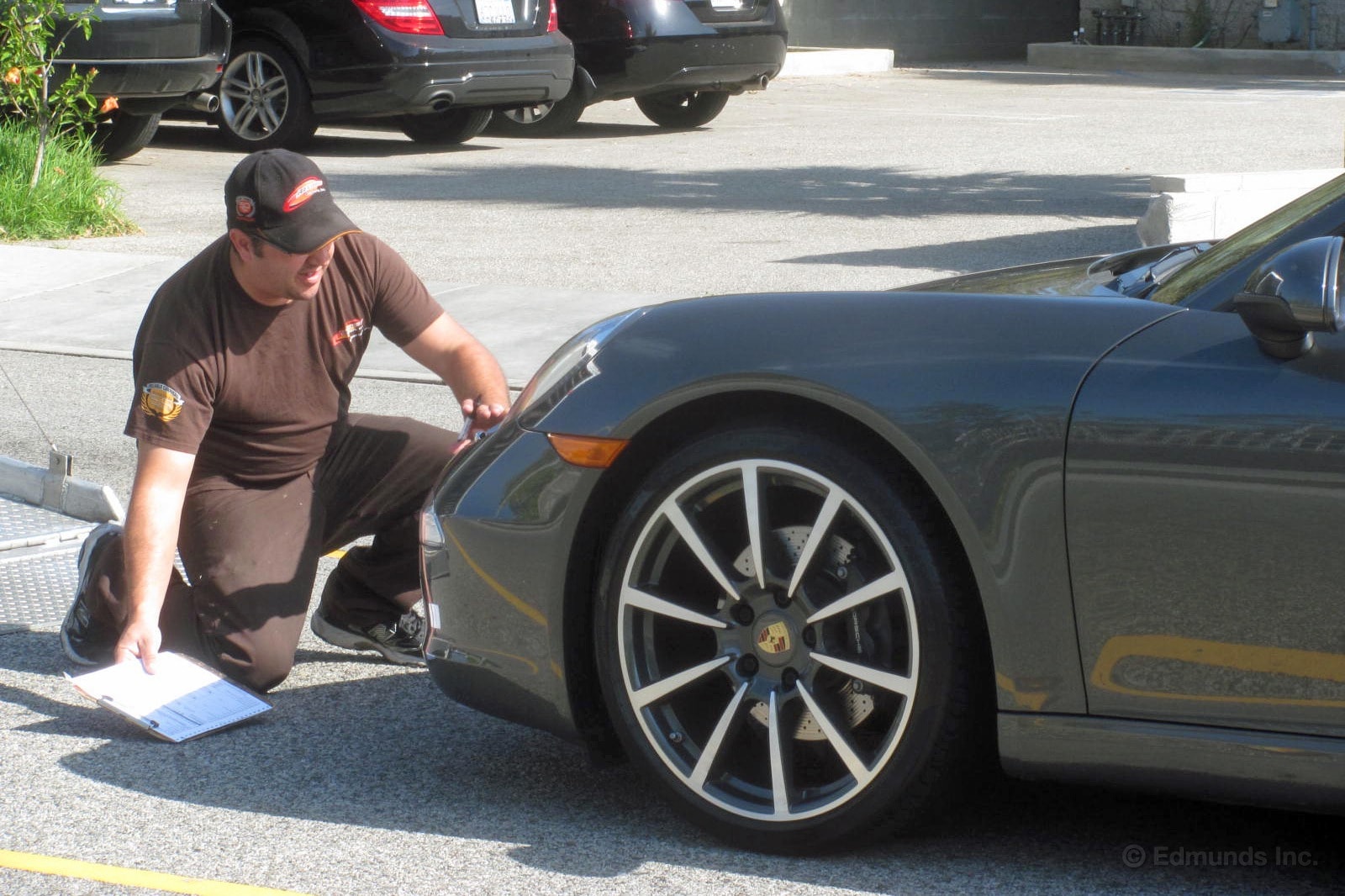

Edmunds trade-in TMV when we took it to CarMax, showed that our car was worth about $82,740. We listed the Porsche 911 on Autotrader for $83,000. While the car was being inspected, I received two offers (one for $80K and another for $81K). I told the other buyers that Tom had paid for the inspection and he deserved the chance to make an offer first. He offered $79,000. I told Tom about the other offers and said that if he could match the $81,000, we'd have a deal. He gave it some thought and agreed on the $81K. For reference, CarMax had offered us $78,000.
Tom wired us the money and made arrangements with Reliable Carriers to transport the vehicle. We got a call from the driver at Reliable about a week later and scheduled a pickup the following day.
Jason, the transport driver, carefully inspected the car and made a note of any dents and dings before it entered the truck. There was a scuff on the front fender and curb rash on one wheel, all items we knew about and had disclosed in the ad. Next he drove it in and had to pull some tight acrobatics to exit the vehicle. "I've been doing this for 10 years so I can pretty much get out of any car," Jason said.
Our Porsche 911 wasn't immediately headed to Pittsburgh, however. It was going to sit in a local warehouse for a couple of days until the carrier company had enough cars to make the trip profitable. It would have cost our buyer an extra $2,000 to have the car delivered immediately, Jason said. The car is expected to arrive in Pittsburgh in the next two to four weeks.
And so our Carrera Cabriolet leaves the Edmunds fleet. I only drove this car a few times, but I loved every minute of it. I'm sure the other editors would agree.
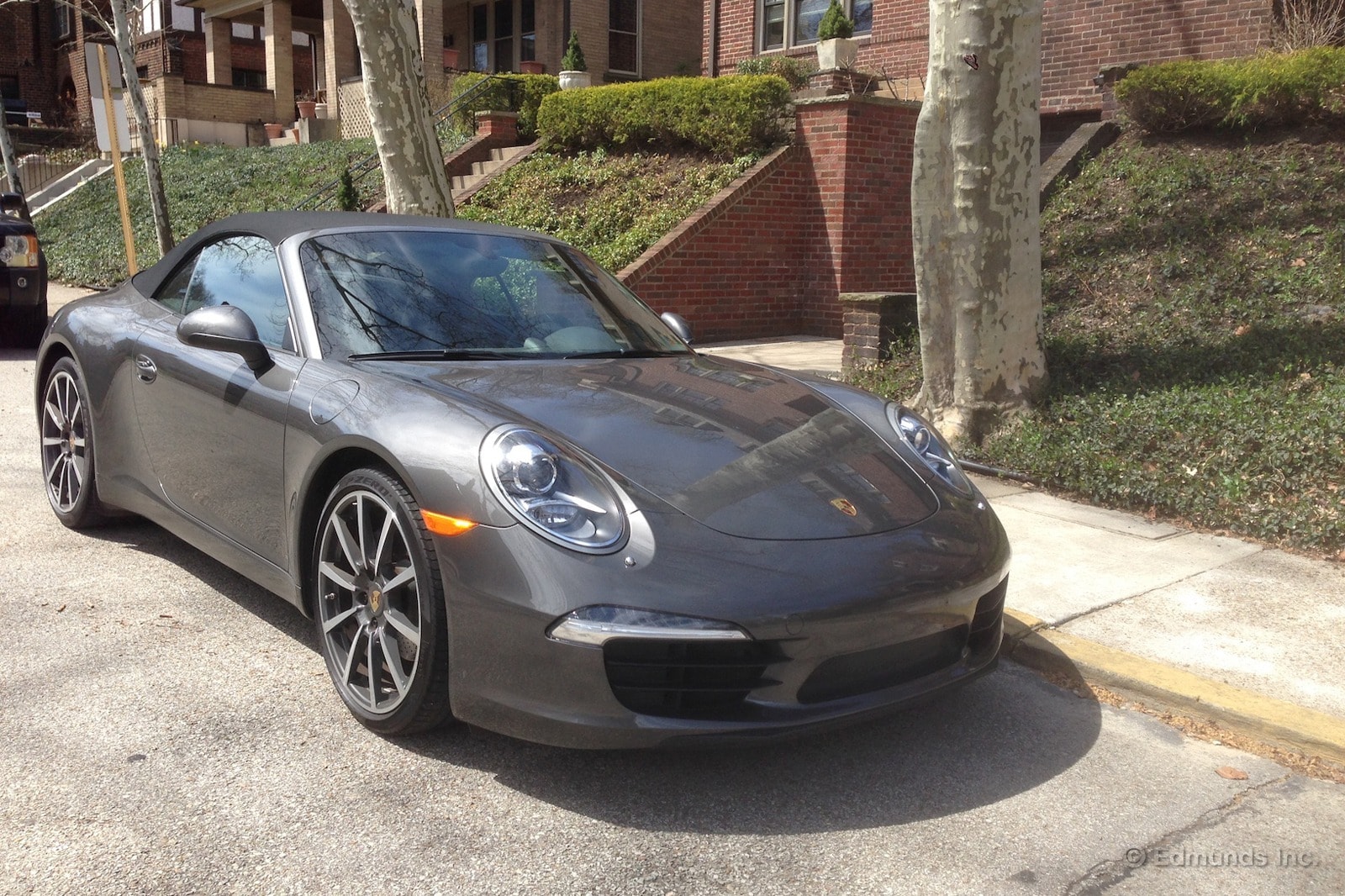
When we last saw our long-term 2013 Porsche 911 Carrera Cabriolet, it was being loaded onto a transport truck. The truck driver told us it would take two to four weeks to reach Pittsburgh, its final destination. Now, about four weeks later, the Porsche 911 has finally arrived.
Here's a note from its new owner, Tom:
"The car finally arrived yesterday. After going through Pennsylvania safety inspection and title work, my dealer washed and vacuumed the car and I took possession last evening. I've attached a photo of the car in front of its new garage. It could not be more different from the Porsche I sold last fall (1988 Targa 3.2L manual) but, boy, is it fun to drive. Thanks for your patience and help with this transaction. If you ever find yourself in Pittsburgh, I'm good for a beer."
I may just take him up on that beer one of these days. We all wish Tom well and hope he loves the car as much as we did.
Wrap-Up
What We Got
Porsche makes it easy to customize your new car. Nearly anything is possible, but it all comes at a price. We wanted a 2013 Porsche 911 for as little money as possible, and we struggled to locate a car to satisfy our wants, yet stay below our mental cap of $100,000.
The base price for a 2013 Porsche 911 was $83,050. But there were must-have features for our ideal version of the new 991 series. First, we wanted the Porsche Doppelkupplung (PDK) seven-speed auto-clutch manual. This was the volume-selling transmission, so it made sense. Our hearts were set on the 400-horsepower 911 S, but the budget guided us to the more affordable, 350-hp, 3.4-liter flat-6 of the base Carrera. We started shopping.

This sale needed to happen before year's end, so there wasn't time to order a car. We utilized the car-buying concierge services of AutoNation Direct. It was soon able to find us a car for the price we wanted. The proposed car had Agate Grey Metallic paint ($710), the Premium package ($2,940), PDK transmission ($4,080), 20-inch Carrera Classic wheels ($2,730) with the Porsche crests ($185), ventilated front seats ($840), satellite radio ($750), the SportDesign steering wheel ($490) and the Sport Chrono package ($2,730). It was as close to what we wanted as was out there. Sticker was $109,745 but we got it down to $98,045 for our 2013 Porsche Carrera Cabriolet with the aforementioned options. The car was delivered the same day on a flatbed trailer. Our test was under way.
Our Impressions
"The harder you drive it the better it feels. Its 3.4-liter flat-6 isn't a torque monster around town, but keep it over 3,500 rpm in the hills and the 911 storms from corner to corner, and with the top down the soundtrack from the rear-mounted motor will give you goose bumps. But it's the Porsche 911's brakes and grip that really impress. Overheating the brakes seems impossible and even rough patches in the pavement don't upset the chassis." — Scott Oldham
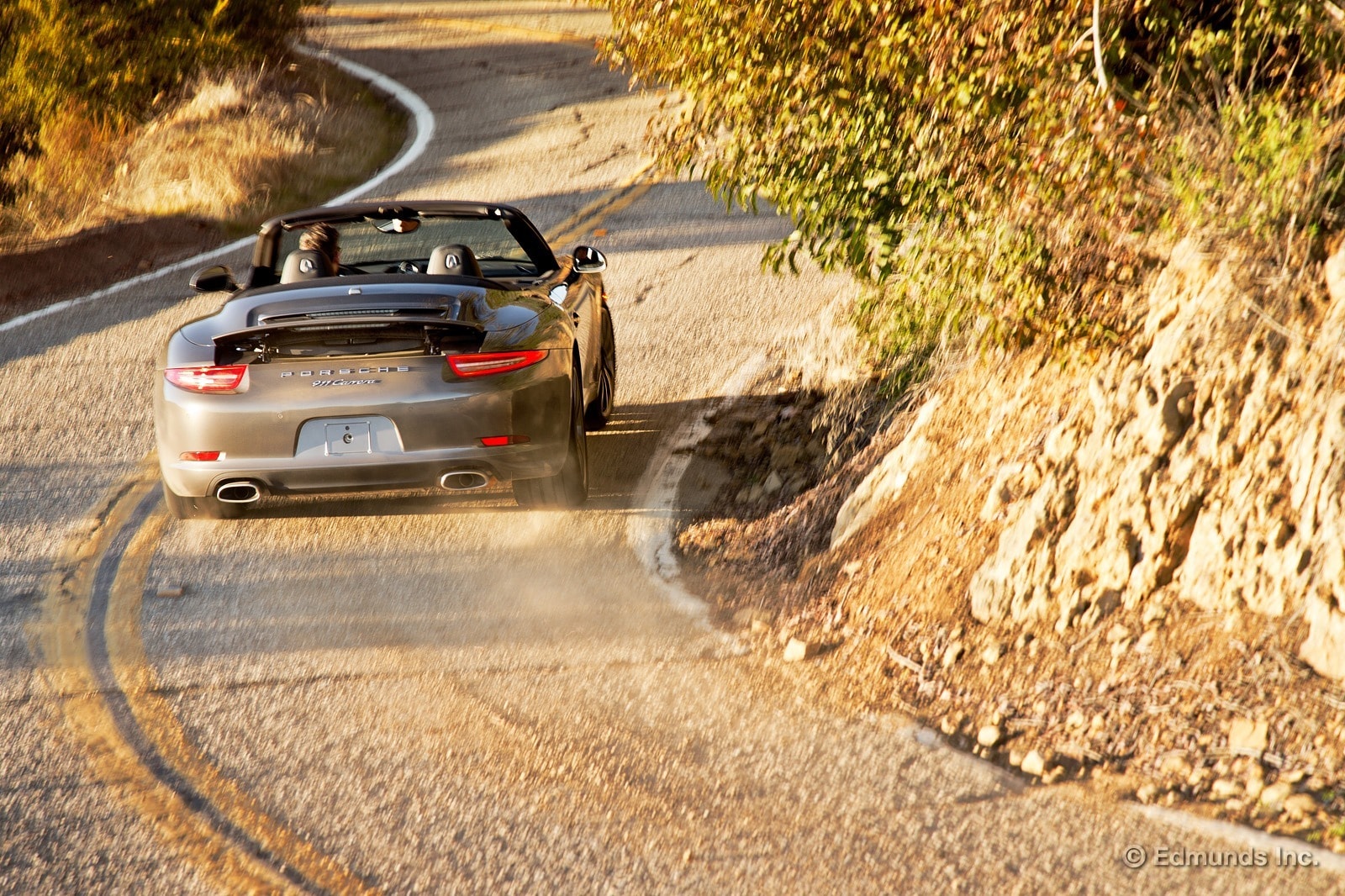
"As much as I'd prefer that our long-term 911 was equipped with the conventional manual gearbox, I have to acknowledge the brilliance of its PDK transmission. It really is the best dual-clutch gearbox in production today. Not only does it shift imperceptibly smoothly, the gearchanges occur in what appears to be no time at all. These characteristics are no surprises, and they're ones we've come to expect from competent, modern dual-clutch gearboxes. Where the PDK stands above the rest is its manners, intuitive programming and quick reflexes. Unlike many other dual-clutch 'boxes, with PDK there's no low-speed nonsense, no clunkiness, and during three-point turns it swaps between 'R' and 'D' and back immediately." — Jason Kavanagh
"There's a layer of snow on the road and it's about 10 degrees Fahrenheit. I turn off my Baseball Tonight podcast and focus on driving well. The 235/40R19 (front) and 285/30R19 (rear) Pirelli Sottozero Series II snow tires we put on prove their worth here. There's plenty of grip, and the only time I need to do any extra steering is when I hit a patch of straight-up ice, which happens a few times.... Overall, though, I feel confident and relaxed, or as relaxed as you can be on a narrow, slippery mountain road where no one would find me for days if I went off." — Erin Riches
"As far as the ride goes, it is on the stiff side. Sure, it's a sports car and all, but I just drove a Corvette ZR1 not too long ago that pulled over 1.0g on the skid pad and delivered a plush ride on the highway, too. Speaking of Corvettes, I noticed that the shape of the seats in our 911 isn't all that different from those found in the current Corvette. Funny then, that the Porsche's seats are supremely comfortable and supportive, while the Chevy's chairs are a blubbery mess. It's all in the details, I guess." — Ed Hellwig
"One thing I haven't disclosed yet is that I dislike our 911 convertible's driver seat. The seatback is nicely contoured and very supportive, but no matter how I adjust the seat-bottom cushion, I can't go more than two hours without getting uncomfortable. Using cruise control helps a little but not enough." — Erin Riches
"This past weekend my family used our 911 more like a minivan than a supercar...to the Honda Center in Anaheim to see How To Train Your Dragon...to my daughter's basketball game, out for fro-yo, to the pet food store, to the movies, to Home Depot and, wait for it, to Staples for some new printer ink cartridges. Turns out my daughters (age nine and seven) fit snugly in the Porsche's backseat. And it turns out that every other mom and dad at the basketball game wishes they too had a 911 Cabriolet. No shock there. In the sea of crossovers, SUVs and minivans, the 911 stood out like Kate Upton at an Oldham family reunion." — Scott Oldham
"As I was pulling into the airport I started questioning how smart a choice the 911 convertible was. And how much luggage my mom would have. Turned out it wasn't a problem at all. I flipped down the two rear seatbacks to form a shelf for her large checked suitcase. And put her trumpet bag (she's a professional musician in her spare time) and backpack up in the front trunk, or frunk." — Mike Monticello
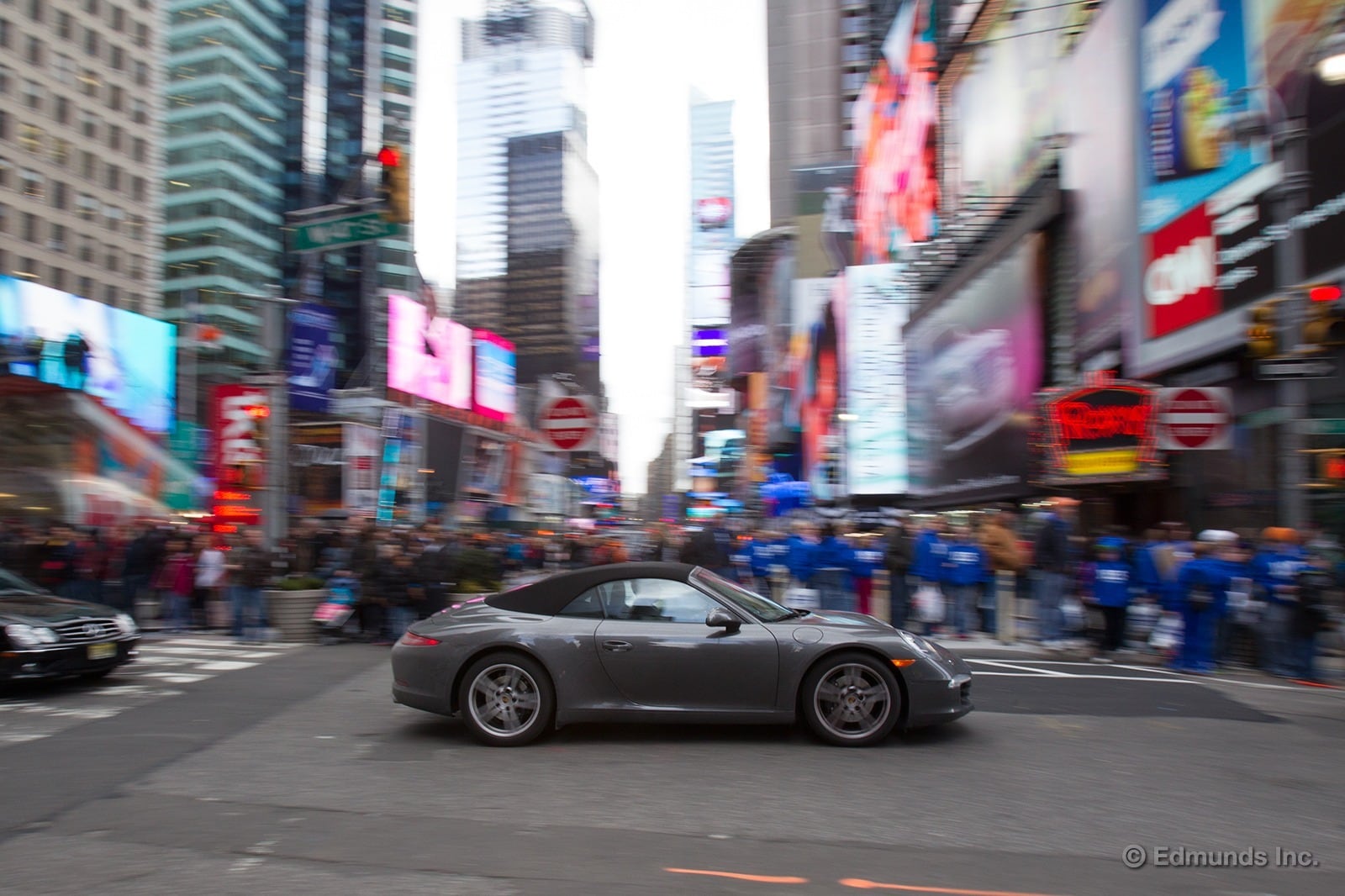
"Everything that makes the 911 great on a track or on a mountain road makes it great in NYC. You can squeeze in the smallest gaps. You can beat everything off the line. And because pedestrians think you're a banker who already doesn't care about people, pedestrians and bicyclists have some sort of internal fear/respect for a Porsche on the streets of N.Y. Best of all, the new 19s take a lot of the crashiness out of the suspension. If I didn't get a flat here, I was convinced I wouldn't get one for the next 3,000 miles." — Mike Magrath
Maintenance & Repairs
Regular Maintenance:
Routine service is scheduled at 10,000-mile intervals for the 911. So we weren't very surprised when the onboard maintenance minder lit up with 10,000 and 20,000 miles on the odometer. We averaged $582 per visit.
We spent more out of pocket to keep the 911 afloat. On two separate occasions sharp, pointy objects bested our defenses, requiring tire patches at $30 apiece. The third time was a charm, as a pothole cut the sidewall. That cost $660 for a new tire. Add $90 to mount and dismount snow tires. We'll call it $1,975 to maintain our Porsche for a year.
Service Campaigns:
One recall was issued during our test. It addressed a detaching tailpipe issue. Our car was not updated while we owned it.
Two warranty repairs were made to our 911. One was the replacement of the tank leakage diagnostic module. The other was the installation of new adjusting motors for both exterior mirrors.
Fuel Economy and Resale Value
Observed Fuel Economy:
Combined EPA fuel economy was 23 mpg combined (20 city/28 highway) for the 911. We averaged 21 mpg, with a best single tank of 31 mpg. The best single fill-up took us 511 miles before the 911 pleaded for fuel.
Resale and Depreciation:
We paid $98,048 for our 2013 Porsche 911 Carrera Cabriolet, a reasonable discount from its $109,745 MSRP. After one year and 23,000 miles, Edmunds' TMV® Calculator valued the car at $82,740 based on a private-party sale. When neither CarMax nor a local Porsche dealership could offer us what we wanted, we listed the car on AutoTrader.
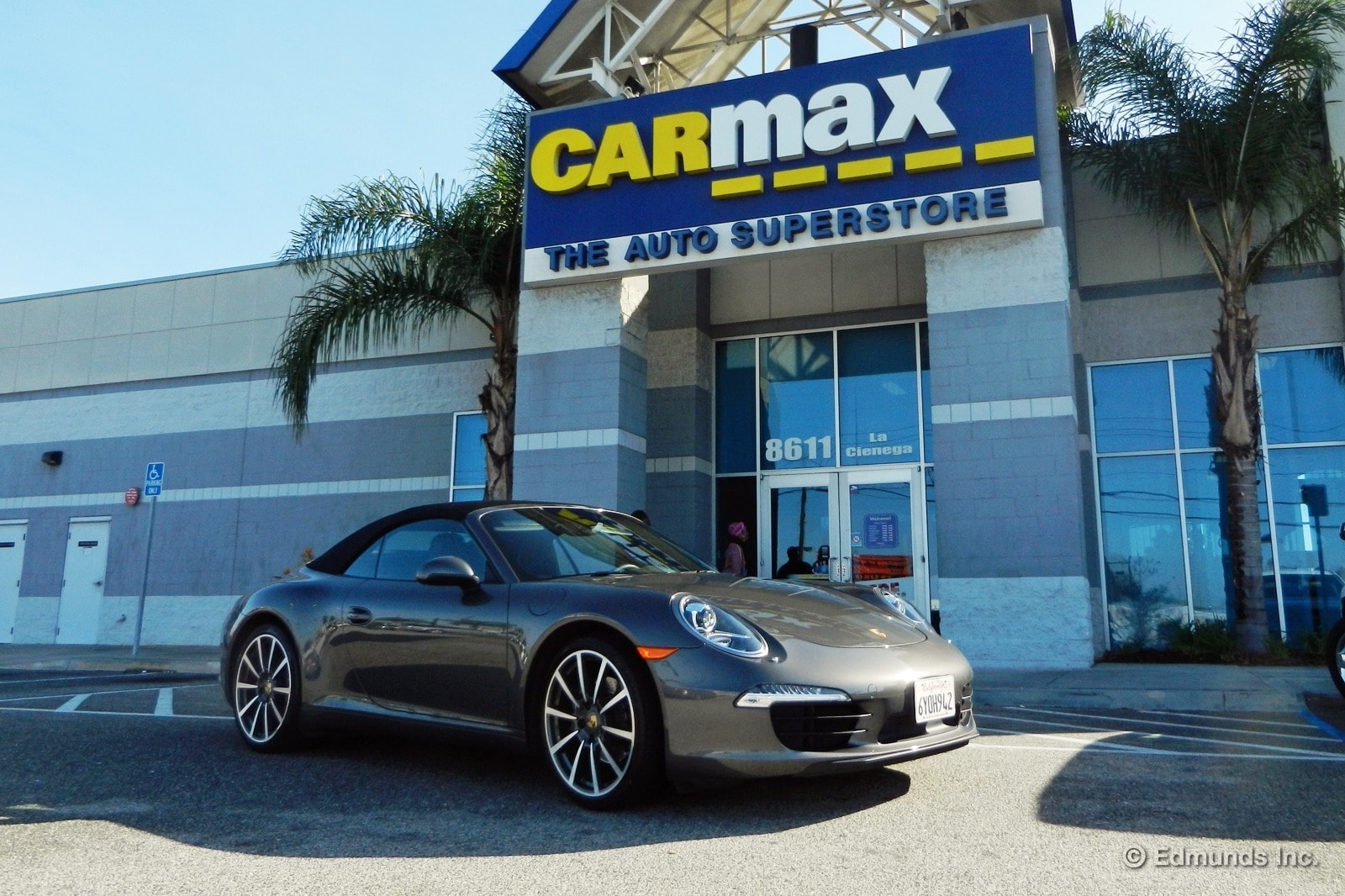
Ultimately, our 911 found a new home in Pittsburgh. The car sold for $81,000 and just 17 percent below our paid price. We hope the new owner has as much fun with it as we did.
Summing Up
Pros: PDK transmission is brilliant, dynamic performance is top-notch, solid feel to all the controls, unflappable brakes, surprising utility, capable of 500 miles on a single tank of fuel, resale value is remarkably high.
Cons: Ride is stiffer that many of its competitors, not everybody loved the seats, button-heavy interior design, high maintenance costs.
Bottom Line: As much as you might covet the Carrera S with a manual transmission, this 911 is still a superb sports car with the base engine and PDK automatic. It's not cheap, but it's not necessarily overpriced either.
| Total Body Repair Costs: | None |
| Total Routine Maintenance Costs: | $1,163.84 (over 12 months) |
| Additional Maintenance Costs: | $811.38 |
| Warranty Repairs: | Replace adjusting motors on both exterior mirrors, replace tank leakage diagnostic module |
| Non-Warranty Repairs: | Replace pothole-damaged tire |
| Scheduled Dealer Visits: | 2 |
| Unscheduled Dealer Visits: | 1 |
| Days Out of Service: | None |
| Breakdowns Stranding Driver: | 1 for tire damage requiring a tow |
| Best Fuel Economy: | 31.4 mpg |
| Worst Fuel Economy: | 12.4 mpg |
| Average Fuel Economy: | 21.0 mpg |
| True Market Value at service end: | $82,740 (private-party sale) |
| What it Sold for: | $81,000 |
| Depreciation: | $17,048 (17% of paid price) |
| Final Odometer Reading: | 23,648 miles |
Edmunds purchased this vehicle for the purposes of evaluation.